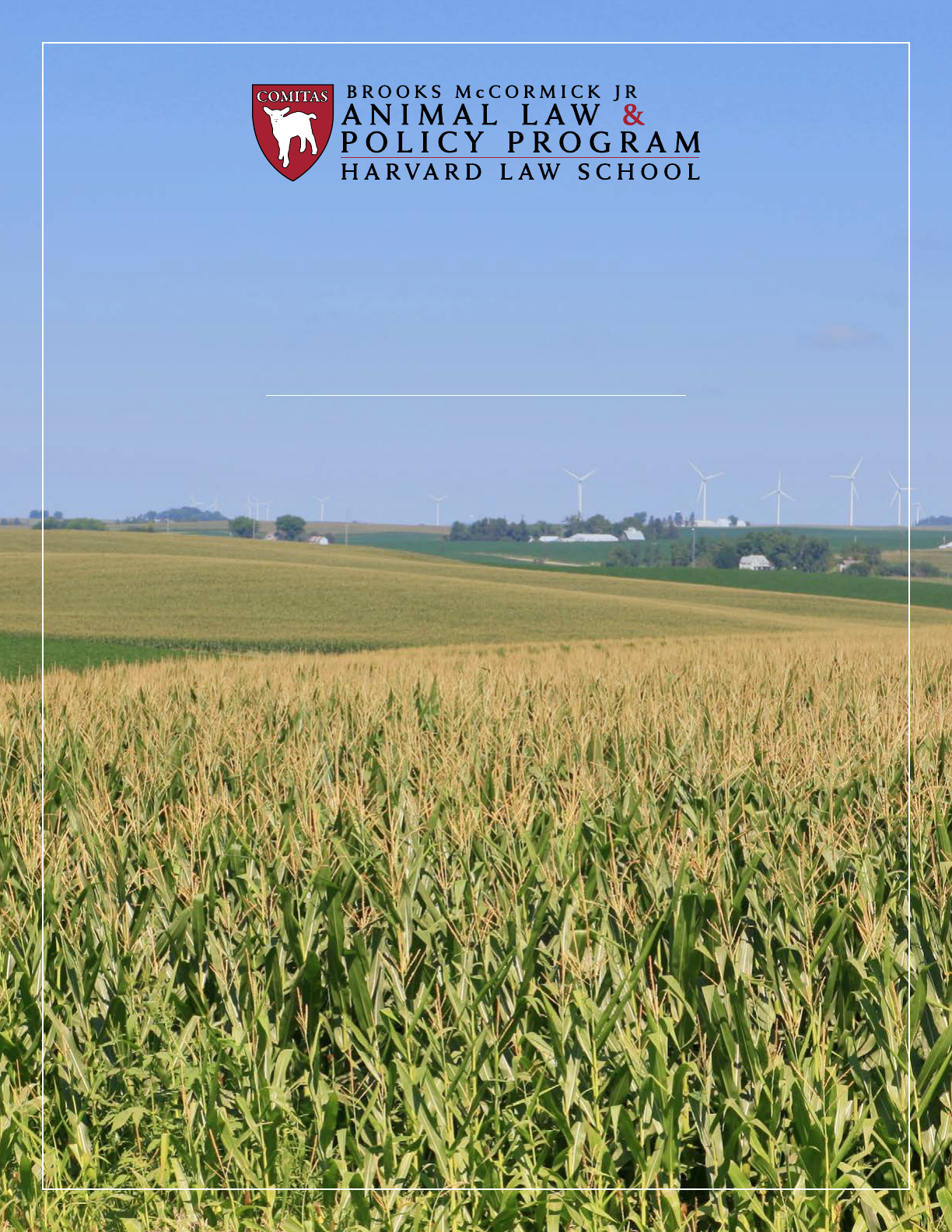
LEGISLATIVE ANALYSIS OF S.2019 / H.R.4417:
The “Ending Agricultural
Trade Suppression Act”
118TH CONGRESS – 2023-2024
JULY 2 023
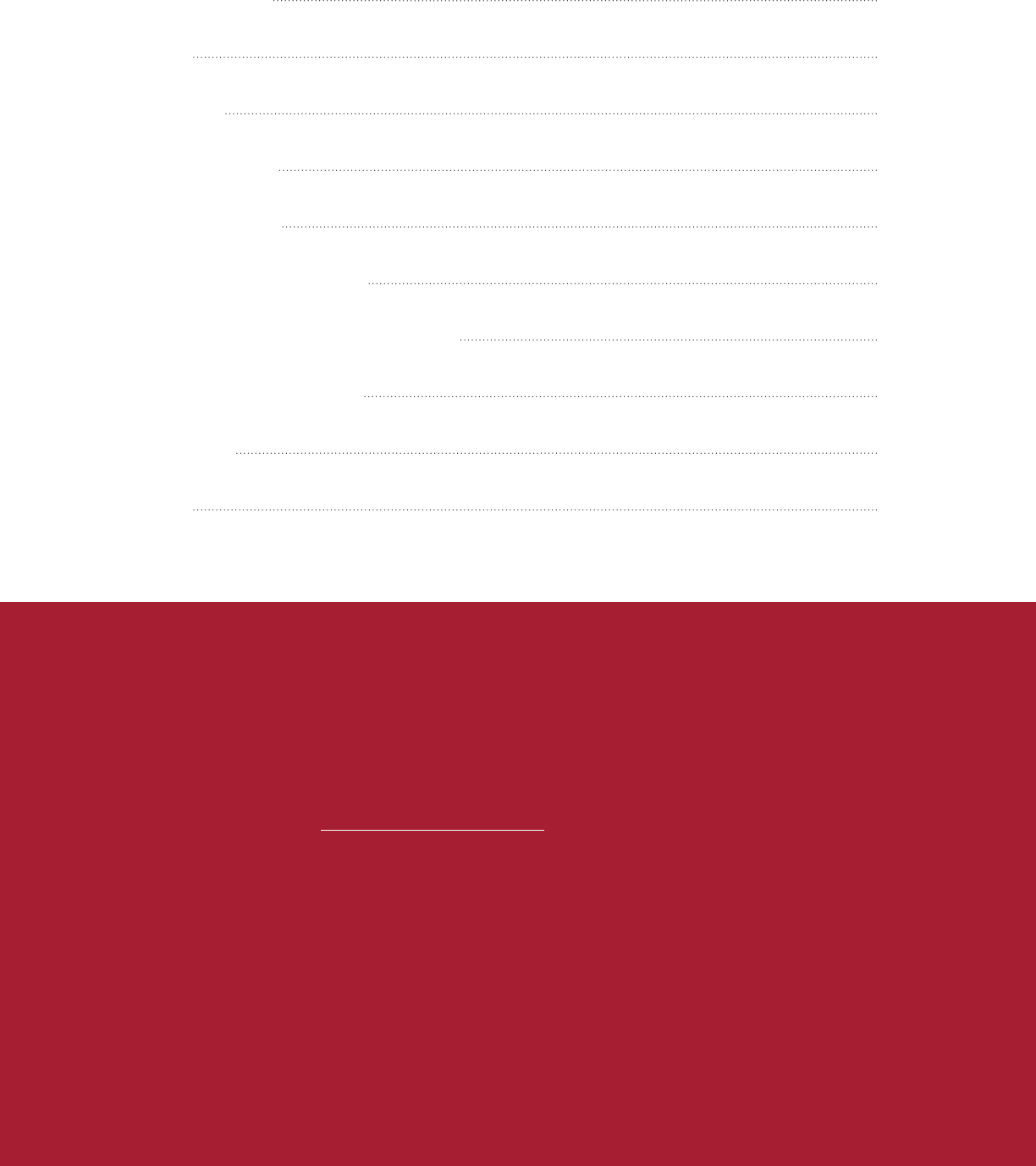
ACKNOWLEDGMENTS
This report analyzes the “Ending Agricultural Trade Suppression Act,” legislation currently under
consideration by the U.S. Congress. It builds upon “Legislative Analysis of H.R. 4879: the Protect
Interstate Commerce Act of 2018,” a report on similar antecedent legislation also published by
the Brooks McCormick Jr. Animal Law & Policy Program at Harvard Law School. This update was
researched and written by Kelley McGill, Regulatory Policy Fellow.
Ann Linder, Associate Director of Policy & Research, researched and authored the original 2018
report, portions of which appear below in an updated form. Kelsey Eberly, Clinical Lecturer at Yale
Law School, provided analyses and draft text for other portions of this updated report. Chris Green,
Executive Director, edited this report, and a team of independent experts reviewed it. Numerous
individuals assisted in the research of potentially affected laws and regulations for this report and its
predecessor. It is with gratitude that their contributions are recognized here.
TABLE OF CONTENTS
Executive Summary 3
Overview 5
I. Introduction 8
II. Legislative History 9
III. Legal Background 11
IV. Full Text of S.2019 / H.R.4417 13
V. Section-By-Section Analysis of Legislation 15
VI. Application of the Legislation 35
VII. Conclusion 48
Appendix 50

EXECUTIVE SUMMARY
States long have had authority to regulate the health, safety, and moral aspects of goods sold
within their borders, regardless of their state or country of origin. The Ending Agricultural Trade Suppression
Act (“EATS Act”) fundamentally would transform the current balance of regulatory authority between the 50
States and the Federal Government by eliminating virtually all state and local legislative powers to impose
standards or conditions on the “preharvest” production of agricultural products entering their own borders,
including regulations related to food safety, disease and pest control, and government procurement.
TheEATSActdeesbasicnotionsoffederalismandwouldcircumventdecadesofsettled
constitutional jurisprudence. As the Supreme Court recently reiterated in the National Pork Producers
Council’schallengetoCalifornia’sProposition12,theCommerceClauseintheU.S.Constitutionalready
restricts states from enacting protectionist laws that discriminate against interstate commerce. The
Constitution’sSupremacyClausealsoprovidesCongressplenarypowertodisplacestatelawwhen
it chooses to exercise its legislative authority over private actors pursuant to its enumerated powers.
The EATS Act purports to do what courts interpreting state laws against these constitutional provisions
haverefusedtodo:declarebyatthatstatescannotimposepublichealthandwelfarestandardsfor
agriculturalproducts,evenintheabsenceofconictinglocal,state,orfederallawsandregulations.
TheEATSActisunconstitutionalinseveraldifferentways—chiey,byrunningafouloftheTenth
Amendment principle that Congress may not “commandeer” states and prohibit them from legislating to
protect public health and welfare, particularly in the absence of federal regulation. The legislation also
includes a broad citizen-suit provision that authorizes any person affected by a regulation governing “any
Legislative Analysis of S.2019 / H.R.4417: The “Ending Agricultural Trade Suppression Act”
3
EXECUTIVE SUMMARY
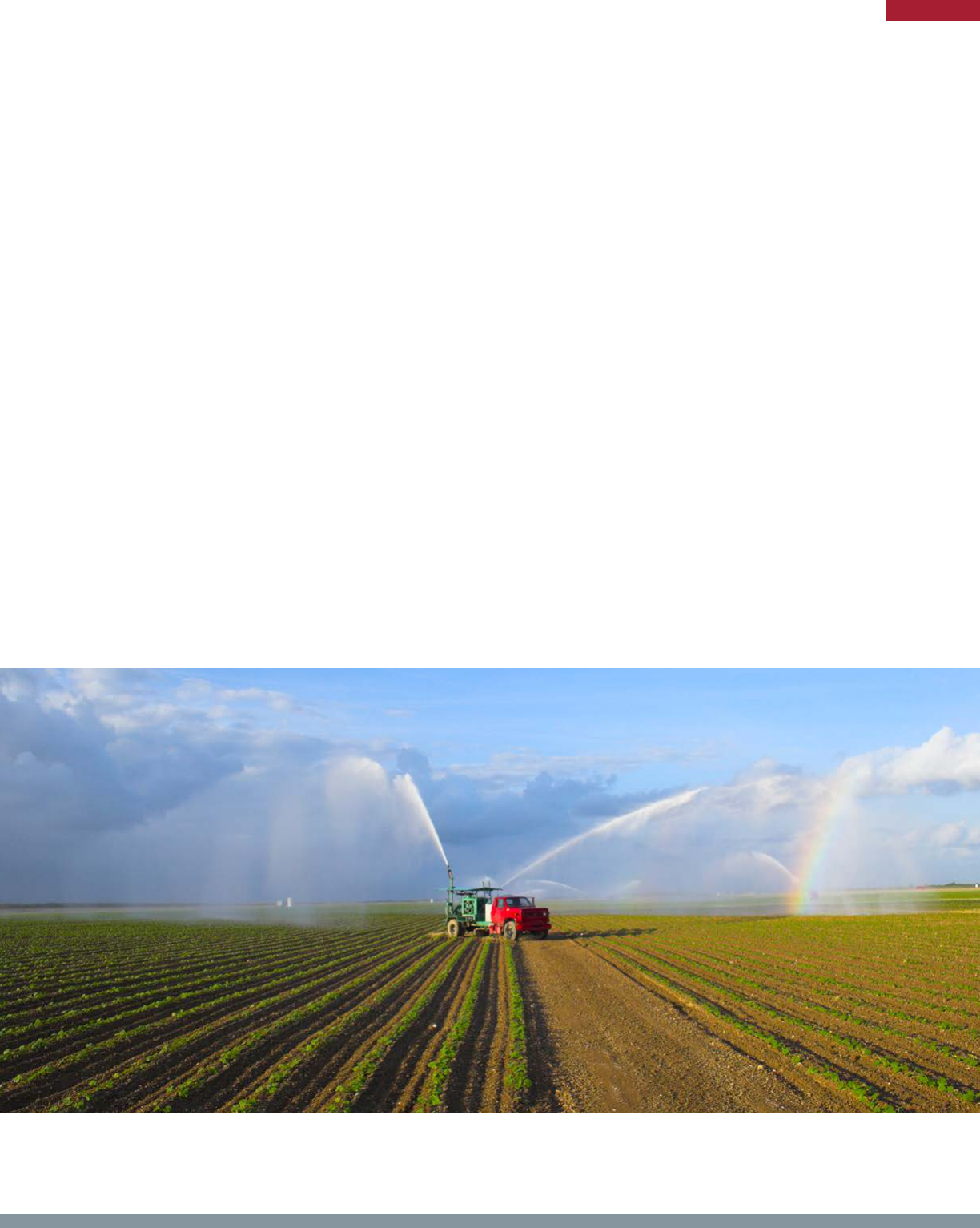
aspect of 1 or more agricultural products that are sold in interstate commerce” to bring suit to block that
regulation and to seek an award of monetary damages against the state or local government enforcing
theregulation.TheEATSAct’scitizen-suitprovisionraisessignicantconcernsrelatedtostatesovereign
immunity, protected under the Eleventh Amendment.
Despite its simple appearance, the wording of the EATS Act creates a myriad of interpretive
questions that would need to be resolved in the courts. Because the scope of its prohibition against any
“standard or condition on the preharvest production of any agricultural products sold or offered for sale in
interstate commerce” is so broad, the legislation has the potential to void over a thousand state and local
laws and regulations concerning public health and safety—including many laws and regulations that have
notyetbeenidentiedandareunlikelytobeintendedtargetsofthelegislation.Whilethereissignicant
ambiguityinthetext,theEATSActcouldaffecteverythingfromcommercialshingregulationstothe
slaughter of horses, creating cascading effects far beyond the core farm commodities it seeks to protect.
AlthoughsomeproducersmightinitiallynanciallybenetfromenactmentoftheEATSAct,the
potential for market disruption and uncertainty is extremely high. The EATS Act could sow confusion
and disorder across state legislatures, city councils, and agricultural entities, disturbing the settled
expectations upon which dozens of industries rely while harming the same animal agriculture industry
playersthattheAct’ssponsorspurporttohelp.Thesesamemarketdisruptionscouldhavesignicant
impacts on consumer choice, animal welfare, and food safety.
Legislative Analysis of S.2019 / H.R.4417: The “Ending Agricultural Trade Suppression Act”
4
EXECUTIVE SUMMARY
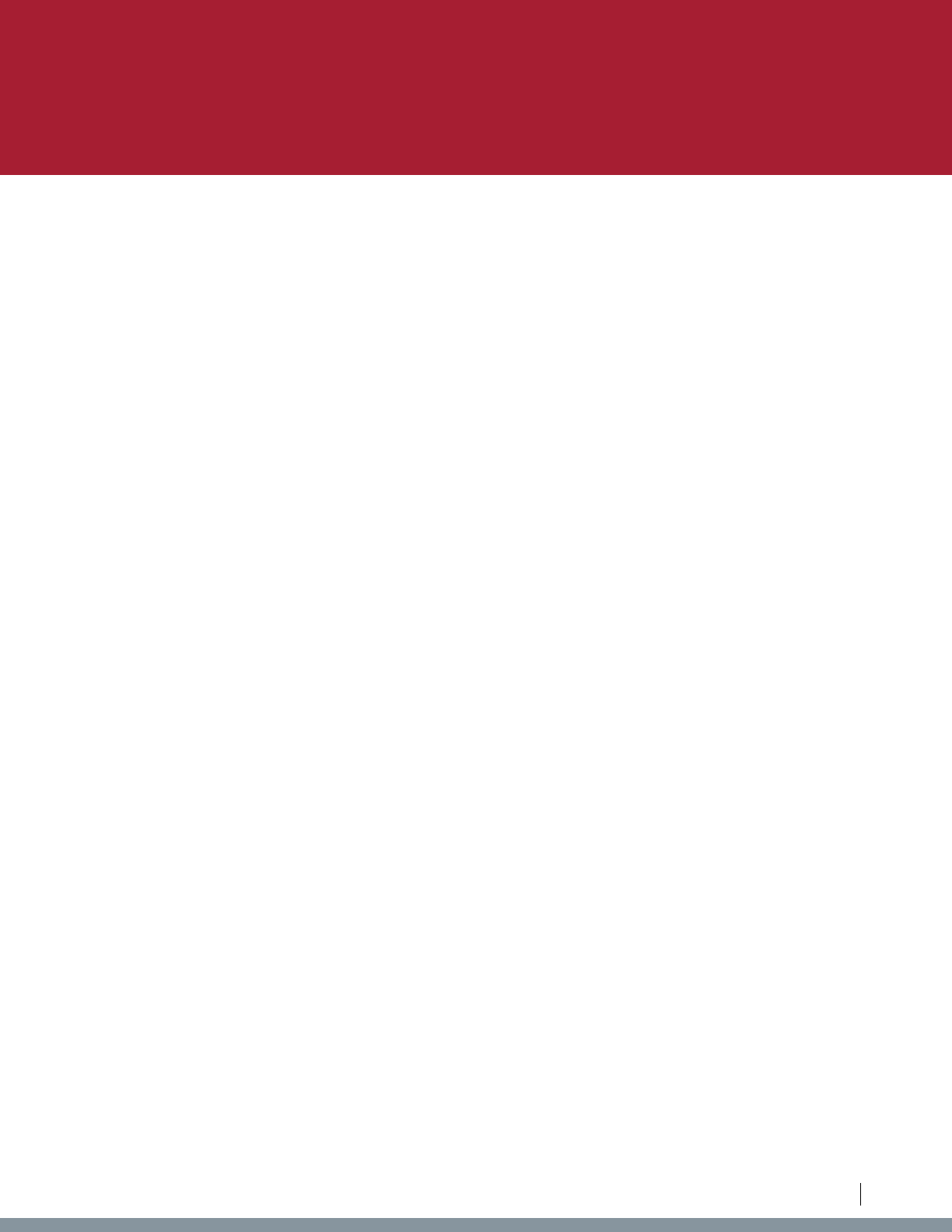
OVERVIEW
• On June 15, 2023, Senator Roger Marshall (R-KS) introduced the “Ending Agricultural Trade
Suppression Act” (“EATS Act”) in the Senate as S.2019 with the support of 11 Republican
cosponsoring senators.
• On June 30, 2023, Representative Ashley Hinson (R-IA) introduced the EATS Act in the House as
H.R.4417 with the support of 15 Republican cosponsoring representatives.
• Former Representative Steve King (R-IA) drafted progenitor legislation to the EATS Act, including the
King Amendment and the “Protect Interstate Commerce Act,” which later spawned the “Exp osing
Agricultural Trade Suppression Act.”
• Congressional Republicans stated they introduced the EATS Act in part to invalidate Proposition 12,
a California law setting certain standards for eggs, pork, and veal sold in the state, but the reach of
the EATS Act would be much broader.
• The EATS Act would upset the long-standing, constitutional balance of power between the 50 States
and the Federal Government by precluding state and local standards and conditions concerning the
preharvestproductionofimportedagriculturalproducts,likelyinviolationoftheTenthAmendment’s
anti-commandeering prohibition.
• The EATS Act would prevent state and local governments from regulating the “preharvest production”
of imported “agricultural products” except to the extent that those products already are regulated in the
place of production. The legislation further states that if there are no federal, state, or local regulations
in the state of production for any given agricultural products, that lack of regulation becomes a new
regulatory ceiling for any state or locality importing those products from that jurisdiction.
• The scope and precise meaning of the EATS Act are unclear, raise multiple constitutional concerns,
and would require extensive litigation and judicial interpretation. Enactment of the EATS Act could
impose tremendous costs on state and local governments faced with new lawsuits and on federal
agencieschargedwithllingnewregulatoryvoids.Italsowouldcreatesignicantregulatory
uncertainty for agricultural producers, industry participants, consumers, and governing bodies.
5
Legislative Analysis of S.2019 / H.R.4417: The “Ending Agricultural Trade Suppression Act”
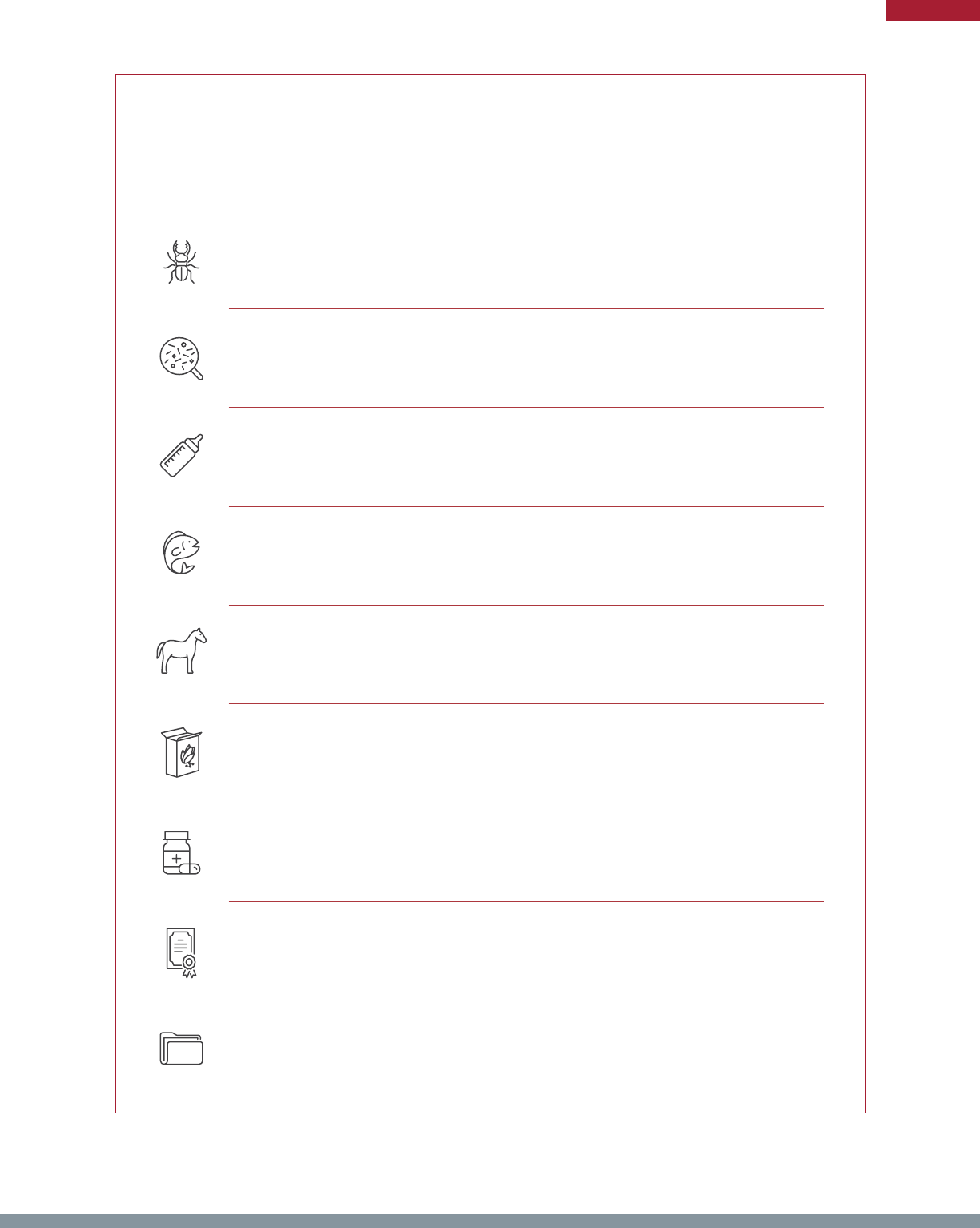
Examples of State Laws Potentially
Affected by the EATS Act
Invasive Pest & Plant Disease Protections
(phony peach disease, emerald ash borer, glassy-winged sharpshooter)
Zoonotic & Infectious Disease Regulations
(avian u, African swine fever, chronic wasting disease, honey bee diseases)
Food Quality & Safety Regulations
(sh and shellsh sourcing, milk quality standards, pesticides)
Fishing Regulations
(licensing and permitting, limitations on sh sourcing, species, or size)
Horse Slaughter Laws
(bans on importation or transport of horses for slaughter for human consumption)
Labeling Regulations
(kosher and halal protections, meat nomenclature, toxic seed treatments)
Narcotics Laws
(marijuana de-scheduling, opioid and hallucinogenic drug prohibitions)
Procurement Regulations
(government contracting policies for local, minority, and veteran producers)
Licensing, Permitting, and Recordkeeping Requirements
(professional licensing, date or location of production records)
OVERVIEW
6
Legislative Analysis of S.2019 / H.R.4417: The “Ending Agricultural Trade Suppression Act”
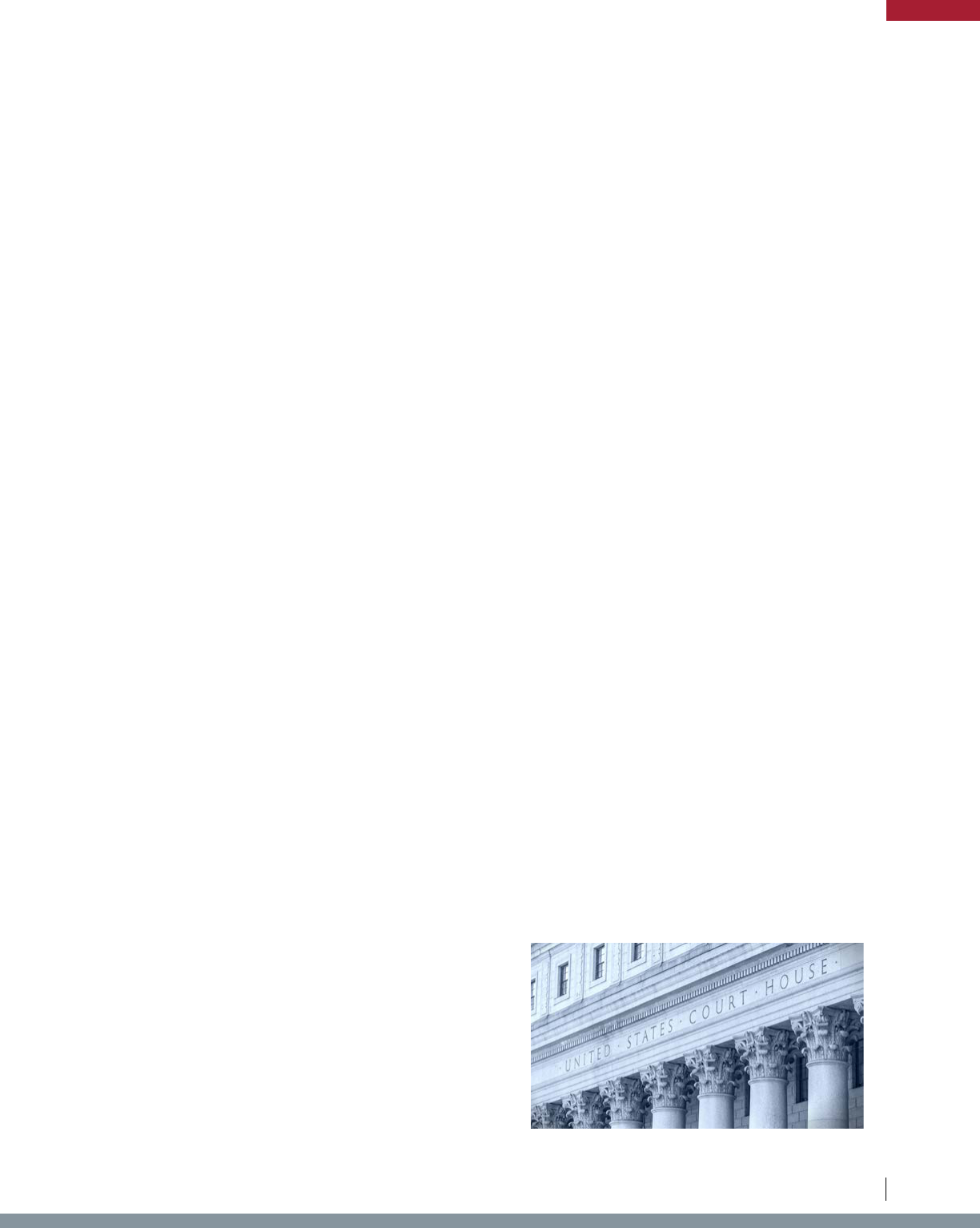
QUESTIONS
• KeytermsarenotdenedintheEATSAct,
making it unclear which state and local
regulations would be affected.
• The EATS Act would limit state and local
authority to regulate the “preharvest
production” of “agricultural products,” but the
formertermisnotdenedandthedenition
of the latter term is too broad to predict the
full scope and impact of the EATS Act.
• The boundaries of what could be included
within “preharvest production” are entirely
unclearasthelegislationdoesnotdenethe
term. These boundaries would be subject
todenitionbycourts,shiftingtremendous
power from state and local legislative bodies
to the judiciary.
• Thedenitionof“agriculturalproduct”
includes “agricultural, horticultural,
viticultural, and dairy products, livestock
andpoultry,bees,forestproducts,shand
shellsh,andanyproductsthereof,including
processed and manufactured products.” It
also includes “any and all products raised or
produced on farms,” raising questions as to
its outer limits.
ENFORCEMENT
• The EATS Act would provide for citizen suits
directly against states, which likely violates
the Eleventh Amendment. It also could
exposestateandlocalofcialstosuit.
• The EATS Act would reverse long-standing
presumptions favoring state authority while
authorizing lawsuits seeking injunctions and
damage awards against states and localities.
• The EATS Act would allow lawsuits to be
brought up to ten years after a cause of
action arose.
POTENTIAL EFFECTS
• The language of the EATS Act is broad
enough to preclude more than a thousand
state and local public health and safety
regulations, many of which protect local
producers from disease, pests, and other
agricultural threats.
• The language of the EATS Act could have
signicantcollateralimpactsonotherareas
ofstatelaw,includingcommercialshing,
food safety, and livestock and crop health.
• The EATS Act could prevent states from
imposing standards or conditions on
the preharvest production of imported
agricultural products, even when necessary
to protect local health and safety.
• Whilesomeproducerscouldbenetfrom
the EATS Act, many other producers would
suffer from its passage. Producers who have
madesignicantinfrastructureinvestments
in response to regulations that the EATS Act
could prohibit may see the economic value of
those investments plummet.
• TheEATSActwouldcausesignicant
regulatory uncertainty and spawn
protracted litigation.
• The EATS Act would shift the balance of
federalism away from the states with respect
to the preharvest production of any product
containing agricultural ingredients, likely
in violation of the anti-commandeering
prohibition found in the Tenth Amendment.
OVERVIEW
7
Legislative Analysis of S.2019 / H.R.4417: The “Ending Agricultural Trade Suppression Act”
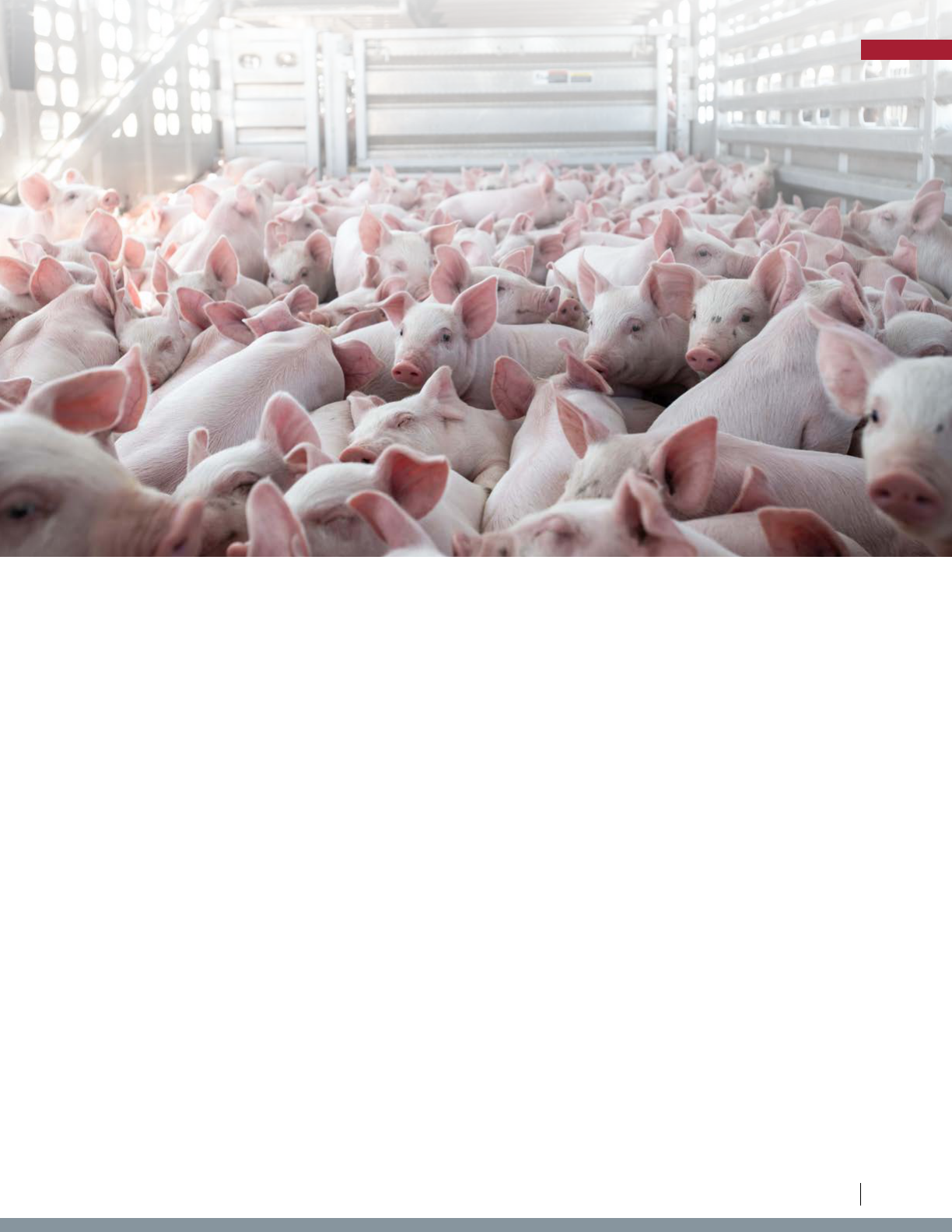
I. INTRODUCTION
In the wake of the recent U.S. Supreme Court decision in National Pork Producers Council
v.Ross,upholdingCalifornia’sProposition12,severalU.S.lawmakershaveintroducedthe“Ending
Agricultural Trade Suppression Act” (“EATS Act”). The EATS Act proposes a race-to-the-bottom for state
and local regulation of the “preharvest production” of “agricultural products,” raising serious constitutional
concernsandthreateningstaterights,consumersafety,andfarmers’livelihoods.Atminimum,theEATS
Act could override more than a thousand state and local laws and regulations, the majority of which likely
willnotbeidentiedorconsideredpriortoitspassage.
This report will detail the legislative history of the EATS Act and review relevant legal background
information. Next, it will provide the text of the legislation in its current form and offer section-by-section
analysis of the legislation. Finally, this report will discuss how the legislation could affect existing laws,
regulations, and commerce and then provide an index with examples of potentially affected state laws
and regulations.
Jo-AnneMcArthur/WeAnimalsMedia
INTRODUCTION
8
Legislative Analysis of S.2019 / H.R.4417: The “Ending Agricultural Trade Suppression Act”
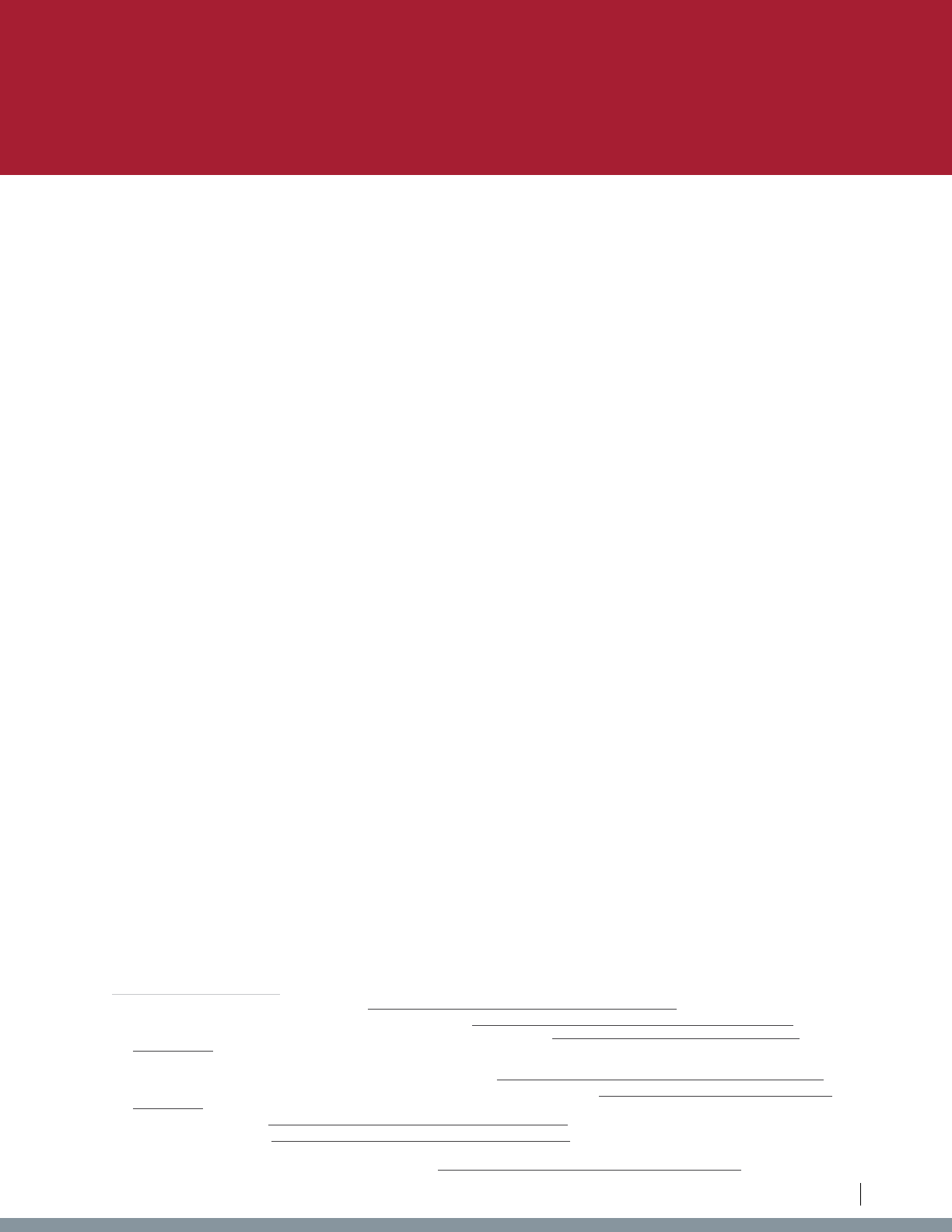
II. LEGISLATIVE HISTORY
The origins of the EATS Act stretch back to 2008, when over 63 percent of the California
electorate voted yes on Proposition 2 (“Prop 2”), the “Prevention of Farm Animal Cruelty Act.”
1
Prop 2
imposedminimumspaceandconnementrequirementsforegg-layinghens,vealcalves,andmother
pigs raised in the state, outlawing certain body-gripping crates, tethering methods, and battery cages. In
2010, the California legislature passed Assembly Bill No. 1437, the “California Egg Law,” requiring that all
eggssoldinthestateasofJanuary1,2015hadtomeetProposition2’sstandardsregardlessofwhether
they were produced in California or outside of the state. The California Egg Law meant that any producers
wishing to continue selling their eggs in California would have to provide hens enough space to stand up,
lie down, turn around, and extend their wings without touching their cage or cage-mates—a standard the
overwhelming majority of producers, who used battery cage housing, did not then meet.
Atthattime,thehighestegg-producingdistrictinthecountrywasIowa’sFourthCongressional
district, then represented by Steve King. Representative King responded to the California Egg Law with a
series of legislative maneuvers aimed at nullifying it. These efforts to block the California Egg Law began
with what became known as the “King Amendment.” As the blueprint for the current EATS Act legislation,
the King Amendment would have prohibited states and localities from setting agricultural product
standards or conditions in excess of those in effect in the state of production for goods sold in interstate
commerce. The text of the King Amendment, formally entitled the “Prohibition Against Interference by
State and Local Governments with Production or Manufacture of Items in Other States,” was included
in two House-passed versions of the 2014 Farm Bill.
2
The King Amendment was not included in the
Senate-passed version of the bill.
3
After opposition by Senate Democrats and intense public criticism,
the conference committee ultimately left the King Amendment out of the 2014 Farm Bill.
4
In 2015, Representative King repackaged his amendment as standalone legislation entitled
the “Protecting Interstate Commerce Act” (“PICA”).
5
That legislative session, PICA was not passed out
of the Agriculture Committee. Representative King reintroduced PICA in 2018,
6
andPICA’slegislative
text again was included in the House-passed version of the 2018 Farm Bill.
7
It was not included in the
1. California Secretary of State, Statement of Vote, 13, https://elections.cdn.sos.ca.gov/sov/2008-general/sov_complete.pdf (63.5% voted in favor of Prop 2).
2. See H.R.2642, 113th Cong. § 11312 (as passed by House, July 11, 2013), https://www.congress.gov/bill/113th-congress/house-bill/2642/text/eh;
H.R.2642, 113th Cong. § 12312, (as agreed to by House with amendment, Sept. 28, 2013), https://www.congress.gov/bill/113th-congress/house-
bill/2642/text/eah.Approximatelyeveryveyears,theU.S.Congresspassesomnibusagriculturallegislation.Whilethislegislationmaytakedifferent
names, such as the Agricultural Act of 2014 or the Agriculture Improvement Act of 2018, it commonly is known as the “Farm Bill.”
3. H.R.2642, 113th Cong. (as passed by Senate with amendment, July 18, 2013), https://www.congress.gov/bill/113th-congress/house-bill/2642/text/eas.
4. See H.Rept. 113–333, 113th Cong., 563 (conference report to accompany H.R. 2642, Jan. 27, 2014), https://www.congress.gov/113/crpt/hrpt333/CRPT-
113hrpt333.pdf.
5. H.R.687, 114th Cong. (2015), https://www.congress.gov/bill/114th-congress/house-bill/687/text.
6. H.R.4879, 115th Cong. (2018), https://www.congress.gov/bill/115th-congress/house-bill/4879/text. H.R.4879 was the subject of the 2018 report by the Brooks
McCormick Jr. Animal Law & Policy Program at Harvard Law School, Legislative Analysis of H.R. 4879: the Protect Interstate Commerce Act of 2018.
7. H.R.2, 115th Cong. § 11701 (as passed by House, June 21, 2018), https://www.congress.gov/bill/115th-congress/house-bill/2/text/eh.
9
Legislative Analysis of S.2019 / H.R.4417: The “Ending Agricultural Trade Suppression Act”
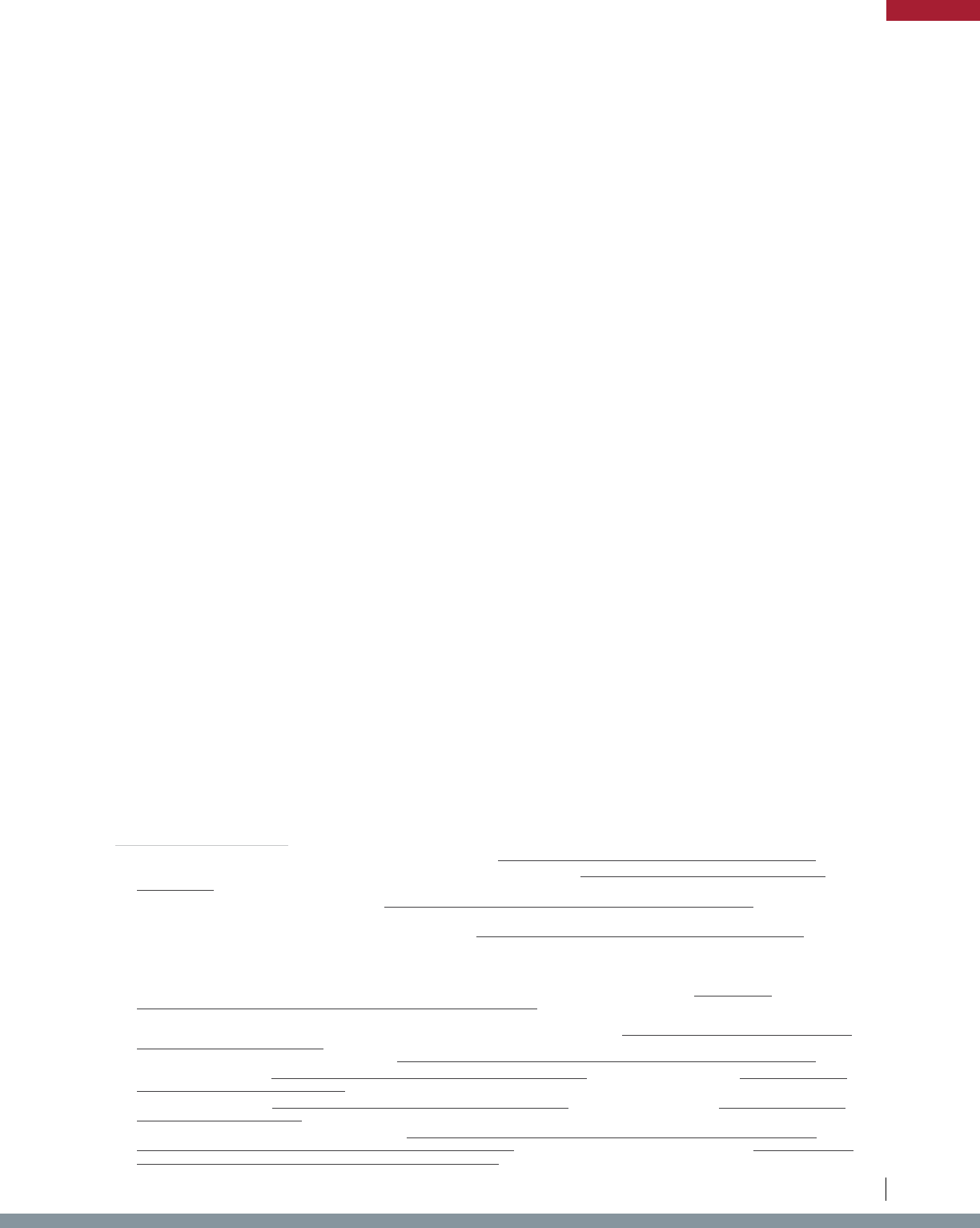
Senate-passed version.
8
After condemnation by 32 Senators and a chorus of opposition—including
from family farmers, public health and consumer groups, farmworker advocates, animal protection and
environmental organizations, and state sovereignty champions, including the National Conference of
States Legislatures—the King Amendment again was removed from the 2018 Farm Bill in conference.
9
In November 2018, building upon Prop 2 and the California Egg Law, California voters passed
Proposition12(“Prop12”),theFarmAnimalConnementInitiative,againwithnearly63%votingin
favor.
10
Prop 12 established “new minimum requirements on farmers to provide more space for egg-
laying hens, breeding pigs, and calves raised for veal” and it prohibited “California businesses... from
selling eggs or uncooked pork or veal that came from animals housed in ways that did not meet these
requirements.”
11
Whilecelebratedbysomeanimalproducers,thepassageofProp12provokedmultiple
unsuccessful legal challenges from others.
12
Like Prop 2 and the California Egg Law, the adoption of Prop 12 also fueled legislative attempts
to prevent enforcement of its provisions. After Representative King lost his 2020 primary election after
making racist comments,
13
other lawmakers took up his cause of opposing such laws. In 2021, legislators
in both chambers reintroduced the King Amendment/PICA as the rebranded and slightly revised
“Exposing Agricultural Trade Suppression Act.”
14
That legislation did not advance out of committee.
Now, in 2023, lawmakers in both chambers have reintroduced another revised version of that
same legislation as the “Ending Agricultural Trade Suppression Act” or “EATS Act.”
15
Whilethetext
has evolved throughout its progression from the King Amendment to its current form, the central aim
remains the same: to federally block Prop 12 and similar state and local measures.
16
The cost of enacting
the EATS Act, however, would range far more widely than even its sponsors envision, raising serious
constitutional concerns and undermining state and local rights at the expense of consumers, businesses,
and agricultural producers across the 50 United States.
8. H.R.2, 115th Cong. (as passed by Senate with amendment, June 28, 2018), https://www.congress.gov/bill/115th-congress/house-bill/2/text/eas.
9. H.Rept. 115–1072, 115th Cong., 794 (conference report to accompany H.R.2, Dec. 10, 2018), https://www.congress.gov/115/crpt/hrpt1072/CRPT-
115hrpt1072.pdf.
10. California Secretary of State, Statement of Vote, 16, https://elections.cdn.sos.ca.gov/sov/2018-general/sov/2018-complete-sov.pdf (62.7% voted in favor
of Prop 12).
11. CaliforniaLegislativeAnalyst’sOfce,Ballot Analysis of Proposition 12, https://lao.ca.gov/BallotAnalysis/Proposition?number=12&year=2018.
12. See, e.g.,Nat’lPorkProducersCouncilv.Ross,143S.Ct.1142(2023)(ndingthatProp12didnotundulyburdeninterstatecommerce);N.Am.Meat
Inst. v. Becerra, 420 F. Supp. 3d 1014, 1017 (C.D. Cal. 2019), aff’d,825F.App’x518(9thCir.2020)(mem.)cert. denied, N. Am. Meat Inst. v. Bonta, 141 S.
Ct. 2854 (2021) (denying motion for preliminary injunction against Prop 12).
13. See Barbara Sprunt, Iowa Rep. Steve King, Known For Racist Comments, Loses Reelection Bid, NPR, June 3, 2020, https://www.npr.
org/2020/06/03/865823546/iowa-rep-steve-king-ousted-in-gop-primary-ap-projects. In 2019, after King wondered aloud to the New York Times how
“white nationalist” and “white supremacist” became offensive language, he was removed from his committee assignments. See Trip Gabriel, Before
Trump, Steve King Set the Agenda for the Wall and Anti-Immigrant Politics, N.Y. TIMES, Jan. 10, 2019, https://www.nytimes.com/2019/01/10/us/politics/
steve-king-trump-immigration-wall.html; Trip Gabriel, Jonathan Martin, and Nicholas Fandos, Steve King Removed From Committee Assignments Over
White Supremacy Remark, N.Y. TIMES, Jan. 14, 2019, https://www.nytimes.com/2019/01/10/us/politics/steve-king-trump-immigration-wall.html/.
14. S.2619, 117th Cong. (2021), https://www.congress.gov/bill/117th-congress/senate-bill/2619/text; H.R.4999, 117th Cong. (2022), https://www.congress.
gov/bill/117th-congress/house-bill/4999/text.
15. S.2019, 118th Cong. (2023), https://www.congress.gov/bill/118th-congress/senate-bill/2019; H.R.4417, 118th Cong. (2023), https://www.congress.gov/
bill/118th-congress/house-bill/4417.
16. See Sen. Roger Marshall, press release, June 15, 2023, https://www.marshall.senate.gov/newsroom/press-releases/sen-marshall-announces-
introduction-of-eats-act-to-ensure-states-autonomy-over-agricultural-practices/; Rep. Ashley Hinson, press release, July 5, 2023, https://hinson.house.
gov/media/press-releases/hinson-leads-charge-against-prop-12-bacon-ban.
LEGISLATIVE HISTORY
10
Legislative Analysis of S.2019 / H.R.4417: The “Ending Agricultural Trade Suppression Act”
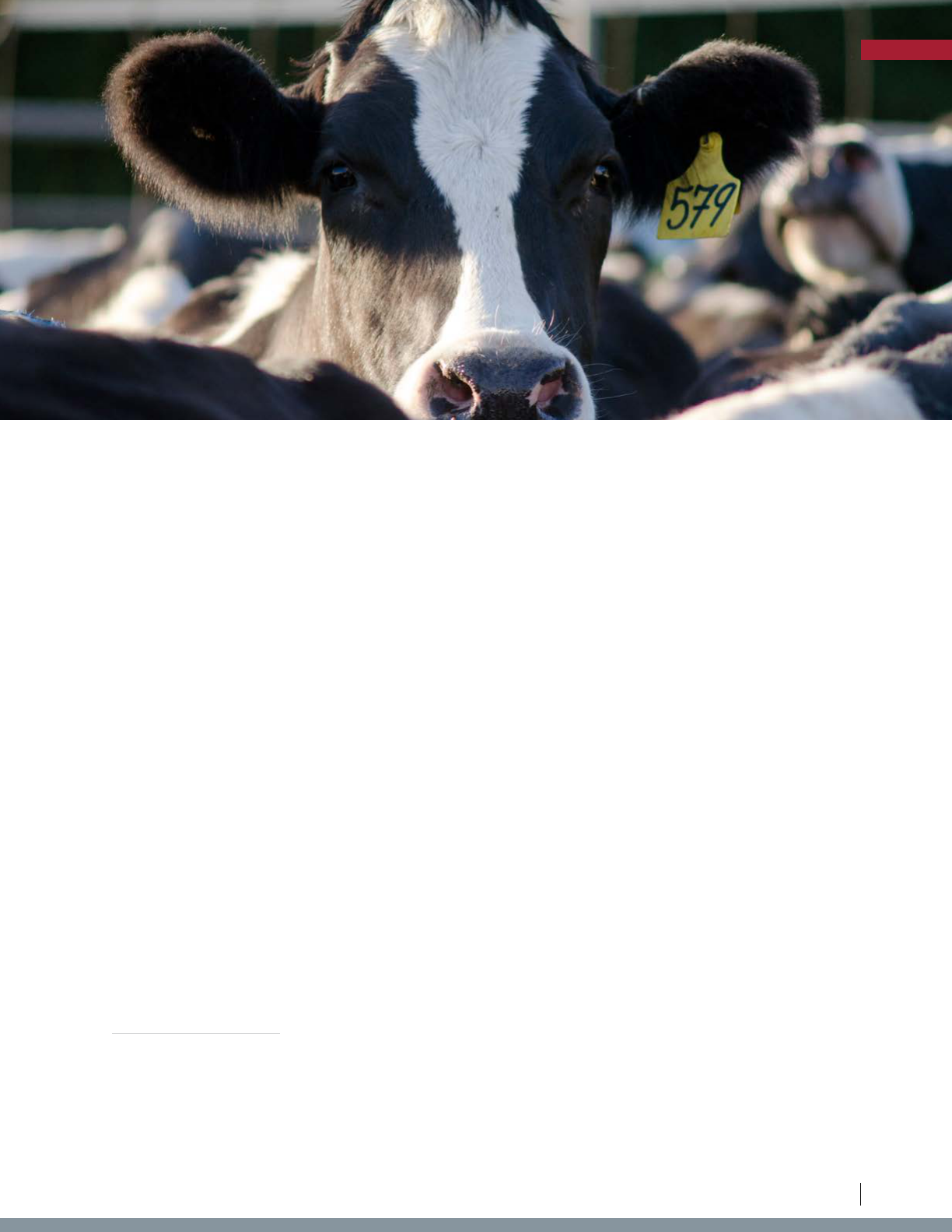
III. LEGAL BACKGROUND
Under long-standing principles of Federalism, state and local governments are free to regulate
agricultural products and production except in ways that are preempted by federal law, unlawfully
discriminate against out-of-state production, or unduly burden trade.
17
In other words, “absent
discrimination,‘aStatemayexcludefromitsterritory,orprohibitthesalethereinofanyarticleswhich,
initsjudgment,fairlyexercised,areprejudicialto’theinterestsofitscitizens.”
18
WhileCongresshasthepowertoregulateinterstatecommercethroughtheU.S.Constitution’s
Commerce Clause of Article I and the Supremacy Clause of Article VI, the right of states to regulate their
own markets has been inferred from their Tenth Amendment powers, and their authority to do so has
been recognized even in cases where state laws have “substantial effects on interstate commerce.”
19
As James Madison wrote in Federalist No. 45, “[t]he powers delegated by the proposed Constitution to
thefederalgovernmentarefewanddened.ThosewhicharetoremainintheStategovernmentsare
numerousandindenite...ThepowersreservedtotheseveralStateswillextendtoalltheobjectswhich,
in the ordinary course of affairs, concern the lives, liberties, and properties of the people, and the internal
order, improvement, and prosperity of the State.”
Traditionally, states have enjoyed broad authority to legislate for the health, safety, and morals
oftheircitizens.Wherestatelegislationfavorslocalinterestsattheexpenseofout-of-statepartiesor
disproportionately interferes with interstate trade, however, that law may be challenged under what is
17. “Wherethestatuteregulateseven-handedlytoeffectuatealegitimatelocalpublicinterest,anditseffectsoninterstatecommerceareonlyincidental,it
willbeupheldunlesstheburdenimposedonsuchcommerceisclearlyexcessiveinrelationtotheputativelocalbenets.”Pikev.BruceChurch,Inc.,
397 U.S. 137, 142 (1970) (citing Huron Portland Cement Co. v. City of Detroit, 362 U.S. 440, 443 (1960)). That the “States must have a concurrent power
to regulate commerce” is a principle that has long been recognized by the courts. Gibbons v. Ogden, 22 U.S. 1, 19 (1824). See also United States v.
Lopez, 514 U.S. 549, 592 (1995) (Thomas, J., concurring) (citing Federalist No. 34 and stating that “[a]griculture and manufacture, since they were not
surrendered to the Federal Government, were state concerns.”).
18. Nat’lPorkProducersCouncilv.Ross,143S.Ct.1142,1152–53(2023)(quotingGuyv.Baltimore,100U.S.434,443(1880)).
19. “That the internal commerce of the States and the numerous state inspection, quarantine, and health laws had substantial effects on interstate
commercecannotbedoubted.Nevertheless,theywerenot‘surrenderedtothegeneralgovernment.’”U.S.v.Lopez,514U.S.at594(quotingGibbonsv.
Ogden, 22 U.S. 1, 19 (1824)).
LEGAL BACKGROUND
11
Legislative Analysis of S.2019 / H.R.4417: The “Ending Agricultural Trade Suppression Act”
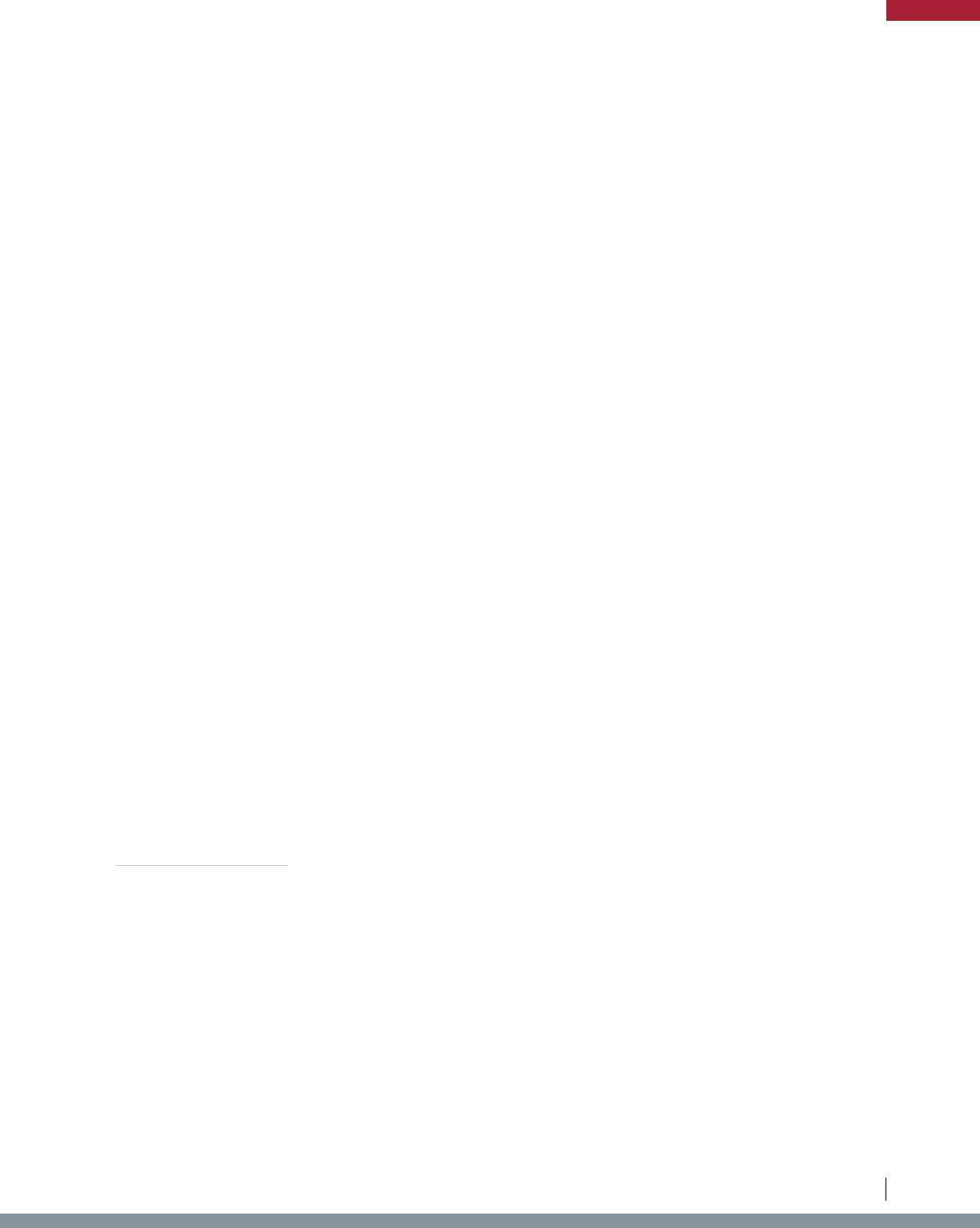
20. See generally Pike v. Bruce Church, Inc., 397 U.S. 137 (1970).
21. “ReadingbetweentheConstitution’slines...[theSupreme]CourthasheldthattheCommerceClausenotonlyvestsCongresswiththepowerto
regulateinterstatetrade;theClausealso‘contain[s]afurther,negativecommand,’oneeffectivelyforbiddingtheenforcementof‘certainstate[economic
regulations]evenwhenCongresshasfailedtolegislateonthesubject.’”Nat’lPorkProducersCouncilv.Ross,143S.Ct.at1152(2023)(quoting
OklahomaTaxComm’nv.JeffersonLines,Inc.,514U.S.175,179(1995)).
22. “Inits‘modern’cases,[theSupreme]CourthassaidthattheCommerceClauseprohibitstheenforcementofstatelaws‘drivenby...economic
protectionism—thatis,regulatorymeasuresdesignedtobenetin-stateeconomicinterestsbyburdeningout-of-statecompetitors.’”Nat’lPorkProducers
Councilv.Ross,143S.Ct.at1153(2023)(quotingDep’tofRevenueofKy.v.Davis,553U.S.328,337–338(2008)(internalquotationomitted)).
23. “Wherethestatuteregulateseven-handedlytoeffectuatealegitimatelocalpublicinterest,anditseffectsoninterstatecommerceareonlyincidental,it
willbeupheldunlesstheburdenimposedonsuchcommerceisclearlyexcessiveinrelationtotheputativelocalbenets.Ifalegitimatelocalpurpose
is found, then the question becomes one of degree. And the extent of the burden that will be tolerated will of course depend on the nature of the local
interest involved, and on whether it could be promoted as well with a lesser impact on interstate activities. Occasionally the [Supreme] Court has candidly
undertakenabalancingapproachinresolvingtheseissues,butmorefrequentlyithasspokenintermsof‘direct’and‘indirect’effectsandburdens.”Pike
v. Bruce Church, Inc., 397 U.S. 137, 142 (1970) (citations omitted).
24. Nat’lPorkProducersCouncilv.Ross,143S.Ct.1142,1165(2023).Intheserviceofin-stateinterests,theSupremeCourtafrmedthatstatesevenmay
imposeregulationsthatcauseout-of-statecommercetoshiftfromonetypeofbusinesstoanother,ndingthat“thedormantCommerceClausedoesnot
protecta‘particularstructureormetho[d]ofoperation.’”Id. at 1161 (citation omitted).
25. See Murphy v. National Collegiate Athletic Association, 138 S. Ct. 1461, 1478 (2018) (holding that a federal law preventing states from allowing sports
gambling violated the anti-commandeering doctrine by “unequivocally dictat[ing] what a state legislature may and may not do”).
26. See Virginia Off. for Prot. & Advoc. v. Stewart, 563 U.S. 247, 253 (2011) (“Sovereign immunity is the privilege of the sovereign not to be sued without its
consent.”).
LEGAL BACKGROUND
12
Legislative Analysis of S.2019 / H.R.4417: The “Ending Agricultural Trade Suppression Act”
known as the “dormant” Commerce Clause.
20
Dormant Commerce Clause jurisprudence holds that states
may not unduly restrict interstate commerce, even in areas where Congress has not acted.
21
Courts
havereadthedormantCommerceClauseintotheCommerceClauseasawayofprotectingtheowof
interstate commerce from state protectionism.
22
WhenanallegedviolationofthedormantCommerce
Clause occurs, courts must consider the interests of the state and determine whether the state law
places an unreasonable burden on interstate commerce.
23
In May, the U.S. Supreme Court affirmed existing dormant Commerce Clause jurisprudence
by upholding California’s Prop 12.
24
Th e EAT S Ac t woul d circumven t thi s long-standin g constitutional
doctrine by deregulating agriculture through the prohibition of preharvest state and local regulation
of imported agricultural products and the creation of a private right of action to sue for enforcement
injunctions and damages. Even state regulations that courts explicitly have determined to be in
compliance with the dormant Commerce Clause, such as Prop 12, could be nullified under the EATS Act.
Further,thestructureoftheEATSActlikelyviolatestheTenthAmendment’santi-commandeering
doctrine. The Commerce Clause grants Congress the power to regulate commerce among the states.
TheSupremacyClausemakesfederallawthesupremelawofthelaw—trumpingstatelawthatconflicts
or interferes with it, or that regulates in a sphere exclusively reserved for federal legislative control.
TheTenthAmendment,however,protectsstates’sovereigntyandauthoritytolegislatetoprotecttheir
citizens’healthandwelfare,andbarsCongressfromcommandeeringstatesbydirectlycommandingthat
they permit or prohibit something.
25
The EATS Act could violate the Tenth Amendment by prohibiting
statesfromregulatingimportedagriculturalproducts,includingthosethatmaybeharmfultotheircitizens’
health, safety, and welfare.
Finally,theEATSActcouldrunafouloftheEleventhAmendment’sstatesovereignimmunity
protections. The Eleventh Amendment grants states immunity from suit in certain circumstances.
26
While
stateandlocalofficialswithenforcementauthoritylawfullymightbecomedefendantstocitizensuit
challenges,theEATSActcouldviolatestates’rightsundertheEleventhAmendmentbyexposingstates
to direct citizen suits without their consent.

IV. FULL TEXT OF S.2019 / H.R.4417
A BILL
To prevent States and local jurisdictions from interfering with the production and distribution of
agricultural products in interstate commerce, and for other purposes.
Be it enacted by the Senate and House of Representatives of the United States of America in
Congress assembled,
SECTION 1. SHORT TITLE.
This Act may be cited as the “Ending Agricultural Trade Suppression Act”.
SEC. 2. PROHIBITION AGAINST INTERFERENCE BY STATE AND LOCAL
GOVERNMENTS WITH PRODUCTION OF ITEMS IN OTHER STATES.
(a) DEFINITION OF AGRICULTURAL PRODUCTS.—In this section, the term “agricultural
products” has the meaning given the term in section 207 of the Agricultural Marketing Act of
1946 (7 U.S.C. 1626).
(b) PROHIBITION.—The government of a State or a unit of local government within a State shall
not impose a standard or condition on the preharvest production of any agricultural products
sold or offered for sale in interstate commerce if—
(1) the production occurs in another State; and
(2) subject to subsection (c),
27
the standard or condition is in addition to the standards
and conditions applicable to the production pursuant to—
(A) Federal law; and
(B) the laws of the State and unit of local government in which the
production occurs.
(c) RULE OF CONSTRUCTION.—If no standards or conditions are applicable to the production
of an agricultural product pursuant to Federal law, or the laws of a State or unit of local
government in which the production occurs, that lack of standards and conditions shall be
27. S.2019 includes this clause; H.R.4417 omits it.
13
Legislative Analysis of S.2019 / H.R.4417: The “Ending Agricultural Trade Suppression Act”
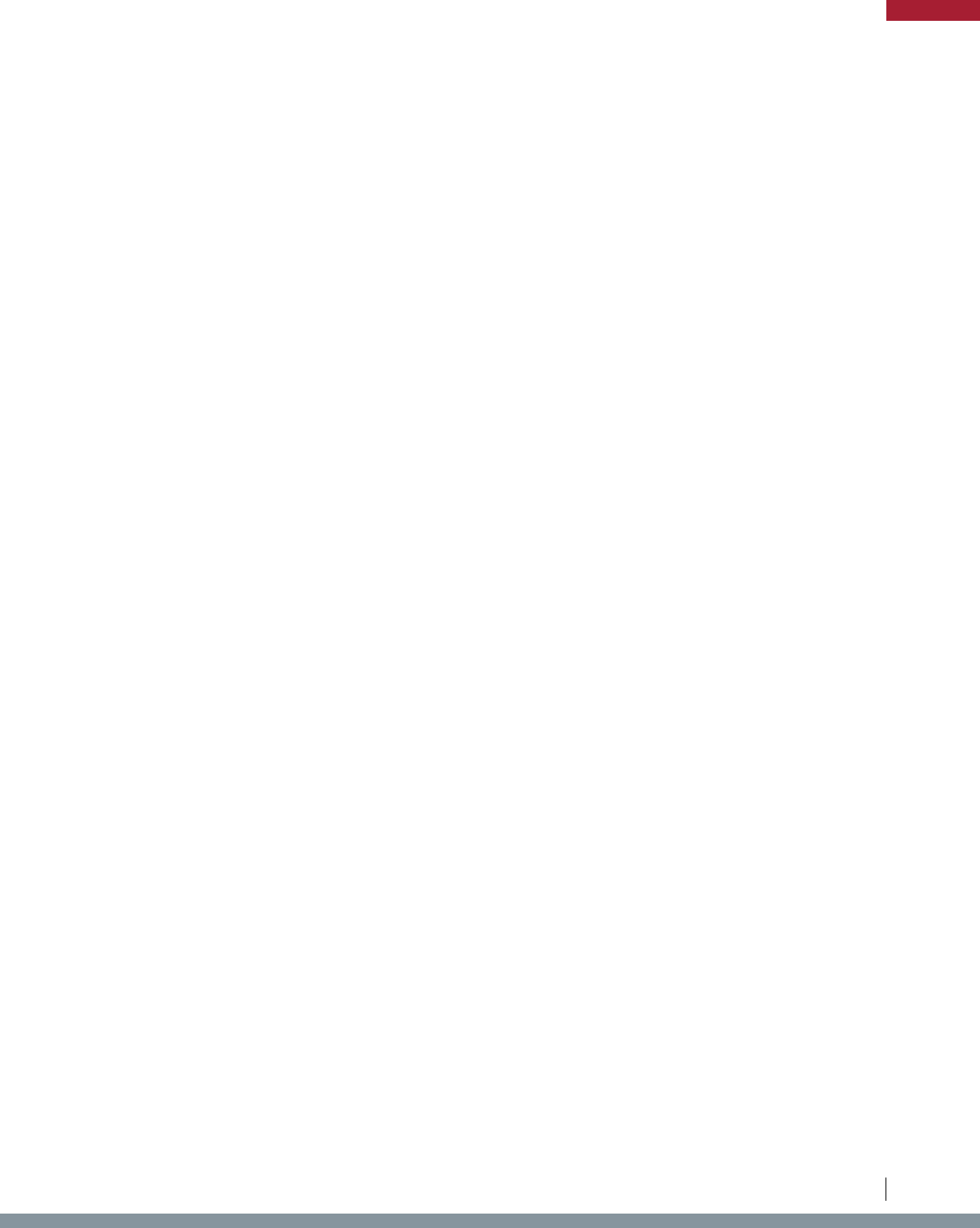
deemed to be the standards and conditions applicable to the production of the agricultural
product for purposes of subsection (b)(2).
SEC. 3. FEDERAL CAUSE OF ACTION TO CHALLENGE STATE REGULATION OF
INTERSTATE COMMERCE.
(a) DEFINITION OF AGRICULTURAL PRODUCTS.—In this section, the term “agricultural
products” has the meaning given to the term in section 207 of the Agricultural Marketing
Act of 1946 (7 U.S.C. 1626).
(b) PRIVATE RIGHT OF ACTION.—A person, including a producer, a transporter, a distributer,
a consumer, a laborer, a trade association, the Federal Government, a State government,
or a unit of local government, that is affected by a regulation of a State or unit of local
government that regulates any aspect of 1 or more agricultural products that are sold in
interstate commerce, including any aspect of the method of production, or any means or
instrumentality through which 1 or more agricultural products are sold in interstate commerce
may bring an action in the appropriate court to invalidate that regulation and seek damages
for economic loss resulting from that regulation.
(c) PRELIMINARY INJUNCTION.—On a motion of the plaintiff in an action brought under
subsection (b), the court shall issue a preliminary injunction to preclude the applicable State
or unit of local government from enforcing the regulation at issue until such time as the court
entersanaljudgmentinthecase,unlesstheStateorunitoflocalgovernmentprovesby
clear and convincing evidence that—
(1) the State or unit of local government is likely to prevail on the merits at trial; and
(2) the injunction would cause irreparable harm to the State or unit of local government.
(d) STATUTE OF LIMITATIONS.—No action shall be maintained under this section unless the
action is commenced not later than 10 years after the cause of action arose.
(e) JURISDICTION.—A person described in subsection (b) may bring an action under that
subsection in—
(1) the district court of the United States for the judicial district in which the person—
(A) is affected by a regulation described in that subsection; or
(B) resides, operates, or does business; or
(2) any other appropriate court otherwise having jurisdiction.
FULL TEXT OF S.2019 / H.R.4417
14
Legislative Analysis of S.2019 / H.R.4417: The “Ending Agricultural Trade Suppression Act”

V. SECTION-BY-SECTION ANALYSIS OF LEGISLATION
A. SECTION 1. SHORT TITLE.
This Section provides the short title for the legislation. It is to be known as the “Ending
Agricultural Trade Suppression Act.”
B. SECTION 2. PROHIBITION AGAINST INTERFERENCE BY STATE AND
LOCAL GOVERNMENTS WITH PRODUCTION OF ITEMS IN OTHER STATES.
Section 2 of the EATS Act would prohibit state and local governments from regulating imported
agricultural products brought or sold within their borders, likely in violation of the Tenth Amendment. If
enacted and upheld, it would prohibit any state or locality from imposing “standards or conditions,”
28
on
the “preharvest production” of “agricultural products” not wholly produced within their own borders—if
those regulations are “in addition to” those imposed at the federal level or in the producing state. The
newly added rule of construction provided in subsection 2(c) further states that if no relevant standards or
conditions exist at either the federal level or in the producing state or locality for an agricultural product,
then no importing state or local government may add any standards in the future for that product. This
newlanguagecouldcreatesignicantderegulatorypressureonin-stateproduction.Inordertoavoid
creating disadvantages for in-state producers by subjecting their products to more extensive regulation
than out-of-state products, states may lower or remove regulations on in-state production to match the
lack of regulation on products originating from out of state.
29
As a result, the EATS Act likely would have
28. As discussed in subsection 2(b)below,thephrase“standardsorcondition”isnotdened.Inthisanalysis,itispresumedtomeanstateandlocallaws,
regulations, and policies (collectively, “regulations”).
29. Oddly, the EATS Act would present a circumstance that is the opposite of one that the dormant Commerce Clause is intended to protect against: out-of-
state producers could be favored over in-state producers because they would not be required to comply with the same standards set by the importing
state or locality.
SECTION-BY-SECTION ANALYSIS OF LEGISLATION
15
Legislative Analysis of S.2019 / H.R.4417: The “Ending Agricultural Trade Suppression Act”

the effect of imposing a new, de facto, nationwide regulatory ceiling of zero regulation for agricultural
products within the purview of subsection 2(c)—absent federal action.
30
In other words, states functionally
could be prevented from regulating the preharvest production of goods that enter their borders within
that scope of that new regulatory void and could be pressed to deregulate in-state production of
those products.
The EATS Act would commandeer state and local governments, prohibiting them from imposing
any “standard or condition” on the preharvest production of out-of-state “agricultural products” brought or
sold within their borders if those standards or conditions are “in addition” to those in effect in the producing
state and locality. In other words, if a state or local government imposes a preharvest standard or condition
on imported agricultural goods that is not in effect in the state or locality of production, the EATS Act would
prohibit the law, regulation, or policy imposing that standard or condition. Determining how to interpret the
textoftheEATSActforanyspecicimportedproduct,however,isnotstraightforward.
The basic framework of the EATS Act suggests at least a four-part inquiry to assess whether a
state or local regulation is prohibited:
1. Is the imported product an “agricultural product” within the meaning of the legislation?
2. Does the state or local law or regulation in question impose a “standard or condition” on the
“preharvest production” of that imported product?
3. In which states and localities is that product produced?
4. Is that “standard or condition” in addition to the law in effect in each state and locality of
production, if any?
ThetextofSection2presentssignicantunansweredquestionsaboutthemeaningandscope
oftheEATSActineachpartofthisinquiry.Whatinitiallymaylooklikesimplelanguagequicklydissolves
intoaquagmireofquestionswithregardstothelegislation’sinterpretationandapplication.Eachissue
adds vast amounts of uncertainty, and collectively they make the measure almost indescribably vague.
In some instances, entire industries could survive or perish based on judicial interpretations of the EATS
Act’stextifitweretopassinitscurrentform.
The application of Section 2 would present mixed questions of fact and law for interpreting
courts. At times, the EATS Act could require a rigorous fact-based inquiry as to exactly where regulated
activities are taking place. It also would take tremendous time and resources for governing bodies and
agricultural producers to sort through potentially affected regulations to determine whether and how they
are impacted. Rulings could vary widely by jurisdiction and create a patchwork of interpretations across
30. See discussion of subsection 2(c) below for further details.
SECTION-BY-SECTION ANALYSIS OF LEGISLATION
16
Legislative Analysis of S.2019 / H.R.4417: The “Ending Agricultural Trade Suppression Act”

the federal judicial circuits, absent intervention by the Supreme Court—which already explicitly has found
some of these regulations to be constitutional.
1. SUBSECTION 2(A)—DEFINITION OF AGRICULTURAL PRODUCTS.
Section 2(a) provides the clearest indication of the intended broad scope of the EATS Act. The
term“agriculturalproducts”isdenedinthelegislationtohavethemeaninggiveninsection207ofthe
Agricultural Marketing Act of 1946 (“AMA”):
The term “agricultural products” includes agricultural, horticultural, viticultural, and dairy products,
livestockandpoultry,bees,forestproducts,shandshellsh,andanyproductsthereof,
including processed and manufactured products, and any and all products raised or produced
on farms and any processed or manufactured product thereof. 7 U.S.C. § 1626.
Thisdenitionthushasfourdiscreteparts:
1. Agricultural, horticultural, viticultural, and dairy products, livestock and poultry, bees, forest
products,shandshellsh;
2. Any products, including processed and manufactured products, of such agricultural,
horticultural, viticultural, and dairy products, of livestock and poultry, of bees, of forest
products,andofshandshellsh;
3. Any and all products raised or produced on farms; and
4. Any processed or manufactured product of any product raised or produced on a farm.
Therstclauseofthedenitionlistscategoriesofproductsthatsquarelyfallwithinthepurview
oftheterm:crops,plants,wine,dairy,animals,bees,wood,sh,andshellsh.Yetseveralotherterms
withinthislistcouldbeinterpretedindifferentways.Forexample,both“agricultural”(usedheretodene
itself) and “livestock” could apply to a broad range of articles and species. Further, the use of the word
“includes” (rather than “means”) is a textual indication that this list is not meant to be exhaustive.
31
Thesecondclausegreatlyexpandsthedenitionof“agriculturalproducts”andinjectssignicant
ambiguity into the legislation. It provides that “agricultural products” also include “any products thereof,
including processed and manufactured products.” The language suggests that any product with an
agriculturalelement,nomatterhowsmall,couldfallunderthedenitionof“agriculturalproducts.”
Everything from breath mints to plastic bags, which may contain stearic acid from beef fat, might be
considered “agricultural products.” There is no limiting condition or de minimis exception governing
thisterm,andtheword“any”suggeststhatitistobeconstruedbroadly.WhileSection2(b)connes
31. See U.S. HOUSE OF REPRESENTATIVES, House Legislative Counsel’s Manual on Drafting Style, 48 (Dec. 2022), https://legcounsel.house.gov/sites/
legcounsel.house.gov/les/documents/ManualDraftStyle_2022.pdf.
SECTION-BY-SECTION ANALYSIS OF LEGISLATION
17
Legislative Analysis of S.2019 / H.R.4417: The “Ending Agricultural Trade Suppression Act”
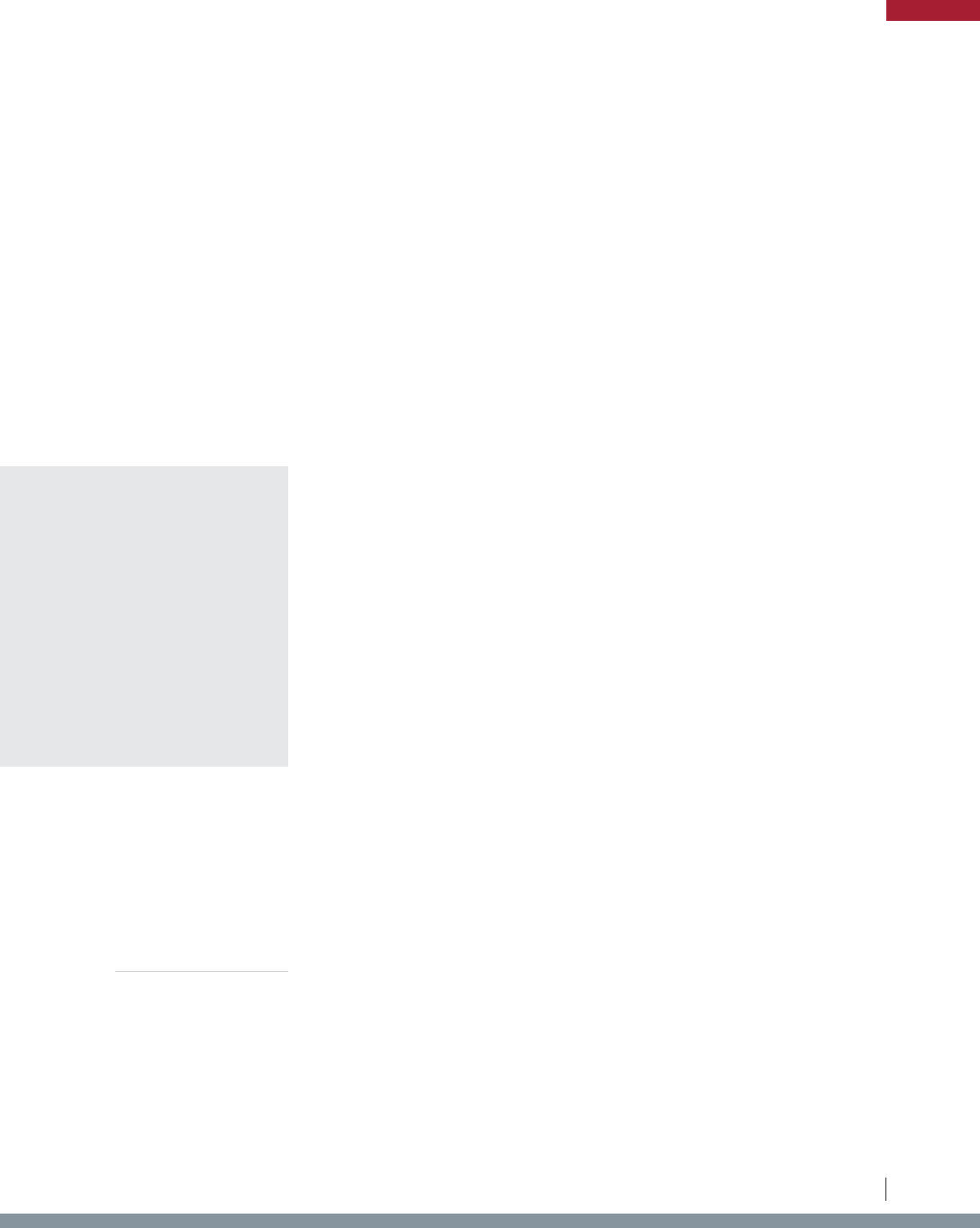
the scope of the section to barring certain standards or conditions on the “preharvest production” of
agricultural products, regulations concerning manufactured goods also could be affected insofar they
regulate the production of agricultural products used as inputs for those goods. As a result, the class
of products affected by the EATS Act is unknowable given the broad and varying uses of agricultural
products and by-products in the manufacturing of a wide range of goods.
Thenaltwoclausesofthedenitiongoastepfurther.
32
These clauses state that, “any and all
products raised or produced on farms” as well as “any processed or manufactured product” made from
these products qualify as “agricultural products” under the EATS Act. This language operates as a catch-
all that captures virtually any items produced on farms. These may include pets raised commercially,
exotic animals, ingredients of plant origin, and any other products “raised or produced” at such locations
regardlessoftheirconnectiontotraditionalagriculture.Thebilldoesnotdenetheterm“farm.”
Consequently, this language creates uncertainty because almost anything could be raised or produced on
a “farm,” even items that bear no resemblance to what conventionally is thought of as agricultural products.
Thedenitionof“agriculturalproducts”incorporatedintotheEATSAct
was drafted over seventy years ago and fails to contemplate the complexities
oftoday’smodernagriculturallandscape.Itencompassesavastnumberand
array of products including all those manufactured with organic components
such as wood, leather, cotton, and wool. Many vaccines today use eggs for
their base, pharmaceuticals like heparin and insulin may be produced from
livestock, and medicinal and dietary supplement pills frequently use cornstarch
as a primary ingredient. The determination of the boundaries of “agricultural
products” thus would have one of the greatest effects on shaping the EATS
Act’sapplication.Thisissueislargelyleftopenbythetext,however,andwould
fall to the courts to decide.
If the EATS Act passes, the question of what is and what is not an “agricultural product” within
the meaning of the statute promises to be an ongoing source of litigation for years to come. There has
beenvirtuallynocaselawinterpretingthemeaningandscopeofthe“agriculturalproducts”denition
to assist the judiciary with this task.
33
Canons of statutory construction could exclude some products as
not falling reasonably within the intended scope of “agricultural products.”
34
In determining the scope
Congressintended,therelevantquestionforareviewingcourtwouldbethedenitionof“agricultural
32. Under the canon against surplusage, it reasonably may be assumed that these clauses are in addition to the preceding clauses.
33. Audubon Soc. of Portland v. U.S. Nat. Res. Conservation Serv., a FOIA challenge concerning the meaning of “agricultural operation” for purposes of a
statutory exemption, considered the question indirectly. 841 F. Supp. 2d 1182 (D. Or. 2012). There, the reviewing court weighed whether “agricultural
operations”includedprivateforestedland(thesubjectofAudubon’sFOIArequest).Id. at 1186. The relevant statute, the Food, Conservation, and Energy
Actof2008(“FCEA”),dened“agriculturaloperations”as“theproductionandmarketingofagriculturalcommoditiesandlivestock,”butdidnotfurther
dene“agricultural”or“agriculturalcommodities.”Id. The key question was thus whether “wood or timber is considered an agricultural commodity.” Id. at
1187. Plaintiff Audubon claimed it was not, pointing to sections of FCEA that distinguished between “agricultural” and “forestry” and between “farmers”
and “forest land owners.” Id.Thedefendantagencies,bycontrast,pointedtotheAMAdenitionatissuehere,theFederalCropInsuranceAct’s(7U.S.C.
§1518)denitionof“agriculturalcommodity,”andtheAgriculturalForeignInvestmentDisclosureAct’s(7U.S.C.§3508)denitionof“agricultural,”which
all include timber and forest products. Id.Becausetheplaintiffconneditsargumenttothestatuteatissue,thecourtfounditsdenitionmorepersuasive.
Id. at 1187-88.
34. Relevant canons of construction could include the whole-text canon, which states that a text must be construed as a whole, and the presumption of
consistent usage, which maintains that a word or phrase is presumed to bear the same meaning throughout a text and that a material variation in terms
suggests a variation in meaning.
If the EATS Act passes,
the question of what
is and what is not an
“agricultural product”
within the meaning of the
statute promises to be an
ongoing source of litigation
for years to come.
SECTION-BY-SECTION ANALYSIS OF LEGISLATION
18
Legislative Analysis of S.2019 / H.R.4417: The “Ending Agricultural Trade Suppression Act”
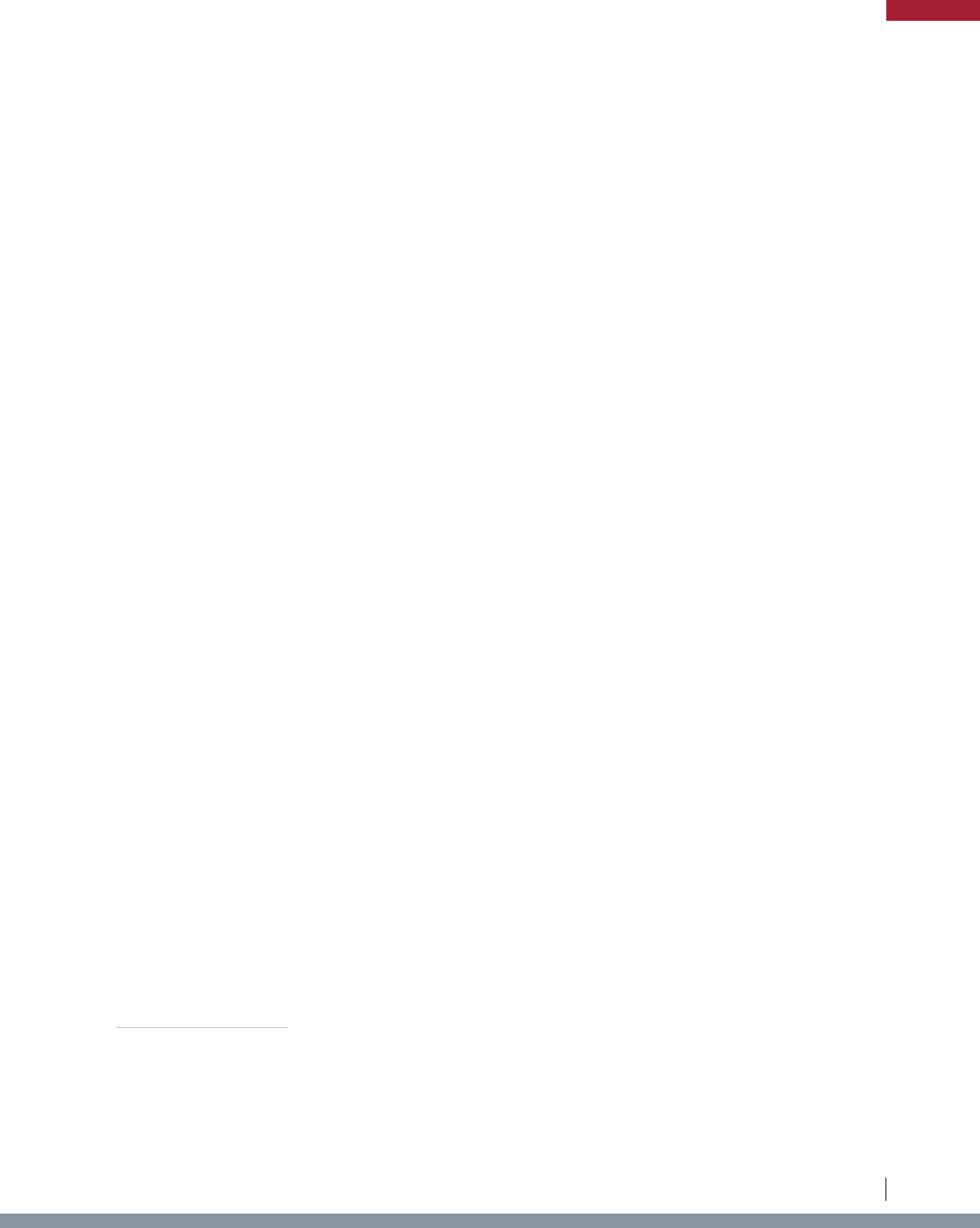
products” within the context of the EATS Act, rather than the AMA, the source statute for the language
ofthedenition.Whileareviewingcourtconsideringthedenitionof“agriculturalproducts”underthe
AMA might cabin its interpretation to the boundaries authorized by that statute,
35
there would be fewer
guidepostsforacourttointerpretthedenitionasitappearsintheEATSAct,giventhattheintended
boundariesofthelatterstatutearesoundened.
2. SUBSECTION 2(B)—PROHIBITION.
This subsection would attempt to expand the current reach of Congress, likely in violation of the
TenthAmendment’santi-commandeeringprohibition.Subsection2(b)wouldforbidanystate
36
or locality
from placing a “standard or condition” on the “preharvest production” of “agricultural products” originating
from out of state when certain conditions are met. This prohibition on state and local regulation of
imported agricultural products is the heart of the EATS Act. This subsection is the source of greatest
potentialambiguityastotheAct’sinterpretationandthegreatestuncertaintyastoitsconstitutionality.
TofullysketchtheboundariesandmechanismsoftheEATSAct’sprohibitions,areviewingcourt
likely would need to apply the canons of statutory construction as well as consider congressional intent
andlegislativehistory.TheSupremeCourt’sprinciplesofstatutoryinterpretationcounselattempting
rsttodivinetheprovision’splainmeaning—consideringnotthedenitionofindividualwordsand
phrases in isolation, but their meaning within the context of the provision and the statute as a whole.
Attempting such a reading, one could interpret the EATS Act as prohibiting state and local governments
from regulating the preharvest production of any agricultural product unless (1) the product is produced
wholly in the regulating state or (2) the regulation is consistent with, and does not exceed, that of any
other state or locality of production or the Federal Government. This interpretation still leaves open
signicantquestionswithrespecttowhatwouldbeconsideredasregulatingpreharvestproduction.
Implementation of the EATS Act depends on the threshold question of what constitutes a “standard
orcondition.”Neitherwordisdenedinthelegislation.Commonusagesuggeststhatthesetermsdescribe
anysortoflaw,regulation,orbestpracticesstandardthathasbeencodiedbyalegislature,administrative
agency, or municipality. The drafters of the legislation chose not to use the common term “regulation,”
however. This choice raises a question as to what, if anything, the phrase “standard or condition”
encompasses that is not included within the term “regulation.” The EATS Act indicates that “a standard or
condition” is something “impose[d]” by “the government of a State or a unit of local government within a
State,”butbeyondthatprovidesnoguidanceastotheterm’sintendedscope.
35. Thequestionssurroundingthedenitionof“agriculturalproducts”andotherkeytermsintheEATSActcouldcausereviewingcourtstoinvokethe“major
questions”doctrine.AstheSupremeCourtrecentlyreafrmedinitsdecisioninvalidatingthefederalCOVID-19vaccinemandate,it“expect[s]Congress
tospeakclearlywhenauthorizinganagencytoexercisepowersofvasteconomicandpoliticalsignicance.”Nat’lFed’nofIndep.Bus.v.Dep’tofLab.,
Occupational Safety & Health Admin., 142 S. Ct. 661, 665 (2022) (quoting Alabama Assn. of Realtors v. Department of Health and Human Servs., 141
S.Ct. 2485, 2489 (2021) (per curiam) (internal quotations omitted)).
36. TheEATSActdoesnotdenetheterm“State.”Thisanalysisadoptsaconservativeapproachinunderstandingthistoapplyonlytothe50U.S.States.
Withoutacleardenition,however,thistermalsomightincludeU.S.TerritoriessuchasPuertoRico,Guam,andtheU.S.VirginIslands,asthewordhas
been read in other contexts. See, e.g.,7U.S.C.§1626(“theterm‘State’whenusedinthischaptershallincludetheVirginIslandsandGuam”).Inthe
caseoftheEATSAct,thedecisionofhowtoapplythetermnodoubtwouldhavesignicantimpactsbyremovingbarrierstointroductionofcertaincrops
or diseases not found in the 50 U.S. States and vice versa.
SECTION-BY-SECTION ANALYSIS OF LEGISLATION
19
Legislative Analysis of S.2019 / H.R.4417: The “Ending Agricultural Trade Suppression Act”
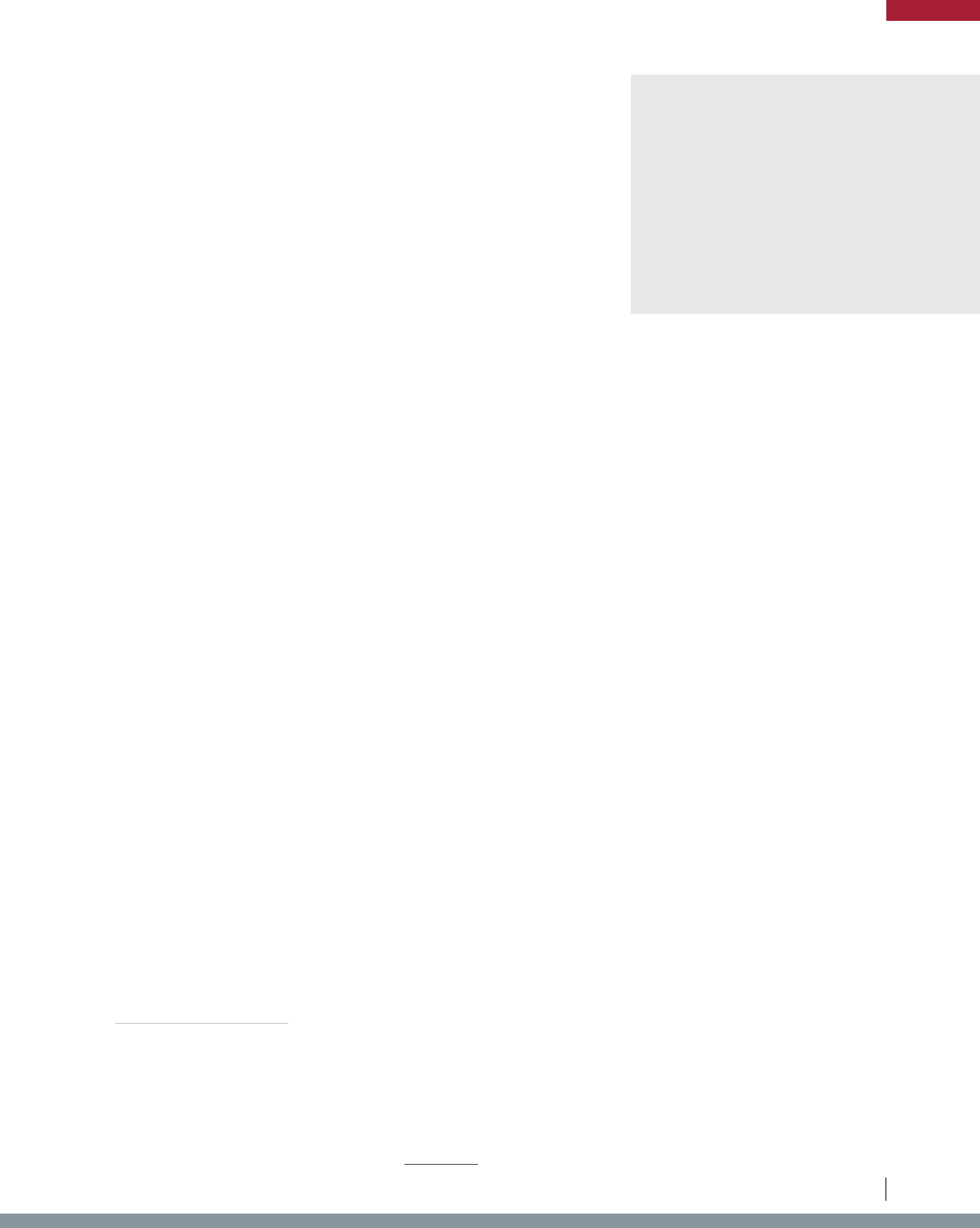
Similarly, the EATS Act also uses the phrase “preharvest
production”withoutdeningtheterm.Thedelineationbetweenwhat
would be considered “preharvest” and “harvest” or “postharvest”
production is anything but clear. For instance, when a livestock
animal is sent to slaughter, the question of where “preharvest”
ends is impossible to answer from the legislative text alone. It could
be that courts would interpret “preharvest production” to include
everything up until the actual moment when that animal is killed
during slaughter. It is also possible that courts would draw the
demarcation somewhere earlier in the process, such as at the point
at which the animal enters the slaughterhouse. The boundaries that future courts interpret around what is
includedwithinthescopeof“preharvestproduction”likelywouldhavesignicantconsequencesforthe
implementation of the EATS Act.
37
Looking to congressional intent provides some clues to understanding the form that a “standard
or condition” on “preharvest production” must take in order for the EATS Act to prohibit it. As discussed
in the legislative history section above, the sponsors introduced the EATS Act in order to federally block
California’sProp12(andotherregulationslikeit).Prop12isapartialbanonthein-statesaleofpork,
veal, and egg products. It is a partial ban in the sense that only the sales of certain products within
each category are banned in California—those produced from animals kept in impermissibly restrictive
connementsystemsor,inthecaseofsows,fromtheirprogeny—ratherthanallpork,veal,andegg
products. As a result, the EATS Act is intended to preclude at least partial prohibitions, and restrictions
on the sale of goods seem to fall clearly within the purview of the legislation.
There also is a question as to whether total bans on particular products constitute “a standard or
condition on the production or manufacture.” One might argue that in levying a total prohibition, a state
legislature effectively renders the means of “preharvest production” irrelevant. Total bans, however, might
constituteastandardorconditiononpreharvestproductionbecauseabanonaproductcouldbedened
by conditions of production related to the identity of that product. For example, a ban on the sale of kratom
(a plant with leaves that are used as a recreational drug) in Vermont
38
means that producers of kratom in
other states cannot plant kratom for future sale in Vermont. In essence, whatever makes an agricultural
productdiscreteandidentiablebyaregulatormightequallyfunctionasastandardorconditionthat
theEATSActwouldprohibit.Puttingthisargumenttogetherwiththelegislation’sprohibitiononpartial
bans, arguably the EATS Act also could prohibit a total ban, which would have a much greater effect on
preharvest production than a partial ban.
39
Toreadthelegislationotherwisewouldbetondthatthetextof
37. Different reviewing courts might not interpret this language in the same way, creating further confusion for producers, regulators, and consumers.
38. 13 Vt. Code R. 140 011:7.
39. In the case of Prop 12, any producer who chooses to sell their pork, veal, or egg products in California may need to change certain production practices
to comply with its requirements, such as by enlarging cages. They also simply may choose not to sell their products in California, meaning that they
will shift their products to other markets—and comply with applicable regulations in those new markets—or else reduce production. Either choice
affects production, including preharvest production, within the scope of Section 3. A total sales ban would go further to affect preharvest production by
removing these choices for the producer in the regulating jurisdiction. A total ban would shut out all (legal) access to state or local markets and require
that a producer shift their products to other markets and, in all likelihood, reduce or cease production, such as by raising fewer pigs. As a result, a total
ban plausibly is within the scope of regulations precluded by the EATS Act. At the least, a total ban likely would be vulnerable to suit, injunction, and
potentially damages under Section 3. See discussion of subsection 3(b) below for analysis of the scope of the private right of action.
The boundaries that future courts
interpret around what is included
within the scope of “preharvest
production” likely would have
significant consequences for the
implementation of the EATS Act.
SECTION-BY-SECTION ANALYSIS OF LEGISLATION
20
Legislative Analysis of S.2019 / H.R.4417: The “Ending Agricultural Trade Suppression Act”

the EATS Act prohibits a partial sales ban, such as Prop 12, but condones a total sales ban that has a more
signicanteffectonpreharvestproduction(andinterstatecommerce).
40
Whetherornottotalbansconstitute
“astandardorcondition”on“preharvestproduction”wouldhavesignicantimplicationsforarangeoflaws
potentially affected by the EATS Act, including bans on the importation of horses for slaughter for human
consumption, as well as prohibition on certain narcotics like kratom.
Because the prohibition in subsection 2(b) would apply to “any agricultural products sold or
offered for sale in interstate commerce,” the EATS Act similarly may affect “standards or conditions”
beyond sales restrictions. This language likely means that the EATS Act would affect more than end-
point regulations on sale. The phrase “sold or offered for sale” functions as an adjective phrase modifying
“products.” By including products “offered for sale,” the legislation also seems to encompass wholesale
goods moving across state lines prior to the point when they are “sold.”
41
Consequently, the EATS Act
could affect regulations ranging from importation and transportation restrictions on live animals and
plants to licensing and recordkeeping requirements, as discussed later in this report.
The EATS Act also is silent as to whether taxes might be included within the concept of
a “standard or condition” under the legislation. Tax rates may vary based on means of preharvest
production, or may be set so high as to constitute a virtual ban on particular items. If different forms of
a product effectively are taxed differently as a result of differences in preharvest practices (such as a
hypotheticalsalestaxbreakforgoodsproducedspecicallywithorganicallygrowncotton),astatemight
be seen as imposing its standards on imported products. It thus is unclear whether the EATS Act might
implicate tax laws, creating another area of ambiguity that would have to be resolved by the courts.
The EATS Act further could implicate laws concerning waste or hazardous substances. If a
product cannot be grown or raised without producing the type of waste or hazardous substance regulated
(for example, the toxic substances sometimes used to treat seeds), such laws effectively might be
interpreted as imposing a “standard or condition” and be precluded by the EATS Act. Many agricultural
regulations would fall within these gray areas. The legislation provides no guidance as to whether these
measures would be affected equally or not at all.
3. PARAGRAPH 2(B)(1)
Paragraph 2(b)(1) ostensibly would require that an agricultural product be produced outside of
the regulating state in order for the EATS Act to block regulation of it.
42
Laws that contain only a general
condition or other requirement and that do not explicitly list regulated entities or geographic areas of
effectwouldrequireafact-specicinquiryintowhichpartiesareaffectedandthestatesandlocalitiesin
which production occurs.
40. “Today,manyStatesprohibitthesaleofhorsemeatforhumanconsumption.Buttheseprohibitions‘har[m]theinterstatemarket’forhorsemeatby
denying outlets for its sale. Not only that, they distort the market for animal products more generally by pressuring horsemeat manufacturers to transition
todifferentproducts,onestheycanlawfullysellnationwide.”Nat’lPorkProducersCouncilv.Ross,143S.Ct.1142,1163(2023)(internalcitationomitted).
41. Thephrase“offeredforsale”alsocouldalsobereadtoapplythelegislation’sprohibitionstoallagriculturalproductssolongasthattype of product
sometimes is sold in interstate commerce.
42. The wording here is ambiguous. At least theoretically, it could be read expansively to prevent states from regulating agricultural products produced within
their own states as well, so long as those types of products also are produced in other states.
SECTION-BY-SECTION ANALYSIS OF LEGISLATION
21
Legislative Analysis of S.2019 / H.R.4417: The “Ending Agricultural Trade Suppression Act”

4. PARAGRAPH 2(B)(2)
Paragraph 2(b)(2) would set out a two-part test: the EATS Act only applies to standards or
conditions in addition to those applicable under “[f]ederal law” and “the laws of the State and unit of
local government in which the production occurs,” if any. This portion of the text would require examining
courtstorstidentifyrelevantfederalregulationsaswellasregulationsintheplace(s)ofproduction
affecting a certain good. Next, courts would need to overlay the standard or condition in question to
see whether it goes beyond the contours of each of those other regulations. This analysis may be
straightforward—for instance, in cases where states set allowable numerical regulatory thresholds
(such as for pesticide application tolerances) that are more protective of public health than those levels
permittedbytheFederalGovernmentorsetbyotherstates.Othertimes,itmaybemoredifcultto
discern whether the challenged standard or condition is “in addition to” the relevant state or federal
regulation.Whilecourtswouldbeforcedtoengageinthistypeofpost-hocanalysisundertheEATSAct,
states would be required to do the same prior to imposing any new regulations on “agricultural products,”
orelseriskfacinglawsuits,injunctions,andthecostofpotentiallysignicantmonetarydamages.States
also would need to conduct a review of all their own existing regulations in order to determine whether
new causes of action could arise from those regulations in accordance with Section 3.
43
5. SUBPARAGRAPH 2(B)(2)(A)
Together with subparagraph 2(b)(2)(B), this subparagraph would prevent states and localities
from regulating the preharvest production of agricultural products imported within their boundaries
above the level of regulation effective in the place(s) of production. Subparagraph 2(b)(2)(A) references
standardsorconditionsinexcessoffederallaw,specically.TheEATSActdoesnotchangeexisting
federal regulations concerning agricultural products. Nor does it directly impose explicit federal standards
that supersede state and local laws. Functionally, however, the EATS Act would set federal regulations
as a new ceiling. Along with the laws of the state and locality of production, the federal standards would
impose a high-water mark for regulation in importing states. Any state or local regulation that goes
beyond the “applicable” regulations at the federal, state, and local level in the state of production would
be considered “in addition to” those regulations and could be prohibited under the EATS Act. This
prohibition could hold true even where, as often is the case in agricultural regulation, there is no federal
law or standard at all.
44
Distinguishingbetweenstateandfederalagriculturallawscanbedifcultinareaswherethe
stateworksinconjunctionwithfederalagencies.Evenwherestateshavecodiednon-bindingfederal
guidelines or best practices, the EATS Act could have a prohibitive effect.
43. See discussion of subsection 2(c) below.
44. See discussion of subsection 2(c) below.
SECTION-BY-SECTION ANALYSIS OF LEGISLATION
22
Legislative Analysis of S.2019 / H.R.4417: The “Ending Agricultural Trade Suppression Act”
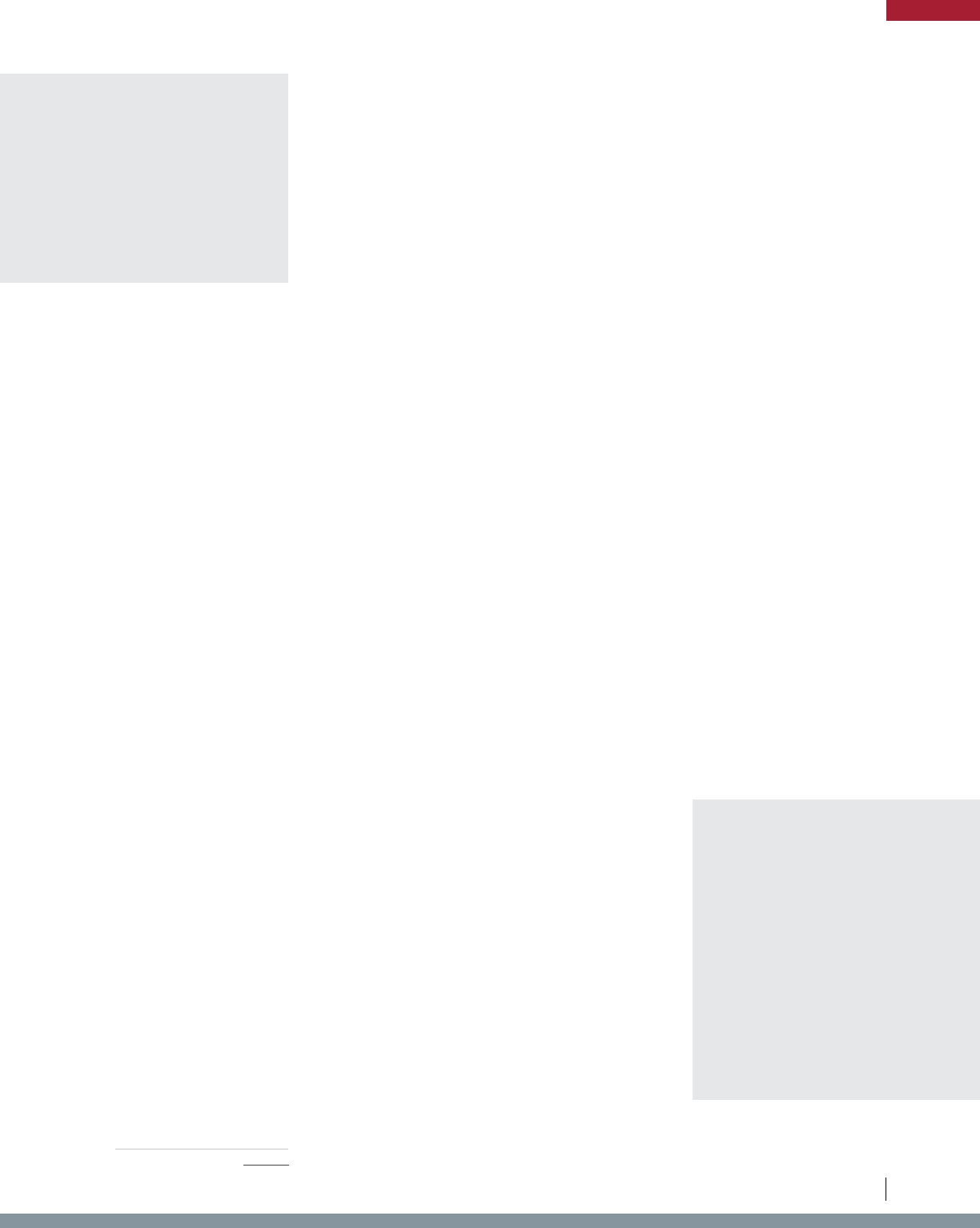
6. SUBPARAGRAPH 2(B)(2)(B)
Together with subparagraph 2(b)(2)(A), this subparagraph would
prevent states and localities from regulating the preharvest production of
agricultural products imported within their boundaries beyond the level of
regulation effective in the place(s) of production. Determining whether a
certain law runs afoul of subparagraph 2(b)(2)(B) requires knowledge of “the
laws of the State and unit of local government” (emphasis added) that govern
in the jurisdiction where production takes place. This analysis could vary
from one producer to the next depending on where their particular farms or
production facilities are located. For larger entities operating in multiple states and localities, the question
of where “production occurs” may become complicated. Likewise, determining the place(s) “in which the
production occurs” for any agricultural product that contains multiple ingredients, and then determining all
applicable regulations, would become overwhelmingly complex.
In order for a regulation to be blocked by the EATS Act, an importing state or locality would need
to impose a standard or condition on an agricultural product that is higher than those, if any, in effect in the
state where “preharvest production” occurs. To determine whether a regulation meets these requirements
would require a case-by-case analysis of particular industries, as well as knowledge of individual producers
and their preharvest supply chains. The point of origin for every agricultural product would have to be
tracked carefully in order for the EATS Act to function. This tracking would be necessary even for regulated
products that contain only trace amounts of agricultural ingredients if a regulation imposes a preharvest
standard or condition that applies to that product. So too would a state seeking to regulate a given product
need to survey and track the regulations of all other potential states of production for that product, as well
as determine any applicable federal regulations in that area. If a state fails to successfully thread this needle
of regulating the preharvest production of an agricultural product no further than it already is regulated in at
least one state and locality of production, or under federal law, then that state could be subject to lawsuits,
enforcement injunctions, and potential damages by any person affected by the
regulation. The administrative costs of setting up these tracking systems for
thousands of products are incalculable in advance, but likely to be substantial.
7. SUBSECTION 2(C)—RULE OF CONSTRUCTION.
The newly added subsection 2(c) likely means that if there are no
applicable federal standards or conditions governing the production of a
particular agricultural product, that absence of regulation becomes the new
functional regulatory ceiling for that product, nationwide.
45
In other words,
under the EATS Act, states could not impose any preharvest regulation on
agricultural products originating outside their borders that fall within the scope
of a federal regulatory void.
The point of origin for
every agricultural product
would have to be tracked
carefully in order for the
EATS Act to function
In other words, under the
EATS Act, states could not
impose any preharvest
regulation on agricultural
products originating
outside their borders that
fall within the scope of a
federal regulatory void.
45.
See also
discussion of Section 2
supra
.
SECTION-BY-SECTION ANALYSIS OF LEGISLATION
23
Legislative Analysis of S.2019 / H.R.4417: The “Ending Agricultural Trade Suppression Act”
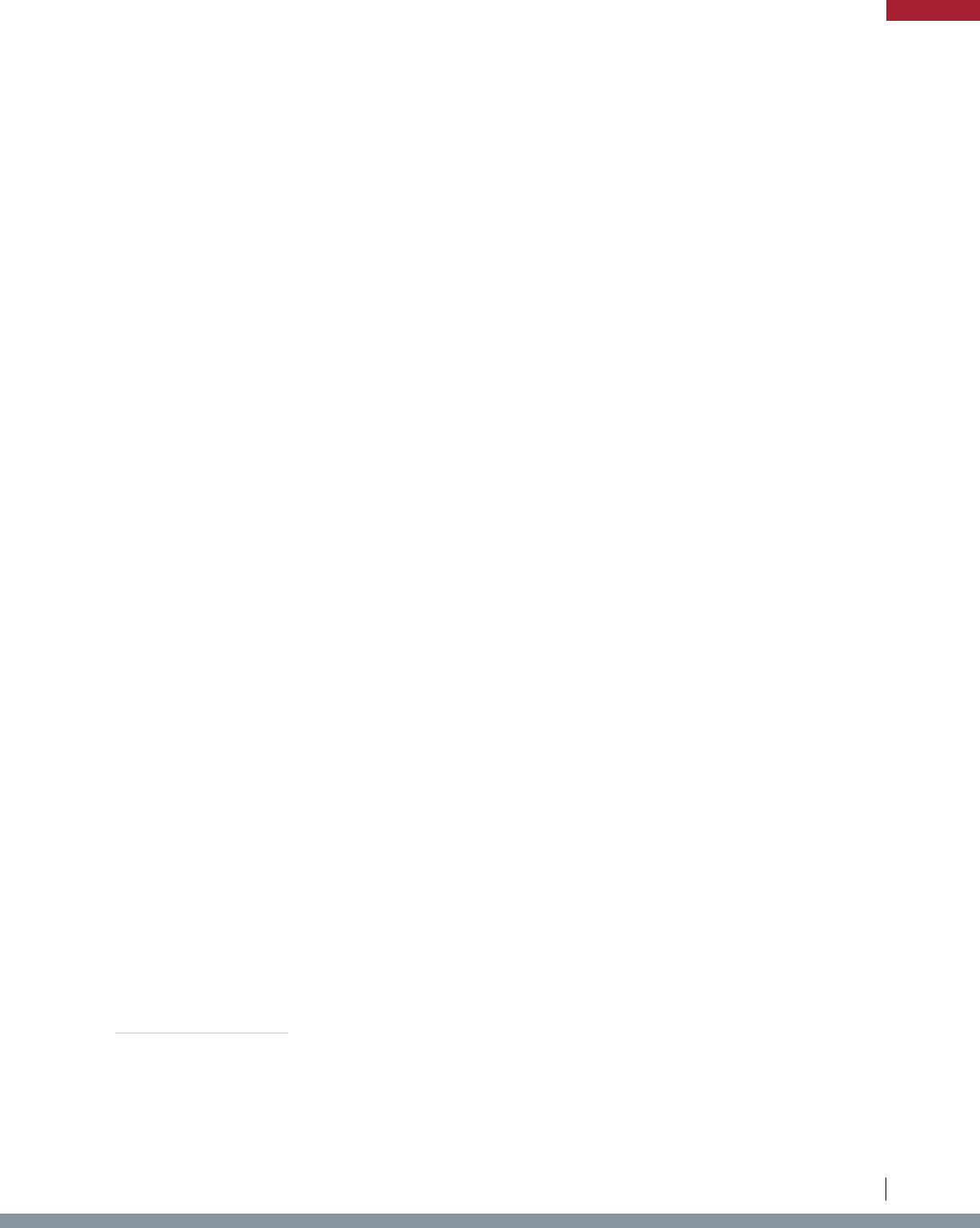
The use of “or” in the phrase “or the laws of a State or unit of local government” in subsection
2(c) is ambiguous. It may be intended to imply that, in the absence of a regulation at the federal level, an
importing state still could regulate the preharvest production of a product to the extent that it is regulated
in the original state of production. If, however, a single state of production does not regulate a given
product,thatstate’slackofregulationtoobecomesthedefactoceilingunlessstatescraftregulations
applying only to certain other states or localities.
46
Trying to keep track of all the applicable, ever-changing
regulations in all other potential states of production to determine a shifting regulatory ceiling would
be a near logistical impossibility for already burdened state and local governments—to say nothing of
tryingtoenforceregulationstailoredspecicallytotheplace(s)oforiginforeveryproduct.Asaresult,
a foreseeable outcome is that states would adopt only the lowest common denominator regulation for
a given agricultural product. In many instances, this lowest common denominator likely would be an
absence of federal regulation. In such cases, if enacted and upheld, the EATS Act effectively would
create a federal bar against any state and local regulations concerning the preharvest production of that
imported agricultural product.
C. TENTH AMENDMENT AND SUPREMACY CLAUSE ISSUES IN SECTION 2
The EATS Act seeks to strip away the authority of state and local governments to legislate with
respect to agricultural products. Section 2 of the EATS Act thus raises serious Tenth Amendment and
Supremacy Clause issues.
The Tenth Amendment to the U.S. Constitution provides: “The powers not delegated to the United
States by the Constitution, nor prohibited by it to the States, are reserved to the States respectively, or
to the people.” This constitutional provision is the basis for what is known as the anti-commandeering
doctrine, which holds that Congress cannot compel or forbid state action.
47
WhileCongressmaydisplace
state legislation by enacting preemptive federal legislation pursuant to its enumerated powers under the
Constitution,itmaynotdirectlycontrolstategovernmentoritsofcials.
48
Theanti-commandeeringdoctrineispartoftheConstitution’sguaranteeofstatesovereignty.In
the 2018 case, Murphy v. National Collegiate Athletic Association, the U.S. Supreme Court made clear
that federal laws similar to the proposed EATS Act violate the anti-commandeering doctrine.
49
In that
case,theCourtafrmedthatalllegislativepowernotgrantedCongressviatheConstitution’scertain
enumeratedpowers“isreservedfortheStates,astheTenthAmendmentconrms.Andconspicuously
absent from the list of powers given to Congress is the power to issue direct orders to the governments
of the States. The anticommandeering doctrine simply represents the recognition of this limit on
46. Any such regulations would need to comply with the dormant Commerce Clause.
47. “The anti-commandeering doctrine may sound arcane, but it is simply the expression of a fundamental structural decision incorporated into the
Constitution, i.e., the decision to withhold from Congress the power to issue orders directly to the States.” Murphy v. National Collegiate Athletic
Association, 138 S. Ct. 1461, 1475 (2018).
48. “WehavealwaysunderstoodthatevenwhereCongresshastheauthorityundertheConstitutiontopasslawsrequiringorprohibitingcertainacts,it
lacksthepowerdirectlytocompeltheStatestorequireorprohibitthoseacts.”Murphyv.Nat’lCollegiateAthleticAss’n,138S.Ct.1461,1476–77(2018)
(quoting New York v. United States, 505 U.S. 144, 166 (1992)).
49. 138 S. Ct. 1461, 1478 (2018) (holding that a federal law preventing states from allowing sports gambling violated the anti-commandeering doctrine by
“unequivocally dictat[ing] what a state legislature may and may not do”).
SECTION-BY-SECTION ANALYSIS OF LEGISLATION
24
Legislative Analysis of S.2019 / H.R.4417: The “Ending Agricultural Trade Suppression Act”
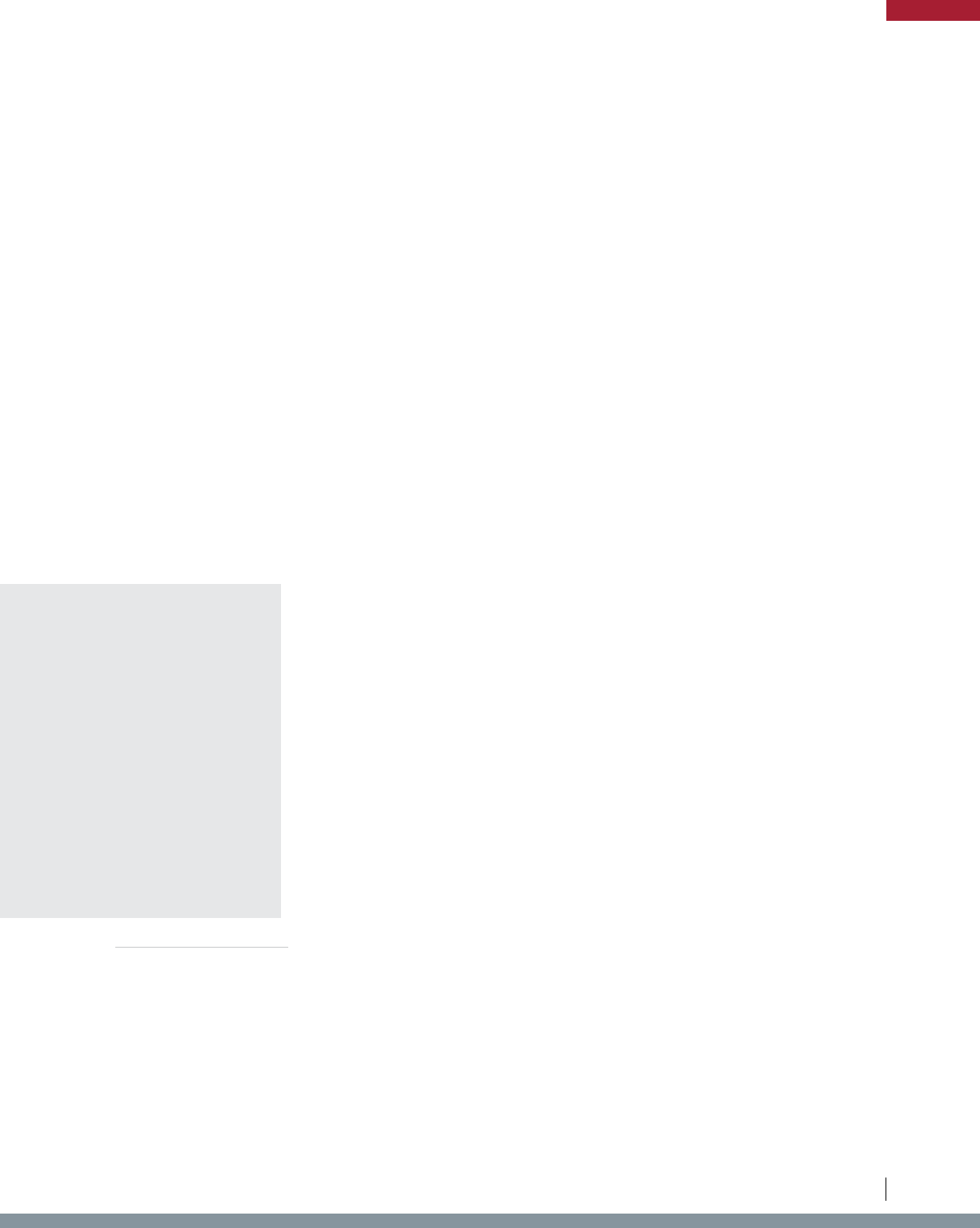
congressional authority.”
50
In Murphy,theCourtfurtherclariedthattheanti-commandeeringdoctrine
extends to Congressional prohibitions on state action.
51
There, the Court found no distinction between
ordering states to act and prohibiting them from acting because both offend “[t]he basic principle—that
Congress cannot issue direct orders to state legislatures.”
52
The anti-commandeering doctrine does not prevent Congress from displacing state law with
federallawsgoverningprivateactorsoramixofpublicandprivateentities.WhenCongressdoesexercise
its legislative powers, the Supremacy Clause in Article VI, Clause 2 of the U.S. Constitution makes that
federallawthe“supremeLawoftheLand,”preemptinganyconictingstatelaw.Inordertodistinguish
unconstitutional “commandeering” from constitutional preemption, the Court explained in Murphy that:
Preemption is based on the Supremacy Clause, and that Clause is not an independent grant
of legislative power to Congress... It species that federal law is supreme in case of a conict
with state law. Therefore, in order for the [federal law] to preempt state law, it must satisfy two
requirements. First, it must represent the exercise of a power conferred on Congress by the
Constitution; pointing to the Supremacy Clause will not do. Second, since the Constitution
confers upon Congress the power to regulate individuals, not States, the [federal law] at issue
must be best read as one that regulates private actors.
53
The commandeering nature of the EATS Act is even more apparent in light
of the language in subsection 2(c), which could be read to hold that an absence
of federal regulation of an imported agricultural product could preclude any state
andlocalregulationofit.WhenCongressislegislatingsubstantivelytosupplant
state law through regulations on private actors, the Supremacy Clause applies.
54
WhenCongressissimplyremovingstatelegislativeauthoritywithoutany
concomitant substantive federal policy, the Supremacy Clause does not apply.
The EATS Act would attempt the latter, as the rule of construction in subsection
2(c) of the text makes explicit.
55
Even in the absence of any differing federal (or
state or local) policy, a preharvest production standard or condition imposed by
a state or locality on imported products would be invalid under the EATS Act.
In this way, the EATS Act seeks to create a regulatory void for some products,
where states impermissibly would be restricted from legislating.
Congress can displace
state law when it regulates
individuals pursuant
to a valid exercise of its
enumerated powers. But it
cannot do what the EATS
Act would do: bar states
from legislating on a
given subject.
50. Id. at 1476.
51. Id. at 1478.
52. Id.
53. Id. at 1479 (internal quotations omitted).
54. The Supreme Court recently issued another anti-commandeering decision in Haaland v. Brackeen, 143 S.Ct. 1609 (2023). In Haaland, the Court found
that a federal law did not violate the anti-commandeering doctrine because it applies “evenhandedly” to both private and state actors. Unlike in Haaland,
the EATS Act would not apply “evenhandedly” to state and private actors because its prohibition directs only state and local governments, not private
actors.WhileSection3oftheEATSActgivesprivateparties(aswellasgovernmentbodies)arighttosuestateandlocalgovernmentsforusingtheir
sovereign authority to enact prohibited legislation on pre-harvest production methods, this private right of action is voluntary. The mandatory portion of
the legislation, the Section 2 prohibition, applies only to state and local governments, impermissibly “harness[ing]” the legislative and executive authority
of states. Id. at 1632. Further, unlike in Haaland, under the EATS Act, Congress would prohibit states from adopting a state policy even in the absence of
any substantive federal policy. As a result, the principles of Murphy are more applicable to the EATS Act.
55. The new language in subsection 2(c), which did not appear in previous iterations of the legislation, seems to evidence an intent by the drafters to preclude
state and local regulation by commandeering state and locality regulatory authority, rather than to constitutionally preempt their authority through a
positive exercise of federal authority directly over private actors, such as agricultural industry participants.
SECTION-BY-SECTION ANALYSIS OF LEGISLATION
25
Legislative Analysis of S.2019 / H.R.4417: The “Ending Agricultural Trade Suppression Act”

Thereremainsaquestionofhowtheanti-commandeeringdoctrineaffectstheEATSAct’s
restriction on local government regulation. Because the doctrine is an articulation of the limited,
enumeratednatureofCongress’slegislativeauthority,itisplausiblethatthedoctrineextendstopreclude
Congress from directly controlling local governments, as well. For instance, the U.S. Court of Appeals
for the Third Circuit recently invalidated two provisions of a federal law regulating states and localities,
ndingthatthefederalprovisionswerenotpreemptivebecausetheydidnotactuponprivateactors.
56
Similarly,courtsmightndthattheEATSActviolatestheanti-commandeeringdoctrineandlacks
preemptive effect because it attempts to directly regulate state and local governments, not private actors.
Just as clearly as articulated in Murphy, enactment of Section 2 of the EATS Act would be “as
iffederalofcerswereinstalledinstatelegislativechambersandwerearmedwiththeauthoritytostop
legislators from voting on any offending proposals. A more direct affront to state sovereignty is not easy
to imagine.”
57
Thus,theEATSAct’sprohibitiononstateregulationlikelywouldbeunconstitutionalunder
the Tenth Amendment even if the legislation focused on only one industry.
D. SECTION 3. FEDERAL CAUSE OF ACTION TO CHALLENGE STATE
REGULATION OF INTERSTATE COMMERCE.
Section 3 of the EATS Act would confer a private right of action to legally challenge any state
or local law “that regulates any aspect of 1 or more agricultural products that are sold in interstate
commerce... or any means or instrumentality through which 1 or more agricultural products are sold in
interstatecommerce.”ThisprivaterightofactionispotentiallymuchbroaderthanSection2’sprohibition,
lackinglanguageconningitsprovisionsonlytoregulationsrelatedtopreharvestproduction.Section
3 provides for injunctive relief, shifts the burden to states and localities to defend their laws, and allows
for monetary damages to be assessed against state and local governments. The language of Section
3,however,raisesquestionsofinterpretationandsignicantconstitutionalconcerns,suchasstate
sovereign immunity under the Eleventh Amendment, as discussed below. Given these concerns, its
provisions might be found inoperable or interpreted narrowly by the courts.
CourtsmayinterpretSection3inoneofthreeways.First,theymaynditscitizensuitprovision
inoperable because it does not specify particular triggering legal violations. Generally, citizen suit provisions
attachtoaspecicviolationofanunderlyingstatute.Thesubstantialambiguitycreatedbythelanguagein
Section 3, which does not specify the circumstances under which a cause of action would arise (beyond a
person being affected by a regulation), could lead a court to disregard Section 3 of the EATS Act altogether.
A second possible outcome is that a court could read the broad language of Section 3 as itself
establishing a new legal violation that may be enforced by private parties. To construe Section 3 in such
a manner would lead to absurd results, however—providing anyone affected by the regulation of an
agricultural product in interstate commerce with Article III standing the opportunity to sue, likely obtain
56. OceanCty.Bd.ofCommissionersv.Att’yGen.ofStateofNewJersey,8F.4th176,181–82(3dCir.2021).“Afederalstatutethatdoesnotregulateprivate
actors cannot serve as a basis for preemption.” Id. at 182.
57. Murphy at 1478.
SECTION-BY-SECTION ANALYSIS OF LEGISLATION
26
Legislative Analysis of S.2019 / H.R.4417: The “Ending Agricultural Trade Suppression Act”
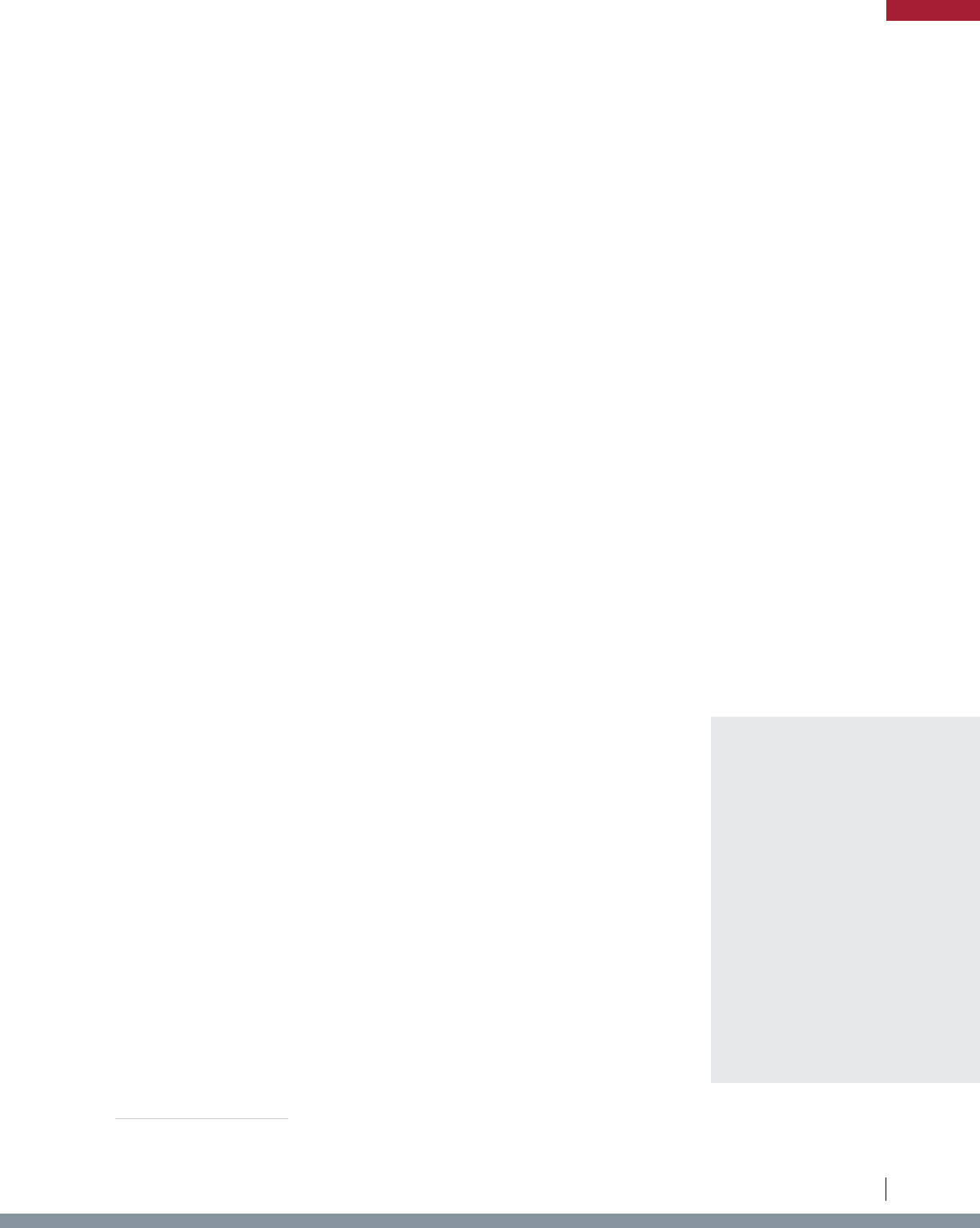
58. Reading Section 3 in this way would be consistent with the whole-text canon, discussed supra.
59. The presumption of consistent usage, discussed supra, would counsel that the use of these different phrases demonstrates intent for different meanings.
Under that reading, the interpretation of “standard or condition” becomes even more fraught.
at least a preliminary injunction of that regulation, and potentially secure damages and a permanent
injunction.Inpractice,thisreadingcouldopentheoodgatesandforcestateandlocalgovernmentsto
answer to a near endless onslaught of litigation over any regulation of any agricultural products. Given
these concerns, a court might decline to read Section 3 this way, although such a reading is not outside
the scope of the ambiguous language provided.
The third and most plausible interpretation of Section 3 would be to read its provision only in
conjunction with Section 2.
58
In general, citizen suit provisions are written narrowly and give authorization
forprivatepartiestobringsuitonlyinresponsetospecicviolations.Here,nosuchreferenceexistsand
theprovisionmakeslittlesenseinisolation.Acourtthuscouldndthatthelegislation’sdraftersmeant
to refer back to and specify violations of Section 2 as the particular cause of action being enforced here.
Whileitappearssuchareadingisinlinewiththedrafters’intent,itbearsmentionthatthelanguageof
Section 3 departs from that of Section 2 in important ways.
Fundamentally, there is little congruence between “a standard or condition on the preharvest
production of any agricultural products” and the much broader language of Section 3, “a regulation...
that regulates any aspect of 1 or more agricultural products... including any aspect of the method of
production, or any means or instrumentality through which 1 or more agricultural products are sold
in interstate commerce.” Not only does the language encompass regulations touching “any aspect of
1 or more agricultural products,” it also expands to include regulations applicable to “any means or
instrumentality through which” such a product is sold. It is unclear whether the EATS Act drafters intended
that the terms “standard or condition” in Section 2 and “regulation” in Section 3 to mean different things,
59
but the mismatched language could cause considerable trouble for a court looking to interpret the text.
If the third interpretation of Section 3 prevails, under which Section 3
would enable private citizens to bring suit over violations of the prohibition in
Section 2,
the effects that this portion of the EATS Act would have could be
extreme. State and local agricultural laws across the U.S. would be vulnerable
to challenge by other states, the Federal Government, private entities, or even
foreign governments seeking to exact monetary damages. If Section 3 were
enforcedaswritten,statescouldbeoodedwithlawsuitsanddamageclaims.
These suits could seek payments from states for taking common sense actions
such as enforcing restrictions on the importation of disease-infected livestock
or pest-infested plants. Innumerable sensible health, safety, and welfare
regulations would be susceptible to challenge. On a macro-level, as currently
written, the EATS Act might require state and local governments to expend
signicanttaxpayerdollarsinordertodefendtheirregulationsincourtandto
pay for potentially substantial damage awards.
... as currently written,
the EATS Act might
require state and local
governments to expend
significant taxpayer
dollars in order to
defend their regulations
in court and to pay for
potentially substantial
damage awards.
SECTION-BY-SECTION ANALYSIS OF LEGISLATION
27
Legislative Analysis of S.2019 / H.R.4417: The “Ending Agricultural Trade Suppression Act”

1. SUBSECTION 3(A)—DEFINITION OF AGRICULTURAL PRODUCTS.
Subsection3(a)repeatsthesamedenitionof“agriculturalproducts”asusedinSection2(a).
See the discussion of subsection 2(a) supraforanalysisofthepotentialscopeofthisdenition.
2. SUBSECTION 3(B)—PRIVATE RIGHT OF ACTION.
Subsection 3(b) would provide a right of action to challenge “a regulation
of a State or unit of local government that regulates any aspect of 1 or more
agricultural products that are sold in interstate commerce.” Next, subsection
3(b) lays out two available remedies: courts may both “invalidate that regulation”
and award “damages for economic loss resulting from that regulation.” Though
it is not stated explicitly, courts likely would award these damages against the
“State or unit of local government” that imposed the regulation, which would have
to be drawn from the State treasury or municipal funds. As discussed further
below,
60
undertheEleventhAmendment’sstatesovereignimmunityprotections,
states themselves likely would be shielded from direct suit by private entities. States still could be directly
subject to suit from other sovereigns, including other states and the Federal Government, though.
Further, local governments themselves could be vulnerable to lawsuits from any affected party unless
theyareconsideredtobearmsofastate.Perhapsmoresignicantly,stateandlocalofcialswith
enforcement authority, may not be protected from liability under subsection 3(b) and potentially could be
subject to extensive, expensive litigation and enforcement injunctions.
Subsection3(b)additionallyraisesanumberofmorespecic,
interpretive questions. Most of these relate to scope. The language
of subsection 3(b) does not make clear whether it applies only to
agricultural products moved in interstate commerce or whether it
applies to all agricultural products so long as that type of product is sold
in interstate commerce. For example, the language could be found to
apply to oranges generally because they move in interstate commerce
rather than to a particular orange that may or may not cross state lines.
Under such an interpretation, an orange producer in Florida potentially
mightbeabletosueofcialsintheirownstategovernmenttochallenge
in-state regulations related to oranges under the EATS Act since
oranges are a type of product sold in interstate commerce.
Further,subsection3(b)denesnoterms.Asdiscussedearlier,thesubsectionemploysthe
word “regulation” rather than the phrase “standard or condition” used in Section 2. Though “regulation”
can refer collectively to both statutory law and regulations established by agencies, one could narrowly
interpret Section 3 to govern only the latter. The legislative history, however, suggests that the EATS
Act was drafted to target California laws, so its intended scope likely includes both statutory laws and
60. See Eleventh Amendment Concerns below.
Under such an interpretation,
an orange producer in Florida
potentially might be able to
sue officials in their own state
government to challenge in-state
regulations related to oranges
under the EATS Act since
oranges are a type of product
sold in interstate commerce.
SECTION-BY-SECTION ANALYSIS OF LEGISLATION
28
Legislative Analysis of S.2019 / H.R.4417: The “Ending Agricultural Trade Suppression Act”

regulations. This reading, though, creates a new problem of how to interpret “standard or condition,” the
plain meaning of which also would appear to cover both. This lack of congruence between the language
ofSections2and3wouldpresentsignicantinterpretativechallengesforreviewingcourts.
3. SUBSECTION 3(C)—PRELIMINARY INJUNCTION.
Subsection 3(c) would give plaintiffs the right to receive a preliminary injunction on the enforcement
of a challenged regulation and lays out the standard to receive such relief. This preliminary injunction is
intended to provide plaintiffs with immediate relief by “preclud[ing] the applicable State or unit of local
governmentfromenforcingtheregulationatissueuntilsuchtimeasthecourtentersanaljudgmentin
thecase.”Itmaytakeyearsforacourttoreachanaldecision,especiallygiventhebacklogofcases
thatmightbecreatedbytheEATSAct.Subsequentrelatedlawsuitsledbyotheraggrievedpartiescould
extendtheseinjunctionsalmostindenitely.Subsection3(c)thuscouldtietheregulatoryhandsofstate
and local governments for years to come across a broad swath of legal areas related to agriculture.
Historically, the burden of proving entitlement to a preliminary injunction falls squarely on the
party seeking injunctive relief. Over a hundred years ago, the Supreme Court in Ex Parte Young held that
“toenjoinproceedingsbystateofcialstoenforcethelegislativeactsofthestate...noinjunctionought
tobegrantedunlessinacasereasonablyfreefromdoubt.Wethinksuchruleis,andwillbe,followed
by all the judges of the Federal courts.”
61
More recently, the Supreme Court has been explicit about the
burden of proof, addressing the issue in Winter v. Natural Resources Defense Council, Inc.
62
In Winter,
JusticeRobertslaidouttheCourt’snotoriouslyhighstandard:“Aplaintiffseekingapreliminaryinjunction
must establish that he is likely to succeed on the merits, that he is likely to suffer irreparable harm in the
absence of preliminary relief, that the balance of equities tips in his favor, and that an injunction is in the
public interest.”
63
This standard is in stark contrast to Section 3 of the EATS Act, which would take this
conventional test and invert it in favor of the plaintiff.
Unlike the traditional standard prescribed by the Supreme Court in Winter and Ex Parte Young,
the EATS Act provides for the issuance of a preliminary injunction unless the government defendant
can prove by clear and convincing evidence: (1) a likelihood of success on the merits of its defense and
(2) irreparable harm to the state or locality should an injunction be imposed.
4. PARAGRAPH 3(C)(1)
Paragraph 3(c)(1) would require a state or local government defendant to show that it is more
likely than not to succeed on the merits of the case at trial in order to defeat a preliminary injunction.
Agovernment’savenuestomakesuchashowingarelimited.Onewaywouldbetoshowthatthe
regulated good is not an “agricultural product.” A good that is not an agricultural product falls outside
thescopeofthelaw.Yet,thissortofshowingmaybedifcultgiventheexpansivedenitionprovided.
Beyond contesting whether a product is an agricultural product within the meaning of the EATS Act,
61. 209 U.S. 123, 166–67 (1908).
62. 555 U.S. 7 (2008).
63. Id. at 20.
SECTION-BY-SECTION ANALYSIS OF LEGISLATION
29
Legislative Analysis of S.2019 / H.R.4417: The “Ending Agricultural Trade Suppression Act”
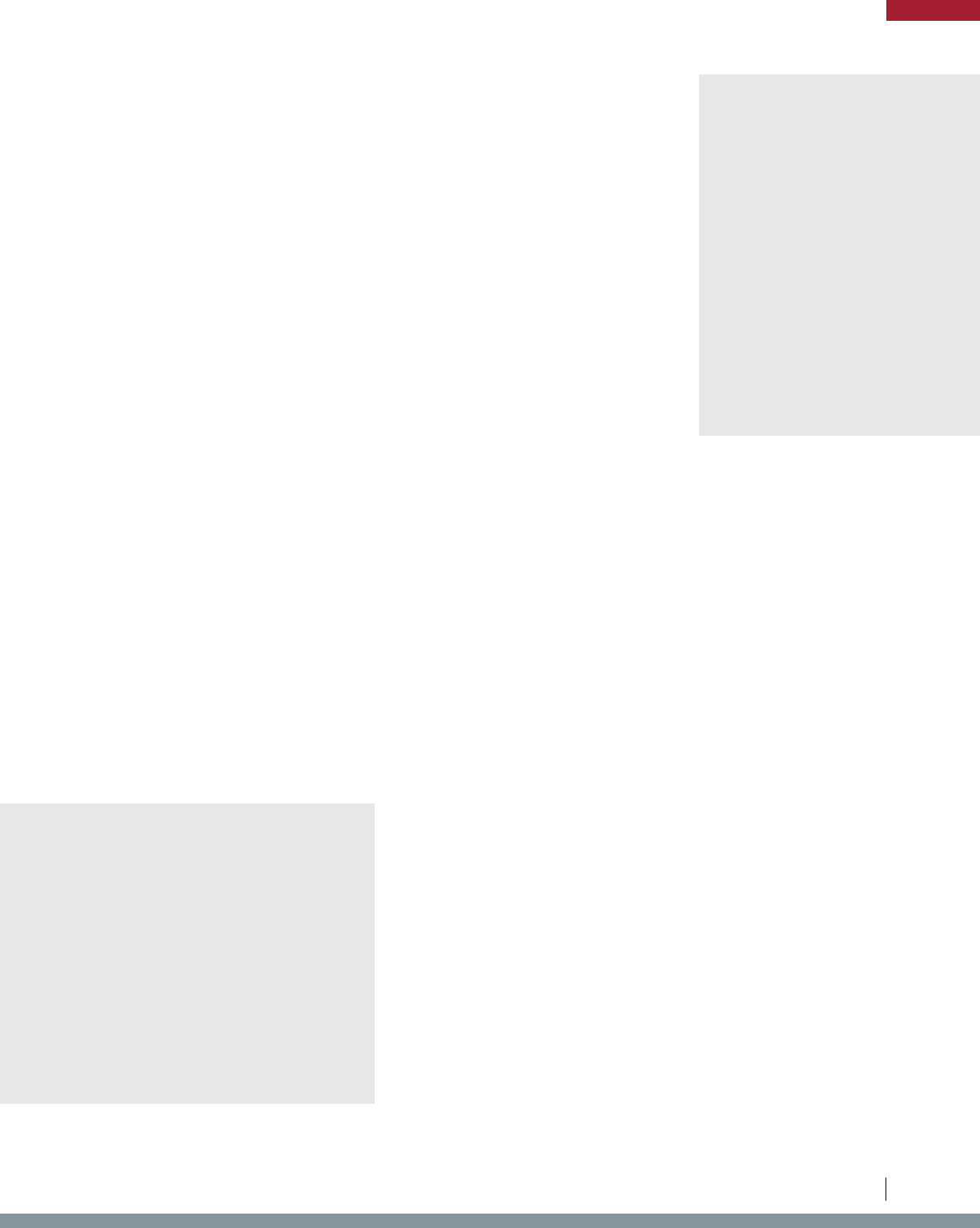
a state or local government might be able to argue in some instances that the
product is not sold in interstate commerce, but that is unlikely to be the case
for most goods.
For agricultural products in interstate commerce, the state or locality
would have limited means to challenge the broad right of action created in
subsection 3(b). If Section 3 were enacted and interpreted broadly, so long as
a challenged regulation affects agricultural products in interstate commerce,
it would be straightforward for a plaintiff with standing to secure a preliminary
injunctionpreventingstateorlocalgovernmentofcialsfromenforcingthat
regulation. Plaintiffs would face a far more generous standard under Section 3
of the EATS Act than under the usual context in which a preliminary injunction
may be sought in federal court, including in cases involving fundamental
civil rights.
5. PARAGRAPH 3(C)(2)
Paragraph 3(c)(2) would require a state or local government to show that it would suffer
“irreparable harm” if a court were to enjoin it from enforcing the regulation in question. States and
localities may be able to make strong showings on this issue for certain products. Many agricultural
regulations have a direct nexus to public health and safety, which state and local governments could use
to demonstrate a risk of injury to citizens or property that rises to the level of irreparable harm. It should
be noted, however, that this bar is high. Even if a state or locality succeeded in demonstrating irreparable
harm under paragraph 3(c)(2), a plaintiff still would receive a preliminary injunction if the state or local
government could not demonstrate a likelihood of success on the merits under paragraph 3(c)(1). Oddly,
irreparable harm may be the easier hurdle to clear. States must prevail under both paragraph 3(c)(1) and
paragraph 3(c)(2) in order to continue enforcing the law in question.
6. SUBSECTION 3(D)—STATUTE OF
LIMITATIONS.
Subsection 3(d) would impose a ten-year statute of limitations
for claims under this Section. The clock would begin when the
“cause of action arose.” However, the EATS Act text does not
specify whether this statute of limitations refers to the date
the regulation went into effect or the time at which the plaintiff
suffered injury from it. In the latter case, legislation could be open
to challenge even if it was implemented more than a decade
before. These timelines become important when considering the
possibility of retrospective damages claims under subsection 3(b).
Plaintiffs would face a far
more generous standard
under Section 3 of the
EATS Act than under the
usual context in which a
preliminary injunction
may be sought in federal
court, including in cases
involving fundamental
civil rights.
... the EATS Act text does not specify
whether this statute of limitations
refers to the date the regulation went
into effect or the time at which the
plaintiff suffered injury from it. In the
latter case, legislation could be open to
challenge even if it was implemented
more than a decade before.
SECTION-BY-SECTION ANALYSIS OF LEGISLATION
30
Legislative Analysis of S.2019 / H.R.4417: The “Ending Agricultural Trade Suppression Act”
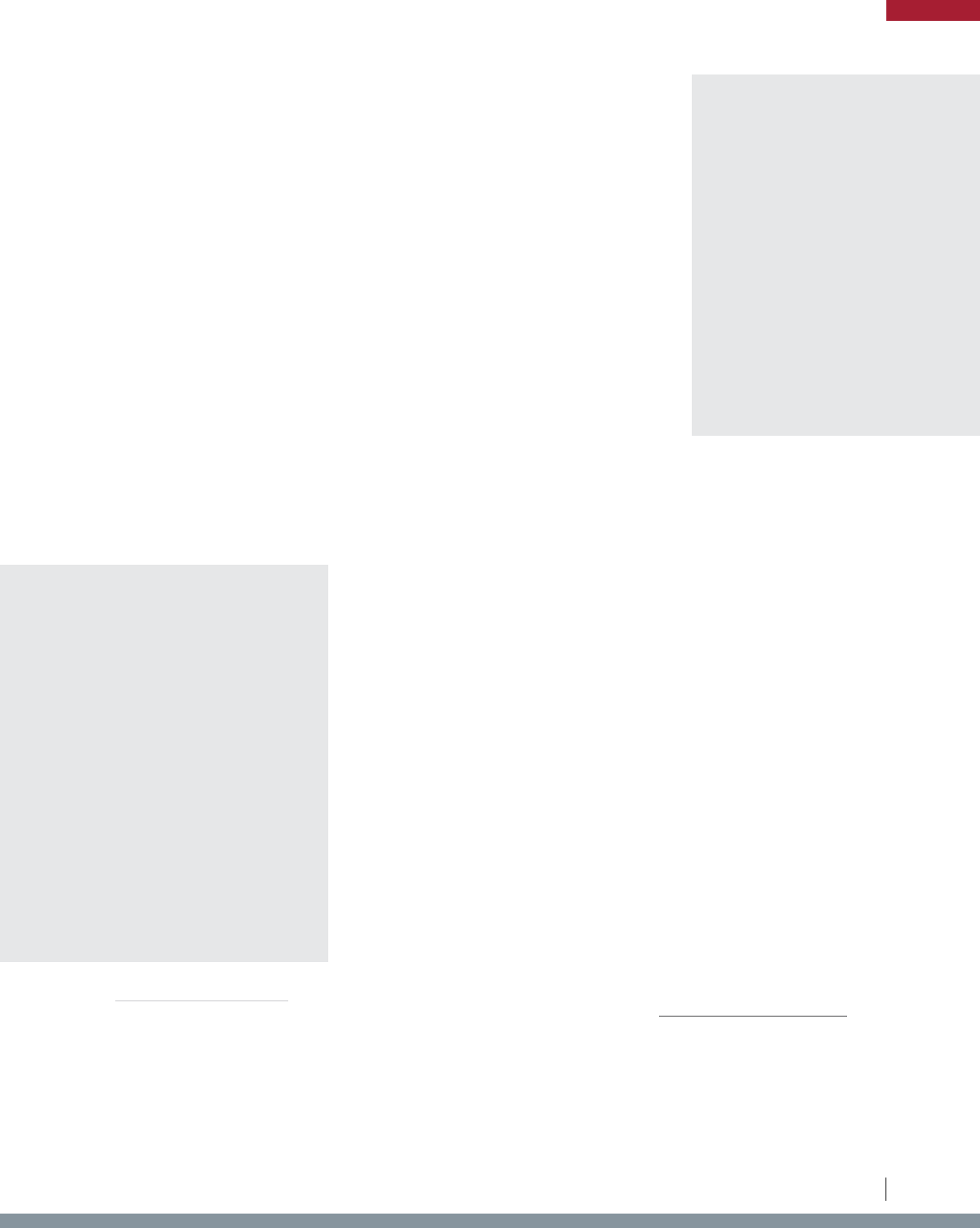
Because subsection 3(d) does not state that it is limited to new state
laws, a question arises whether Section 3 may be intended to allow plaintiffs
to challenge laws that were enacted years before the effective date of the
EATS Act. Comments made by sponsors of the legislation indicating their
intent to federally block Prop 12 would seem to support this reading. There is,
however, a presumption against retroactivity.
64
Section 3 contains no explicit
language concerning retroactivity, and retroactive intent is at least ambiguous.
Consequently, rather than being read to be retroactive within the ten years
preceding enactment, a court may be more likely to read Section 3 to permit
suitwithintenyearsofthetimewhenacauseofactionaroseandtond
that such a cause of action could arise from an existing regulation imposed
more than ten years before but still in effect. Such a reading avoids reading
retroactivity into the statute but still enables the EATS Act to accomplish
its intended purpose of displacing Prop 12 and similar regulations, as well
as many others not envisioned by the sponsors of the legislation. The EATS Act thus would provide
a vehicle for challenging over a thousand long-standing state and local regulations and chill further
lawmaking related to at least the preharvest production of imported agricultural products.
65
7. SUBSECTION 3(E)—JURISDICTION
Subsection3(e)clariesjurisdictionoverclaimsthatcould
be brought pursuant to Section 3. It would paint jurisdiction with the
broadest possible brush, enabling lawsuits to be brought in federal
district courts located where a plaintiff “is affected by a regulation” or
“resides, operates, or does business.” It also would permit challenges to
be brought in “any other appropriate court otherwise having jurisdiction.”
Through this language, the legislation does not narrow access to the
courts. Rather, the EATS Act would throw open the courthouse doors
forapotentialoodofnewlitigation—whichessentiallycouldbebrought
by any party affected by any aspect of a regulation on any agricultural
product in interstate commerce in any court with jurisdiction so long
as that party meets Article III standing requirements. In doing so, the
EATS Act would shift massive power from state and local legislative
bodies to the federal judiciary and, together with Section 2, federal
64. See, e.g., Congressional Research Service, Retroactive Legislation: A Primer for Congress, 1 (Aug. 15, 2019), https://sgp.fas.org/crs/misc/IF11293.pdf
(“Congress has much greater leeway to enact retroactive legislation in the civil sphere than in the criminal sphere. However, certain constitutional limits
apply, and courts interpreting ambiguous statutes apply a general presumption against retroactivity.”)
65. Should other sections of the legislation be removed through the legislative process prior to passage or found unconstitutional by reviewing courts, there
issomequestionastowhetherSection3mightbeabletostandalone.IfSection3weretopasswithoutSection2,acourtmaynditmeaningless
withoutdirectreferencetoaspecicviolation.Thatsaid,acourttheoreticallycouldreadthestatutetograntabroadprivaterightofactiontothose
seeking to challenge existing agricultural regulations on other grounds. In this case, petitioners need not allege a violation of the prohibition in Section 2
oftheEATSAct,butinsteadcoulduseSection3tobringsuitforotherclaims.IfSection3weretobeenactedonitsown,andajudgeweretondthatthe
statute still has meaning, the necessary questions to determine whether it authorizes suit would be: (1) is the relevant product an “agricultural product”?;
(2)isthatproductsoldininterstatecommerce?;and(3)doestheregulationinquestion“affect[]”“anyaspect”ofthatproduct’sproduction(including,
plausibly, conditions even after preharvest)? None of these three requirements would pose a high hurdle. A plaintiff still would need to have Article III
standing as well.
The EATS Act thus
would provide a vehicle
for challenging over a
thousand long-standing
state and local regulations
and chill further
lawmaking related to
at least the preharvest
production of imported
agricultural products.
... EATS Act would throw
open the courthouse doors
for a potential flood of new
litigation—which essentially
could be brought by any party
affected by any aspect of a
regulation on any agricultural
product in interstate commerce
in any court with jurisdiction so
long as that party meets Article
III standing requirements.
SECTION-BY-SECTION ANALYSIS OF LEGISLATION
31
Legislative Analysis of S.2019 / H.R.4417: The “Ending Agricultural Trade Suppression Act”
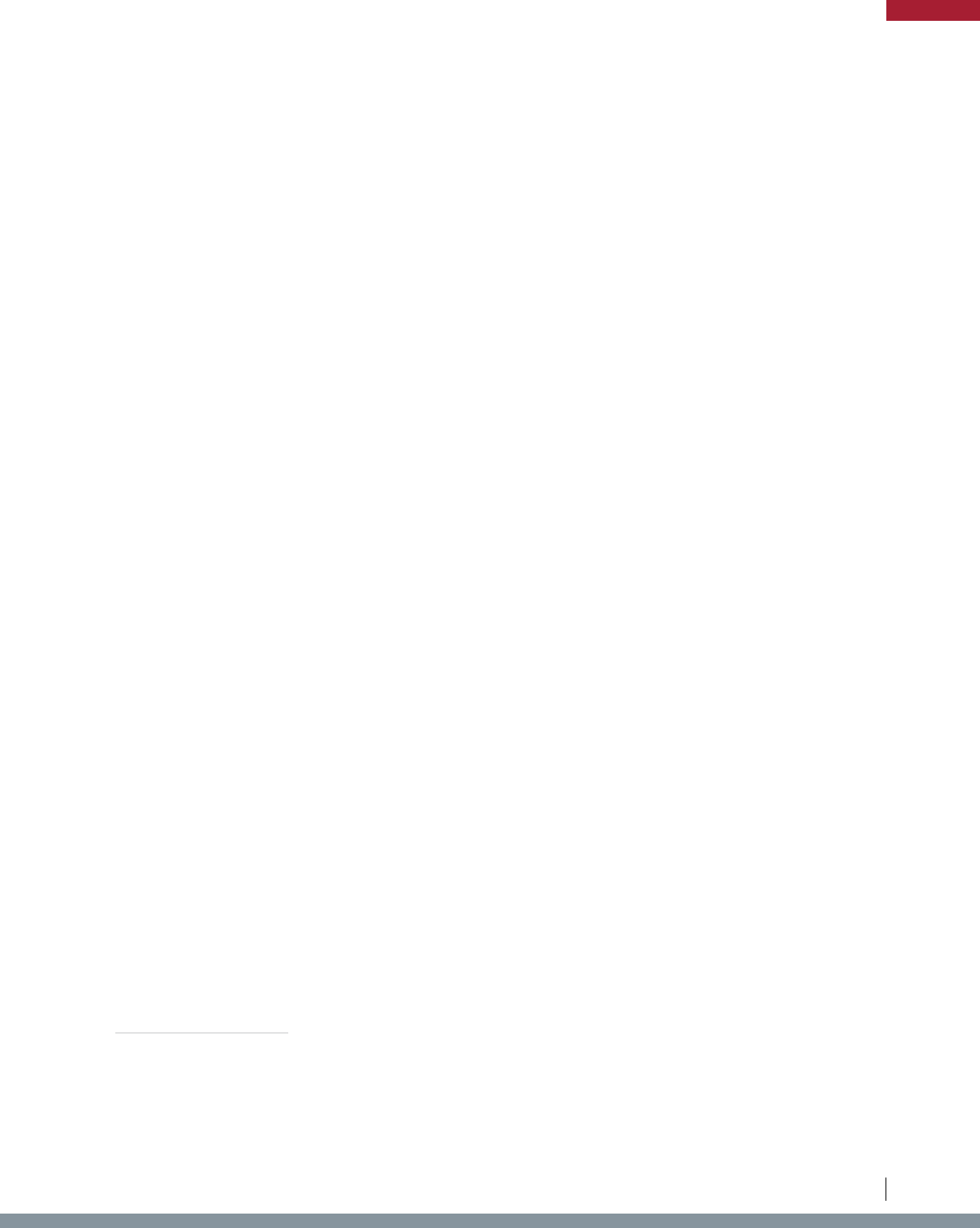
administrative agencies. Such a shift would upset the long-standing constitutional balance established by
thisnation’sfounders.
E. CONSTITUTIONAL ISSUES IN SECTION 3
Section3raisessignicantconstitutionalquestions.Asathresholdmatter,itwouldappear
to grant private parties an almost unlimited right to sue. However, plaintiffs still would need to satisfy
requirements for standing under Article III. In addition, Section 3 of the Act raises serious Eleventh
Amendment concerns.
1. ARTICLE III STANDING
A citizen suit provision such as Section 3 cannot grant standing in and of itself.
66
Plaintiffs still must
meet standing requirements in order to bring suit in federal courts under Article III of the U.S. Constitution.
Producers, trade associations, transporters, and distributors likely could make relatively straightforward
claimsofeconomiclossandestablishstanding.Consumers,though,mighthaveamoredifculttime
demonstrating standing for purposes of Article III. Unlike producers, their injuries may be more speculative
in nature. Some consumer injuries under the EATS Act might not warrant standing, such as a de minimis
difference in the price of a product. Finally, alleged consumer injuries may tend to be more generalizable
and therefore fail to meet the requirements of concrete and particular harm. Laborers bringing claims could
havedifcultyshowingthatalossofemploymentisattributabletoaparticularlaw,especiallyifmarket
conditions have changed, and their claims might fail with respect to redressability.
WhileSection3mayprovideprivatepartiesanopendoorintocourt,oncethere,theywould
face familiar hurdles with respect to meeting Article III standing requirements. These constitutional
prerequisites cannot be overwritten by federal legislation.
67
2. ELEVENTH AMENDMENT CONCERNS
Section3oftheEATSActraisessignicantEleventhAmendmentconcerns.TheEleventh
Amendment to the U.S. Constitution prevents private citizens in one state from bringing suit directly
against another state in federal court. The Supreme Court has interpreted the Eleventh Amendment
to extend this same protection to states for claims brought directly without their consent by their own
citizens.
68
Together, this doctrine is known as “state sovereign immunity.”
69
In Section 3, the EATS Act
attempts to waive the rights of states not to be sued without consent and to allow private entities to exact
equitable remedies and damages from them. Importantly, Section 3 also could create liability for state
66. Lujanv.DefendersofWildlife,504U.S.555,560–61(1992).Inpriorlitigation,someopponentstothetypesoflawsthattheEATSActaimstopreclude
have failed to meet the requisite conditions of Article III standing. See, e.g., Missouri ex rel. Koster v. Harris, 847 F.3d 646, 654 (9th Cir. 2017) (held that
the facts alleged were inadequate to support Article III standing in challenge to a Prop 12-antecedent law, the California Egg Law).
67. See Lujan, 504 U.S. at 560–61.
68. “[T]he[Supreme]CourthasupheldStates’assertionsofsovereignimmunityinvariouscontextsfallingoutsidetheliteraltextoftheEleventhAmendment.
In Hans, the Court held that sovereign immunity barred a citizen from suing his own State under the federal-question head of jurisdiction. The Court
wasunmovedbythepetitioner’sargumentthattheEleventhAmendment,byitsterms,appliedonlytosuitsbroughtbycitizensofotherStates.”Aldenv.
Maine, 527 U.S. 706, 727–28 (1999) (citing Hans v. Louisiana, 134 U.S. 1, 14–15 (1890)) (applying these rules to actions brought in state court as well).
69. “Sovereign immunity is the privilege of the sovereign not to be sued without its consent.” Virginia Off. for Prot. & Advoc. v. Stewart, 563 U.S. 247, 253 (2011).
SECTION-BY-SECTION ANALYSIS OF LEGISLATION
32
Legislative Analysis of S.2019 / H.R.4417: The “Ending Agricultural Trade Suppression Act”
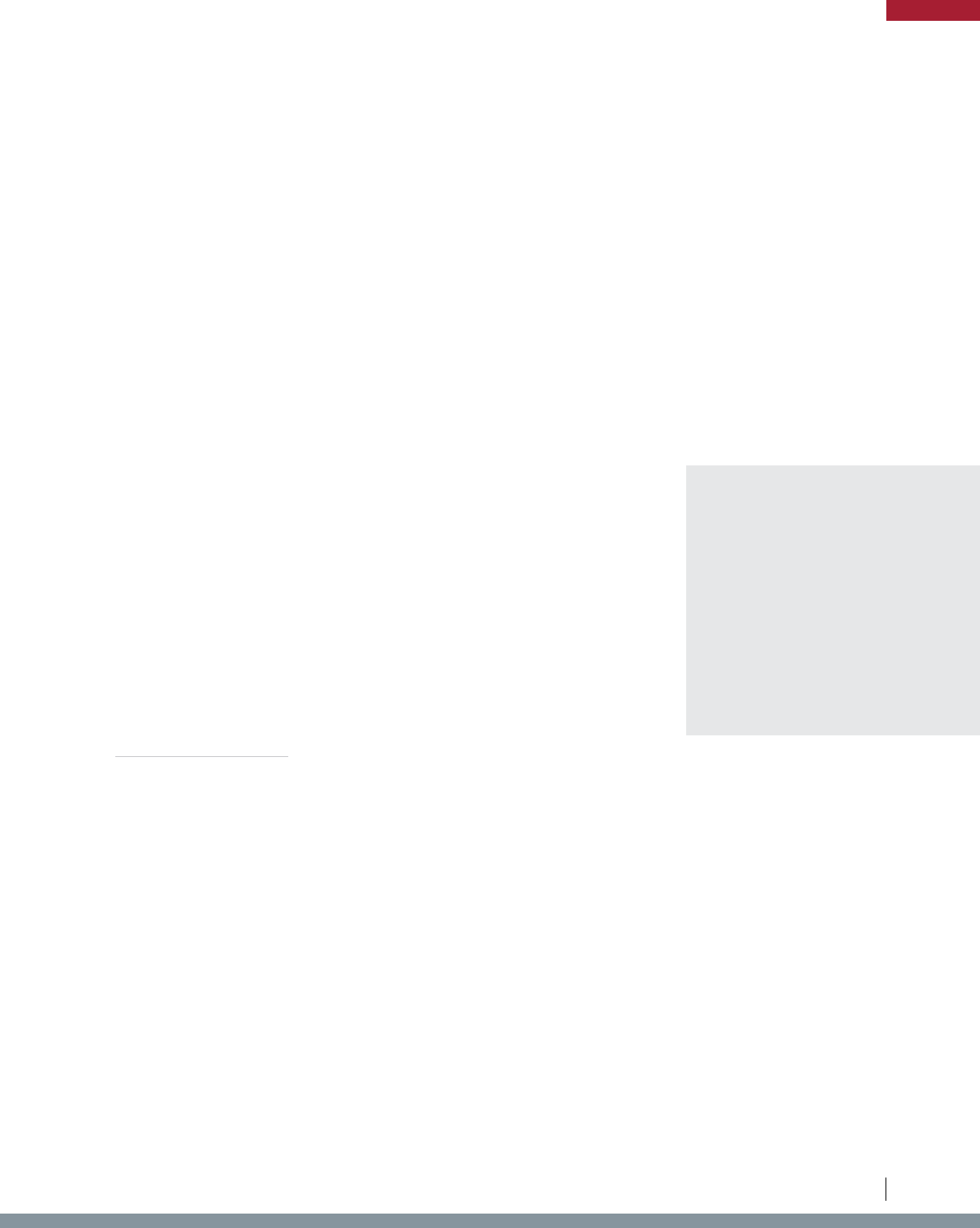
andlocalofcialschargedwithenforcement,potentiallyexposingthemtoextensive,expensive,and
time-consuming litigation and subjecting them to injunction.
WhetherCongressmayabrogatestatesovereignimmunitydependsontheconstitutionalbasis
on which it acts.
70
The EATS Act implicitly relies on Article I, Section 8, Clause 3 of the U.S. Constitution,
colloquially known as the Commerce Clause, for its authority. As the Supreme Court has ruled,
however, Congress may not use its authority under Article I to abrogate state sovereign immunity.
71
This
jurisprudence makes clear that Congress does not have the authority to subject states to suit from private
citizens under the Commerce Clause.
72
Accordingly, Section 3 of the EATS Act as applied to private
parties bringing suit directly against states themselves likely is unconstitutional.
There are caveats to state sovereign immunity doctrine, though. Principally, state immunity does
not extend to other sovereigns.
73
As a result, states are free to bring suit against one another for equitable
relief and damage awards.
74
The Federal Government also is free to bring such claims.
75
Moreover, Section 3 could expand liability exposure for state and
localofcials.AlthoughSection3doesnotspecicallymentionstateorlocal
ofcials,areviewingcourtmightinterpretitslanguagetoincludethemwithin
the private right of action in order to save the section from being found wholly
unconstitutional under the Eleventh Amendment. Under such an interpretation,
partiesmightbeabletosuepublicofcialsintheirofcialcapacitiestoenjoin
them from enforcing state law barred by the EATS Act.
76
Parties eligible to
bring suit potentially even could include private entities who would be unable
to sue the states themselves directly.
77
Inlawsuitsagainststateofcialsintheir
ofcialcapacities,however,onlyequitableremedies—notdamages—wouldbe
70. “A State may waive its sovereign immunity at its pleasure and in some circumstances Congress may abrogate it by appropriate legislation. But absent
waiverorvalidabrogation,federalcourtsmaynotentertainaprivateperson’ssuitagainstaState.”Id. at 253–54 (referencing College Savings Bank v.
Florida Prepaid Postsecondary Ed. Expense Bd., 527 U.S. 666, 675–676 (1999)).
71. “Even when the Constitution vests in Congress complete law-making authority over a particular area, the Eleventh Amendment prevents congressional
authorization of suits by private parties against unconsenting States. The Eleventh Amendment restricts the judicial power under Article III, and Article
I cannot be used to circumvent the constitutional limitations placed upon federal jurisdiction.” Seminole Tribe v. Florida, 517 U.S. 44, 72–73 (1996)
(overrulingtheCourt’spreviousconclusioninPennsylvania v. Union Gas Co.,491U.S.1,19(1989),that“CongresshastheauthoritytooverrideStates’
immunity when legislating pursuant to the Commerce Clause”).
72. “WehaverecognizedthatCongressmayabrogateaState’simmunitywhenitactsunder§5oftheFourteenthAmendment,butnotwhenitactsunder
its original Article I authority to regulate commerce.” Virginia Off. for Prot. & Advoc. v. Stewart, 563 U.S. at 254 n.2 (citing Seminole Tribe of Fla. v. Florida,
517 U.S. at 59; 65–66).
73. “In ratifying the Constitution, the States consented to suits brought by other States or by the Federal Government.” Alden, 527 U.S. at 755 (citing
Principality of Monaco v. State of Mississippi, 292 U.S. 313, 328–29 (1934)).
74. “[T]he Constitution contemplates suits among the members of the federal system as an alternative to extralegal measures.” Alden, 527 U.S. at 755–56
(recognizingthat“thefearofprivatesuitsagainstnonconsentingStateswasthecentralreasongivenbytheFounderswhochosetopreservetheStates’
sovereign immunity”).
75. “A suit which is commenced and prosecuted against a State in the name of the United States by those who are entrusted with the constitutional duty to
‘takeCarethattheLawsbefaithfullyexecuted,’U.S.Const.,Art.II,§3,differsinkindfromthesuitofanindividual...SuitsbroughtbytheUnitedStates
itself require the exercise of political responsibility for each suit prosecuted against a State, a control which is absent from a broad delegation to private
persons to sue nonconsenting States.” Alden, 527 U.S. at 755–56.
76. See Alden,527U.S.at756(“[S]overeignimmunity[doesnot]barallsuitsagainststateofcers,”but“[s]omesuitsagainststateofcersarebarredby
the rule that sovereign immunity is not limited to suits which name the State as a party if the suits are, in fact, against the State.”). Legislators likely are
immune from suit, as the Supreme Court has “recognized that state legislators enjoy common-law immunity from liability for their legislative acts, an
immunity that is similar in origin and rationale to that accorded Congressmen under the Speech or Debate Clause.” Supreme Ct. of Virginia v. Consumers
Union of U. S., Inc., 446 U.S. 719, 732 (1980) (citing Tenney v. Brandhove, 341 U.S. 367 (1951)).
77. “[W]henafederalcourtcommandsastateofcialtodonothingmorethanrefrainfromviolatingfederallaw,[thatofcial]isnottheStateforsovereign-
immunitypurposes.Thedoctrineislimitedtothatprecisesituation,anddoesnotapply‘whenthestateisthereal,substantialpartyininterest.’”Virginia
Off. for Prot. & Advoc. v. Stewart, 563 U.S. at 255 (quoting Pennhurst State Sch. & Hosp. v. Halderman, 465 U.S. 89, 101 (1984) (internal quotation
omitted))(discussingthestateofcialexceptiontothesovereignimmunitydoctrineestablishedinExparteYoung,209U.S.123(1908)).
Under such an
interpretation, parties
might be able to sue public
officials in their official
capacities to enjoin them
from enforcing state law
barred by the EATS Act.
SECTION-BY-SECTION ANALYSIS OF LEGISLATION
33
Legislative Analysis of S.2019 / H.R.4417: The “Ending Agricultural Trade Suppression Act”
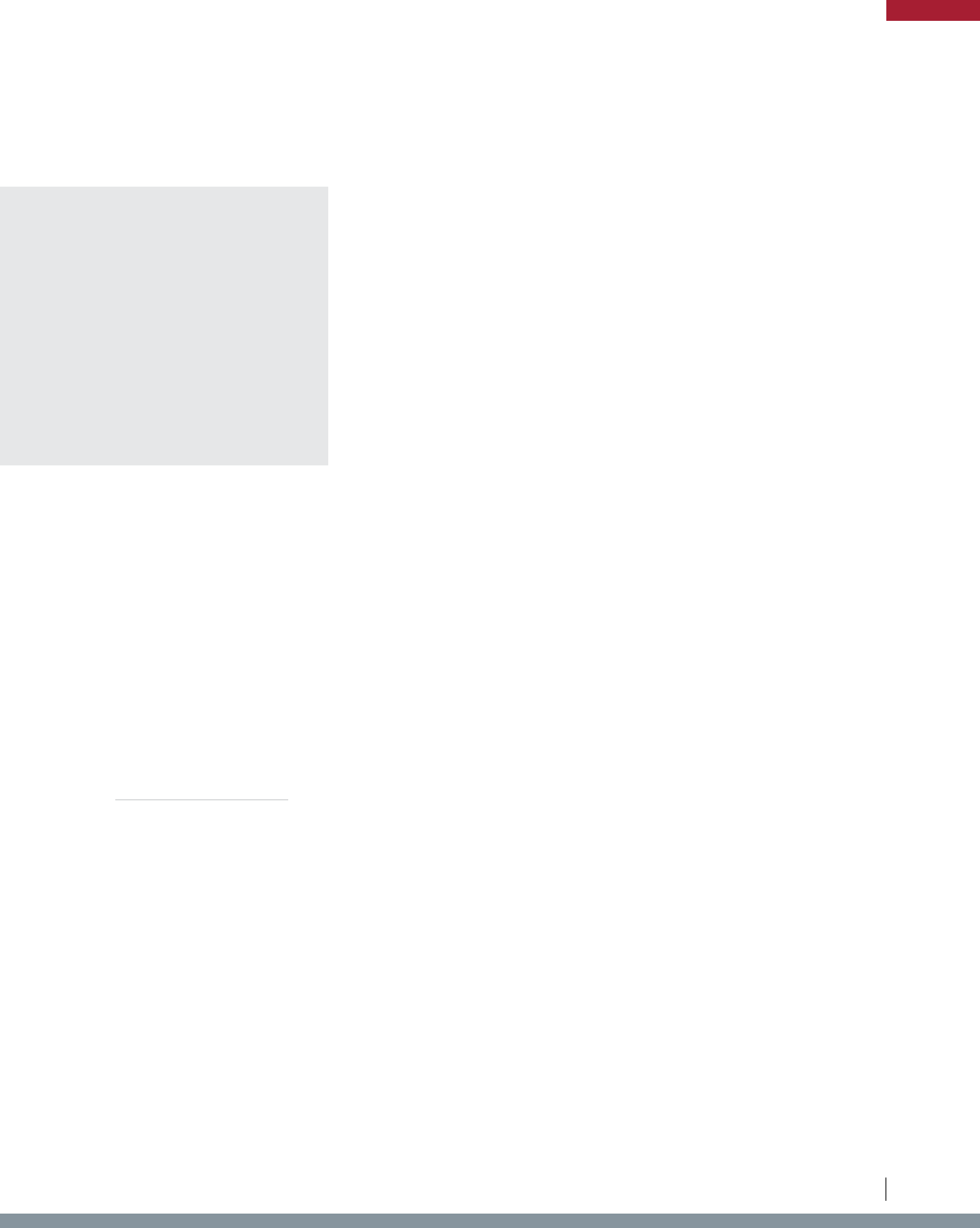
available.
78
AstheSupremeCourthasclaried,the“EleventhAmendment’sprotectionofstatesovereignty
requiresthestate’scofferstobeshieldedfromsuit.”
79
Intheirindividualcapacities,stateandlocalofcials
might be subject to suit and payment of personal damages, but only in instances where a reviewing court
found that they personally had acted unconstitutionally and unreasonably, outside the bounds of the
qualiedimmunitythattheyenjoywhenperformingdiscretionaryduties
within their scope of employment.
80
Notably,theEleventhAmendment’ssovereignimmunity
doctrine does not protect many forms of local government from
lawsuits.
81
Under the EATS Act, private parties would be able to proceed
with claims against “a unit of local government” both for injunctive
relief and damages unless the local governing body is an “arm of the
State.”
82
Whendeterminingwhetheranentityisa“armofthestate,”
and
therefore protected from suit, courts consider the status of the entity
under state law, its degree of autonomy, and whether judgment
resulting from the suit would come from the state treasury or affront
state dignity.
83
Municipal or county governments that are not arms of a state would not be protected by
Eleventh Amendment immunity
84
and likely would be subjected to lawsuits under the EATS Act.
78. “Thedoctrine...doesnotapply...whenthe‘judgmentsoughtwouldexpenditselfonthepublictreasuryordomain,orinterferewithpublicadministration.’”
Virginia Off. for Prot. & Advoc. v. Stewart, 563 U.S. at 255 (quoting Pennhurst State Sch. & Hosp. v. Halderman, 465 U.S. 89, 101 n.11 (1984) (internal
quotation omitted)).
79. Edelman v. Jordan, 415 U.S. 651, 666 (1974); see also Virginia Off. for Prot. & Advoc. v. Stewart, 563 U.S. at 256–57 (“Ex parte Young cannot be used to
obtainaninjunctionrequiringthepaymentoffundsfromtheState’streasury”(citingEdelman)).
80. See Alden,ndingthat“[e]venasuitformoneydamagesmaybeprosecutedagainstastateofcerinhisindividualcapacityforunconstitutionalor
wrongfulconductfairlyattributabletotheofcerhimself,solongasthereliefissoughtnotfromthestatetreasurybutfromtheofcerpersonally,”527
U.S. at 757; Anderson v. Creighton,statingthat“governmentofcialsperformingdiscretionaryfunctions[aregenerallyprovided]withaqualiedimmunity,
shielding them from civil damages liability as long as their actions could reasonably have been thought consistent with the rights they are alleged to have
violated...[W]hetheranofcialprotectedbyqualiedimmunitymaybeheldpersonallyliableforanallegedlyunlawfulofcialactiongenerallyturnsonthe
‘objectivelegalreasonableness’oftheaction,”483U.S.635,638–39(1987)(citationsomitted).
81. See Mt. Healthy City Sch. Dist. Bd. of Educ. v. Doyle, 429 U.S. 274, 280 (1977) (“The bar of the Eleventh Amendment to suit in federal courts extends to
Statesandstateofcialsinappropriatecircumstances,butdoesnotextendtocountiesandsimilarmunicipalcorporations”(citationsomitted));see also
Moorv.AlamedaCounty,411U.S.693,717(1973)(footnoteomitted)(ndingthat“apoliticalsubdivisionofaState,unlessitissimply‘thearmoralter
egooftheState,’isacitizenoftheStatefordiversitypurposes”).
82. Local forms of government that can be said to be “arm[s] of the State” are eligible for Eleventh Amendment immunity. See Mt. Healthy City Sch. Dist. Bd.
of Educ. v. Doyle, 429 U.S. at 280, stating that, “[t]he issue here thus turns on whether the [local governing body] is to be treated as an arm of the State
partakingoftheState’sEleventhAmendmentimmunity,orisinsteadtobetreatedasamunicipalcorporationorotherpoliticalsubdivisiontowhichthe
Eleventh Amendment does not extend. The answer depends, at least in part, upon the nature of the entity created by state law.” See also Alden, 527 U.S.
at 756 (“[An] important limit to the principle of sovereign immunity is that it bars suits against States but not lesser entities. The immunity does not extend
to suits prosecuted against a municipal corporation or other governmental entity which is not an arm of the State.”)
83. See Hess v. Port Authority Trans-Hudson Corp., 513 U.S. 30, 52 (1994) (holding that a quasi-state, quasi-local port authority entity was not shielded by
theEleventhAmendmentbecauseit“isnanciallyself-sufcient;itgeneratesitsownrevenues,anditpaysitsowndebts”andbecauseanaction“to
recoverdamages[would]nottouchtheconcerns—theStates’solvencyanddignity—thatunderpintheEleventhAmendment”).
84. “Political subdivisions exist solely at the whim and behest of their State, yet cities and counties do not enjoy Eleventh Amendment immunity.” Hess, 513
U.S. at 47 (1994) (internal quotation omitted).
Under the EATS Act, private
parties would be able to proceed
with claims against “a unit
of local government” both for
injunctive relief and damages
unless the local governing body
is an “arm of the State.”
SECTION-BY-SECTION ANALYSIS OF LEGISLATION
34
Legislative Analysis of S.2019 / H.R.4417: The “Ending Agricultural Trade Suppression Act”
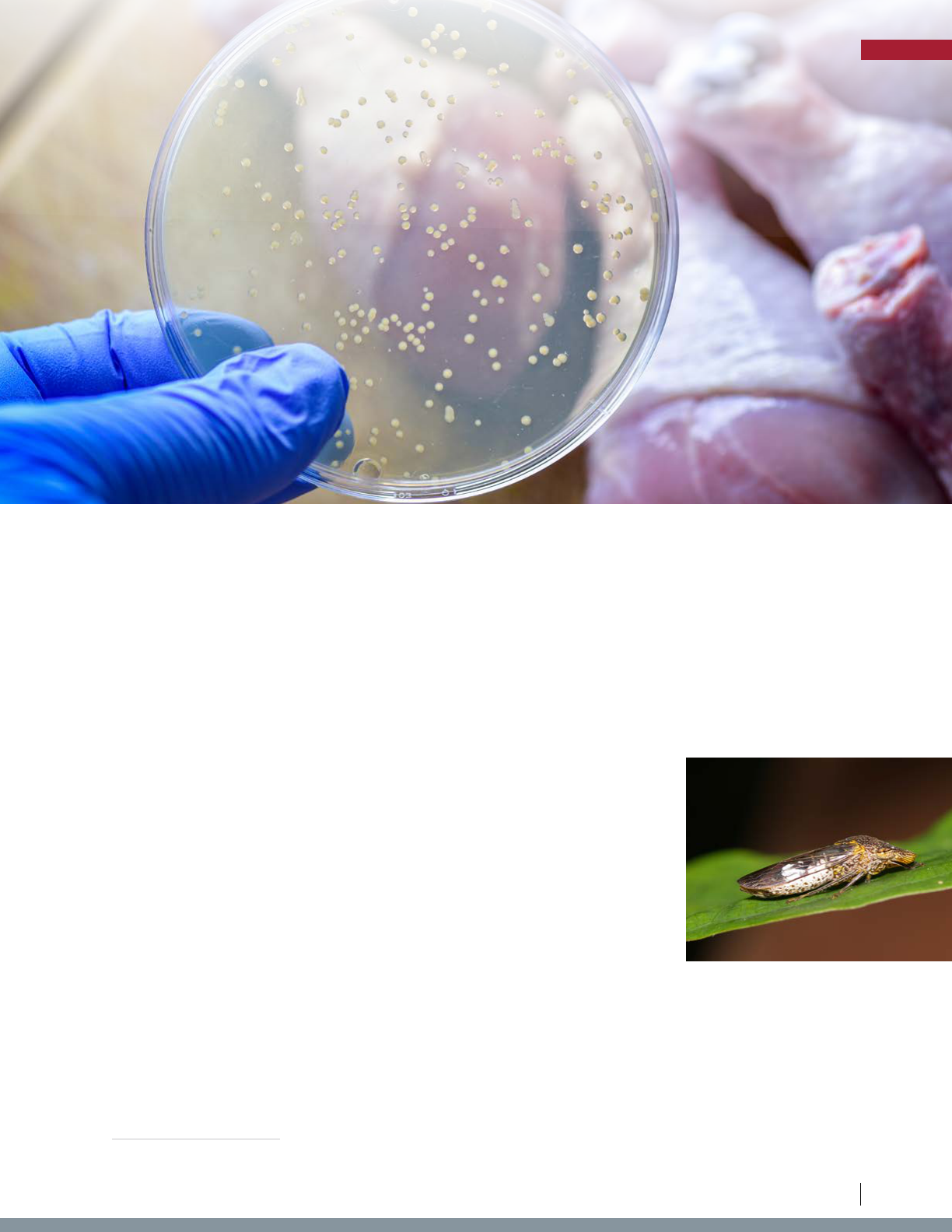
VI. APPLICATION OF THE LEGISLATION
The EATS Act potentially could affect many types of laws and regulations across a broad
spectrum of categories. Most of these relate to food and food production, while some govern other
areasthatfallwithinthelegislation’sdenitionofagriculturalproducts.Asnotedabove,theEATSAct
leavesopensignicantinterpretationquestions.Eachoftheareasoflawbelowwouldfacesubstantial
uncertainty if the EATS Act were to pass, as would many others not listed here.
A. INVASIVE PEST & PLANT DISEASE PROTECTIONS
Almost every state imposes laws regulating the importation of
agricultural products containing certain pests, diseases, or invasive species.
Oftentimes,theseregulationsrequiretreatment,inspection,certication,
quarantine, or embargo of certain products entering the state. The EATS Act
could prohibit these requirements, leaving producers more vulnerable to pests
like the glassy-winged sharpshooter and the emerald ash borer and to diseases
such as phony peach disease.
Historically, states and the Federal Government have shared the authority to impose quarantines
to prevent the introduction and spread of harmful plant pests. Under the Plant Protection Act of 2000,
85
states are free to impose their own quarantines or regulations where no federal quarantine is in place.
86
Even where pests are under federal quarantine, states may further regulate or restrict their movement
within the federal quarantine zone.
85. 7 U.S.C.A. § 7701 et seq.
86. 7 U.S.C.A. § 7756. For a complete list of federal domestic quarantines, see 7 C.F.R. §§ 301.1 to 301.99.
APPLICATION OF THE LEGISLATION
35
Legislative Analysis of S.2019 / H.R.4417: The “Ending Agricultural Trade Suppression Act”
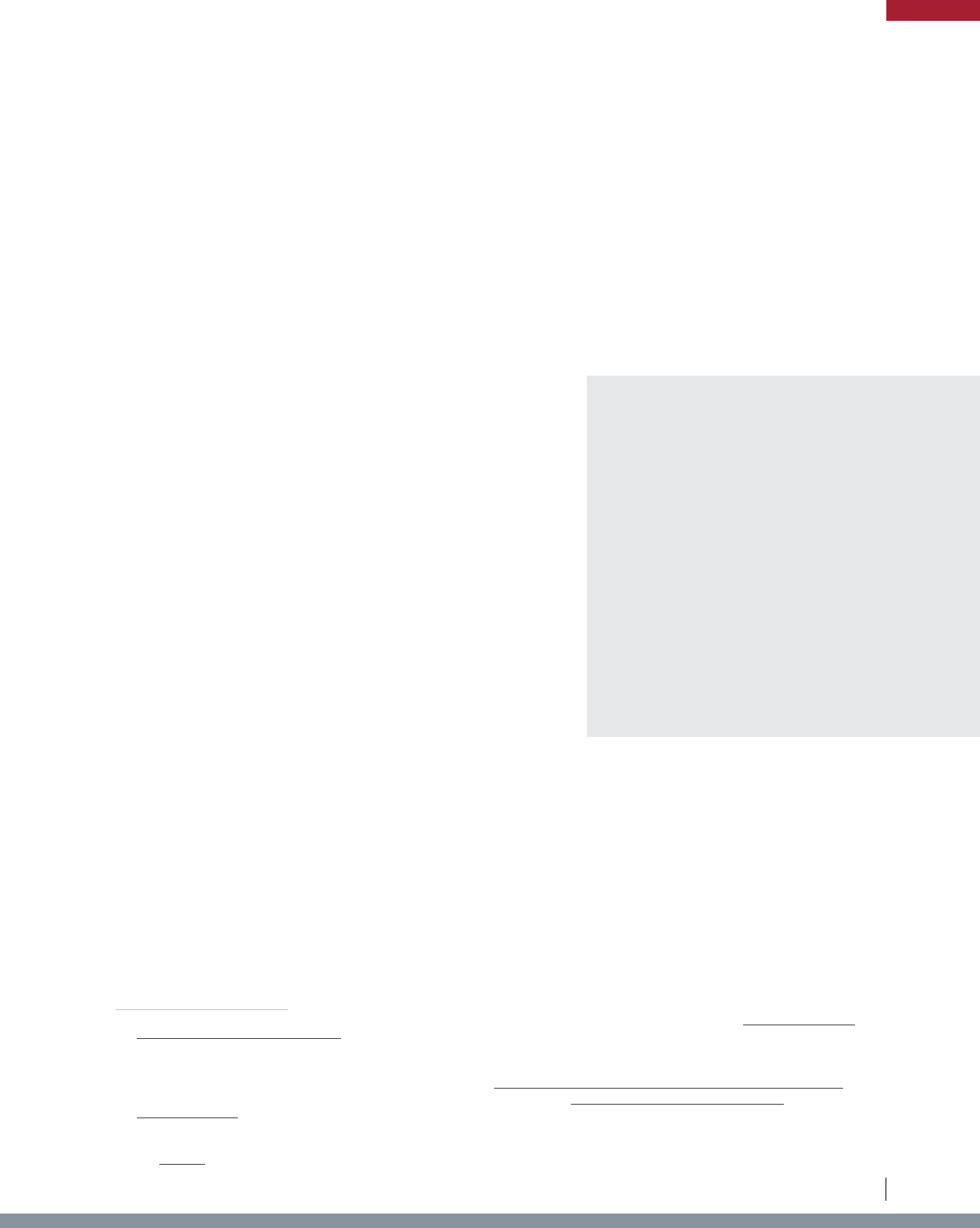
One pest that is regulated solely by state law is the glassy-winged sharpshooter. This insect
causesPierce’sDisease,whichafictsgrapecropsbyinterferingwiththeplant’swatercollection
system, ultimately causing the vine to die. The insects also can affect citrus trees, almonds, and other
crops.ResearchershaveestimatedthatPierce’sDiseasecostsCaliforniaaloneover$100million
in annual damages to the grape and wine industry.
87
Accordingly, public spending to combat the
diseaseissignicant.
88
California and other states like Oregon, which also boast large wine industries,
have implemented import restrictions on agricultural articles that may be carrying the pest—such as
inspections, quarantines, and prohibitions on the interstate shipment of certain plants.
89
The EATS
Actthusmayinterferewiththosestates’abilitytoenforcesuchregulations.Forexample,underthe
EATS Act, a law requiring the preharvest treatment of agricultural products with pesticides to kill the
sharpshooters prior to import would be an impermissible condition (although a postharvest treatment
requirement might not be). Further, the EATS Act could
prohibit an outright ban on the importation of infested
agricultural products carrying the insect.
The EATS Act similarly could affect state and local
regulation of products carrying Xylella fastidiosa, the bacteria
that causes phony peach disease (“PPD”).
90
Trees infected
with PPD show few symptoms but soon stop producing fruit
altogether. Because treatment options for PPD are limited,
efforts to prevent transmission are critical to reducing the
spread of the disease.
91
Alabama, Georgia, Louisiana, and
other states have implemented regulations to protect fruit
stocks from PPD.
92
These PPD regulations might not survive
challenges under the EATS Act.
B. ZOONOTIC & INFECTIOUS DISEASE REGULATIONS
State laws intended to prevent the transfer and spread of zoonotic and infectious disease could
beoneofthemostsignicantcasualtiesoftheEATSAct.Theseregulationsaffecteverythingfrom
avianinuenzatoAfricanswinefever,salmonella,tuberculosis,Newcastledisease,anthrax,brucellosis,
scabies, scrapie, rabies, pseudorabies, equine infectious anemia, and others.
93
87. Kabir Tumber et al., Pierce’s Disease Costs California $104 Million Per Year, 68 CALIFORNIA AGRIC. 1-2, 20 (Jan.–June 2014), https://calag.ucanr.edu/
archive/?type=pdf&article=ca.v068n01p20.
88. Id.
89. See CAL. FOOD & AGRIC. CODE §§ 6461, 6461.5, CAL. CODE REGS. TIT. 3, § 3654, and OR. ADMIN. R. 603-052-1221.
90. See Texas A&M Agrilife Extension, Phony Peach Disease (Sept. 18, 2012), http://counties.agrilife.org/upshur/les/2011/03/Phony-Peach-Disease.pdf.
91. See University of Georgia Extension, Phony Peach Disease, Circular 1253 (Feb. 11, 2022), https://extension.uga.edu/publications/detail.
html?number=C1253 (“Current management options for PPD are limited. Among the available options, ensuring that newly purchased trees are
disease–free is very important.”)
92. See, e.g., ALA. ADMIN. CODE R. 80-10-7; GA COMP. R. & REGS. 40-4-13; LA. ADMIN CODE. TIT. 7, PT XV, §129.
93. See Appendix below.
State laws intended to prevent the
transfer and spread of zoonotic and
infectious disease could be one of the
most significant casualties of the EATS
Act. These regulations affect everything
from avian influenza to African
swine fever, salmonella, tuberculosis,
Newcastle disease, anthrax, brucellosis,
scabies, scrapie, rabies, pseudorabies,
equine infectious anemia, and others.
APPLICATION OF THE LEGISLATION
36
Legislative Analysis of S.2019 / H.R.4417: The “Ending Agricultural Trade Suppression Act”
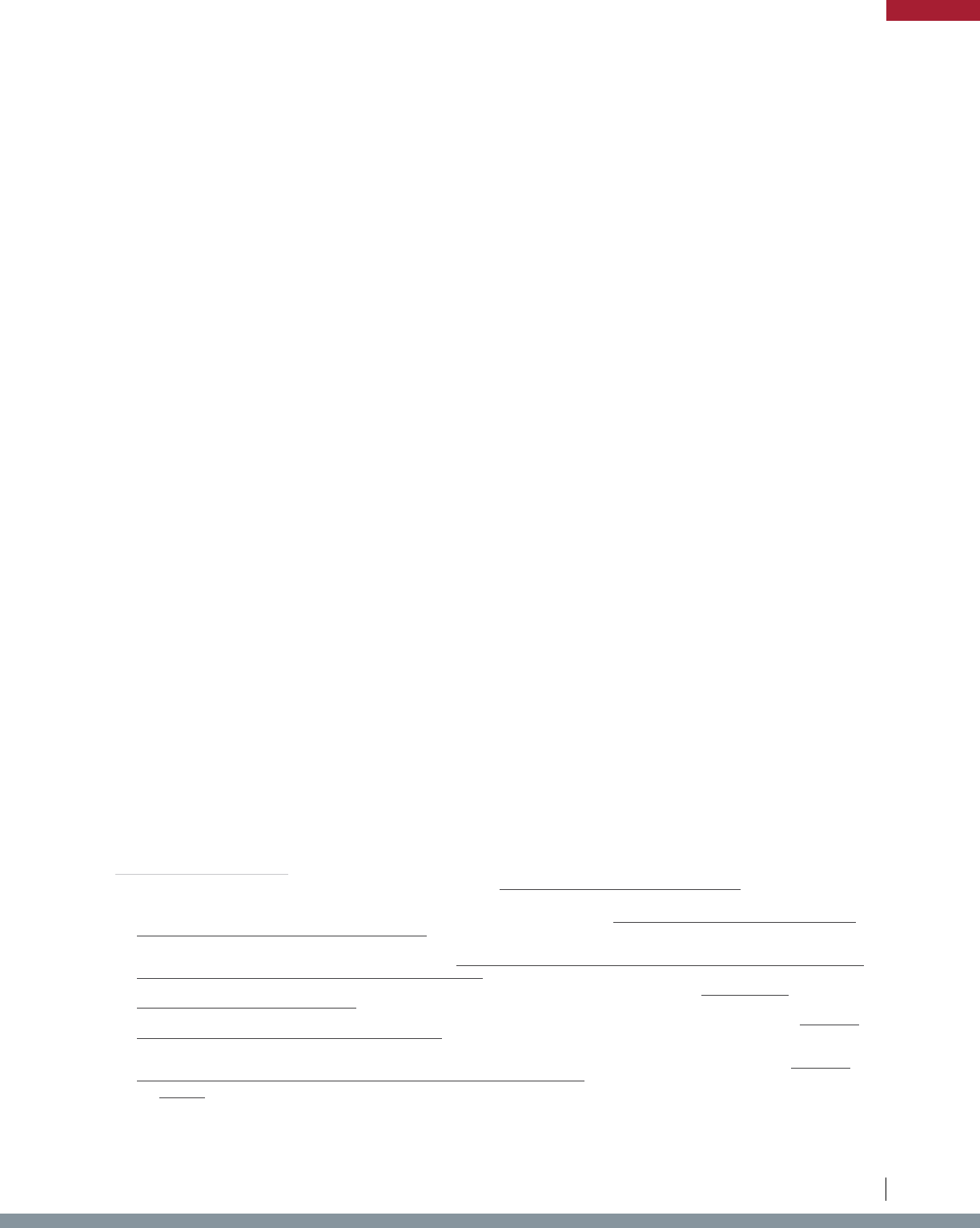
For instance, the EATS Act could affect poultry disease regulations, creating untimely regulatory
disruptionsduringthesevereandongoingoutbreakofhighlypathogenicavianinuenza.Avianinuenza
comes in various forms and affects domestic farmed poultry as well as over 100 species of wild birds.
94
In its more severe form, the virus causes between 90-100% mortality in domesticated poultry.
95
Currently,
theUnitedStatesisexperiencingthemostsevereoutbreakofhighlypathogenicavianinuenza,
96
with
47statesandover58millionbirdsaficted.
97
Outbreaksofavianinuenzathreatenfarmers’livelihoods
andpublichealth,causingsignicanteconomiclosses.Forexample,amajoroutbreakin2015costan
estimated$3.3billioninlosses
98
and resulted in the destruction of more than 50 million birds.
99
Thecurrentoutbreakalreadyhascostthegovernmentover$660millionandcostproducersover$1
billion.
100
Becausehighlypathogenicavianinuenzaissodestructive,transmissioncontrolmeasures
are paramount to stopping its spread.
Moststateshavetakenstepstoprotecttheirocksfromavianinuenzabyestablishingdisease
control measures such as requiring pre-entry veterinary inspections, permits, quarantines, and testing
regimes for live (preharvest) poultry imported from other states.
101
Iowa, for example, has implemented a
regulation mandating that “[n]o animal, including poultry or birds of any species, that is affected with, or
that has been recently exposed to, any infectious, contagious or communicable disease or that originates
from a quarantined area shall be shipped or in any manner transported or moved into Iowa, unless
approved by the state veterinarian.”
102
Such a restriction may run afoul of the EATS Act by placing a
preharvestconditiononimportedproducts—namely,thatbirdsnotbeexposedtoavianinuenzabefore
transport.Iowa’sbanonbirdsoriginatingfromquarantinedareasoutsidethestategoesastepfurther.
All poultry coming into Iowa must be inspected by a veterinarian prior to entry and accompanied by a
certicateofveterinaryinspection“onanofcialformofthestateoforigin”
103
or other approved substitute
documentation.
104
Fordomesticfowloriginatingfromanareaaffectedbyavianinuenza,Iowarequiresa
pre-entry permit.
105
These requirements impose preharvest standards or conditions on imported poultry
byrequiringspecicmeasuresbetakenbeforelivebirdsmaybebroughtintothestateandthuscouldbe
prohibited under the EATS Act.
94. Centers for Disease Control and Prevention (CDC), Avian Inuenza in Birds, https://www.cdc.gov/u/avianu/avian-in-birds.htm.
95. Id.
96. Bill Chappell, What we know about the deadliest U.S. bird u outbreak in history, NPR, Dec. 2, 2022, https://www.npr.org/2022/12/02/1140076426/what-
we-know-about-the-deadliest-u-s-bird-u-outbreak-in-history.
97. U.S. Department of Agriculture (USDA) Animal and Plant Health Inspection Service (APHIS), 2022-2023 Conrmations of Highly Pathogenic Avian
Inuenza in Commercial and Backyard Flocks (as of July 11, 2023), https://www.aphis.usda.gov/aphis/ourfocus/animalhealth/animal-disease-information/
avian/avian-inuenza/hpai-2022/2022-hpai-commercial-backyard-ocks.
98. Maryn McKenna, Bird Flu Cost the US $3.3 Billion and Worse Could Be Coming,NAT’LGEOGRAPHIC,July15,2015,http://phenomena.
nationalgeographic.com/2015/07/15/bird-u-2/.
99. USDA Economic Research Service (ERS), Impacts of the 2014-2015 Highly Pathogenic Avian Inuenza Outbreak on the US Poultry Sector, https://www.
ers.usda.gov/webdocs/outlooks/86282/ldpm-282-02.pdf?v=539. Losses were equivalent to 12% of all egg-laying hens in the U.S. and an estimated 8%
of turkeys raised for meat. Id.
100. Ongoing bird u has cost the government around $661 million, added to consumers’ pain at the grocery store,FOXNEWS,Feb.20,2023,https://www.
foxnews.com/us/ongoing-bird-u-cost-government-661-million-consumers-pain-grocery-store.
101. See Appendix below.
102. IOWAADMIN.CODER.21-65.3.
103. Id.;IOWAADMIN.CODER.21-65.11.
104. IOWAADMIN.CODER.21-65.11.
105. IOWAADMIN.CODER.21-65.2.
APPLICATION OF THE LEGISLATION
37
Legislative Analysis of S.2019 / H.R.4417: The “Ending Agricultural Trade Suppression Act”
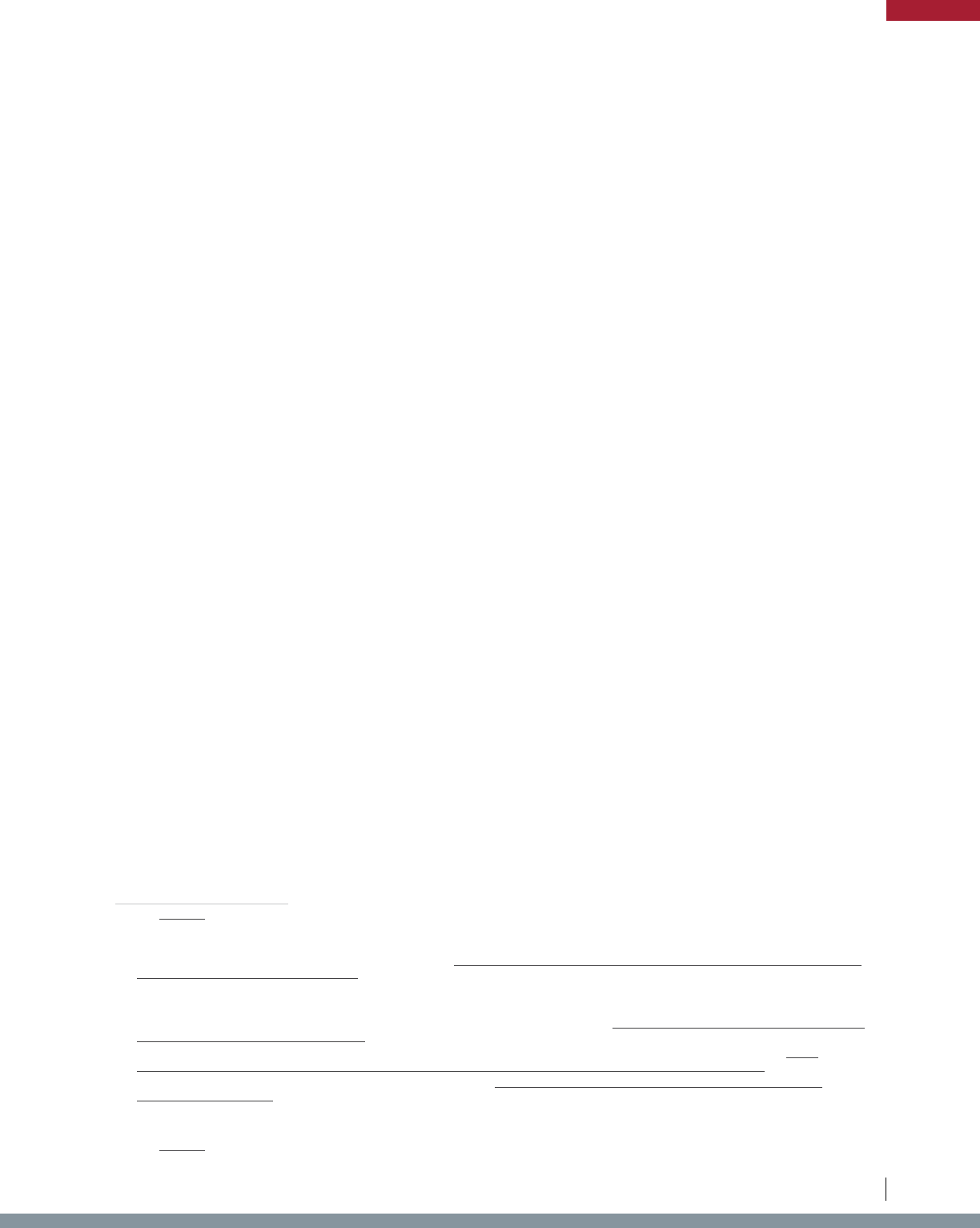
Similar to poultry importation restrictions, many states, including Iowa, regulate the importation
of live swine by imposing pre-entry requirements.
106
These disease-control measures, which often
includepre-entryveterinaryinspections,certication,identication,andtesting,couldbeprohibitedif
the EATS Act were enacted. Initially put in place to protect against the transmission of diseases like
brucellosis and pseudorabies,
107
regulations governing the importation of swine in states like Iowa also
could be an important tool in future efforts to contain and control the spread of African swine fever, if it
reaches U.S. soil.
108
The EATS Act would jeopardize these state tools to protect local producers from
devastatingdiseasessuchasavianinuenzaandAfricanswinefever,cedingcontroltotheFederal
Government instead.
Iowa’ssanitizationrequirementsalsomaybecalledintoquestionundertheEATSAct.Iowa
law provides that, “[a]ll stock cars and trucks used for hauling into the state of Iowa livestock (cattle,
horses, sheep, goats, cervids, poultry, and swine) for feeding, breeding, or stock purposes must be
cleaned and disinfected before such shipments of livestock are loaded.”
109
The cleaning requirement
is a “condition [imposed] on the preharvest production” that must “occur in another State” prior to
importation of the “agricultural products” (here, “livestock and poultry”) that are “sold or offered for
sale in interstate commerce.”
110
Asaresult,theEATSActadditionallymayblockIowa’slivestock
transportation sanitization requirements.
Bees are another example of livestock potentially threatened by the EATS Act. Honey bees
contributeatleast$15billiontotheUnitedStateseconomyannually.
111
Dozens of crop varieties depend on
bees for pollination, with the almond industry alone requiring the services of 1.4 million beehives annually.
112
Each year, bees are trucked across the country to pollinate various cash crops throughout the seasons.
113
ThesamehivemaybeusedtopollinategrapefruitinFlorida,cherriesinWashington,andavocadosin
California.
114
Captivebeepopulations,however,aresufferingsignicantlossesduetodisease.
115
Nearly all states have imposed some form of regulation governing the interstate movement of
bees.
116
Most states require registration of apiaries, permits for moving bees and equipment interstate,
certicatesofinspection,movable-framehives,quarantineofdiseasedapiaries,oroutrightprohibitthesale
or transfer of diseased material.
117
These requirements seek to limit and contain outbreaks of disease as
106. See Appendix below.
107. See, e.g.,IOWAADMIN.CODER.21-65.5.
108. As of writing, African swine fever has not yet reached the U.S., but producers are fearful that it could wreak havoc on the domestic pork industry should it
arrive here. See USDA APHIS, African swine fever (Aug. 31, 2022) https://www.aphis.usda.gov/aphis/ourfocus/animalhealth/animal-disease-information/
swine-disease-information/african-swine-fever.
109. IOWAADMIN.CODER.21-65.3.
110. S.2019/H.R.4417, 118th Cong. § 2 (2023).
111. U.S. Food and Drug Administration (FDA), Helping Agriculture’s Helpful Honey Bees (July 30, 2018), https://www.fda.gov/animal-veterinary/animal-health-
literacy/helping-agricultures-helpful-honey-bees.
112. WhiteHouse,OfceofthePressSecretary,Fact Sheet: Economic Challenge Posed by Declining Pollinator Populations (June 20, 2014), https://
obamawhitehouse.archives.gov/the-press-ofce/2014/06/20/fact-sheet-economic-challenge-posed-declining-pollinator-populations.
113. 10 Crops That Would Disappear Without Bees,FOXNEWS,Nov.21,2016,http://www.foxnews.com/food-drink/2012/07/19/10-crops-that-would-
disappear-without-bees.html.
114. Id.
115. Id.
116. See Appendix below.
117. Id.
APPLICATION OF THE LEGISLATION
38
Legislative Analysis of S.2019 / H.R.4417: The “Ending Agricultural Trade Suppression Act”
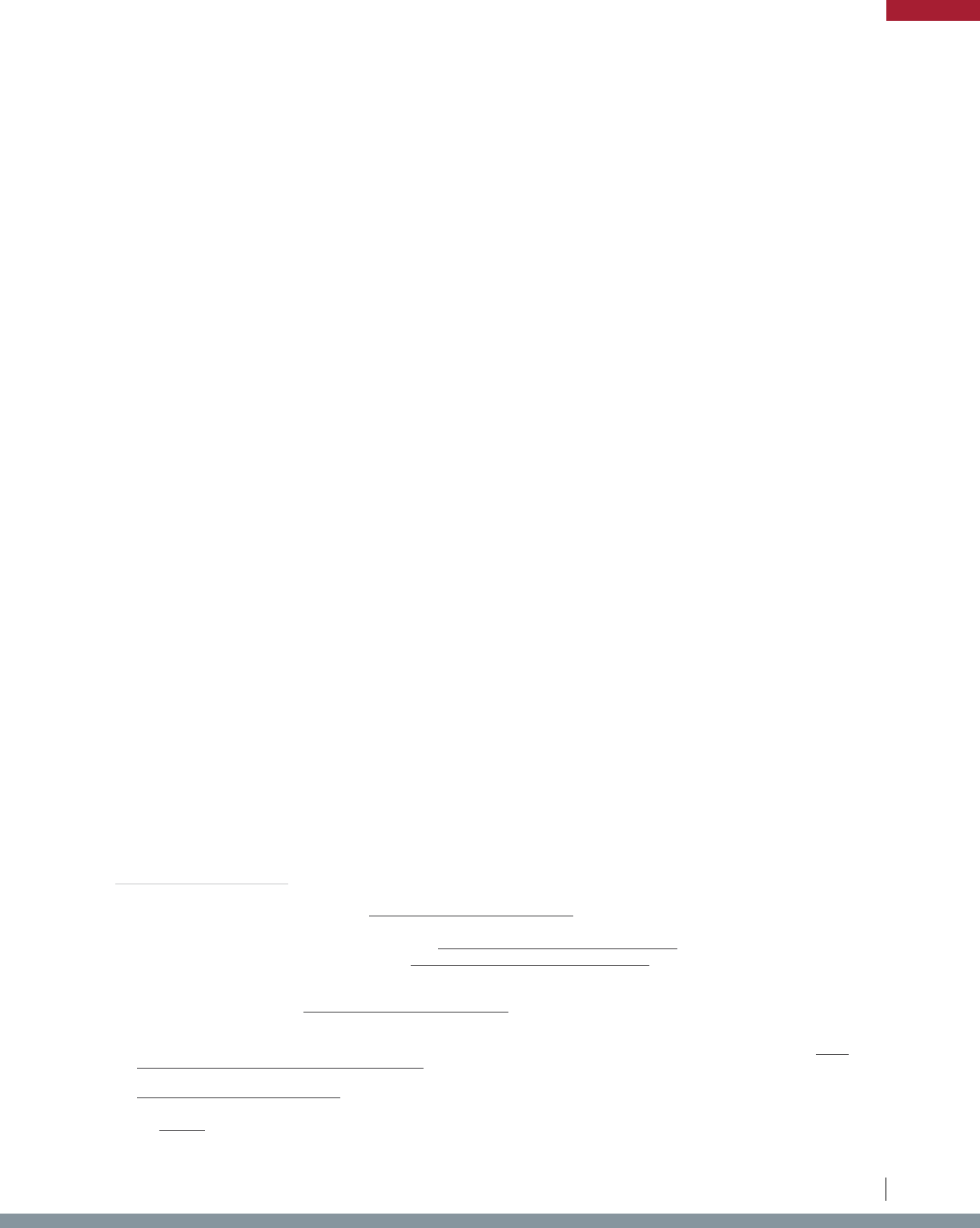
well as parasites such as American foulbrood that jeopardize the survival of beehives. Because bees are
transported through interstate commerce many months out of the year, and because bees are necessary
tothesurvivalofmanyvaluablecrops,anyrestrictiononastate’sauthoritytoregulatetheimportationof
bees could have serious economic and food security consequences. Under the text of the EATS Act, the
importation of bees could fall within its scope as either a preharvest condition on bees as an agricultural
product or potentially indirectly as a preharvest condition on crops dependent upon bees.
Chronicwastingdisease(“CWD”)isanotherareaofconcern.CWDisadegenerativeneurologic
disease, similar to mad cow disease, that affects farmed and wild deer and other cervids.
118
The
disease is fatal.
119
Infected animals may experience symptoms that range from extreme weight loss to
neurological problems such as stumbling and listlessness.
120
ThereissomeevidencetosuggestCWD
may become transmissible to humans.
121
CWDrstwasrecognizedintheU.S.incaptivedeerherdsin
the late 1960s and in wild deer in 1981.
122
Since then, the disease has reached at least 29 states and
405 counties, as of March 2023.
123
CWDeasilyspreadsamongwildandcaptivepopulations,givingboth
farmersandhuntersgreatcauseforconcern.StateswhereCWDispresentarefeelingitsimpact.
124
Wisconsinlostover$50millionfromCWDthroughout2002-2003injusttherstyearafterthedisease
was discovered there.
125
Morerecentestimatescalculatethatfrom2002-2015,Wisconsinlostatleast$96
millioninhuntersurplusvalueand$17millioninlosthuntingpermitrevenue.
126
MovementofinfectedcervidsistheprimarymeansthroughwhichCWDspreads.Currently,
several states prohibit all importation of cervids, including Arkansas, Connecticut, and Massachusetts.
127
Dozens of other states impose import requirements and restrictions.
128
These state regulations include
requirementssuchasimportpermitsorwrittenapproval,certicatesofveterinaryinspection,or
identicationofeachanimal.
129
They also may include restrictions on importation based on conditions in
thegeographicareaoforigin,suchasthestatusofCWDinthatarea,enrollmentoftheexportingstate
inanofcialCWDmonitoringandcerticationprogram,ordiagnosisofCWDintheoriginatingherdor
imported cervid.
130
All of these regulations could be interpreted as standards or conditions on preharvest
production because they impose pre-entry requirements on imported live deer and other cervids, putting
them squarely in jeopardy under the EATS Act.
118. Cervids are members of the family Cervidae, which includes hoofed, ruminant mammals such as deer, moose, and elk.
119. CDC, Chronic Wasting Disease (Sept. 10, 2021), https://www.cdc.gov/prions/cwd/index.html.
120. Id.
121. CDC, Chronic Wasting Disease: Transmission (Sept. 10, 2021), https://www.cdc.gov/prions/cwd/transmission.html.
122. CDC, Chronic Wasting Disease: Occurrence (Mar. 2023), https://www.cdc.gov/prions/cwd/transmission.html.
123. Id.
124. Stateagenciesspentover$28milliontocombatCWDin2020alone.ScottChiavacci,The Economic Costs of Chronic Wasting Disease in the United
States, PLOS ONE (Dec. 8, 2022), https://pubmed.ncbi.nlm.nih.gov/36480524/(statingfurtherthatwhile“thescaleofthisdisease’sdirecteconomic
costsislargelyunknown...[t]herealizedeconomiccostsofCWDappearconsiderable,anditislikelythatthenumberofstakeholdersnanciallyaffected
by this disease and regulations meant to stem its spread will continue to grow.”).
125. Richard Bishop, The Economic Impact of Chronic Wasting Disease (CWD) in Wisconsin,9HUMANDIMENSIONSINWILDLIFE3,181(2004),https://
www.tandfonline.com/doi/abs/10.1080/10871200490479963.
126. Dane Erickson et al., The Effect of Chronic Wasting Disease on Resident Deer Hunting Permit Demand in Wisconsin, ANIMALS (BASEL) (Dec. 7, 2019),
https://pubmed.ncbi.nlm.nih.gov/31817847/.
127. ARK. ADMIN. CODE 002.00.1-09.11; CONN. AGENCIES REGS. § 22-278-6; 321 MASS. CODE REGS. 2.15.
128. See Appendix below.
129. Id.
130. Id.
APPLICATION OF THE LEGISLATION
39
Legislative Analysis of S.2019 / H.R.4417: The “Ending Agricultural Trade Suppression Act”
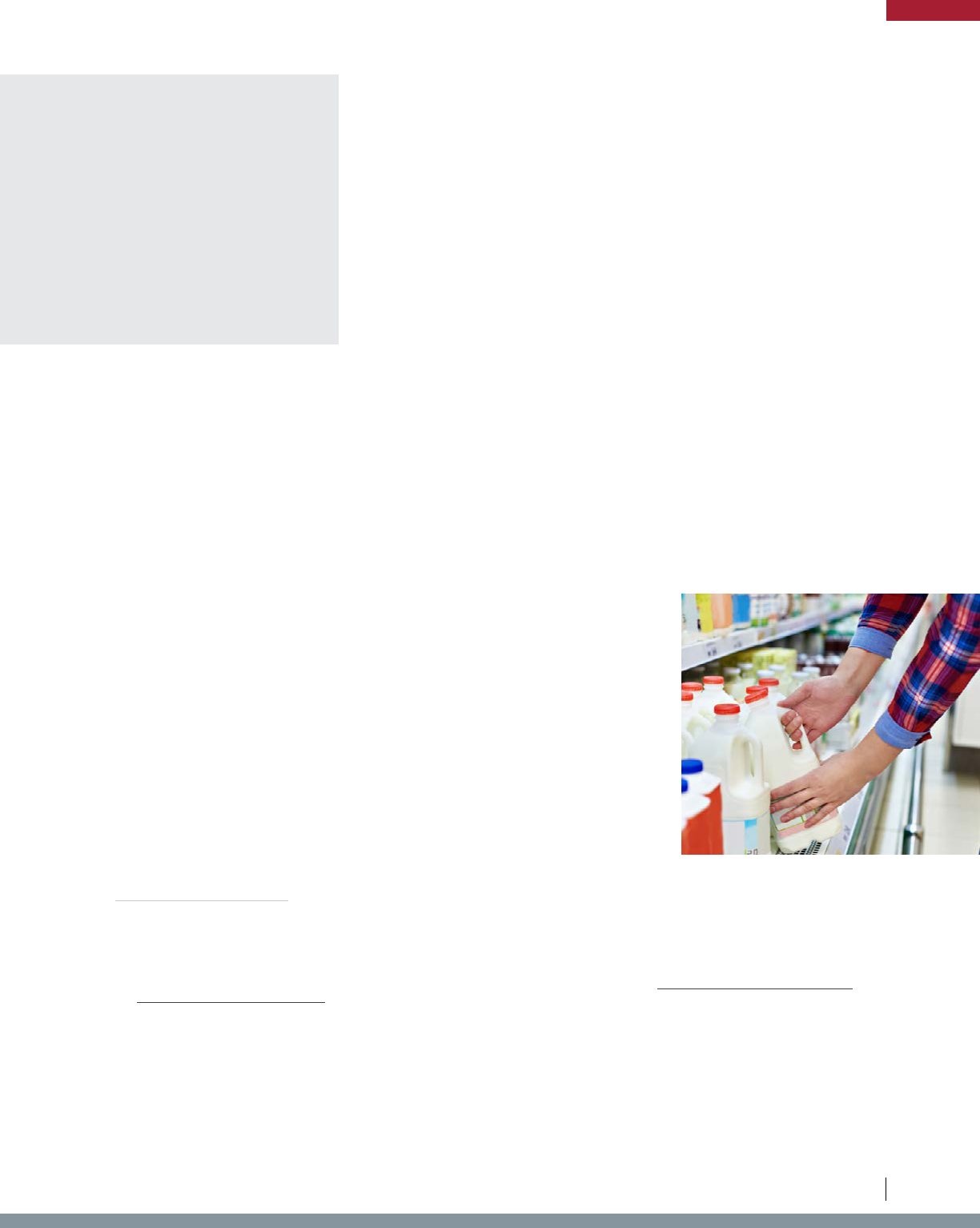
AquacultureandshfarmingalsocouldbeimpactedbytheEATS
Act.Overhalfofallstatesimposeimportationrequirementsonlivesh
moving in interstate commerce via measures such as permits or health
inspectioncertications.
131
WestVirginia,forexample,requirespre-entry
permittinganddisease-freecerticationofshandcertainviablesh
eggs.
132
One aquatic disease of concern is viral hemorrhagic septicemia
(“VHS”), which manifests itself through bleeding, bulging eyes, and open
sores.
133
Becausethisdiseasecanbetransmittedbyinfectedshor
through water,
134
states such as Illinois and Arkansas have implemented
restrictionsonliveshimportationtopreventthetransmissionof
VHS.
135
Following a VHS outbreak in 2006, the Animal and Plant Health
Inspection Service (APHIS) in the U.S. Department of Agriculture (USDA) published an interim federal rule
restrictingtheinterstatemovementofliveshsusceptibletoVHS.In2015,however,APHISpublishedarule
withdrawing that interim rule because it “had become duplicative with State regulations” and “could safely
be removed as long as States maintain existing VHS regulations and other practices to reduce risk.”
136
TheEATSActcouldhavetheperverseeffectofprohibitingthesestateshimportationlaws,undermining
APHIS’sfederalderegulatoryrationaleandleavinglocalfarmedshpopulationsvulnerabletodisease.
C. FOOD QUALITY & SAFETY REGULATIONS
If enacted, the EATS Act would jeopardize a variety of food safety and
quality regulations currently in place—as well as ones policymakers might
seek to implement in the future. Some of these regulations are designed to
protectcitizensfromthesaleofuntgoods,whileothersservetoprotect
key industries from scandal or sub-par sellers. Such state and local food
regulations, however, could be prohibited under the EATS Act if they place
preharvest standards or conditions on imported agricultural products.
Examples of preharvest production standards plausibly within the scope of
the EATS Act and affecting food quality and safety include state regulations
governinguidmilkqualitystandards,
137
shandshellshsourcing,
138
131. Id.
132. SeeW.VA.CODE§20-2-13,statingthat“[n]opersonshalltransportintoorhaveinhispossessionwithinthisstateanylivewildlifeorviableeggsthereof
fromwithoutthestate,exceptasauthorizedbyanimportationpermit...Importersofshorviableeggsofthefamilysalmondiae(trout,char,salmon)
shallfurnishastatementfromarecognizedshpathologistcertifyingthesourcetobefreeofwhirlingdisease,infectiouspancreaticnecrosis,viral
hemorrhagicsepticemiaorotherdiseaseswhichmaythreatenshstockswithinthestate.”
133. Iowa State University, Center for Food Security and Public Health, Viral Hemorrhagic Septicemia (May 2007), http://www.cfsph.iastate.edu/Factsheets/
pdfs/viral_hemorrhagic_septicemia.pdf.
134. Id.
135. See, e.g., ILL. ADMIN. CODE TIT. 17, PT. 875.50 (“a) It shall be unlawful to: 1) import VHS-susceptible species into the State of Illinois without a VHS-
Susceptible Species Permit issued by the Department”); ARK. CODE R. § 002.01.1-35.11 (“It is unlawful to import, transport, or otherwise receive into
ArkansasliveshorfertilizedeggsfromanyViralHemorrhagicSepticemiaVirus(VHSV)-positivestatewithoutavalidFishFarmHealthInspection
Permit issued by the Commission and in compliance with the provisions of the permit, the requirements in Addendum Chapter I1.00, and [other stated]
requirements.”).
136. 80 Fed. Reg. 2285–6 (Jan. 16, 2015).
137. See, e.g., 25 TEX. ADMIN. CODE § 217.29 (“(a) All herds and additions thereto shall be tested and found free of tuberculosis and brucellosis before any
milk therefrom is sold. All required tests in this section must be performed by a licensed veterinarian or a veterinarian in the employment of an appropriate
state or federal agency.”).
138. See, e.g.,GA.COMP.R.®S.511-6-1-.04(2)(d)-(e)(restrictingsourcesofshandshellshreceivedforsale).
The EATS Act could have the
perverse effect of prohibiting
these state fish importation
laws, undermining APHIS’s
federal deregulatory rationale
and leaving local farmed fish
populations vulnerable to disease.
APPLICATION OF THE LEGISLATION
40
Legislative Analysis of S.2019 / H.R.4417: The “Ending Agricultural Trade Suppression Act”
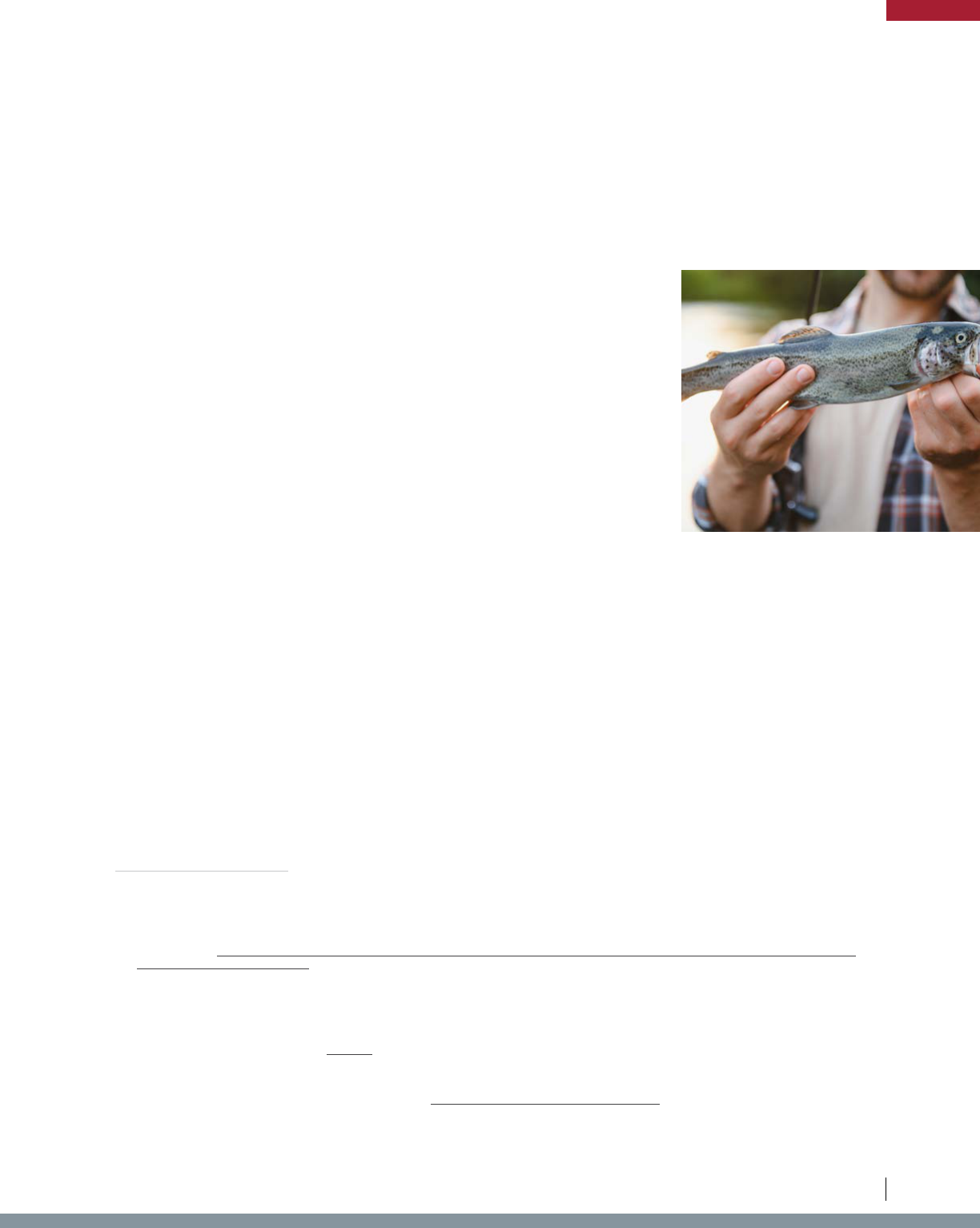
139. See, e.g., MINN. R. 4626.0155 (mandating that “[a]ll wild mushroom species served in a retail food establishment must be obtained from sources where
eachmushroomisindividuallyinspectedandfoundtobesafebyacertiedmushroomharvester”andrequiringwrittenbuyerspecications,certain
records,anddisclosureofriskstoconsumers);010-3WYO.CODER.§3-3(“mushroomspeciespickedinthewildshallbeobtainedfromsourceswhere
eachmushroomisindividuallyinspectedandfoundtobesafebyanapprovedmushroomidenticationexpert”).
140. See, e.g., Beyond Pesticides, Congress Asked to Help Stop Ecosystem Collapse in the Farm Bill by Preserving Local Authority to Restrict Pesticides
(June 26, 2023), https://beyondpesticides.org/dailynewsblog/2023/06/congress-asked-to-help-stop-ecosystem-collapse-in-the-farm-bill-by-preserving-
local-authority-to-restrict-pesticides/ (asserting that if the EATS Act were enacted, “it would overturn decades of precedent as well as prevent local
governments from protecting their residents from hazardous chemicals in their environment... mak[ing] it virtually impossible to restore the basic local
authority to protect public health and the environment, which has historically been vested in local governments”).
141. See, e.g., ALA. ADMIN. CODE R. 80-1-6-.07 (special tags and labeling required for sale of fertilizer mixed with pesticides); 2 N.C. ADMIN. CODE
48A.1704–1705(regulatingcertainarticlesincludingsoilandsoilamendmentsandrequiringacerticateorpermitinordertomovethosearticlesintothe
state from regulated areas).
142. Additional examples are included in the Appendix below.
143. “‘Agriculturalproducts’includes...shandshellsh.”7U.S.C.§1626.
144. Two states, Florida and Texas, were given authority to regulate out to 9 nautical miles from shore.
145. See Bureau of Ocean Management, Federal Offshore Lands, https://www.boem.gov/Federal-Offshore-Lands/.
146. While,theEATSActappliestotheregulationofpreharvestproductionthat“occursinanotherState,”thereisnoprovisioninitstexttoaccountforgoods
produced within areas of U.S. control that fall outside of the jurisdictional boundaries of the states. The EATS Act might apply in such circumstances. It
moreclearlywouldapply,however,toshtakeninonestateandlandedinanother.
147. 31 TEX. ADMIN. CODE § 57.970.
and wild mushroom safety.
139
The EATS Act also could affect certain state and local regulations on
pesticides
140
and fertilizers.
141
Further examples of food quality and safety regulations potentially affected
by the EATS Act include restrictions on the use of antibiotics or growth hormones, soil or irrigation quality
requirements, PFAS contamination thresholds, manure management practices, and limitations on genetic
engineering and other technological processes.
142
D. FISHING REGULATIONS
Enactment of the EATS Act could negatively impact recreational and
commercialoceanshing.AllshandshellshfalldirectlywithintheEATS
Act’sdenitionof“agriculturalproducts,”regardlessofwhethertheanimals
are farm-raised or wild-caught.
143
States long have been afforded authority to
regulate their coastal waters under the Submerged Lands Act. These areas,
which generally extend 3 nautical miles from shore, are known as “state
waters.”
144
Under the United Nations Convention on the Law of the Sea, the
U.S. Government has exclusive rights to regulate up to 200 nautical miles
from its shoreline—known as the Exclusive Economic Zone (“EEZ”).
145
Today,
having given states control of waters from 0-3 nautical miles from shore, the
Federal Government retains control of waters from 3-200 nautical miles off
land. Fish harvested in the waters of one state and brought ashore in another state potentially could be
considered “agricultural products” with “the production occur[ing] in another State.”
Ashingvesseltravelingseawardeffectivelycouldbecomeanout-of-stateproducerifanyof
itscatchwasharvestedinanotherstate’swatersor,possibly,inthefederallycontrolledEEZ.
146
After
securingitscatch,whenashingvesselcrossesbackovertheseterritoriallines,itmaybecomesubject
to laws of the state where it lands. The EATS Act would appear to prevent any state commercial or
recreationalshingregulationsthatplausiblycouldaffectpreharvestproduction.Forexample,Texas
shingregulationsexplicitlystatethattheirauthorityextendsto“allaquaticlifecaughtintheExclusive
Economic Zone (EEZ) and landed in this state for a recreational or commercial purpose.”
147
If this law
APPLICATION OF THE LEGISLATION
41
Legislative Analysis of S.2019 / H.R.4417: The “Ending Agricultural Trade Suppression Act”
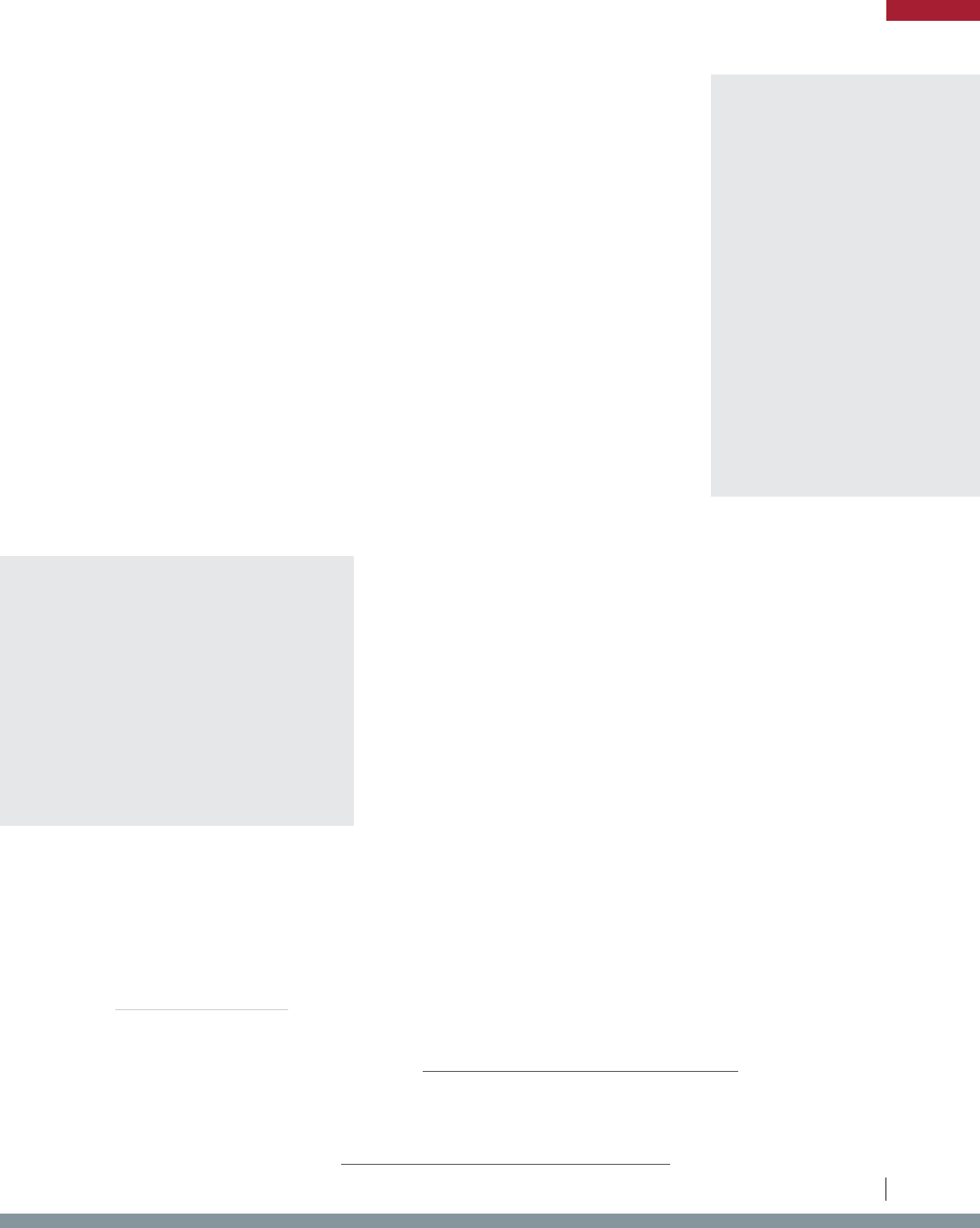
werechallengedundertheEATSAct,acommercialshingvesselpotentially
could return to Texas with its catch and not be bound by Texas law or even
haveanyoneaboardwithaTexasshinglicense.
148
The EATS Act thus could
disruptavarietyofcommercialandrecreationalshingregulationsthatrelate
to preharvest production—potentially ranging from equipment restrictions and
licensestoshorshellshsourcing,species,andsizerestrictions.
149
E. HORSE SLAUGHTER LAWS
To date, federal attempts to entirely ban the slaughter of horses for meat
have failed.
150
Although the interstate sale of horsemeat functionally is prohibited
because federal funds may not be used to inspect the slaughter of horses,
151
the intrastate slaughter of horses for meat still is permissible federally under the
personal use and custom slaughter exemptions in the Federal Meat Inspection
Act. Some states do ban such wholly intrastate slaughter of horses,
152
and the
EATS Act likely would leave these prohibitions undisturbed. The EATS Act,
however, potentially would block state and local bans on the importation of horses
intendedforslaughterforhumanconsumption.TheseprecludedbanscouldincludeCalifornia’sexisting
horse importation prohibition, which makes it a felony “for any person
to possess, to import into or export from the state, or to sell, buy, give
away, hold, or accept any horse with the intent of killing, or having
another kill, that horse, if that person knows or should have known
that any part of that horse will be used for human consumption.”
153
By
prohibiting the importation of certain horses (i.e. horses intended for
slaughter),California’slawplacesapreharvestconditiononanout-
of-state agricultural product that likely would be impermissible under
the EATS Act. Further, if the EATS Act were enacted, states would be
unable to adopt other types of regulations governing imported horses
intended for in-state slaughter, such as laws requiring minimum
welfare or transport standards, as those likely would be preharvest production standards. The EATS Act
thus plausibly could force California to allow the importation of horses for personal consumption slaughter
and prevent other states from enacting similar measures in the future.
154
The EATS Act thus
could disrupt a variety
of commercial and
recreational fishing
regulations that
relate to preharvest
production—potentially
ranging from equipment
restrictions and licenses
to fish or shellfish
sourcing, species, and
size restrictions.
148. SignicantenforcementissuescouldfollowifTexaswereprecludedfromenforcingitsshinglaws.Fishersseekingtoskirtstaterestrictionscouldclaim
catches took place in federal waters or the waters of another state.
149. For example, 31 TEX. ADMIN. CODE § 57.990 et seq.
150. See, e.g., H.R.3355, 117th Cong. (died in committee, 2022), https://www.congress.gov/bill/117th-congress/house-bill/3355/text.
151. Consolidated Appropriations Act, 2023, Pub. L. No. 117-328, § 761 (2022).
152. See, e.g., 225 ILL. COMP. STAT. § 635/1.5.
153. CAL. PENAL CODE § 598C.
154. Legislation that would enact a prohibition on the transport of horses for slaughter for human consumption recently was passed by both chambers of the
New York State Legislature. See N.Y. Senate Bill S2163B, “An act to amend the agriculture and markets law, in relation to prohibiting the slaughtering of
horses for human or animal consumption,” https://www.nysenate.gov/legislation/bills/2023/S2163/amendment/B.
By prohibiting the importation of
certain horses (i.e. horses intended
for slaughter), California’s law
places a preharvest condition on an
out-of-state agricultural product
that likely would be impermissible
under the EATS Act.
APPLICATION OF THE LEGISLATION
42
Legislative Analysis of S.2019 / H.R.4417: The “Ending Agricultural Trade Suppression Act”
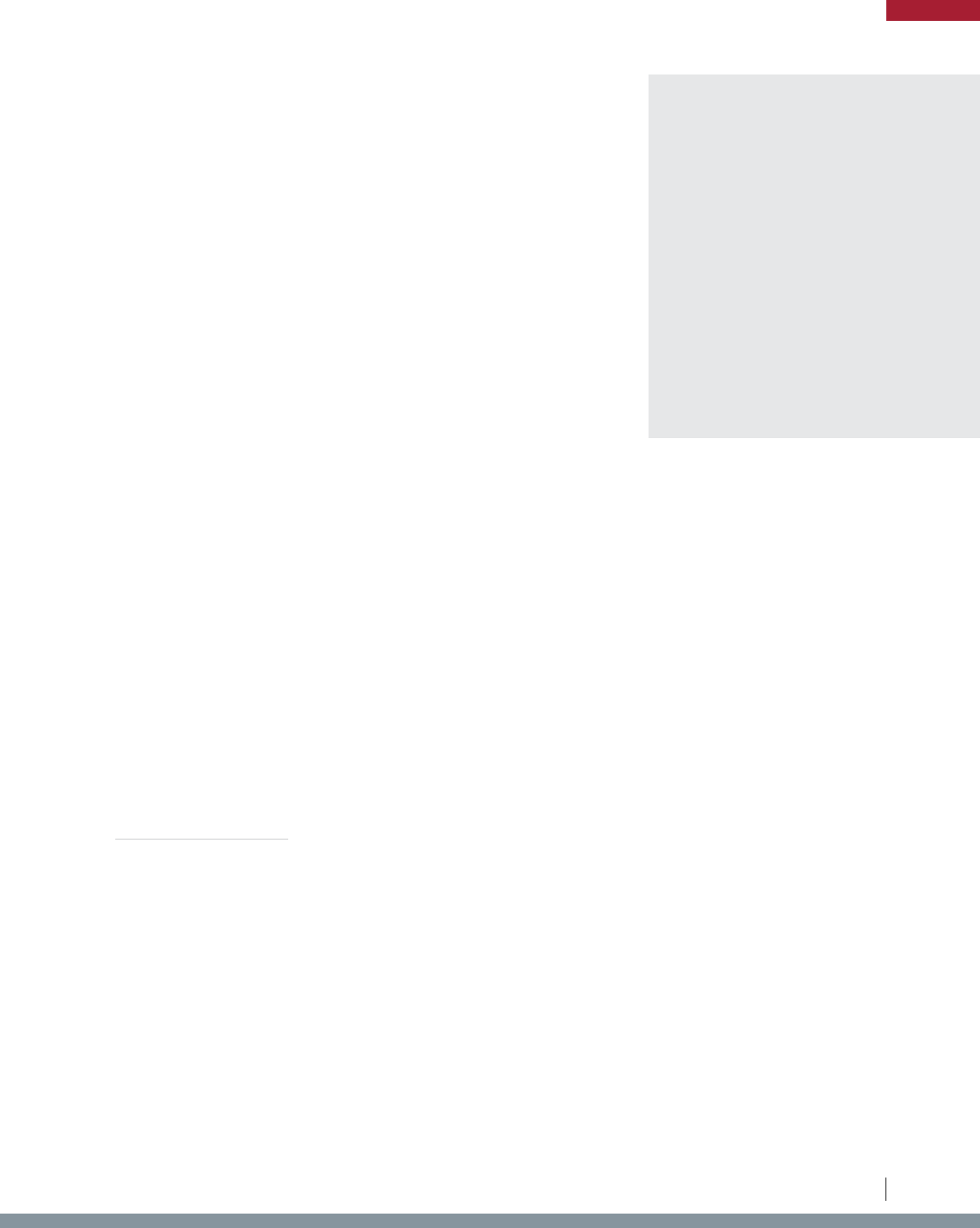
155. See 410 ILL. COMP. STAT. § 637/5 et seq. (“the Halal Food Act”); 410 ILL. COMP. STAT. § 645/1 et seq. (“the Kosher Food Act”). In June, Illinois recently
went further to protect access to appropriate religious food options, ensuring that individuals at schools and state-owned hospitals and penal institutions
have access to kosher, halal, and other meals meeting their religious dietary restrictions. See HB3643, Illinois General Assembly (2023); 105 ILL. COMP.
STAT. § 5/10-20.85; 105 ILL. COMP. STAT. § 5/34-18.82; 410 ILL. COMP. STAT. § 637/25; 410 ILL. COMP. STAT. § 645/1.5. Under these new laws,
contracting vendors must certify compliance with the Kosher Food Act and the Halal Food Act. Although the argument is tenuous, these requirements
might run afoul of the EATS Act, depending on where interpreting courts draw the boundary between “preharvest” and “harvest” as well as the precise
conditions imposed by the religious certifying body and the reliance of the vendor on imported products.
156. 410 ILL. COMP. STAT. § 637/15 (emphasis added).
157. 410 ILL. COMP. STAT. § 645/1.
158. MD.CODE,COM.LAW§14-3602(“Apersonmaynotfalselyrepresent,withintenttodefraud,anyfoodproductorthecontentsofanypackageor
containertobehalal”);MD.CODE,COM.LAW§14-904(“Apersonmaynotsellorofferforsale,askosher,kosherforPassover,orasbeingunder
rabbinical or other kosher supervision any packaged food product unless” certain conditions are met). Maryland also regulates the kosher labeling of
mezuzahandtellin.MD.CODE,COM.LAW§14-905.
159. N.J. STAT. § 56:8-103 (“Any dealer who prepares, distributes, sells or exposes for sale any food represented to be halal shall comply with all requirements
ofthedirector,including,butnotlimitedto,recordkeeping,labelingandling”);N.J.STAT.§56:8-66(“Anydealerwhoprepares,distributes,sellsor
exposes for sale any food represented to be kosher or kosher for Passover shall comply with all requirements of the director, including, but not limited to,
recordkeeping,labelingandling”).
160. N.Y.AGRIC.&MKTS.LAW§201-a(“Allfoodandfoodproductspackagedinanycontainerandsoldorofferedforsaleas‘kosher’or‘kosherfor
passover’shallhavea‘kosher’or‘kosherforpassover’labelafxedbythemanufacturerorpackeratitspremises”);N.Y.AGRIC.&MKTS.LAW§201-e
(“Allfoodandfoodproductspackagedinanycontainerandsoldorofferedforsaleas‘halal’shallhavea‘halal’labelafxedbythemanufactureror
packeratitspremises”).NewYorkalsoimposescerticationandrecordkeepingrequirementsonpurveyorsofkosherandhalalfoods.
161. Nicole E. Negowetti, Taking (Animal-Based) Meat and Ethics Off the Table: Food Labeling and the Role of Consumers As Agents of Food Systems
Change, 99 OR. L. REV. 91, 122 n.148 (2020).
F. LABELING REGULATIONS
Although the sponsors of the EATS Act introduced the legislation
with the stated intent of blocking sales restrictions linked with preharvest
productionpracticessuchasProp12,thebroadscopeofthelegislation’s
text potentially could sweep in other types of regulations such as
labelingregulations.Whiletheargumentislessclearherethanforsales
restrictions, laws and regulations that mandate or ban the use of certain
nomenclature on a product label based upon the method of production
could be affected by the EATS Act if the regulation is conditioned upon a
preharvest process. For instance, state and local regulation of kosher or
halalcerticationonfoodlabelscouldbewithinthescopeoftheEATS
Acttotheextentthatthecertiedpracticesimposeastandardonthe
welfare of the animal or, potentially, on the type of equipment used on the
animal immediately prior to slaughter.
Illinois is one such state that regulates the use of the terms “halal” and “kosher” on product
labels.
155
Under those laws, it is a misdemeanor to “falsely represent any animal sold, grown, or offered
for sale to be grown in a halal way to become food for human consumption”
156
or if a person “with intent
to defraud, sells, or exposes for sale any meat or meat preparations and falsely represents the same to
be kosher, whether such meat or meat preparations be raw or prepared for human consumption, or as
having been prepared under and of a product or products sanctioned by the certifying organization or the
supervising rabbi.”
157
Other states including Maryland,
158
New Jersey,
159
and New York
160
also have laws
protecting kosher and halal food labels. The EATS Act could disrupt these religious food labeling laws,
which help ensure that consumers following certain diets are protected from injury and fraud.
Other labeling regulations based on composition or preharvest treatment also could be
prohibited as applied to imported products. For example, at least a dozen states have passed laws that
restrict the use of meat nomenclature to certain products.
161
In South Dakota, a food product labeled
... state and local regulation of
kosher or halal certification
on food labels could be within
the scope of the EATS Act to
the extent that the certified
practices impose a standard
on the welfare of the animal
or, potentially, on the type of
equipment used on the animal
immediately prior to slaughter.
APPLICATION OF THE LEGISLATION
43
Legislative Analysis of S.2019 / H.R.4417: The “Ending Agricultural Trade Suppression Act”
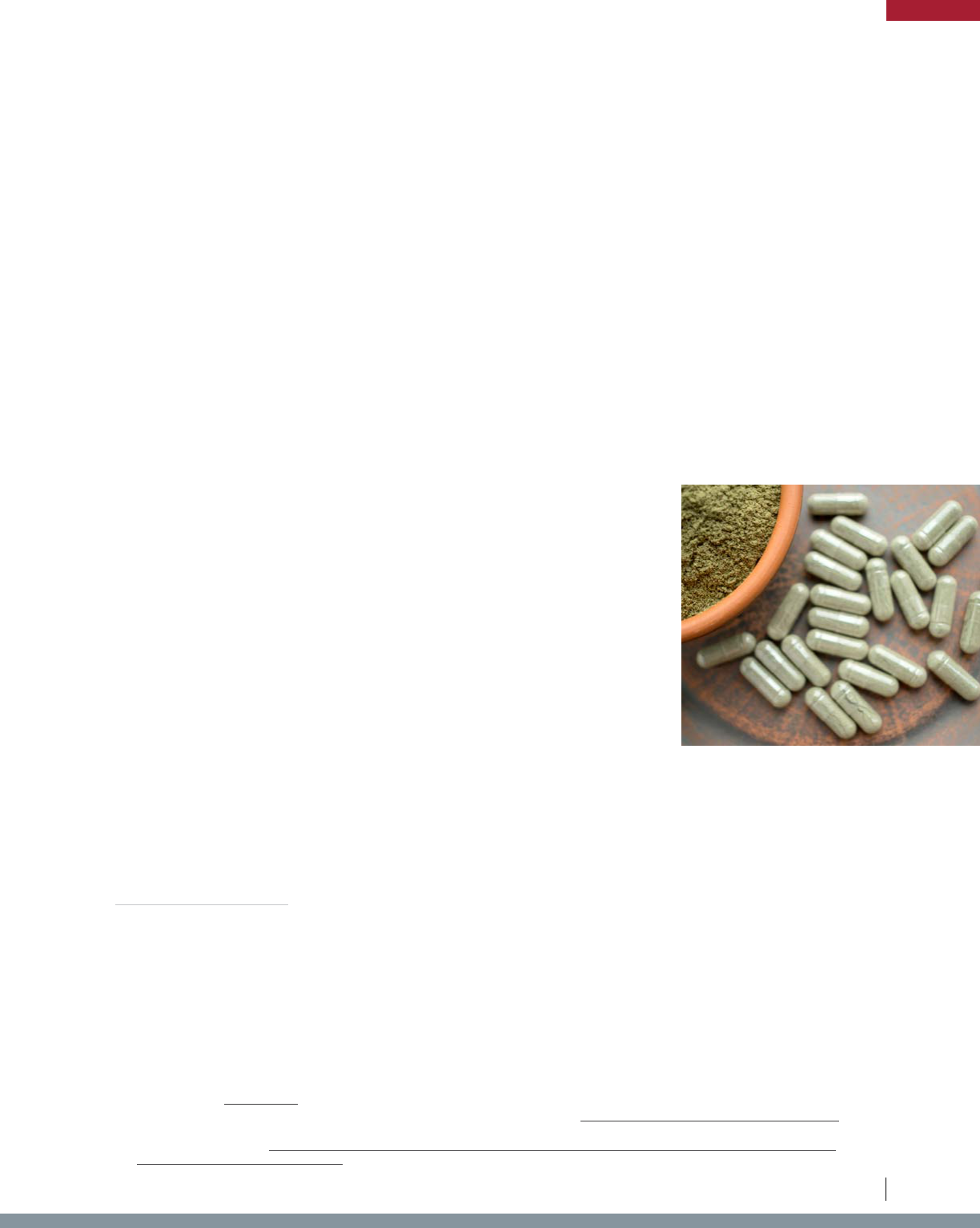
asapoultryproductismisbrandedunlessitfallswithinthestate’sdenitionofpoultry,which“includes
anything containing meat intended for or capable of use for human consumption, that is derived, in whole
or in part, from any domesticated bird intended for human consumption.”
162
This law potentially imposes
preharvest conditions within the scope EATS Act by imposing standards on an imported origin ingredient
(e.g., requiring that a bird used in a poultry product be domesticated and intended for consumption by
humans) in order for that product to be labeled and sold in a certain way. In this way, the EATS Act could
preclude recently enacted state laws governing the labeling of meat analogue products.
Similarly,labelinglawsthatrequiredisclosureofspecicpreharvestproductionprocessesor
conditionsmightfallwithintheEATSAct’sprohibitionifacourtweretointerpretitsprovisionsbroadly.
Laws that could be precluded under such an interpretation might include requirements to disclose on
agricultural product labels the application of certain pesticides or chemicals or future label regulations
related to the use of novel processes.
163
G. NARCOTICS LAWS
Manymedicinalandrecreationaldrugsfallwithinthedenitionof
agricultural products incorporated into the EATS Act.
164
Because drugs of
plant-based origin would qualify as agricultural products in their raw forms,
the EATS Act may prohibit states from regulating them.
165
Whilefederally
scheduled drugs may remain unaffected, the EATS Act unintentionally could
force states to permit the importation of drugs that only are banned at the
state or local level, including those currently under federal review.
166
Drug laws the EATS Act could affect may include those criminalizing
possession of certain drugs. For example, several states that currently
ban the plant mitrgyna speciosa, commonly known as “kratom,” could be
forced to permit the drug under the EATS Act, at least when imported. Kratom is a tropical evergreen
tree whose leaves contain opioid properties that make it a popular recreational drug.
167
Kratom, which
the U.S. Food and Drug Administration (FDA) previously intended to schedule in 2016, since has been
designated a “drug of concern.”
168
In 2018, the FDA found that “deaths associated with the use of kratom”
162. S.D.CODIFIEDLAWS§39-4-26.
163. See, e.g., 2 N.C. ADMIN. CODE 48C.0127 (“(b) Seed treated with a mercurial or similarly toxic substance, if any amount remains with the seed, shall be
labeledtoshowastatementsuchas‘Poison,’‘PoisonTreated,’or‘TreatedwithPoison’”and“(c)Seedtreatedwithotherharmfulsubstances(otherthan
mercurials or similarly toxic substances), if the amount remaining with the seed is harmful to humans or other vertebrate animals, shall be labeled to show
theappropriatetoxicitycategorysignalword(i.e.danger,warning,caution)intypenosmallerthaneightpoints,followedbythestatement‘Donotusefor
food,feed,oroilpurposes.’”).Seedsareagriculturalproductsthemselves,butsuchlawsalsomaybeconsideredaspreharveststandardsorconditions
onotherproductsgiventhatseedsareanecessarycropinput.Asdiscussedthroughoutthisreport,itisdifculttodeterminewherereviewingcourts
might draw interpretive boundaries around the unwieldy text of the EATS Act in its current form.
164. ThedenitionofagriculturalproductsemployedbytheEATSActisbroadenoughthatitmayincludemanyotherdrugs,medicines,andvaccines
as “processed and manufactured products [thereof].” Cornstarch and other agricultural products commonly are used as inactive ingredients in oral
medications.Whilemanyoftheseitemsarefederallyregulated,somearenot.Totheextentthataregulationaffectsthepreharvestproductionofsucha
product or its agricultural input ingredients, the EATS Act could preclude it.
165. 7 U.S.C. § 1626.
166. See discussion of subsection 2(b) supra for analysis of the EATS Act application to a total product ban.
167. Megan Rech, et al., New Drugs of Abuse, 35 PHARMACOTHERAPY 2 at 189 (Dec. 4, 2014), http://onlinelibrary.wiley.com/doi/10.1002/phar.1522/full.
168. DrugEnforcementAdministration,81Fed.Reg.70652,WithdrawalofNoticeofIntenttoTemporarilyPlaceMitragyninand7Hydroxymitragynininto
Schedule 1 (Oct. 13, 2016), https://www.federalregister.gov/documents/2016/10/13/2016-24659/withdrawal-of-notice-of-intent-to-temporarily-place-
mitragynine-and-7-hydroxymitragynine-into.
APPLICATION OF THE LEGISLATION
44
Legislative Analysis of S.2019 / H.R.4417: The “Ending Agricultural Trade Suppression Act”

were increasing.
169
Inthewakeofthisincrease,statesincludingIllinois,Wisconsin,andVermonthave
implemented bans or partial bans on the substance, all of which the EATS Act potentially could prohibit.
170
Similarly, the EATS Act could force states to permit imported salvia divinorum (“salvia”), a
controversial hallucinogenic drug derived from plant leaves. This drug has survived several attempts at
federal regulation but is banned or partially banned in at least 29 states.
171
These criminal laws, often
passed in response to the deaths of persons found to have salvia in their system, could be prohibited
by the EATS Act. Just as California would be unable to stop certain eggs from being sold in the state,
Iowa likely would be unable to prohibit the sale of certain imported hallucinogenic drugs like saliva.
172
Generallyspeaking,statesarethersttoactwithrespecttoregulatingrisksposedbynewdrugsgiven
the burden of federal procedural requirements. Frequently, drug legislation looks similar to an arms race,
with manufacturers constantly making slight adjustments to drug formulas to avoid each new regulatory
restriction. The EATS Act could restrain states from acting alone and as laboratories of democracy.
173
Under
the EATS Act, states trying to address the impacts of narcotics in their communities may have their hands
tied—becoming more reliant on less nimble federal agencies and ultimately be left to wait for federal action.
Further, if the Federal Government were to de-schedule currently regulated plant-based
substances in the future, states might be prevented by the EATS Act from regulating the importation
of those drugs from states that permit their production. For example, if the Federal Government
de-scheduled marijuana, the EATS Act could force states that otherwise prohibit marijuana products
to allow importation of the drug from states that permit production.
Additionally, states could lose their ability to regulate the preharvest production of agricultural
inputs into vitamins, supplements, and medicines. Under the EATS Act, states may risk suit for their
regulatory actions unless every state with producers of any affected products adopts identical regulations
simultaneously. This result may hold true even when states adopt regulations recommended by federal
agencies such as the U.S. Food and Drug Administration. Such a degree of simultaneous legislative
coordination and unanimity among the states would be without precedent.
H. PROCUREMENT REGULATIONS
Another category of regulations the EATS Act could affect are those that place conditions or
incentives on which products a purchaser may buy. Just as the EATS Act would limit restrictions on sales
of imported agricultural products, the EATS Act also could preclude restrictions on purchasing that could
beconstruedasinvolvingthepreharvestproductionofimportedproducts.Specically,stateandlocal
procurement laws, as well as any “standards or conditions,” that direct the purchasing choices of public
169. See FDA, Statement from FDA Commissioner Scott Gottlieb, M.D., on the agency’s scientic evidence on the presence of opioid compounds in kratom,
underscoring its potential for abuse (Feb. 6, 2018), https://www.fda.gov/NewsEvents/Newsroom/PressAnnouncements/ucm595622.htm.
170. See720ILL.COMP.STAT.§642/5;WIS.STAT.§961.14;13VT.CODER.140011:7.Kratomhasbeenproposedforpre-reviewforpotentialfederal
scheduling. See 86 Fed. Reg. 39038–9 (July 23, 2021).
171. See Appendix below.
172. Iowa currently bans salvia. SeeIOWACODE§124.204.
173. New State Ice Co. v. Liebmann, 285 U.S. 262, 311 (1932) (“It is one of the happy incidents of the federal system that a single courageous state may, if its
citizens choose, serve as a laboratory; and try novel social and economic experiments without risk to the rest of the country.”).
APPLICATION OF THE LEGISLATION
45
Legislative Analysis of S.2019 / H.R.4417: The “Ending Agricultural Trade Suppression Act”
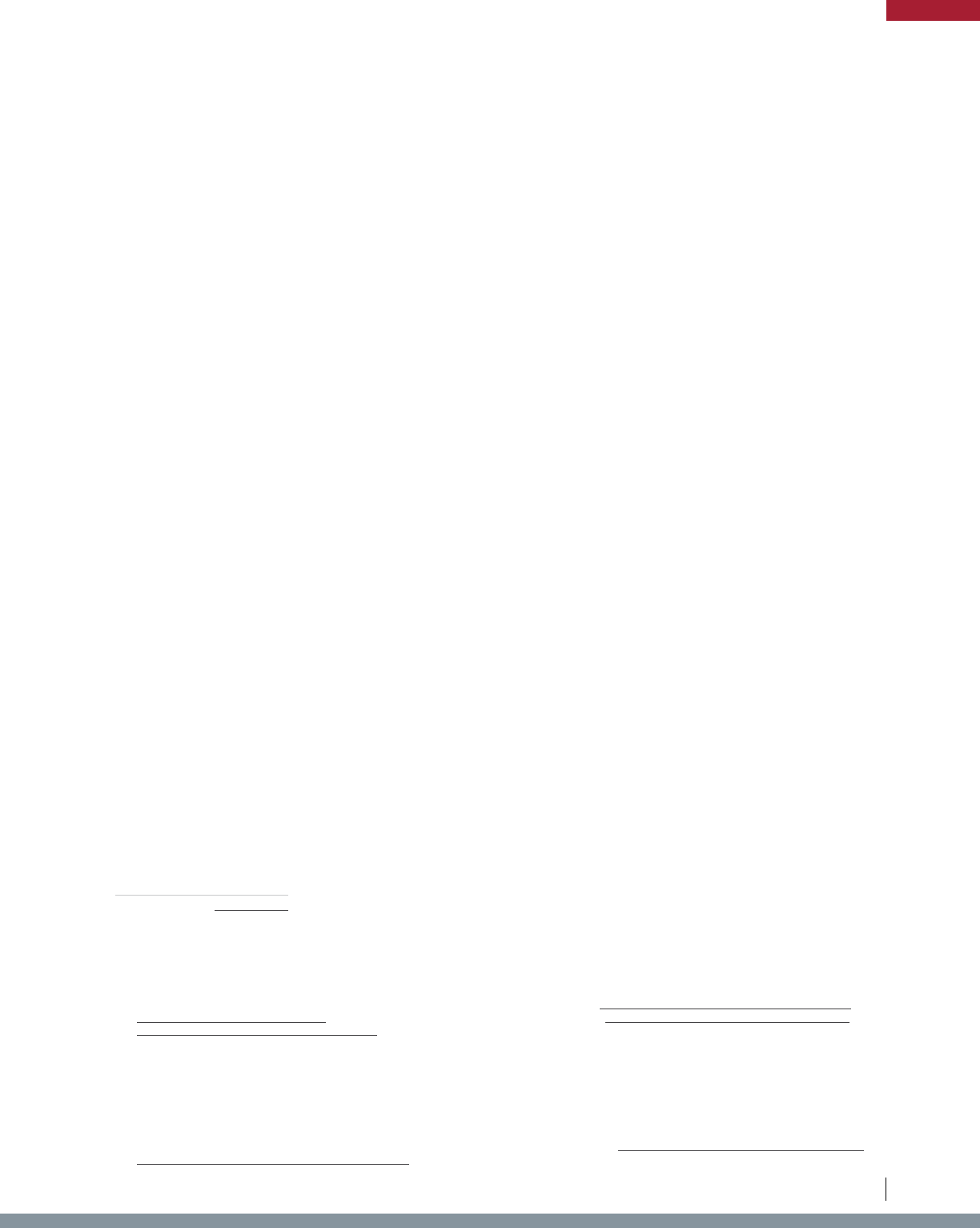
entities could be precluded.
174
Forexample,Louisianarequiresitsprocurementofcerstopurchase
Louisiana agricultural products unless there are imported products available that meet the same criteria,
are better or higher quality, and are less expensive than the comparable Louisiana products.
175
In other
words, out-of-state producers will lose out on government sales to in-state producers in Louisiana if their
products are not of the same or higher quality. In this sense, Louisiana may be imposing standards or
conditionsonthepreharvestproductionofimportedgoods.WhiletheLouisianastatutegovernsonly
public purchasers, such purchasers may constitute a large share of the market for particular products
giventhefoodneedsofpublicschoolsandstate-runfacilitiessuchasprisons,governmentofces,
and hospitals. If enacted and upheld, the EATS Act could remove procurement preferences for in-state
agricultural producers like those in Louisiana.
Procurement regulations and policies potentially precluded by the EATS Act could extend much
further than in-state producer preferences by voiding state and local preferences for products from women,
minority, and veteran-owned businesses. For example, cities like Houston and counties like Dallas maintain
policies that prioritize or set procurement goals for purchases from small businesses, including local
businesses and qualifying women-owned and minority-owned businesses.
176
Iowa sets procurement goals
for purchases from certain targeted small businesses, including businesses owned by service-disabled
veterans.
177
Under the EATS Act, qualifying veterans could lose this procurement preference.
I. LICENSING, PERMITTING, AND RECORDKEEPING REQUIREMENTS
Many industries require sellers or producers to be licensed. States impose licensing
requirements for a variety of reasons, such as to ensure safety standards are being met, to track the
supplychainofgoodssoldwithinthestate,ortoprotectthemarketfromuntproducers.Oftentimes,
these requirements work as part of a larger regulatory scheme. For instance, Kansas requires out-of-
state pet distributors to obtain a license from the state to sell their imported products there.
178
On the
licensing application, distributors are asked to disclose prior convictions for “any crime relating to theft
or cruelty to animals.”
179
It is unclear how reviewing courts might interpret “preharvest production” and
“agricultural products” (e.g. if raised on a “farm”) as applied to pets such as dogs and cats. Broadly,
however, the EATS Act could force states to relinquish control over permitting, licensing, and regulating
174. As discussed in subsection 2(b)above,theEATSActdoesnotdene“standard”or“condition.”Asaresult,eithertermcouldincludestateandlocal
standards or policies for procurement contracts.
175. LA.STAT.§39:1604(B).“[E]achprocurementofcer,purchasingagent,orsimilarofcialwhoprocuresorpurchasesagriculturalorforestryproducts,
including meat, seafood, produce, eggs, paper or paper products under the provisions of this Chapter shall procure or purchase Louisiana products
providedallofthefollowingconditionsaremet:(1)ThebiddercertiesinthebidsubmittedthattheproductmeetsthecriteriaofaLouisianaproduct.(2)
The product is equal to or better than equal in quality to other products. (3) The cost of the Louisiana product shall not exceed the cost of other products
bymorethantenpercent,exceptasotherwiseprovidedinthisChapterasaspecicexception.”
176. SeeCityofHouston,OfceofBusinessOpportunity,PoliciesandProcedures7–8(Feb.2,2022)https://www.houstontx.gov/obo/docsandforms/OBO-
Policies-and-Procedures-20220202.pdf; Dallas County Purchasing Manual, 76–77 (Sept. 7, 2022) https://www.dallascounty.org/Assets/uploads/docs/
purchasing/Purchasing-Manual-Revised-2022.pdf.Becausetheterm“standardorcondition”isundenedintheEATSAct,suchmunicipalpoliciesmay
fall within its scope.
177. “Everyagency,department,commission,board,committee,ofcer,orothergoverningbodyofthestateshallpurchasegoodsandservicessuppliedby
smallbusinessesandtargetedsmallbusinessesinIowa.”IOWACODE§73.16(1).“Ofthetotalvalueofanticipatedprocurementsofgoodsandservices
under this subsection, an additional goal shall be established to procure at least forty percent from minority-owned businesses and forty percent from
female-ownedbusinessesandfortypercentfromservice-disabledveteran-ownedbusinesses,asdenedinsection73.14,thataretargetedsmall
businesses.” § 73.16(2)d.
178. KAN. STAT. § 47-1734.
179. See Kansas Department of Agriculture, 2022-2023 Out-Of-State Distributor License application form, https://agriculture.ks.gov/docs/default-source/rc-ah-
a-documents/ah---out-of-state-distributor.pdf?sfvrsn=13.
APPLICATION OF THE LEGISLATION
46
Legislative Analysis of S.2019 / H.R.4417: The “Ending Agricultural Trade Suppression Act”

imported products, at least as those conditions relate to “preharvest production” and exceed the laws in
effect in the place of production.
180
States also could be prevented from requiring recordkeeping related to preharvest production practices of
imported agricultural products. The types of records required by some states that may be affected could
include those related to safety standards, animal or plant health, sanitization, production conditions, or
other aspects of agricultural production.
181
Such recordkeeping requirements help states to ensure that
agricultural products come from reputable and legal sources, but could face threat of preclusion under
the EATS Act.
180. The EATS Act potentially could affect other types of regulations on pets, such as the retail sales bans passed by states like California, Maryland, and
New York, as well as by hundreds of municipalities. See, e.g., CAL. HEALTH & SAFETY CODE § 122354.5; MD. CODE REGS. BUS. REG. 19-703(A);
N.Y.GEN.BUS.LAW§753-F.
181. See, e.g., 8 CODE COLO. REGS. § 1203-6:15; MINN. STAT. § 21.84; MISS. CODE § 75-40-109; 4 TEX. ADMIN. CODE § 54.9; VT. STAT. TIT. 6, § 4028.
APPLICATION OF THE LEGISLATION
47
Legislative Analysis of S.2019 / H.R.4417: The “Ending Agricultural Trade Suppression Act”
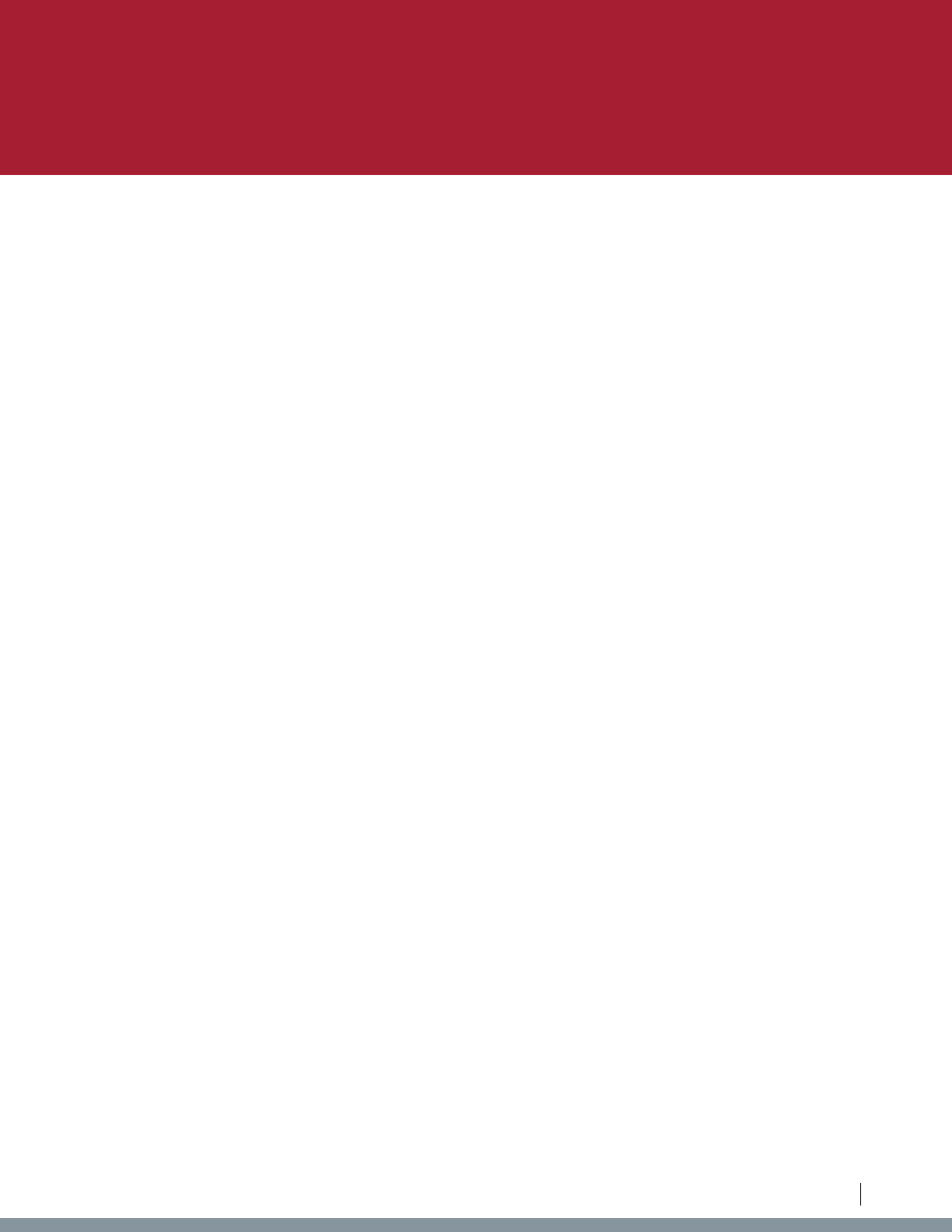
VII. CONCLUSION
If enacted, the EATS Act would curtail the ability of state and local governments to regulate
the production and sale of agricultural products—potentially nullifying over a thousand state laws and
likely many more. The EATS Act would have widespread and unknown effects extending far beyond
consumersandtheagriculturalindustry.SignicantquestionsareleftopenbythelanguageoftheEATS
Act, and each of these unresolved questions has the potential to determine the fate of entire industries,
billionsofdollarsofinvestment,andtheowofinterstatecommerce.Evenforproducerswhoinitially
mightbenetfromtheEATSAct,thisuncertaintyanddisruptioncouldbeextensive.
WhilesomeagriculturalproducersmayfacelessoversightasaresultoftheEATSAct,those
same producers could suffer unintended negative consequences from the federal legislation. Some
of the regulations potentially precluded by the EATS Act exist to help producers by reducing the
transmission of diseases and pests that threaten livestock and crops. Other forms of regulation, such
as licensing, protect the industry as a whole by preventing sub-par producers from undermining its
integrity. The same is true of quality control measures that safeguard the industry against lost business
and public relations problems resulting from incidents such as outbreaks of foodborne illness. Consumer
condencecouldsufferinsofarasitislinkedtotheperceptionofinadequateindustryregulation.Further,
in-stateproducers,veterans,andothersmallbusinessownerswhobenetfromcurrentgovernment
procurement regulations could see their investments and customer bases stripped away. If the EATS Act
wereadopted,producerswhohavemadesignicantinvestmentsinupdatinginfrastructureinresponse
to state measures such as Prop 12 could see the economic value of those investments plummet, without
receiving compensation for their losses.
UndertheEATSAct,thebenetofpotentiallylowerpricesonsomegoodscouldbeoffsetby
increased public health and safety risks. In some areas, the EATS Act threatens to create regulatory
voids or regulatory ceilings where none existed before, leaving entire sections of industries unregulated.
AnumberoflawsthattheEATSActcouldblockweredraftedforthebenetofconsumers.Withoutthese
protections, product quality, transparency, and safety may suffer. The majority of laws and regulations
potentially prohibited by the EATS Act, however, were enacted to safeguard agricultural production
itself. Regulations related to the importation of livestock and plants exist to protect producers from costly
diseases and pests. The prohibition of these regulations by the EATS Act could jeopardize entire sectors
of the agricultural economy and threaten the livelihoods of local producers.
If the EATS Act were to become law, it could tip the balance of federalism, shifting agricultural
oversight away from the states toward federal administrative agencies and the federal judiciary. USDA
andFDA,amongothers,wouldbetaskedwithllingtheregulatoryholesleftbythestateandlocallaws
48
Legislative Analysis of S.2019 / H.R.4417: The “Ending Agricultural Trade Suppression Act”
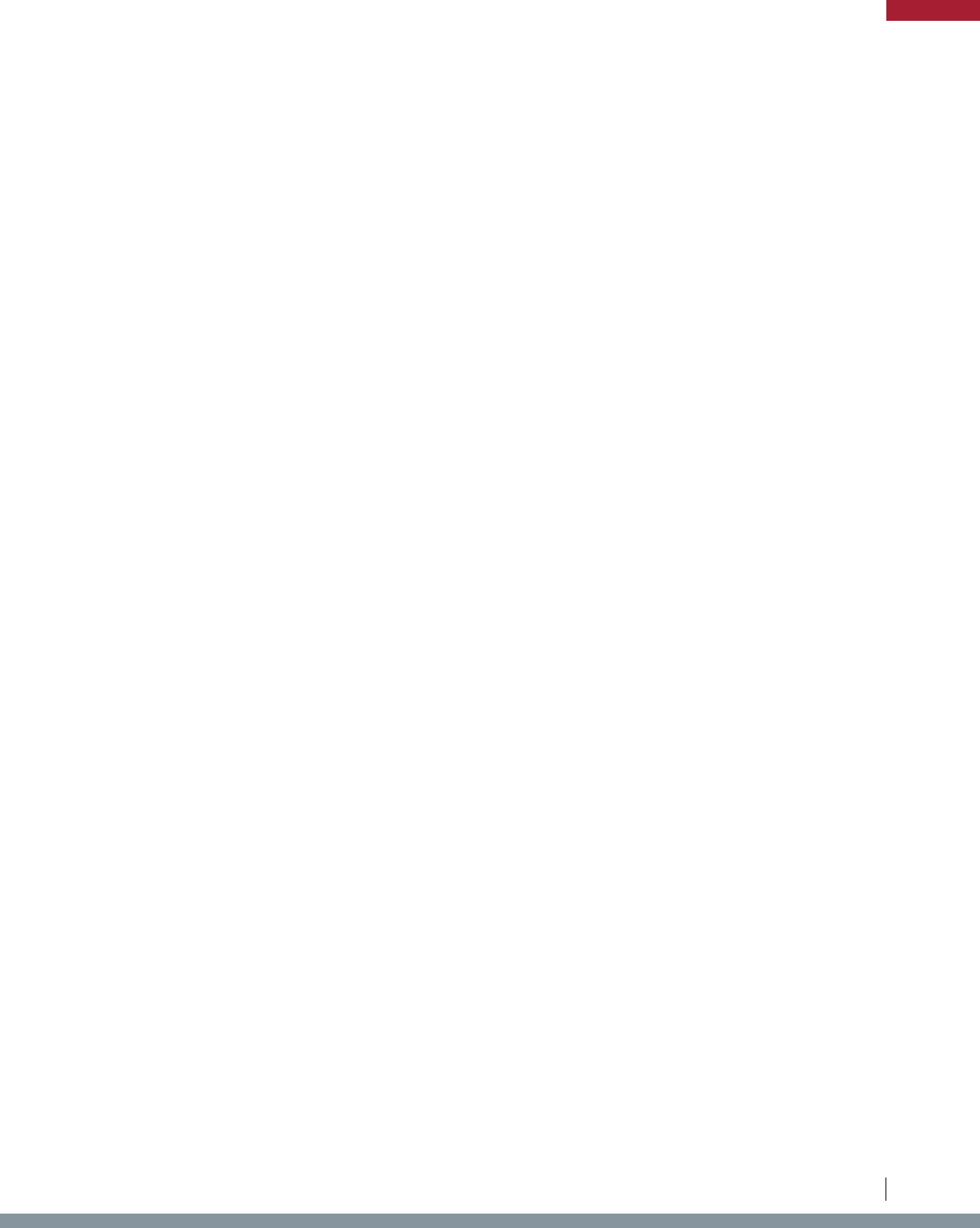
that the EATS Act would prohibit. This shift could trigger new federal regulation, and there could be
signicantfederalbudgetarycostsassociatedwiththistransferofregulatoryauthorityfromthestatesto
federal agencies.
Congress and federal agencies historically have been slower to act than state and local
governments regarding a large swath of regulatory categories, but especially those involving public
health, safety, and welfare. The lag time created by removing agricultural oversight from state control
could pose considerable risks with respect to issues of public safety, outbreaks of disease, and even
harmful drugs. Under the EATS Act as written, state and local governments could be prevented from
trying to act in times of crisis, such as during a prospective outbreak of African swine fever or the current
severeandongoingoutbreakofhighlypathogenicavianinuenza.Whilelawsmightbecomemore
consistent across jurisdictions under the EATS Act, that lowest common denominator consistency would
come at the expense of states and local governments being able to protect the health and safety of their
citizens and the livelihoods of their farmers.
Thefederaljudiciarywouldberesponsibleforansweringthenumerous,signicantquestions
surrounding the constitutionality of the EATS Act and the interpretation of its provisions. Though much
about EATS remains uncertain, the legislation is sure to spawn substantial litigation through its citizen
suitprovision,whichcouldsubjectstateandlocalgovernmentstoinnumerablelawsuits.Withovera
thousand state and local agricultural laws and regulations potentially prohibited by the EATS Act—each
susceptible to challenge by any number of parties—the federal court system could be overwhelmed.
The EATS Act itself also could face a number of legal challenges, particularly under the Tenth
andEleventhAmendments.ThesechallengescouldcontesttheAct’sconstitutionality,seektolimitits
authority, and answer crucial questions that surround its scope, interpretation, and application. It may be
years, however, before courts are able to provide a functional understanding of the EATS Act. Even then,
federalcourtsindifferentcircuitscouldreachcontraryconclusionsabouttheEATSAct’sprovisions—
resulting in circuit splits and fractured jurisprudence that further would undermine the regulatory certainty
vital both to governing bodies charged with implementation and to agricultural producers across the
United States.
The agricultural industry has undergone rapid change in recent years with the advent of new
technology,geneticmodicationofcrops,andotherinnovations.TheEATSActcomesatacritical
moment when production methods are poised to enter an era of even more rapid change. The EATS Act
has the potential to push state and local governments entirely out of the policy arena both in regulating
and safeguarding new methods. The EATS Act thus may limit the ability of states to protect the health
and safety of their citizens with respect to these emerging technologies.
The laws and regulations discussed in this report are only a preliminary assessment of the scope
and impact of the EATS Act. See the index appended below for more examples of laws and regulations
that the EATS Act potentially could affect.
CONCLUSION
49
Legislative Analysis of S.2019 / H.R.4417: The “Ending Agricultural Trade Suppression Act”
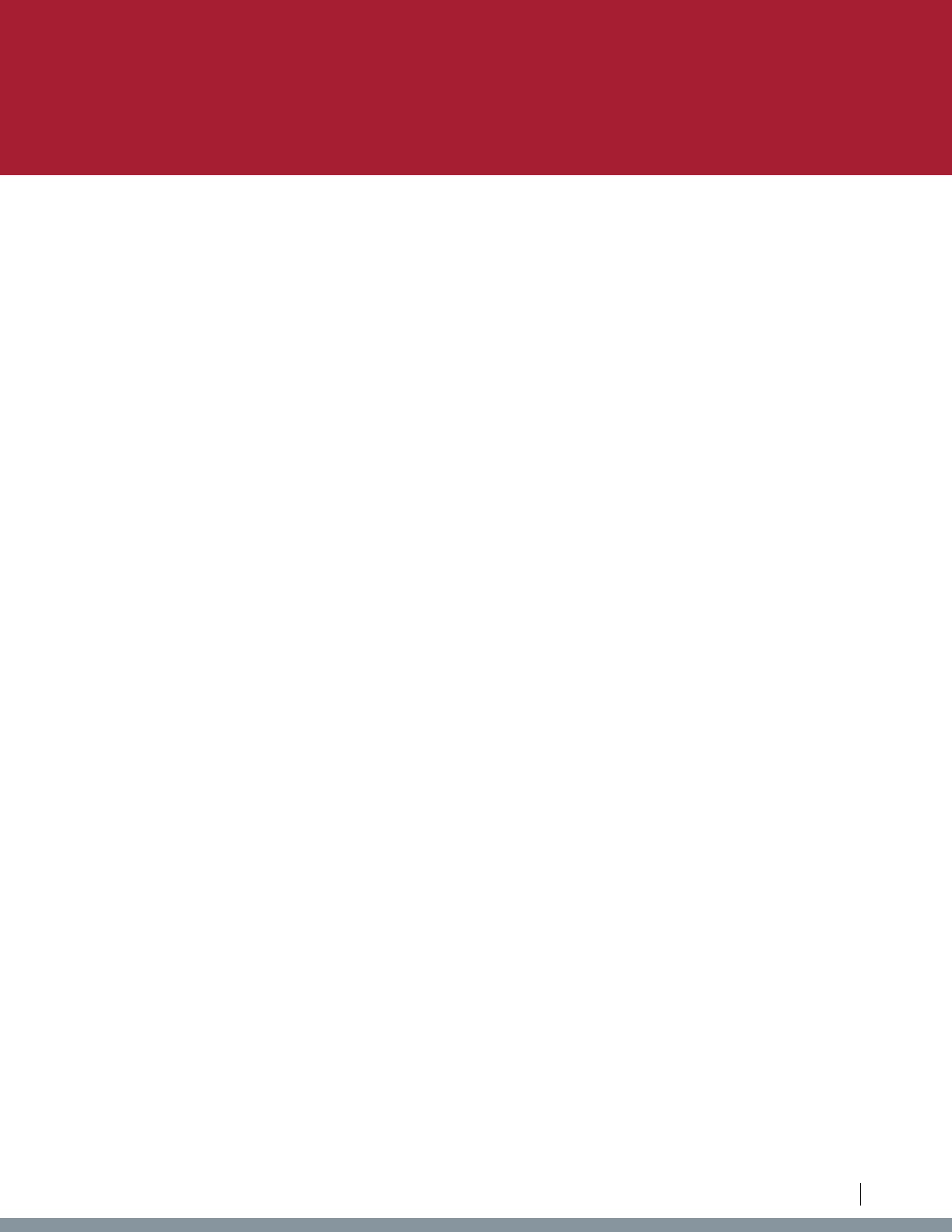
APPENDIX
The following state laws and regulations are examples of standards and conditions that could be
prohibitedundertheEATSAct.Theseexamplesarenotexhaustiveandreectthesubstantialambiguity
aroundthescopeoftheEATSAct.Theyarelistedbelowintwoordersofarrangement:rstbystateand
then by regulatory purpose.
50
Legislative Analysis of S.2019 / H.R.4417: The “Ending Agricultural Trade Suppression Act”
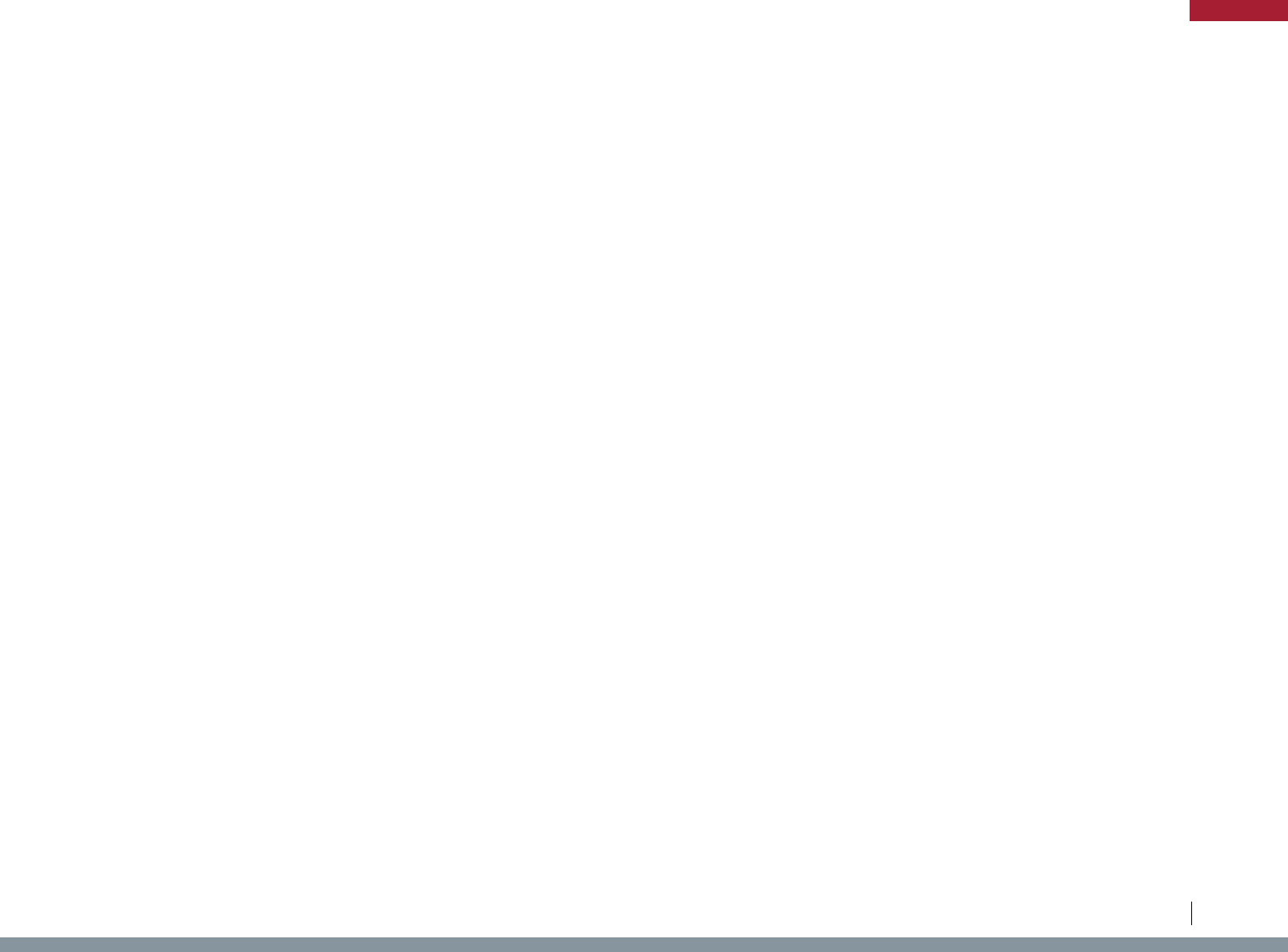
State laws and regulations potentially affected by the EATS Act, listed by state
Legislative Analysis of S.2019 / H.R.4417: The “Ending Agricultural Trade Suppression Act”
APPENDIX
51
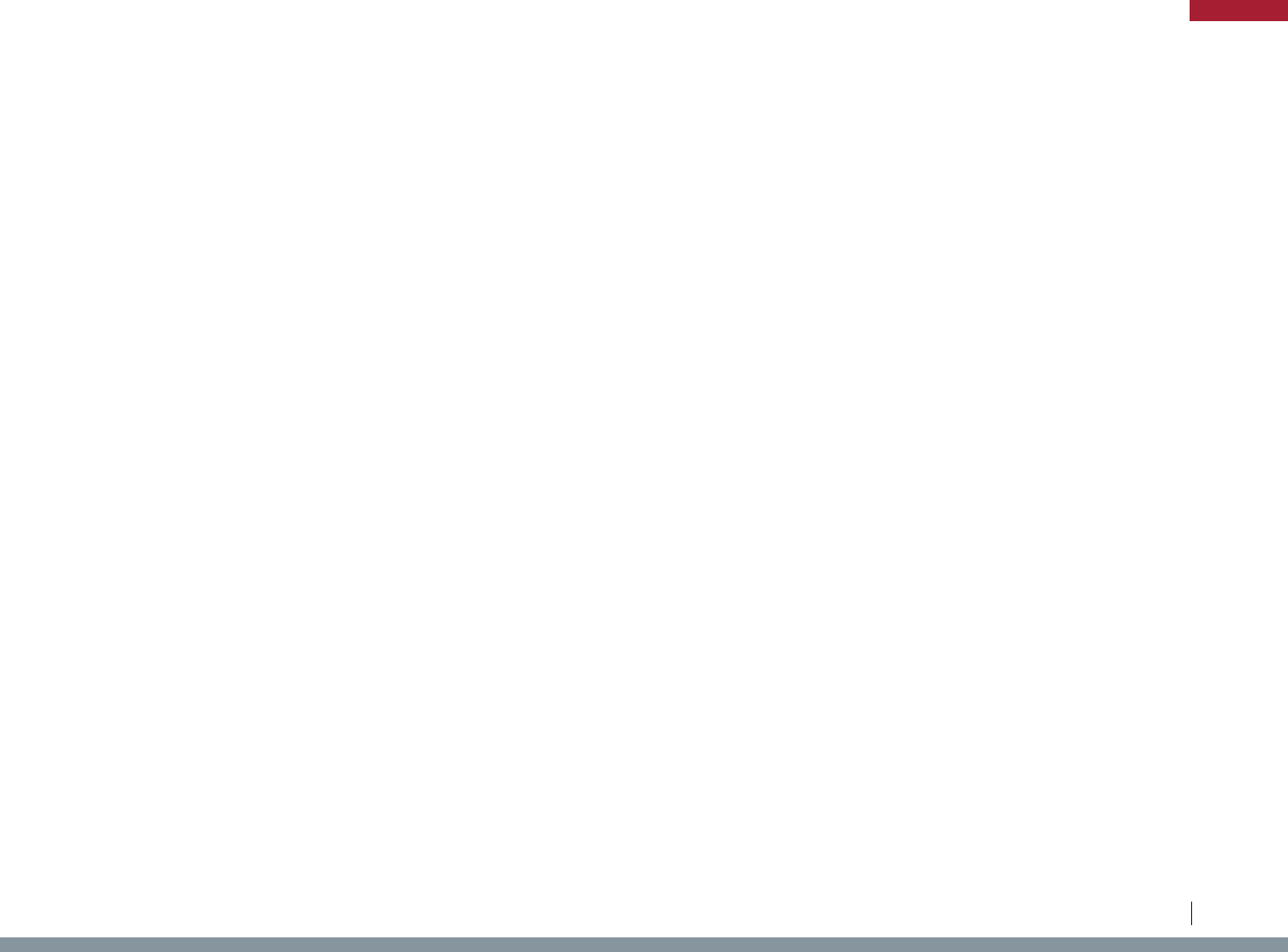
State Law/Regulation Potentially Impacted Industry Agricultural Product Regulation Type Purpose Description
AK Alaska Admin. Code tit. 11, § 35.010 Livestock Bees Certification
Disease/Pest
Prevention
Requirement that all bees entering the state must be free from bee
disease
AK Alaska Admin. Code tit. 11, § 35.020 Livestock Bees Importation
Disease/Pest
Prevention
Importation requirements for bees - health certificate, notification, and
other requirements
AK Alaska Admin. Code tit. 18, § 36.010 Live Animals Live Animals Importation
Disease/Pest
Prevention
Importation requirements for live animals - permit required for listed
species
AK Alaska Admin. Code tit. 18, § 36.015 Live Animals Live Animals Importation
Disease/Pest
Prevention
Importation requirements for live animals - health certificate or
certificate of veterinary inspection requirements
AK Alaska Admin. Code tit. 18, § 36.105 Livestock Equines Importation
Disease/Pest
Prevention
Importation requirements for equines - health certificate or certificate of
veterinary inspection, equine infectious anemia
AK Alaska Admin. Code tit. 18, § 36.115 Livestock Cattle, Bison, Yak Importation
Disease/Pest
Prevention
Importation requirements for cattle, bison, yak - health certificate or
certificate of veterinary inspection, brucellosis, tuberculosis,
anaplasmosis, bluetongue, trichomoniasis
AK Alaska Admin. Code tit. 18, § 36.125 Livestock Goats Importation
Disease/Pest
Prevention
Importation requirements for goats - health certificate or certificate of
veterinary inspection, identification, scrapie, brucellosis, tuberculosis,
ectoparasites, Mycoplasma ovipneumoniae
AK Alaska Admin. Code tit. 18, § 36.135 Livestock Sheep Importation
Disease/Pest
Prevention
Importation requirements for sheep - health certificate or certificate of
veterinary inspection, identification, scrapie, brucellosis, ectoparasites,
Mycoplasma ovipneumoniae, bluetongue
AK Alaska Admin. Code tit. 18, § 36.145 Livestock Swine Importation
Disease/Pest
Prevention
Importation requirements for swine - health certificate or certificate of
veterinary inspection, brucellosis, pseudorabies, garbage feed ban
AK Alaska Admin. Code tit. 18, § 36.165 Livestock
Poultry, Hatching
Eggs
Importation
Disease/Pest
Prevention
Importation requirements for poultry and hatching eggs - health
certificate or certificate of veterinary inspection
AK Alaska Admin. Code tit. 18, § 36.175 Livestock Cervids Importation
Disease/Pest
Prevention
Importation requirements for cervids - health certificate or certificate of
veterinary inspection, brucellosis, tuberculosis, chronic wasting disease
AK Alaska Admin. Code tit. 18, § 36.185 Livestock Camelids Importation
Disease/Pest
Prevention
Importation requirements for camelids - health certificate or certificate
of veterinary inspection, identification, brucellosis, tuberculosis,
ectoparasites
AL Ala. Admin. Code r. 80-1-6-.07 Fertilizer Soil and Fertilizer Labeling
Consumer
Protection
Special labeling required for fertilizer containing economic poisoning
AL Ala. Code § 13A-12-214.1 Drugs Salvia Prohibition Consumer Safety Recreational drug ban - salvia
AL Ala. Admin. Code r. 220-2-.26 Live Animals Live Animals Importation
Disease/Pest
Prevention
Restrictions on possession, sale, importation and/or release of certain
animals and fish
AL Ala. Admin. Code r. 80-10-11-.04 Livestock Bees Importation
Disease/Pest
Prevention
Importation requirements for bees
AL Ala. Admin. Code r. 80-10-11-.05 Livestock Bees Importation
Disease/Pest
Prevention
Importation requirements for bees
AL Ala. Admin. Code r. 80-10-14-.04 Plants Plants Importation
Disease/Pest
Prevention
Noxious weed restrictions
AL Ala. Admin. Code r. 80-10-15-.01 Forestry White Pines Importation
Disease/Pest
Prevention
Pine shoot beetle restrictions
AL Ala. Admin. Code r. 80-10-15-.03 Forestry White Pines Importation
Disease/Pest
Prevention
Pine shoot beetle restrictions
AL Ala. Admin. Code r. 80-10-15-.04 Forestry White Pines Importation
Disease/Pest
Prevention
Pine shoot beetle restrictions
AL Ala. Admin. Code r. 80-10-15-.05 Forestry White Pines Importation
Disease/Pest
Prevention
Regulated areas for pine shoot beetle restrictions
52
Legislative Analysis of S.2019 / H.R.4417: The “Ending Agricultural Trade Suppression Act”
APPENDIX
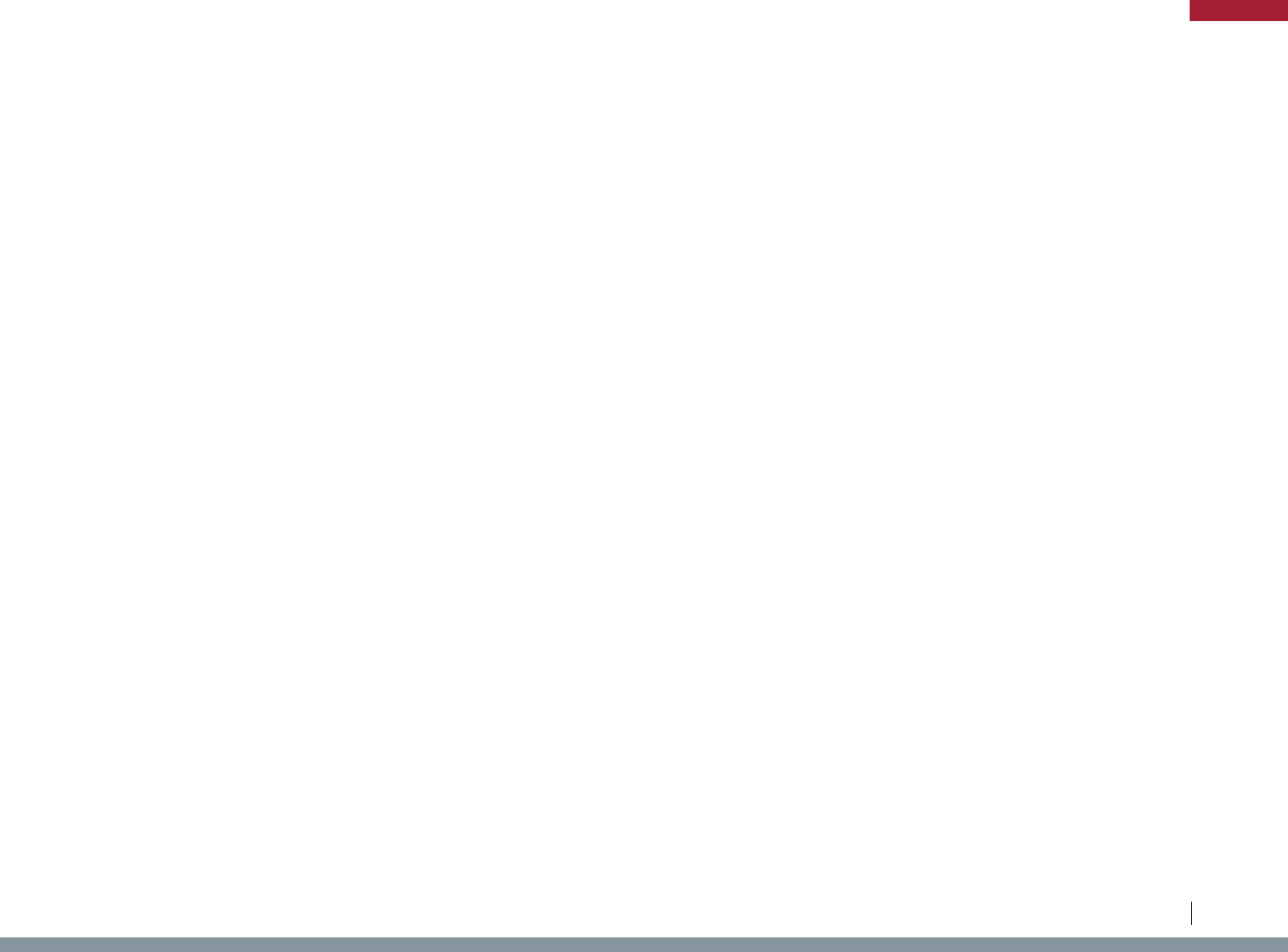
State Law/Regulation Potentially Impacted Industry Agricultural Product Regulation Type Purpose Description
AL Ala. Admin. Code r. 80-10-15-.06 Forestry White Pines Importation
Disease/Pest
Prevention
Pine shoot beetle restrictions
AL Ala. Admin. Code r. 80-10-19-.01 Fruit Citrus Trees Importation
Disease/Pest
Prevention
Certification for importation - restriction of citrus plants with citrus
aphids, fruit fly inspection
AL Ala. Admin. Code r. 80-10-19-.05 Fruit Citrus Trees Importation
Disease/Pest
Prevention
Citrus greening disease and the asian citrus psyllid restrictions
AL Ala. Admin. Code r. 80-10-19-.07 Fruit Citrus Trees Importation
Disease/Pest
Prevention
Citrus greening disease and the asian citrus psyllid restrictions
AL Ala. Admin. Code r. 80-10-20-.05 Forestry Ash Trees Importation
Disease/Pest
Prevention
Importation restrictions related to emerald ash borer
AL Ala. Admin. Code r. 80-10-6-.01 Nursery Stock Nursery Plants Importation
Disease/Pest
Prevention
Fire ant restrictions
AL Ala. Admin. Code r. 80-10-6-.03 Nursery Stock Nursery Plants Importation
Disease/Pest
Prevention
Fire ant restrictions
AL Ala. Admin. Code r. 80-10-7-.04 Fruit Peach Trees Importation
Disease/Pest
Prevention
Phony peach disease restrictions
AL Ala. Admin. Code r. 80-10-7-.05 Fruit Peach Trees Importation
Disease/Pest
Prevention
Phony peach disease restrictions
AL Ala. Admin. Code r. 80-10-8-.03 Nursery Stock Nursery Plants Importation
Disease/Pest
Prevention
European brown garden snail restrictions
AL Ala. Admin. Code r. 80-10-8-.04 Nursery Stock Nursery Plants Importation
Disease/Pest
Prevention
European brown garden snail restrictions
AL Ala. Admin. Code r. 80-10-8-.06 Nursery Stock Nursery Plants Importation
Disease/Pest
Prevention
European brown garden snail restrictions
AL Ala. Admin. Code r. 80-11-1-.05 Plants Seeds Importation
Disease/Pest
Prevention
Noxious weed seed restrictions
AL Ala. Admin. Code r. 80-3-1-.10 Livestock Cattle Importation
Disease/Pest
Prevention
Testing of cattle that change ownership - identification, brucellosis
status
AL Ala. Admin. Code r. 80-3-1-.11 Livestock Cattle, Swine Importation
Disease/Pest
Prevention
Importation requirements for cattle and swine - certificate of health,
permit, brucellosis
AL Ala. Admin. Code r. 80-3-18.02 Livestock
Poultry, Hatching
Eggs
Importation
Disease/Pest
Prevention
Importation requirements for poultry and hatching eggs - prohibition on
entry, avian influenza
AL Ala. Admin. Code r. 80-3-18.04 Livestock Poultry Importation
Disease/Pest
Prevention
Importation requirements for poultry - entry permit
AL Ala. Admin. Code r. 80-3-18.05 Livestock Poultry Importation
Disease/Pest
Prevention
Importation requirements for poultry - health certificate
AL Ala. Admin. Code r. 80-3-18.06 Livestock Poultry Importation
Disease/Pest
Prevention
Importation requirements for poultry - transport equipment cleaning
and disinfecting, certification
AL Ala. Admin. Code r. 80-3-18.07 Livestock
Poultry, Hatching
Eggs
Importation
Disease/Pest
Prevention
Importation requirements for eggs, hatching and commercial -
certificate, free from avian influenza or not from quarantine area
AL Ala. Admin. Code r. 80-3-18.11 Livestock Poultry Importation
Disease/Pest
Prevention
Prohibition on importation or transportation of products containing
rendered poultry products from poultry from a quarantined due to Avian
Influenza, permission required
AL Ala. Admin. Code r. 80-3-2-.02 Livestock Swine Importation
Disease/Pest
Prevention
Importation requirements for swine - certificate of veterinary inspection,
pseudorabies
AL Ala. Admin. Code r. 80-3-4-.03 Livestock Horses Importation
Disease/Pest
Prevention
Importation requirements for equines - certificate of veterinary
inspection, testing, Equine Infectious Anemia
53
Legislative Analysis of S.2019 / H.R.4417: The “Ending Agricultural Trade Suppression Act”
APPENDIX
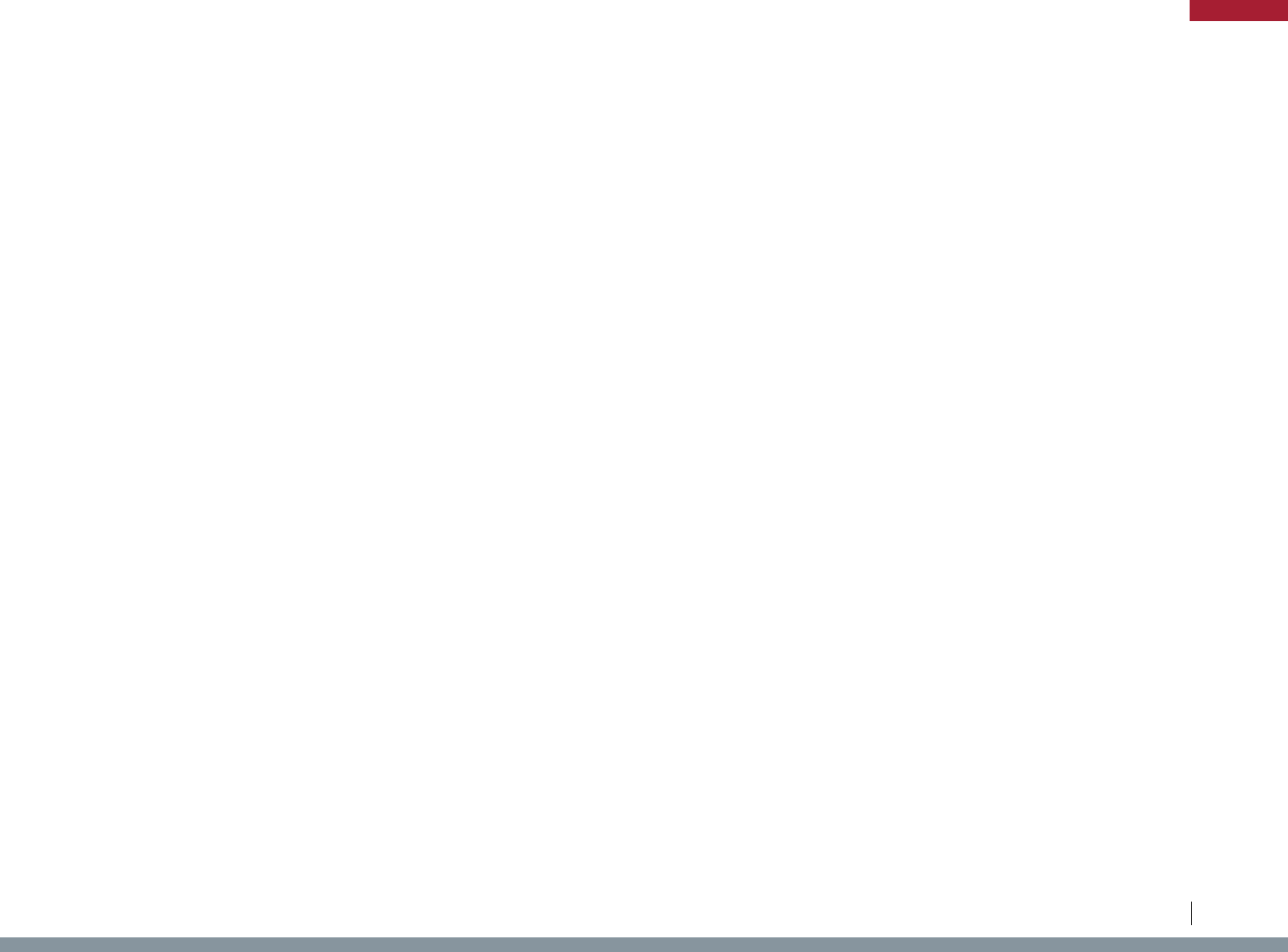
State Law/Regulation Potentially Impacted Industry Agricultural Product Regulation Type Purpose Description
AL Ala. Admin. Code r. 80-3-6-.13 Livestock Livestock Importation
Disease/Pest
Prevention
Import requirements for livestock and poultry - certificate of veterinary
inspection, permit, prohibition on diseased or exposed animals
AL Ala. Admin. Code r. 80-3-6-.16 Livestock Cattle Importation
Disease/Pest
Prevention
Prohibition on importation of cattle infested with ticks or from tick-
quarantined areas
AL Ala. Admin. Code r. 80-3-6-.18 Livestock Cattle, Sheep, Goats Importation
Disease/Pest
Prevention
Import restrictions on cattle, sheep, and goats - scabies and other
disease prohibitions
AL Ala. Admin. Code r. 80-3-6-.21 Livestock Poultry Importation
Disease/Pest
Prevention
Importation requirements for poultry for breeding purposes - pollorum
disease
AL Ala. Admin. Code r. 80-3-6-.23 Game Animals Game Animals Inspection
Disease/Pest
Prevention
Importation requirements for wild and semi-wild animals including
cervids and other game animals - brucellosis, tuberculosis, chronic
wasting disease
AL Ala. Admin. Code r. 80-3-6-.35 Livestock Ratites Importation
Disease/Pest
Prevention
Importation requirements for ratites - certificate of veterinary inspection,
identification, free from disease, avian influenza test
AL Ala. Admin. Code r. 80-3-6-.36 Livestock Livestock Importation
Disease/Pest
Prevention
Prohibition on importation of certain livestock with vesicular stomatitis,
conditions for entry
AL Ala. Admin. Code r. 80-3-6-.37 Livestock Goats Importation
Disease/Pest
Prevention
Importation requirements for goats for dairy purposes - Official
Certificate of Veterinary Inspection, brucellosis, tuberculosis, scabies,
foot rot, contagious ecthyma
AL Ala. Admin. Code r. 80-3-6-.38 Livestock Livestock Importation
Disease/Pest
Prevention
Importation requirements for cattle from Wyoming - entry permit,
brucellosis test
AL Ala. Admin. Code r. 80-3-7-.04 Livestock Cattle Importation
Disease/Pest
Prevention
Importation requirements for cattle - prohition on entry from
tuberculosis quaratine areas
AL Ala. Admin. Code r. 80-3-7-.07 Livestock
Cattle, Bison, Goats,
Cervids
Importation
Disease/Pest
Prevention
Importation requirements for cattle, bison, goats, and cervids from
Michigan - entry permit, tuberculosis test
AL Ala. Code § 2-14-4 Livestock Bees Importation
Disease/Pest
Prevention
Importation requirements for bees
AL Ala. Code § 2-15-155 Livestock Livestock Importation
Disease/Pest
Prevention
Importation requirements for cattle - certificate of health, veterinary
examination, free from disease
AL Ala. Code § 2-19-129 Cotton Cotton Importation
Disease/Pest
Prevention
Boll weevil and pink bollworm restrictions
AL Ala. Code § 2-25-13 Plants Plant Products Importation
Disease/Pest
Prevention
Authority to quarantine plants, plant products, and soils
AL Ala. Admin. Code r. 80-1-22-.36 Food Food Labeling Food Safety Noxious weed seed restrictions
AL Ala. Code § 41-16-27
Agricultural
Products
Agricultural Products Procurement Market Support Regulation of government procurement of agricultural products
AL Ala. Code § 41-16-57
Agricultural
Products
Agricultural Products Procurement Market Support Regulation of government procurement of agricultural products
AR Ark. Code § 2-40-801 Livestock Horses Importation
Disease/Pest
Prevention
Importation requirements for horses - Equine Infectious Anemia
AR Ark. Code R. § 002.01.1-09.11 Live Animals
Wildlife, Exotic
Animals
Importation
Disease/Pest
Prevention
Importation Of Certain Living Wildlife Prohibited and exceptions
AR Ark. Code R. § 002.01.1-34.11 Live Animals Turtles Importation
Disease/Pest
Prevention
Importation Of Alligator Snapping Turtles, Razorback Musk Turtles, And
Chicken Turtles Prohibited
AR Ark. Code R. § 002.01.1-35.11 Fish Fish Importation
Disease/Pest
Prevention
Importation requirements for fish - Viral Hemorrhagic Septicemia
AR Ark. Code R. § 125.00.12 Livestock
Livestock, Exotic
Animals
Importation
Disease/Pest
Prevention
Arkansas health requirements governing the entry of livestock, poultry,
and exotic animals
54
Legislative Analysis of S.2019 / H.R.4417: The “Ending Agricultural Trade Suppression Act”
APPENDIX
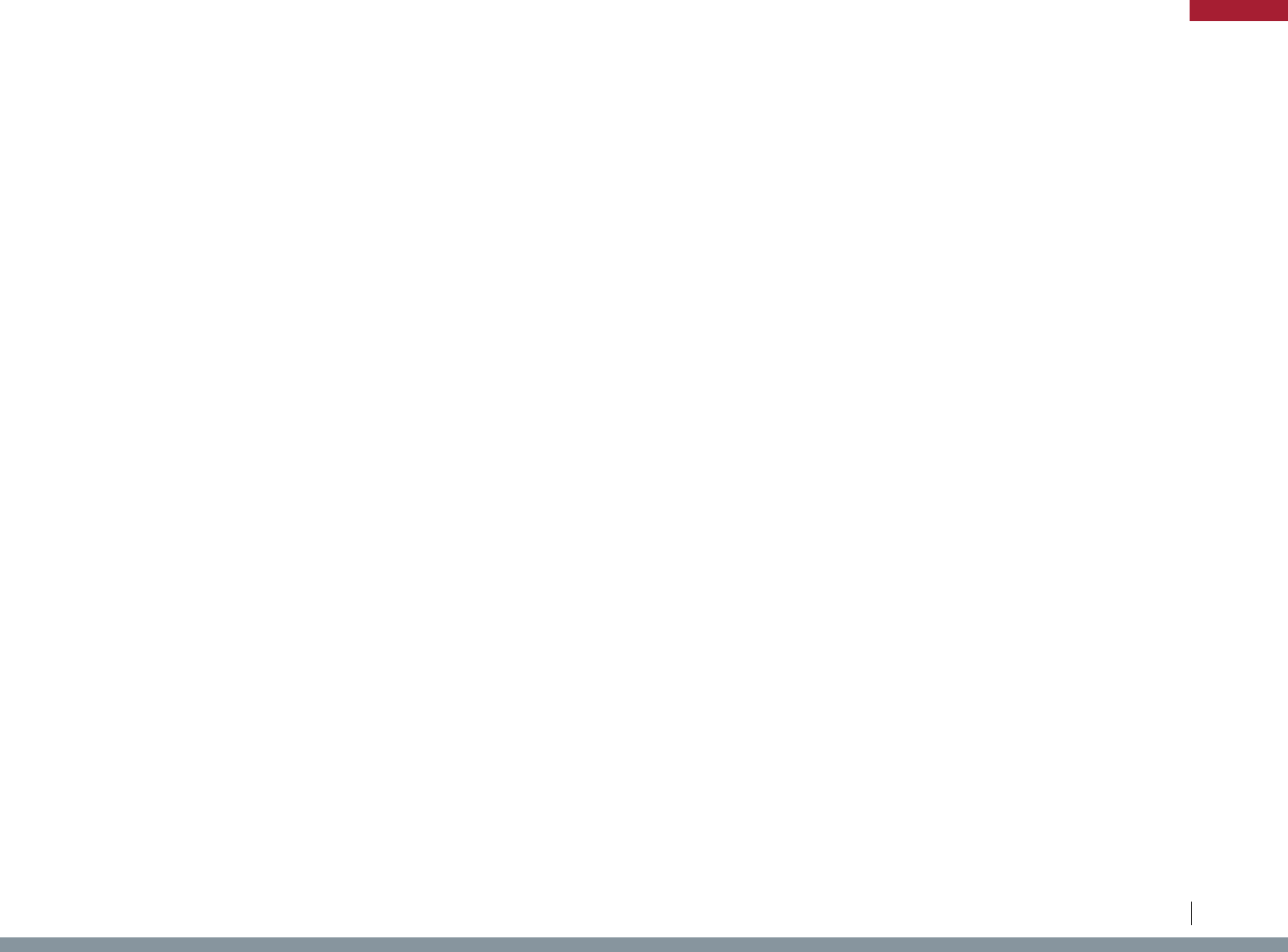
State Law/Regulation Potentially Impacted Industry Agricultural Product Regulation Type Purpose Description
AR Ark. Code R. § 125.00.14 Livestock
Livestock, Exotic
Animals
Importation
Disease/Pest
Prevention
Exhibition Health Requirements for Livestock, Poultry, and Exotic
Animals
AR Ark. Code R. § 125.00.15 Livestock Poultry Importation
Disease/Pest
Prevention
Requirements to prevent the introduction of Avian influenza
AR Ark. Code R. § 125.00.17 Livestock Cattle Importation
Disease/Pest
Prevention
Regulation prescribing procedures for the identification and movement
of unvaccinated female cattle
AR Ark. Code R. § 209.01.4-2 Livestock Swine Importation
Disease/Pest
Prevention
Importation requirements for swine
AR Ark. Code R. § 209.01.5-I Livestock Horses Importation
Disease/Pest
Prevention
Importation requirements for horses Equine Infectious Anemia
AR Ark. Code R. § 209.02 Plants Plants Importation
Disease/Pest
Prevention
Rules on plant diseases and pests
AR Ark. Code R. § 209.02.1-I Plants Plants Importation
Disease/Pest
Prevention
Plant diseases, insect pests and noxious weeds declared to be a
public nuisance - Purple Loosestrife, Giant salvinia, Water Hyacinth,
Japanese Blood Grass
AR Ark. Code R. § 209.02.1-VI Crops Sweet Potatoes Importation
Disease/Pest
Prevention
Sweet Potato Weevil restrictions
AR Ark. Code R. § 209.02.1-VIII Plants Plants, Plant
Products
Importation
Disease/Pest
Prevention
Quarantine of any product or substance which may hereafter be found
capable of spreading the imported fire ant
AR Ark. Code R. § 209.02.10-IX Cotton Cotton Importation
Disease/Pest
Prevention
Pink Bollworm violations
AR Ark. Code R. § 209.02.9-3 Livestock Bees Importation
Disease/Pest
Prevention
Importation Requirements for Bees
AR Ark. Code § 2-15-203 Food Rice Quality Standards Product Quality Prohibition of rice with characteristics of commercial impact
AZ Ariz. Admin. Code § 12-4-430 Live Animals Cervids Importation
Disease/Pest
Prevention
Importation requirements for cervids - Chronic Wasting Disease and
other diseases Embargo
AZ Ariz. Admin. Code § 3-2-404 Livestock Swine Importation
Disease/Pest
Prevention
Importation, Manufacture, Sale, and Distribution of Biologicals and
Semen
AZ Ariz. Admin. Code § 3-2-605 Livestock Live Animals Importation
Disease/Pest
Prevention
Hold order for animals entering illegally
AZ Ariz. Admin. Code § 3-2-606 Livestock Live Animals Importation
Disease/Pest
Prevention
Certificate of Veterinary Inspection requirements for importation
AZ Ariz. Admin. Code § 3-2-607 Livestock Live Animals Importation
Disease/Pest
Prevention
Entry Permits for importation
AZ Ariz. Admin. Code § 3-2-612 Livestock Cattle, Bison Importation
Disease/Pest
Prevention
Importation requirements for cattle and bison - Entry Permits,
brucellosis, marking, and other requirements
AZ Ariz. Admin. Code § 3-2-613 Livestock Swine Importation
Disease/Pest
Prevention
Importation requirements for swine - Pseudorabies and brucellosis
AZ Ariz. Admin. Code § 3-2-614 Livestock Sheep, Goats Importation
Disease/Pest
Prevention
Importation requirements for sheep and goats - Bluetongue, scrapie,
and brucella
AZ Ariz. Admin. Code § 3-2-615 Livestock Horses Importation
Disease/Pest
Prevention
Importation requirements for horses - Equine Infectious Anemia
AZ Ariz. Admin. Code § 3-2-617 Livestock Poultry Importation
Disease/Pest
Prevention
Certificate of Veterinary Inspection Requirement
AZ Ariz. Admin. Code § 3-2-618 Live Animals Psittacine Birds Importation
Disease/Pest
Prevention
Importation requirements for Psittacine birds - certificate of veterinary
inspection, avian chlamydiosis
55
Legislative Analysis of S.2019 / H.R.4417: The “Ending Agricultural Trade Suppression Act”
APPENDIX
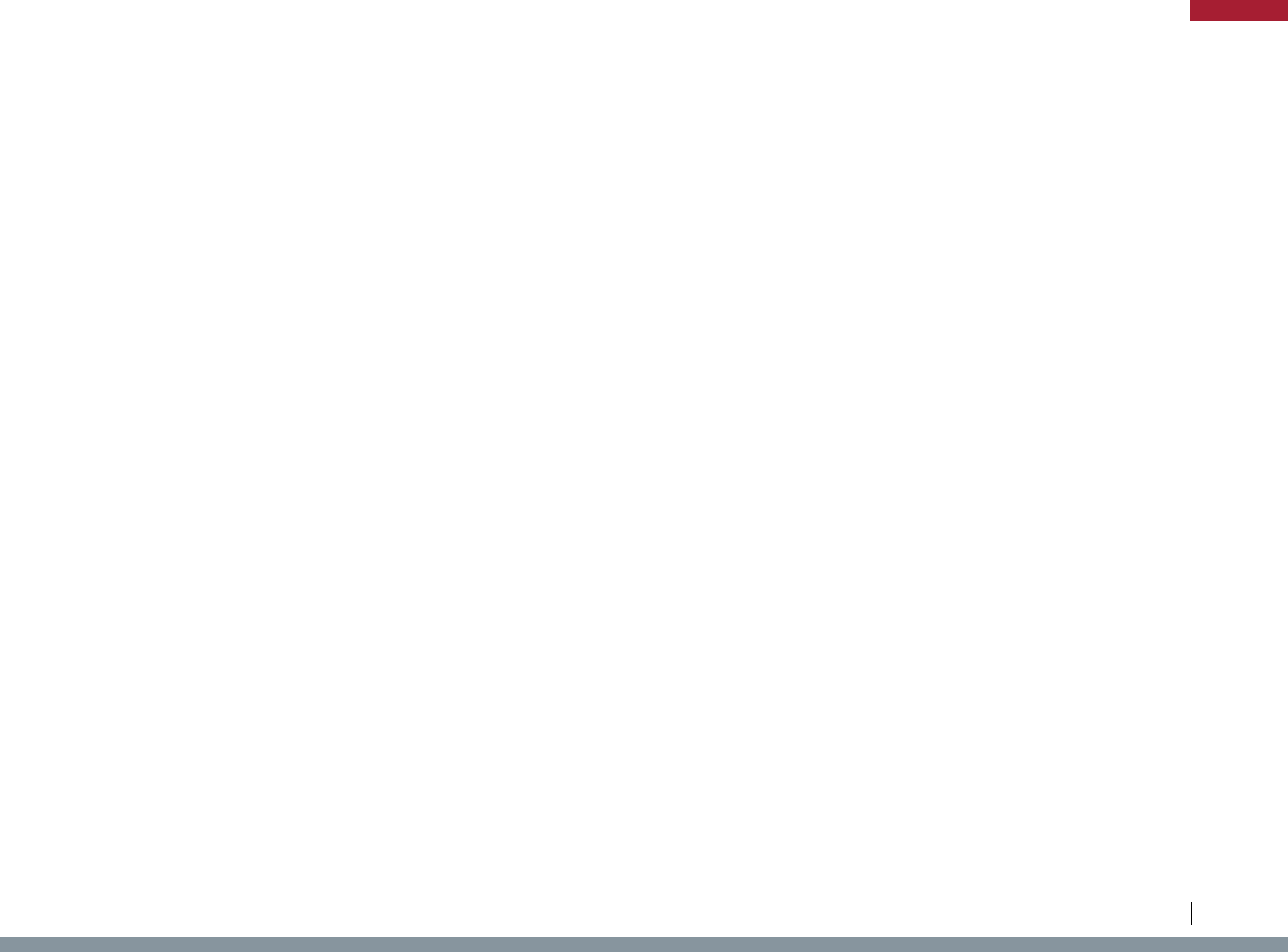
State Law/Regulation Potentially Impacted Industry Agricultural Product Regulation Type Purpose Description
AZ Ariz. Admin. Code § 3-4-231 Nuts
Pecans, Other Nut
Trees
Importation
Disease/Pest
Prevention
Nut Pests - Importation restrictions - Pecan Weevil, etc.
AZ Ariz. Admin. Code § 3-4-233 Crops Lettuce Importation
Disease/Pest
Prevention
Lettuce Mosaic Virus Restrictions
AZ Ariz. Admin. Code § 3-4-238 Crops Produce Importation
Disease/Pest
Prevention
Whitefly Pests
AZ Ariz. Admin. Code § 3-4-242 Fruit Citrus Trees Importation
Disease/Pest
Prevention
Brown Citrus Aphid restrictions
AZ Ariz. Admin. Code § 3-4-403 Plants Plants Importation
Disease/Pest
Prevention
Noxious weed restrictions
AZ Ariz. Rev. Stat. § 3-209 Plants Plant Products Importation
Disease/Pest
Prevention
Authority to quarantine plants, plant products, and soils
AZ Ariz. Rev. Stat. § 3-210 Plants Plant Products Importation
Disease/Pest
Prevention
Authority to treat or destroy infected plants or products imported
AZ Ariz. Rev. Stat. § 3-211 Nursery Stock Nursery Plants Labeling
Disease/Pest
Prevention
Labeling of Imported or Shipped Plants and Seeds
AZ Ariz. Admin. Code § 3-2-805 Food Milk Quality Standards Product Quality Grade “A” Milk - tuberculosis testing of animals required
CA Cal. Code Regs. tit. 3, § 1320.1 Food Eggs Prohibition Animal Welfare
Prohibition on sale of shell eggs or liquid eggs for human food if it is
the product of an egg-laying hen confined in an enclosure that fails to
comply with standards
CA Cal. Code Regs. tit. 3, § 1321.1 Food Meat Prohibition Animal Welfare
Prohibition on sale of meat from calf confined in an enclosure that fails
to comply with standards
CA Cal. Code Regs. tit. 3, § 1322.1 Food Meat Prohibition Animal Welfare
Prohibition on sale of whole pork meat for human food if the whole pork
meat is the product of a breeding pig, or the product of the immediate
offspring of a breeding pig, that was confined at any time during the
production cycle for said product in an enclosure that fails to comply
with standards
CA Cal. Health & Safety Code § 25982 Food Foie Gras Prohibition Animal Welfare Prohibition on sale of foie gras
CA Cal. Health & Safety Code § 25996 Food Eggs Prohibition Animal Welfare
Prohibition on sale or contract for sale of shelled eggs for human
consumption for failure to comply with animal care standards
CA Cal. Penal Code § 598c Livestock Equines Prohibition Animal Welfare Prohibition on Importation of horses for slaughter
CA Cal. Penal Code § 379 Drugs Salvia Prohibition Consumer Safety Recreational drug ban - salvia
CA Cal. Code Regs. tit. 14, § 166 Fish Salmon Importation
Disease/Pest
Prevention
Salmon importation regulations
CA Cal. Code Regs. tit. 14, § 236 Aquaculture Fish Reporting
Disease/Pest
Prevention
Aquaculture Import and Disease Reporting of Viral Hemorrhagic
Septicemia
CA Cal. Code Regs. tit. 14, § 245 Fish Fish Importation
Disease/Pest
Prevention
Fish importation requirements
CA Cal. Code Regs. tit. 14, § 40 Live Animals Snakes Importation
Disease/Pest
Prevention
Snake importation requirements
CA Cal. Code Regs. tit. 14, § 671 Live Animals Live Animals Importation
Disease/Pest
Prevention
Importation, transportation and possession of certain live restricted
animals
CA Cal. Code Regs. tit. 14, § 712 Live Animals Cervids Importation
Disease/Pest
Prevention
Chronic Wasting Disease Restrictions
CA Cal. Code Regs. tit. 17, § 2612.1 Live Animals Turtles Importation
Disease/Pest
Prevention
Importation requirements for turtles - Turtle Salmonellosis
56
Legislative Analysis of S.2019 / H.R.4417: The “Ending Agricultural Trade Suppression Act”
APPENDIX
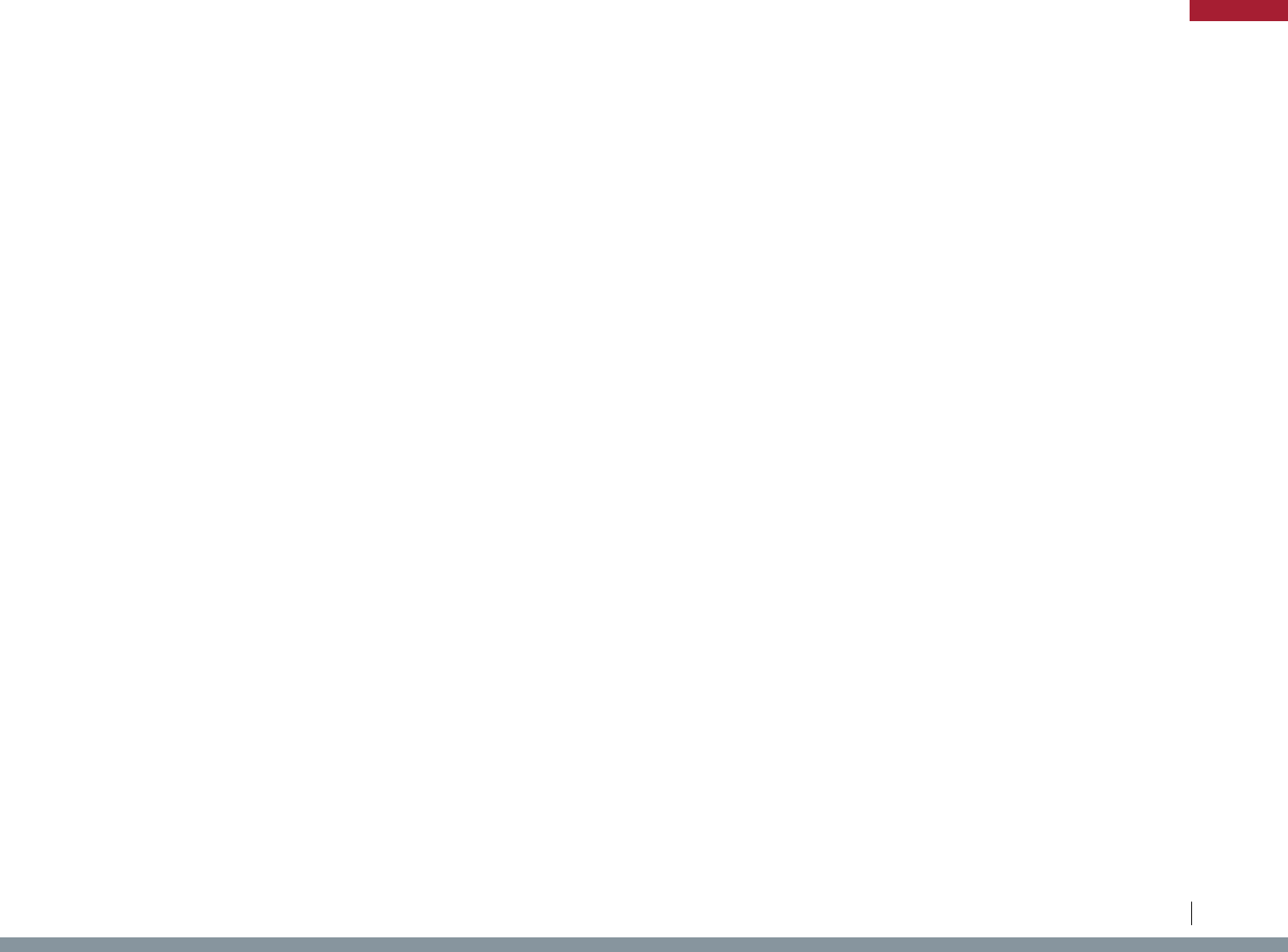
State Law/Regulation Potentially Impacted Industry Agricultural Product Regulation Type Purpose Description
CA Cal. Code Regs. tit. 3, § 3251 Forestry Oak Trees Importation
Disease/Pest
Prevention
Oak Wilt Restrictions
CA Cal. Code Regs. tit. 3, § 3252 Crops Produce Importation
Disease/Pest
Prevention
Fruit Fly Inspection, Certification for Importation
CA Cal. Code Regs. tit. 3, § 3256 Crops Produce Importation
Disease/Pest
Prevention
Fruit Fly Inspection, Certification for Importation
CA Cal. Code Regs. tit. 3, § 3257 Crops Sweet Potatoes Importation
Disease/Pest
Prevention
Sweet Potato Weevil restrictions
CA Cal. Code Regs. tit. 3, § 3260 Plants Plants Importation
Disease/Pest
Prevention
Restrictions on plants and agricultural products to reduce invasive
pests - nut trees
CA Cal. Code Regs. tit. 3, § 3261 Plants Plants Importation
Disease/Pest
Prevention
Ozonium Rot Root Exterior Restrictions
CA Cal. Code Regs. tit. 3, § 3263 Crops
Corn, Sorghum,
Grains
Importation
Disease/Pest
Prevention
Corn Borer Restrictions
CA Cal. Code Regs. tit. 3, § 3264 Crops
Tomatoes, Potatoes,
Eggplants, Peppers
Importation
Disease/Pest
Prevention
Colorado Potato Beetle exterior quarantine - prohibited with exceptions
CA Cal. Code Regs. tit. 3, § 3266 Plants Plants Importation
Disease/Pest
Prevention
Plum Curculio and Blueberry Maggot Exterior Restrictions
CA Cal. Code Regs. tit. 3, § 3271 Crops Potatoes, Tomatoes Importation
Disease/Pest
Prevention
Nematodes Restrictions
CA Cal. Code Regs. tit. 3, § 3272 Plants Plants Importation
Disease/Pest
Prevention
Cornstalk Borers and Sugarcane Borer Exterior Restrictions
CA Cal. Code Regs. tit. 3, § 3273 Plants Plants Importation
Disease/Pest
Prevention
Walnut and Pecan Pests Exterior Quarantine Restrictions
CA Cal. Code Regs. tit. 3, § 3274 Plants Plants Importation
Disease/Pest
Prevention
Cedar-Apple Rust Disease Exterior Quarantine Restriction
CA Cal. Code Regs. tit. 3, § 3280 Plants Plants Importation
Disease/Pest
Prevention
Japanese Beetle Exterior Quarantine Restriction
CA Cal. Code Regs. tit. 3, § 3282 Fruit Palms Importation
Disease/Pest
Prevention
Date Palm and Coconut Palm Lethal Yellowing restrictions
CA Cal. Code Regs. tit. 3, § 3591.6 Forestry Trees Importation
Disease/Pest
Prevention
Gypsy Moth Restrictions
CA Cal. Code Regs. tit. 3, § 3654 Fruit Grapes Importation
Disease/Pest
Prevention
Inspection of Shipments and Disposition of Infested Shipments for
eliminating vectors
CA Cal. Code Regs. tit. 3, § 3655 Fruit Grapes Importation
Disease/Pest
Prevention
Movement of grapes during shipment
CA Cal. Code Regs. tit. 3, § 3659 Plants Plants Importation
Disease/Pest
Prevention
Movement of grapes during shipment
CA Cal. Code Regs. tit. 3, § 3662 Food Citrus Importation
Disease/Pest
Prevention
Citrus Standards for Movement
CA Cal. Code Regs. tit. 3, § 751.1 Livestock Livestock Importation
Disease/Pest
Prevention
Livestock importation restrictions
CA Cal. Code Regs. tit. 3, § 758 Livestock Cattle Importation
Disease/Pest
Prevention
Cattle importation restrictions - Bovine Tuberculosis
CA Cal. Code Regs. tit. 3, § 760.5 Livestock Sheep, Goats Importation
Disease/Pest
Prevention
Sheep and goat importation restrictions - Scrapie
57
Legislative Analysis of S.2019 / H.R.4417: The “Ending Agricultural Trade Suppression Act”
APPENDIX
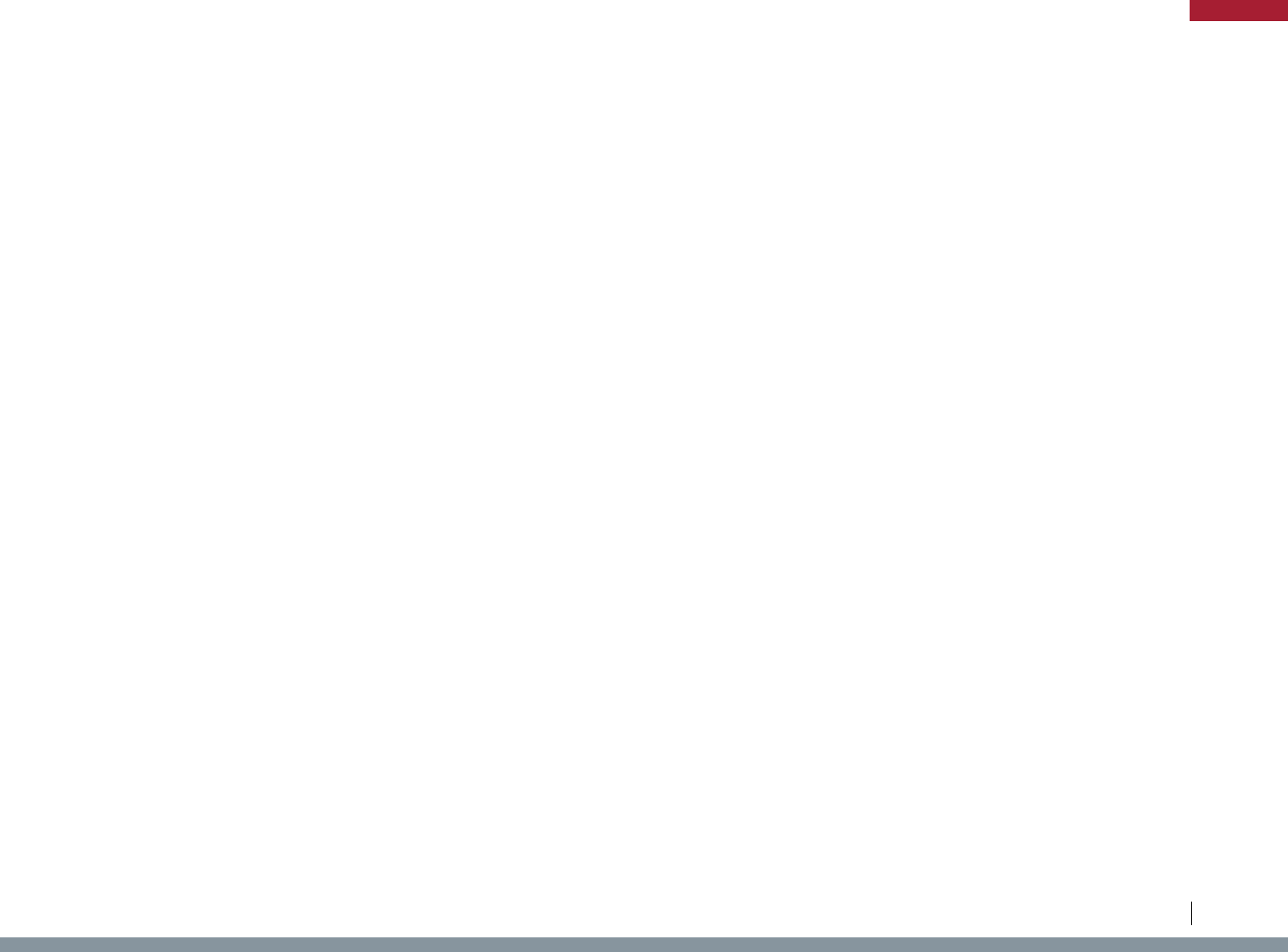
State Law/Regulation Potentially Impacted Industry Agricultural Product Regulation Type Purpose Description
CA Cal. Code Regs. tit. 3, § 760.7 Livestock Livestock Importation
Disease/Pest
Prevention
Livestock importation restrictions - Scabies
CA Cal. Code Regs. tit. 3, § 796.4 Livestock Swine Importation
Disease/Pest
Prevention
Importation requirements for swine not for slaughter - Pseudorabies
CA Cal. Code Regs. tit. 3, § 796.6 Livestock Swine Importation
Disease/Pest
Prevention
Importation requirements for swine for slaughter
CA Cal. Code Regs. tit. 3, § 821.4 Livestock Poultry Importation
Disease/Pest
Prevention
Importation requirements for poultry - Avian Influenza and Newcastle
Disease
CA Cal. Code Regs. tit. 3, § 830.2 Live Animals Live Animals Importation
Disease/Pest
Prevention
General importation requirements for livestock
CA Cal. Code Regs. tit. 3, § 830.3 Live Animals Live Animals Importation
Disease/Pest
Prevention
Veterinary Inspection Requirements for Livestock
CA Cal. Food & Agric. Code § 29042 Livestock Bees Importation
Disease/Pest
Prevention
Importation Requirements for Bees
CA Cal. Food & Agric. Code § 29110 Livestock Bees Importation
Disease/Pest
Prevention
Bee Quarantine Authority
CA Cal. Food & Agric. Code § 29111 Livestock Bees Importation
Disease/Pest
Prevention
Bee Quarantine Authority
CA Cal. Food & Agric. Code § 29120 Livestock Bees Importation
Disease/Pest
Prevention
Importation Requirements for Bees
CA Cal. Food & Agric. Code § 29122 Livestock Bees Importation
Disease/Pest
Prevention
Importation Requirements for Bees
CA Cal. Food & Agric. Code § 29127 Livestock Bees Importation
Disease/Pest
Prevention
Destruction or Treatment of Colonies with American Foulbrood
CA Cal. Food & Agric. Code § 29172 Livestock Bees Certification
Disease/Pest
Prevention
Prohibition on sale of diseased bees, comb, hive, appliance, and
colony
CA Cal. Food & Agric. Code § 52257 Plants Seeds Importation
Disease/Pest
Prevention
Noxious weed seed restrictions
CA Cal. Food & Agric. Code § 6045 Fruit Grapes Importation
Disease/Pest
Prevention
Pierce’s Disease and the Glassy-winged Sharpshooter Restrictions
CA Cal. Food & Agric. Code § 6047.1 Fruit Grapes Importation
Disease/Pest
Prevention
Pierce’s Disease and the Glassy-winged Sharpshooter Restrictions
CA Cal. Food & Agric. Code § 6047.60 Fruit Grapes Importation
Disease/Pest
Prevention
Pierce’s Disease and the Glassy-winged Sharpshooter Restrictions
CA Cal. Food & Agric. Code § 6152 Fruit Figs Quality Standards
Disease/Pest
Prevention
Fig Standards for Sale
CA Cal. Food & Agric. Code § 6156 Fruit Figs Quality Standards
Disease/Pest
Prevention
Fig Standards for sale (Profichi Crop Fig)
CA Cal. Food & Agric. Code § 6157 Fruit Figs Quality Standards
Disease/Pest
Prevention
Fig Standards for sale (Mamme Crop)
CA Cal. Food & Agric. Code § 6401 Plants Plants Importation
Disease/Pest
Prevention
General Plant Import Standards - Quarantine plants to be held for
inspection
CA Cal. Food & Agric. Code § 6441 Plants Plants Importation
Disease/Pest
Prevention
General Plant Import standards (Disinfection of conveyance)
CA Cal. Food & Agric. Code § 6461 Plants Plants Importation
Disease/Pest
Prevention
General Plant Import standards (Pest-infested shipments)
58
Legislative Analysis of S.2019 / H.R.4417: The “Ending Agricultural Trade Suppression Act”
APPENDIX
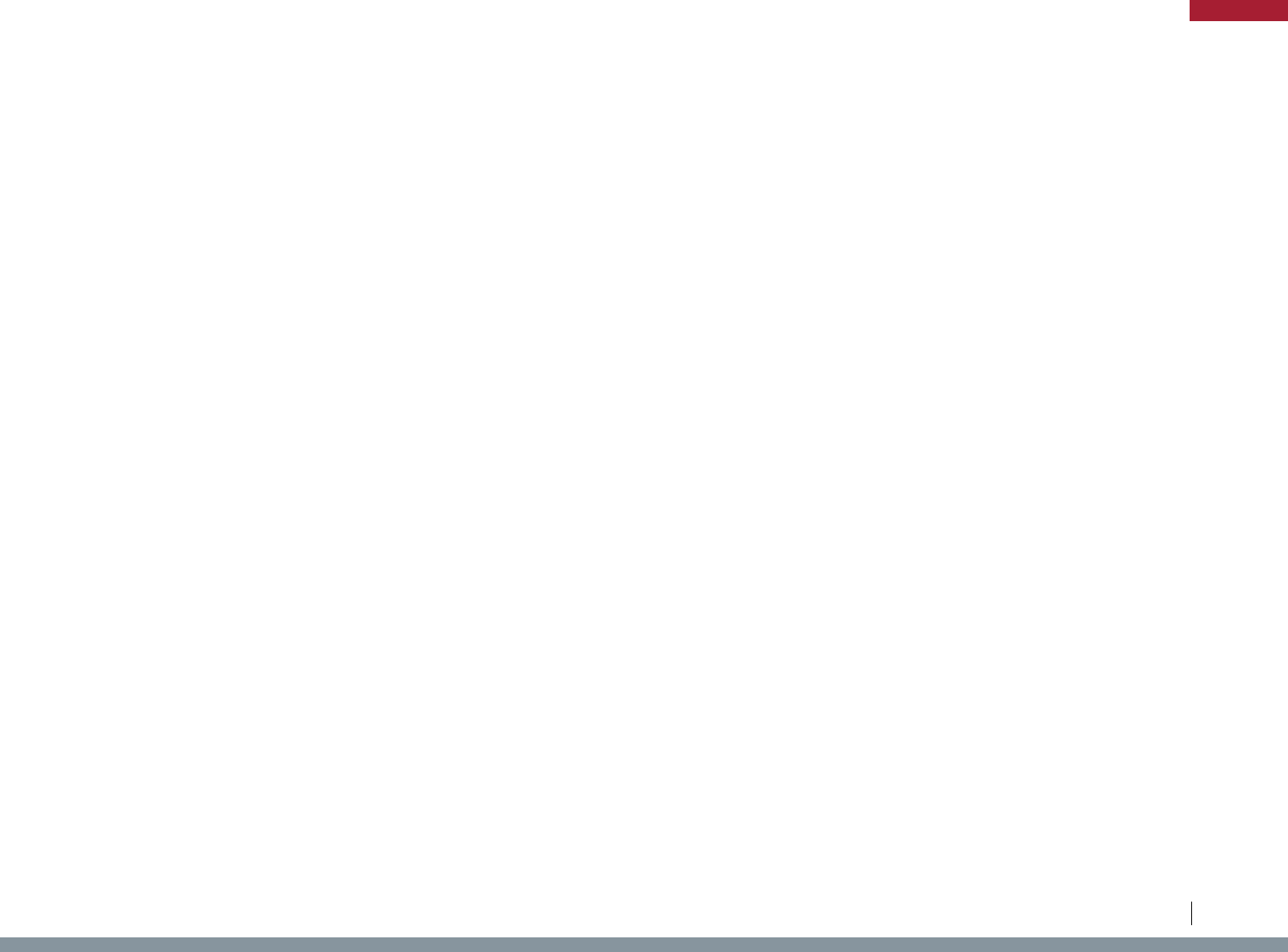
State Law/Regulation Potentially Impacted Industry Agricultural Product Regulation Type Purpose Description
CA Cal. Food & Agric. Code § 6461.5 Fruit Grapes Importation
Disease/Pest
Prevention
Pierce’s Disease and the Glassy-winged Sharpshooter Restrictions
CA Cal. Food & Agric. Code § 6464 Plants Plants Importation
Disease/Pest
Prevention
General Plant Import standards (Treatment for destroying pests)
CA Cal. Food & Agric. Code § 7501 Plants Plants Importation
Disease/Pest
Prevention
Noxious weed restrictions - pest seed
CA Cal. Food & Agric. Code § 9641.5 Livestock Horses Importation
Disease/Pest
Prevention
Horse and other Equidae importation restrictions - Equine Infectious
Anemia
CA Cal. Pub. Cont. Code § 7107
Agricultural
Products
Agricultural Products Procurement Market Support Regulation of government procurement of agricultural products
CA Cal. Code Regs. tit. 3, § 3281 Plants Aquatic Plants Importation Sustainability Hydrilla Restrictions
CA Cal. Fish & Game Code § 2301 Fish Shellfish Importation Sustainability Dreissenid Mussels
CO Colo. Rev. Stat. § 35-21-203 Livestock Poultry Prohibition Animal Welfare Confinement of egg-laying hens - sale of eggs in Colorado
CO Colo. Rev. Stat. § 35-80-108 Pets
Dogs, Cats, Birds,
Turtles, Rabbits,
Other Animals
Prohibition Animal Welfare Unlawful to import certain animals
CO Colo. Rev. Stat. § 18-18-406.2 Drugs Salvia Prohibition Consumer Safety Recreational drug ban - salvia
CO 2 Code Colo. Regs. § 406-0:007 Livestock Cervids Importation
Disease/Pest
Prevention
Importation permit requirements for wildlife including captive cervids -
Brucellosis, tuberculosis
CO 2 Code Colo. Regs. § 406-0:014 Fish Fish Importation
Disease/Pest
Prevention
Importation requirements for fish - health inspections and certifications
CO 8 Code Colo. Regs. § 1201-16:2 Livestock Sheep, Goats Importation
Disease/Pest
Prevention
Importation requirements for sheep and goats - certificate of veterinary
inspection and permit
CO 8 Code Colo. Regs. § 1201-17:3 Livestock Livestock Importation
Disease/Pest
Prevention
Requirements for interstate movement of alternative livestock,
including live animals, gametes, eggs, sperm, or other genetic material
- certificate of veterinary inspection and permit
CO 8 Code Colo. Regs. § 1201-19:2 Livestock Livestock Importation
Disease/Pest
Prevention
Livestock import requirements - veterinarian statement concerning
certain designated or reportable diseases
CO 8 Code Colo. Regs. § 1201-19:9 Livestock Swine Importation
Disease/Pest
Prevention
Import permit number and certificate of veterinary inspection required
for swine
CO 8 Code Colo. Regs. § 1201-20:7 Livestock Poultry Importation
Disease/Pest
Prevention
Standards for live bird markets
CO 8 Code Colo. Regs. § 1203-6:7 Plants Seeds Prohibition
Disease/Pest
Prevention
Prohibition on weeds in seeds - restriction on number of weeds in a lot
of seeds
CO Colo. Rev. Stat. § 24-103-906
Agricultural
Products
Agricultural Products Procurement Market Support Government procurement regulations
CO Colo. Rev. Stat. § 24-103-907
Agricultural
Products
Agricultural Products Procurement Market Support
Government procurement regulations - preference for state agricultural
products
CO 8 Code Colo. Regs. § 1203-6:13 Plants Beans Labeling Quality Standards
Labeling and certification requirements for disease free seed beans -
inspection and phytosanitary certification
CO 8 Code Colo. Regs. § 1203-6:15 Plants Seeds Recordkeeping Quality Standards Requirement for responsible parties to keep records
CT Conn. Agencies Regs. § 22-278-1 Livestock Cattle Importation
Disease/Pest
Prevention
Bovine Tuberculosis, Chronic Wasting Disease
CT Conn. Agencies Regs. § 22-278-6 Live Animals Cervids Importation
Disease/Pest
Prevention
Prohibition on importation of captive cervids
CT Conn. Agencies Regs. § 22-278-A2 Livestock Sheep, Goats Importation
Disease/Pest
Prevention
Permitting, Scrapie and Other Diseases
59
Legislative Analysis of S.2019 / H.R.4417: The “Ending Agricultural Trade Suppression Act”
APPENDIX
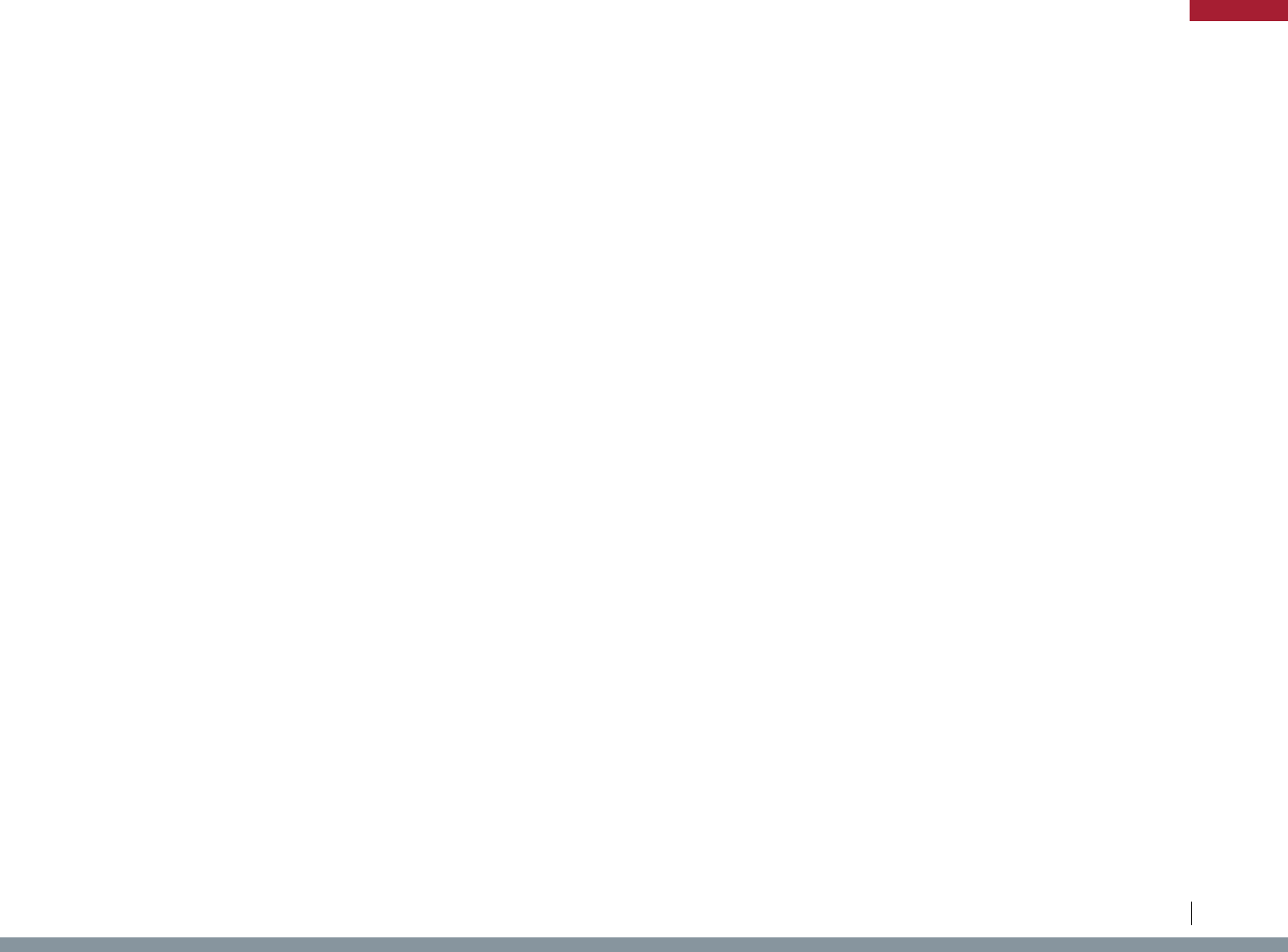
State Law/Regulation Potentially Impacted Industry Agricultural Product Regulation Type Purpose Description
CT Conn. Agencies Regs. § 22-308-1 Livestock Cattle Importation
Disease/Pest
Prevention
Bovine Tuberculosis
CT Conn. Agencies Regs. § 22-308-2 Livestock Cattle Importation
Disease/Pest
Prevention
Importation requirements for cattle - tuberculosis
CT Conn. Agencies Regs. § 22-308-3 Livestock Cattle Importation
Disease/Pest
Prevention
Importation requirements for cattle - tuberculosis
CT Conn. Agencies Regs. § 22-59-1a Plants Plants Importation
Disease/Pest
Prevention
Grower's declaration
CT Conn. Agencies Regs. § 22-59-8 Plants Seeds Prohibition
Disease/Pest
Prevention
Prohibition of seeds containing primary noxious weeds from sale
CT Conn. Agencies Regs. § 22-59-8a Plants Plants Importation
Disease/Pest
Prevention
Noxious weed restrictions
CT Conn. Agencies Regs. § 22-59-8b Plants Plants Importation
Disease/Pest
Prevention
Noxious weed restrictions
CT Conn. Agencies Regs. § 22-84-5b Forestry Nursery Stock Importation
Disease/Pest
Prevention
Importation restrictions for nursery stock - Japanese Cedar Longhorn
Beetle, infested trees or other regulated items shipped into Connecticut
may be returned to the point of origin or destroyed
CT Conn. Agencies Regs. § 22-84-5e Forestry Nursery Stock Importation
Disease/Pest
Prevention
Importation restrictions for nursery stock - Emerald Ash Borer and
Asian longhorned beetle
CT Conn. Agencies Regs. § 26-55-1 Fish Fish Importation
Disease/Pest
Prevention
Importation Restrictions: live fish and fish eggs
CT Conn. Agencies Regs. § 26-55-6 Live Animals Live Animals Importation
Disease/Pest
Prevention
Importation Restrictions: wild birds, mammals, reptiles, amphibians,
and invertibrates
CT Conn. Agencies Regs. § 26-55-7 Live Animals Butterflies Prohibition
Disease/Pest
Prevention
Import Restrictions: Butterflies
CT Conn. Gen. Stat. § 22-278 Livestock Livestock Importation
Disease/Pest
Prevention
Authority to regulate livestock
CT Conn. Gen. Stat. § 22-279 Livestock Livestock Importation
Disease/Pest
Prevention
Quarantine of animals
CT Conn. Gen. Stat. § 22-319a Livestock Swine Importation
Disease/Pest
Prevention
Hog cholera serum and vaccine - no hogs shall be imported into this
state if hog cholera serum or vaccine has been administered to them.
CT Conn. Gen. Stat. § 22-319b Livestock Swine Importation
Disease/Pest
Prevention
Importation requirements for swine - permit, certificate of veterinary
inspection, pseudorabies, brucellosis
CT Conn. Gen. Stat. § 22-415c Livestock Horses Importation
Disease/Pest
Prevention
Importation requirements for horses - official interstate health
certificate, official equine infectious anemia test certificate
CT Conn. Gen. Stat. § 22-90 Livestock Bees Importation
Disease/Pest
Prevention
Importation Requirements for Bees - certificate of health required
CT Conn. Gen. Stat. § 4a-51
Agricultural
Products
Agricultural Products Procurement Market Support
Regulation of government procurement of agricultural products - in-
state preference
CT Conn. Gen. Stat. § 4a-59
Agricultural
Products
Agricultural Products Procurement Market Support
Regulation of government procurement of agricultural products -
preferences for certain businesses
CT Conn. Gen. Stat. § 22a-381d Plants Plants Importation Sustainability Invasive plant import restrictions
CT Conn. Gen. Stat. § 26-142a(b) Fish Fish Licensing Sustainability
Commercial fish license required to land regulated species regardless
of where taken
CT Conn. Gen. Stat. § 26-157a Fish Lobster Licensing Sustainability Lobster license required, equipment requirements
CT Conn. Gen. Stat. § 26-159a Fish Fish Equipment Sustainability
Regulations concerning certain sport and commercial fishing in the
marine district and possession of certain species
60
Legislative Analysis of S.2019 / H.R.4417: The “Ending Agricultural Trade Suppression Act”
APPENDIX
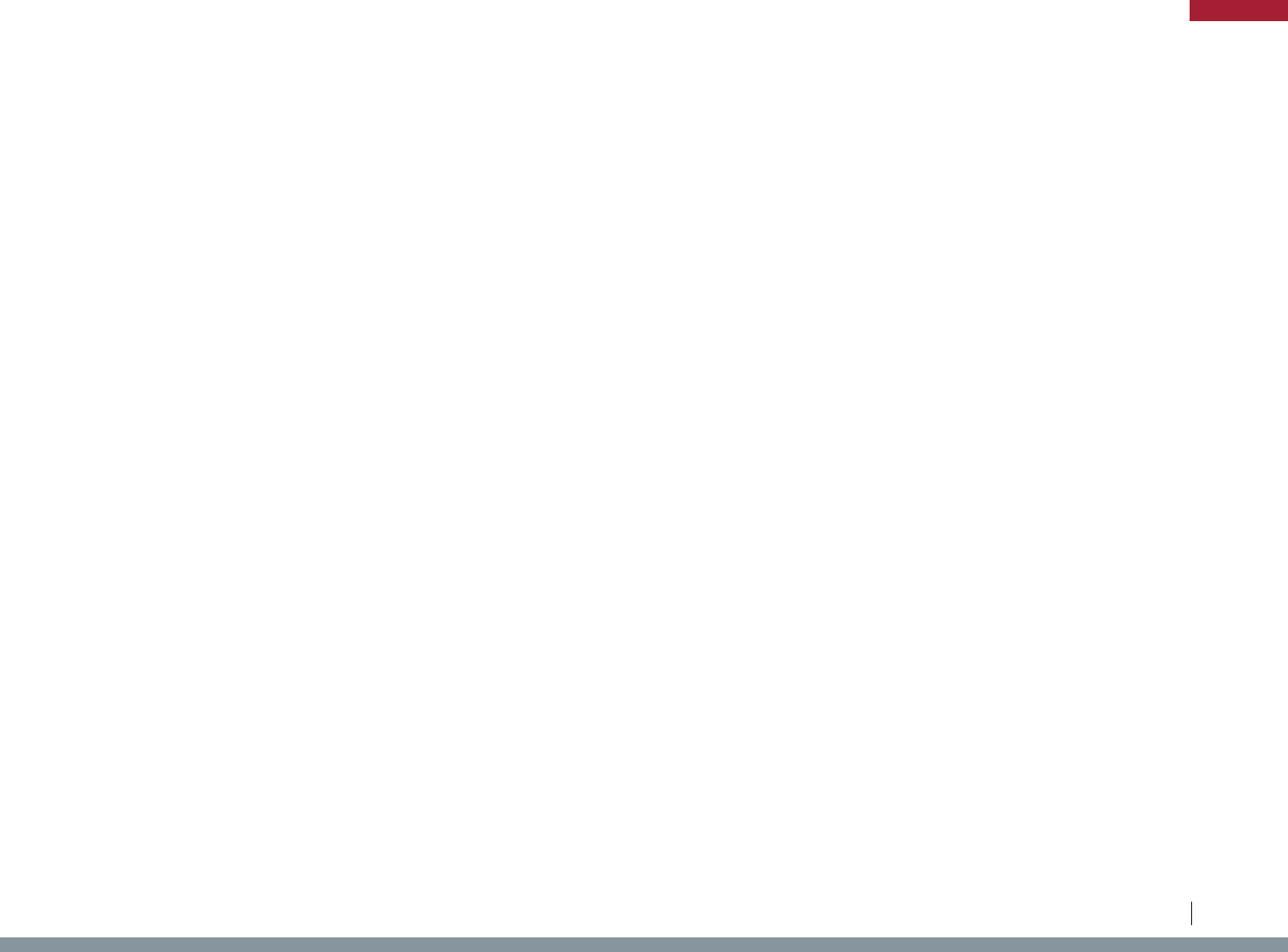
State Law/Regulation Potentially Impacted Industry Agricultural Product Regulation Type Purpose Description
DE Del. Code tit. 16, § 4714 Drugs Salvia Prohibition Consumer Safety Recreational drug ban - salvia
DE 16-4202 Del. Admin. Code § 10.0 Live Animals Live Animals Importation
Disease/Pest
Prevention
Prohibition on importing or offering for sale domestic or wild animals
infected or suspected to be infected with a disease communicable from
animals to humans
DE 3-801 Del. Admin. Code § 3.0 Plants Plants Importation
Disease/Pest
Prevention
Noxious weed restrictions - unlawful to import designated noxious
weeds into this State
DE 3-901 Del. Admin. Code § 2.0 Livestock
Poultry, Hatching
Eggs
Importation
Disease/Pest
Prevention
Importation requirements for poultry and hatching eggs - health
certification, testing for Avian Influenza, Pullorum-Typhoid, movement
permit for some
DE 3-902 Del. Admin. Code § 4.0 Livestock Sheep, Goats Importation
Disease/Pest
Prevention
Importation requirements for sheep and goats - certificate of veterinary
inspection, identification, Scrapie
DE 3-904 Del. Admin. Code § 1.0 Livestock Livestock Importation
Disease/Pest
Prevention
All livestock and poultry imports must meet Delaware Animal Health
requirements
DE 3-904 Del. Admin. Code § 13.0 Livestock
Poultry, Hatching
Eggs
Importation
Disease/Pest
Prevention
Importation requirements for poultry and hatching eggs - all poultry
imported into the state shall be from approved pullorum typhoid free
flocks
DE 3-904 Del. Admin. Code § 5.0 Livestock Cattle Importation
Disease/Pest
Prevention
Importation requirements for cattle - tuberculosis, brucellosis testing
DE 3-904 Del. Admin. Code § 6.0 Livestock Equines Importation
Disease/Pest
Prevention
Importation requirements for equines - health certificate, Equine
Infectious Anemia testing
DE 3-904 Del. Admin. Code § 7.0 Livestock Swine Importation
Disease/Pest
Prevention
Importation requirements for swine - brucellosis, pseudorabies testing
DE 3-904 Del. Admin. Code § 8.0 Livestock Sheep Importation
Disease/Pest
Prevention
Importation requirements for sheep - must originate from scrapie-free
flock
DE 3-904 Del. Admin. Code § 9.0 Livestock Goats Importation
Disease/Pest
Prevention
Importation requirements for goats - tuberculosis, brucellosis testing
DE 3-905 Del. Admin. Code § 4.0 Live Animals Cervids Importation
Disease/Pest
Prevention
Importation requirements for cervids - certificate of veterinary
inspection, Chronic Wasting Disease
DE Del. Code tit. 3, §7301 Livestock Cattle Importation
Disease/Pest
Prevention
Importation requirements for cattle - certification by inspector,
tuberculosis
DE Del. Code tit. 7, § 928 Fish Finfish Licensing Sustainability
Commercial food fishing license required to land or transfer fish caught
outside State's jurisdictional boundaries
FL Fla. Admin. Code r. 5B-33.003 Crops Potatoes Quality Standards
Consumer
Protection
Requirements for sale of seed potatoes
FL Fla. Admin. Code r. 5B-54.003 Livestock Bees Importation
Consumer
Protection
Prohibition on Africanized Bees
FL Fla. Stat. § 893.03 Drugs Salvia Prohibition Consumer Safety Recreational drug ban - salvia
FL Fla. Admin. Code r. 5B-2.001 Plants Plants Importation
Disease/Pest
Prevention
General Plant Import Standards
FL Fla. Admin. Code r. 5B-2.008 Nursery Stock Nursery Plants Recordkeeping
Disease/Pest
Prevention
Records required for plants infested with plant pests
FL Fla. Admin. Code r. 5B-26.007 Forestry Oak Importation
Disease/Pest
Prevention
Interstate Movement of Nursery Stock or Plant Material
FL Fla. Admin. Code r. 5B-3.003 Plants Plants Importation
Disease/Pest
Prevention
General Plant Import Standards of Nursery Stock
FL Fla. Admin. Code r. 5B-3.0035 Crops Produce Importation
Disease/Pest
Prevention
Fruit Fly Inspection, Certification for Importation
61
Legislative Analysis of S.2019 / H.R.4417: The “Ending Agricultural Trade Suppression Act”
APPENDIX
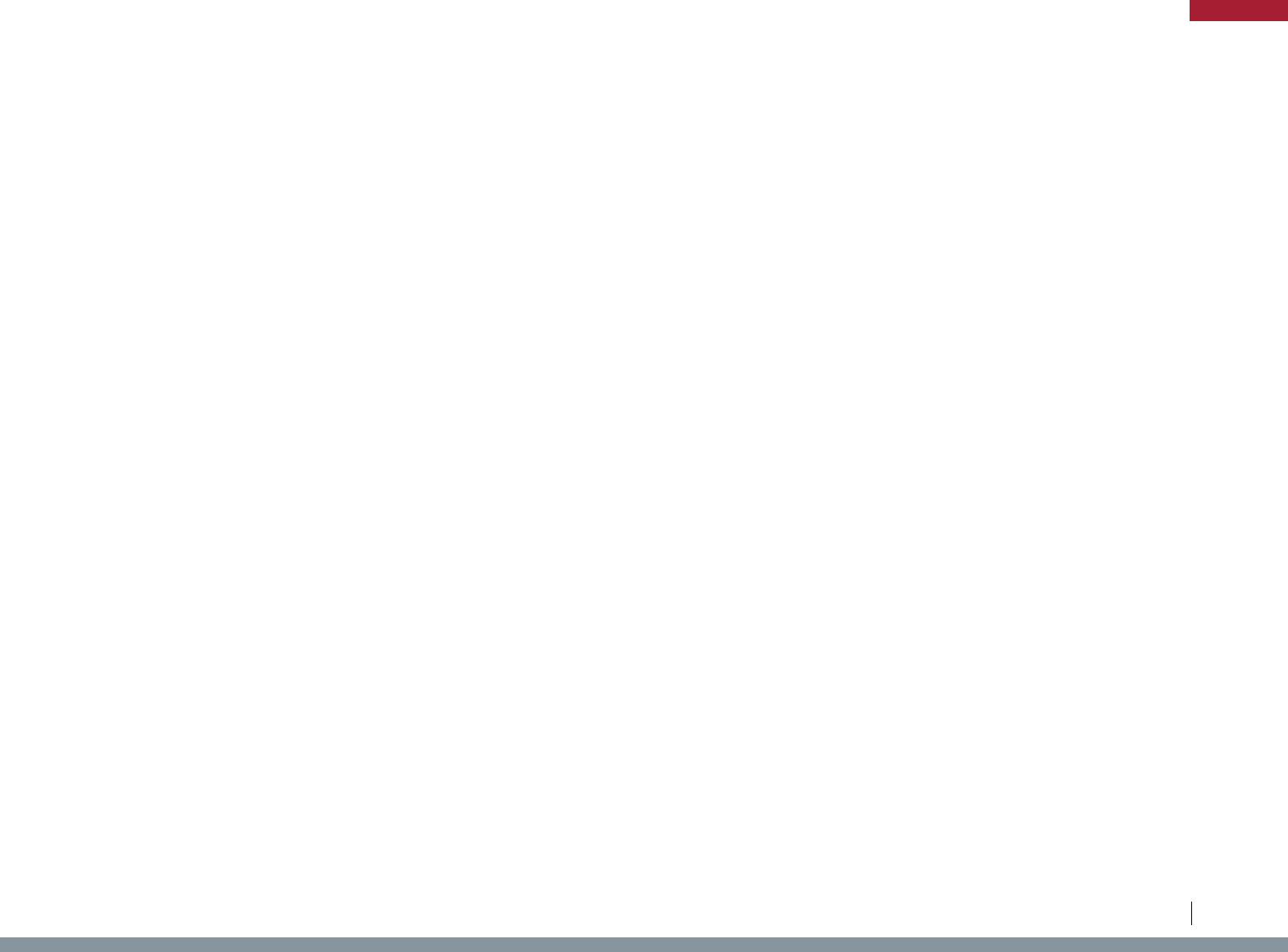
State Law/Regulation Potentially Impacted Industry Agricultural Product Regulation Type Purpose Description
FL Fla. Admin. Code r. 5B-3.0038 Plants Plants, Plant
Products
Importation
Disease/Pest
Prevention
Importation requirements for plants and plant products - proof of origin,
certificate of inspection, free of pests
FL Fla. Admin. Code r. 5B-38.004 Crops Lettuce Importation
Disease/Pest
Prevention
Lettuce Mosaic Virus Restrictions
FL Fla. Admin. Code r. 5B-38.006 Crops Lettuce Importation
Disease/Pest
Prevention
Lettuce Mosaic Virus Restrictions
FL Fla. Admin. Code r. 5B-43.003 Nursery Stock Nursery Plants Importation
Disease/Pest
Prevention
European Brown Garden Snail Restrictions
FL Fla. Admin. Code r. 5B-43.005 Nursery Stock Nursery Plants Importation
Disease/Pest
Prevention
European Brown Garden Snail Restrictions
FL Fla. Admin. Code r. 5B-52.011 Cotton Cotton Importation
Disease/Pest
Prevention
Movement and Importation of Boll Weevil and Pink Bollworm
Restrictions
FL Fla. Admin. Code r. 5B-54.006 Livestock Bees Importation
Disease/Pest
Prevention
Importation Requirements for Bees
FL Fla. Admin. Code r. 5B-54.017 Livestock Bees Importation
Disease/Pest
Prevention
Destruction or Treatment of Colonies with American Foulbrood
FL Fla. Admin. Code r. 5B-55.006 Forestry Dogwood Trees Importation
Disease/Pest
Prevention
Dogwood Anthracnose Restrictions and Interstate Movement
FL Fla. Admin. Code r. 5B-57.004 Plants Plants Importation
Disease/Pest
Prevention
Noxious weed restrictions
FL Fla. Admin. Code r. 5B-57.006 Plants Plants Importation
Disease/Pest
Prevention
Noxious weed restrictions
FL Fla. Admin. Code r. 5B-57.007 Plants Plants Importation
Disease/Pest
Prevention
Noxious weed restrictions
FL Fla. Admin. Code r. 5B-64.011 Plants Aquatic Plants Prohibition
Disease/Pest
Prevention
Aquatic Plants prohibited for importation and cultivation
FL Fla. Admin. Code r. 5B-67.004 Live Animals
Giant African Land
Snail
Importation
Disease/Pest
Prevention
Conditions of Certification for Importation of Giant African Land Snails
FL Fla. Admin. Code r. 5C-20.002 Livestock Swine Importation
Disease/Pest
Prevention
Importation requirements for swine
FL Fla. Admin. Code r. 5C-26.003 Livestock Cervids Importation
Disease/Pest
Prevention
Importation requirements for cervids - certificate of veterinary
inspection, chronic wasting disease
FL Fla. Admin. Code r. 5C-3.002 Livestock Livestock Importation
Disease/Pest
Prevention
Restricted animals needing permit for movement, certificate of
veterinary inspection
FL Fla. Admin. Code r. 5C-3.003 Livestock Equines Importation
Disease/Pest
Prevention
Importation requirements for equines - Equine Infectious Anemia
FL Fla. Admin. Code r. 5C-3.004 Livestock Cattle Importation
Disease/Pest
Prevention
Importation requirements for cattle - Bovine Tuberculosis
FL Fla. Admin. Code r. 5C-3.005 Livestock Sheep, Goats Importation
Disease/Pest
Prevention
Importation requirements for sheep and goats - Scrapie, Scabies
FL Fla. Admin. Code r. 5C-3.007 Livestock Swine Importation
Disease/Pest
Prevention
Importation requirements for swine - pseudorabies
FL Fla. Admin. Code r. 5C-3.012 Livestock Ratites Importation
Disease/Pest
Prevention
Importation requirements for ostriches and other ratites - Avian
Influenza
62
Legislative Analysis of S.2019 / H.R.4417: The “Ending Agricultural Trade Suppression Act”
APPENDIX
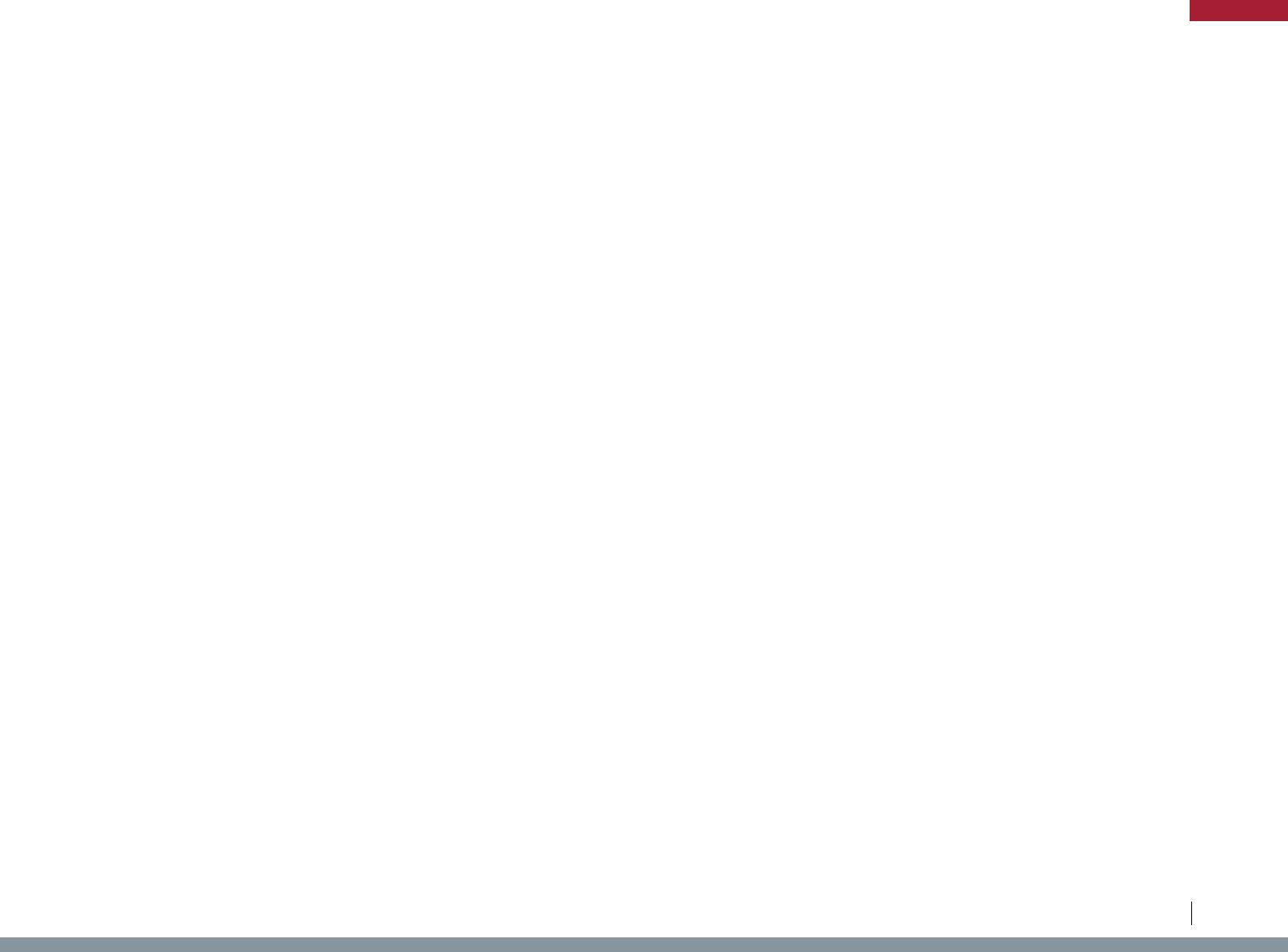
State Law/Regulation Potentially Impacted Industry Agricultural Product Regulation Type Purpose Description
FL Fla. Admin. Code r. 68A-4.0051 Live Animals Cervids Importation
Disease/Pest
Prevention
Importation restrictions for cervids - no person shall receive, possess,
transport, or carry into the state by any means any live deer, elk or
other species of the family Cervidae originating from out-of-state unless
permitted
FL Fla. Stat. § 581.083 Plants Plants Importation
Disease/Pest
Prevention
Noxious weed restrictions
FL Fla. Stat. § 581.091 Plants Plants Importation
Disease/Pest
Prevention
Noxious weed restrictions
FL Fla. Stat. § 581.182 Food Citrus Importation
Disease/Pest
Prevention
Citrus embargo
FL Fla. Stat. § 601.93 Food Citrus Food Safety Food Safety Citrus containing arsenic
FL Fla. Stat. § 287.084
Agricultural
Products
Agricultural Products Procurement Market Support Regulation of government procurement of agricultural products
FL Fla. Stat. § 601.46 Food Citrus Quality Standards Product Quality Citrus maturity and quality standards
FL Fla. Stat. § 601.49 Food Citrus Quality Standards Product Quality Citrus maturity and quality standards
FL Fla. Stat. § 601.55 Food Citrus Quality Standards Product Quality Citrus maturity and quality standards
FL Fla. Stat. § 601.91 Food Citrus Quality Standards Product Quality Citrus maturity and quality standards
FL Fla. Admin. Code r. 68-5.003 Live Animals Non-Native Species Prohibition Sustainability Prohibition on Introduction of Non-Native Species
GA Ga. Code § 16-13-72 Drugs Salvia Prohibition Consumer Safety Recreational drug ban - salvia
GA Ga. Code § 4-4-95.1 Livestock Cattle Importation
Disease/Pest
Prevention
Import requirements for cattle - health certificate, waybill, Brucellosis
GA Ga. Comp. R. & Regs. 391-4-9-.05 Live Animals Cervids Importation
Disease/Pest
Prevention
Written approval required to import cervids
GA Ga. Comp. R. & Regs. 40-12-4-.01 Plants Seeds Quality Standards
Disease/Pest
Prevention
Limitations on noxious weed seeds
GA Ga. Comp. R. & Regs. 40-13-1-.03 Livestock Livestock Importation
Disease/Pest
Prevention
Importation requirements for livestock and poultry - certificate of
inspection, permit
GA Ga. Comp. R. & Regs. 40-13-1-.04 Livestock Livestock Importation
Disease/Pest
Prevention
Certificate of veterinary inspection required to import livestock and
poultry
GA Ga. Comp. R. & Regs. 40-13-1-.05 Livestock Livestock Importation
Disease/Pest
Prevention
Permit required to import livestock - except poultry - brucellosis
GA Ga. Comp. R. & Regs. 40-13-2-.04 Livestock Cattle Importation
Disease/Pest
Prevention
Importation requirements for cattle - certificate of veterinary inspection,
brucellosis, vibriosis, trichomoniasis, epithelioma, tuberculosis
GA Ga. Comp. R. & Regs. 40-13-2-.05 Livestock Cattle Importation
Disease/Pest
Prevention
Importation requirements for cattle - brucellosis testing
GA Ga. Comp. R. & Regs. 40-13-2-.06 Livestock Cattle Importation
Disease/Pest
Prevention
Importation requirements for cattle - tuberculosis
GA Ga. Comp. R. & Regs. 40-13-2-.07 Livestock Cattle Importation
Disease/Pest
Prevention
Importation requirements for cattle - trichomoniasis
GA Ga. Comp. R. & Regs. 40-13-2-.08 Livestock Swine Importation
Disease/Pest
Prevention
Importation requirements for swine - prohibition on swine fed garbage,
vaccinated with Pseudorabies, identification, certification, testing
63
Legislative Analysis of S.2019 / H.R.4417: The “Ending Agricultural Trade Suppression Act”
APPENDIX
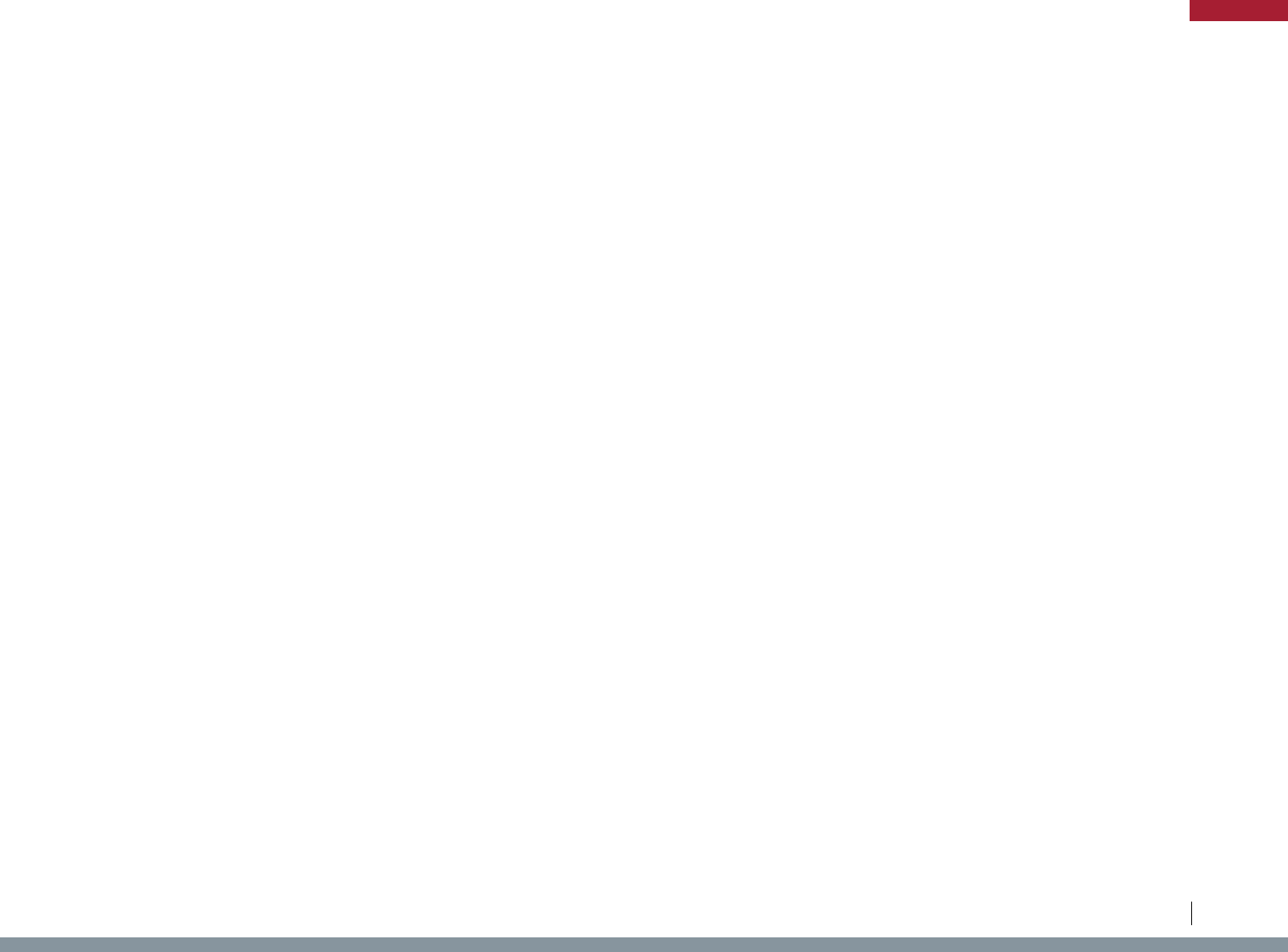
State Law/Regulation Potentially Impacted Industry Agricultural Product Regulation Type Purpose Description
GA Ga. Comp. R. & Regs. 40-13-2-.11 Livestock Sheep, Goats Importation
Disease/Pest
Prevention
Importation requirements for sheep and goats - certificate of veterinary
inspection, identification, scrapie, scabies, etc.
GA Ga. Comp. R. & Regs. 40-13-2-.12 Livestock Equines Importation
Disease/Pest
Prevention
Importation requirements for equines - certificate of veterinary
inspection, equine infectious anemia
GA Ga. Comp. R. & Regs. 40-13-2-.13 Livestock Cervids Importation
Disease/Pest
Prevention
Importation requirements for cervids - certificate of veterinary
inspection, identification, chronic wasting disease
GA Ga. Comp. R. & Regs. 40-13-2-.14 Livestock Ratites Importation
Disease/Pest
Prevention
Importation requirements for ratites - certificate of veterinary inspection,
identification
GA Ga. Comp. R. & Regs. 40-13-2-.15 Livestock Poultry Importation
Disease/Pest
Prevention
Importation requirements for poultry - certificate of veterinary inspection
or National Poultry Improvement Plan, avian influenza
GA Ga. Comp. R. & Regs. 40-13-4-.07 Livestock Cervids Importation
Disease/Pest
Prevention
Importation requirements for cervids - tuberculosis
GA Ga. Comp. R. & Regs. 40-13-6-.04 Livestock Cattle Importation
Disease/Pest
Prevention
Requirements for cattle offered for sale at livestock auction markets
GA Ga. Comp. R. & Regs. 40-24-1-.08 Cotton Cotton Importation
Disease/Pest
Prevention
Importation requirements for cotton and used cotton equipment -
permit, certification - boll weevils
GA Ga. Comp. R. & Regs. 40-4-1-.03 Livestock Bees Importation
Disease/Pest
Prevention
Importation requirements for queen and package bees - certificate
required, American and European Foulbrood
GA Ga. Comp. R. & Regs. 40-4-1-.04 Livestock Bees Importation
Disease/Pest
Prevention
Importation requirements for honeybees - permit required, American
and European Foulbrood
GA Ga. Comp. R. & Regs. 40-4-13-.05 Fruit Peach Trees Importation
Disease/Pest
Prevention
Importation of fruit tree nursery stock - nursery inspection certificate
required - Phony Peach disease
GA Ga. Comp. R. & Regs. 40-4-24-.04 Nursery Stock Fruit Plants Importation
Disease/Pest
Prevention
Importation of certain fruit bearing and ornamental varieties of
blueberry plants, huckleberry plants - certification, permit, notification -
Blueberry Scorch Virus
GA Ga. Comp. R. & Regs. 40-4-7-.05 Crops Vegetables Importation
Disease/Pest
Prevention
Importation restrictions for vegetable transplants - inspection,
certification, restricted areas
GA Ga. Comp. R. & Regs. 40-4-7-.06 Crops Vegetables Importation
Disease/Pest
Prevention
Importation restrictions for certified organic vegetable transplants -
whiteflies and other sap feeding insects
GA Ga. Comp. R. & Regs. 40-4-9-.04 Plants Plants Importation
Disease/Pest
Prevention
Importation requirements for live plants
GA Ga. Comp. R. & Regs. 511-6-1-.04 Food
Dairy, Mushrooms,
Shellfish
Sourcing Food Safety
Requirements that food be safe, unadulterated, and honestly
presented - sourcing requirements for shellfish, wild mushrooms, fluid
milk and milk products, etc.
GA Ga. Code § 50-5-60
Agricultural
Products
Agricultural Products Procurement Market Support
Preference to supplies, equipment, materials, and agricultural products
produced in state
GA Ga. Code § 50-5-61
Agricultural
Products
Agricultural Products Procurement Market Support
State and local authorities to give preference to supplies, materials,
and agricultural products produced in state
HI Haw. Code R. § 4-16-16 Livestock Cattle Importation
Disease/Pest
Prevention
Bovine Tuberculosis, brucellosis, anaplasmosis, and any other
transmissible disease
HI Haw. Code R. § 4-16-18 Livestock Cattle Importation
Disease/Pest
Prevention
Brucellosis surveillance, control, and eradication
HI Haw. Code R. § 4-16-9 Livestock Cattle, Sheep, Goats Importation
Disease/Pest
Prevention
Entry status on imports
HI Haw. Code R. § 4-17-7 Livestock Swine Importation
Disease/Pest
Prevention
Preshipment requirements (Pseudorabies, hog cholera, or any other
swine disease)
HI Haw. Code R. § 4-20-7 Animals
Non-Domesticated
Animals
Importation
Disease/Pest
Prevention
Preshipment requirements (prevent the introduction of transmissible
diseases)
64
Legislative Analysis of S.2019 / H.R.4417: The “Ending Agricultural Trade Suppression Act”
APPENDIX
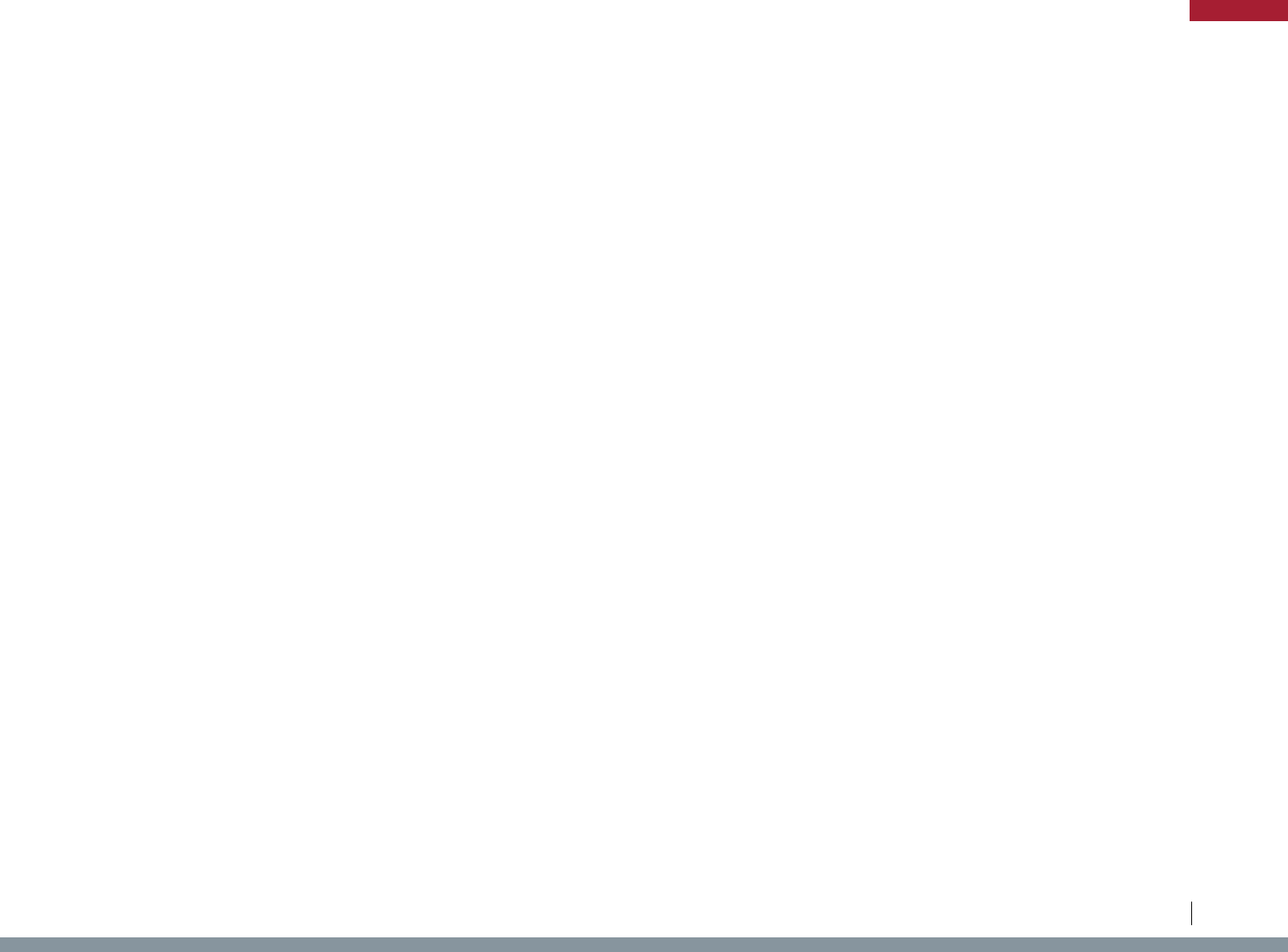
State Law/Regulation Potentially Impacted Industry Agricultural Product Regulation Type Purpose Description
HI Haw. Code R. § 4-28-8 Livestock
Poultry, Hatching
Eggs
Importation
Disease/Pest
Prevention
Preshipment requirements (Avian Influenza, Newcastle Disease, West
Nile virus, etc)
HI Haw. Code R. § 4-70-36 Forestry Pine Trees Importation
Disease/Pest
Prevention
Introduction of any pine plant prohibited
HI Haw. Code R. § 4-71-6 Live Animals Live animals Importation
Disease/Pest
Prevention
Prohibited introductions (No person shall introduce into Hawaii any
animal from the list of prohibited animals)
HI Haw. Rev. Stat. § 150A-5
Agricultural
Products
Plants, Wild Animals Importation
Disease/Pest
Prevention
Conditions of importation
HI Haw. Rev. Stat. § 150A-6
Agricultural
Products
Agricultural Products Importation
Disease/Pest
Prevention
Importation or possession prohibited - soil, plants, animals, etc.
HI Haw. Rev. Stat. § 103D-1002
Agricultural
Products
Agricultural Products Procurement Market Support Regulation of government procurement of agricultural products
IA Iowa Code § 205.5 Nuts Bitter Almonds Prohibition
Consumer
Protection
Prohibition on sale of bitter almonds
IA Iowa Code § 124.204 Drugs Salvia Prohibition Consumer Safety Recreational drug ban - salvia
IA Iowa Admin. Code r. 21-22.10 Livestock Bees Importation
Disease/Pest
Prevention
Prohibit movement of bees from designated states
IA Iowa Admin. Code r. 21-22.11 Livestock Bees Importation
Disease/Pest
Prevention
Inspection required for the sale of bees, comb, or used equipment -
dieases including American Foulbrood
IA Iowa Admin. Code r. 21-22.3 Livestock Bees Importation
Disease/Pest
Prevention
Requirement for the sale of bees - mites
IA Iowa Admin. Code r. 21-22.4 Livestock Bees Importation
Disease/Pest
Prevention
Certificate of inspection required - mites
IA Iowa Admin. Code r. 21-22.5 Livestock Bees Importation
Disease/Pest
Prevention
Certificate of inspection expiration - Africanized bees
IA Iowa Admin. Code r. 21-22.9 Livestock Bees Importation
Disease/Pest
Prevention
European honeybee certification
IA Iowa Admin. Code r. 21-46.15 Nursery Stock Nursery Stock Importation
Disease/Pest
Prevention
Out-of-state nursery growers and nursery dealers - official certificate of
inspection required
IA Iowa Admin. Code r. 21-64.155 Livestock Swine Importation
Disease/Pest
Prevention
Certificates of inspection required for importing swine
IA Iowa Admin. Code r. 21-64.202 Livestock Sheep Importation
Disease/Pest
Prevention
Imported sheep - official identification required
IA Iowa Admin. Code r. 21-64.34 Livestock Cervids Importation
Disease/Pest
Prevention
Cervidae originating outside Iowa - entry permit required
IA Iowa Admin. Code r. 21-64.36 Livestock Horses Importation
Disease/Pest
Prevention
Horses and mules certificate of veterinary inspection for importation
IA Iowa Admin. Code r. 21-64.41 Livestock Livestock Importation
Disease/Pest
Prevention
Livestock imported for resale required to meet health requirements
IA Iowa Admin. Code r. 21-64.80 Livestock Livestock Importation
Disease/Pest
Prevention
Requires cattle imported into the state to comply with Iowa Admin.
Code r. 21-65.4
IA Iowa Admin. Code r. 21-65.11 Livestock Poultry Importation
Disease/Pest
Prevention
Certificate of veterinary inspection required for importing poultry
IA Iowa Admin. Code r. 21-65.12 Livestock Swine Importation
Disease/Pest
Prevention
Interstate swine movement reporting and identification
65
Legislative Analysis of S.2019 / H.R.4417: The “Ending Agricultural Trade Suppression Act”
APPENDIX
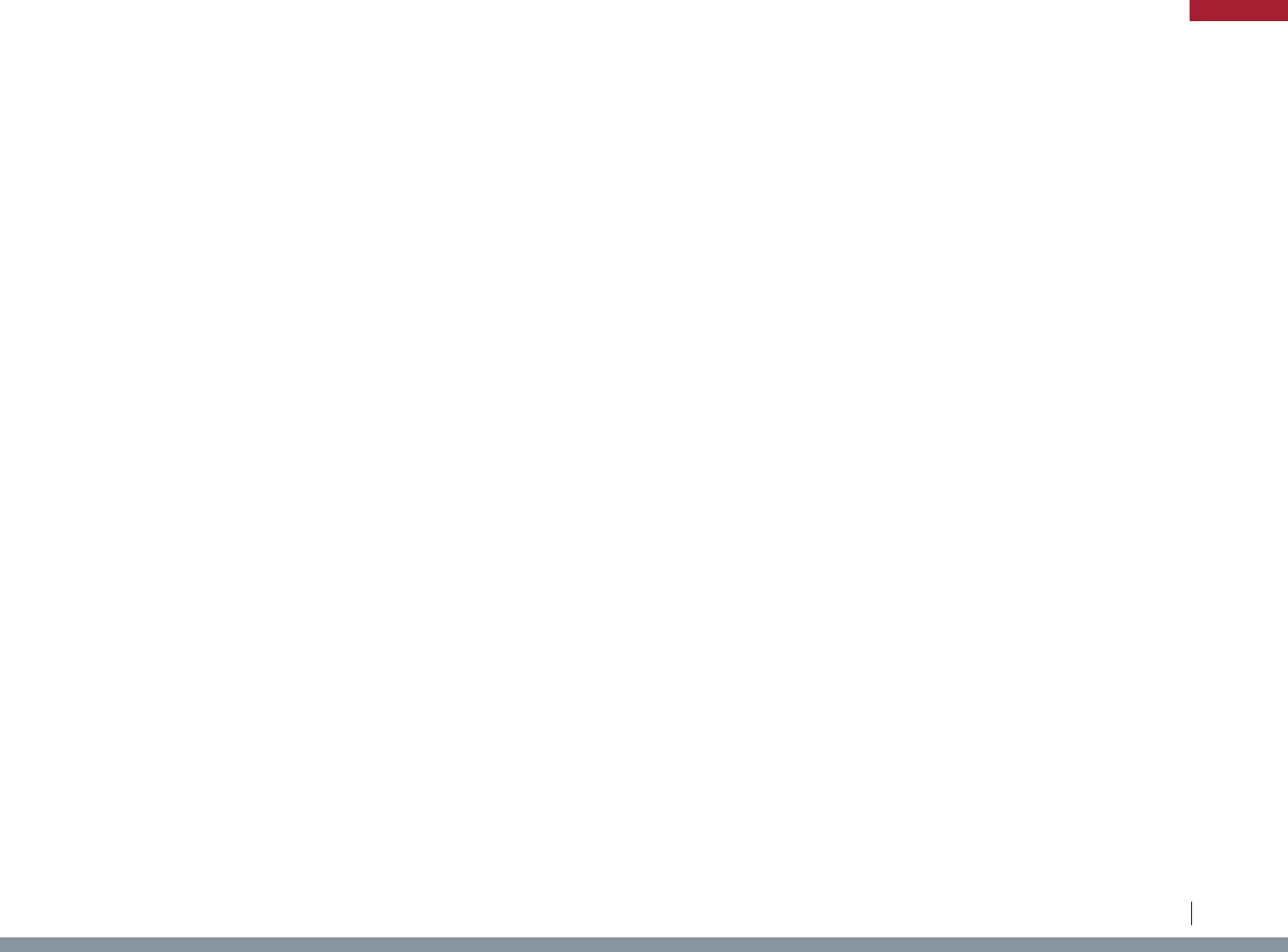
State Law/Regulation Potentially Impacted Industry Agricultural Product Regulation Type Purpose Description
IA Iowa Admin. Code r. 21-65.2 Livestock Livestock Importation
Disease/Pest
Prevention
Pre-entry permits required for importing certain livestock - including
cervids, certain poultry, certain cattle and bison, and captive wild-type
swine
IA Iowa Admin. Code r. 21-65.3 Live Animals Live Animals Importation
Disease/Pest
Prevention
Ban on importation of certain animals and import transport vehicle
cleaning requirements
IA Iowa Admin. Code r. 21-65.4 Livestock Cattle Importation
Disease/Pest
Prevention
Certificate of veterinary inspection required for importing cattle and
bison - Brucellosis, Trichomoniasis, and Tuberculosis test
IA Iowa Admin. Code r. 21-65.5 Livestock Swine Importation
Disease/Pest
Prevention
Certificate of veterinary inspection required for importing swine -
Brucellosis and Pseudorabies restrictions
IA Iowa Admin. Code r. 21-65.6 Livestock Goats Importation
Disease/Pest
Prevention
Certificate of veterinary inspection required for importing goats -
Brucellosis, Tuberculosis, and scrapie restrictions
IA Iowa Admin. Code r. 21-65.7 Livestock Sheep Importation
Disease/Pest
Prevention
Certificate of veterinary inspection required for importing sheep -
scabies and scrapie restrictions
IA Iowa Admin. Code r. 21-65.8 Livestock Horses Importation
Disease/Pest
Prevention
Certificate of veterinary inspection required for importing horses -
equine infectious anemia, brucellosis, "poll evil," "fistulous withers"
restrictions
IA Iowa Admin. Code r. 21-65.9 Livestock Cervids Importation
Disease/Pest
Prevention
Certificate of veterinary inspection required for importing cervids -
Chronic wasting disease, brucellosis, and Tuberculosis restrictions
IA Iowa Admin. Code r. 571-89.2 Aquaculture Fish Importation
Disease/Pest
Prevention
Permit required to import certain aquaculture species
IA Iowa Admin. Code r. 571-89.3 Aquaculture Fish Importation
Disease/Pest
Prevention
Disease-free certification required to import certain aquaculture species
IA Iowa Code § 165.36 Livestock Cattle Importation
Disease/Pest
Prevention
Cattle importation requirements - Tuberculosis
IA Iowa Code § 177A.5 Plants Plant Products Reporting
Disease/Pest
Prevention
Reporting insect pests and diseases - requirements for plant and plant
product sellers
IA Iowa Code § 481A.143 Fish Fish Importation
Disease/Pest
Prevention
Fish import and disease reporting requirements
IA Iowa Code § 73.1
Agricultural
Products
Agricultural Products Procurement Market Support Government procurement regulations - agricultural products
IA Iowa Code § 73.16
Agricultural
Products
Agricultural Products Procurement Market Support
Government procurement regulations - small business and targeted
small business preferences, veteran businesses
IA Iowa Code § 8A.311
Agricultural
Products
Agricultural Products Procurement Market Support Government procurement regulations - agricultural products
IA Iowa Admin. Code r. 571-90.2 Fish Fish Importation Sustainability Import restrictions on certain invasive aquatic fish and plant species
ID Idaho Admin. Code r. 02.04.21.200 Livestock Cattle Importation
Disease/Pest
Prevention
Importation requirements for cattle - identification, certificate of
veterinary inspection
ID Idaho Admin. Code r. 02.04.21.240 Livestock Cattle, Bison Importation
Disease/Pest
Prevention
Importation requirements for cattle and bison - Tuberculosis
ID Idaho Admin. Code r. 02.04.21.400 Livestock Swine Importation
Disease/Pest
Prevention
Importation requirements for swine - identification, certificate of
veterinary inspection, not vaccinated for pseudorabies, not fed
garbage, exception for swine sent to slaughter
ID Idaho Admin. Code r. 02.04.21.401 Livestock Swine Importation
Disease/Pest
Prevention
Importation requirements for swine - brucellosis
ID Idaho Admin. Code r. 02.04.21.402 Livestock Swine Importation
Disease/Pest
Prevention
Importation requirements for swine - pseudorabies
66
Legislative Analysis of S.2019 / H.R.4417: The “Ending Agricultural Trade Suppression Act”
APPENDIX
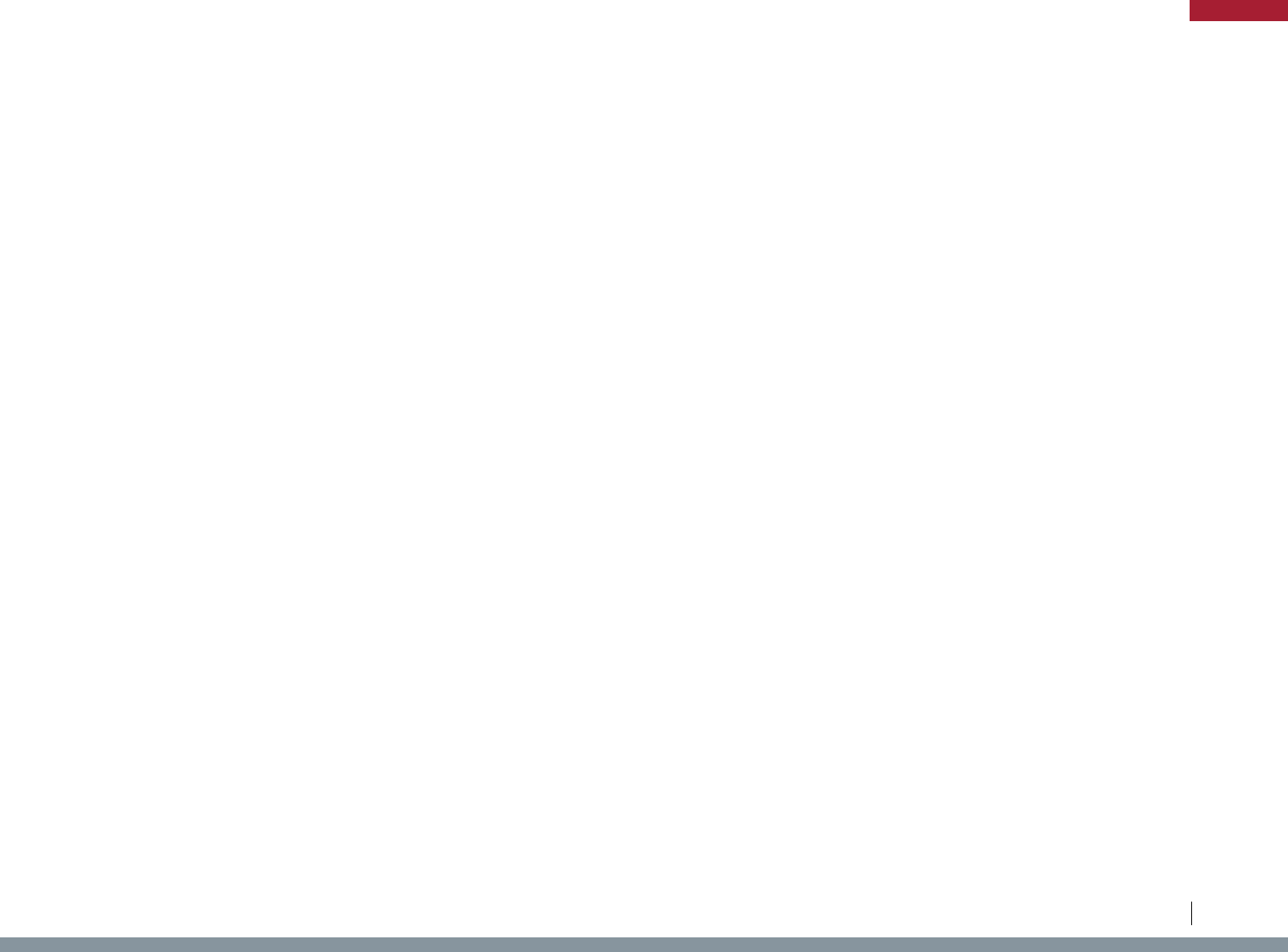
State Law/Regulation Potentially Impacted Industry Agricultural Product Regulation Type Purpose Description
ID Idaho Admin. Code r. 02.04.21.600 Live Animals Cervids Importation
Disease/Pest
Prevention
Importation requirements for domestic cervids - certificate of veterinary
inspection, deworming, from national chronic wasting disease certified
herd
ID Idaho Admin. Code r. 02.08.01.100 Livestock Sheep, Goats Importation
Disease/Pest
Prevention
Importation requirements for sheep and goats
ID Idaho Admin. Code r. 02.08.01.101 Livestock Sheep, Goats Importation
Disease/Pest
Prevention
Importation requirements for sheep and goats - permits
ID Idaho Admin. Code r. 02.08.01.102 Livestock Sheep, Goats Importation
Disease/Pest
Prevention
Importation requirements for sheep and goats - scabies
ID Idaho Code § 22-2016 Plants Plants Importation
Disease/Pest
Prevention
Importation restrictions on plants, plant pests, and other items -
introduction into or release within this state of any plant pest, biocontrol
agent, or genetically engineered plant or plant pest, or any other
organism which may directly or indirectly affect the plant life of this state
as an injurious pest, parasite or predator of other organisms, or any
arthropod, is prohibited, except under permit or exemption
ID Idaho Code § 67-2349
Agricultural
Products
Agricultural Products Procurement Market Support
Regulation of government procurement - preference for in-state
suppliers
IL Ill. Admin. Code tit. 8, pt. § 25.50 Live Animals Live Animals Transportation Animal Welfare Animal welfare - transportation requirements
IL 410 Ill. Comp. Stat. § 637/5 Food Food Labeling
Consumer
Protection
Halal Food Act - regulates use of terms related to "Halal" to protect
consumers from fraud
IL 410 Ill. Comp. Stat. § 645/1 Food Food Labeling
Consumer
Protection
Kosher Food Act - regulates use of terms related to "Kosher" to protect
consumers from fraud
IL Ill. Admin. Code tit. 8, pt. 60.50 Livestock Bees Importation
Consumer
Protection
Bee equipment treatment requirements prior to entry, prohibition on
exotic strains, Africanized honey bee regulations
IL 720 Ill. Comp. Stat. § 570/204 Drugs Salvia Prohibition Consumer Safety Recreational drug ban - salvia
IL 510 Ill. Comp. Stat. § 65/4 Livestock Equines Importation
Disease/Pest
Prevention
Equine Infectious Anemia and Certificate of Veterinary Inspection
Requirements
IL Ill. Admin. Code tit. 17, pt. 635.20 Live Animals Cervids Importation
Disease/Pest
Prevention
Chronic Wasting Disease, Brucellosis, and Tuberculosis Restrictions
IL Ill. Admin. Code tit. 17, pt. 870.50 (c) Fish Fish Importation
Disease/Pest
Prevention
Salmonid import permitting; source hatchery inspection
IL Ill. Admin. Code tit. 17, pt. 875.40 Fish Fish Reporting
Disease/Pest
Prevention
Fish Health Inspection Report Requirements
IL Ill. Admin. Code tit. 17, pt. 875.50 Aquaculture Fish Reporting
Disease/Pest
Prevention
Viral Hemorrhagic Septicemia (VHS) - unlawful to import VHS-
susceptible species into the State of Illinois without a VHS-Susceptible
Species Permit issued by the Department
IL Ill. Admin. Code tit. 17, pt. 875.50 Fish Fish Importation
Disease/Pest
Prevention
Viral Hemorrhagic Septicemia (VHS) Species Permitting - unlawful to
import VHS-susceptible species without permit
IL Ill. Admin. Code tit. 8, pt. § 105.10 Livestock Swine Importation
Disease/Pest
Prevention
Importation requirements for swine - pseudorabies, health certification,
and permit requirements
IL Ill. Admin. Code tit. 8, pt. 105.30 Livestock Swine Importation
Disease/Pest
Prevention
Importation requirements for swine - pseudorabies, brucellosis, health
certification, tagging, and permit requirements
IL Ill. Admin. Code tit. 8, pt. 230.20 Plants Plants Prohibition
Disease/Pest
Prevention
Noxious weed seed prohibitions
IL Ill. Admin. Code tit. 8, pt. 230.30 Plants Plants Restriction
Disease/Pest
Prevention
Noxious weed restrictions
67
Legislative Analysis of S.2019 / H.R.4417: The “Ending Agricultural Trade Suppression Act”
APPENDIX
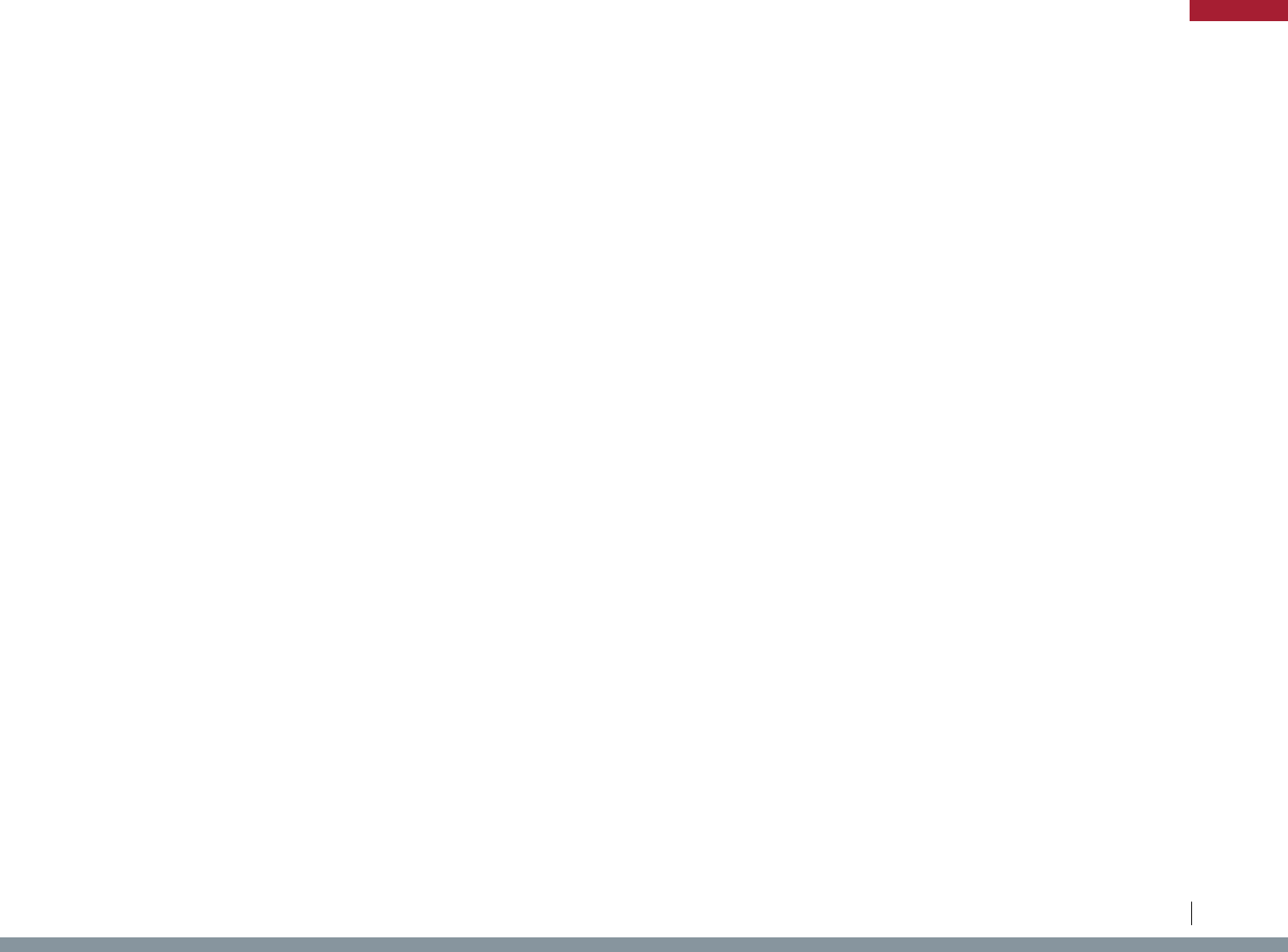
State Law/Regulation Potentially Impacted Industry Agricultural Product Regulation Type Purpose Description
IL Ill. Admin. Code tit. 8, pt. 230.60 Plants Plants Prohibition
Disease/Pest
Prevention
Sale prohibitions and labeling requirements
IL Ill. Admin. Code tit. 8, pt. 240.20 Nursery Stock Plants Importation
Disease/Pest
Prevention
Import inspections for Illinois compliance
IL Ill. Admin. Code tit. 8, pt. 240.280 Plants Plant Products Importation
Disease/Pest
Prevention
Authority to quarantine plants, plant products, and soils
IL Ill. Admin. Code tit. 8, pt. 240.30 Nursery Stock Plants Importation
Disease/Pest
Prevention
Disposing/Returning Infested or Infected stock
IL Ill. Admin. Code tit. 8, pt. 40.100 Livestock Cattle Importation
Disease/Pest
Prevention
Brucellosis testing requirements
IL Ill. Admin. Code tit. 8, pt. 40.170 Livestock Swine Importation/Sale
Disease/Pest
Prevention
Health Certification and Permit Requirements
IL Ill. Admin. Code tit. 8, pt. 60.20 Livestock Bees Importation
Disease/Pest
Prevention
Importation requiements for bees - registration
IL Ill. Admin. Code tit. 8, pt. 60.60 Livestock Bees Importation
Disease/Pest
Prevention
Importation Permitting Requirements for Bees
IL Ill. Admin. Code tit. 8, pt. 60.70 Livestock Bees Importation
Disease/Pest
Prevention
Quarantine regulations for bees
IL Ill. Admin. Code tit. 8, pt. 80.140 Livestock Cervids Importation
Disease/Pest
Prevention
Bovine Tuberculosis, Certificate of Veterinary Inspection, and Permit
Requirements
IL Ill. Admin. Code tit. 8, pt. 80.70 Livestock Cattle Importation
Disease/Pest
Prevention
Importation requirements for steers, heifers, and calves - Bovine
Tuberculosis, certificate of veterinary inspection
IL Ill. Admin. Code tit. 8, pt. 80.80 Livestock Cattle Importation
Disease/Pest
Prevention
Importation requirements for certain female cattle - Bovine
Tuberculosis, certificate of veterinary inspection
IL Ill. Admin. Code tit. 8, pt. 85.105 Live Animals Livestock, Dogs Importation
Disease/Pest
Prevention
Permit Requirements for trucks carrying livestock or dogs into Illinois
IL Ill. Admin. Code tit. 8, pt. 85.110 Live Animals Cattle Importation
Disease/Pest
Prevention
Ear Tagging Requirements for out-of-state cattle
IL Ill. Admin. Code tit. 8, pt. 85.120 Live Animals Cervids Importation
Disease/Pest
Prevention
Brucellosis, permitting, and Certificate of Veterinary Inspection
Requirements
IL Ill. Admin. Code tit. 8, pt. 85.125 Live Animals Ratites Importation
Disease/Pest
Prevention
Importation requirements for ratites - Avian influenza, permitting
requirements
IL Ill. Admin. Code tit. 8, pt. 85.130 Livestock Livestock Importation
Disease/Pest
Prevention
Importation requirements for livestock - certificate of veterinary
inspection, Vesicular Stomatitis
IL Ill. Admin. Code tit. 8, pt. 85.150 Livestock Livestock Importation
Disease/Pest
Prevention
Permitting and Certificate of Veterinary Inspection Requirements
IL Ill. Admin. Code tit. 8, pt. 85.55 Livestock Sheep, Goats Importation
Disease/Pest
Prevention
Importation restrictions for sheep and goats - scabies
IL Ill. Admin. Code tit. 8, pt. 85.60 Livestock Sheep, Goats Importation
Disease/Pest
Prevention
Bluetongue import restriction - no cattle or sheep infected with or
exposed to bluetongue, and no cattle or sheep from an area under
quarantine because of bluetongue, may be transported within or
moved into the State of Illinois
IL Ill. Admin. Code tit. 8, pt. 85.75 Livestock Cattle Importation
Disease/Pest
Prevention
Cattle Scabies: Requirements from certain areas
IL Ill. Admin. Code tit. 8, pt. 85.80 Livestock Sheep, Goats Importation
Disease/Pest
Prevention
Certification, identification, and permit requirements
68
Legislative Analysis of S.2019 / H.R.4417: The “Ending Agricultural Trade Suppression Act”
APPENDIX
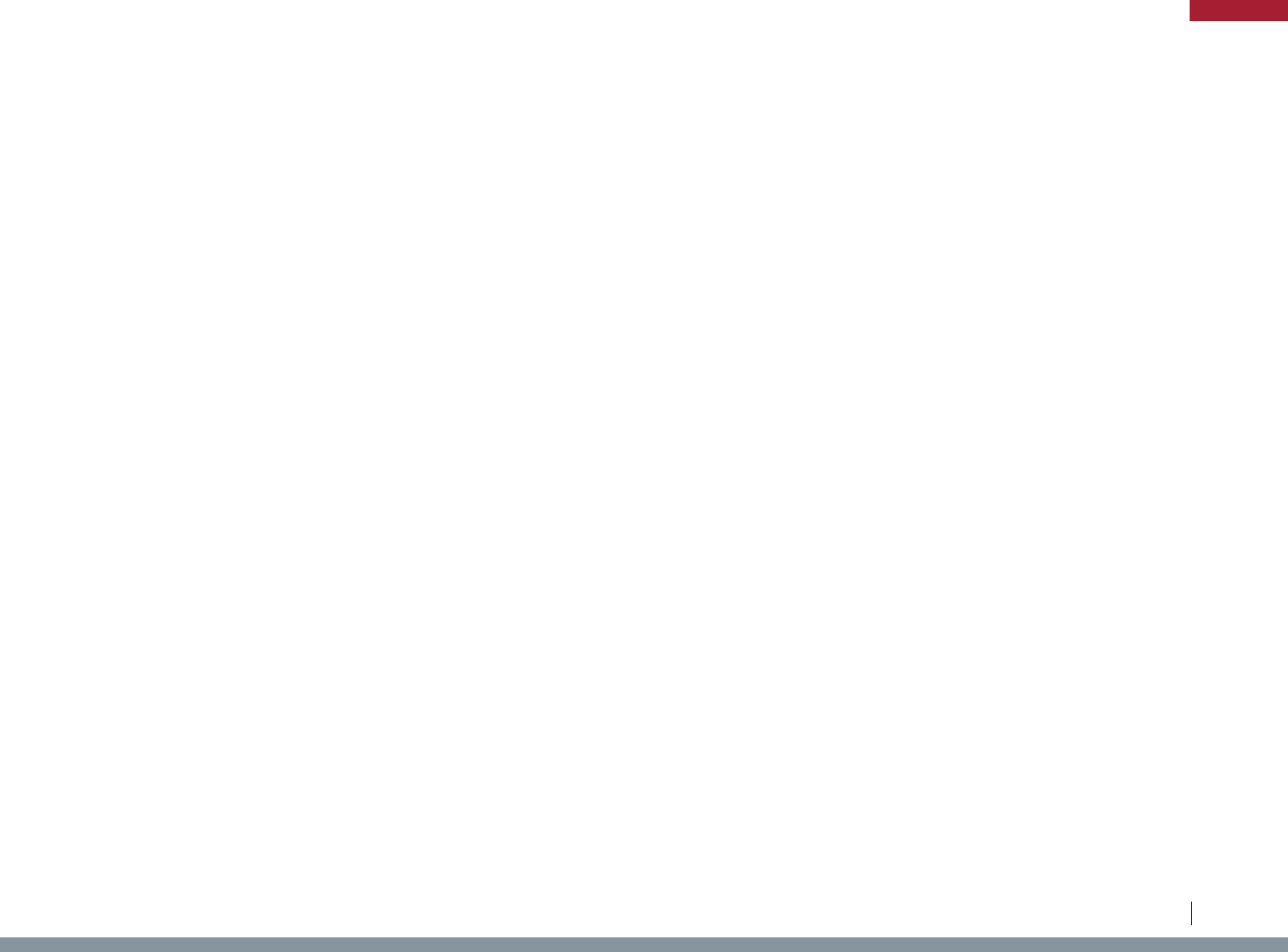
State Law/Regulation Potentially Impacted Industry Agricultural Product Regulation Type Purpose Description
IL Ill. Admin. Code tit. 8, pt. 85.85 Livestock Livestock Importation
Disease/Pest
Prevention
Prohibition on importation of animals recently exposed to disease or
chemical or radiological substances
IL Ill. Admin. Code tit. 8, pt. 85.90 Livestock Livestock Importation
Disease/Pest
Prevention
Health Certification and brucellosis testing requirements
IL Ill. Admin. Code tit. 8, pt. 65.40 Food Eggs Prohibition Food Safety Prohibition on the sale of eggs less than Grade B, etc.
IL 30 Ill. Comp. Stat. § 500/45-50
Agricultural
Products
Agricultural Products Procurement Market Support Preference for agricultural products grown in Illinois
IN Ind. Code § 35-48-4-11 Drugs Salvia Prohibition Consumer Safety Recreational drug ban - salvia
IN 312 Ind. Admin. Code 18-3-24 Nuts Walnuts Importation
Disease/Pest
Prevention
Thousand Cankers Disease Restrictions
IN 312 Ind. Admin. Code 18-3-6 Livestock Bees Importation
Disease/Pest
Prevention
Bee Transportation Requirements
IN 312 Ind. Admin. Code 9-10-14 Fish Fish Importation
Disease/Pest
Prevention
Fish hauler's and supplier's permit
IN 312 Ind. Admin. Code 9-10-15 Aquaculture Fish Importation
Disease/Pest
Prevention
Fish importation permit
IN 345 Ind. Admin. Code 1-3-11 Livestock Swine Importation
Disease/Pest
Prevention
Moving swine within Indiana
IN 345 Ind. Admin. Code 1-3-7.5 Livestock Cattle, Bison Importation
Disease/Pest
Prevention
Movement of cattle and bison into Indiana (Brucellosis, Tuberculosis,
Johne's disease)
IN 345 Ind. Admin. Code 2-6-2.5 Livestock Cattle, Bison Importation
Disease/Pest
Prevention
Importation restrictions for cattle and bison - brucellosis
IN 345 Ind. Admin. Code 2-6-3 Livestock Livestock Importation
Disease/Pest
Prevention
Certified brucellosis-free herd; establishment; maintenance
IN 345 Ind. Admin. Code 2-7-2.4 Live Animals Cervids Importation
Disease/Pest
Prevention
Interstate movement of cervids susceptible to chronic wasting disease
IN 345 Ind. Admin. Code 2.5-3-7 Livestock Cattle, Bison Importation
Disease/Pest
Prevention
Importation requirements for cattle and bison - tuberculosis
IN 345 Ind. Admin. Code 5-5-1 Livestock Sheep, Goats Importation
Disease/Pest
Prevention
Interstate movement into the state (Scrapie)
IN 345 Ind. Admin. Code 6-1.1-4.6 Livestock Horses Importation
Disease/Pest
Prevention
Equine Infectious Anemia requirements for horses entering Indiana
IN 410 Ind. Admin. Code 7-24-155 Food Shellfish Sourcing Food Safety Shellfish sourcing requirements
KS Kan. Stat. § 65-4105 Drugs Salvia Prohibition Consumer Safety Recreational drug ban - salvia
KS Kan. Admin. Regs. § 115-18-10 Fish Fish Importation
Disease/Pest
Prevention
Importation requirements for certain fish and other species
KS Kan. Admin. Regs. § 4-15-10 Plants Plants Importation
Disease/Pest
Prevention
Prohbitition on importing plants with quarantine pests - pest freedom
standards for importation
KS Kan. Admin. Regs. § 9-10-7 Livestock Sheep, Goats Importation
Disease/Pest
Prevention
Inspection requirements for all sheep and goats - scabies, dip
requirement authorization
KS Kan. Admin. Regs. § 9-3-9 Livestock Cervids Importation
Disease/Pest
Prevention
Importation requirements for cervids - certificate of veterinary
inspection, identification, permit, chronic wasting disease, tuberculosis
KS Kan. Admin. Regs. § 9-32-3 Livestock Sheep, Goats Importation
Disease/Pest
Prevention
Prohibition on importation of sheep and goats infected with scrapie or
exposed without compliance with a flock plan
KS Kan. Admin. Regs. § 9-32-4 Livestock Sheep, Goats Importation
Disease/Pest
Prevention
Importation requirements for sheep and goats for breeding - certificate
of veterinary inspection, permit, scrapie, etc.
69
Legislative Analysis of S.2019 / H.R.4417: The “Ending Agricultural Trade Suppression Act”
APPENDIX
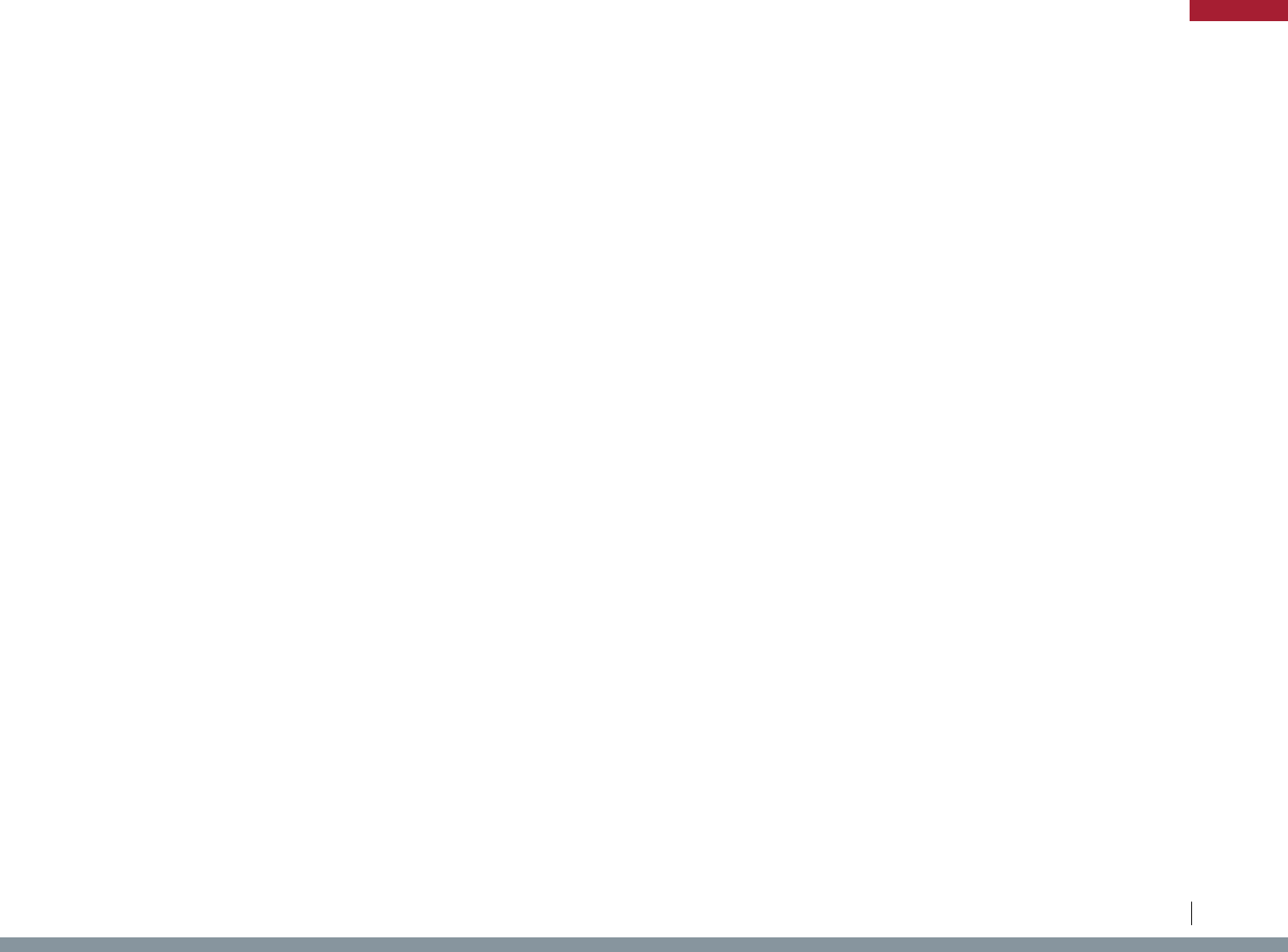
State Law/Regulation Potentially Impacted Industry Agricultural Product Regulation Type Purpose Description
KS Kan. Admin. Regs. § 9-32-5 Livestock Sheep, Goats Importation
Disease/Pest
Prevention
Importation requirements for sheep and goats for slaughter - certificate
of veterinary inspection, identification, etc.
KS Kan. Admin. Regs. § 9-7-14 Livestock Equines Importation
Disease/Pest
Prevention
Importation requirements for equines - health certificate or certificate of
veterinary inspection, equine infectious anemia testing
KS Kan. Admin. Regs. § 9-7-2 Live Animals Live Animals Importation
Disease/Pest
Prevention
Health certificate required for livestock moved into the state
KS Kan. Admin. Regs. § 9-7-4 Livestock Cattle Importation
Disease/Pest
Prevention
Importation requirements for cattle - brucellosis, tuberculosis
KS Kan. Admin. Regs. § 9-7-7 Livestock Swine Importation
Disease/Pest
Prevention
Importation requirements for swine - certificate of veterinary inspection,
permit, brucellosis, pseudorabies
KS Kan. Admin. Regs. § 9-9-4 Livestock Poultry Importation
Disease/Pest
Prevention
Importation requirements for poultry - permit, pullorum-typhoid
KS Kan. Stat. § 47-607 Livestock Livestock Importation
Disease/Pest
Prevention
Unlawful to transport uninspected animals into state - certificates of
health required, rules and regulations of animal health commissioner,
special quarantine
KS Kan. Stat. § 75-3740
Agricultural
Products
Agricultural Products Procurement Market Support Government procurement regulations - preference for in-state
producers
KS Kan. Admin. Regs. § 115-17-2 Fish Fish Prohibition Sustainability Limitations on species that may be sold as commercial fishing bait
KY Ky. Rev. Stat. § 218A.010 Drugs Salvia Prohibition Consumer Safety Recreational drug ban - salvia
KY 12 Ky. Admin. Regs. 1:120 Plants Seeds Importation
Disease/Pest
Prevention
Noxious weed seed restrictions
KY 301 Ky. Admin. Regs. 1:125 Fish Fish Reporting
Disease/Pest
Prevention
Aquaculture Import and Disease Reporting of Viral Hemorrhagic
Septicemia
KY 301 Ky. Admin. Regs. 2:081 Live Animals Turtles, Wildlife Importation
Disease/Pest
Prevention
Importation requirements for turtles and other native wildlife
KY 302 Ky. Admin. Regs. 20:020 Livestock Livestock Importation
Disease/Pest
Prevention
Movement Permits and Veterinary Inspection Requirements
KY 302 Ky. Admin. Regs. 20:040 Livestock Livestock Importation
Disease/Pest
Prevention
Importation requirements for livestock - certificate of veterinary
inspection, permits in certain circumstances
KY 302 Ky. Admin. Regs. 20:055 Livestock Livestock Importation
Disease/Pest
Prevention
Importation restrictions - brucellosis
KY 302 Ky. Admin. Regs. 20:250 Livestock Poultry Importation
Disease/Pest
Prevention
Importation requirements for poultry - Avian Influenza
KY Ky. Rev. Stat. § 247.6054 Cotton Cotton Importation
Disease/Pest
Prevention
Boll weevil and pink bollworm restrictions
KY Ky. Rev. Stat. § 252.190 Livestock Bees Importation
Disease/Pest
Prevention
Importation Requirements for Bees
KY Ky. Rev. Stat. § 252.200 Livestock Bees Importation
Disease/Pest
Prevention
Bee Quarantine Authority
KY Ky. Rev. Stat. § 45A.645
Agricultural
Products
Agricultural Products Procurement Market Support Regulation of government procurement of agricultural products
LA La. Stat. § 40:989.2 Drugs Salvia Prohibition Consumer Safety Recreational drug ban - salvia
LA La. Admin. Code tit. 7, Pt XV, § 123
Fruit,
Forestry/Wood
Products,
Vegetables, Cotton
Citrus Trees, Fruit
Trees, Oak Trees,
Palms, Sweet
Potatoes, Cotton
Importation
Disease/Pest
Prevention
Citrus Greening Disease and the Asian Citrus Psyllid Restrictions;
Phony Peach Disease Restrictions; Oak Wilt Restrictions; Date Palm
and Coconut Palm Lethal Yellowing Restrictions; Sweet Potato Weevil
Restrictions; Boll Weevil and Pink Bollworm Restrictions
70
Legislative Analysis of S.2019 / H.R.4417: The “Ending Agricultural Trade Suppression Act”
APPENDIX
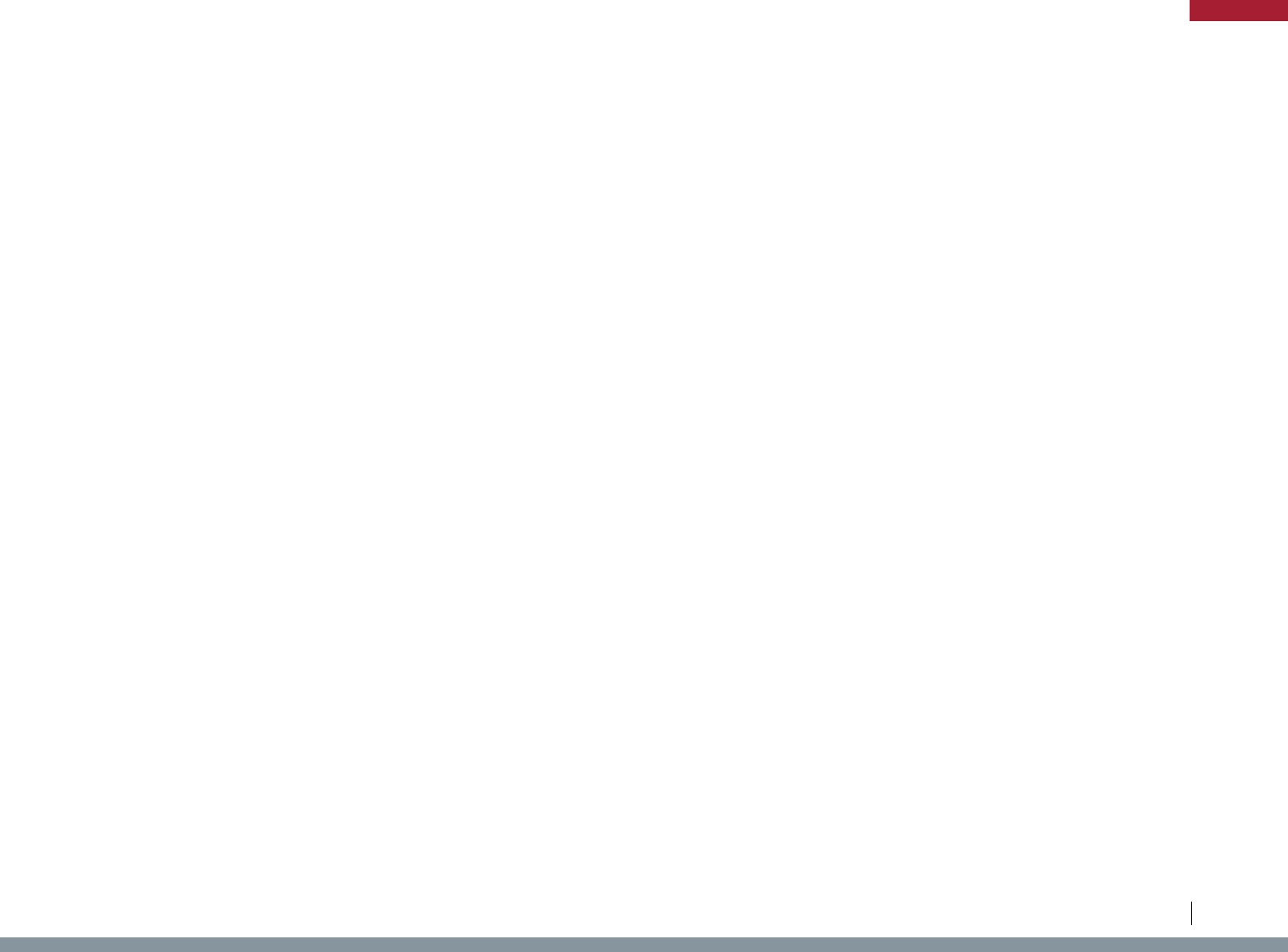
State Law/Regulation Potentially Impacted Industry Agricultural Product Regulation Type Purpose Description
LA La. Admin. Code tit. 7, Pt XV, § 129 Fruit Peach Trees Importation
Disease/Pest
Prevention
Phony Peach Disease Restrictions
LA La. Admin. Code tit. 7, Pt XV, § 131 Nursery Stock Nursery Plants Importation
Disease/Pest
Prevention
Phytophagous snail restrictions
LA La. Admin. Code tit. 7, Pt XV, § 133 Crops Sweet Potatoes Importation
Disease/Pest
Prevention
Sweet Potato Weevil restrictions
LA La. Admin. Code tit. 7, Pt XV, § 153 Cotton Cotton Importation
Disease/Pest
Prevention
Boll weevil and pink bollworm restrictions
LA La. Admin. Code tit. 7, Pt XV, § 167 Forestry Ash Trees Importation
Disease/Pest
Prevention
Importation Restrictions Related to Emerald Ash Borer
LA La. Admin. Code tit. 7, Pt XV, § 305 Cotton Cotton Importation
Disease/Pest
Prevention
Boll weevil and pink bollworm restrictions
LA La. Admin. Code tit. 7, Pt XV, § 513 Livestock Bees Certification
Disease/Pest
Prevention
Disease Free Certifications for Sale
LA La. Admin. Code tit. 7, Pt XV, § 515 Livestock Bees Importation
Disease/Pest
Prevention
Bee Quarantine Authority
LA La. Admin. Code tit. 7, Pt XV, § 517 Livestock Bees Importation
Disease/Pest
Prevention
Destruction or Treatment of Colonies with American Foulbrood
LA La. Admin. Code tit. 7, Pt XV, §127 Fruit Citrus Trees Importation
Disease/Pest
Prevention
Importing Out-of-State Citrus Budwood - Citrus Greening Disease and
the Asian Citrus Psyllid Restrictions
LA La. Admin. Code tit. 7, Pt XV, §129 Fruit Peach Trees Importation
Disease/Pest
Prevention
Import restrictions - phony peach disease
LA La. Admin. Code tit. 7, Pt XXI, § 1312 Livestock Swine Importation
Disease/Pest
Prevention
Importation requirements for swine - pseudorabies
LA La. Admin. Code tit. 7, Pt XXI, § 1503 Livestock Sheep, Goats Importation
Disease/Pest
Prevention
Importation restrictions for sheep and goats - scabies
LA La. Admin. Code tit. 7, Pt XXI, § 1717 Live Animals Cervids Importation
Disease/Pest
Prevention
Chronic Wasting Disease Restrictions
LA La. Admin. Code tit. 7, Pt XXI, § 501 Livestock Livestock Importation
Disease/Pest
Prevention
Importation requirements for livestock and poultry - health certificate,
free from signs of disease
LA La. Admin. Code tit. 7, Pt XXI, § 511 Livestock Cattle Importation
Disease/Pest
Prevention
Importation restrictions for cattle - brucellosis
LA La. Admin. Code tit. 7, Pt XXI, § 521 Livestock Horses Importation
Disease/Pest
Prevention
Importation requirements for horses - Equine Infectious Anemia
LA La. Admin. Code tit. 7, Pt XXI, § 531 Livestock Poultry Importation
Disease/Pest
Prevention
Importation requirements for poultry - Avian Influenza
LA La. Admin. Code tit. 7, Pt XXI, § 551 Livestock Sheep Importation
Disease/Pest
Prevention
Importation restrictions for sheep - scabies
LA La. Admin. Code tit. 7, Pt XXI, § 555 Livestock Sheep, Goats Importation
Disease/Pest
Prevention
Importation restrictions for sheep and goats - scabies
LA La. Admin. Code tit. 7, Pt XXI, § 733 Livestock Cattle Importation
Disease/Pest
Prevention
Bovine Tuberculosis
LA La. Admin. Code tit. 76, Pt VII, § 1101
Agricultural
Products
Fish, Plants Importation
Disease/Pest
Prevention
Invasive Aquatic Fish, Noxious Weed Restrictions
LA La. Stat. § 38:2251
Agricultural
Products
Agricultural Products Procurement Market Support Regulation of government procurement of agricultural products
71
Legislative Analysis of S.2019 / H.R.4417: The “Ending Agricultural Trade Suppression Act”
APPENDIX
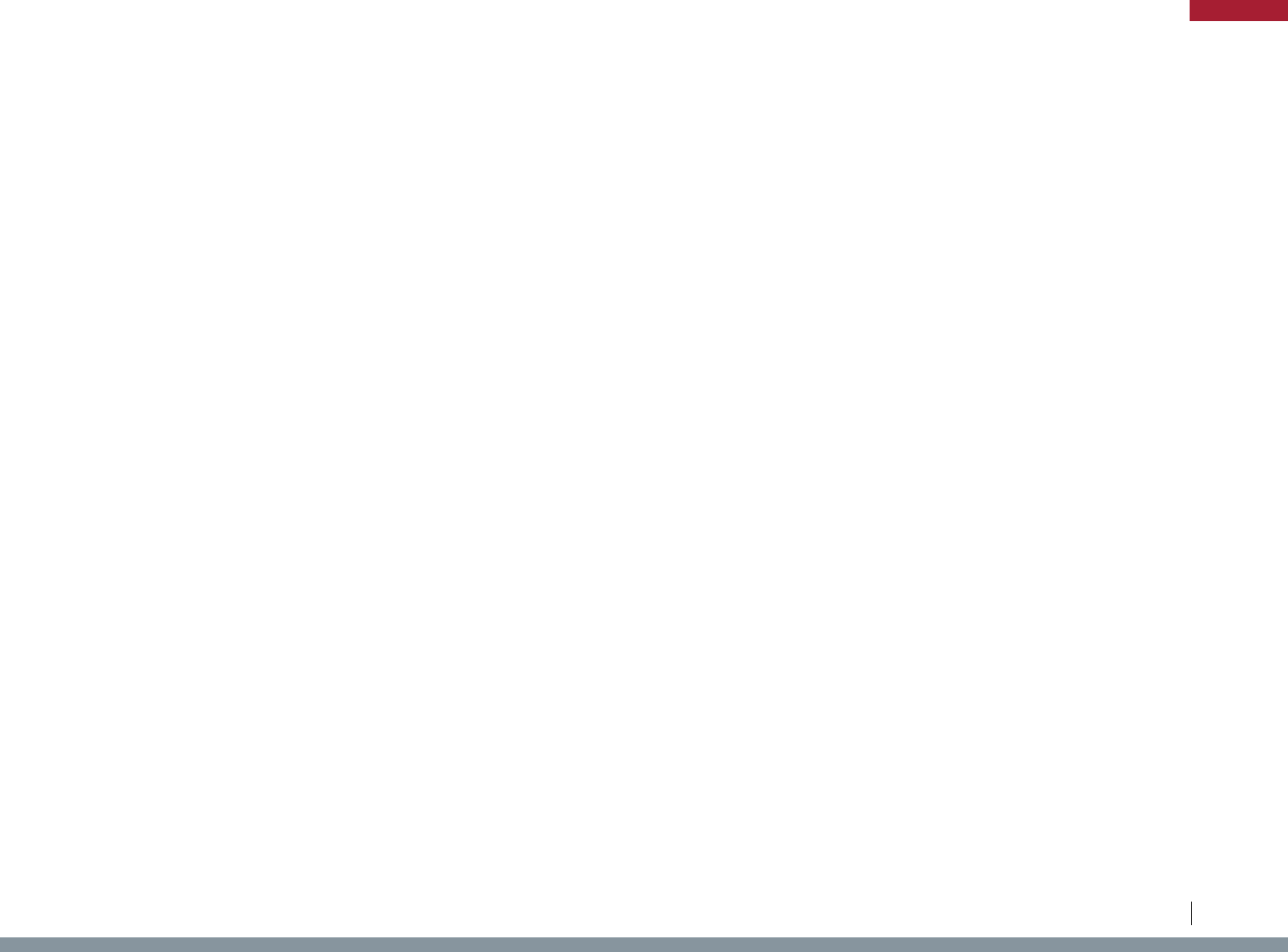
State Law/Regulation Potentially Impacted Industry Agricultural Product Regulation Type Purpose Description
LA La. Stat. § 39:1604
Agricultural
Products
Agricultural Products Procurement Market Support
Preference for all types of products produced, manufactured,
assembled, grown, or harvested in Louisiana; exceptions
MA Mass. Gen. Laws ch. 129 App., § 1-3 Food Eggs, Veal, Pork Prohibition Animal Welfare Sale of products of covered animals confined in cruel manner
MA 321 Mass. Code Regs. 2.15 Live Animals
Fish, Amphibians,
Reptiles, Birds,
Mammals
Importation
Disease/Pest
Prevention
Importation. Liberation and Transportation of Fish. Amphibians.
Reptiles. Birds and Mammals
MA 330 Mass. Code Regs. 11.01 Livestock Swine Importation
Disease/Pest
Prevention
Importation requirements for swine
MA 330 Mass. Code Regs. 11.04 Livestock Swine Importation
Disease/Pest
Prevention
Importation of Swine into the Commonwealth of Massachusetts
MA 330 Mass. Code Regs. 4.01 Livestock Cattle Importation
Disease/Pest
Prevention
Importation requirements for cattle - tuberculosis, brucellosis, etc.
MA 330 Mass. Code Regs. 4.04 Livestock Cattle Importation
Disease/Pest
Prevention
Importation of Cattle into the Commonwealth of Massachusetts
MA 330 Mass. Code Regs. 9.02 Fruit Black Currant Prohibition
Disease/Pest
Prevention
Black Currant Quarantine
MA 330 Mass. Code Regs. 9.03 Fruit
Currants,
Gooseberries
Prohibition
Disease/Pest
Prevention
Currant and Gooseberry Quarantine
MA Mass. Gen. Laws ch. 128, § 27 Plants Plant Products Importation
Disease/Pest
Prevention
Prohibition on delivery within the commonwealth of infested nursery
stock, fruit and plants
MA Mass. Gen. Laws ch. 128, § 35 Livestock Bees Importation
Disease/Pest
Prevention
Transportation of bees and bee equipment; certificate; inspection; fees
MA Mass. Gen. Laws ch. 129, § 27 Livestock Livestock Importation
Disease/Pest
Prevention
Seizure, quarantine and destruction of imported diseased animals
MA Mass. Gen. Laws ch. 129, § 36D Livestock Livestock Importation
Disease/Pest
Prevention
Importation of vaccinated animals; conditions
MA Mass. Gen. Laws ch. 129, § 39G Pets Dogs, Cats Importation
Disease/Pest
Prevention
Official health certificate requirement for dog or cat brought or shipped
into commonwealth; purchase of animal for resale; vaccination record;
devocalization prohibited
MA Mass. Gen. Laws ch. 129, § 39G Pets Dogs, Cats Importation
Disease/Pest
Prevention
Official health certificate requirement for dog or cat brought or shipped
into commonwealth; purchase of animal for resale; vaccination record;
devocalization prohibited
MA Mass. Gen. Laws ch. 129, § 44 Livestock Horses Importation
Disease/Pest
Prevention
Importation requirements for horses and other equidae - testing,
equine infectious anemia, certification
MA Mass. Gen. Laws ch. 7, § 22
Agricultural
Products
Agricultural Products Procurement Market Support
Purchase of supplies and equipment; rules and regulations; duties of
state purchasing agent
MA Mass. Gen. Laws ch. 7, § 23B
Agricultural
Products
Agricultural Products Procurement Market Support
Preference for products grown in or produced from products grown in
commonwealth
MA Mass. Gen. Laws ch. 128, § 20A Plants Aquatic Plants Importation Sustainability Floating Water Chestnut Restrictions
MD Md. Code, Com. Law § 14-3602 Food Food Labeling
Consumer
Protection
Halal food labeling regulations
MD Md. Code, Com. Law § 14-904 Food Food Labeling
Consumer
Protection
Kosher food labeling regulations
MD Md. Code, Com. Law § 14-905
Agricultural
Products
Mezuzah, Tefillin Labeling
Consumer
Protection
Kosher labeling regulations for mezuzah and tefillin
MD Md. Code Regs. 08.03.09.12 Live Animals Cervids Importation
Disease/Pest
Prevention
Prohibition on importing/exporting live cervids
72
Legislative Analysis of S.2019 / H.R.4417: The “Ending Agricultural Trade Suppression Act”
APPENDIX
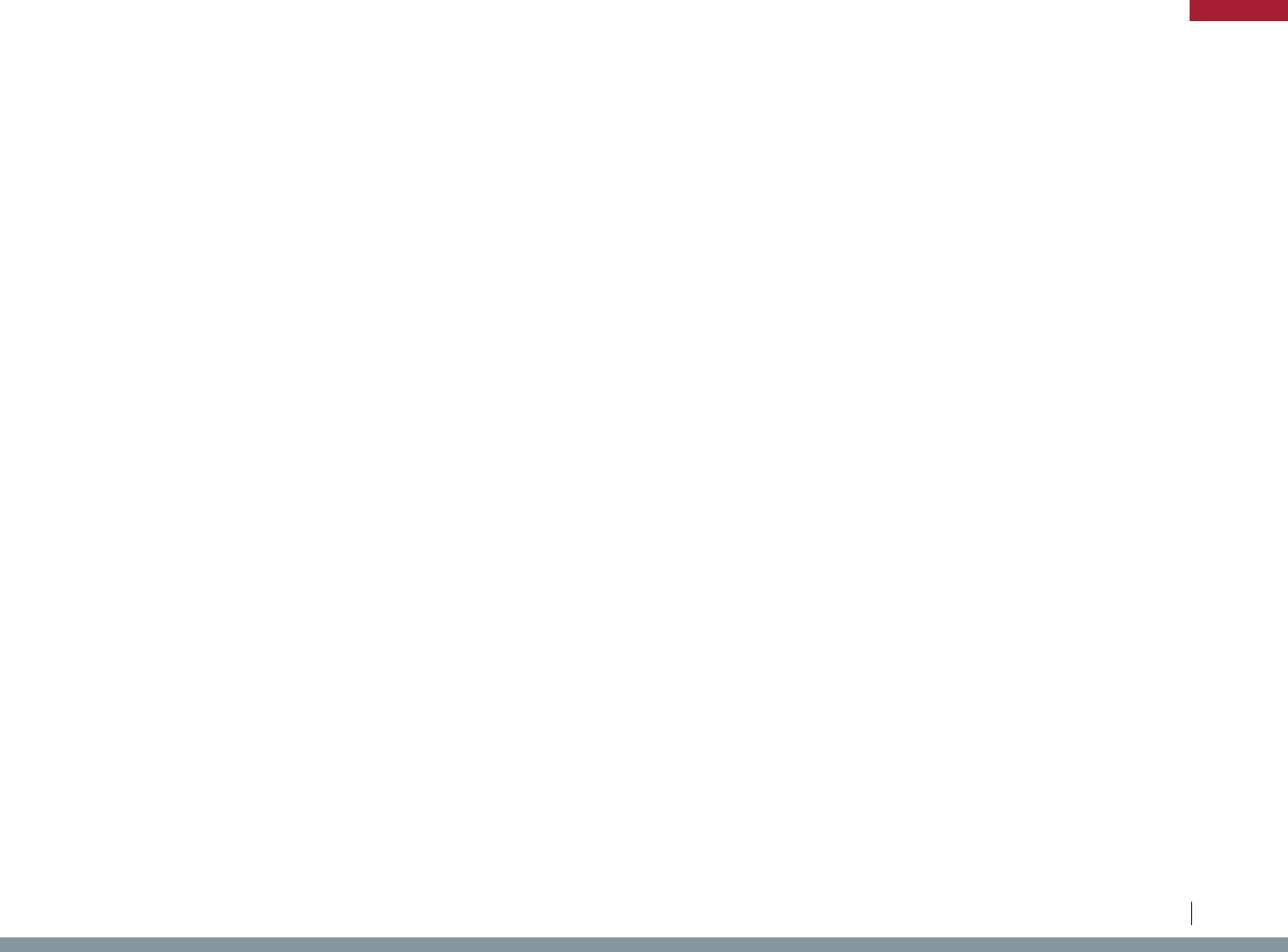
State Law/Regulation Potentially Impacted Industry Agricultural Product Regulation Type Purpose Description
MD Md. Code Regs. 15.06.02.12 Plants Plants Sale
Disease/Pest
Prevention
Authority to stop sale of infested plants, plant pests
MD Md. Code Regs. 15.06.02.14 Insects Insects Importation
Disease/Pest
Prevention
Permit requirements for importation of live insects, plant disease
agents, and pests
MD Md. Code Regs. 15.11.01.01 Livestock Livestock Importation
Disease/Pest
Prevention
Import restrictions and requirements
MD Md. Code Regs. 15.11.01.04 Livestock Cattle Importation
Disease/Pest
Prevention
Bovine Tuberculosis, brucellosis, and health certificate requirements
MD Md. Code Regs. 15.11.01.05 Livestock Equines Importation
Disease/Pest
Prevention
Equine infectious anemia and health certificate requirements
MD Md. Code Regs. 15.11.01.06 Livestock Goats Importation
Disease/Pest
Prevention
Importation requirements for goats - tuberculosis, brucellosis, and
health certificate requirements
MD Md. Code Regs. 15.11.01.07 Livestock Sheep Importation
Disease/Pest
Prevention
Importation restrictions for sheep - scabies, contagious ecthyma, foot
rot, and health certificate requirements
MD Md. Code Regs. 15.11.05.02 Livestock Swine Importation
Disease/Pest
Prevention
Importation requirements for swine - pseudorabies, hog cholera, and
marking requirements
MD Md. Code Regs. 15.11.12.03 Livestock Horses Importation
Disease/Pest
Prevention
Importation requirements for horses - Equine Infectious Anemia
MD Md. Code Regs. 15.11.18.04 Livestock Sheep, Goats Importation
Disease/Pest
Prevention
Importation restrictions for sheep and goats - scabies, certification on
veterinary inspection requirements
MD Md. Code, Agri. § 3-106 Livestock Livestock Importation
Disease/Pest
Prevention
Authority to prohibit livestock imports and/or quarantine
MD Md. Code, Agri. § 5-505 Livestock Bees Importation
Disease/Pest
Prevention
Importation Requirements for Bees
MD Md. Code Regs. 21.05.01.04
Agricultural
Products
Agricultural Products Procurement Market Support Allowance of procurement preference for resident businesses
MD
Md. Code, State Fin. and Proc. § 14-
407
Agricultural
Products
Agricultural Products Procurement Market Support Procurement preferences for food grown in-state for schools
ME 01 001 Me. Code R. 206, § 4 Livestock Cattle, Bison Importation
Disease/Pest
Prevention
Importation restrictions for cattle and bison - brucellosis, tuberculosis,
bluetongue
ME Me. Stat. tit. 12, § 8305 Nursery Stock
Ribes Plants,
Nursery Stock
Importation
Disease/Pest
Prevention
Director may prohibit, prevent or regulate the entry into or movement
within the State of any plants of the genus Ribes or other nursery or
wilding plants that may cause the introduction or spread of a
dangerous forest insect or disease
ME Me. Stat. tit. 7, § 2751 Livestock Bees Importation
Disease/Pest
Prevention
Importation Requirements for Bees
ME Me. Stat. tit. 7, § 2753 Livestock Bees Importation
Disease/Pest
Prevention
Importation Requirements for Bees
ME 01 001 Me. Code R. 331 § 3-2 Food Shellfish Sourcing Food Safety Shellfish sourcing requirements
ME Me. Stat. tit. 5, § 1825-B
Agricultural
Products
Agricultural Products Procurement Market Support Regulation of government procurement of agricultural products
ME Me. Stat. tit. 12, § 6421 Fish Fish Licensing Sustainability Fishing Licensing and Regulation
ME Me. Stat. tit. 12, § 6436 Fish Fish Prohibition Sustainability Egg-bearing lobsters
ME Me. Stat. tit. 12, § 6440 Fish Fish Prohibition Sustainability Closed periods for raising or hauling lobster traps
MI Mich. Comp. Laws § 333.7212 Drugs Salvia Prohibition Consumer Safety Recreational drug ban - salvia
MI Mich. Admin. Code r. 287.712 Livestock Cattle Importation
Disease/Pest
Prevention
Importation restrictions for cattle - brucellosis, tuberculosis
73
Legislative Analysis of S.2019 / H.R.4417: The “Ending Agricultural Trade Suppression Act”
APPENDIX
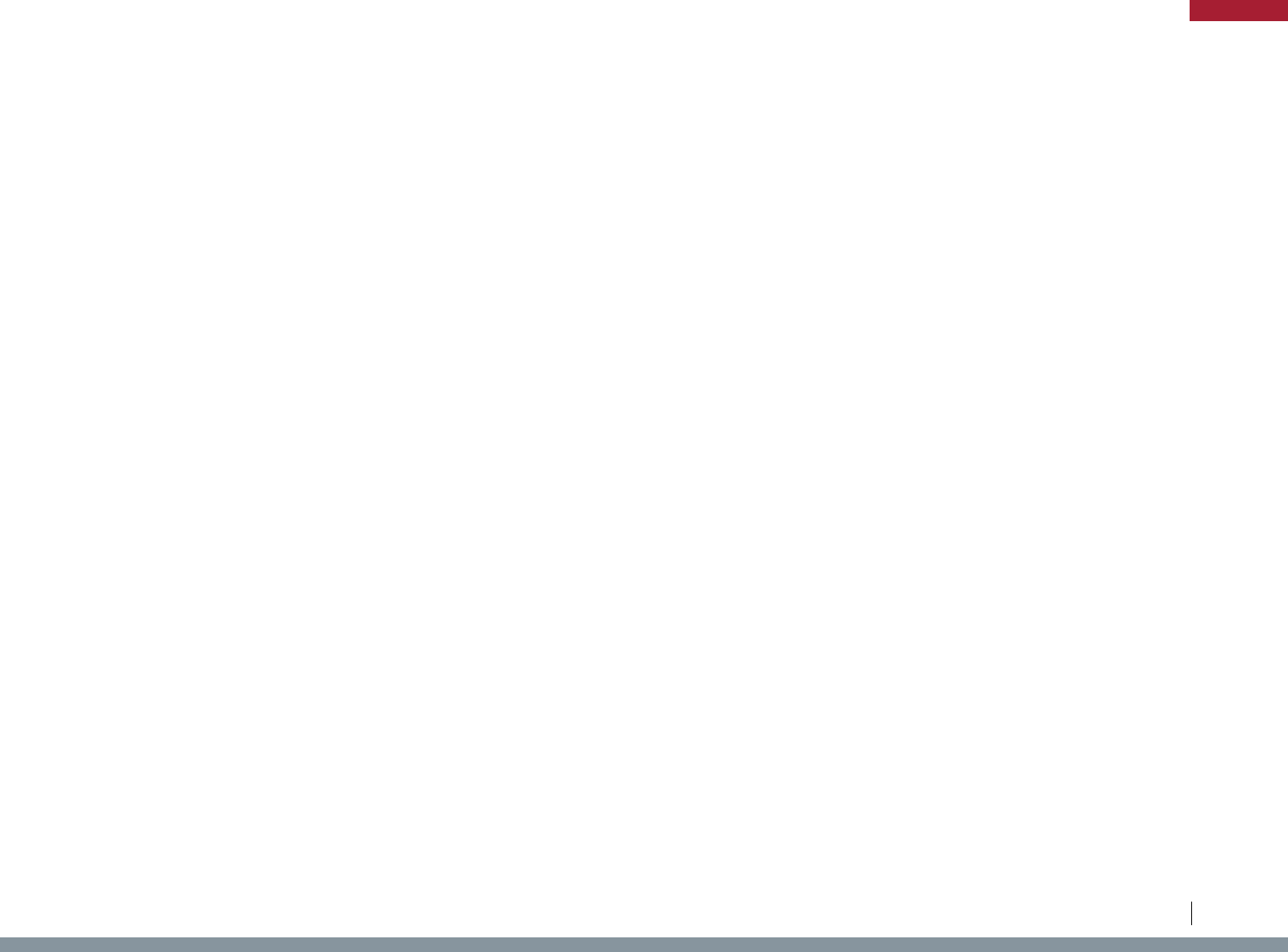
State Law/Regulation Potentially Impacted Industry Agricultural Product Regulation Type Purpose Description
MI Mich. Comp. Laws § 287.719 Livestock Livestock Importation
Disease/Pest
Prevention
Importation requirements for livestock - tuberculosis, brucellosis,
Chronic Wasting Disease
MI Mich. Comp. Laws § 287.720 Livestock Livestock Importation
Disease/Pest
Prevention
Requirements for interstate health certificates
MI Mich. Comp. Laws § 287.731 Live Animals Live Animals Importation
Disease/Pest
Prevention
Prohibition on importing certain species
MI Mich. Comp. Laws § 287.837 Livestock Swine Importation
Disease/Pest
Prevention
Importation requirements for swine - pseudorabies, brucellosis
MI Mich. Comp. Laws § 287.839 Livestock Swine Importation
Disease/Pest
Prevention
Importation requirements for swine - pseudorabies, brucellosis
MI Mich. Comp. Laws § 324.48735 Fish Fish Importation
Disease/Pest
Prevention
Permitting requirements for importation
MI Mich. Comp. Laws § 18.1261
Agricultural
Products
Agricultural Products Procurement Market Support Regulation of government procurement of agricultural products
MN Minn. R. 1510.2320 Crops Potatoes Quality Standards
Consumer
Protection
Certification of seed potatoes grown outside of Minnesota
MN Minn. Stat. § 152.027 Drugs Salvia Prohibition Consumer Safety Recreational drug ban - salvia
MN Minn. R. 1721.0040 Livestock Livestock Importation
Disease/Pest
Prevention
Certificate of veterinary inspection requirements
MN Minn. R. 1721.0050 Livestock Livestock Importation
Disease/Pest
Prevention
Importation requirements for livestock and poultry - certificate of
veterinary inspection and free from signs of disease or quarantine
MN Minn. R. 1721.0130 Livestock Cattle Importation
Disease/Pest
Prevention
Importation requirements for cattle - identification, certificate of
veterinary inspection, tuberculosis test, permit
MN Minn. R. 1721.0165 Livestock Cattle Importation
Disease/Pest
Prevention
Bovine tuberculosis testing regulations
MN Minn. R. 1721.0190 Livestock Swine Importation
Disease/Pest
Prevention
Importation requirements for swine - identification and certificate of
veterinary inspection, importing of feral swine prohibited
MN Minn. R. 1721.0240 Livestock Horses Importation
Disease/Pest
Prevention
Importation requirements for horses - certificate of veterinary
inspection, equine infectious anemia testing
MN Minn. R. 1721.0280 Livestock
Poultry, Hatching
Eggs, Ratites
Importation
Disease/Pest
Prevention
Importation requirements for hatching eggs, poultry, and ratites -
permit, certificate of veterinary inspection, sanitation monitoring at
origin Turkey hatchery
MN Minn. R. 1721.0400 Livestock Cervids Importation
Disease/Pest
Prevention
Importation requirements for farmed cervids - permit, certificate of
veterinary inspection, chronic wasting disease restrictions
MN Minn. R. 1721.0450 Livestock Sheep, Goats Importation
Disease/Pest
Prevention
Importation requirements for sheep and goats - identification, certificate
of veterinary inspection, permit for some, prohibition on scrapie-
exposed or infected animals
MN Minn. R. 6216.0265 Plants Plants, Plant
Products
Importation
Disease/Pest
Prevention
Importation restrictions for prohibited and regulated invasive plant
species - permit required
MN Minn. Stat. § 17.4985 Fish Aquatic Life Importation
Disease/Pest
Prevention
Importation requirements for livestock aquatic life including fish and
shellfish - bill of lading or transportation permit, exceptions
MN Minn. Stat. § 17.4986 Fish Fish Importation
Disease/Pest
Prevention
Importation requirements for fish and stock fish - transportation permit,
disease-free history, emergency enzootic disease areas
MN Minn. Stat. § 18.82 Plants Plants Prohibition
Disease/Pest
Prevention
Prohibition on transportation of noxious weed propagating parts
without a permit
74
Legislative Analysis of S.2019 / H.R.4417: The “Ending Agricultural Trade Suppression Act”
APPENDIX
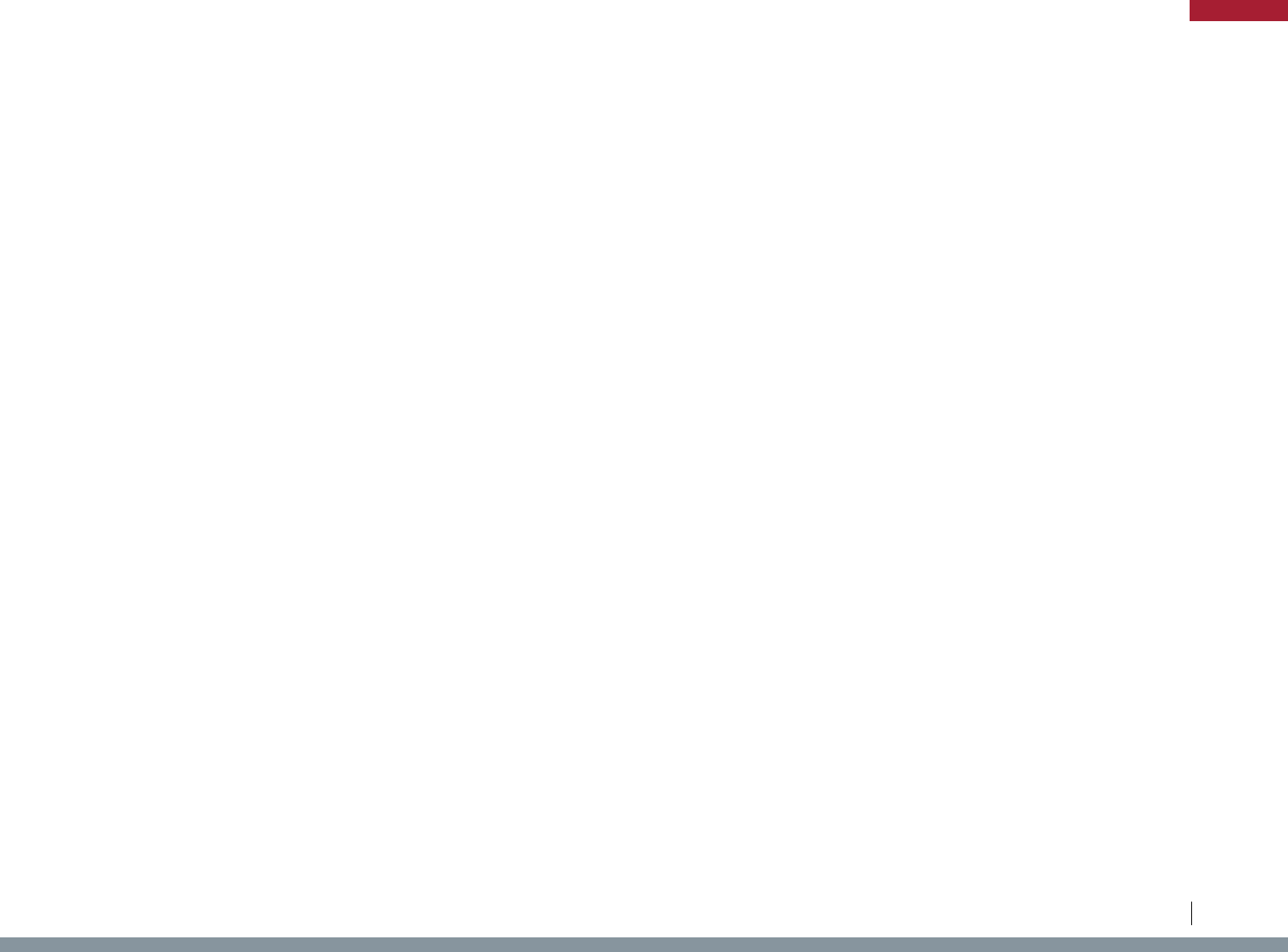
State Law/Regulation Potentially Impacted Industry Agricultural Product Regulation Type Purpose Description
MN Minn. Stat. § 18G.06 Plants Plants, Plant
Products
Importation
Disease/Pest
Prevention
Authority to impose a quarantine restricting or regulating the
production, movement, or existence of plants, plant products,
agricultural commodities, crop seed, farm products, or other articles or
materials - Pest prevention
MN Minn. Stat. § 21.84 Seeds Seeds Recordkeeping
Disease/Pest
Prevention
Recordkeeping requirements for labelers of seeds
MN Minn. R. 4626.0155 Food Mushrooms Quality Standards Food Safety
Sourcing requirements for wild mushrooms - inspection, certified
mushroom harvester, buyer specification
MN Minn. Stat. § 16C.06
Agricultural
Products
Agricultural Products Procurement Market Support Government procurement regulations - in-state vendor preference
MO Mo. Code Regs. tit.19, § 30-1.002 Drugs Salvia Prohibition Consumer Safety Recreational drug ban - salvia
MO Mo. Code Regs. tit.2, § 30-2.005 Livestock Hoofed Animals Importation
Disease/Pest
Prevention
Vesicular stomatitis restrictions on domestic and exotic ungulates
(hoofed animals) entering state
MO Mo. Code Regs. tit.2, § 30-2.010 Live Animals
Livestock, Exotic
Animals
Importation
Disease/Pest
Prevention
Health requirements governing the admission of livestock, poultry, and
exotic animals entering state
MO Mo. Code Regs. tit.2, § 30-2.016 Livestock Rabbits Importation
Disease/Pest
Prevention
Rabbit hemorrhagic disease import restrictions on rabbits and hares
entering state
MO Mo. Code Regs. tit.2, § 30-2.040 Livestock Livestock Importation
Disease/Pest
Prevention
Animal health requirements for exhibition
MO Mo. Code Regs. tit.2, § 30-8.010 Livestock Poultry Importation
Disease/Pest
Prevention
Requirements for the eradication of pullorum disease and fowl typhoid
in poultry
MO Mo. Code Regs. tit.2, § 70-11.040 Rice Rice Importation
Disease/Pest
Prevention
Bakanae Disease Restrictions
MO Mo. Code Regs. tit.2, § 70-11.060 Nuts Walnuts Importation
Disease/Pest
Prevention
Thousand Cankers Disease Restrictions
MO Mo. Code Regs. tit.2, § 70-13.025 Cotton Cotton Importation
Disease/Pest
Prevention
Boll weevil and pink bollworm restrictions
MO Mo. Code Regs. tit.2, § 70-45.005 Plants Plants Importation
Disease/Pest
Prevention
Noxious weed restrictions
MO Mo. Code Regs. tit.3, § 10-9.110 Aquaculture Fish Reporting
Disease/Pest
Prevention
Aquaculture Import and Disease Reporting
MO Mo. Rev. Stat. § 264.061 Livestock Bees Importation
Disease/Pest
Prevention
Importation Requirements for Bees
MO Mo. Rev. Stat. § 264.063 Livestock Bees Importation
Disease/Pest
Prevention
Bee Quarantine Authority
MO Mo. Rev. Stat. § 34.070
Agricultural
Products
Agricultural Products Procurement Market Support Regulation of government procurement of agricultural products
MS Miss. Code R. § 2-1-4-02-101 Fish Catfish Importation
Consumer
Protection
Labeling requirements for Catfish products
MS Miss. Code R. § 2-1-4-03-101 Fish Tilapia Importation
Consumer
Protection
Labeling requirements for Tilapia products
MS Miss. Code § 41-29-113 Drugs Salvia Prohibition Consumer Safety Recreational drug ban - salvia
MS Miss. Code § 49-7-54 Live Animals Cervids Importation
Disease/Pest
Prevention
Prohibition on importation of live white-tailed deer
MS Miss. Code § 49-7-58 Live Animals Cervids Importation
Disease/Pest
Prevention
Temporary moratorium on importation of elk, red deer, mule deer,
black-tailed deer and other cervids designated as susceptible to
chronic wasting disease
75
Legislative Analysis of S.2019 / H.R.4417: The “Ending Agricultural Trade Suppression Act”
APPENDIX
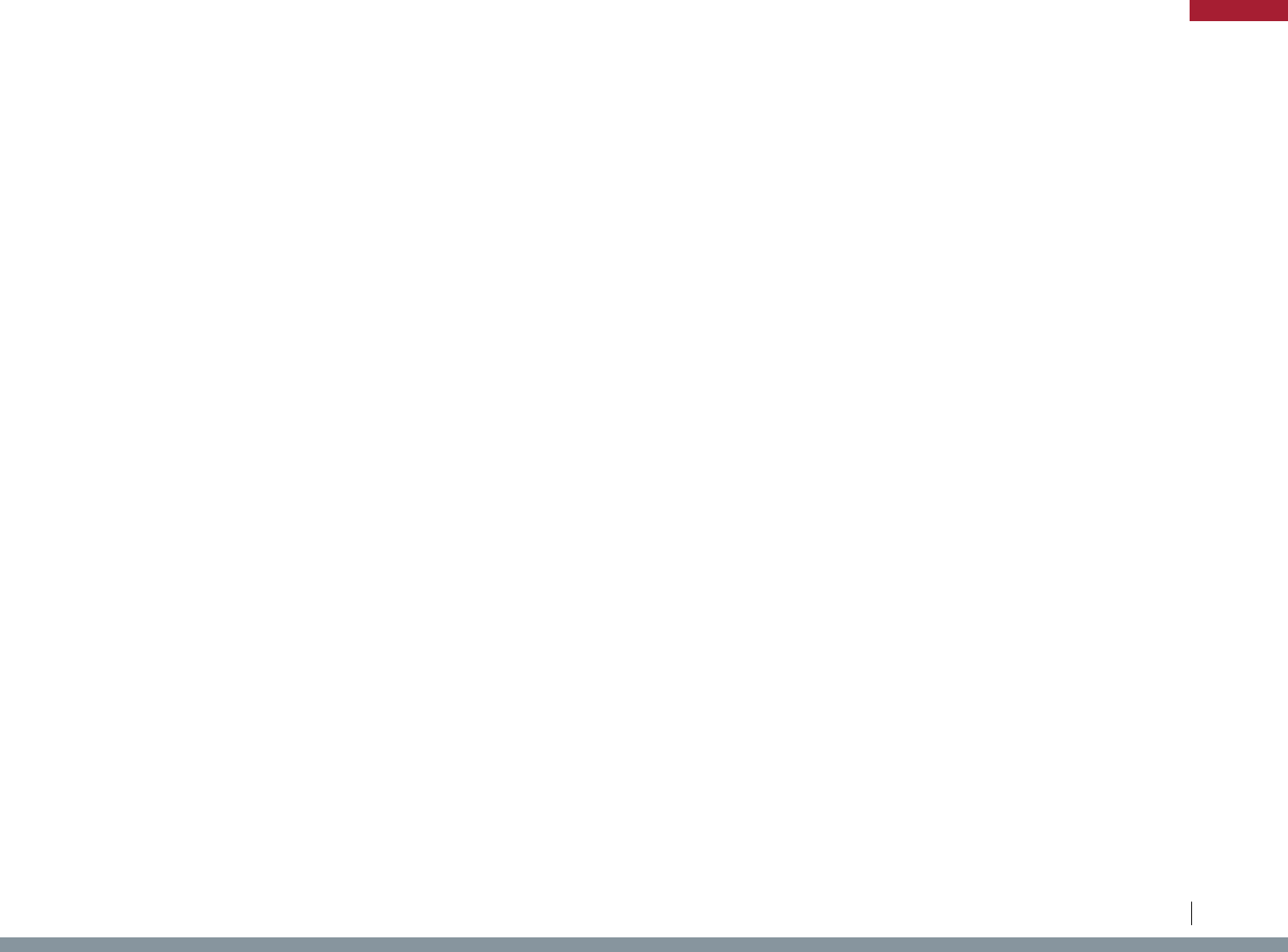
State Law/Regulation Potentially Impacted Industry Agricultural Product Regulation Type Purpose Description
MS Miss. Code § 69-25-101 Livestock Bees Importation
Disease/Pest
Prevention
Importation requirements for bees - certificate of inspection
MS Miss. Code § 69-25-23 Plants Plants, Plant
Products
Importation
Disease/Pest
Prevention
Infected localities outside of state - shipments from prohibited
MS Miss. Code § 69-37-25 Cotton Cotton Importation
Disease/Pest
Prevention
Quarantine and control of movement of articles from infested areas in
other states - Boll Weevil
MS Miss. Code § 75-39-7 Livestock Chicks Importation
Disease/Pest
Prevention
Labeling of containers of live baby chicks offered for sale
MS Miss. Code § 75-40-109 Live Animals Birds Recordkeeping
Disease/Pest
Prevention
Record requirements for exotic and pet bird dealers - reports,
inspection of records
MS Miss. Code R. § 2-1-3-01-121 Plants Plants, Plant
Products
Importation
Disease/Pest
Prevention
Restrictions on importation of plants and plant product - prohibition on
importation of products likely to introduce injurious insect pests, or
diseases
MS Miss. Code R. § 2-1-3-01-122 Plants Plants, Plant
Products
Importation
Disease/Pest
Prevention
Special permit process for importation of prohibited plants
MS Miss. Code R. § 2-1-3-01-125 Crops Sweet Potatoes Importation
Disease/Pest
Prevention
Sweet potato importation regulations - permit certificate tags
MS Miss. Code R. § 2-1-3-01-133 Nursery Stock Nursery Stock, Plants Importation
Disease/Pest
Prevention
Import restrictions on nursery stock and other plants - European brown
garden snail
MS Miss. Code R. § 2-1-3-01-137 Forestry Trees Importation
Disease/Pest
Prevention
Fumigation and certification of shipments of pine and hardwood
seedlings
MS Miss. Code R. § 2-1-3-01-140 Rice Rice Importation
Disease/Pest
Prevention
Prohibition on importation of certain rice plants, products, and
equipment from certain areas - Bakanae disease
MS Miss. Code R. § 2-1-3-06-103 Livestock Bees Importation
Disease/Pest
Prevention
Interstate movement of nucs or colonies or used beekeeping
equipment - bee import restrictions
MS Miss. Code R. § 2-1-3-06-104 Livestock Bees Importation
Disease/Pest
Prevention
Certificate of inspection standards - disease-free bee import
requirements
MS Miss. Code R. § 2-101-2-06-104 Live Animals Cervids Importation
Disease/Pest
Prevention
Import permit required for cervids - Chronic wasting disease
MS Miss. Code R. § 2-101-2-12 Livestock Livestock Importation
Disease/Pest
Prevention
Importation requirements for animals - valid certificates of veterinary
inspection required for all animals except livestock and poultry moving
directly to slaughter, other exceptions
MS Miss. Code R. § 2-101-2-12-105 Livestock Cattle Importation
Disease/Pest
Prevention
Cattle import requirements - Brucellosis, Tuberculosis, Trichomoniasis,
etc.
MS Miss. Code R. § 2-101-2-12-106 Livestock Equines Importation
Disease/Pest
Prevention
Equine import requirements - health certificate, Equine Infectious
Anemia
MS Miss. Code R. § 2-101-2-12-107 Livestock Swine Importation
Disease/Pest
Prevention
Importation requirements for swine - health certificate and permit,
Brucellosis, pseudorabies, etc.
MS Miss. Code R. § 2-101-2-12-108 Livestock Sheep, Goats Importation
Disease/Pest
Prevention
Sheep and goat import requirements - certificate of inspection, testing
requirements, scabies, tuberculosis, brucellosis, etc.
MS Miss. Code R. § 2-101-2-12-112 Livestock Poultry Importation
Disease/Pest
Prevention
Importation requirements for poultry - Avian Influenza, Pullorum-
typhoid, Mycoplasma gallisepticum, Mycoplasma synoviae, etc.
MS Miss. Code R. § 2-101-2-12-114 Livestock Exotic Livestock Importation
Disease/Pest
Prevention
Importation requirements for bison and exotic livestock including
camelids and cervids - permit and inspection certificate
MS Miss. Code R. § 2-101-2-121 Livestock Livestock Importation
Disease/Pest
Prevention
Emergency vesicular stomatitis entry regulation - prohibition on
importation of hooved animals quarantined for vesicular stomatitis
MS Miss. Code R. § 2-101-2-21 Livestock Livestock Importation
Disease/Pest
Prevention
Quarantines and stand-still orders - authority to restrict entry of livestock
76
Legislative Analysis of S.2019 / H.R.4417: The “Ending Agricultural Trade Suppression Act”
APPENDIX
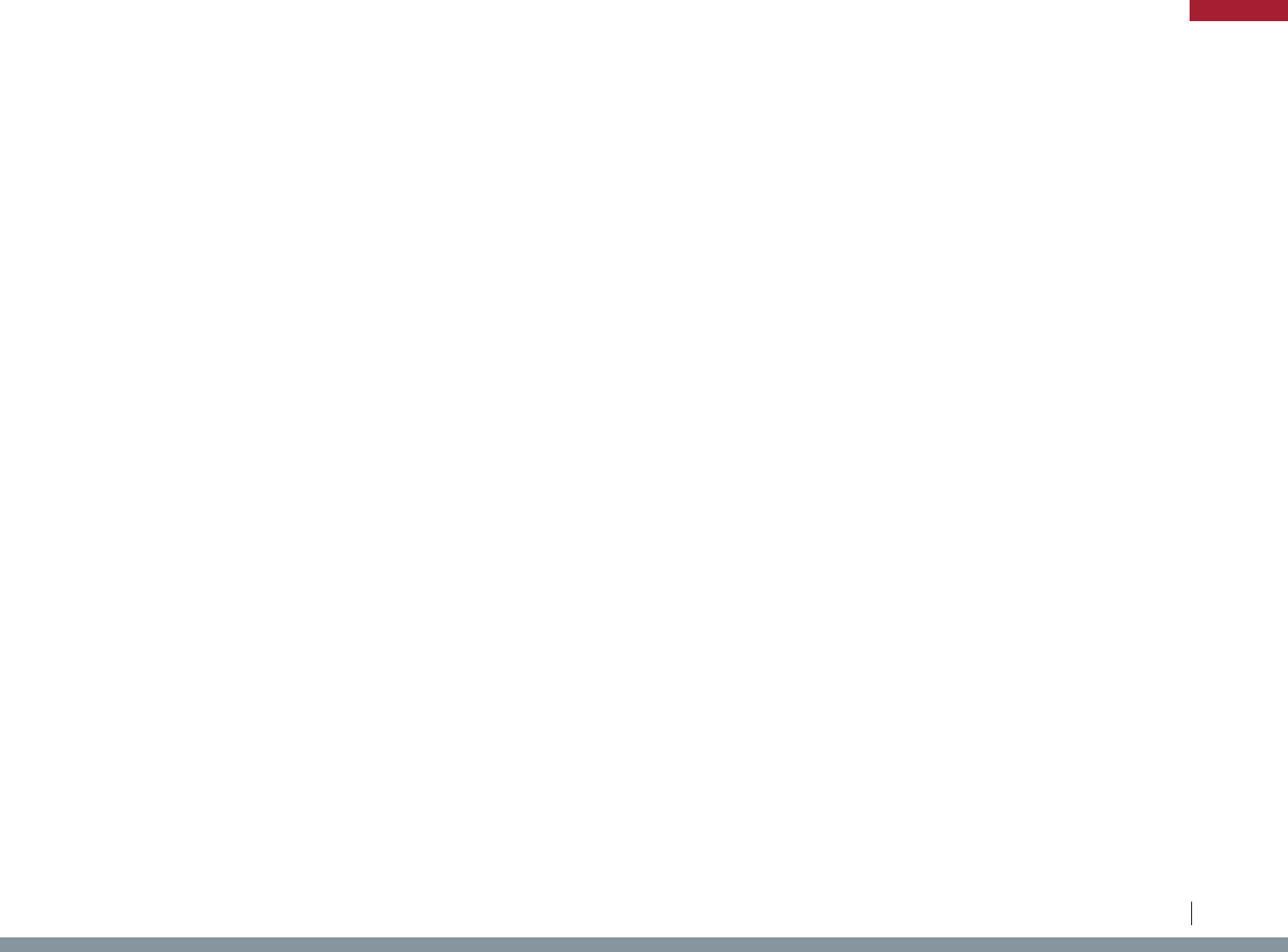
State Law/Regulation Potentially Impacted Industry Agricultural Product Regulation Type Purpose Description
MS Miss. Code R. § 22-1-12-100 Food Shellfish Labeling Food Safety
Prohbiting sale of adulterated, misbranded, or unlabeled shellfish and
products
MS Miss. Code § 31-5-23
Agricultural
Products
Agricultural Products Procurement Market Support
Government procurement regulations - preference for products grown
in state
MS Miss. Code § 31-7-15
Agricultural
Products
Agricultural Products Procurement Market Support
Government procurement regulations - preference for commodities
grown in state
MS Miss. Code § 49-15-55 Fish Oysters Prohibition Sustainability Sale or possession of illegal oysters prohibited
MS Miss. Code § 49-7-51 Live Animals Wildlife Prohibition Sustainability Prohibition on sale of certain game animals, birds, and fish
MS Miss. Code § 49-7-87 Fish Fish Prohibition Sustainability Prohibition on sale of certain game fish
MT Mont. Code § 50-32-222 Drugs Salvia Prohibition Consumer Safety Recreational drug ban - salvia
MT Mont. Admin. R. 12.7.502 Aquaculture Fish Importation
Disease/Pest
Prevention
List of designated fisheries pathogens - importation request may be
delayed while the department determines the risk of a new pathogen
MT Mont. Admin. R. 12.7.505 Aquaculture Fish Importation
Disease/Pest
Prevention
Import permit must be obtained prior to any importation of fish or eggs -
live fish exhibiting clinical signs of a disease may not be imported into
Montana
MT Mont. Admin. R. 32.3.1303 Livestock Sheep, Goats Importation
Disease/Pest
Prevention
Importation requirements for sheep and goats - identification required
for some imported animals
MT Mont. Admin. R. 32.3.202 Livestock Livestock Importation
Disease/Pest
Prevention
Importation requirements for animals, animal semen, and animal
biologics - certificate of veterinary inspection or other approved
documentation, permit, documentation during transportation
MT Mont. Admin. R. 32.3.206 Livestock Livestock Importation
Disease/Pest
Prevention
Importation requirements for animals - documentation requirements
MT Mont. Admin. R. 32.3.212A Livestock Cattle Importation
Disease/Pest
Prevention
Importation requirements for cattle - Brucellosis vaccination of imported
cattle under four months of age
MT Mont. Admin. R. 32.3.216 Livestock Equines Importation
Disease/Pest
Prevention
Importation requirements for equines - official certificate of veterinary
inspection, equine infectious anemia test, etc.
MT Mont. Admin. R. 32.3.217 Livestock
Poultry, Hatching
Eggs
Importation
Disease/Pest
Prevention
Importation requirements for poultry and hatching eggs - health
certificate or VS Form 9-3, import permit, Pullorum testing, new or clean
shipping crates for eggs
MT Mont. Admin. R. 32.3.219 Livestock Swine Importation
Disease/Pest
Prevention
Importation requirements for swine - official health certificate, permit,
pseudorabies, brucellosis, garbage as feed ban
MT Mont. Admin. R. 32.3.220 Livestock Livestock Importation
Disease/Pest
Prevention
Importation requirements for bovine, ovine, porcine, elk semen -
negative test for enumerated diseases
MT Mont. Admin. R. 32.3.226 Livestock Ratites Importation
Disease/Pest
Prevention
Importation requirements for ostriches and other ratites - veterinary
inspection certificate, import permit, disease testing
MT Mont. Admin. R. 32.3.314 Livestock Swine Importation
Disease/Pest
Prevention
Movement of swine through licensed livestock markets and other
concentration points - identification requirements
MT Mont. Admin. R. 32.4.1309 Live Animals Cervids Importation
Disease/Pest
Prevention
Importation requirements for cervids - authority to deny entry, chronic
wasting disease
MT Mont. Admin. R. 32.4.403 Livestock Swine Importation
Disease/Pest
Prevention
Importation requirements for gametes and embryos from animals - bill
of sale, health certificate, importation permit where applicable
MT Mont. Admin. R. 32.4.502 Live Animals Cervids Importation
Disease/Pest
Prevention
Importation restricted or prohibited for certain alternative livestock
including reindeer, white-tailed deer
MT Mont. Admin. R. 4.12.106 Livestock Bees Importation
Disease/Pest
Prevention
Importation Requirements for Bees - permit required to bring into
Montana used beekeeping equipment, including nucs, feed honey,
and refuse for rendering
77
Legislative Analysis of S.2019 / H.R.4417: The “Ending Agricultural Trade Suppression Act”
APPENDIX
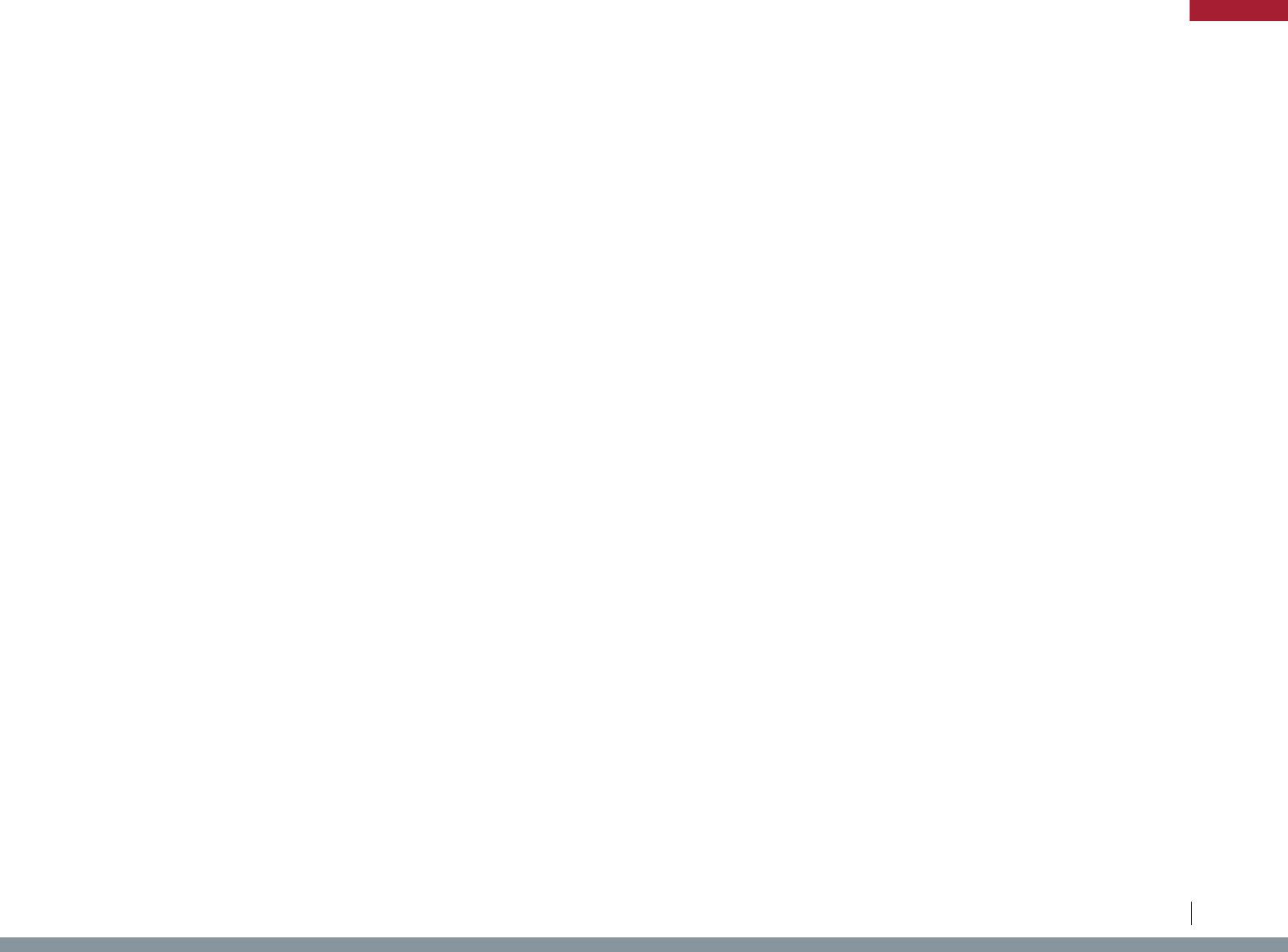
State Law/Regulation Potentially Impacted Industry Agricultural Product Regulation Type Purpose Description
MT Mont. Admin. R. 4.12.3004 Plants Plants Importation
Disease/Pest
Prevention
Noxious weed restrictions - seed screenings originating outside of
Montana shall be conditioned to destroy the viability of all prohibited
noxious weed seeds defined by state law prior to transport through the
state or be transported in a tightly sealed container that will not allow
the loss of the weed seeds
MT Mont. Code § 80-6-202 Livestock Bees Importation
Disease/Pest
Prevention
Importation requirements for bees - pest-free and disease-free
certification required
MT Mont. Code § 80-6-203 Livestock Bees Importation
Disease/Pest
Prevention
Importation requirements for bees in packages or queen cages -
certificate of health issued by the official inspector of the state or
country from which they came required
MT Mont. Code § 87-3-210 Aquaculture Salmon Importation
Disease/Pest
Prevention
Importation of salmonid fish or eggs unlawful - exception, certification,
permit
MT Mont. Code § 18-1-102
Agricultural
Products
Agricultural Products Procurement Market Support Regulation of government procurement of agricultural products
NC 2 N.C. Admin. Code 48C.0127 Plants Seeds Labeling
Consumer
Protection
Labeling requirements for seeds treated with harmful or toxic
substances
NC N.C. Gen. Stat. § 14-401.23 Drugs Salvia Prohibition Consumer Safety Recreational drug ban - salvia
NC 15A N.C. Admin. Code 10B.0101 Live Animals Live Animals Importation
Disease/Pest
Prevention
Importation requirements for certain wild or domestically raised
animals - permit, certificate, label
NC 2 N.C. Admin. Code 48A.0246 Livestock Bees Importation
Disease/Pest
Prevention
Importation requirements for bees - permits, certain species and
products prohibited
NC 2 N.C. Admin. Code 48A.0258 Livestock Bees Importation
Disease/Pest
Prevention
Authority to quarantine bees outside of state when introduction in-state
would present a hazard
NC 2 N.C. Admin. Code 48A.0263 Livestock Bees Licensing
Disease/Pest
Prevention
Permit requirements to sell bees, quarantine compliance
NC 2 N.C. Admin. Code 48A.0903 Crops Sweet Potatoes Importation
Disease/Pest
Prevention
Prohibition on movement of sweet potato weevils or infested sweet
potatoes or vines
NC 2 N.C. Admin. Code 48A.1504 Forestry
Trees, Shrubs, Other
Products
Importation
Disease/Pest
Prevention
Importation requirements for trees and shrubs with roots, plant
conveyances - certificate or permit, gypsy moth
NC 2 N.C. Admin. Code 48A.1704 Plants
Plants, Soil, Nursery
Stock
Importation
Disease/Pest
Prevention
Regulation of certain articles including soil, soil amendments, nursery
stock, used equipment to prevent noxious weeds
NC 2 N.C. Admin. Code 48A.1705 Plants
Plants, Soil, Nursery
Stock
Importation
Disease/Pest
Prevention
Conditions governing the movement of regulated articles to prevent
noxious weeds
NC 2 N.C. Admin. Code 52B.0201 Livestock Livestock Importation
Disease/Pest
Prevention
Prohibition on importation of any animal exposed to disease or under
quarantine, health certificate and permit requirements for importing
livestock
NC 2 N.C. Admin. Code 52B.0204 Livestock Cattle Importation
Disease/Pest
Prevention
Importation requirements for cattle - health certificate, permit,
brucellosis, cattle fever tick, scabies
NC 2 N.C. Admin. Code 52B.0206 Livestock Equines Importation
Disease/Pest
Prevention
Importation requirements for equines - health certificate, stallion permit,
equine infectious anemia
NC 2 N.C. Admin. Code 52B.0207 Livestock Swine Importation
Disease/Pest
Prevention
Importation requirements for swine - certificate of veterinary inspection,
identification, brucellosis, pseudorabies
NC 2 N.C. Admin. Code 52B.0209 Livestock Sheep, Goats Importation
Disease/Pest
Prevention
Importation requirements for sheep and goats - health certificate,
identification, scrapie
NC 2 N.C. Admin. Code 52B.0406 Livestock Equines Importation
Disease/Pest
Prevention
Importation requirements for equines - equine infectious anemia testing
NC 2 N.C. Admin. Code 52B.0603 Livestock Poultry Importation
Disease/Pest
Prevention
Importation requirements for poultry - certificate or label, pullorum-
typhoid, avian influenza
78
Legislative Analysis of S.2019 / H.R.4417: The “Ending Agricultural Trade Suppression Act”
APPENDIX
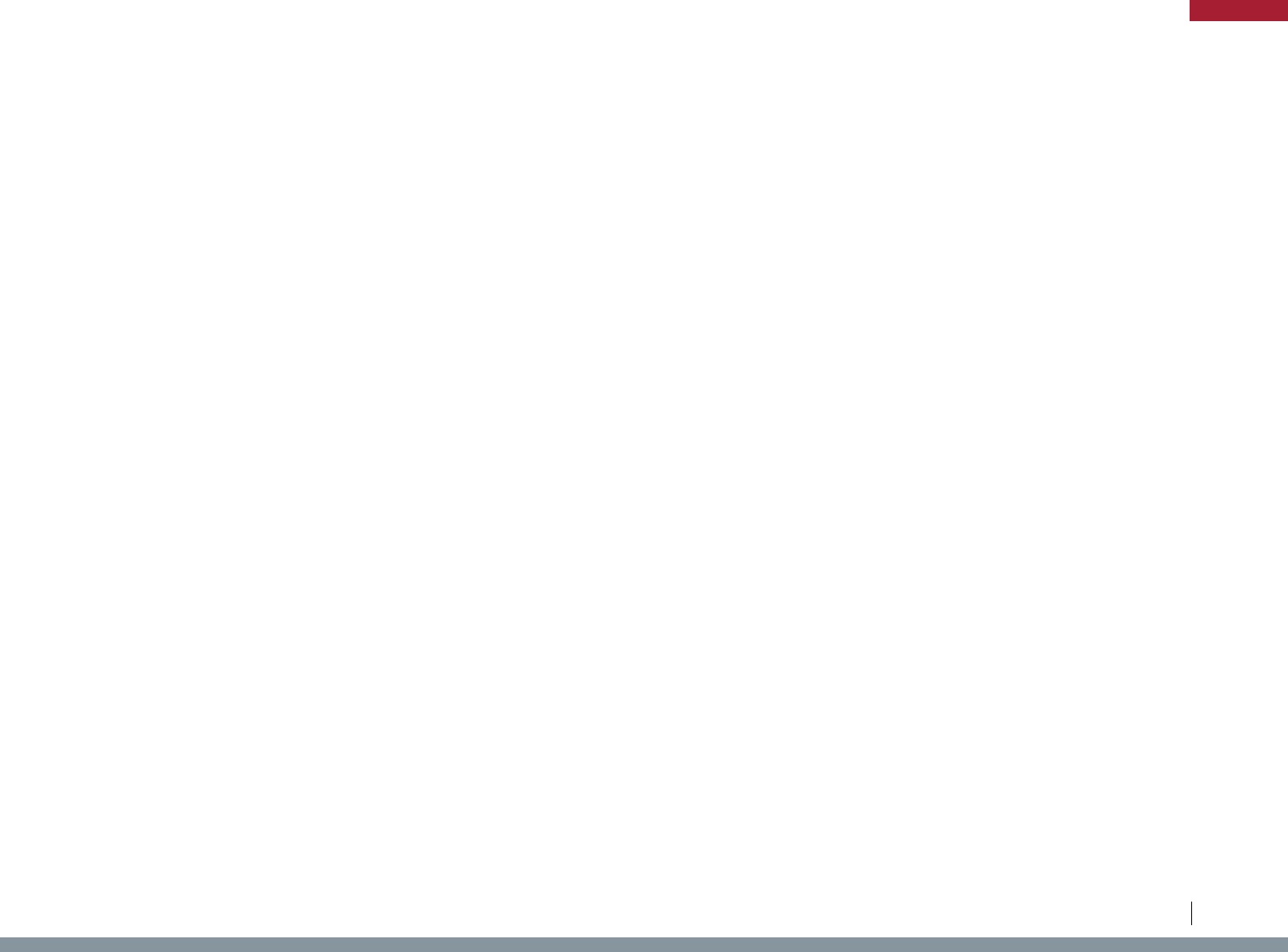
State Law/Regulation Potentially Impacted Industry Agricultural Product Regulation Type Purpose Description
NC N.C. Gen. Stat. § 106-549.84 Livestock Livestock Importation
Disease/Pest
Prevention
Prohibition on importation of livestock under quarantine
NC N.C. Gen. Stat. § 106-65.78 Cotton Cotton Importation
Disease/Pest
Prevention
Penalties for importing certain articles infested with boll weevils
NC N.C. Gen. Stat. § 143-59
Agricultural
Products
Agricultural Products Procurement Market Support
Government procurement - preference given to in state products and
citizens, and articles manufactured by State agencies
ND N.D. Cent. Code § 19-03.1-05 Drugs Salvia Prohibition Consumer Safety Recreational drug ban - salvia
ND N.D. Admin. Code 30-03-02-06 Fish Fish Importation
Disease/Pest
Prevention
Fish stock import permit and disease certification
ND N.D. Admin. Code 48.1-04-01-01 Livestock Bison Importation
Disease/Pest
Prevention
Importation requirements for Bison - certificate of veterinary inspection
ND N.D. Admin. Code 48.1-04-01-02 Livestock Bison Importation
Disease/Pest
Prevention
Importation requirements for bison - disease testing, brucellosis,
scabies, Trichomonas foetus, tuberculosis
ND N.D. Admin. Code 48.1-05-01-01 Livestock Cattle Importation
Disease/Pest
Prevention
Cattle importation requirements - Certificate of veterinary inspection
ND N.D. Admin. Code 48.1-05-01-02 Livestock Cattle Importation
Disease/Pest
Prevention
Cattle importation disease testing requirements - Brucellosis, Scabies,
Trichomonas foetus, and Tuberculosis
ND N.D. Admin. Code 48.1-06-01-01 Livestock Horses Importation
Disease/Pest
Prevention
Horse importation requirements - Certificate of veterinary inspection
ND N.D. Admin. Code 48.1-06-01-02 Livestock Horses Importation
Disease/Pest
Prevention
Horse importation disease testing requirements - Equine infectious
anemia
ND N.D. Admin. Code 48.1-07-02-01 Livestock Elk Importation
Disease/Pest
Prevention
Elk importation requirements
ND N.D. Admin. Code 48.1-07-02-02 Livestock Elk Importation
Disease/Pest
Prevention
Elk genetic purity requirements for interstate and intrastate movement
ND N.D. Admin. Code 48.1-07-03-01 Livestock Elk Importation
Disease/Pest
Prevention
Elk importation disease testing requirements - Brucellosis, Chronic
wasting disease, Paratuberculosis (Johne's disease), and Tuberculosis
ND N.D. Admin. Code 48.1-08-01-02 Livestock Goats Importation
Disease/Pest
Prevention
Importation requirements for goats - Certificate of veterinary inspection
ND N.D. Admin. Code 48.1-08-01-03 Livestock Goats Importation
Disease/Pest
Prevention
Importation requirements for goats - disease testing, Brucellosis,
Scrapie, and Tuberculosis
ND N.D. Admin. Code 48.1-09-02-01 Livestock
Nontraditional
Livestock
Importation
Disease/Pest
Prevention
Importation requirements for certain nontraditional livestock species
ND N.D. Admin. Code 48.1-09-03-01 Livestock
Nontraditional
Livestock
Importation
Disease/Pest
Prevention
Importation disease testing requirements for nontraditional livestock
ND N.D. Admin. Code 48.1-09-06-01 Livestock
Nontraditional
Livestock
Importation
Disease/Pest
Prevention
Importation requirements for certain large, dangerous, and/or hybrid
wild animal species, including disease prevention measures
ND N.D. Admin. Code 48.1-10-01-01 Livestock Poultry Importation
Disease/Pest
Prevention
Importation requirements for poultry - Certificate of veterinary inspection
ND N.D. Admin. Code 48.1-10-01-03 Livestock Poultry Importation
Disease/Pest
Prevention
Importation requirements for poultry - Pullorum-typhoid disease
ND N.D. Admin. Code 48.1-11-01-02 Livestock Sheep Importation
Disease/Pest
Prevention
Importation requirements for sheep - certificate of veterinary inspection
ND N.D. Admin. Code 48.1-11-01-03 Livestock Sheep Importation
Disease/Pest
Prevention
Importation requirements for sheep - disease testing, Brucella ovis,
Scrapie
79
Legislative Analysis of S.2019 / H.R.4417: The “Ending Agricultural Trade Suppression Act”
APPENDIX
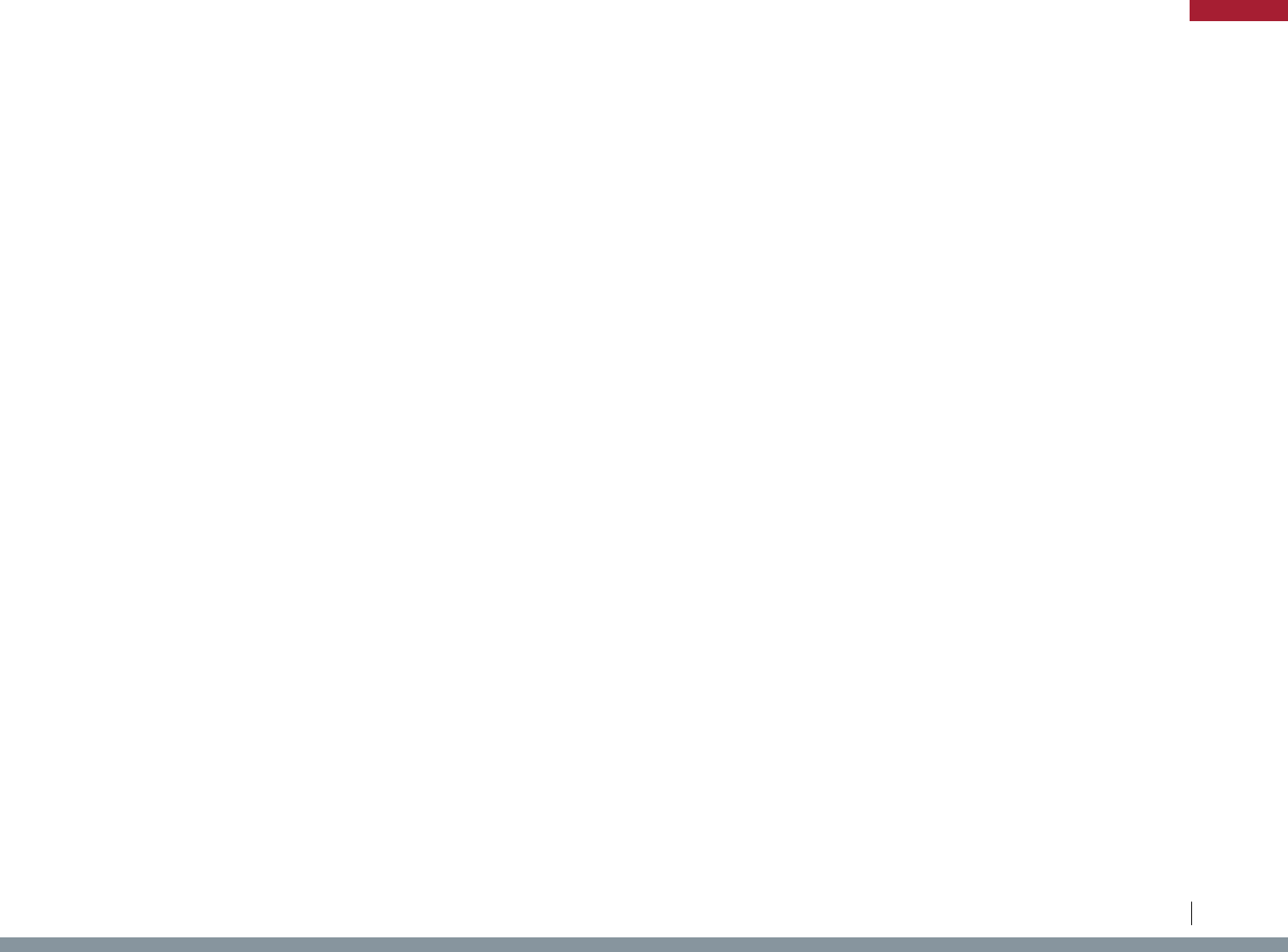
State Law/Regulation Potentially Impacted Industry Agricultural Product Regulation Type Purpose Description
ND N.D. Admin. Code 48.1-12-01-02 Livestock Swine Importation
Disease/Pest
Prevention
Importation requirements for swine - Certificate of veterinary inspection
ND N.D. Admin. Code 48.1-12-01-03 Livestock Swine Importation
Disease/Pest
Prevention
Importation requirements for swine - disease testing, Brucellosis,
Pseudorabies
ND N.D. Admin. Code 48.1-13-02-01 Live Animals Live Animals Importation
Disease/Pest
Prevention
Importation requirements - Certificate of veterinary inspection for other
animals, including domesticated wild animals, game animals
ND N.D. Cent. Code § 36-14-04.1 Livestock Livestock Importation
Disease/Pest
Prevention
Importation requirements for livestock
ND N.D. Cent. Code § 44-08-01
Agricultural
Products
Agricultural Products Procurement Market Support Regulation of government procurement of agricultural products
NE Neb. Rev. Stat. § 28-405 Drugs Salvia Prohibition Consumer Safety Recreational drug ban - salvia
NE 163 Neb. Admin. Code, ch. 2, § 001 Fish Fish Licensing
Disease/Pest
Prevention
Commercial put and take fisheries regulations
NE 163 Neb. Admin. Code, ch. 2, § 001.07 Fish Fish Importation
Disease/Pest
Prevention
Importation requirements for fish - unlawful to import any live fish
without being inspected and found free of Viral Hemorrhagic
Septicemia (VHS) and Spring Viremia of Carp (SVCV), largemouth
bass shall have been inspected and found free of Largemouth Bass
Virus (LMBV) and live yellow perch shall have been inspected and
found free of Heterosporis
NE 163 Neb. Admin. Code, ch. 2, § 002 Fish Fish Importation
Disease/Pest
Prevention
Non-resident fish dealers and exportation, importation and possession
regulations
NE 163 Neb. Admin. Code, ch. 2, § 005 Aquaculture Fish Reporting
Disease/Pest
Prevention
Aquaculture Import and Disease Reporting
NE 23 Neb. Admin. Code, ch. 11, § 009 Livestock Livestock Importation
Disease/Pest
Prevention
Importation restrictions for livestock - scabies
NE 25 Neb. Admin. Code, ch. 10, § 001 Plants Plants Importation
Disease/Pest
Prevention
Noxious weed restrictions
NE Neb. Rev. Stat. § 2-10,106 Nursery Stock Nursery Plants Importation
Disease/Pest
Prevention
Importation requirements for nursery stock - labeling requirement
NE Neb. Rev. Stat. § 81-2,170 Livestock Bees Importation
Disease/Pest
Prevention
Bee Quarantine Authority
NE 9 Neb. Admin. Code, ch. 4, § 003
Agricultural
Products
Agricultural Products Procurement Market Support Regulation of government procurement of agricultural products
NE 92 Neb. Admin. Code, ch. 72, § 004
Agricultural
Products
Agricultural Products Procurement Market Support Regulation of government procurement of agricultural products
NE 163 Neb. Admin. Code, ch. 2, § 012 Plants Aquatic Plants Importation Sustainability Import restrictions on certain invasive aquatic plant species
NH N.H. Code Admin. R. Agr. 1601.02 Livestock Poultry Importation
Disease/Pest
Prevention
Interstate Movement Permit and Certificate of Veterinary Inspection
NH N.H. Code Admin. R. Agr. 1603.01 Livestock Poultry Importation
Disease/Pest
Prevention
License for transportation of live poultry for food
NH N.H. Code Admin. R. Agr. 1806.01 Livestock Bees Importation
Disease/Pest
Prevention
Bee Transportation Requirements
NH N.H. Code Admin. R. Agr. 2103.01 Live Animals Domestic Animals Importation
Disease/Pest
Prevention
No known infected or exposed animals to contagious disease
NH N.H. Code Admin. R. Agr. 2103.03 Livestock Livestock Importation
Disease/Pest
Prevention
Permits for animal importation and entry - Poultry, Swine, Buffalo,
Cervidae, Ratites
80
Legislative Analysis of S.2019 / H.R.4417: The “Ending Agricultural Trade Suppression Act”
APPENDIX
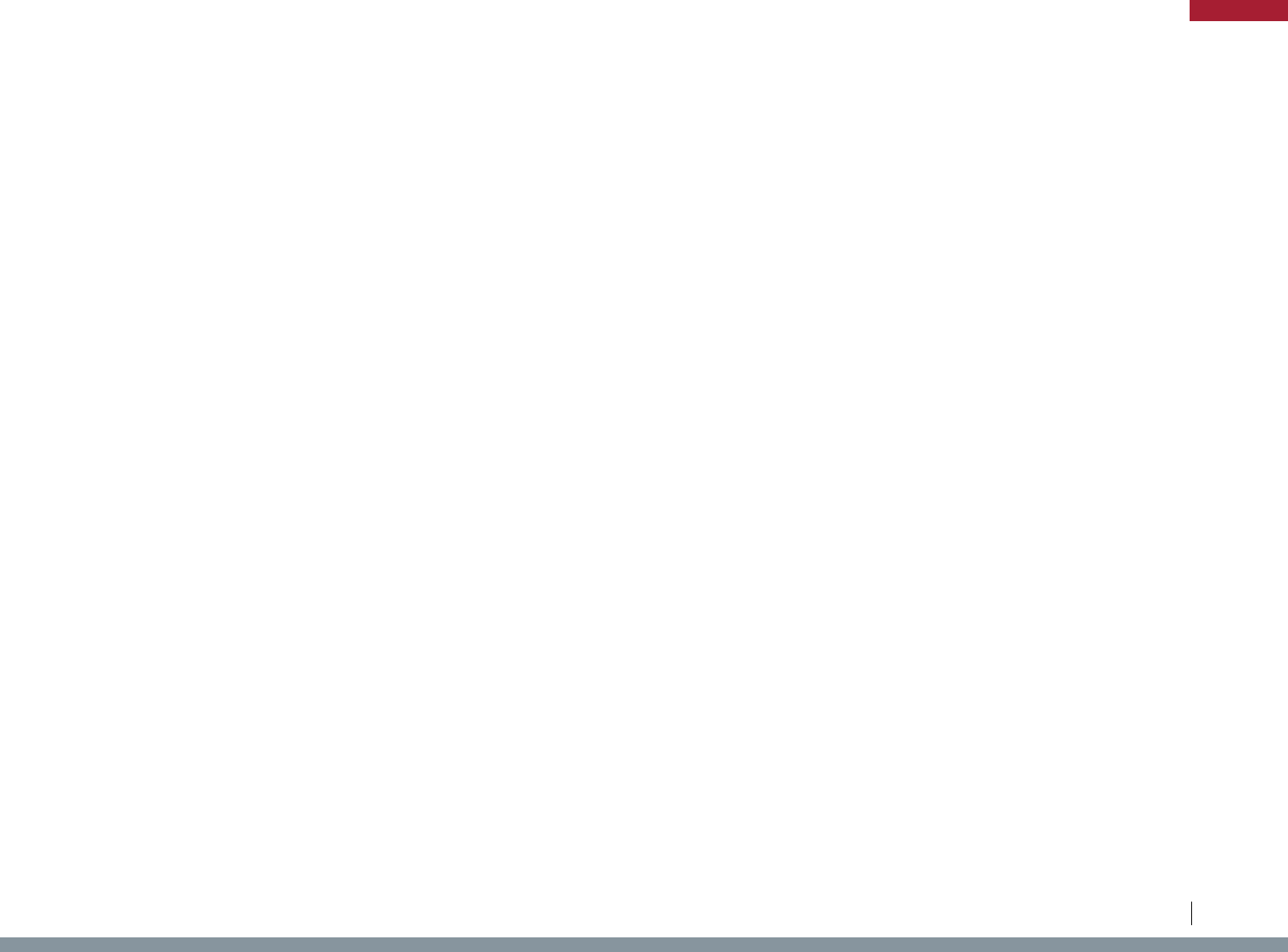
State Law/Regulation Potentially Impacted Industry Agricultural Product Regulation Type Purpose Description
NH N.H. Code Admin. R. Agr. 2103.04 Livestock Livestock Importation
Disease/Pest
Prevention
Certificate of veterinary inspection
NH N.H. Code Admin. R. Agr. 2104.01 Livestock Cattle, Bison Importation
Disease/Pest
Prevention
Importation restrictions for cattle and bison - brucellosis
NH N.H. Code Admin. R. Agr. 2104.02 Livestock Cattle Importation
Disease/Pest
Prevention
Bovine Tuberculosis
NH N.H. Code Admin. R. Agr. 2108.02 Livestock Goats Importation
Disease/Pest
Prevention
Importation restrictions for goats - scabies
NH N.H. Code Admin. R. Agr. 2110.01 Livestock Swine Importation
Disease/Pest
Prevention
Permit and certificate of veterinary inspection required for entry
NH N.H. Code Admin. R. Agr. 2110.03 Livestock Swine Importation
Disease/Pest
Prevention
Importation requirements for swine - pseudorabies
NH N.H. Code Admin. R. Agr. 2113.02 Livestock Equines Importation
Disease/Pest
Prevention
Importation requirements for equines - Equine Infectious
AnemiaEquine Infectious Anemia
NH N.H. Code Admin. R. Agr. 2114.01 Livestock Poultry Importation
Disease/Pest
Prevention
Importation requirements for poultry - VS Form 9-3 for under 20 weeks,
permit and certificate of veterinary inspection for over 20 weeks
NH N.H. Code Admin. R. Agr. 2116.02 Livestock Cervids Importation
Disease/Pest
Prevention
Chronic Wasting Disease Restrictions
NH N.H. Code Admin. R. Agr. 3802.01 Plants Plants, Plant
Products
Prohibition
Disease/Pest
Prevention
Prohibited invasive species - importation restrictions
NH N.H. Code Admin. R. Fis. 309.01 Livestock Cervids Importation
Disease/Pest
Prevention
Chronic Wasting Disease Restrictions
NH N.H. Code Admin. R. Fis. 502.07 Fish Finfish Prohibition
Disease/Pest
Prevention
Importation requirements for fin fish for bait - must be licensed dealer
with import permit
NH N.H. Code Admin. R. Fis. 803.06 Live Animals Snakes and Turtles Importation
Disease/Pest
Prevention
Importation requirements for snakes and turtles
NH N.H. Code Admin. R. Fis. 803.09 Fish Fish Importation
Disease/Pest
Prevention
Diseased Fish
NH N.H. Rev. Stat. § 429:7 Livestock Bees Importation
Disease/Pest
Prevention
Importation Requirements for Bees and Certification
NH N.H. Code Admin. R. Env-Wq. 1303.02 Plants Aquatic Plants Importation Sustainability Hydrilla Restrictions
NJ N.J. Rev. Stat. § 56:8-103 Food Food Labeling
Consumer
Protection
Halal food labeling requirements
NJ N.J. Rev. Stat. § 56:8-66 Food Food Labeling
Consumer
Protection
Kosher food labeling requirements
NJ N.J. Admin. Code § 2:20–2.2 Forestry
Currant Plants,
Gooseberry Plants,
Five-Needled Pines
Importation
Disease/Pest
Prevention
Import restrictions to prevent the spread of white pine blister rust
NJ N.J. Admin. Code § 2:20–6.1 Crops Grains Importation
Disease/Pest
Prevention
Khapra Beetle restrictions - harboring or importation of the Khapra
Beetle prohibited, means of conveyance subject to control measures
NJ N.J. Admin. Code § 2:3–1.2 Live Animals Live Animals Importation
Disease/Pest
Prevention
Importation requirements for animals - interstate health certificate to
accompany animals entering State
NJ N.J. Admin. Code § 2:3–1.3 Livestock Livestock Importation
Disease/Pest
Prevention
Importation requirements for livestock and poultry imported for
slaughter
NJ N.J. Admin. Code § 2:3–1.4 Livestock Livestock Importation
Disease/Pest
Prevention
Importation requirements - contents of Certificate of Veterinary
Inspection
81
Legislative Analysis of S.2019 / H.R.4417: The “Ending Agricultural Trade Suppression Act”
APPENDIX
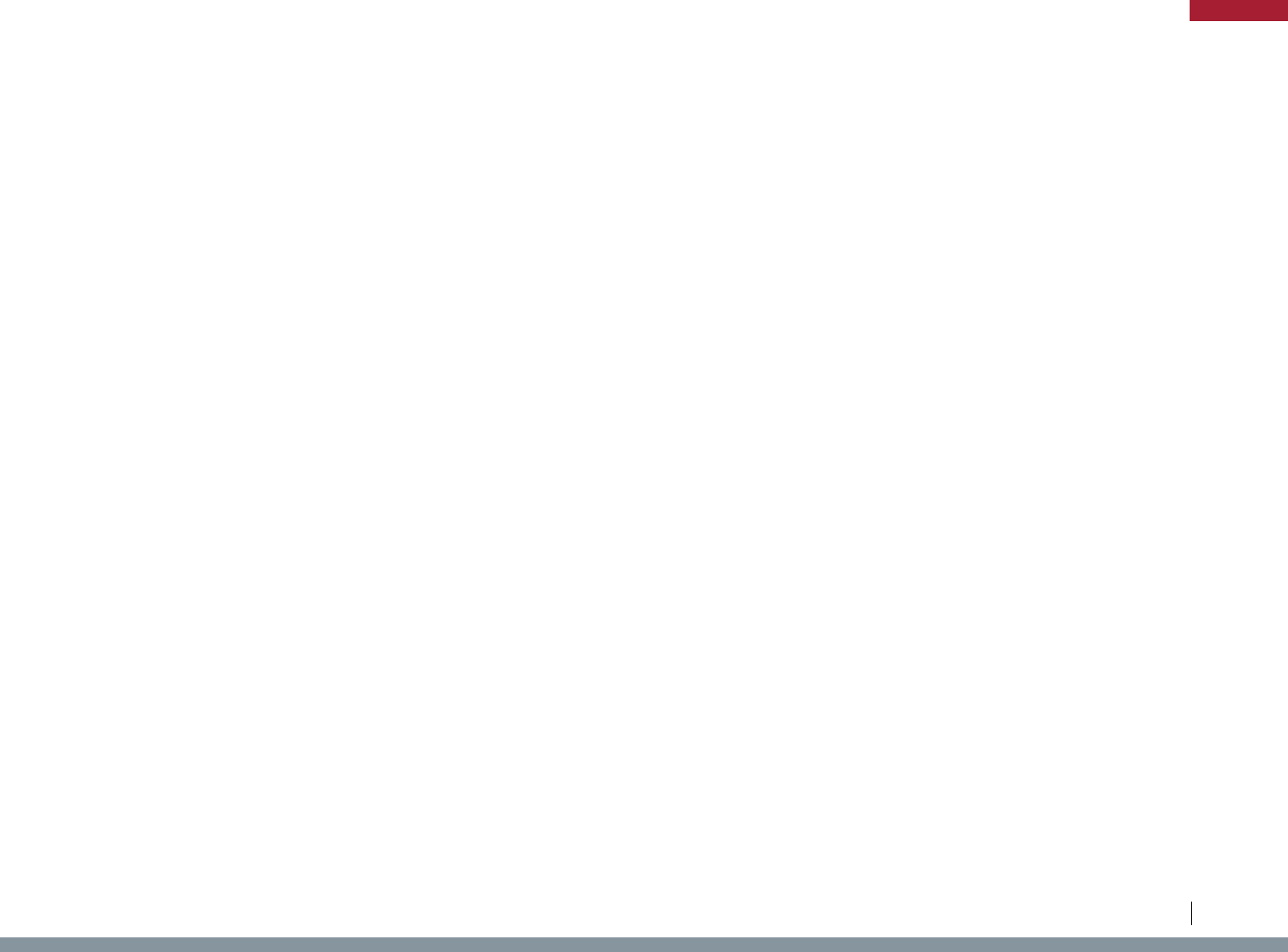
State Law/Regulation Potentially Impacted Industry Agricultural Product Regulation Type Purpose Description
NJ N.J. Admin. Code § 2:3–1.8 Livestock Livestock Importation
Disease/Pest
Prevention
Prohibition on importing diseased livestock and poultry - livestock and
poultry from herds or flocks under quarantine because of any
infectious, contagious and/or communicable disease, or livestock or
poultry currently classified as suspect because of any infectious,
contagious and/or communicable disease shall not be imported into
the State
NJ N.J. Admin. Code § 2:3–2.4 Livestock Cattle Importation
Disease/Pest
Prevention
Importation requirements for cattle - tuberculosis test for imported cattle
NJ N.J. Admin. Code § 2:3–2.8 Livestock Cattle Importation
Disease/Pest
Prevention
Importation requirements for cattle - brucellosis test for imported cattle
NJ N.J. Admin. Code § 2:3–3.3 Livestock Swine Importation
Disease/Pest
Prevention
Importation requirements for swine - brucellosis testing
NJ N.J. Admin. Code § 2:3–3.4 Livestock Swine Importation
Disease/Pest
Prevention
Importation requirements for swine - pseudorabies testing
NJ N.J. Admin. Code § 2:3–4.2 Livestock Sheep Importation
Disease/Pest
Prevention
Importation requirements for sheep - Bluetongue testing
NJ N.J. Admin. Code § 2:3–5.4 Livestock Goats Importation
Disease/Pest
Prevention
Importation requirements goats - tuberculosis test for imported goats
NJ N.J. Admin. Code § 2:3–6.2 Livestock Horses Importation
Disease/Pest
Prevention
Importation requirements for equines - equine infectious anemia testing
NJ N.J. Admin. Code § 2:3–7.4 Livestock
Poultry, Hatching
Eggs
Importation
Disease/Pest
Prevention
Importation requirements for poultry and hatching eggs - avian
influenza testing, permit or certificate of veterinary inspection
requirements
NJ N.J. Admin. Code § 2:3–8.6 Live Animals Cervids Importation
Disease/Pest
Prevention
Importation requirements for captive cervids - Chronic Wasting Disease
NJ N.J. Admin. Code § 2:3–9.3 Livestock Llamas, Alpacas Importation
Disease/Pest
Prevention
Importation requirements for llamas and alpacas - tuberculosis testing
NJ N.J. Admin. Code § 2:3–9.4 Livestock Llamas, Alpacas Importation
Disease/Pest
Prevention
Importation requirements for llamas and alpacas - brucellosis testing
NJ N.J. Rev. Stat. § 4:6-15 Livestock Bees Importation
Disease/Pest
Prevention
Importation requirements for bees - certificate of inspection required
NJ N.J. Rev. Stat. § 52:32-1.4
Agricultural
Products
Agricultural Products Procurement Market Support
Regulation of government procurement of agricultural products -
reciprocity of disadvantaging conditions
NJ N.J. Rev. Stat. § 52:32-45
Agricultural
Products
Agricultural Products Procurement Market Support
Regulation of government procurement of agricultural products -
preference in State contracts for purchase of wood or paper products
derived from sustainably managed forests or procurement systems
NM N.M. Code R. § 19.35.7 Live Animals
Non-Domesticated
Animals
Importation
Disease/Pest
Prevention
Regulation of imporation of live non-domesticated animals
NM N.M. Code R. § 21.17.28 Nuts
Pecans, Other Nut
Trees
Importation
Disease/Pest
Prevention
Pecan Weevil Restrictions
NM N.M. Code R. § 21.17.42 Cotton Cotton Importation
Disease/Pest
Prevention
Boll weevil and pink bollworm restrictions
NM N.M. Code R. § 21.30.7.11 Livestock Horses Importation
Disease/Pest
Prevention
Importation of Stallions
NM N.M. Code R. § 21.30.7.13 Livestock Horses Importation
Disease/Pest
Prevention
Importation of Equine Semen and Embryo
NM N.M. Code R. § 21.32.4.10 Livestock Cattle, Bison Importation
Disease/Pest
Prevention
Importation requirements for cattle and bison - tuberculosis
82
Legislative Analysis of S.2019 / H.R.4417: The “Ending Agricultural Trade Suppression Act”
APPENDIX
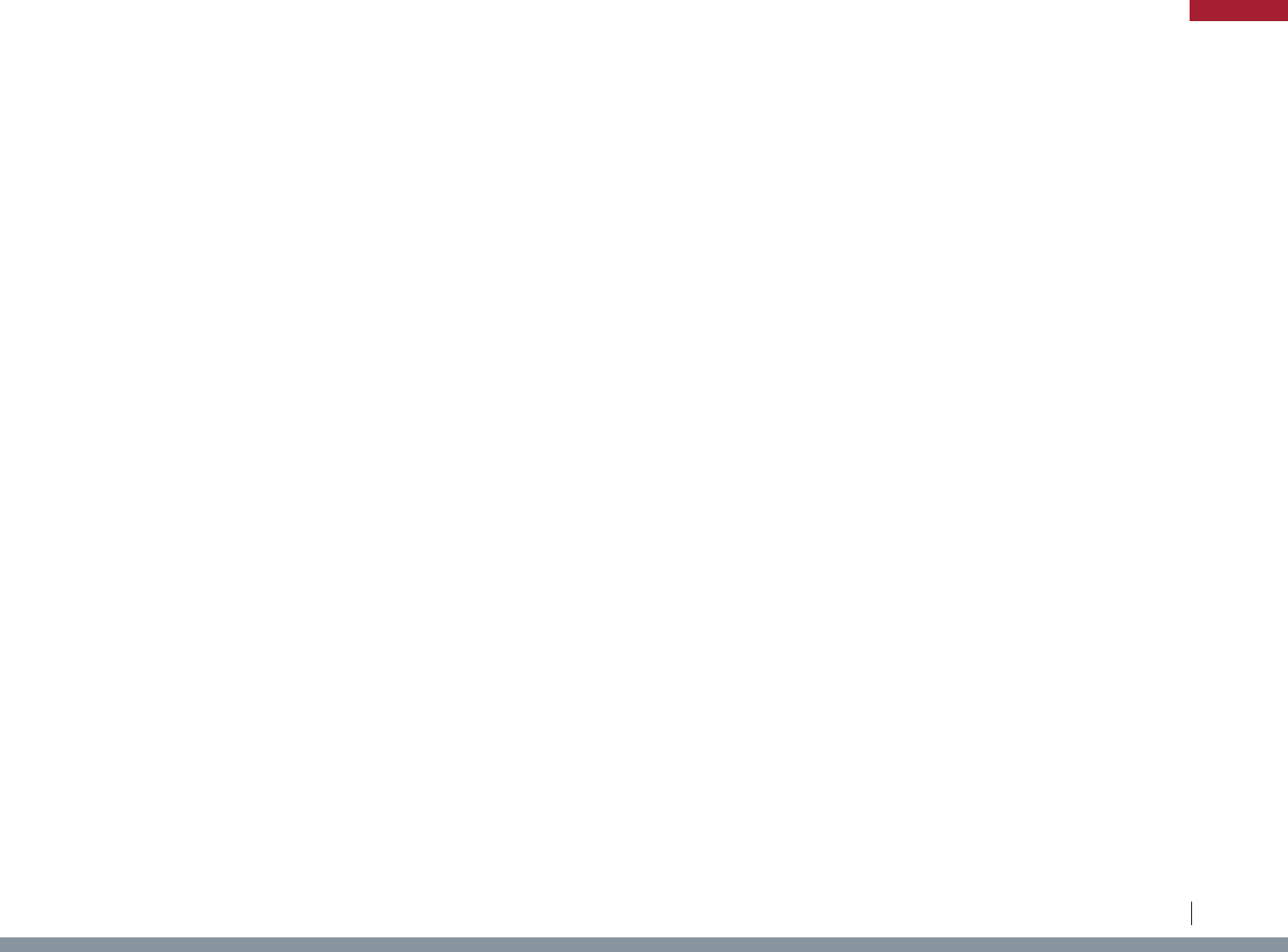
State Law/Regulation Potentially Impacted Industry Agricultural Product Regulation Type Purpose Description
NM N.M. Code R. § 21.32.4.12 Livestock Sheep, Goats Inspection
Disease/Pest
Prevention
Import requirements for sheep and goats
NM N.M. Code R. § 21.32.4.13 Livestock Equines Importation
Disease/Pest
Prevention
Import requirements for equidae
NM N.M. Code R. § 21.32.4.14 Livestock Swine Importation
Disease/Pest
Prevention
Import requirements for swine
NM N.M. Code R. § 21.32.4.15 Livestock Cattle Importation
Disease/Pest
Prevention
Importation restrictions for cattle - scabies
NM N.M. Code R. § 21.32.4.17 Livestock Sheep Importation
Disease/Pest
Prevention
Importation requirements for sheep - Scrapie
NM N.M. Code R. § 21.32.4.8 Livestock Cattle Importation
Disease/Pest
Prevention
Import regulations for cattle including bison
NM N.M. Code R. § 21.32.4.9 Livestock Cattle Importation
Disease/Pest
Prevention
Brucellosis test requirement for cattle and bison
NM N.M. Stat. § 76-9-11 Livestock Bees Importation
Disease/Pest
Prevention
Importation Requirements for Bees
NM N.M. Stat. § 77-5-4 Livestock Cattle Importation
Disease/Pest
Prevention
Bovine Tuberculosis
NM N.M. Code R. § 7.6.2.8 Food Shellfish Sourcing Food Safety Shellfish sourcing requirements
NM N.M. Stat. § 13-1-21
Agricultural
Products
Agricultural Products Procurement Market Support Regulation of government procurement of agricultural products
NV Nev. Admin. Code § 441A.475 Livestock Livestock Importation
Disease/Pest
Prevention
Importation requirements
NV Nev. Admin. Code § 571.030 Livestock Horses Importation
Disease/Pest
Prevention
Importation requirements for horses - certificate of veterinary
inspection, Equine Infectious Anemia testing
NV Nev. Admin. Code § 571.050 Livestock Swine Importation
Disease/Pest
Prevention
Importation requirements for swine - pseudorabies
NV Nev. Admin. Code § 571.060 Livestock Sheep, Goats Importation
Disease/Pest
Prevention
Importation restrictions for sheep and goats - scabies
NV Nev. Admin. Code § 571.095 Livestock Livestock Importation
Disease/Pest
Prevention
Transportation of livestock - stops for inspection, possession of health
certificates, sanitation
NV Nev. Rev. Stat. § 552.212 Livestock Bees Importation
Disease/Pest
Prevention
Importation Requirements for Bees
NV Nev. Rev. Stat. § 571.210 Live Animals Cervids Importation
Disease/Pest
Prevention
Importation of cervids - chronic wasting disease
NV Nev. Admin. Code § 446.129 Food Mushrooms Licensing Food Safety Wild mushroom sourcing requirements
NY N.Y. Agric. & Mkts. Law § 199-e Food Food Prohibition
Consumer
Protection
Sale of irradiated food prohibited - exceptions
NY N.Y. Agric. & Mkts. Law § 201-a Food Food Labeling
Consumer
Protection
Kosher food labeling, certifying, and recordkeeping regulations
NY N.Y. Agric. & Mkts. Law § 201-e Food Food Labeling
Consumer
Protection
Halal food labeling, certifying, and recordkeeping regulations
NY
N.Y. Comp. Codes R. & Regs. tit. 6, §
575.3
Plants Plants, Bees, Fish Importation
Consumer
Protection
Importation of listed invasive species prohibited - plants, insects, fish
NY N.Y. Agric. & Mkts. Law § 173-C Livestock Bees Importation
Disease/Pest
Prevention
Importation requirements for bees
83
Legislative Analysis of S.2019 / H.R.4417: The “Ending Agricultural Trade Suppression Act”
APPENDIX
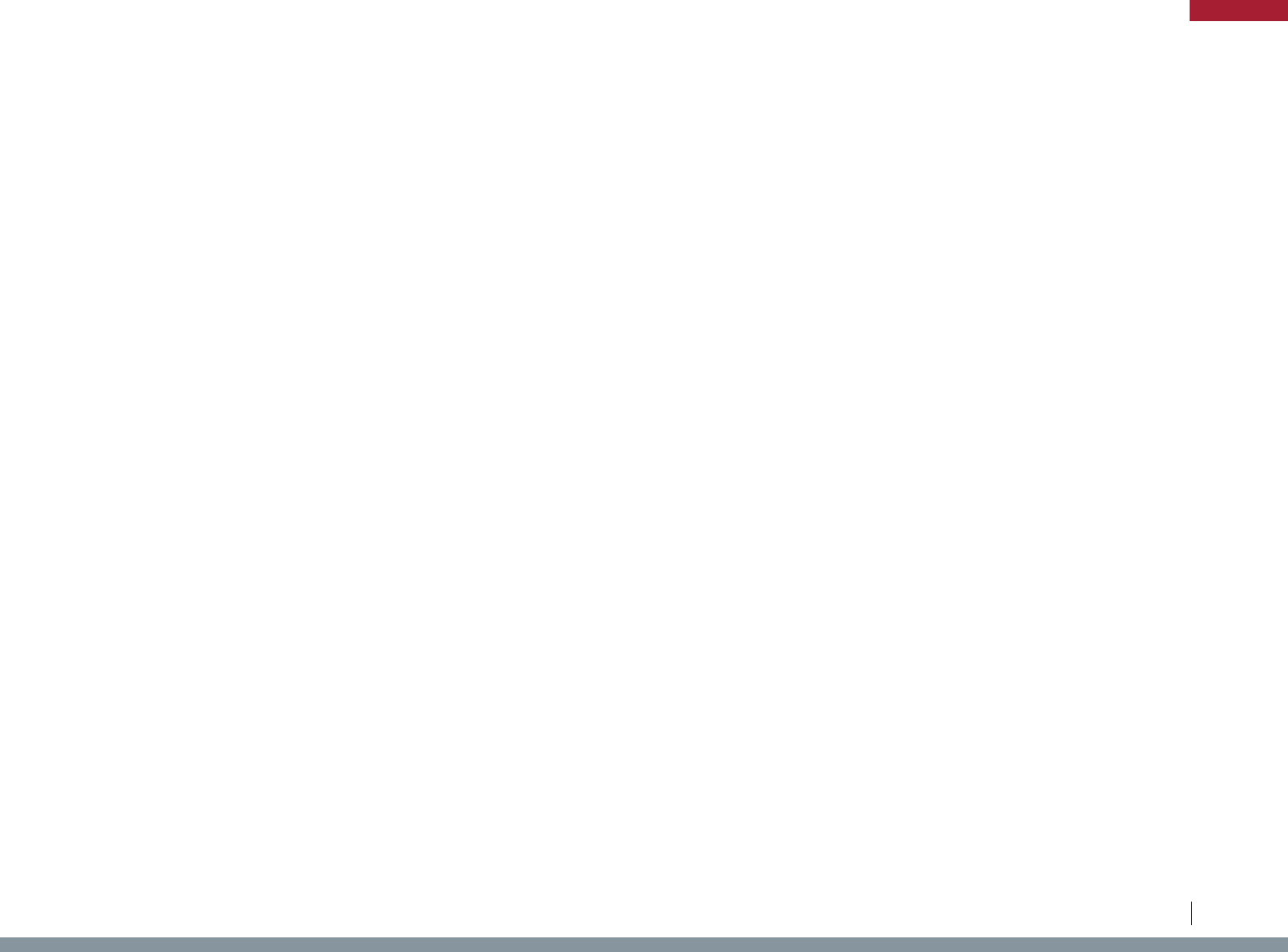
State Law/Regulation Potentially Impacted Industry Agricultural Product Regulation Type Purpose Description
NY
N.Y. Comp. Codes R. & Regs. tit. 1, §
127.5
Crops Potatoes Importation
Disease/Pest
Prevention
Golden nematodes restrictions
NY
N.Y. Comp. Codes R. & Regs. tit. 1, §
132.1
Crops Vegetables Importation
Disease/Pest
Prevention
Vegetable plant quarantine order
NY
N.Y. Comp. Codes R. & Regs. tit. 1, §
133.4
Crops Vegetables Importation
Disease/Pest
Prevention
Certification of vegetable plants required for importation
NY
N.Y. Comp. Codes R. & Regs. tit. 1, §
138.1
Fruit Grapes Importation
Disease/Pest
Prevention
Grape root stock and grape wood importation - statement of freedom
from viruses
NY
N.Y. Comp. Codes R. & Regs. tit. 1, §
45.2
Livestock Poultry Importation
Disease/Pest
Prevention
Transportation requirements for importation of poultry - Avian Influenza
NY
N.Y. Comp. Codes R. & Regs. tit. 1, §
45.6
Livestock Poultry Importation
Disease/Pest
Prevention
Importation requirements for poultry - Avian influenza control measures
NY
N.Y. Comp. Codes R. & Regs. tit. 1, §
53.2
Livestock Cattle Importation
Disease/Pest
Prevention
Importation requirements for cattle - Veterinary inspection certificate,
shipper statement
NY
N.Y. Comp. Codes R. & Regs. tit. 1, §
53.3
Livestock Cattle Importation
Disease/Pest
Prevention
Importation of cattle to a specifically approved stockyard or a
recognized slaughtering establishment
NY
N.Y. Comp. Codes R. & Regs. tit. 1, §
53.4
Livestock Cattle Importation
Disease/Pest
Prevention
Importation of cattle to be fed for slaughter
NY
N.Y. Comp. Codes R. & Regs. tit. 1, §
53.5
Livestock Cattle Importation
Disease/Pest
Prevention
Importation of cattle for any purpose other than immediate slaughter or
feeding for slaughter
NY
N.Y. Comp. Codes R. & Regs. tit. 1, §
62.2
Livestock
Sheep, Goats,
Llamas, Deer
Importation
Disease/Pest
Prevention
Importation requirements for sheep, goats, llamas, and deer
NY
N.Y. Comp. Codes R. & Regs. tit. 1, §
62.3
Livestock Sheep, Goats Importation
Disease/Pest
Prevention
Importation requirements for sheep, goats - certificate of veterinary
inspection required except for those moved to slaughter
NY
N.Y. Comp. Codes R. & Regs. tit. 1, §
62.4
Livestock Sheep, Goats Importation
Disease/Pest
Prevention
Importation of sheep and goats to a specifically approved stockyard or
recognized slaughtering establishment
NY
N.Y. Comp. Codes R. & Regs. tit. 1, §
62.6
Livestock Llamas Importation
Disease/Pest
Prevention
Importation requirements for llamas - certificate of veterinary inspection
NY
N.Y. Comp. Codes R. & Regs. tit. 1, §
62.7
Live Animals Deer Importation
Disease/Pest
Prevention
Importation requirements for deer - certificate of veterinary inspection,
permit
NY
N.Y. Comp. Codes R. & Regs. tit. 1, §
63.3
Livestock Swine Importation
Disease/Pest
Prevention
Importation requirements for swine - certification of health of swine
NY
N.Y. Comp. Codes R. & Regs. tit. 1, §
63.4
Livestock Swine Importation
Disease/Pest
Prevention
Importation of breeding swine and swine for exhibition - brucellosis,
pseudorabies
NY
N.Y. Comp. Codes R. & Regs. tit. 1, §
63.5
Livestock Swine Importation
Disease/Pest
Prevention
Importation of feeder swine - pseudorabies
NY
N.Y. Comp. Codes R. & Regs. tit. 1, §
63.7
Livestock Swine Importation
Disease/Pest
Prevention
Importation of swine for immediate slaughter - health certificate or
waybill
NY
N.Y. Comp. Codes R. & Regs. tit. 1, §
64.1
Livestock Horses Importation
Disease/Pest
Prevention
Importation requirements for horses - certificate of veterinary
inspection, Equine Interstate Passport
NY
N.Y. Comp. Codes R. & Regs. tit. 1, §
64.11
Livestock Horses Importation
Disease/Pest
Prevention
Importation of thoroughbred stallions for breeding - test for equine viral
arteritis required
NY
N.Y. Comp. Codes R. & Regs. tit. 1, §
64.4
Livestock Horses Importation
Disease/Pest
Prevention
Importation requirements for horses and other equidae - disease testing
NY
N.Y. Comp. Codes R. & Regs. tit. 1, §
64.5
Livestock Horses Importation
Disease/Pest
Prevention
Importation for immediate slaughter
84
Legislative Analysis of S.2019 / H.R.4417: The “Ending Agricultural Trade Suppression Act”
APPENDIX
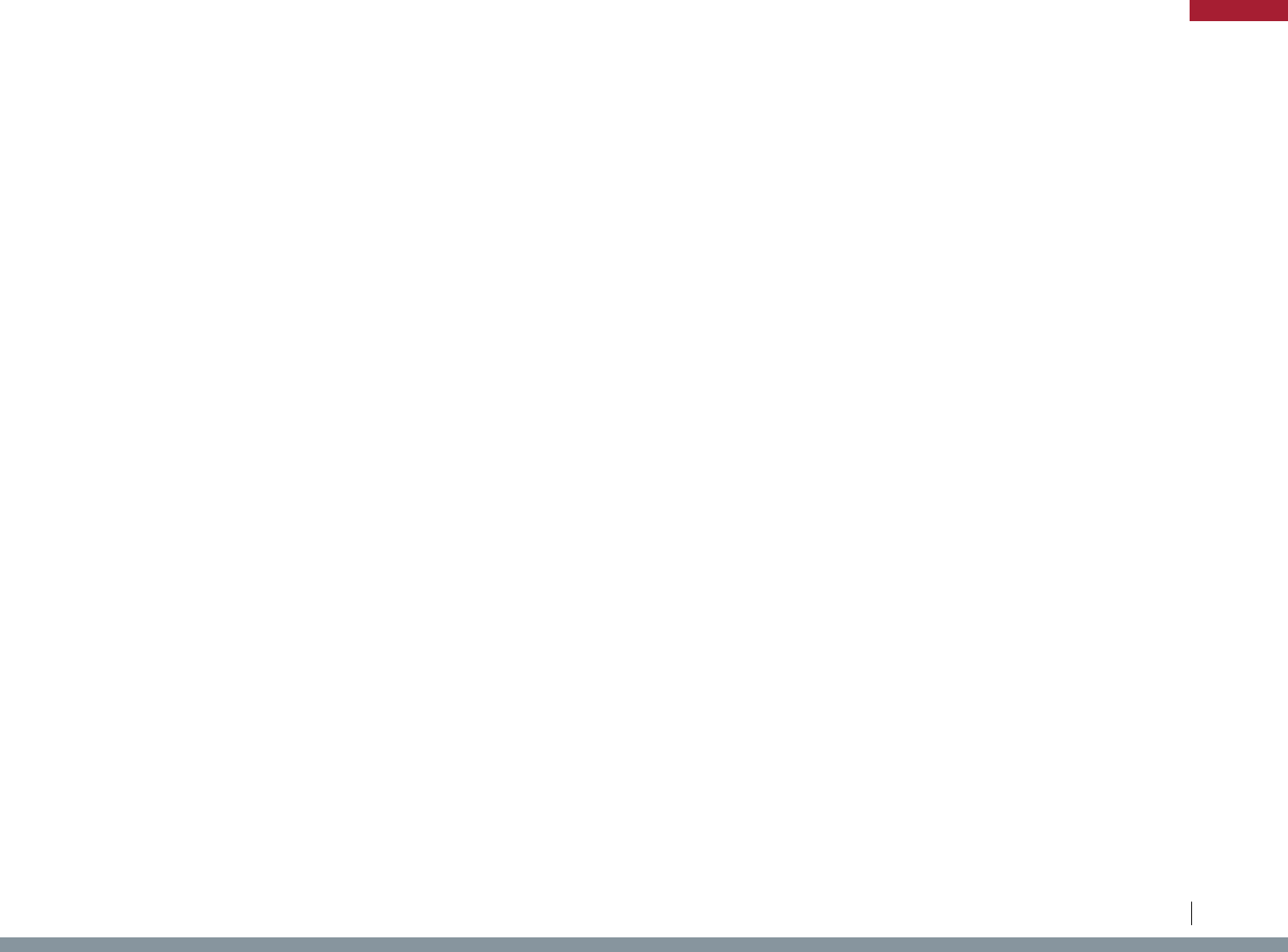
State Law/Regulation Potentially Impacted Industry Agricultural Product Regulation Type Purpose Description
NY
N.Y. Comp. Codes R. & Regs. tit. 6, §
192.1
Fruit
Currants,
Gooseberries
Importation
Disease/Pest
Prevention
Importation restrictions on currants and gooseberries - White Pine
Blister Rust prevention measures
NY N.Y. Envtl. Conserv. Law § 11-0511 Live Animals Wildlife, Fish Importation
Disease/Pest
Prevention
Importation requirements for wildlife, fish
NY
N.Y. Comp. Codes R. & Regs. tit. 1, §
271-2.2(g)
Game Animals Meat Quality Standards Food Safety
Requirement that game animals received for sale must be raised under
certain conditions
NY N.Y. State Fin. Law § 165
Agricultural
Products
Agricultural Products Procurement Market Support Regulation of government procurement of agricultural products
NY
N.Y. Comp. Codes R. & Regs. tit. 6, §
40.1
Fish Fish Licensing Sustainability Commercial fish license requirements
OH Ohio Rev. Code § 3719.41 Drugs Salvia Prohibition Consumer Safety Recreational drug ban - salvia
OH Ohio Admin. Code 901:1-1-01 Live Animals Cervids Importation
Disease/Pest
Prevention
Chronic Wasting Disease Restrictions
OH Ohio Admin. Code 901:1-11-04 Livestock Swine Importation
Disease/Pest
Prevention
Importation requirements for swine - pseudorabies
OH Ohio Admin. Code 901:1-11-06 Livestock Swine Importation
Disease/Pest
Prevention
Importation requirements for swine - pseudorabies
OH Ohio Admin. Code 901:1-11-07 Livestock Swine Importation
Disease/Pest
Prevention
Importation requirements for swine - pseudorabies
OH Ohio Admin. Code 901:1-17-01 Livestock Livestock Importation
Disease/Pest
Prevention
Inspection and Health of Livestock Imported into Ohio
OH Ohio Admin. Code 901:1-17-03 Livestock Cattle, Bison Importation
Disease/Pest
Prevention
Import Requirements for breeding cattle, bison
OH Ohio Admin. Code 901:1-17-04 Livestock Cattle Importation
Disease/Pest
Prevention
Bovine Tuberculosis
OH Ohio Admin. Code 901:1-17-06 Livestock Goats Importation
Disease/Pest
Prevention
Import Requirements for Goats
OH Ohio Admin. Code 901:1-17-08 Livestock Sheep Importation
Disease/Pest
Prevention
Importation requirements for sheep
OH Ohio Admin. Code 901:1-17-11 Livestock
Poultry, Hatching
Eggs
Importation
Disease/Pest
Prevention
Importation requirements for poultry - certificate of veterinary
inspection, pullorum-fowl typhoid disease testing for poultry
OH Ohio Admin. Code 901:1-17-13 Aquaculture Salmon Importation
Disease/Pest
Prevention
Infectious Salmon Anemia
OH Ohio Admin. Code 901:1-17-14 Aquaculture Fish Reporting
Disease/Pest
Prevention
Imported Fish - Testing and inspection requirements
OH Ohio Admin. Code 901:1-19-05 Livestock Horses Importation
Disease/Pest
Prevention
Importation requirements for horses - Equine Infectious Anemia
OH Ohio Admin. Code 901:1-21-02 Livestock Poultry Importation
Disease/Pest
Prevention
Importation requirements for poultry - Avian Influenza
OH Ohio Admin. Code 901:1-5-03 Livestock Cattle Importation
Disease/Pest
Prevention
Importation restrictions for cattle - brucellosis
OH Ohio Admin. Code 901:5-27-06 Plants Plants, Seeds Importation
Disease/Pest
Prevention
Noxious weed and seed restrictions
OH Ohio Admin. Code 901:5-48-04 Forestry Hemlock Trees Importation
Disease/Pest
Prevention
Woolly Adelgid Restrictions
OH Ohio Admin. Code 901:5-52-03 Forestry Trees Importation
Disease/Pest
Prevention
Importation restrictions - Gypsy Moth, Asian Longhorned Beetle
85
Legislative Analysis of S.2019 / H.R.4417: The “Ending Agricultural Trade Suppression Act”
APPENDIX
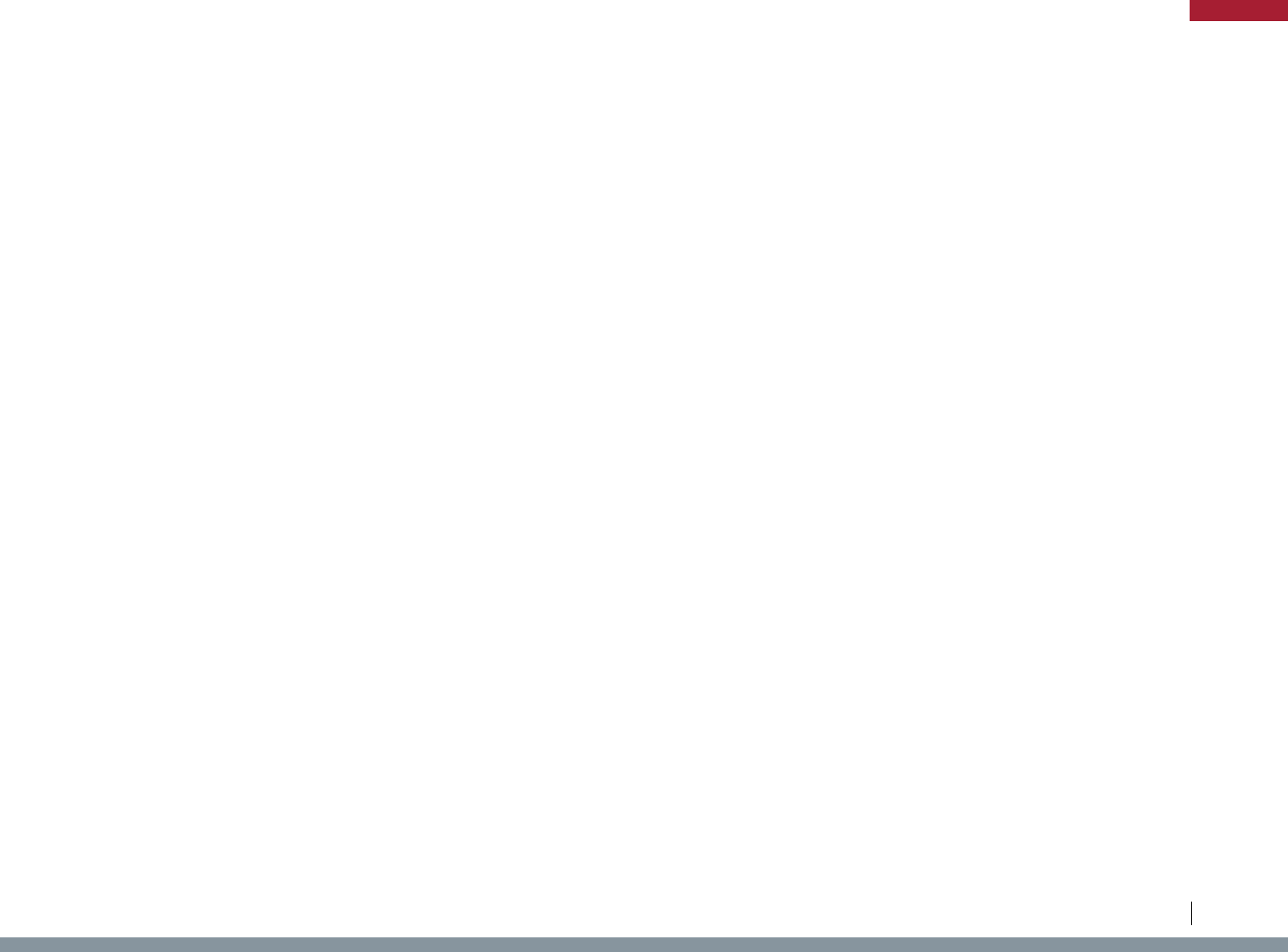
State Law/Regulation Potentially Impacted Industry Agricultural Product Regulation Type Purpose Description
OH Ohio Rev. Code § 909.10 Livestock Bees Importation
Disease/Pest
Prevention
Importation Requirements for Bees
OH Ohio Rev. Code § 927.681 Plants Plants Prohibition
Disease/Pest
Prevention
Plant Pests
OH Ohio Rev. Code § 125.09
Agricultural
Products
Agricultural Products Procurement Market Support Regulation of government procurement of agricultural products
OK Okla. Stat. tit. 63 § 2-101 Drugs Salvia Prohibition Consumer Safety Recreational drug ban - salvia
OK Okla. Admin. Code § 35:15-11-1 Livestock Livestock Importation
Disease/Pest
Prevention
Certificate of veterinary inspection for importation, with exceptions
OK Okla. Admin. Code § 35:15-11-41 Livestock Poultry Importation
Disease/Pest
Prevention
Importation requirements for poultry - Avian Influenza
OK Okla. Admin. Code § 35:15-15-111 Livestock Horses Importation
Disease/Pest
Prevention
General requirements for Equidae entering Oklahoma
OK Okla. Admin. Code § 35:15-19-4 Livestock Poultry Importation
Disease/Pest
Prevention
Importation and exhibition requirements for poultry
OK Okla. Admin. Code § 35:15-19-5 Livestock Poultry Importation
Disease/Pest
Prevention
Live bird imports from Avian Influenza quarantined states
OK Okla. Admin. Code § 35:15-22-31 Livestock Swine Importation
Disease/Pest
Prevention
Importation requirements for commercial production breeding and
feeding swine
OK Okla. Admin. Code § 35:15-22-33 Livestock Swine Importation
Disease/Pest
Prevention
Importation requirements for transitional production swine
OK Okla. Admin. Code § 35:15-38-3 Livestock Bovidae Importation
Disease/Pest
Prevention
Importation requirements for reproductive bovine females
OK Okla. Admin. Code § 35:15-40-90.1 Livestock Cattle Importation
Disease/Pest
Prevention
Requirements for cattle entering Oklahoma from a modified accredited
advanced state or zone - cattle positive for tuberculosis prohibited,
permit, certificate of veterinary inspection
OK Okla. Admin. Code § 35:30-13-9 Nursery Stock Nursery Plants Importation
Disease/Pest
Prevention
Fire Ant Restrictions
OK Okla. Admin. Code § 35:30-14-2 Cotton Cotton Importation
Disease/Pest
Prevention
Boll weevil and pink bollworm restrictions
OK Okla. Admin. Code § 35:30-36-13 Plants Plants Importation
Disease/Pest
Prevention
Oklahoma Noxious Weed List
OK Okla. Admin. Code § 35:30-4-1 Nuts Walnuts Importation
Disease/Pest
Prevention
Thousand Cankers Disease Restrictions
OK Okla. Admin. Code § 35:30-6-3 Forestry Ash Trees Importation
Disease/Pest
Prevention
Importation Restrictions Related to Emerald Ash Borer
OK Okla. Admin. Code § 35:50-1-1 Aquaculture
Fish, Frogs, Other
Aquatic Species
Importation
Disease/Pest
Prevention
Aquaculture Import and Disease Reporting
OK Okla. Admin. Code § 800:25-24-3 Live Animals Cervids Importation
Disease/Pest
Prevention
Chronic Wasting Disease Restrictions
OK Okla. Stat. tit. 2, § 3-106 Livestock Bees Certification
Disease/Pest
Prevention
Sale and transport of apiaries, equipment, bees, or hives
OK Okla. Stat. tit. 2, § 3-117.1 Livestock Bees Importation
Disease/Pest
Prevention
Requirements for transport of bees into state
OK Okla. Stat. tit. 2, § 6-151 Livestock Livestock Importation
Disease/Pest
Prevention
Health certificate or permit required for shipment of livestock into state--
Responsible parties--Exemptions--Diseased livestock
OK Okla. Admin. Code § 310:257-5-6 Food Shellfish Sourcing Food Safety Shellfish sourcing requirements
86
Legislative Analysis of S.2019 / H.R.4417: The “Ending Agricultural Trade Suppression Act”
APPENDIX
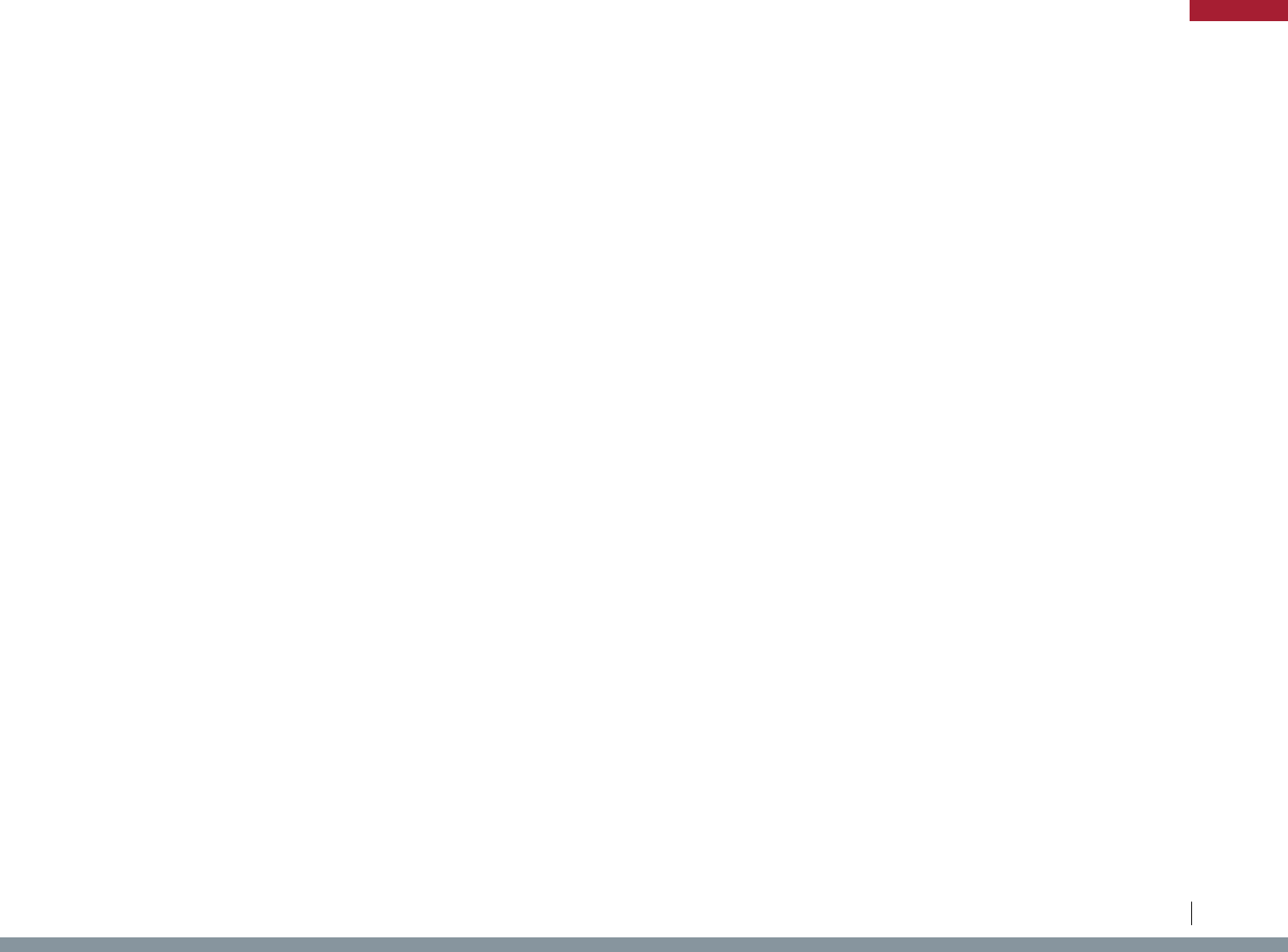
State Law/Regulation Potentially Impacted Industry Agricultural Product Regulation Type Purpose Description
OK Okla. Admin. Code § 310:257-5-7 Food Mushrooms Licensing Food Safety Wild mushroom sourcing requirements
OK Okla. Stat. tit. 74, § 85.17A
Agricultural
Products
Agricultural Products Procurement Market Support Bidding preferences, reciprocity, awarding contracts
OK Okla. Stat. tit. 74, § 85.44D
Agricultural
Products
Trees Procurement Market Support
Purchasing preference for products made from Oklahoma harvested
trees
OR Or. Admin. R. 333-018-0015 Livestock Poultry Importation
Disease/Pest
Prevention
Importation requirements
OR Or. Admin. R. 603-011-0212 Livestock Livestock Importation
Disease/Pest
Prevention
Importation requirements
OR Or. Admin. R. 603-011-0255 Live Animals Live Animals Importation
Disease/Pest
Prevention
Importation of Animals Into Oregon; General Provisions
OR Or. Admin. R. 603-011-0256 Livestock Livestock Importation
Disease/Pest
Prevention
Importation of Bison, Horses, Cattle, Sheep, Goats, Swine; Preventing
Vesicular Stomatitis
OR Or. Admin. R. 603-011-0265 Livestock Cattle Importation
Disease/Pest
Prevention
Bovine Tuberculosis
OR Or. Admin. R. 603-011-0305 Livestock Horses Importation
Disease/Pest
Prevention
Importation requirements for horses - Equine Infectious Anemia
OR Or. Admin. R. 603-011-0310 Livestock Swine Importation
Disease/Pest
Prevention
Importation requirements for swine
OR Or. Admin. R. 603-011-0375 Livestock Poultry Importation
Disease/Pest
Prevention
Importation requirements for poultry - Avian Influenza
OR Or. Admin. R. 603-011-0382 Live Animals Cervids, Wildlife Importation
Disease/Pest
Prevention
Chronic Wasting Disease Restrictions
OR Or. Admin. R. 603-011-0392 Livestock Sheep, Goats Importation
Disease/Pest
Prevention
Importation restrictions for sheep and goats - scabies
OR Or. Admin. R. 603-011-0510 Livestock Livestock Importation
Disease/Pest
Prevention
Importation restrictions - brucellosis
OR Or. Admin. R. 603-052-1221 Fruit Grapes Importation
Disease/Pest
Prevention
Pierce’s Disease and the Glassy-winged Sharpshooter Restrictions
OR Or. Admin. R. 635-007-0970 Aquaculture Salmon Importation
Disease/Pest
Prevention
Infectious Salmon Anemia
OR Or. Admin. R. 635-007-0975 Aquaculture Salmon Importation
Disease/Pest
Prevention
Infectious Salmon Anemia
OR Or. Rev. Stat. § 279A.120
Agricultural
Products
Agricultural Products Procurement Market Support Regulation of government procurement of agricultural products
OR Or. Rev. Stat. § 279A.125
Agricultural
Products
Agricultural Products Procurement Market Support Regulation of government procurement of agricultural products
OR Or. Rev. Stat. § 508.030 Fish Fish Licensing Sustainability Commercial Fish License or Permit Requirements
PA 3 Pa. Cons. Stat. § 5278 Food Food Quality Standards
Consumer
Protection
No adulteration of food including raw agricultural products
PA 31 Pa. Cons. Stat. § 646 Food Milk Licensing
Consumer
Protection
Permit for sale of milk whether produced in state or out of state
PA 3 Pa. Cons. Stat. § 1512 Plants Plants Importation
Disease/Pest
Prevention
Noxious weed prohibition of transport
PA 3 Pa. Cons. Stat. § 2104 Livestock Bees Importation
Disease/Pest
Prevention
Quarantine for imported bees
87
Legislative Analysis of S.2019 / H.R.4417: The “Ending Agricultural Trade Suppression Act”
APPENDIX
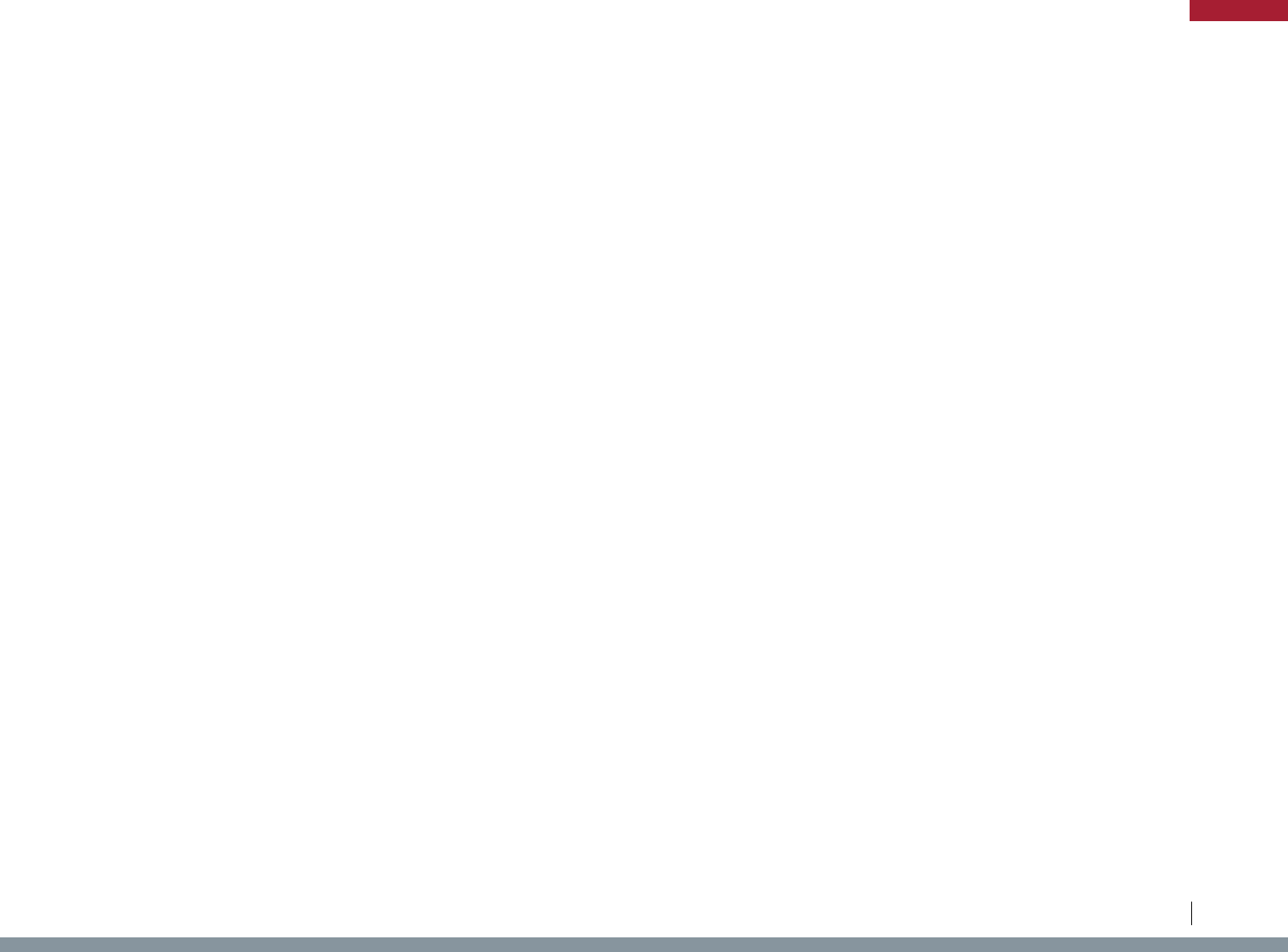
State Law/Regulation Potentially Impacted Industry Agricultural Product Regulation Type Purpose Description
PA 3 Pa. Cons. Stat. § 2109 Livestock Bees Importation
Disease/Pest
Prevention
Prohibition on transport of any bees with a disease
PA 3 Pa. Cons. Stat. § 2111 Livestock Bees Importation
Disease/Pest
Prevention
Certificate of inspection for transport of bees
PA 3 Pa. Cons. Stat. § 2323 Live Animals Domestic Animals Importation
Disease/Pest
Prevention
Interstate movement of domestic animals
PA 3 Pa. Cons. Stat. § 258.17 Plants Plants Importation
Disease/Pest
Prevention
General Plant Import Standards
PA 58 Pa. Code § 137.35 Live Animals Cervids Importation
Disease/Pest
Prevention
Chronic Wasting Disease Restrictions
PA 58 Pa. Code § 73.1 Aquaculture Fish Importation
Disease/Pest
Prevention
Aquaculture Import and Disease Reporting
PA 58 Pa. Code § 73.3 Aquaculture Fish Importation
Disease/Pest
Prevention
Aquaculture Import and Disease Reporting of Viral Hemorrhagic
Septicemia Susceptible Fish
PA 7 Pa. Code § 110.1 Plants Plants Importation
Disease/Pest
Prevention
Noxious weed restrictions
PA 7 Pa. Code § 111.23 Plants Seeds Importation
Disease/Pest
Prevention
Noxious weed seed restrictions
PA 7 Pa. Code § 15.10 Livestock Poultry Importation
Disease/Pest
Prevention
Importation requirements for poultry - Avian Influenza
PA 7 Pa. Code § 3.103 Livestock Horses Importation
Disease/Pest
Prevention
Importation requirements for horses - Equine Infectious Anemia
PA 7 Pa. Code § 3.113 Livestock Poultry Importation
Disease/Pest
Prevention
Importation requirements for poultry - Avian Influenza
PA 7 Pa. Code § 3.119 Livestock Poultry Importation
Disease/Pest
Prevention
Quarantine of poultry
PA 7 Pa. Code § 3.121 Livestock Sheep Importation
Disease/Pest
Prevention
Interstate Health Certificate Required
PA 7 Pa. Code § 3.131 Livestock Swine Importation
Disease/Pest
Prevention
Importation of Swine
PA 7 Pa. Code § 3.139 Livestock Swine Importation
Disease/Pest
Prevention
Importation requirements for swine - pseudorabies
PA 7 Pa. Code § 3.142 Livestock Wild Animals Importation
Disease/Pest
Prevention
Health Certication for Imported Animals
PA 7 Pa. Code § 3.161 Livestock Cattle, Goats, Buffalo Importation
Disease/Pest
Prevention
Permit required to import
PA 7 Pa. Code § 3.172 Livestock Swine Importation
Disease/Pest
Prevention
Health Requirements
PA 7 Pa. Code § 3.22 Livestock Cattle, Goats, Bison Importation
Disease/Pest
Prevention
Importation restrictions for cattle, goats, and bison - brucellosis
PA 7 Pa. Code § 3.23 Livestock Cattle, Goats, Buffalo Importation
Disease/Pest
Prevention
Bovine Tuberculosis
PA 7 Pa. Code § 3.3 Livestock Livestock Importation
Disease/Pest
Prevention
Importation requirements for livestock
PA 7 Pa. Code § 3.4 Livestock Livestock Importation
Disease/Pest
Prevention
Health Certication for Imported Animals
88
Legislative Analysis of S.2019 / H.R.4417: The “Ending Agricultural Trade Suppression Act”
APPENDIX
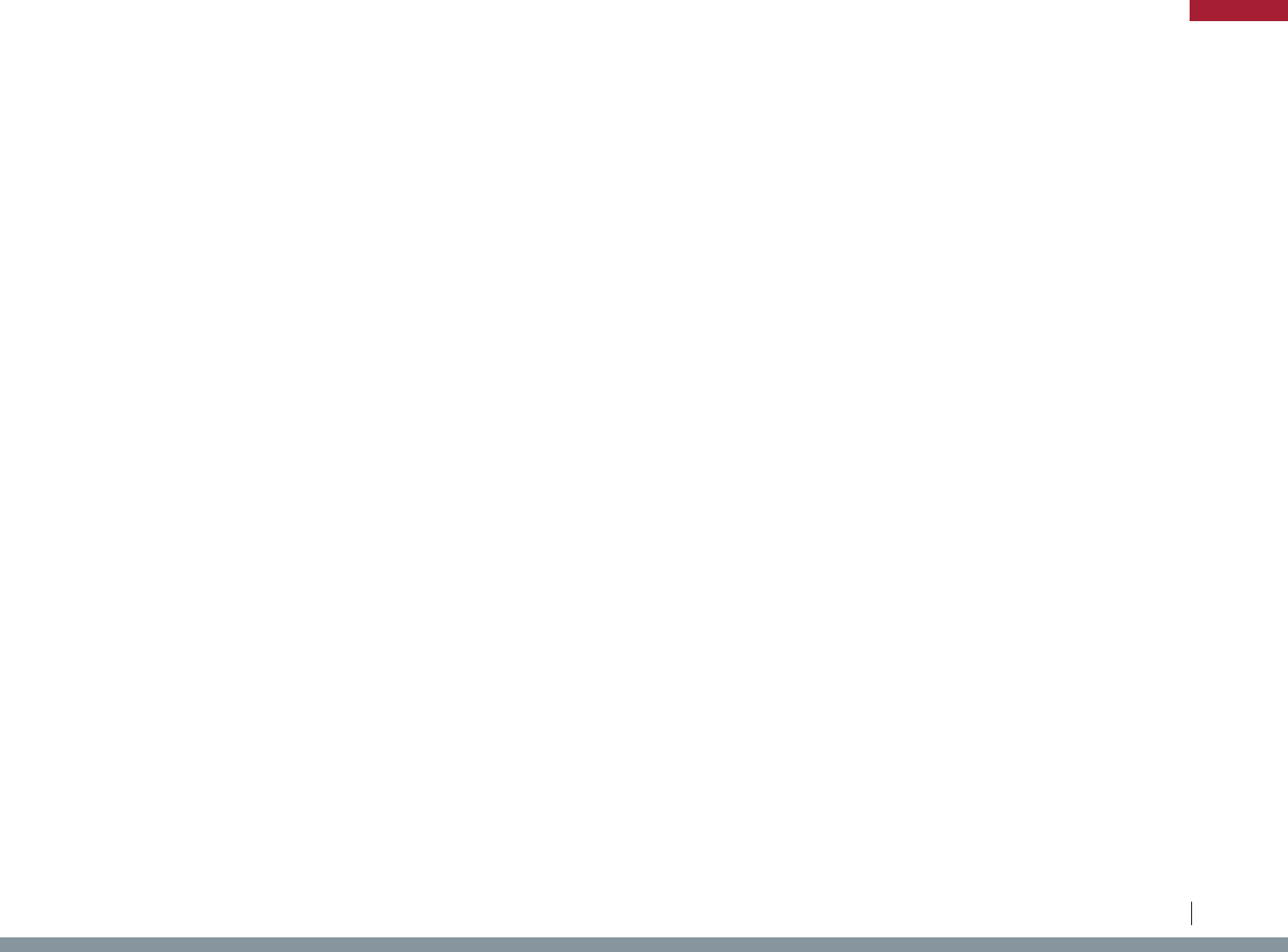
State Law/Regulation Potentially Impacted Industry Agricultural Product Regulation Type Purpose Description
PA 7 Pa. Code § 3a.2 Livestock Cattle Importation
Disease/Pest
Prevention
Bovine Tuberculosis
PA 7 Pa. Code § 3a.3 Livestock Cervids, Camelids Importation
Disease/Pest
Prevention
Importation requirements for cervids and camelids
PA 62 Pa. Cons. Stat. § 107
Agricultural
Products
Agricultural Products Procurement Market Support Regulation of government procurement of agricultural products
RI 2 R.I. Gen. Laws § 2-17-23 Forestry Ash Trees Importation
Disease/Pest
Prevention
Importation restrictions related to emerald ash borer, Asian
Longhorned beetle - regulated articles subject to quarantine and
transport rules
RI 250 R.I. Code R. 40-05-1 Live Animals Live Animals Importation
Disease/Pest
Prevention
Rules and regulations governing the importation of domestic animals
RI 250 R.I. Code R. 40-05-1.10 Livestock Cattle Importation
Disease/Pest
Prevention
Importation requirements for cattle - Official identification and
Certificate of Veterinary Inspection required, rabies vaccination,
tuberculosis, exceptions
RI 250 R.I. Code R. 40-05-1.11 Livestock Swine Importation
Disease/Pest
Prevention
Importation requirements for swine - Official identification and
Certificate of Veterinary Inspection is required for all swine, Brucellosis,
Pseudorabies
RI 250 R.I. Code R. 40-05-1.12 Livestock Sheep Importation
Disease/Pest
Prevention
Importation requirements for sheep - official identification and
certificate of veterinary inspection is required for sheep, scrapie,
Psoroptic Scabies, rabies vaccination
RI 250 R.I. Code R. 40-05-1.13 Livestock Goats Importation
Disease/Pest
Prevention
Importation requirements for goats - Official identification and
Certificate of Veterinary Inspection is required for sheep, scrapie,
Psoroptic Scabies, rabies vaccination
RI 250 R.I. Code R. 40-05-1.14 Livestock
Poultry, Ratites,
Game Birds
Importation
Disease/Pest
Prevention
Importation requirements for poultry, ratites, and game birds - Official
Identification and Certificate of Veterinary Inspection, or other federally
recognized certification of disease-free status required, Salmonella
Pullorum, Avian influenza
RI 250 R.I. Code R. 40-05-1.15 Livestock Equines Importation
Disease/Pest
Prevention
Importation requirements for equines - Official identification and
Certificate of Veterinary Inspection or Extended Equine Certificate of
Veterinary Inspection are required, exceptions, equine infectious
anemia, rabies vaccination
RI 250 R.I. Code R. 40-05-1.16 Livestock Camelids Importation
Disease/Pest
Prevention
Importation requirements for camelids - Official identification and
Certificate of Veterinary Inspection required, brucellosis, tuberculosis
RI 250 R.I. Code R. 40-05-1.17 Live Animals Live Animals Importation
Disease/Pest
Prevention
Importation requirements for other animals - Official Identification and
Certificate of Veterinary Inspection required, contact the Rhode Island
State Veterinarian for additional requirements
RI 250 R.I. Code R. 40-05-1.18 Live Animals Live Animals Importation
Disease/Pest
Prevention
Power to prohibit or regulate importation - Director has broad powers to
prohibit the importation of any animal into the state, Department may
issue emergency regulations as deemed necessary that restrict the
importation of animals by imposing safeguards that will protect the
health, safety and welfare of the citizens of the state, their livestock, and
pets
RI 250 R.I. Code R. 40-05-1.19 Live Animals Live Animals Recordkeeping
Disease/Pest
Prevention
Recordkeeping for auctions, sales, and dealers
RI 250 R.I. Code R. 40-05-1.20 Live Animals Live Animals Importation
Disease/Pest
Prevention
Violations of importation regulations
RI 250 R.I. Code R. 40-05-1.22 Live Animals Live Animals Importation
Disease/Pest
Prevention
Requirements for animals imported for the purpose of fair, show, or
exhibition
89
Legislative Analysis of S.2019 / H.R.4417: The “Ending Agricultural Trade Suppression Act”
APPENDIX
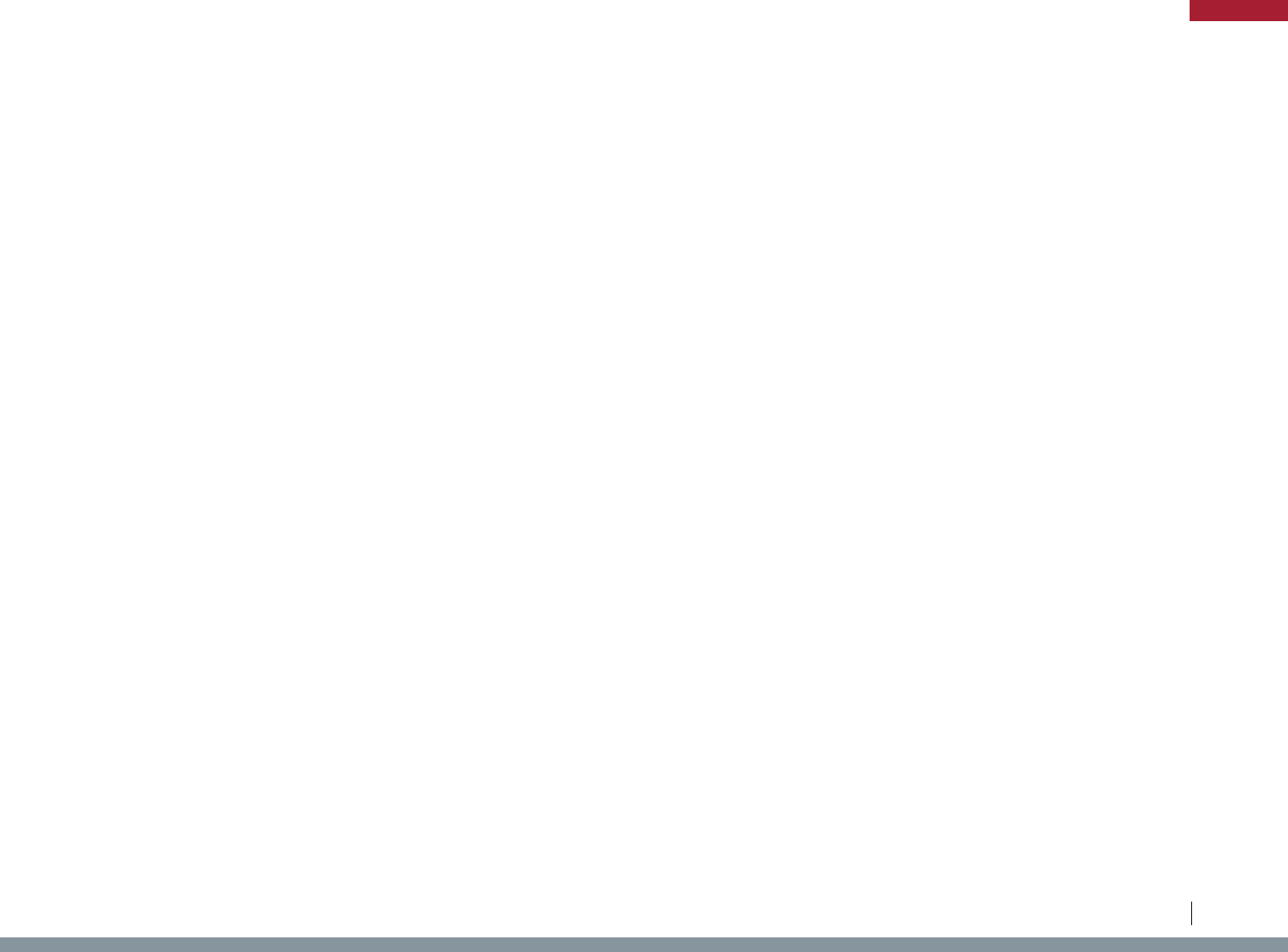
State Law/Regulation Potentially Impacted Industry Agricultural Product Regulation Type Purpose Description
RI 250 R.I. Code R. 40-05-1.6 Live Animals Live Animals Importation
Disease/Pest
Prevention
General requirements and general exemptions - certificate of
veterinary inspection, import permit
RI 250 R.I. Code R. 40-05-1.7 Live Animals Live Animals Importation
Disease/Pest
Prevention
Certificates of veterinary inspection and owner shipper statements
RI 250 R.I. Code R. 40-05-1.8 Pets Dogs, Cats Importation
Disease/Pest
Prevention
Importation of dogs and cats for the purpose of rescue, shelter, foster
care, adoption, brokering, or remote sale
RI 250 R.I. Code R. 40-05-1.9 Pets Dogs, Cats Importation
Disease/Pest
Prevention
Identification and Certificate of Veterinary Inspection are required for
the importation of all dogs and cats that are imported into the State of
Rhode Island
RI 250 R.I. Code R. 40-05-3.7 Live Animals Wild Animals Importation
Disease/Pest
Prevention
Rules and regulations governing importation and possession of wild
animals - general prohibitions
RI 250 R.I. Code R. 40-10-2 Plants
Currants (Ribes
Plants)
Importation
Disease/Pest
Prevention
Rules and regulations governing the suppression of white pine blister
rust
RI 250 R.I. Code R. 40-10-3 Livestock Bees Importation
Disease/Pest
Prevention
Rules and regulations for out-of-state honey bee quarantine to prevent
entry of varroa mite (varroa jacobsoni)
RI 250 R.I. Code R. 60-00-2.10 Live Animals Cervids Importation
Disease/Pest
Prevention
Regulations on the importation, possession and transportation of live
cervids - No person shall import, transport or possess in the State of
Rhode Island any live captive or wild cervid, except under a permit,
certificate of veterinary inspection, exemptions
RI 216 R.I. Code R. 50-10-6.4 Food Shellfish Sourcing Food Safety Shellfish sourcing, licensing, recordkeeping requirements
RI 250 R.I. Code R. 90-00-4.8 Food Shellfish Sourcing Food Safety Shellfish sourcing requirements
RI 37 R.I. Gen. Laws § 37-2-8
Agricultural
Products
Agricultural Products Procurement Market Support Regulation of government procurement of agricultural products
SC S.C. Code § 46-10-50 Cotton Cotton Importation
Disease/Pest
Prevention
Boll Weevil, Cotton Pest Restrictions
SC S.C. Code § 46-37-10 Livestock Bees Importation
Disease/Pest
Prevention
Importation requirements for bees - certificate of inspection
SC S.C. Code § 46-37-30 Livestock Bees Certification
Disease/Pest
Prevention
Inspection for presence of disease or infection of bees, removal and
destruction authority
SC S.C. Code § 47-13-1350 Livestock Horses Importation
Disease/Pest
Prevention
Unlawful for horse to enter State unless tested for Equine Infectious
Anemia and accompanied by test chart
SC S.C. Code § 47-4-60 Livestock Livestock Importation
Disease/Pest
Prevention
Veterinary inspection for communicable and infectious diseases
SC S.C. Code Regs. 123-151.1 Live Animals Turtles Importation
Disease/Pest
Prevention
Importation restrictions for spotted turtles
SC S.C. Code Regs. 27-1013 Livestock Livestock Importation
Disease/Pest
Prevention
Importation requirements for livestock - certificate of veterinary
inspection or health permit
SC S.C. Code Regs. 27-1014 Livestock Poultry Importation
Disease/Pest
Prevention
Importation requirements for poultry - poultry shall be U.S. Pullorum-
Typhoid Clean or equivalent or be accompanied with a CVI stating the
poultry was tested negative for pullorum and typhoid
SC S.C. Code Regs. 27-1017 Livestock Poultry Importation
Disease/Pest
Prevention
Importation requirements for poultry - all started poultry (poultry that
has been fed and watered) entering the State shall have a prior permit
approved by the State Veterinarian, exemptions
SC S.C. Code Regs. 27-1018 Pets Dogs Importation
Disease/Pest
Prevention
Importation requirements for dogs - health certificate, not from
quarantine area, rabies requirements, vaccination
SC S.C. Code Regs. 27-1025 Livestock Cervids Importation
Disease/Pest
Prevention
Importation requirements for cervids - certificate of veterinary
inspection, permits, identification, brucellosis, tuberculosis
90
Legislative Analysis of S.2019 / H.R.4417: The “Ending Agricultural Trade Suppression Act”
APPENDIX
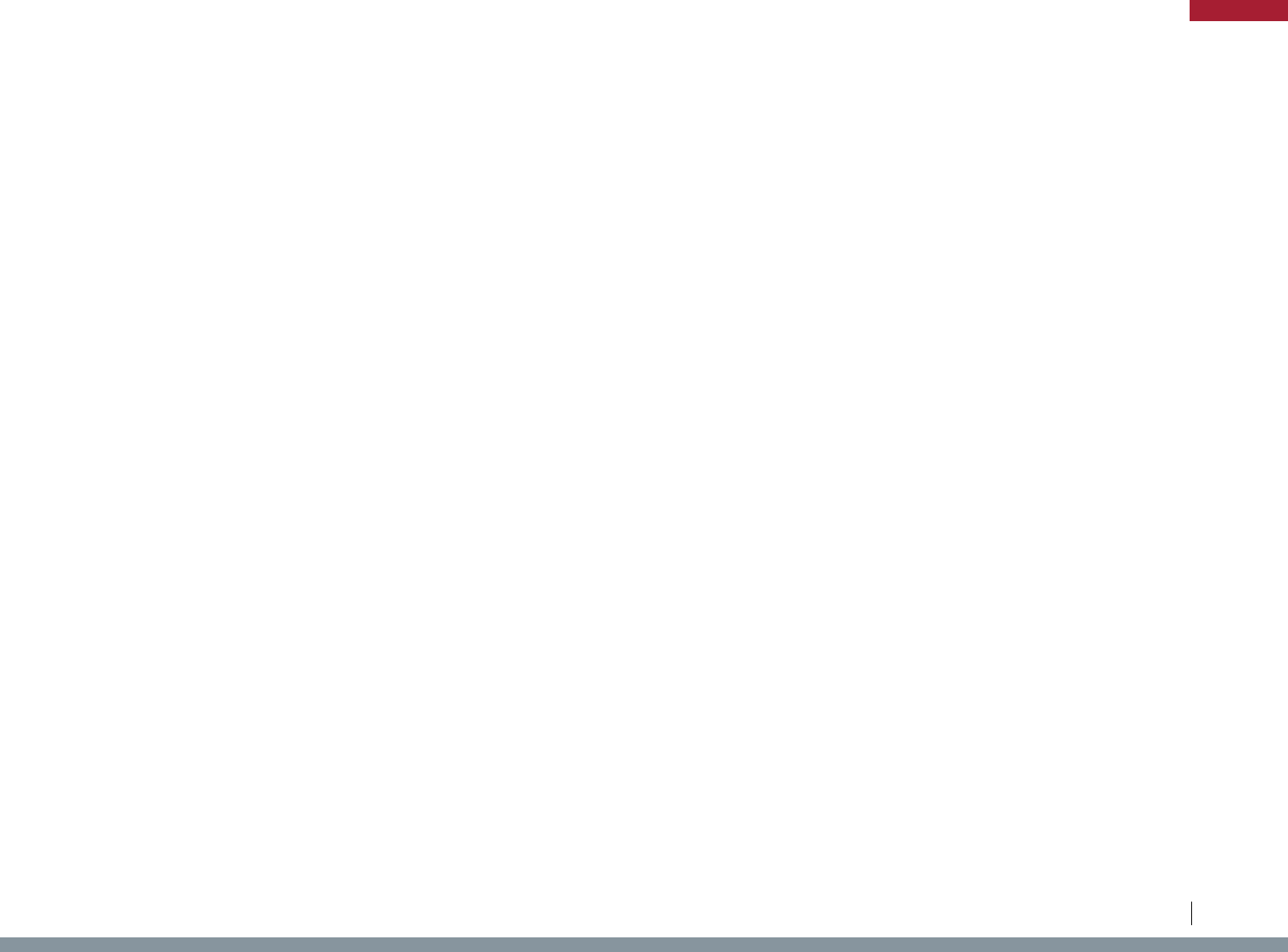
State Law/Regulation Potentially Impacted Industry Agricultural Product Regulation Type Purpose Description
SC S.C. Code Regs. 27-1027 Livestock Ratites Importation
Disease/Pest
Prevention
Importation requirements for ratites - certificate of veterinary inspection
SC S.C. Code Regs. 27-1099 Cotton Cotton Importation
Disease/Pest
Prevention
Regulated articles - prohibition of ornamental cottonseed and
individual potted specimens of cotton plants
SC S.C. Code Regs. 27-1100 Cotton Cotton Importation
Disease/Pest
Prevention
Certificate or permit must accompany the movement of regulated
articles from any infested area into or through any regulated area
SC S.C. Code Regs. 27-121 Nursery Stock Nursery Plants Importation
Disease/Pest
Prevention
Fire Ant restrictions - regulated articles
SC S.C. Code Regs. 27-123 Nursery Stock Nursery Plants Importation
Disease/Pest
Prevention
Fire Ant restrictions - certificate or permit must accompany the
movement of regulated articles
SC S.C. Code Regs. 27-137 Fruit Citrus Trees Importation
Disease/Pest
Prevention
Asian Citrus Psyllid Restrictions - treatment, inspection
SC S.C. Code Regs. 27-163 Nursery Stock Nursery Plants Importation
Disease/Pest
Prevention
Nursery stock shipment requirements
SC S.C. Code Regs. 27-5 Food Honey Importation
Disease/Pest
Prevention
Restrictions on shipments of honey from apiary infected with American
Foulbrood
SC S.C. Code Regs. 27-5020 Nursery Stock Nursery Plants Importation
Disease/Pest
Prevention
Phytophagous Snail Restrictions
SC S.C. Code Regs. 27-62 Crops Sweet Potatoes Importation
Disease/Pest
Prevention
Sweet Potato Weevil restrictions
SC S.C. Code Regs. 27-83 Fruit Peach Trees Importation
Disease/Pest
Prevention
Phony Peach Disease Restrictions
SC S.C. Code Regs. 5-584 Plants Plants Importation
Disease/Pest
Prevention
Noxious Weed Restrictions - Importation into South Carolina or the
sale or distribution of listed noxious plants within the State is prohibited
SC S.C. Code Regs. 61-25 Food Shellfish Sourcing Food Safety Shellfish, wild mushroom, game animals sourcing requirements
SC S.C. Code § 11-35-1524
Agricultural
Products
Agricultural Products Procurement Market Support Regulation of government procurement of agricultural products
SD S.D. Codified Laws § 39-4-26 Food
Meat & Poultry
Products
Labeling
Consumer
Protection
Restriction of use of meat and poultry nomenclature to certain products
SD S.D. Codified Laws § 22-42-22 Drugs Salvia Prohibition Consumer Safety Recreational drug ban - salvia
SD S.D. Admin. R. 12:02:10:04 Livestock Livestock Importation
Disease/Pest
Prevention
Import requirements for animals entered into state fair - health
certificate, permit number, brucellosis, tuberculosis
SD S.D. Admin. R. 12:68:06:01 Livestock Livestock Importation
Disease/Pest
Prevention
Certificate of veterinary inspection to accompany imported animals,
semen, and embryos
SD S.D. Admin. R. 12:68:16:03 Livestock Equines Importation
Disease/Pest
Prevention
Examination and identification of equines for import - certificate of
veterinary inspection
SD S.D. Admin. R. 12:68:16:04 Livestock Equines Importation
Disease/Pest
Prevention
Certification of negative test for Equine Infectious Anemia required for
import of equines
SD S.D. Admin. R. 12:68:17:01 Livestock Swine Importation
Disease/Pest
Prevention
Requirements related to importation or distribution of swine semen or
embryos
SD S.D. Admin. R. 12:68:17:04 Livestock Swine Importation
Disease/Pest
Prevention
Import requirements for feeder pigs - pseudorabies
SD S.D. Admin. R. 12:68:23:06 Livestock Cervids Importation
Disease/Pest
Prevention
Importation requirements for cervids - identification, permit, certificate of
veterinary inspection, tuberculosis
SD S.D. Admin. R. 12:68:25:17 Live Animals Cervids Importation
Disease/Pest
Prevention
Importation requirements for cervids - certificate of veterinary
inspection, entry permit, Chronic wasting disease
91
Legislative Analysis of S.2019 / H.R.4417: The “Ending Agricultural Trade Suppression Act”
APPENDIX
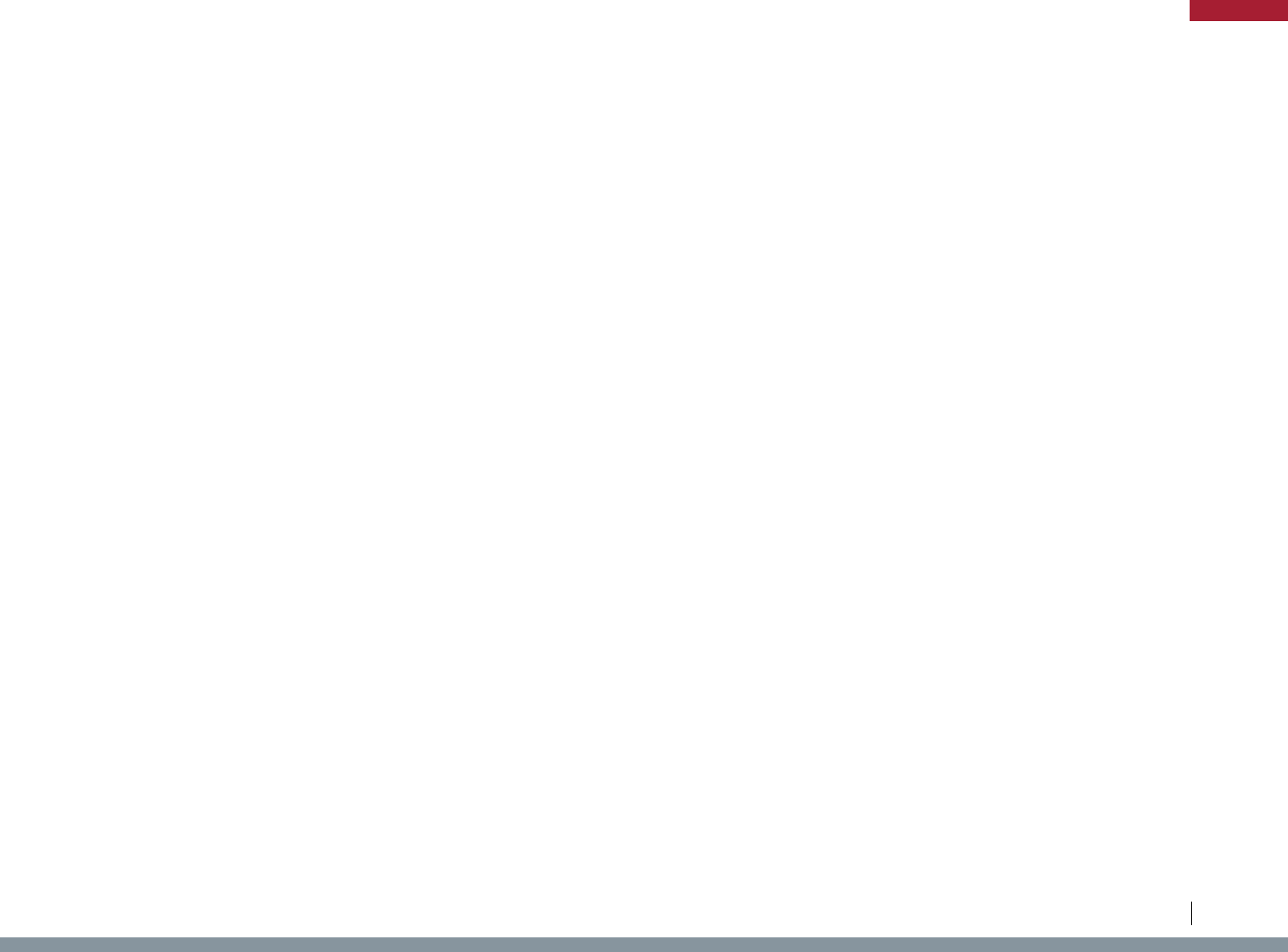
State Law/Regulation Potentially Impacted Industry Agricultural Product Regulation Type Purpose Description
SD S.D. Admin. R. 12:68:29:08 Livestock Cattle Importation
Disease/Pest
Prevention
Identification of recreational cattle - requirements for import
SD S.D. Admin. R. 41:09:08:01.01 Fish Fish Importation
Disease/Pest
Prevention
Fish importation prohibited - Exceptions
SD S.D. Codified Laws § 38-18-21 Livestock Bees Importation
Disease/Pest
Prevention
Certificate of health or compliance agreement required for bees and
used bee equipment imported from another state
SD S.D. Codified Laws § 38-18-25 Livestock Bees Importation
Disease/Pest
Prevention
Unlawfully imported bees subject to seizure - Destruction or treatment if
found to be infested
SD S.D. Codified Laws § 38-18-4 Livestock Bees Importation
Disease/Pest
Prevention
Importation requirements for bees and used bee equipment -
Application for entrance permit before transport into state
SD S.D. Codified Laws § 40-14-1 Livestock Livestock Importation
Disease/Pest
Prevention
Restrictions on importation from quarantine areas outside state
SD S.D. Codified Laws § 40-14-2 Livestock Livestock Importation
Disease/Pest
Prevention
Certificate of veterinary inspection required for importation of livestock -
Exception for slaughter
SD S.D. Codified Laws § 40-14-3 Live Animals Live Animals Importation
Disease/Pest
Prevention
Notice and permit for importation of animals without certificate
SD S.D. Codified Laws § 40-14-4 Live Animals Live Animals Importation
Disease/Pest
Prevention
Quarantine and examination of any animal imported without certificate
SD S.D. Codified Laws § 5-18A-26
Agricultural
Products
Agricultural Products Procurement Market Support
Government procurement regulations - Resident bidder preferred over
nonresident bidder
TN Tenn. Code § 39-17-438 Drugs Salvia Prohibition Consumer Safety
Recreational drug ban - salvia or synthetic cannabinoids, production,
distribution, and possession, exceptions, penalty
TN Tenn. Code § 44-15-110 Livestock Bees Importation
Disease/Pest
Prevention
Bee quarantine authority, restrictions
TN Tenn. Code § 44-15-113 Livestock Bees Importation
Disease/Pest
Prevention
Importation requirements for bees - entry permit, health certificates
TN Tenn. Code § 44-15-120 Food Honey Transportation
Disease/Pest
Prevention
Requirement that beekeeping equipment wet with honey be stored,
transported, and handled in such a way that free-flying honeybees will
not be able to gain access to that honey
TN
Tenn. Comp. R. & Regs. 0080-02-01-
.02
Live Animals Domestic Animals Importation
Disease/Pest
Prevention
General importation requirements and limitations - official certificate of
veterinary inspection or other transportation document recognized by
the state veterinarian, No animal, including poultry and birds of any
species, that is affected by or has been exposed to any infectious,
contagious, or communicable disease, or that originated from a
quarantined area, shall be transported or moved into Tennessee;
except as allowed herein or permitted by the state veterinarian
TN
Tenn. Comp. R. & Regs. 0080-02-01-
.03
Live Animals Domestic Animals Importation
Disease/Pest
Prevention
Duties of common carriers and other haulers of domestic animals -
owners and operators of common carriers and private conveyances
shall be forbidden to transport or otherwise move any domestic animal
into, within, or through the State of Tennessee except in compliance
with the provisions set forth in these regulations
TN
Tenn. Comp. R. & Regs. 0080-02-01-
.04
Live Animals Domestic Animals Importation
Disease/Pest
Prevention
Entry permits
TN
Tenn. Comp. R. & Regs. 0080-02-01-
.05
Livestock Cattle Importation
Disease/Pest
Prevention
Importation requirements for cattle - certificate of veterinary inspection,
brucellosis, tuberculosis, scabies, trichomoniasis
TN
Tenn. Comp. R. & Regs. 0080-02-01-
.06
Livestock Equines Inspection
Disease/Pest
Prevention
Importation requirements for equines - certificate of veterinary
inspection, equine infectious anemia testing
92
Legislative Analysis of S.2019 / H.R.4417: The “Ending Agricultural Trade Suppression Act”
APPENDIX
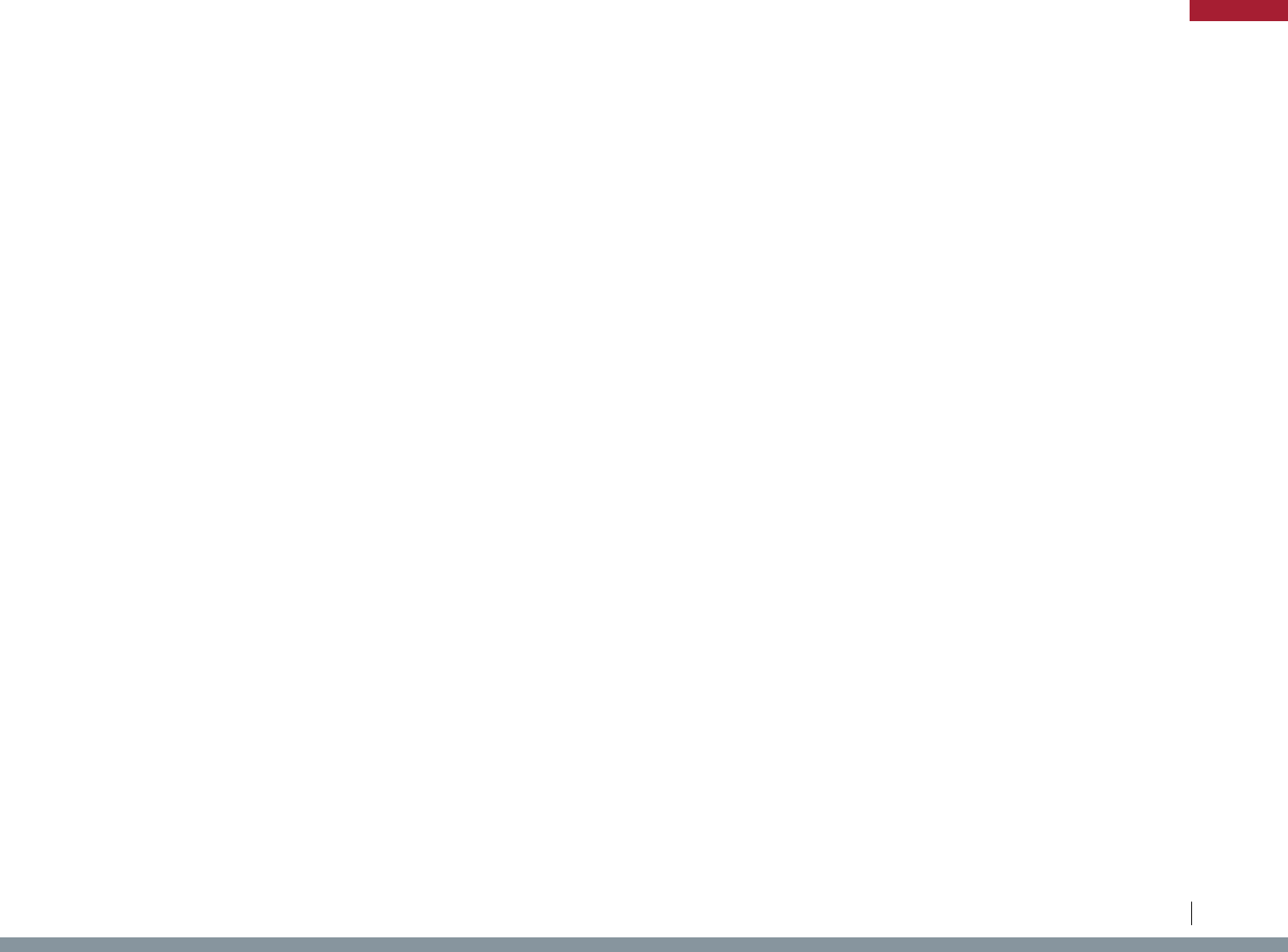
State Law/Regulation Potentially Impacted Industry Agricultural Product Regulation Type Purpose Description
TN
Tenn. Comp. R. & Regs. 0080-02-01-
.07
Livestock Swine Importation
Disease/Pest
Prevention
Importation requirements for swine - certificate of veterinary inspection,
entry permit, identification, brucellosis, pseudorabies
TN
Tenn. Comp. R. & Regs. 0080-02-01-
.08
Livestock Sheep Importation
Disease/Pest
Prevention
Importation requirements for sheep - permanent identification,
certificate of veterinary inspection
TN
Tenn. Comp. R. & Regs. 0080-02-01-
.09
Livestock Goats Importation
Disease/Pest
Prevention
Importation requirements for goats - permanent identification, certificate
of veterinary inspection
TN
Tenn. Comp. R. & Regs. 0080-02-01-
.10
Livestock
Poultry, Hatching
Eggs
Importation
Disease/Pest
Prevention
Importation requirements for poultry and hatching eggs - proof of the
poultry's apparent good health, certificate of veterinary inspection,
negative testing for Pullorum-Typhoid and Avian Influenza
TN
Tenn. Comp. R. & Regs. 0080-02-01-
.12
Livestock Bison, Cervids Importation
Disease/Pest
Prevention
Importation requirements for bison, cervids - identification, chronic
wasting disease, tuberculosis, etc.
TN
Tenn. Comp. R. & Regs. 0080-06-07-
.01
Forestry Boxwood Trees Importation
Disease/Pest
Prevention
Declaration of quarantine - Boxwood Blight restrictions
TN
Tenn. Comp. R. & Regs. 0080-06-12-
.06
Nursery Stock Nursery Plants Importation
Disease/Pest
Prevention
Conditions governing movement of regulated articles - live brown
garden snail restrictions
TN
Tenn. Comp. R. & Regs. 0080-06-19-
.01
Nursery Stock Nursery Plants Importation
Disease/Pest
Prevention
Determination of problem and establishment of quarentine - Fire Ant
restrictions
TN
Tenn. Comp. R. & Regs. 0080-06-22-
.03
Cotton Cotton Importation
Disease/Pest
Prevention
Conditions governing movement of regulated articles - Boll Weevil
eradication
TN
Tenn. Comp. R. & Regs. 1200-14-01-
.36
Live Animals Turtles Prohibition
Disease/Pest
Prevention
Prohibition on sale of certain turtles
TN
Tenn. Comp. R. & Regs. 1660-01-26-
.02
Aquaculture Fish Importation
Disease/Pest
Prevention
Fish from states having endemic disease problems in wild populations
or hatchery stocks that could present a health hazard to native wildlife
or the public are specifically prohibited from being imported,
restrictions on baitfish and other aquatic life sourcing
TN Tenn. Comp. R. & Regs. 1660-1-18-.02 Live animals Wildlife Importation
Disease/Pest
Prevention
importation permit is required for all fish species - exceptions
TN
Tenn. Comp. R. & Regs. 1200-23-01-
.03
Food
Fish, Shellfish,
Mushrooms, Game
Meat
Sourcing Food Safety
Requirement that food be safe, unadulterated, and honestly presented,
sourcing requirements for fish, shellfish, wild mushrooms, game
animals
TN Tenn. Code § 12-3-1108
Agricultural
Products
Meat Procurement Market Support
Tennessee meat producers - purchasing preference - departments,
agencies and institutions
TN Tenn. Code § 12-3-1113
Agricultural
Products
Agricultural Products Procurement Market Support
Preference for local agricultural products - preference for Tennessee
vegetation
TX Tex. Health & Safety Code § 481.104 Drugs Salvia Prohibition Consumer Safety Recreational drug ban - salvia
TX 31 Tex. Admin. Code § 57.976 Fish Fish, Shellfish Importation
Disease/Pest
Prevention
Importation restrictions for aquatic wildlife
TX 4 Tex. Admin. Code § 19.103 Plants Plants Importation
Disease/Pest
Prevention
Fire ant import restrictions
TX 4 Tex. Admin. Code § 19.113 Crops
Corn, Sorghum,
Grains
Importation
Disease/Pest
Prevention
European Corn Borer import restrictions
TX 4 Tex. Admin. Code § 19.123 Nuts
Pecans, Other Nut
Trees
Importation
Disease/Pest
Prevention
Pecan Weevil import restrictions
TX 4 Tex. Admin. Code § 19.133 Crops Sweet Potatoes Importation
Disease/Pest
Prevention
Sweet Potato Weevil import restrictions
TX 4 Tex. Admin. Code § 19.153 Plants Plants, Plant
Products
Importation
Disease/Pest
Prevention
West Indian Fruit Fly import restrictions
93
Legislative Analysis of S.2019 / H.R.4417: The “Ending Agricultural Trade Suppression Act”
APPENDIX
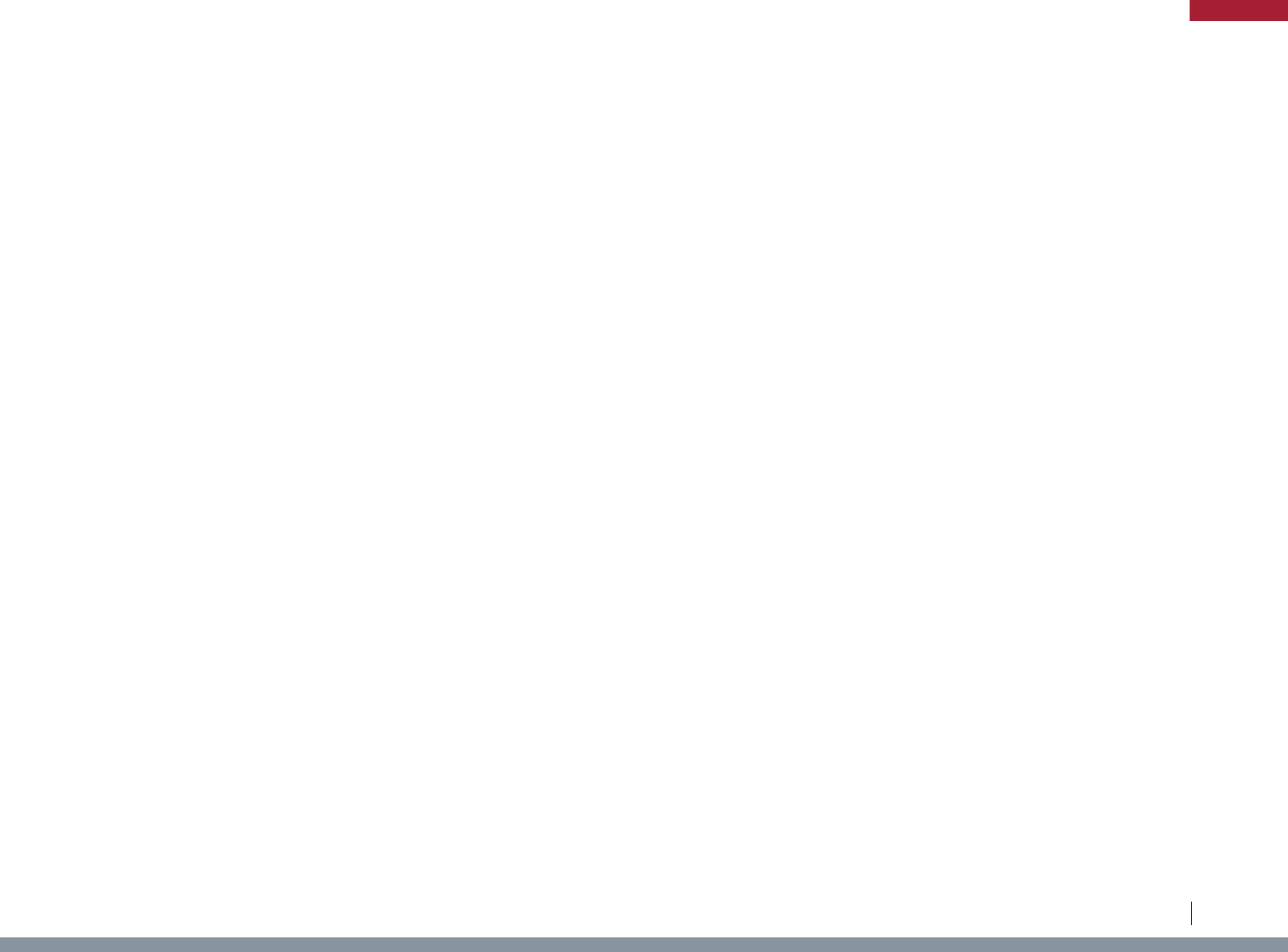
State Law/Regulation Potentially Impacted Industry Agricultural Product Regulation Type Purpose Description
TX 4 Tex. Admin. Code § 19.162 Plants Plants, Plant
Products
Importation
Disease/Pest
Prevention
Root Weevil import restrictions
TX 4 Tex. Admin. Code § 19.175 Plants Plants, Plant
Products
Importation
Disease/Pest
Prevention
Sapote Fruit Fly import restrictions
TX 4 Tex. Admin. Code § 19.2 Nursery Stock
Nursery Stock, Floral
Products
Importation
Disease/Pest
Prevention
Importation restrictions for all nursery or floral shipments of plant
material -phytosanitary certificate of inspection required
TX 4 Tex. Admin. Code § 19.203 Plants Plants, Plant
Products
Importation
Disease/Pest
Prevention
Asian cycad scale import restrictions
TX 4 Tex. Admin. Code § 19.23 Plants Plants, Plant
Products
Importation
Disease/Pest
Prevention
Burrowing nematode import restrictions
TX 4 Tex. Admin. Code § 19.300 Plants Plants, Plant
Products
Prohibition
Disease/Pest
Prevention
Prohibition on importation, sale, or distribution of listed noxious and
invasive plants
TX 4 Tex. Admin. Code § 19.32 Plants Camellia Plants Importation
Disease/Pest
Prevention
Camellia flower blight import restrictions
TX 4 Tex. Admin. Code § 19.43 Crops Produce Importation
Disease/Pest
Prevention
Caribbean Fruit Fly import restrictions
TX 4 Tex. Admin. Code § 19.504 Fruit Plants, Plant
Products
Importation
Disease/Pest
Prevention
Mexican Fruit Fly import restrictions
TX 4 Tex. Admin. Code § 19.53 Fruit Palms Importation
Disease/Pest
Prevention
Date Palm Lethal Decline import restrictions
TX 4 Tex. Admin. Code § 19.603 Fruit Palms Importation
Disease/Pest
Prevention
Red Palm Mites import restrictions
TX 4 Tex. Admin. Code § 19.618 Plants Plants, Plant
Products
Importation
Disease/Pest
Prevention
Citrus Greening import restrictions
TX 4 Tex. Admin. Code § 19.73 Nursery Stock Plants, Plant
Products
Importation
Disease/Pest
Prevention
European Brown Garden Snail import restrictions
TX 4 Tex. Admin. Code § 20.16 Cotton Cotton Importation
Disease/Pest
Prevention
Boll Weevil import restrictions
TX 4 Tex. Admin. Code § 21.40 Fruit Citrus Trees Importation
Disease/Pest
Prevention
Importation requirements for citrus budwood - testing, permit, etc.
TX 4 Tex. Admin. Code § 35.4 Livestock Cattle Importation
Disease/Pest
Prevention
Importation requirements for cattle - testing, vaccination - brucellosis
TX 4 Tex. Admin. Code § 41.6 Livestock Livestock Importation
Disease/Pest
Prevention
Restrictions on movement of livestock - certification, Fever Tick
TX 4 Tex. Admin. Code § 51.10 Livestock Cervids Importation
Disease/Pest
Prevention
Importation requirements for cervids - testing, identification, certificate
of veterinary inspection - chronic wasting disease
TX 4 Tex. Admin. Code § 51.11 Livestock Goats Importation
Disease/Pest
Prevention
Importation requirements for goats - tuberculosis, scabies
TX 4 Tex. Admin. Code § 51.12 Livestock Sheep Importation
Disease/Pest
Prevention
Importation requirements for sheep - certificate required, Brucella ovis
testing, scabies
TX 4 Tex. Admin. Code § 51.13 Livestock Equines Importation
Disease/Pest
Prevention
Importation requirements for equines - certificate of veterinary
inspection, equine infectious anemia testing, fever tick, Equine Viral
Arteritis
TX 4 Tex. Admin. Code § 51.14 Livestock Swine Importation
Disease/Pest
Prevention
Importation requirements for swine - certificate, identification,
pseudorabies
TX 4 Tex. Admin. Code § 51.15 Livestock Poultry Importation
Disease/Pest
Prevention
Importation requirements for poultry - Avian Influenza
94
Legislative Analysis of S.2019 / H.R.4417: The “Ending Agricultural Trade Suppression Act”
APPENDIX
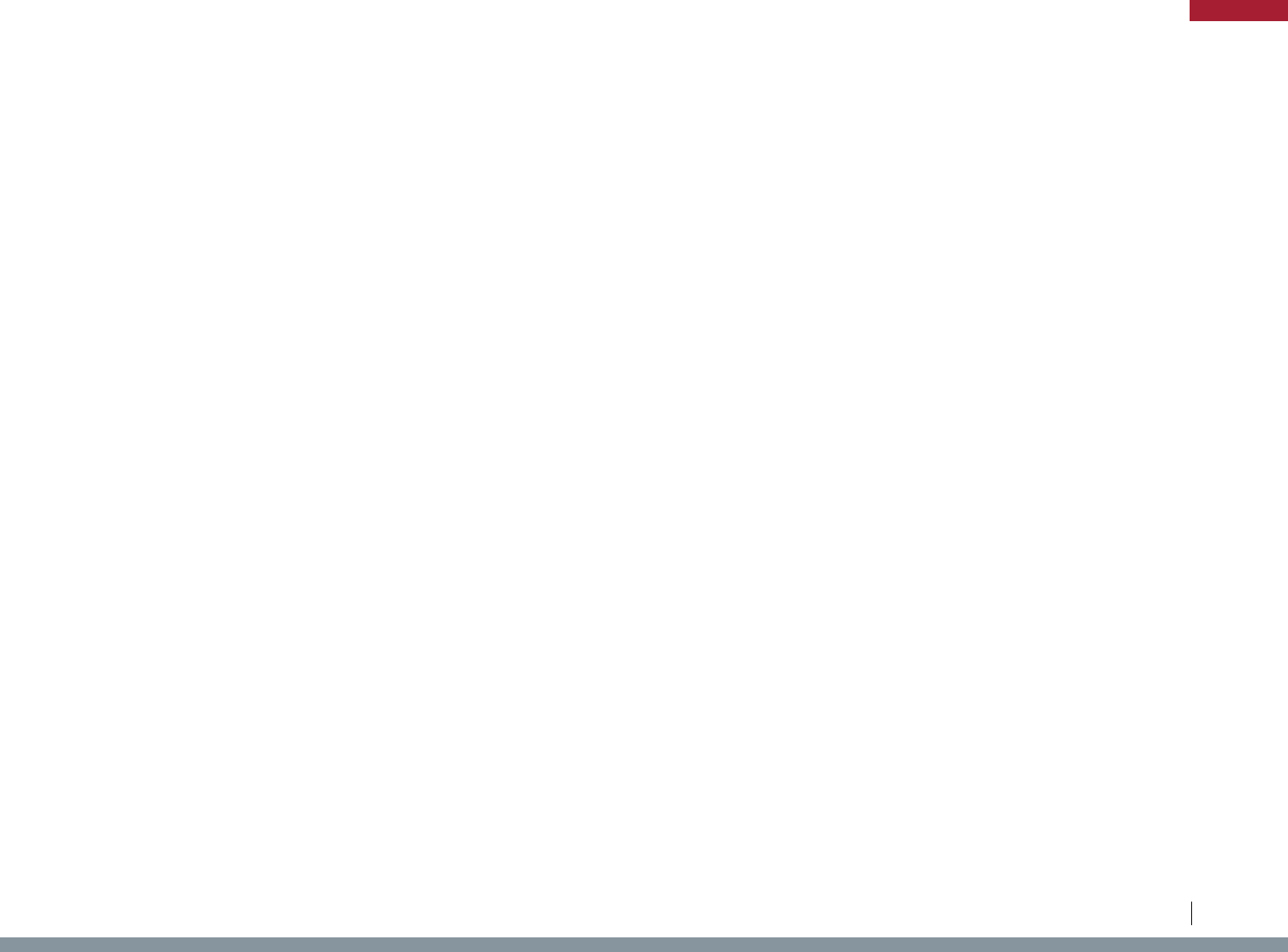
State Law/Regulation Potentially Impacted Industry Agricultural Product Regulation Type Purpose Description
TX 4 Tex. Admin. Code § 51.2 Live Animals Live Animals Importation
Disease/Pest
Prevention
General requirements for importing live animals - permit, certificate of
veterinary inspection
TX 4 Tex. Admin. Code § 51.7 Livestock Livestock Importation
Disease/Pest
Prevention
Importation requirements for livestock - scabies, screwworm, fever tick,
Vesicular Stomatitis
TX 4 Tex. Admin. Code § 51.8 Livestock Cattle Importation
Disease/Pest
Prevention
Importation requirements for cattle - identification, Brucellosis,
Tuberculosis, Trichomoniasis
TX 4 Tex. Admin. Code § 51.9 Livestock
Exotic Livestock &
Fowl, Camelids,
Ratites
Importation
Disease/Pest
Prevention
Importation requirements for exotic livestock and fowl, including
camelids and ratites - identification, brucellosis, pseudorabies, Avian
Influenza, Salmonella pullorum-typhoid
TX 4 Tex. Admin. Code § 54.9 Livestock Poultry Recordkeeping
Disease/Pest
Prevention
Live bird marketing system regulations - testing, recordkeeping
TX 4 Tex. Admin. Code § 57.11 Livestock Poultry Importation
Disease/Pest
Prevention
Importation requirements for poultry - official health certificate,
Laryngotracheitis, Pullorum-Typhoid
TX Tex. Agric. Code § 131.022 Livestock Bees Importation
Disease/Pest
Prevention
Bee quarantine authority - restriction on shipping bees, equipment,
pollen, or honey into or out of quarantine area
TX Tex. Agric. Code § 131.023 Livestock Bees Certification
Disease/Pest
Prevention
Requirements for selling queen bees, attendant bees, package bees,
nuclei, and queen cells - certificate and affidavit
TX Tex. Agric. Code § 131.041 Livestock Bees Importation
Disease/Pest
Prevention
Importation requirements for bees and bee equipment - permit required
TX Tex. Agric. Code § 164.062 Livestock Sheep Importation
Disease/Pest
Prevention
Importation requirements for sheep - certificate required, scabies
TX 25 Tex. Admin. Code § 217.29 Food Milk Quality Standards Food Safety
Requirement that all herds be free of tuberculosis and brucellosis
before any milk therefrom is sold
TX 25 Tex. Admin. Code § 228.62 Food Milk, Eggs, Shellfish Quality Standards Food Safety
Regulations governing the sourcing of certain foods - milk, eggs,
shellfish, frozen milk products
TX 4 Tex. Admin. Code § 15.2 Food Eggs Licensing Food Safety
License required for egg handling, processing, grading, buying or
selling for resale
TX 4 Tex. Admin. Code § 10.11 Food Seeds Quality Standards Product Quality Quality requirements for bulk seeds
TX 4 Tex. Admin. Code § 21.21 Fruit Citrus Quality Standards Product Quality Requirement that all citrus sold must be mature and fit for consumption
TX Tex. Agric. Code § 131.081 Food Honey Labeling Quality standards
Prohibition on sale of products labeled as honey but not made purely
of honey
TX Tex. Agric. Code § 131.082 Food Honey Labeling Quality standards
Prohibition on sale of products resembling honey with designs of bees,
hives, or combs but not made purely of honey
TX Tex. Agric. Code § 131.083 Food Honey Prohibition Quality standards
Ban on sale of products resembling honey and labeled "imitation
honey"
TX Tex. Agric. Code § 131.084 Food Honey Labeling Quality standards Labeling requirements for honey mixtures
TX Tex. Parks & Wildlife Code § 66.020 Fish Fish Prohibition Sustainability Prohibition on sale and transport of protected fish
UT Utah Admin. Code r. 68-3-6 Fertilizer Soil and Fertilizer Licensing
Consumer
Protection
Soil and fertilizer requirements - prohibited acts
UT Utah Admin. Code r. 58-1-1 Live Animals Live Animals Importation
Disease/Pest
Prevention
Authority to regulate importation - to eliminate or reduce the spread of
diseases among animals by providing standards to be met in the
movement of animals within Utah and the importation of animals into
the state
UT Utah Admin. Code r. 58-1-11 Pets Dogs, Cats, Ferrets Importation
Disease/Pest
Prevention
Importation requirements for dogs, cats, and ferrets - rabies
vaccination, minimum age, certificate of veterinary inspection and
permit for animals undergoing treatment
95
Legislative Analysis of S.2019 / H.R.4417: The “Ending Agricultural Trade Suppression Act”
APPENDIX
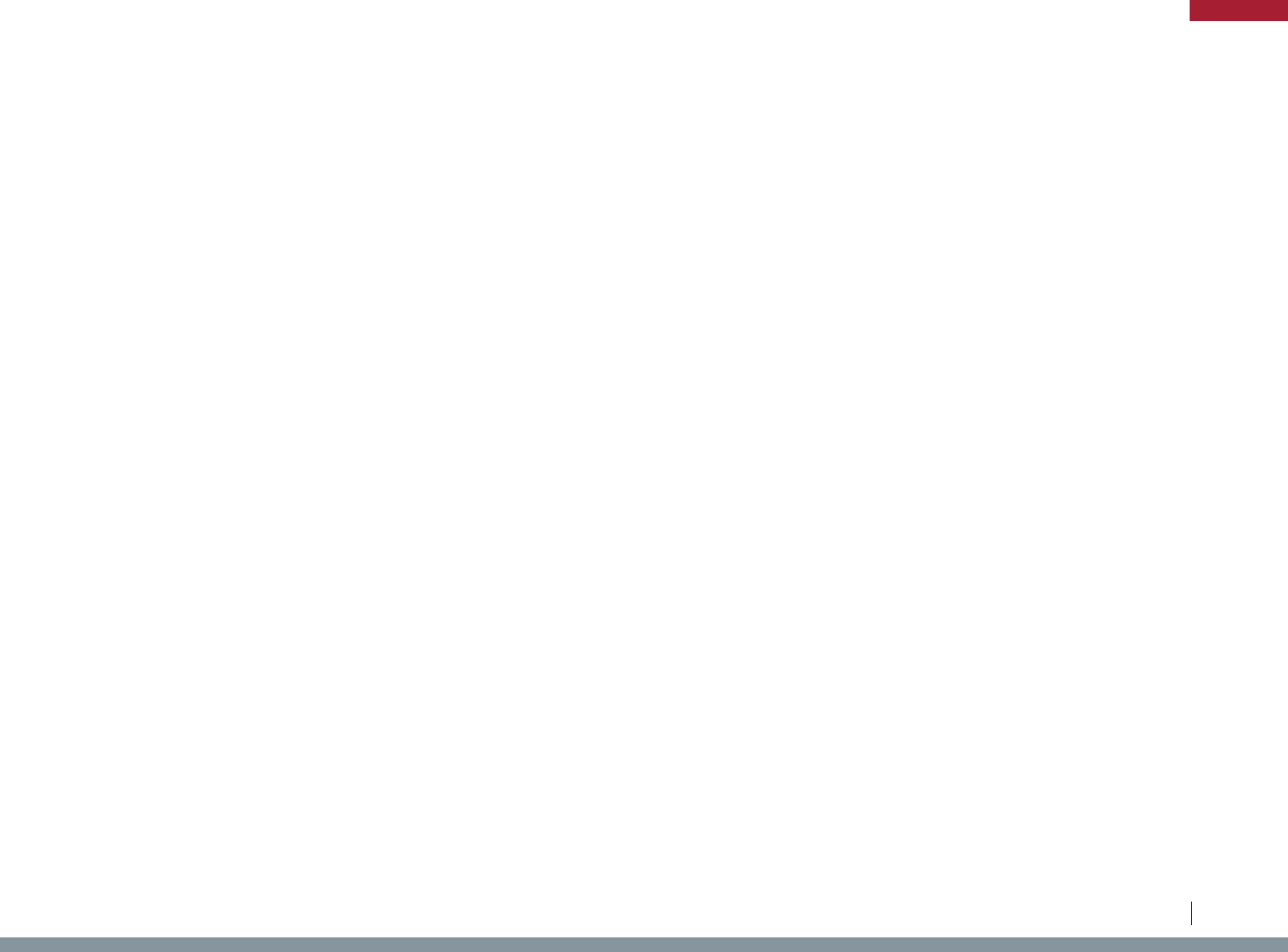
State Law/Regulation Potentially Impacted Industry Agricultural Product Regulation Type Purpose Description
UT Utah Admin. Code r. 58-1-12 Livestock Cervids Importation
Disease/Pest
Prevention
Importation requirements for cervids - import permit, Chronic wasting
disease, brucellosis, tuberculosis, Johne's Disease (Paratuberculosis),
Malignant Catarrhal Fever
UT Utah Admin. Code r. 58-1-13 Live Animals Exotic Animals Importation
Disease/Pest
Prevention
Importation requirements for exotic animals
UT Utah Admin. Code r. 58-1-14 Live Animals Live Animals Importation
Disease/Pest
Prevention
Duties of carriers moving animals into the state
UT Utah Admin. Code r. 58-1-4 Live Animals Live Animals Importation
Disease/Pest
Prevention
Interstate importation standards - no animal, poultry, or bird of any
species or other animal, including wildlife, that is known to be affected
with or has been exposed to a contagious, infectious, or communicable
disease, or that originates from a quarantined area, shall be shipped,
transported, or moved into the state until written permission for entry is
first obtained from the State Veterinarian
UT Utah Admin. Code r. 58-1-5 Livestock Cattle, Bison Importation
Disease/Pest
Prevention
Importation requirements for cattle and bison - certificate of veterinary
inspection, identification, brucellosis, tuberculosis, trichomoniasis
UT Utah Admin. Code r. 58-1-6 Livestock Equines Importation
Disease/Pest
Prevention
Importation requirements for horses, mules, donkeys, and other
equines - certificate of veterinary inspection, Equine Infectious Anemia
testing, brand or proof of ownership
UT Utah Admin. Code r. 58-1-7 Livestock Swine Importation
Disease/Pest
Prevention
Importation requirements for swine - certificate, identification,
brucellosis, pseudorabies, garbage feeding prohibition, ban on certain
hybrids
UT Utah Admin. Code r. 58-1-8 Livestock
Sheep, Goats,
Camelids
Importation
Disease/Pest
Prevention
Importation requirements for sheep - certificate of veterinary inspection,
scrapie, Brucella ovis, tuberculosis
UT Utah Admin. Code r. 58-1-9 Livestock
Poultry, Gamebirds,
Hatching Eggs
Importation
Disease/Pest
Prevention
Importation requirements for poultry, gamebirds, and hatching eggs -
Certificate of Veterinary Inspection or a National Poultry Improvement
Plan VS Form 9-3, identification, Pullorum-Typhoid, Avian Influenza
UT Utah Admin. Code r. 657-3 Live Animals Wildlife Importation
Disease/Pest
Prevention
Collection, importation, transportation, and possession of animals
UT Utah Admin. Code r. 68-9 Plants Plants Importation
Disease/Pest
Prevention
Noxious weed restrictions - importation of certain machinery and
equipment, prescribed treatments
UT Utah Admin. Code r. 70-410-5 Food Eggs Importation
Disease/Pest
Prevention
Small egg producer facility and quality assurance rules - Salmonella,
Avian Influenza testing
UT Utah Code § 4-11-111 Livestock Bees Importation
Disease/Pest
Prevention
Importation requirements for bees, used apiary equipment -
certification required, authority to require destruction or removal of
diseased bees and equipment
UT Utah Admin. Code r. 33-10-101
Agricultural
Products
Agricultural Products Procurement Market Support Regulation of government procurement - providers of state products
UT Utah Admin. Code r. 33-6-111
Agricultural
Products
Agricultural Products Procurement Market Support
Regulation of government procurement - in event of tie bids, contract
shall be awarded to Utah resident bidders
UT Utah Code § 63G-6a-1002
Agricultural
Products
Agricultural Products Procurement Market Support
Regulation of government procurement - reciprocal preference for
providers of state products
VA 2 Va. Admin. Code § 5-141-100 Livestock Horses Importation
Disease/Pest
Prevention
Importation requirements for horses - certificate of veterinary
inspection, equine Infectious Anemia, identification requirements
VA 2 Va. Admin. Code § 5-141-110 Livestock Ruminants Importation
Disease/Pest
Prevention
Importation requirements for other ruminants - identification and health
certification requirements
96
Legislative Analysis of S.2019 / H.R.4417: The “Ending Agricultural Trade Suppression Act”
APPENDIX
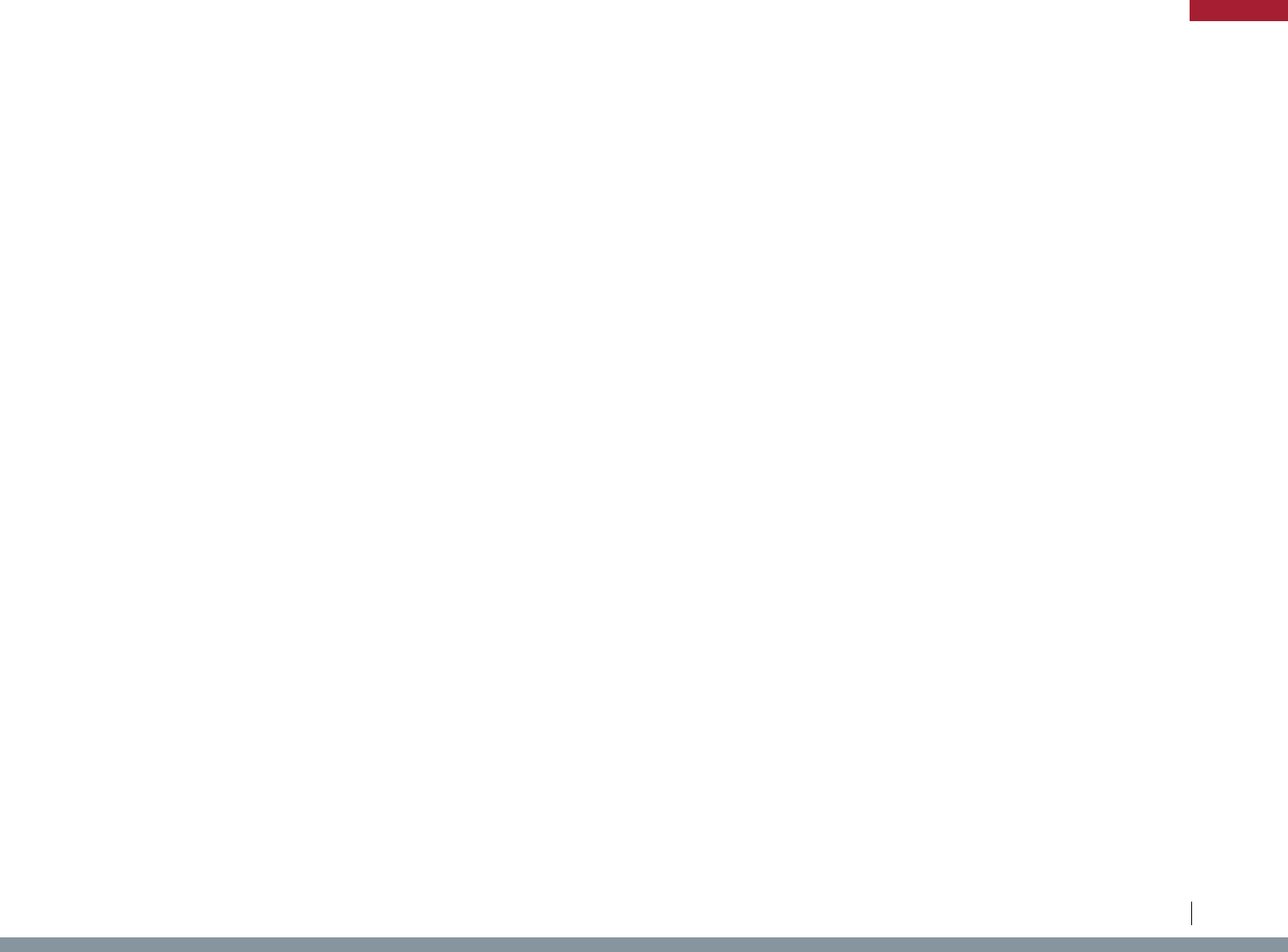
State Law/Regulation Potentially Impacted Industry Agricultural Product Regulation Type Purpose Description
VA 2 Va. Admin. Code § 5-141-120 Livestock Swine Importation
Disease/Pest
Prevention
Import requirements for swine - pseudorabies, brucellosis, health
certification, and tagging requirements
VA 2 Va. Admin. Code § 5-141-40 Live Animals Live Animals Importation
Disease/Pest
Prevention
Importation requirements for animals including livestock and pets -
permit required
VA 2 Va. Admin. Code § 5-141-60 Livestock
Poultry, Hatching
Eggs
Importation
Disease/Pest
Prevention
Import requirements for poultry, hatching eggs - certificate of veterinary
inspection, disease free requirement, avian influenza, Pullorum-typhoid
VA 2 Va. Admin. Code § 5-141-70 Livestock Cattle Importation
Disease/Pest
Prevention
Import requirements for cattle - certification, permitting, and
identification requirements, tuberculosis, brucellosis
VA 2 Va. Admin. Code § 5-141-90 Livestock Sheep, Goats Importation
Disease/Pest
Prevention
Import requirements for sheep and goats - health certification,
identification requirements, scrapie, tuberculosis
VA 2 Va. Admin. Code § 5-205-100 Livestock Sheep, Goats, Swine Importation
Disease/Pest
Prevention
Importation requirements for animals in shooting enclosures - health
requirements, scabies, tuberculosis, brucellosis, etc.
VA 2 Va. Admin. Code § 5-206-30 Livestock Sheep, Goats Importation
Disease/Pest
Prevention
Import requirements for sheep and goats - state restrictions, certificate
of veterinary inspection, identification requirements, scrapie
VA 2 Va. Admin. Code § 5-315-40 Nursery Stock Nursery Plants Importation
Disease/Pest
Prevention
Imported fire ant restrictions
VA 2 Va. Admin. Code § 5-317-60 Plants Plants Importation
Disease/Pest
Prevention
Certificate, permit requirements regarding noxious weed imports
VA 2 Va. Admin. Code § 5-318-120 Nursery Stock Walnut trees Importation
Disease/Pest
Prevention
Thousand Cankers Disease import restrictions - regulated articles
VA 2 Va. Admin. Code § 5-318-40 Nursery Stock Walnut trees Importation
Disease/Pest
Prevention
Thousand Cankers Disease import restrictions - prohibition on entry
VA 2 Va. Admin. Code § 5-330-20 Forestry Trees Importation
Disease/Pest
Prevention
Import restrictions on trees - gypsy moth restrictions, quarantine areas
VA 2 Va. Admin. Code § 5-330-30 Forestry Trees Importation
Disease/Pest
Prevention
Import restrictions on trees - gypsy moth restrictions
VA 2 Va. Admin. Code § 5-390-20 Plants Seeds Prohibition
Disease/Pest
Prevention
Noxious weed seed restrictions
VA 2 Va. Admin. Code § 5-40-50 Livestock Cattle Importation
Disease/Pest
Prevention
Bovine Tuberculosis permit requirements
VA 2 Va. Admin. Code § 5-440-30 Cotton Cotton Importation
Disease/Pest
Prevention
Boll Weevil Restrictions - cotton related import restrictions
VA 2 Va. Admin. Code § 5-450-40 Forestry
European Black
Currant
Importation
Disease/Pest
Prevention
Prohibition on European black currant imports - White Pine Blister Rust
VA Va. Code § 3.2-3804 Plants Nursery Plants Importation
Disease/Pest
Prevention
Importation requirements for nursery stock - inspection certificate
requirements
VA Va. Code § 3.2-4405 Livestock Bees Importation
Disease/Pest
Prevention
Importation requirements for bees and used bee equipment - permit
required
VA Va. Code § 3.2-4406 Livestock Bees Importation
Disease/Pest
Prevention
Importation requirements for bees in combless packages - certificate of
health required
VA Va. Code § 3.2-4407 Livestock Bees Certification
Disease/Pest
Prevention
Bee sale requirements - certificate of health requied for bees on
combs, hives, used beekeeping equipment with combs, or appliances
VA 12 Va. Admin. Code § 5-421-310 Food Shellfish Sourcing Food Safety Shellfish sourcing requirements
VA 12 Va. Admin. Code § 5-421-320 Food Mushrooms Sourcing Food Safety Wild mushroom sourcing requirements
97
Legislative Analysis of S.2019 / H.R.4417: The “Ending Agricultural Trade Suppression Act”
APPENDIX
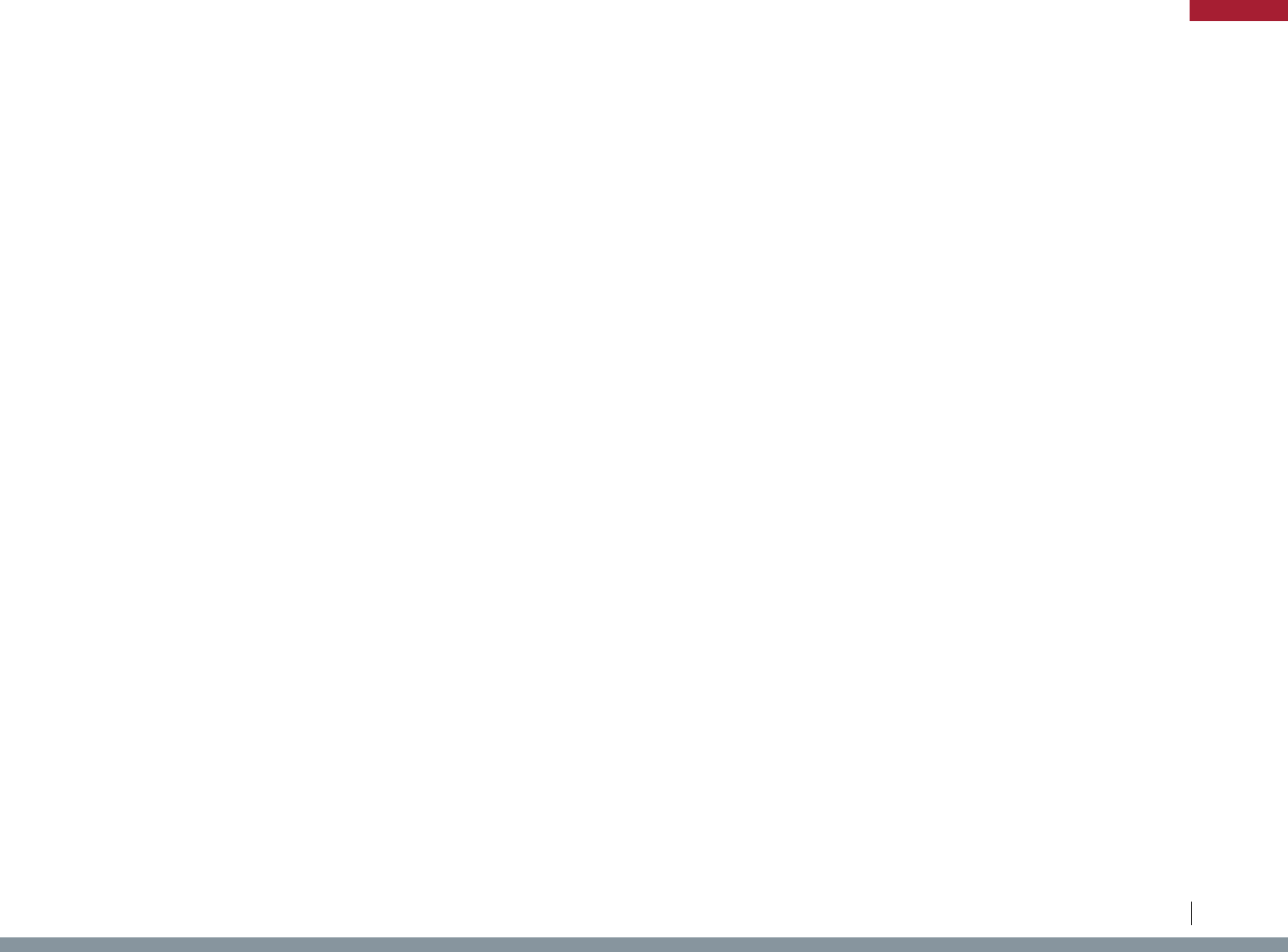
State Law/Regulation Potentially Impacted Industry Agricultural Product Regulation Type Purpose Description
VA 2 Va. Admin. Code § 5-531-70 Dairy Milk Quality Standards Food Safety
Milk production requirements including milking barn, stable, or parlor
requirements
VA 2 Va. Admin. Code § 5-531-90 Dairy Milk Quality Standards Food Safety
Prohibition on milk imports and sales from unhealthy animals, animals
not kept in healthy conditions
VA 2 Va. Admin. Code § 5-585-310 Food Shellfish Sourcing Food Safety Shellfish sourcing requirements
VA 2 Va. Admin. Code § 5-585-320 Food Mushrooms Sourcing Food Safety Wild mushroom sourcing requirements
VA Va. Code § 2.2-4324
Agricultural
Products
Agricultural Products Procurement Market Support Preference for in-state agricultural products
VA Va. Code § 2.2-4328
Agricultural
Products
Agricultural Products Procurement Market Support Preference for in-state agricultural products
VA 2 Va. Admin. Code § 5-490-50 Dairy Milk Quality Standards Product Quality Raw milk sale restrictions - milkroom requirements
VA Va. Code § 28.2-228.1 Fish Fish Licensing Sustainability Landing seafood license and fees
VT 13 Vt. Code R. 140 011:7 Drugs Salvia, Kratom Prohibition Consumer Safety
Recreational drug ban - salvia, kratom (mitragynine, 7-
hydroxymitragynine)
VT 20 Vt. Code R. 022 002 Livestock Poultry Importation
Disease/Pest
Prevention
Highly pathogenic avian influenza - prohibition on importing certain
poultry
VT 20 Vt. Code R. 022 005: XI Livestock Swine Importation
Disease/Pest
Prevention
Importation requirements for swine - permit, health certification, swine
brucellosis
VT 20 Vt. Code R. 022 006: 1405 Livestock Cattle Prohibition
Disease/Pest
Prevention
Brucellosis sales prohibition
VT 20 Vt. Code R. 022 010: III Livestock Equines Importation
Disease/Pest
Prevention
Rules governing importation of equines - certification, Equine
Infectious Anemia
VT 20 Vt. Code R. 022 019 Live Animals Domestic Animals Importation
Disease/Pest
Prevention
Importation requirements for domestic animals including livestock and
poultry - permit and certification requirements and certain prohibitions
VT 20 Vt. Code R. 022 023 Livestock Cervids Importation
Disease/Pest
Prevention
Captive cervid import requirements - certificate of veterinary inspection
VT 20 Vt. Code R. 031 002:V Livestock Bees Importation
Disease/Pest
Prevention
Import restrictions for bees - certificate of inspection, tracheal mite
VT 20 Vt. Code R. 031 009:V-2 Nursery Stock Nursery Stock Importation
Disease/Pest
Prevention
Transportation of nursery stock into vermont - certification requirement
VT 20 Vt. Code R. 031 009:VI-1 Nursery Stock Nursery Stock Prohibition
Disease/Pest
Prevention
Prohibition against sale of diseased or infested nursery stock
VT Vt. Stat. tit. 6, § 1163 Live Animals Live Animals Importation
Disease/Pest
Prevention
Fines for importing any animal infected with or exposed to a contagious
disease or selling condemned animals or carcasses
VT Vt. Stat. tit. 6, § 1181 Livestock Equines Importation
Disease/Pest
Prevention
Equine import requirements - certificate of veterinarian inspection,
equine infectious anemia
VT Vt. Stat. tit. 6, § 3032 Livestock Bees Importation
Disease/Pest
Prevention
Transportation of bees or used equipment into the State
VT Vt. Stat. tit. 6, § 4026 Nursery Stock Nursery Stock Importation
Disease/Pest
Prevention
Foreign nursery stock - certificate of inspection, transportation
requirements, penalty
VT Vt. Stat. tit. 6, § 4027 Nursery Stock Nursery Stock Prohibition
Disease/Pest
Prevention
Diseased or infested nursery stock prohibition - stop-sale, destruction
VT Vt. Stat. tit. 6, § 4028 Nursery Stock Nursery Stock Recordkeeping
Disease/Pest
Prevention
Access to records requirements for nursery stock dealers and growers
98
Legislative Analysis of S.2019 / H.R.4417: The “Ending Agricultural Trade Suppression Act”
APPENDIX
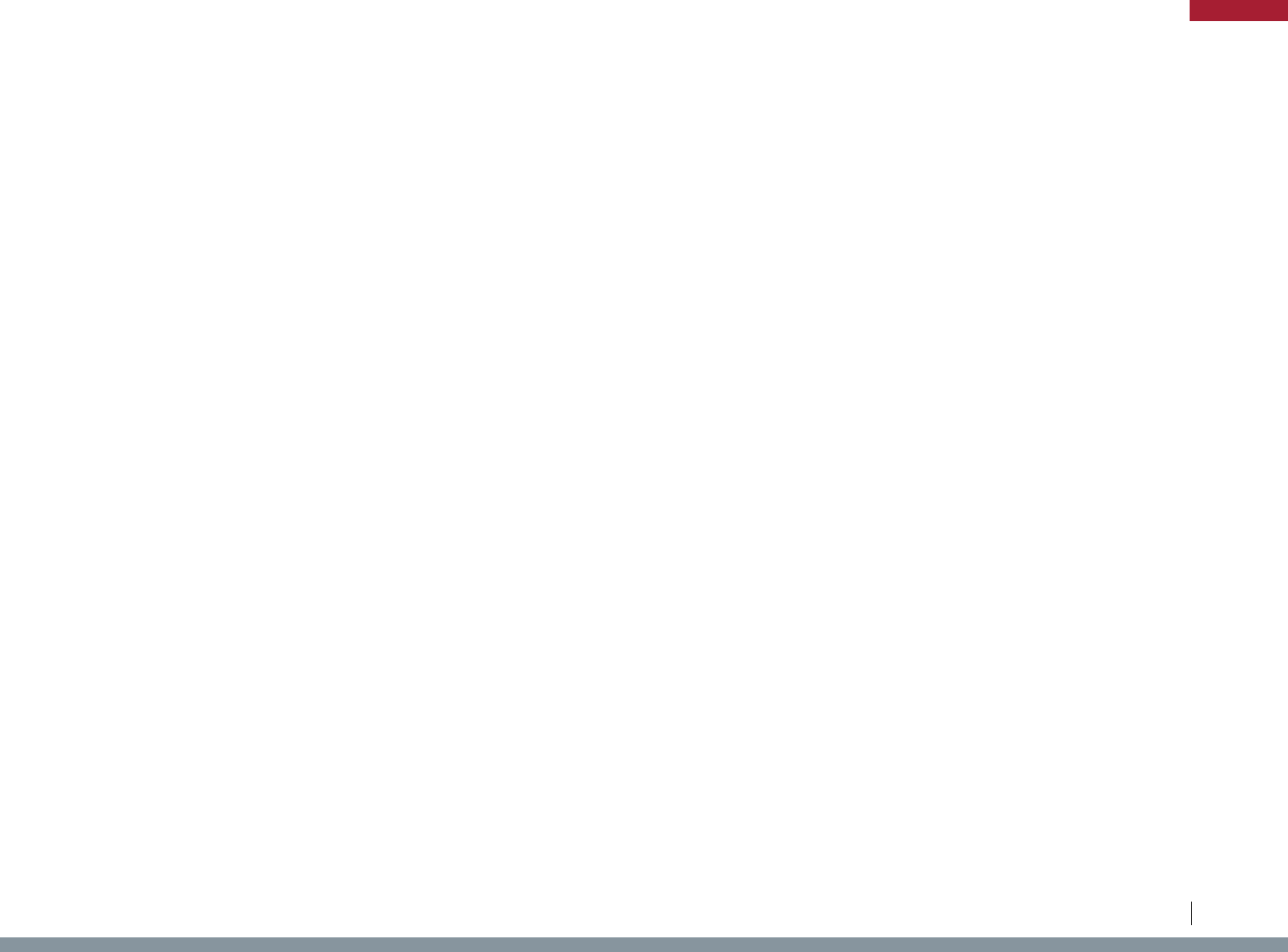
State Law/Regulation Potentially Impacted Industry Agricultural Product Regulation Type Purpose Description
VT 13 Vt. Code R. 140 018: 5-204-1-K Food Food Quality Standards Food Safety
Sourcing and labeling requirements - including shellfish, wild
mushrooms, milk and meat products, etc.
VT Vt. Stat. tit. 18, § 4059 Food Food Prohibition Food Safety Adulterated food - including production conditions
WA Wash. Admin. Code § 16-470-030 Forestry
Trees, Shrubs, Other
Products
Importation
Disease/Pest
Prevention
Gypsy Moth restrictions - quaratine of host and carrier goods
WA Wash. Admin. Code § 16-54-030 Live Animals Live Animals Importation
Disease/Pest
Prevention
Importation requirements for animals - certificate of veterinary
inspection and entry permit requirements
WA Wash. Admin. Code § 16-54-032 Live Animals Live Animals Importation
Disease/Pest
Prevention
Certificate of veterinary inspection - required information
WA Wash. Admin. Code § 16-54-065 Live Animals Live Animals Importation
Disease/Pest
Prevention
Prohibition on any animal that is infected with or exposed to any
infectious or communicable disease entering Washington state, other
entry prohibitions
WA Wash. Admin. Code § 16-54-068 Live Animals Live Animals Importation
Disease/Pest
Prevention
Importation restrictions
WA Wash. Admin. Code § 16-54-071 Livestock Equines Importation
Disease/Pest
Prevention
Importation requirements for equines, equine reproductive products -
certificate of veterinary inspection, equine infectious anemia testing,
Equine Viral Arteritis, piroplasmosis
WA Wash. Admin. Code § 16-54-082 Livestock Bovines Importation
Disease/Pest
Prevention
Importation requirements for bovines - certificate of veterinary
inspection, entry permit, identification
WA Wash. Admin. Code § 16-54-083 Livestock Bovines Importation
Disease/Pest
Prevention
Importation requirements for bovines - brucellosis testing, vaccination
WA Wash. Admin. Code § 16-54-085 Livestock Bovines Importation
Disease/Pest
Prevention
Importation requirements for bovines - tuberculosis
WA Wash. Admin. Code § 16-54-086 Livestock Bovines Importation
Disease/Pest
Prevention
Importation requirements for bovines - trichomoniasis
WA Wash. Admin. Code § 16-54-090 Livestock Goats Importation
Disease/Pest
Prevention
Importation requirements for goats - certificate of veterinary inspection,
must be free from clinical signs or known exposure to any infectious or
communicable disease including, but not limited to, footrot, sore mouth,
and caseous lymphadenitis, testing for brucellosis, tuberculosis,
identification
WA Wash. Admin. Code § 16-54-101 Livestock Sheep Importation
Disease/Pest
Prevention
Importation requirements for sheep - certificate of veterinary inspection,
identification, must be clinically free from the signs of infectious
diseases, including footrot, sore mouth, and caseous lymphadenitis,
originate from scrapie-free flock, Brucella ovis testing
WA Wash. Admin. Code § 16-54-105 Livestock Llamas, Alpacas Importation
Disease/Pest
Prevention
Importation requirements for llamas and alpacas - all llamas and
alpacas imported into Washington state shall be accompanied by a
health certificate stating that the animals are free from signs of or
exposure to infectious or communicable disease
WA Wash. Admin. Code § 16-54-111 Livestock Swine Importation
Disease/Pest
Prevention
Importation requirements for swine, swine reproductive material - entry
permit, certificate of veterinary inspection, individual identification,
brucellosis, pseudorabies
WA Wash. Admin. Code § 16-54-145 Livestock
Poultry, Gamebirds,
Ratites, Hatching
Eggs
Importation
Disease/Pest
Prevention
Importation requirements for poultry, ratites, and game birds - certificate
of veterinary inspection or other specified documentation required,
testing for Salmonella Pullorum, Avian influenza, and other diseases,
identification for ratites
WA Wash. Admin. Code § 16-54-160 Livestock Birds Except Poultry Importation
Disease/Pest
Prevention
Importation requirements for birds other than poultry including
psittacine birds - certificate of veterinary inspection, identification
99
Legislative Analysis of S.2019 / H.R.4417: The “Ending Agricultural Trade Suppression Act”
APPENDIX
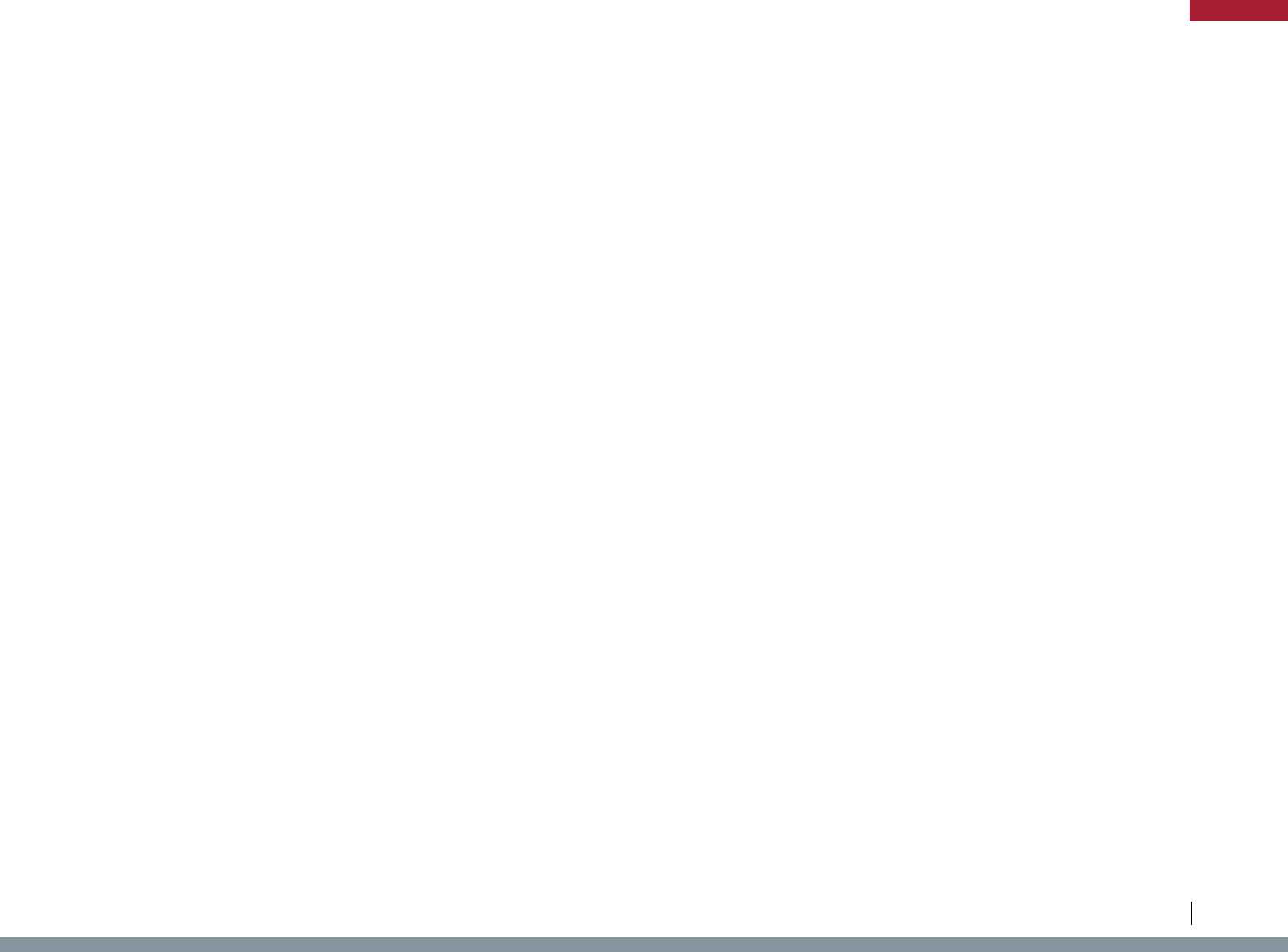
State Law/Regulation Potentially Impacted Industry Agricultural Product Regulation Type Purpose Description
WA Wash. Admin. Code § 16-54-170 Pets Dogs, Cats, Ferrets Inspection
Disease/Pest
Prevention
Importation requirements for dogs, cats, and ferrets - certificate of
veterinary inspection, rabies vaccination, heartworm testing or
preventative for some dogs
WA Wash. Admin. Code § 16-54-180 Live Animals
Exotic Animals,
Wildlife
Importation
Disease/Pest
Prevention
Importation requirements for exotic animals and wildlife - certificate of
veterinary inspection, entry permit, testing requirements (brucellosis,
tuberculosis, rabies, Elaphostrongylinae, equine infectious anemia,
pseudorabies)
WA Wash. Admin. Code § 16-752-620 Plants Plants, Seeds Importation
Disease/Pest
Prevention
Noxious weed restrictions - prohibited to transport, buy, sell, offer for
sale, or to distribute plants or plant parts of the regulated species listed
into or within the state of Washington or to sell, offer for sale, or
distribute seed packets of the seed, flower seed blends, or wildflower
mixes of these regulated species into or within the state of Washington
WA Wash. Admin. Code § 220-370-100 Aquaculture Fish Importation
Disease/Pest
Prevention
Marine finfish aquaculture - approval permit for marine finfish
aquaculture, importation
WA Wash. Admin. Code § 220-370-200 Aquaculture Shellfish Importation
Disease/Pest
Prevention
Importation requirements for aquatic invertebrates - unlawful for any
person to import into Washington or possess live imported aquatic
invertebrates, except market ready shellfish, without first obtaining an
aquatic invertebrate import permit issued by the department
WA Wash. Rev. Code § 16.36.140 Live Animals Live Animals Inspection
Disease/Pest
Prevention
Bringing an animal into the state - securing a certificate of veterinary
inspection required, exemptions
WA Wash. Admin. Code § 246-215-03220 Food Shellfish Sourcing Food Safety Shellfish sourcing requirements
WA Wash. Admin. Code § 246-215-03225 Food Mushrooms Sourcing Food Safety Wild mushroom sourcing requirements
WA Wash. Rev. Code § 39.26.260
Agricultural
Products
Agricultural Products Procurement Market Support Procurement preferences - in-state procurement
WI Wis. Stat. § 951.11 Pets
Chicks, Ducklings,
and Rabbits
Prohibition Animal Welfare Artificially colored animals sales prohibition
WI Wis. Stat. § 961.14 Drugs Kratom Prohibition Consumer Safety Recreational drug ban - kratom (mitragynine, 7-hydroxymitragynine)
WI Wis. Admin. Code ATCP § 10.06 Live Animals Live Animals Importation
Disease/Pest
Prevention
Certificate of veterinary inspection shall accompany every animal
imported - with exceptions
WI Wis. Admin. Code ATCP § 10.07 Live Animals Live Animals Importation
Disease/Pest
Prevention
Animal import requirements including permits
WI Wis. Admin. Code ATCP § 10.08 Live Animals Live Animals Importation
Disease/Pest
Prevention
Prohibition on moving diseased animals - anthrax, brucellosis, chronic
wasting disease, etc.
WI Wis. Admin. Code ATCP § 10.22 Livestock Bovines Importation
Disease/Pest
Prevention
Importation requirements for bovine animals - brucellosis, tuberculosis,
etc.
WI Wis. Admin. Code ATCP § 10.30 Livestock Swine Importation
Disease/Pest
Prevention
Importation requirements for swine - brucellosis, pseudorabies, etc.
WI Wis. Admin. Code ATCP § 10.36 Livestock Horses Importation
Disease/Pest
Prevention
Equine import requirements - equine infectious anemia
WI Wis. Admin. Code ATCP § 10.42 Livestock Poultry Importation
Disease/Pest
Prevention
Importation requirements for poultry - pullorum, fowl typhoid, etc.
WI Wis. Admin. Code ATCP § 10.55 Livestock Cervids Importation
Disease/Pest
Prevention
Cervid import requirements - chronic wasting disease, tuberculosis
WI Wis. Admin. Code ATCP § 10.62 Fish Fish Importation
Disease/Pest
Prevention
Fish import requirements - permit required with exceptions
WI Wis. Admin. Code ATCP § 10.69 Livestock Sheep Importation
Disease/Pest
Prevention
Importation requirements for sheep
100
Legislative Analysis of S.2019 / H.R.4417: The “Ending Agricultural Trade Suppression Act”
APPENDIX
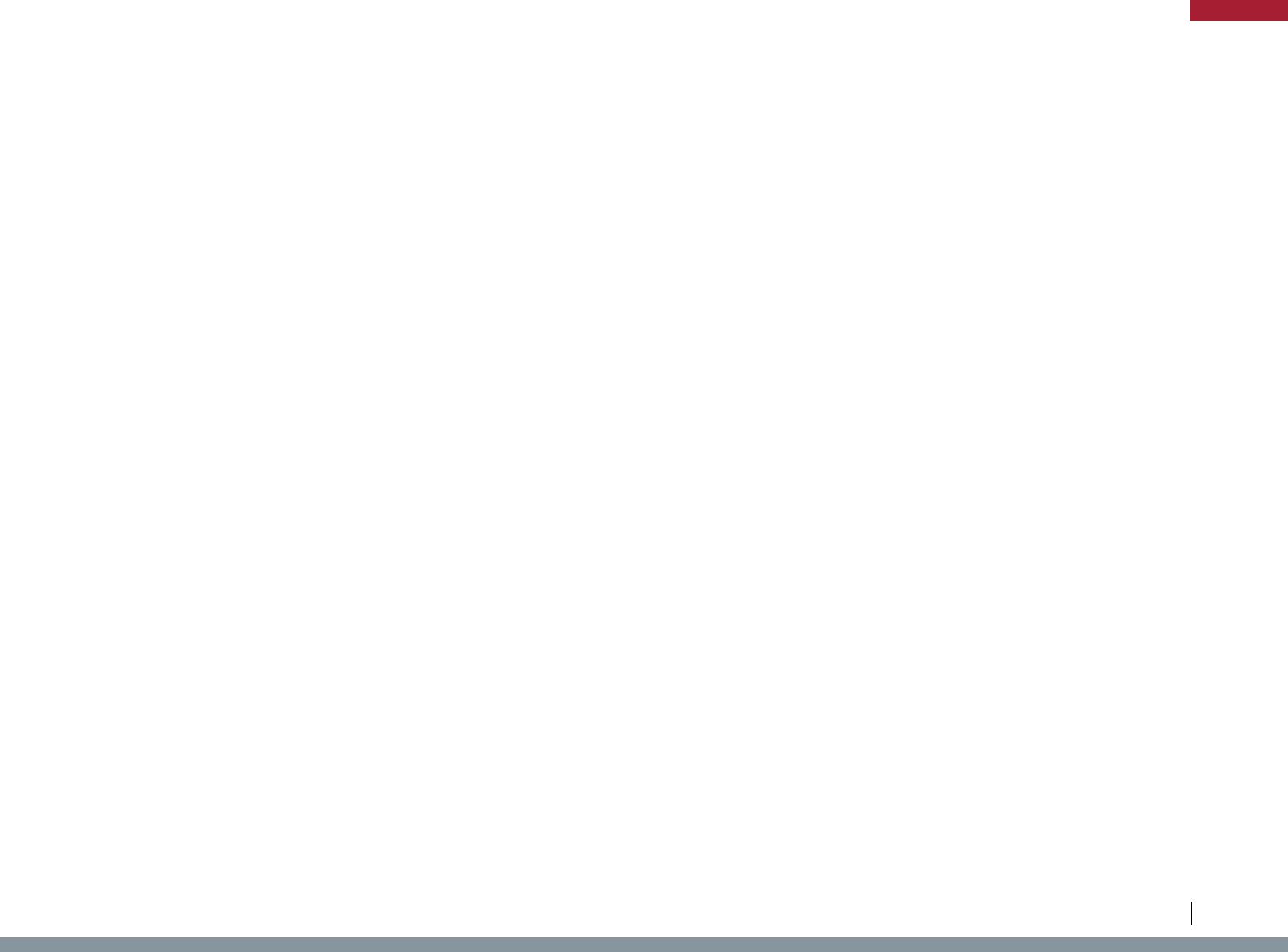
State Law/Regulation Potentially Impacted Industry Agricultural Product Regulation Type Purpose Description
WI Wis. Admin. Code ATCP § 10.76 Livestock Goats Importation
Disease/Pest
Prevention
Importation requirements for goats - tuberculosis
WI Wis. Admin. Code ATCP § 10.83 Livestock Ratites Importation
Disease/Pest
Prevention
Importation requirements for ratites
WI Wis. Admin. Code ATCP § 10.85 Livestock Camelids Importation
Disease/Pest
Prevention
South American camelid import requirements
WI Wis. Admin. Code ATCP § 21.10 Forestry Trees Importation
Disease/Pest
Prevention
Gypsy moth restrictions - import controls and quarantine
WI Wis. Admin. Code ATCP § 21.12 Forestry Trees Importation
Disease/Pest
Prevention
Pine shoot beetle restrictions - import controls and quarantine
WI Wis. Admin. Code ATCP § 21.13 Livestock Bees Importation
Disease/Pest
Prevention
Honeybee import requirements
WI Wis. Admin. Code ATCP § 21.16 Forestry Hemlock Trees Importation
Disease/Pest
Prevention
Hemlock woolly adelgid - import controls
WI Wis. Admin. Code ATCP § 21.18 Forestry Trees Importation
Disease/Pest
Prevention
Asian longhorned beetle - import controls and quarantine
WI Wis. Admin. Code ATCP § 21.19 Forestry Nursery Stock Importation
Disease/Pest
Prevention
Phytophthora ramorum - import controls and quarantine
WI Wis. Admin. Code ATCP § 21.21 Forestry Nursery Stock Importation
Disease/Pest
Prevention
Thousand cankers disease of walnut trees - import restrictions
WI Wis. Admin. Code ATCP § 21.22 Forestry Nursery Stock Importation
Disease/Pest
Prevention
Importation restrictions on pine nursery stock - Mountain Pine Beetle
WI Wis. Admin. Code ATCP § 94.01 Plants Plants, Plant
Products
Importation
Disease/Pest
Prevention
Plant inspection and pest control authority - importation restrictions
WI Wis. Admin. Code ATCP § 94.03
Agricultural
Products
Agricultural Products Importation
Disease/Pest
Prevention
Shipment of pests and biological control agents - permits
WI Wis. Stat. § 29.735 Fish Fish Importation
Disease/Pest
Prevention
Importation of non-native fish - permit required
WI Wis. Stat. § 94.76 Livestock Bees Importation
Disease/Pest
Prevention
Honeybee disease and pest control - import restrictions
WI Wis. Stat. § 16.75
Agricultural
Products
Agricultural Products Procurement Market Support Government procurement regulations
WI Wis. Stat. § 29.611 Food Ginseng Importation Sustainability Shipment and certification of origin required to import wild ginseng
WI Wis. Stat. § 94.50 Food Ginseng Importation Sustainability
Sale or shipment of cultivated ginseng - no person may import out-of-
state cultivated ginseng into this state, unless the imported shipment is
accompanied by a valid shipment certificate issued by the state of origin
WV W. Va. Code § 60A-4-413 Drugs Salvia Prohibition Consumer Safety Recreational drug ban - salvia
WV W. Va. Code § 19-13-7 Livestock Bees Importation
Disease/Pest
Prevention
Importation requirements for bees - bees brought into state to carry
inspection certificate, commissioner to be notified, nterstate movement
of bees
WV W. Va. Code § 19-9-2(e) Live Animals Live Animals Importation
Disease/Pest
Prevention
Duties of commissioner - authority to prohibit the importation into this
State of animals and poultry, when necessary to prevent the spread of
disease
WV W. Va. Code § 20-2-13 Live Animals
Fish, Fish Eggs,
Wildlife
Importation
Disease/Pest
Prevention
Importation of wildlife, fish, fish eggs - certification and inspection of
imported wildlife, Viral Hemorrhagic Septicemia
WV W. Va. Code R. § 61-1-10 Livestock Livestock Importation
Disease/Pest
Prevention
Requirements for fairs, festivals, and purebred consignment sales -
certificate of veterinary inspection, tuberculosis, brucellosis, etc.
101
Legislative Analysis of S.2019 / H.R.4417: The “Ending Agricultural Trade Suppression Act”
APPENDIX
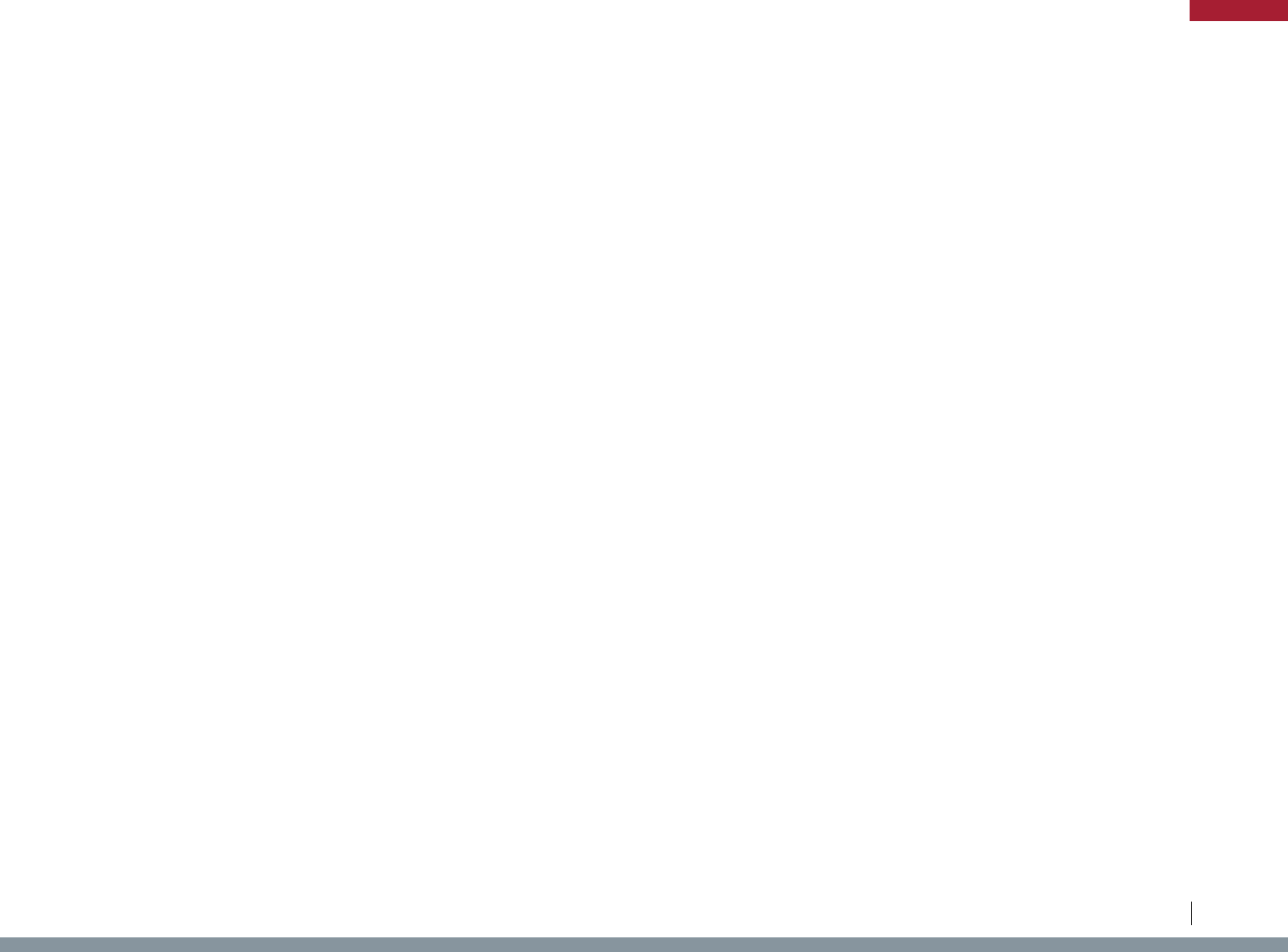
State Law/Regulation Potentially Impacted Industry Agricultural Product Regulation Type Purpose Description
WV W. Va. Code R. § 61-1-14 Livestock Swine Importation
Disease/Pest
Prevention
Prohibition on sale, transfer, trade, importation, etc. of swine unless
tested negative for pseudorabies or meeting other conditions
WV W. Va. Code R. § 61-1-6 Live Animals Live Animals Importation
Disease/Pest
Prevention
Authority to quarantine improperly imported animals
WV W. Va. Code R. § 61-1-8 Live Animals Live Animals Importation
Disease/Pest
Prevention
Animal importation requirements - prohibition on importation of animals
infected with a communicable disease, exposed to disease, or from
quarantined area, requirements for cattle, goats, sheep, equines,
swine, wildlife, birds other than ratites, ratites, camelids, and dogs and
cats
WV W. Va. Code R. § 61-1-9 Livestock Livestock Importation
Disease/Pest
Prevention
Rules for livestock sales - brucellosis testing requirements,
identification for sheep and goats, equine infectious anemia testing
WV W. Va. Code R. § 61-14A-5 Plants Plants Importation
Disease/Pest
Prevention
Noxious weed restrictions - authority to quarantine, suppress, or
control, listed plants
WV W. Va. Code R. § 61-9-13 Plants Plants Importation
Disease/Pest
Prevention
Seed regulations - disclosure of treatment, germination standards,
labeling, reporting, noxious weed seeds, only certified seed potatoes
may be sold
WV W. Va. Code § 5A-3-37
Agricultural
Products
Agricultural Products Procurement Market Support
Reciprocal procurement preference - preference for resident vendors
for certain contracts
WV W. Va. Code § 19-16-2(s) Crops Potatoes Certification Quality standards Requirement that seed potatoes be certified, labeling requirements
WV W. Va. Code § 19-1A-3a(d)(4) Food Ginseng Importation Sustainability
Importation requirements for ginseng - dealer may not import out-of-
state ginseng into this state unless the ginseng is accompanied by a
valid export certificate issued by the state of origin
WY 040-0010 Wyo. Code R. § 10 Live Animals Wildlife Importation
Disease/Pest
Prevention
Interstate transportation requirements for live warm-blooded wildlife -
transport permit and veterinary certificate of inspection required
WY 051-0002-2 Wyo. Code R. § 6 Livestock Bovines Importation
Disease/Pest
Prevention
Brucellosis vaccination requirement for all sexually intact female
domestic Bovinae imported to Designated Surveillance Area
WY 051-0008-8 Wyo. Code R. § 11 Live Animals Live Animals Importation
Disease/Pest
Prevention
Prohibition on importation of animals affected with, or has recently
been exposed to any infectious, contagious, or communicable disease
or that originates from an area under Quarantine
WY 051-0008-8 Wyo. Code R. § 14 Livestock Cattle, Bison Importation
Disease/Pest
Prevention
Importation requirements for bison and cattle - certificate of veterinary
inspection, permit, identification, brucellosis, trichomoniasis,
tuberculosis
WY 051-0008-8 Wyo. Code R. § 15 Livestock Camelids Importation
Disease/Pest
Prevention
Importation requirements for camelids - certificate of veterinary
inspection, identification, tuberculosis, brucellosis
WY 051-0008-8 Wyo. Code R. § 17 Livestock Ratites Importation
Disease/Pest
Prevention
Importation requirements for flightless birds including emus, ostriches -
certificate of veterinary inspection, testing prior to entry for Avian
Influenza, Pullorum-Typhoid unless from NPIP clean flock
WY 051-0008-8 Wyo. Code R. § 18 Livestock Horses Importation
Disease/Pest
Prevention
Importation requirements for horses - certificate of veterinary
inspection, negative Equine Infectious Anemia test
WY 051-0008-8 Wyo. Code R. § 19 Livestock
Poultry, Hatching
Eggs
Importation
Disease/Pest
Prevention
Importation requirements for poultry and hatching eggs - certificate of
veterinary inspection or National Poultry Improvement Plan Form VS 9-
3, negative testing for Avian Influenza and other Poultry-specific
diseases, prohibition on importation from Quarantine area or control
zone
WY 051-0008-8 Wyo. Code R. § 20 Livestock Sheep, Goats Importation
Disease/Pest
Prevention
Importation requirements for sheep and goats - certificate of veterinary
inspection, import permit, Brucella melitensis, Brucella ovis (for sheep),
Scrapie, Show Lamb Fungus
102
Legislative Analysis of S.2019 / H.R.4417: The “Ending Agricultural Trade Suppression Act”
APPENDIX

State Law/Regulation Potentially Impacted Industry Agricultural Product Regulation Type Purpose Description
WY 051-0008-8 Wyo. Code R. § 21 Livestock Swine Importation
Disease/Pest
Prevention
Importation requirements for swine - certificate of veterinary inspection,
import permit, identification, Brucellosis, pseudorabies, ban on swine
fed garbage
WY 051-0008-8 Wyo. Code R. § 7 Live Animals Live Animals Importation
Disease/Pest
Prevention
General animal import requirements - certificiate of veterinary
inspection and import permit or shipping number
WY 051-0008-8 Wyo. Code R. § 8 Live Animals Live Animals Importation
Disease/Pest
Prevention
Interstate Certificates of Veterinary Inspections (ICVI) & permit
requirements
WY Wyo. Stat. § 11-7-302 Livestock Bees Importation
Disease/Pest
Prevention
Importation requirements for bees - pre-import inspection, affidavit
WY Wyo. Stat. § 11-7-404 Livestock Bees Importation
Disease/Pest
Prevention
Bee quarantine, sanitization, and destruction authority
WY 010-0003-3 Wyo. Code R. § 10 Food Shellfish Sourcing Food Safety Shellfish sourcing requirements
WY 010-0003-3 Wyo. Code R. § 3 Food Mushrooms Sourcing Food Safety Wild mushroom sourcing requirements
WY 010-0003-3 Wyo. Code R. § 9 Food Fish Sourcing Food Safety Fish sourcing requirements
WY Wyo. Stat. § 16-6-104
Agricultural
Products
Agricultural Products Procurement Market Support Preference for Wyoming materials required in contracts
WY Wyo. Stat. § 16-6-105
Agricultural
Products
Agricultural Products Procurement Market Support
Preference for Wyoming materials and Wyoming agricultural products
required in public purchases
103
Legislative Analysis of S.2019 / H.R.4417: The “Ending Agricultural Trade Suppression Act”
APPENDIX
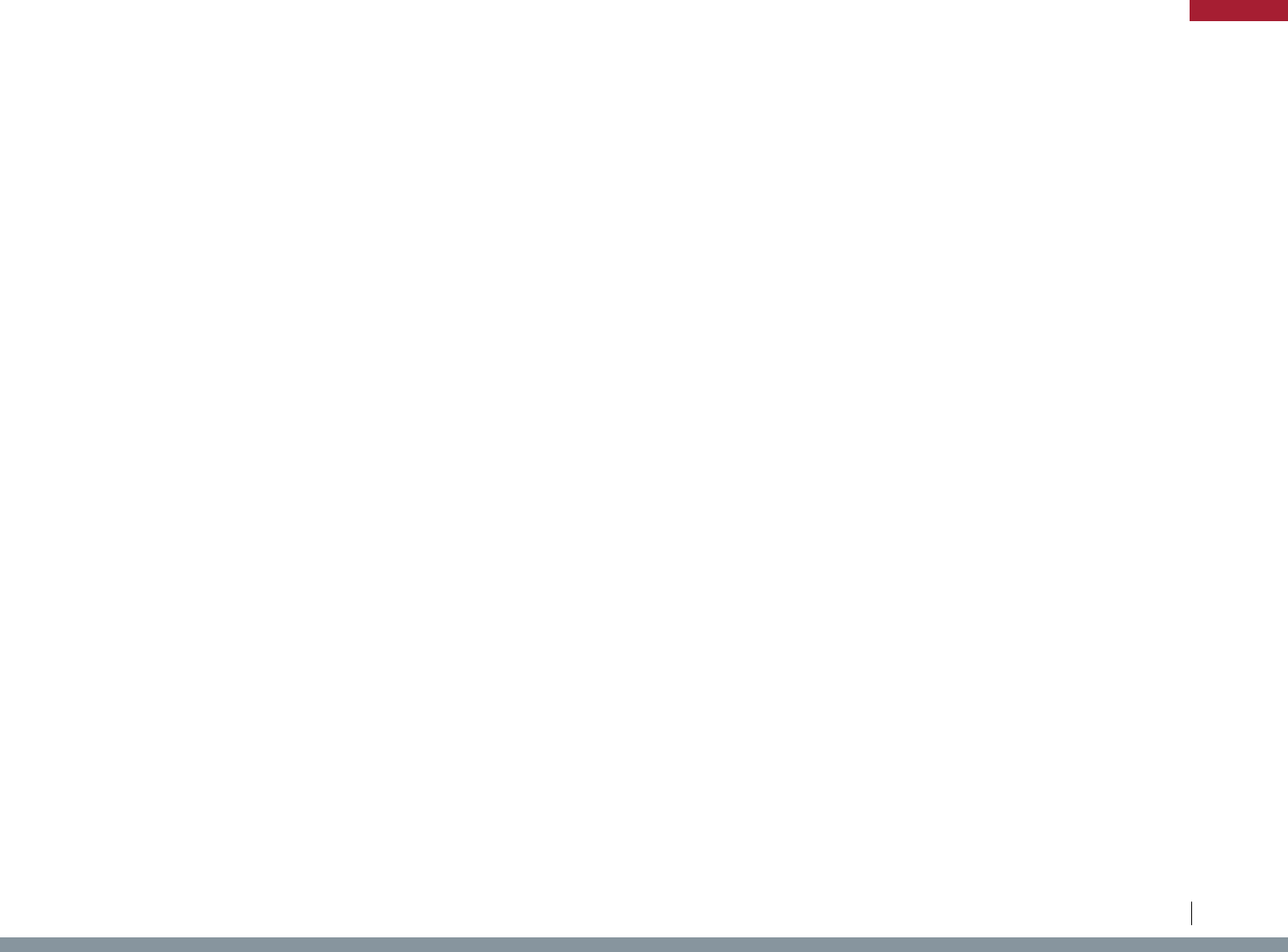
104
Legislative Analysis of S.2019 / H.R.4417: The “Ending Agricultural Trade Suppression Act”
APPENDIX
State laws and regulations potentially affected by the EATS Act, listed by regulatory purpose
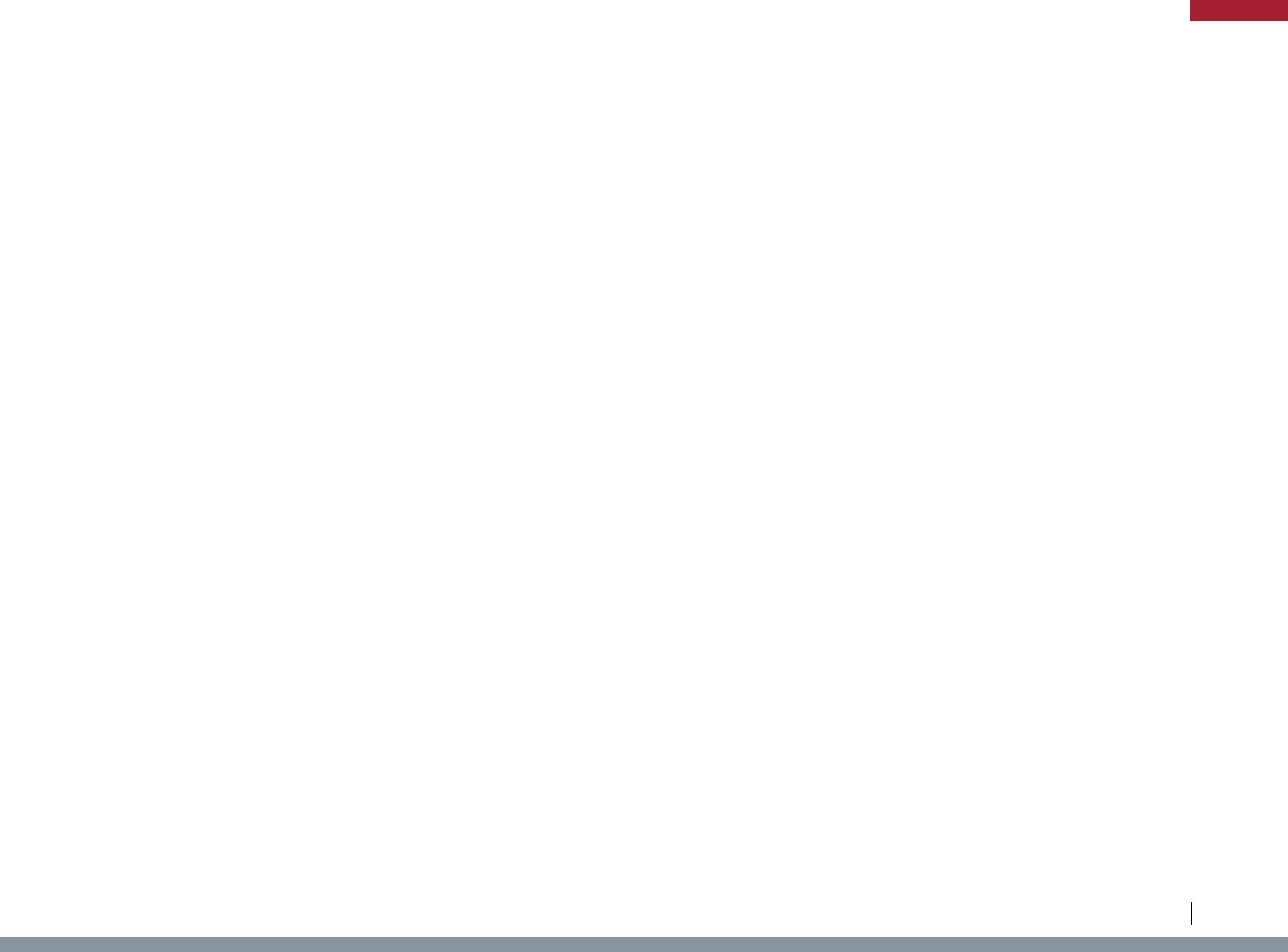
State Law/Regulation Potentially Impacted Industry Agricultural Product Regulation Type Purpose Description
CA Cal. Code Regs. tit. 3, § 1320.1 Food Eggs Prohibition Animal Welfare
Prohibition on sale of shell eggs or liquid eggs for human food if it is
the product of an egg-laying hen confined in an enclosure that fails to
CA Cal. Code Regs. tit. 3, § 1321.1 Food Meat Prohibition Animal Welfare
Prohibition on sale of meat from calf confined in an enclosure that fails
to comply with standards
CA Cal. Code Regs. tit. 3, § 1322.1 Food Meat Prohibition Animal Welfare
Prohibition on sale of whole pork meat for human food if the whole pork
meat is the product of a breeding pig, or the product of the immediate
offspring of a breeding pig, that was confined at any time during the
production cycle for said product in an enclosure that fails to comply
with standards
CA Cal. Health & Safety Code § 25982 Food Foie Gras Prohibition Animal Welfare Prohibition on sale of foie gras
CA Cal. Health & Safety Code § 25996 Food Eggs Prohibition Animal Welfare
Prohibition on sale or contract for sale of shelled eggs for human
consumption for failure to comply with animal care standards
CA Cal. Penal Code § 598c Livestock Equines Prohibition Animal Welfare Prohibition on Importation of horses for slaughter
CO Colo. Rev. Stat. § 35-21-203 Livestock Poultry Prohibition Animal Welfare Confinement of egg-laying hens - sale of eggs in Colorado
CO Colo. Rev. Stat. § 35-80-108 Pets
Dogs, Cats, Birds,
Turtles, Rabbits,
Other Animals
Prohibition Animal Welfare Unlawful to import certain animals
IL Ill. Admin. Code tit. 8, pt. § 25.50 Live Animals Live Animals Transportation Animal Welfare Animal welfare - transportation requirements
MA Mass. Gen. Laws ch. 129 App., § 1-3 Food Eggs, Veal, Pork Prohibition Animal Welfare Sale of products of covered animals confined in cruel manner
WI Wis. Stat. § 951.11 Pets
Chicks, Ducklings,
and Rabbits
Prohibition Animal Welfare Artificially colored animals sales prohibition
AL Ala. Admin. Code r. 80-1-6-.07 Fertilizer Soil and Fertilizer Labeling
Consumer
Protection
Special labeling required for fertilizer containing economic poisoning
FL Fla. Admin. Code r. 5B-33.003 Crops Potatoes Quality Standards
Consumer
Protection
Requirements for sale of seed potatoes
FL Fla. Admin. Code r. 5B-54.003 Livestock Bees Importation
Consumer
Protection
Prohibition on Africanized Bees
IA Iowa Code § 205.5 Nuts Bitter Almonds Prohibition
Consumer
Protection
Prohibition on sale of bitter almonds
IL 410 Ill. Comp. Stat. § 637/5 Food Food Labeling
Consumer
Protection
Halal Food Act - regulates use of terms related to "Halal" to protect
consumers from fraud
IL 410 Ill. Comp. Stat. § 645/1 Food Food Labeling
Consumer
Protection
Kosher Food Act - regulates use of terms related to "Kosher" to protect
consumers from fraud
IL Ill. Admin. Code tit. 8, pt. 60.50 Livestock Bees Importation
Consumer
Protection
Bee equipment treatment requirements prior to entry, prohibition on
exotic strains, Africanized honey bee regulations
MD Md. Code, Com. Law § 14-3602 Food Food Labeling
Consumer
Protection
Halal food labeling regulations
MD Md. Code, Com. Law § 14-904 Food Food Labeling
Consumer
Protection
Kosher food labeling regulations
MD Md. Code, Com. Law § 14-905
Agricultural
Products
Mezuzah, Tefillin Labeling
Consumer
Protection
Kosher labeling regulations for mezuzah and tefillin
MN Minn. R. 1510.2320 Crops Potatoes Quality Standards
Consumer
Protection
Certification of seed potatoes grown outside of Minnesota
MS Miss. Code R. § 2-1-4-02-101 Fish Catfish Importation
Consumer
Protection
Labeling requirements for Catfish products
MS Miss. Code R. § 2-1-4-03-101 Fish Tilapia Importation
Consumer
Protection
Labeling requirements for Tilapia products
105
Legislative Analysis of S.2019 / H.R.4417: The “Ending Agricultural Trade Suppression Act”
APPENDIX
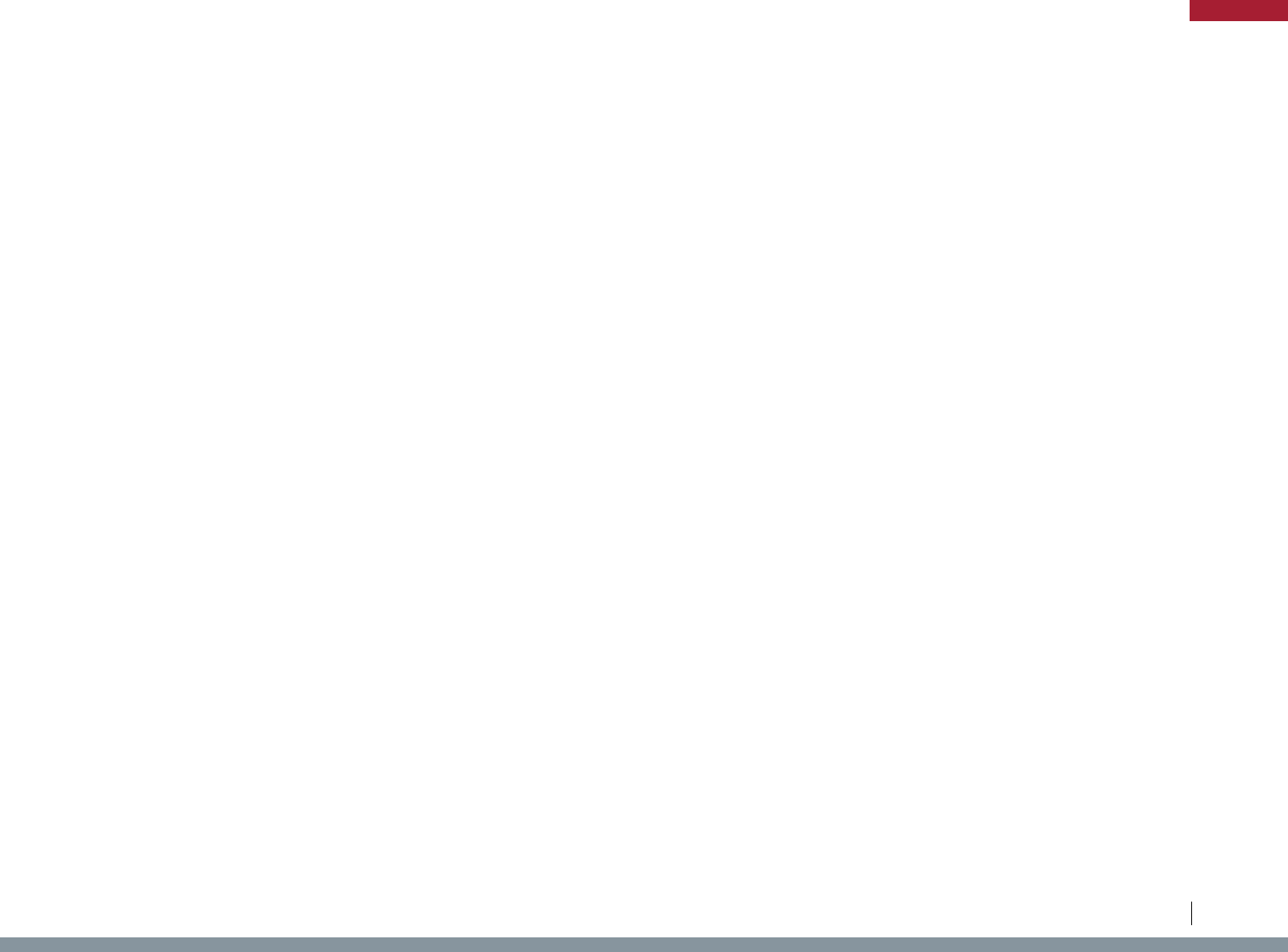
State Law/Regulation Potentially Impacted Industry Agricultural Product Regulation Type Purpose Description
NC 2 N.C. Admin. Code 48C.0127 Plants Seeds Labeling
Consumer
Protection
Labeling requirements for seeds treated with harmful or toxic
substances
NJ N.J. Rev. Stat. § 56:8-103 Food Food Labeling
Consumer
Protection
Halal food labeling requirements
NJ N.J. Rev. Stat. § 56:8-66 Food Food Labeling
Consumer
Protection
Kosher food labeling requirements
NY N.Y. Agric. & Mkts. Law § 199-e Food Food Prohibition
Consumer
Protection
Sale of irradiated food prohibited - exceptions
NY N.Y. Agric. & Mkts. Law § 201-a Food Food Labeling
Consumer
Protection
Kosher food labeling, certifying, and recordkeeping regulations
NY N.Y. Agric. & Mkts. Law § 201-e Food Food Labeling
Consumer
Protection
Halal food labeling, certifying, and recordkeeping regulations
NY
N.Y. Comp. Codes R. & Regs. tit. 6, §
575.3
Plants Plants, Bees, Fish Importation
Consumer
Protection
Importation of listed invasive species prohibited - plants, insects, fish
PA 3 Pa. Cons. Stat. § 5278 Food Food Quality Standards
Consumer
Protection
No adulteration of food including raw agricultural products
PA 31 Pa. Cons. Stat. § 646 Food Milk Licensing
Consumer
Protection
Permit for sale of milk whether produced in state or out of state
SD S.D. Codified Laws § 39-4-26 Food
Meat & Poultry
Products
Labeling
Consumer
Protection
Restriction of use of meat and poultry nomenclature to certain products
UT Utah Admin. Code r. 68-3-6 Fertilizer Soil and Fertilizer Licensing
Consumer
Protection
Soil and fertilizer requirements - prohibited acts
AL Ala. Code § 13A-12-214.1 Drugs Salvia Prohibition Consumer Safety Recreational drug ban - salvia
CA Cal. Penal Code § 379 Drugs Salvia Prohibition Consumer Safety Recreational drug ban - salvia
CO Colo. Rev. Stat. § 18-18-406.2 Drugs Salvia Prohibition Consumer Safety Recreational drug ban - salvia
DE Del. Code tit. 16, § 4714 Drugs Salvia Prohibition Consumer Safety Recreational drug ban - salvia
FL Fla. Stat. § 893.03 Drugs Salvia Prohibition Consumer Safety Recreational drug ban - salvia
GA Ga. Code § 16-13-72 Drugs Salvia Prohibition Consumer Safety Recreational drug ban - salvia
IA Iowa Code § 124.204 Drugs Salvia Prohibition Consumer Safety Recreational drug ban - salvia
IL 720 Ill. Comp. Stat. § 570/204 Drugs Salvia Prohibition Consumer Safety Recreational drug ban - salvia
IN Ind. Code § 35-48-4-11 Drugs Salvia Prohibition Consumer Safety Recreational drug ban - salvia
KS Kan. Stat. § 65-4105 Drugs Salvia Prohibition Consumer Safety Recreational drug ban - salvia
KY Ky. Rev. Stat. § 218A.010 Drugs Salvia Prohibition Consumer Safety Recreational drug ban - salvia
LA La. Stat. § 40:989.2 Drugs Salvia Prohibition Consumer Safety Recreational drug ban - salvia
MI Mich. Comp. Laws § 333.7212 Drugs Salvia Prohibition Consumer Safety Recreational drug ban - salvia
MN Minn. Stat. § 152.027 Drugs Salvia Prohibition Consumer Safety Recreational drug ban - salvia
MO Mo. Code Regs. tit.19, § 30-1.002 Drugs Salvia Prohibition Consumer Safety Recreational drug ban - salvia
MS Miss. Code § 41-29-113 Drugs Salvia Prohibition Consumer Safety Recreational drug ban - salvia
MT Mont. Code § 50-32-222 Drugs Salvia Prohibition Consumer Safety Recreational drug ban - salvia
NC N.C. Gen. Stat. § 14-401.23 Drugs Salvia Prohibition Consumer Safety Recreational drug ban - salvia
ND N.D. Cent. Code § 19-03.1-05 Drugs Salvia Prohibition Consumer Safety Recreational drug ban - salvia
NE Neb. Rev. Stat. § 28-405 Drugs Salvia Prohibition Consumer Safety Recreational drug ban - salvia
OH Ohio Rev. Code § 3719.41 Drugs Salvia Prohibition Consumer Safety Recreational drug ban - salvia
OK Okla. Stat. tit. 63 § 2-101 Drugs Salvia Prohibition Consumer Safety Recreational drug ban - salvia
SD S.D. Codified Laws § 22-42-22 Drugs Salvia Prohibition Consumer Safety Recreational drug ban - salvia
TN Tenn. Code § 39-17-438 Drugs Salvia Prohibition Consumer Safety
Recreational drug ban - salvia or synthetic cannabinoids, production,
distribution, and possession, exceptions, penalty
106
Legislative Analysis of S.2019 / H.R.4417: The “Ending Agricultural Trade Suppression Act”
APPENDIX
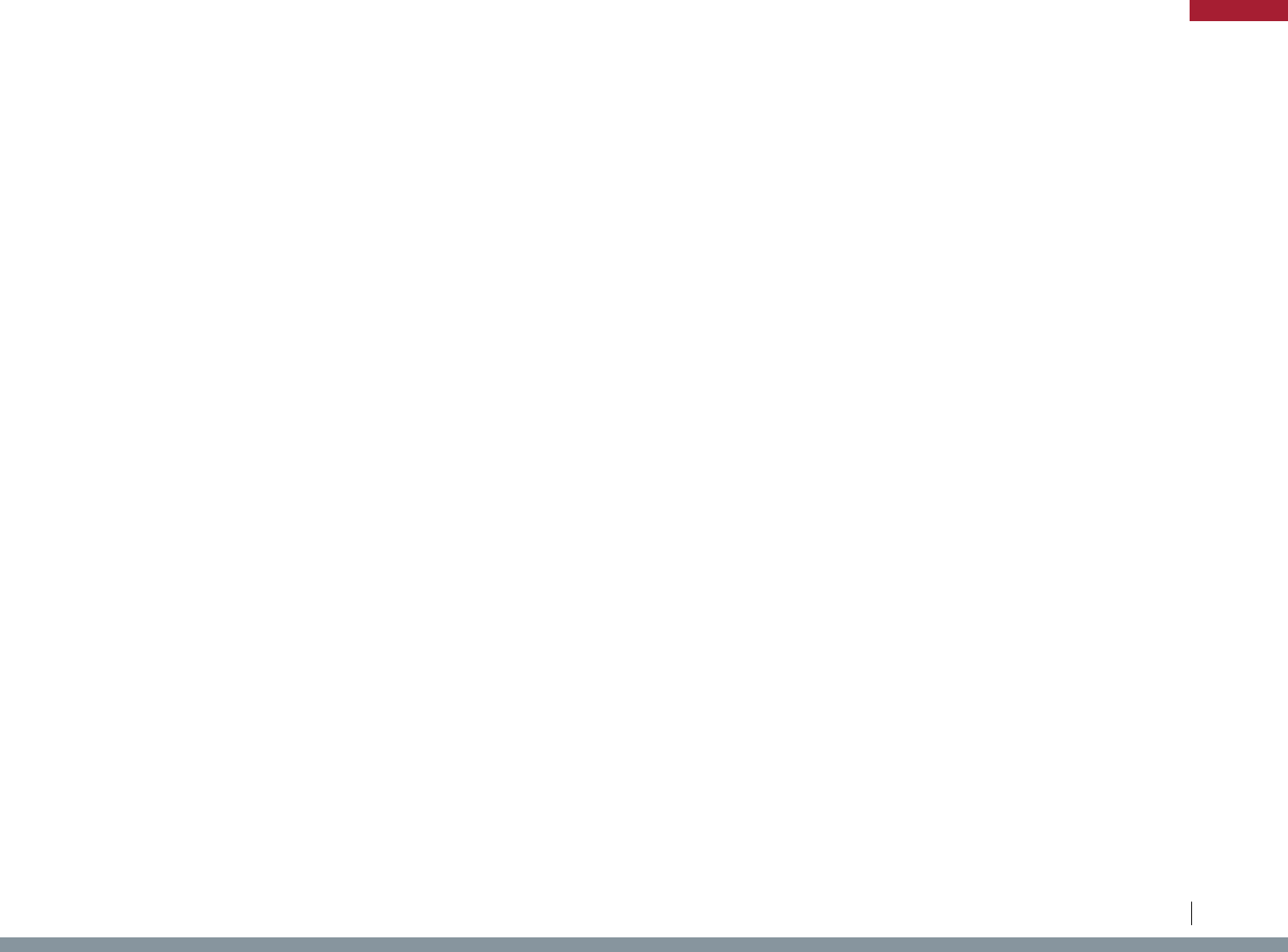
State Law/Regulation Potentially Impacted Industry Agricultural Product Regulation Type Purpose Description
TX Tex. Health & Safety Code § 481.104 Drugs Salvia Prohibition Consumer Safety Recreational drug ban - salvia
VT 13 Vt. Code R. 140 011:7 Drugs Salvia, Kratom Prohibition Consumer Safety
Recreational drug ban - salvia, kratom (mitragynine, 7-
hydroxymitragynine)
WI Wis. Stat. § 961.14 Drugs Kratom Prohibition Consumer Safety Recreational drug ban - kratom (mitragynine, 7-hydroxymitragynine)
WV W. Va. Code § 60A-4-413 Drugs Salvia Prohibition Consumer Safety Recreational drug ban - salvia
AK Alaska Admin. Code tit. 11, § 35.010 Livestock Bees Certification
Disease/Pest
Prevention
Requirement that all bees entering the state must be free from bee
disease
AK Alaska Admin. Code tit. 11, § 35.020 Livestock Bees Importation
Disease/Pest
Prevention
Importation requirements for bees - health certificate, notification, and
other requirements
AK Alaska Admin. Code tit. 18, § 36.010 Live Animals Live Animals Importation
Disease/Pest
Prevention
Importation requirements for live animals - permit required for listed
species
AK Alaska Admin. Code tit. 18, § 36.015 Live Animals Live Animals Importation
Disease/Pest
Prevention
Importation requirements for live animals - health certificate or
certificate of veterinary inspection requirements
AK Alaska Admin. Code tit. 18, § 36.105 Livestock Equines Importation
Disease/Pest
Prevention
Importation requirements for equines - health certificate or certificate of
veterinary inspection, equine infectious anemia
AK Alaska Admin. Code tit. 18, § 36.115 Livestock Cattle, Bison, Yak Importation
Disease/Pest
Prevention
Importation requirements for cattle, bison, yak - health certificate or
certificate of veterinary inspection, brucellosis, tuberculosis,
anaplasmosis, bluetongue, trichomoniasis
AK Alaska Admin. Code tit. 18, § 36.125 Livestock Goats Importation
Disease/Pest
Prevention
Importation requirements for goats - health certificate or certificate of
veterinary inspection, identification, scrapie, brucellosis, tuberculosis,
ectoparasites, Mycoplasma ovipneumoniae
AK Alaska Admin. Code tit. 18, § 36.135 Livestock Sheep Importation
Disease/Pest
Prevention
Importation requirements for sheep - health certificate or certificate of
veterinary inspection, identification, scrapie, brucellosis, ectoparasites,
Mycoplasma ovipneumoniae, bluetongue
AK Alaska Admin. Code tit. 18, § 36.145 Livestock Swine Importation
Disease/Pest
Prevention
Importation requirements for swine - health certificate or certificate of
veterinary inspection, brucellosis, pseudorabies, garbage feed ban
AK Alaska Admin. Code tit. 18, § 36.165 Livestock
Poultry, Hatching
Eggs
Importation
Disease/Pest
Prevention
Importation requirements for poultry and hatching eggs - health
certificate or certificate of veterinary inspection
AK Alaska Admin. Code tit. 18, § 36.175 Livestock Cervids Importation
Disease/Pest
Prevention
Importation requirements for cervids - health certificate or certificate of
veterinary inspection, brucellosis, tuberculosis, chronic wasting disease
AK Alaska Admin. Code tit. 18, § 36.185 Livestock Camelids Importation
Disease/Pest
Prevention
Importation requirements for camelids - health certificate or certificate
of veterinary inspection, identification, brucellosis, tuberculosis,
ectoparasites
AL Ala. Admin. Code r. 220-2-.26 Live Animals Live Animals Importation
Disease/Pest
Prevention
Restrictions on possession, sale, importation and/or release of certain
animals and fish
AL Ala. Admin. Code r. 80-10-11-.04 Livestock Bees Importation
Disease/Pest
Prevention
Importation requirements for bees
AL Ala. Admin. Code r. 80-10-11-.05 Livestock Bees Importation
Disease/Pest
Prevention
Importation requirements for bees
AL Ala. Admin. Code r. 80-10-14-.04 Plants Plants Importation
Disease/Pest
Prevention
Noxious weed restrictions
AL Ala. Admin. Code r. 80-10-15-.01 Forestry White Pines Importation
Disease/Pest
Prevention
Pine shoot beetle restrictions
AL Ala. Admin. Code r. 80-10-15-.03 Forestry White Pines Importation
Disease/Pest
Prevention
Pine shoot beetle restrictions
AL Ala. Admin. Code r. 80-10-15-.04 Forestry White Pines Importation
Disease/Pest
Prevention
Pine shoot beetle restrictions
107
Legislative Analysis of S.2019 / H.R.4417: The “Ending Agricultural Trade Suppression Act”
APPENDIX
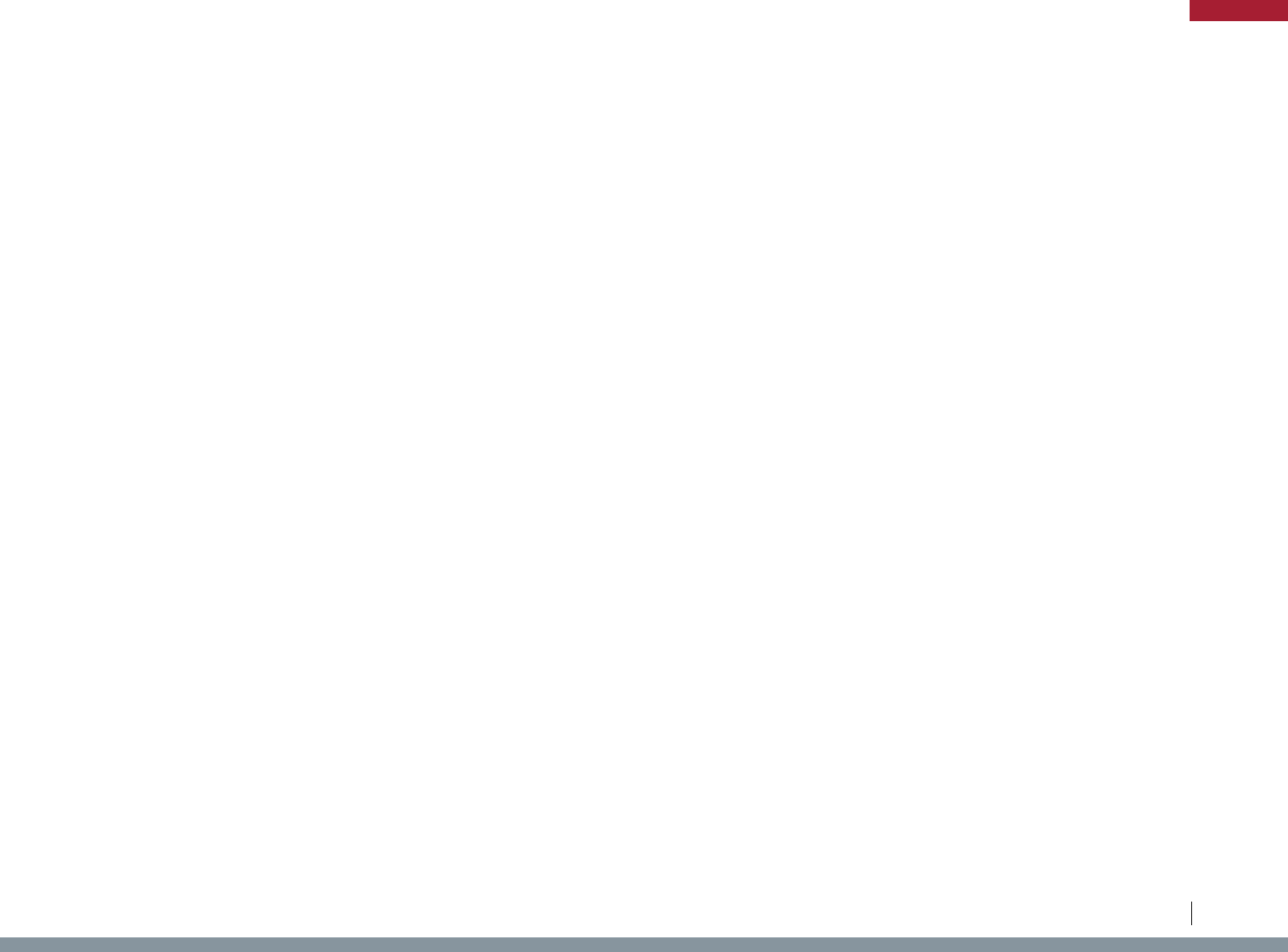
State Law/Regulation Potentially Impacted Industry Agricultural Product Regulation Type Purpose Description
AL Ala. Admin. Code r. 80-10-15-.05 Forestry White Pines Importation
Disease/Pest
Prevention
Regulated areas for pine shoot beetle restrictions
AL Ala. Admin. Code r. 80-10-15-.06 Forestry White Pines Importation
Disease/Pest
Prevention
Pine shoot beetle restrictions
AL Ala. Admin. Code r. 80-10-19-.01 Fruit Citrus Trees Importation
Disease/Pest
Prevention
Certification for importation - restriction of citrus plants with citrus
aphids, fruit fly inspection
AL Ala. Admin. Code r. 80-10-19-.05 Fruit Citrus Trees Importation
Disease/Pest
Prevention
Citrus greening disease and the asian citrus psyllid restrictions
AL Ala. Admin. Code r. 80-10-19-.07 Fruit Citrus Trees Importation
Disease/Pest
Prevention
Citrus greening disease and the asian citrus psyllid restrictions
AL Ala. Admin. Code r. 80-10-20-.05 Forestry Ash Trees Importation
Disease/Pest
Prevention
Importation restrictions related to emerald ash borer
AL Ala. Admin. Code r. 80-10-6-.01 Nursery Stock Nursery Plants Importation
Disease/Pest
Prevention
Fire ant restrictions
AL Ala. Admin. Code r. 80-10-6-.03 Nursery Stock Nursery Plants Importation
Disease/Pest
Prevention
Fire ant restrictions
AL Ala. Admin. Code r. 80-10-7-.04 Fruit Peach Trees Importation
Disease/Pest
Prevention
Phony peach disease restrictions
AL Ala. Admin. Code r. 80-10-7-.05 Fruit Peach Trees Importation
Disease/Pest
Prevention
Phony peach disease restrictions
AL Ala. Admin. Code r. 80-10-8-.03 Nursery Stock Nursery Plants Importation
Disease/Pest
Prevention
European brown garden snail restrictions
AL Ala. Admin. Code r. 80-10-8-.04 Nursery Stock Nursery Plants Importation
Disease/Pest
Prevention
European brown garden snail restrictions
AL Ala. Admin. Code r. 80-10-8-.06 Nursery Stock Nursery Plants Importation
Disease/Pest
Prevention
European brown garden snail restrictions
AL Ala. Admin. Code r. 80-11-1-.05 Plants Seeds Importation
Disease/Pest
Prevention
Noxious weed seed restrictions
AL Ala. Admin. Code r. 80-3-1-.10 Livestock Cattle Importation
Disease/Pest
Prevention
Testing of cattle that change ownership - identification, brucellosis
status
AL Ala. Admin. Code r. 80-3-1-.11 Livestock Cattle, Swine Importation
Disease/Pest
Prevention
Importation requirements for cattle and swine - certificate of health,
permit, brucellosis
AL Ala. Admin. Code r. 80-3-18.02 Livestock
Poultry, Hatching
Eggs
Importation
Disease/Pest
Prevention
Importation requirements for poultry and hatching eggs - prohibition on
entry, avian influenza
AL Ala. Admin. Code r. 80-3-18.04 Livestock Poultry Importation
Disease/Pest
Prevention
Importation requirements for poultry - entry permit
AL Ala. Admin. Code r. 80-3-18.05 Livestock Poultry Importation
Disease/Pest
Prevention
Importation requirements for poultry - health certificate
AL Ala. Admin. Code r. 80-3-18.06 Livestock Poultry Importation
Disease/Pest
Prevention
Importation requirements for poultry - transport equipment cleaning
and disinfecting, certification
AL Ala. Admin. Code r. 80-3-18.07 Livestock
Poultry, Hatching
Eggs
Importation
Disease/Pest
Prevention
Importation requirements for eggs, hatching and commercial -
certificate, free from avian influenza or not from quarantine area
AL Ala. Admin. Code r. 80-3-18.11 Livestock Poultry Importation
Disease/Pest
Prevention
Prohibition on importation or transportation of products containing
rendered poultry products from poultry from a quarantined due to Avian
Influenza, permission required
AL Ala. Admin. Code r. 80-3-2-.02 Livestock Swine Importation
Disease/Pest
Prevention
Importation requirements for swine - certificate of veterinary inspection,
pseudorabies
108
Legislative Analysis of S.2019 / H.R.4417: The “Ending Agricultural Trade Suppression Act”
APPENDIX
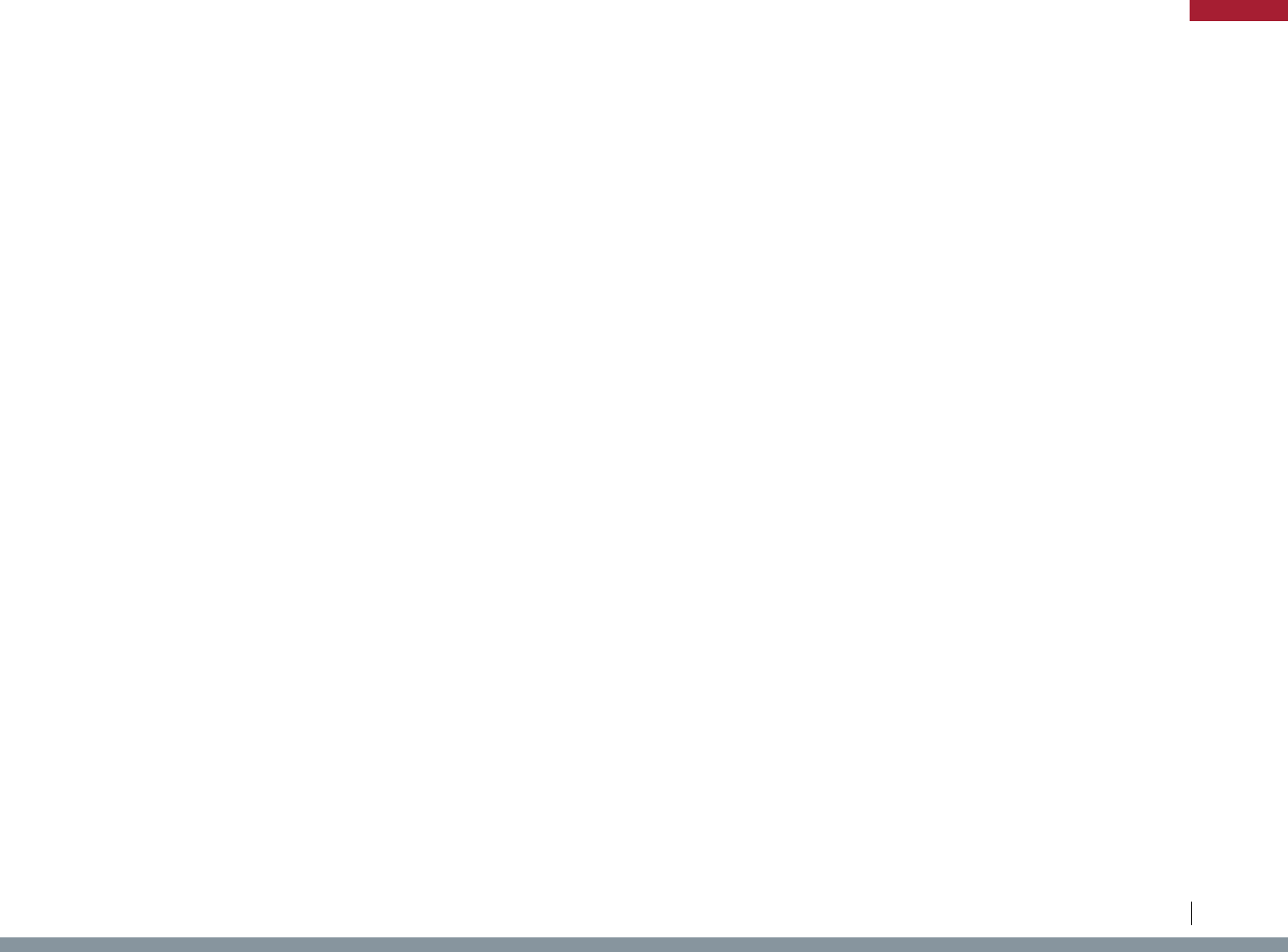
State Law/Regulation Potentially Impacted Industry Agricultural Product Regulation Type Purpose Description
AL Ala. Admin. Code r. 80-3-4-.03 Livestock Horses Importation
Disease/Pest
Prevention
Importation requirements for equines - certificate of veterinary
inspection, testing, Equine Infectious Anemia
AL Ala. Admin. Code r. 80-3-6-.13 Livestock Livestock Importation
Disease/Pest
Prevention
Import requirements for livestock and poultry - certificate of veterinary
inspection, permit, prohibition on diseased or exposed animals
AL Ala. Admin. Code r. 80-3-6-.16 Livestock Cattle Importation
Disease/Pest
Prevention
Prohibition on importation of cattle infested with ticks or from tick-
quarantined areas
AL Ala. Admin. Code r. 80-3-6-.18 Livestock Cattle, Sheep, Goats Importation
Disease/Pest
Prevention
Import restrictions on cattle, sheep, and goats - scabies and other
disease prohibitions
AL Ala. Admin. Code r. 80-3-6-.21 Livestock Poultry Importation
Disease/Pest
Prevention
Importation requirements for poultry for breeding purposes - pollorum
disease
AL Ala. Admin. Code r. 80-3-6-.23 Game Animals Game Animals Inspection
Disease/Pest
Prevention
Importation requirements for wild and semi-wild animals including
cervids and other game animals - brucellosis, tuberculosis, chronic
wasting disease
AL Ala. Admin. Code r. 80-3-6-.35 Livestock Ratites Importation
Disease/Pest
Prevention
Importation requirements for ratites - certificate of veterinary inspection,
identification, free from disease, avian influenza test
AL Ala. Admin. Code r. 80-3-6-.36 Livestock Livestock Importation
Disease/Pest
Prevention
Prohibition on importation of certain livestock with vesicular stomatitis,
conditions for entry
AL Ala. Admin. Code r. 80-3-6-.37 Livestock Goats Importation
Disease/Pest
Prevention
Importation requirements for goats for dairy purposes - Official
Certificate of Veterinary Inspection, brucellosis, tuberculosis, scabies,
foot rot, contagious ecthyma
AL Ala. Admin. Code r. 80-3-6-.38 Livestock Livestock Importation
Disease/Pest
Prevention
Importation requirements for cattle from Wyoming - entry permit,
brucellosis test
AL Ala. Admin. Code r. 80-3-7-.04 Livestock Cattle Importation
Disease/Pest
Prevention
Importation requirements for cattle - prohition on entry from
tuberculosis quaratine areas
AL Ala. Admin. Code r. 80-3-7-.07 Livestock
Cattle, Bison, Goats,
Cervids
Importation
Disease/Pest
Prevention
Importation requirements for cattle, bison, goats, and cervids from
Michigan - entry permit, tuberculosis test
AL Ala. Code § 2-14-4 Livestock Bees Importation
Disease/Pest
Prevention
Importation requirements for bees
AL Ala. Code § 2-15-155 Livestock Livestock Importation
Disease/Pest
Prevention
Importation requirements for cattle - certificate of health, veterinary
examination, free from disease
AL Ala. Code § 2-19-129 Cotton Cotton Importation
Disease/Pest
Prevention
Boll weevil and pink bollworm restrictions
AL Ala. Code § 2-25-13 Plants Plant Products Importation
Disease/Pest
Prevention
Authority to quarantine plants, plant products, and soils
AR Ark. Code § 2-40-801 Livestock Horses Importation
Disease/Pest
Prevention
Importation requirements for horses - Equine Infectious Anemia
AR Ark. Code R. § 002.01.1-09.11 Live Animals
Wildlife, Exotic
Animals
Importation
Disease/Pest
Prevention
Importation Of Certain Living Wildlife Prohibited and exceptions
AR Ark. Code R. § 002.01.1-34.11 Live Animals Turtles Importation
Disease/Pest
Prevention
Importation Of Alligator Snapping Turtles, Razorback Musk Turtles, And
Chicken Turtles Prohibited
AR Ark. Code R. § 002.01.1-35.11 Fish Fish Importation
Disease/Pest
Prevention
Importation requirements for fish - Viral Hemorrhagic Septicemia
AR Ark. Code R. § 125.00.12 Livestock
Livestock, Exotic
Animals
Importation
Disease/Pest
Prevention
Arkansas health requirements governing the entry of livestock, poultry,
and exotic animals
AR Ark. Code R. § 125.00.14 Livestock
Livestock, Exotic
Animals
Importation
Disease/Pest
Prevention
Exhibition Health Requirements for Livestock, Poultry, and Exotic
Animals
AR Ark. Code R. § 125.00.15 Livestock Poultry Importation
Disease/Pest
Prevention
Requirements to prevent the introduction of Avian influenza
109
Legislative Analysis of S.2019 / H.R.4417: The “Ending Agricultural Trade Suppression Act”
APPENDIX
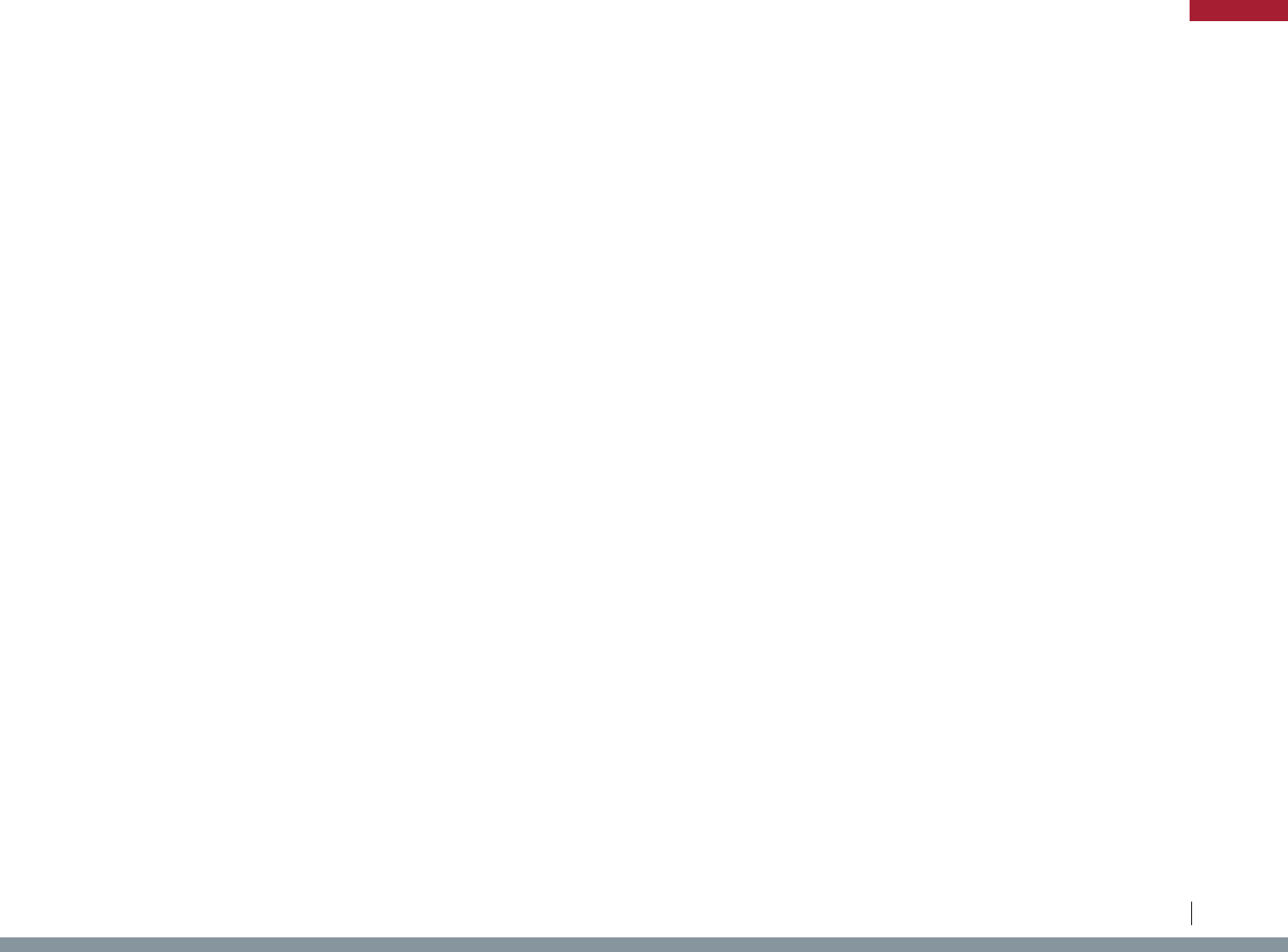
State Law/Regulation Potentially Impacted Industry Agricultural Product Regulation Type Purpose Description
AR Ark. Code R. § 125.00.17 Livestock Cattle Importation
Disease/Pest
Prevention
Regulation prescribing procedures for the identification and movement
of unvaccinated female cattle
AR Ark. Code R. § 209.01.4-2 Livestock Swine Importation
Disease/Pest
Prevention
Importation requirements for swine
AR Ark. Code R. § 209.01.5-I Livestock Horses Importation
Disease/Pest
Prevention
Importation requirements for horses Equine Infectious Anemia
AR Ark. Code R. § 209.02 Plants Plants Importation
Disease/Pest
Prevention
Rules on plant diseases and pests
AR Ark. Code R. § 209.02.1-I Plants Plants Importation
Disease/Pest
Prevention
Plant diseases, insect pests and noxious weeds declared to be a
public nuisance - Purple Loosestrife, Giant salvinia, Water Hyacinth,
Japanese Blood Grass
AR Ark. Code R. § 209.02.1-VI Crops Sweet Potatoes Importation
Disease/Pest
Prevention
Sweet Potato Weevil restrictions
AR Ark. Code R. § 209.02.1-VIII Plants Plants, Plant
Products
Importation
Disease/Pest
Prevention
Quarantine of any product or substance which may hereafter be found
capable of spreading the imported fire ant
AR Ark. Code R. § 209.02.10-IX Cotton Cotton Importation
Disease/Pest
Prevention
Pink Bollworm violations
AR Ark. Code R. § 209.02.9-3 Livestock Bees Importation
Disease/Pest
Prevention
Importation Requirements for Bees
AZ Ariz. Admin. Code § 12-4-430 Live Animals Cervids Importation
Disease/Pest
Prevention
Importation requirements for cervids - Chronic Wasting Disease and
other diseases Embargo
AZ Ariz. Admin. Code § 3-2-404 Livestock Swine Importation
Disease/Pest
Prevention
Importation, Manufacture, Sale, and Distribution of Biologicals and
Semen
AZ Ariz. Admin. Code § 3-2-605 Livestock Live Animals Importation
Disease/Pest
Prevention
Hold order for animals entering illegally
AZ Ariz. Admin. Code § 3-2-606 Livestock Live Animals Importation
Disease/Pest
Prevention
Certificate of Veterinary Inspection requirements for importation
AZ Ariz. Admin. Code § 3-2-607 Livestock Live Animals Importation
Disease/Pest
Prevention
Entry Permits for importation
AZ Ariz. Admin. Code § 3-2-612 Livestock Cattle, Bison Importation
Disease/Pest
Prevention
Importation requirements for cattle and bison - Entry Permits,
brucellosis, marking, and other requirements
AZ Ariz. Admin. Code § 3-2-613 Livestock Swine Importation
Disease/Pest
Prevention
Importation requirements for swine - Pseudorabies and brucellosis
AZ Ariz. Admin. Code § 3-2-614 Livestock Sheep, Goats Importation
Disease/Pest
Prevention
Importation requirements for sheep and goats - Bluetongue, scrapie,
and brucella
AZ Ariz. Admin. Code § 3-2-615 Livestock Horses Importation
Disease/Pest
Prevention
Importation requirements for horses - Equine Infectious Anemia
AZ Ariz. Admin. Code § 3-2-617 Livestock Poultry Importation
Disease/Pest
Prevention
Certificate of Veterinary Inspection Requirement
AZ Ariz. Admin. Code § 3-2-618 Live Animals Psittacine Birds Importation
Disease/Pest
Prevention
Importation requirements for Psittacine birds - certificate of veterinary
inspection, avian chlamydiosis
AZ Ariz. Admin. Code § 3-4-231 Nuts
Pecans, Other Nut
Trees
Importation
Disease/Pest
Prevention
Nut Pests - Importation restrictions - Pecan Weevil, etc.
AZ Ariz. Admin. Code § 3-4-233 Crops Lettuce Importation
Disease/Pest
Prevention
Lettuce Mosaic Virus Restrictions
AZ Ariz. Admin. Code § 3-4-238 Crops Produce Importation
Disease/Pest
Prevention
Whitefly Pests
110
Legislative Analysis of S.2019 / H.R.4417: The “Ending Agricultural Trade Suppression Act”
APPENDIX
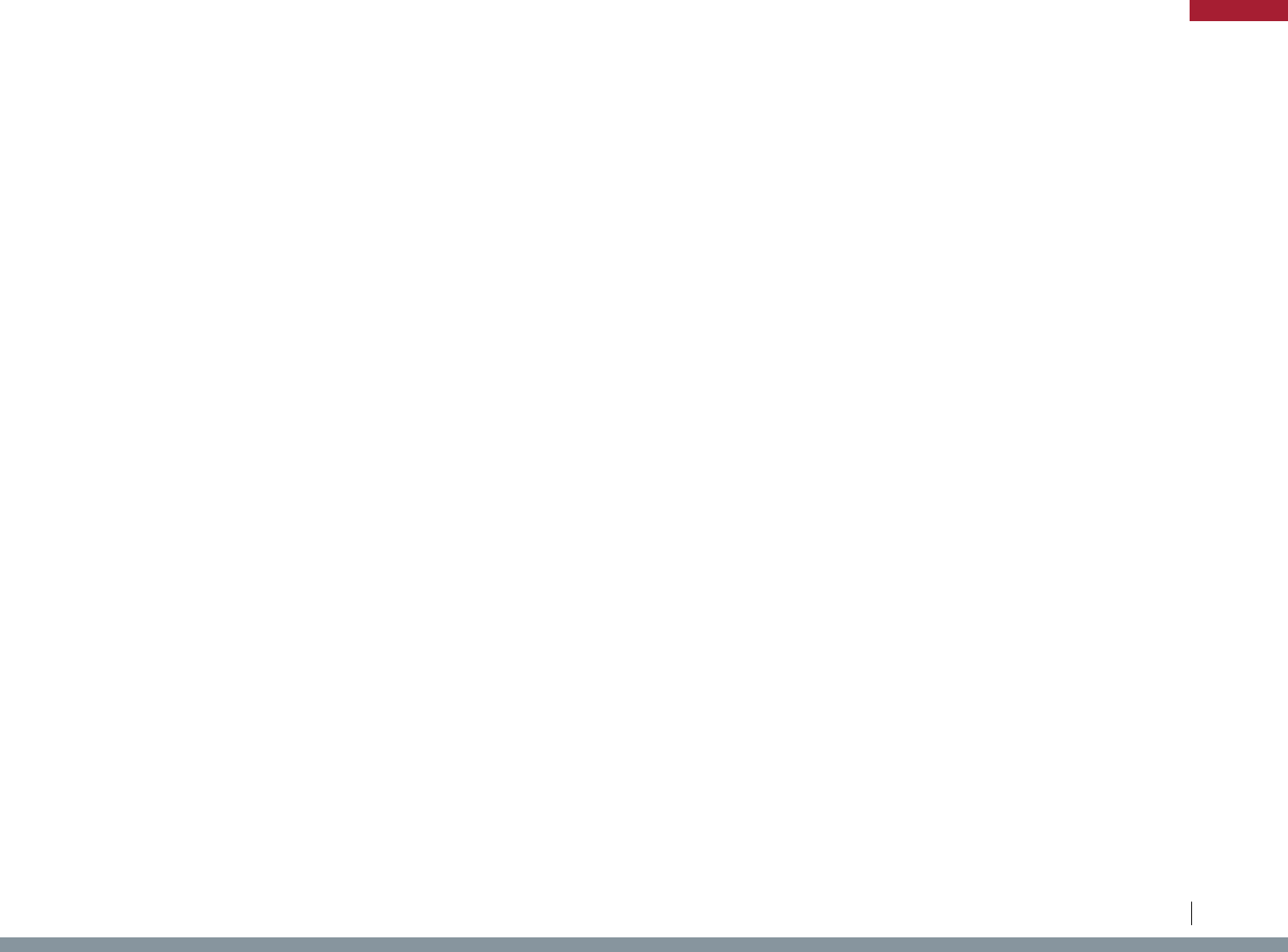
State Law/Regulation Potentially Impacted Industry Agricultural Product Regulation Type Purpose Description
AZ Ariz. Admin. Code § 3-4-242 Fruit Citrus Trees Importation
Disease/Pest
Prevention
Brown Citrus Aphid restrictions
AZ Ariz. Admin. Code § 3-4-403 Plants Plants Importation
Disease/Pest
Prevention
Noxious weed restrictions
AZ Ariz. Rev. Stat. § 3-209 Plants Plant Products Importation
Disease/Pest
Prevention
Authority to quarantine plants, plant products, and soils
AZ Ariz. Rev. Stat. § 3-210 Plants Plant Products Importation
Disease/Pest
Prevention
Authority to treat or destroy infected plants or products imported
AZ Ariz. Rev. Stat. § 3-211 Nursery Stock Nursery Plants Labeling
Disease/Pest
Prevention
Labeling of Imported or Shipped Plants and Seeds
CA Cal. Code Regs. tit. 14, § 166 Fish Salmon Importation
Disease/Pest
Prevention
Salmon importation regulations
CA Cal. Code Regs. tit. 14, § 236 Aquaculture Fish Reporting
Disease/Pest
Prevention
Aquaculture Import and Disease Reporting of Viral Hemorrhagic
Septicemia
CA Cal. Code Regs. tit. 14, § 245 Fish Fish Importation
Disease/Pest
Prevention
Fish importation requirements
CA Cal. Code Regs. tit. 14, § 40 Live Animals Snakes Importation
Disease/Pest
Prevention
Snake importation requirements
CA Cal. Code Regs. tit. 14, § 671 Live Animals Live Animals Importation
Disease/Pest
Prevention
Importation, transportation and possession of certain live restricted
animals
CA Cal. Code Regs. tit. 14, § 712 Live Animals Cervids Importation
Disease/Pest
Prevention
Chronic Wasting Disease Restrictions
CA Cal. Code Regs. tit. 17, § 2612.1 Live Animals Turtles Importation
Disease/Pest
Prevention
Importation requirements for turtles - Turtle Salmonellosis
CA Cal. Code Regs. tit. 3, § 3251 Forestry Oak Trees Importation
Disease/Pest
Prevention
Oak Wilt Restrictions
CA Cal. Code Regs. tit. 3, § 3252 Crops Produce Importation
Disease/Pest
Prevention
Fruit Fly Inspection, Certification for Importation
CA Cal. Code Regs. tit. 3, § 3256 Crops Produce Importation
Disease/Pest
Prevention
Fruit Fly Inspection, Certification for Importation
CA Cal. Code Regs. tit. 3, § 3257 Crops Sweet Potatoes Importation
Disease/Pest
Prevention
Sweet Potato Weevil restrictions
CA Cal. Code Regs. tit. 3, § 3260 Plants Plants Importation
Disease/Pest
Prevention
Restrictions on plants and agricultural products to reduce invasive
pests - nut trees
CA Cal. Code Regs. tit. 3, § 3261 Plants Plants Importation
Disease/Pest
Prevention
Ozonium Rot Root Exterior Restrictions
CA Cal. Code Regs. tit. 3, § 3263 Crops
Corn, Sorghum,
Grains
Importation
Disease/Pest
Prevention
Corn Borer Restrictions
CA Cal. Code Regs. tit. 3, § 3264 Crops
Tomatoes, Potatoes,
Eggplants, Peppers
Importation
Disease/Pest
Prevention
Colorado Potato Beetle exterior quarantine - prohibited with exceptions
CA Cal. Code Regs. tit. 3, § 3266 Plants Plants Importation
Disease/Pest
Prevention
Plum Curculio and Blueberry Maggot Exterior Restrictions
CA Cal. Code Regs. tit. 3, § 3271 Crops Potatoes, Tomatoes Importation
Disease/Pest
Prevention
Nematodes Restrictions
CA Cal. Code Regs. tit. 3, § 3272 Plants Plants Importation
Disease/Pest
Prevention
Cornstalk Borers and Sugarcane Borer Exterior Restrictions
111
Legislative Analysis of S.2019 / H.R.4417: The “Ending Agricultural Trade Suppression Act”
APPENDIX
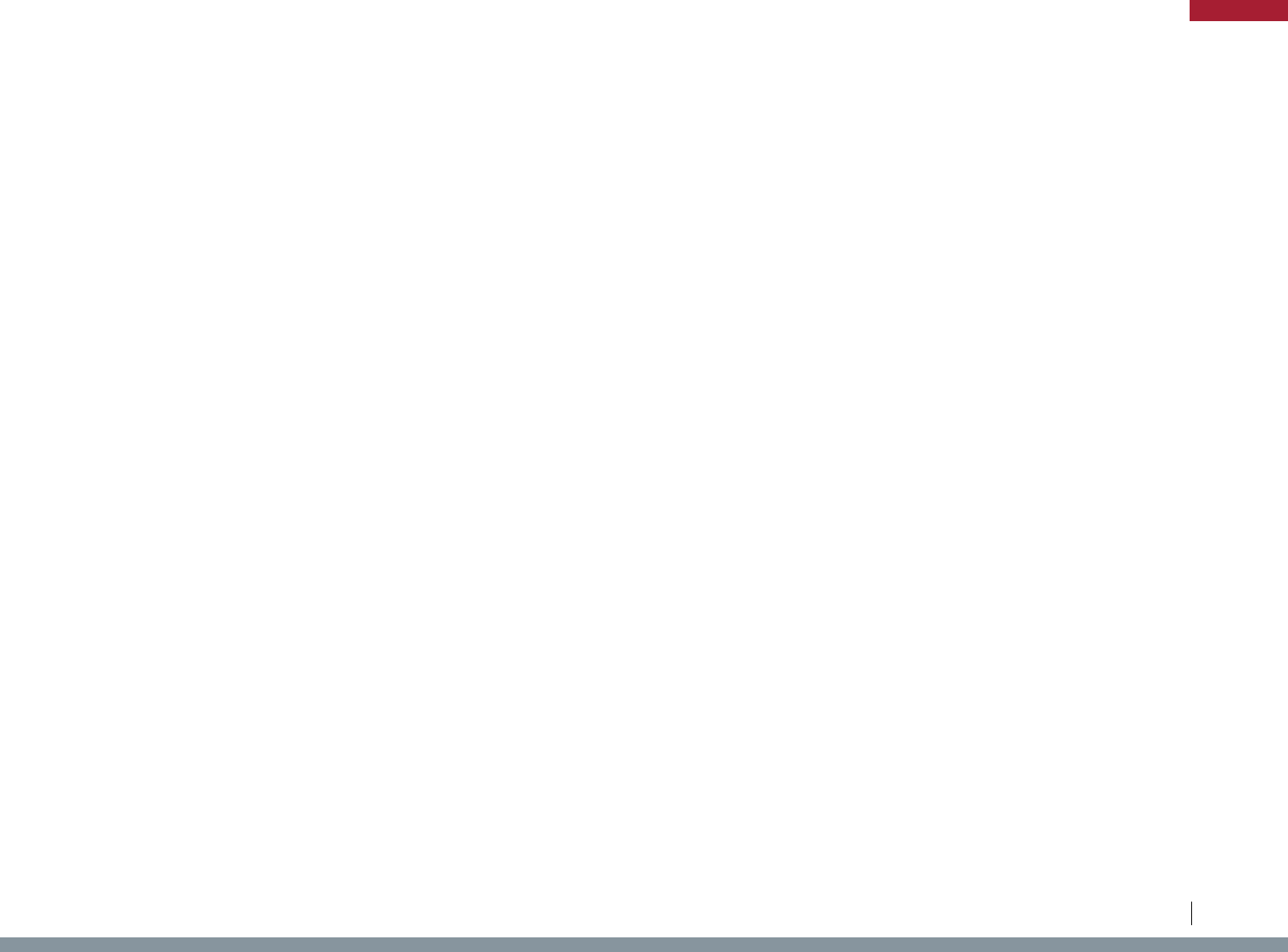
State Law/Regulation Potentially Impacted Industry Agricultural Product Regulation Type Purpose Description
CA Cal. Code Regs. tit. 3, § 3273 Plants Plants Importation
Disease/Pest
Prevention
Walnut and Pecan Pests Exterior Quarantine Restrictions
CA Cal. Code Regs. tit. 3, § 3274 Plants Plants Importation
Disease/Pest
Prevention
Cedar-Apple Rust Disease Exterior Quarantine Restriction
CA Cal. Code Regs. tit. 3, § 3280 Plants Plants Importation
Disease/Pest
Prevention
Japanese Beetle Exterior Quarantine Restriction
CA Cal. Code Regs. tit. 3, § 3282 Fruit Palms Importation
Disease/Pest
Prevention
Date Palm and Coconut Palm Lethal Yellowing restrictions
CA Cal. Code Regs. tit. 3, § 3591.6 Forestry Trees Importation
Disease/Pest
Prevention
Gypsy Moth Restrictions
CA Cal. Code Regs. tit. 3, § 3654 Fruit Grapes Importation
Disease/Pest
Prevention
Inspection of Shipments and Disposition of Infested Shipments for
eliminating vectors
CA Cal. Code Regs. tit. 3, § 3655 Fruit Grapes Importation
Disease/Pest
Prevention
Movement of grapes during shipment
CA Cal. Code Regs. tit. 3, § 3659 Plants Plants Importation
Disease/Pest
Prevention
Movement of grapes during shipment
CA Cal. Code Regs. tit. 3, § 3662 Food Citrus Importation
Disease/Pest
Prevention
Citrus Standards for Movement
CA Cal. Code Regs. tit. 3, § 751.1 Livestock Livestock Importation
Disease/Pest
Prevention
Livestock importation restrictions
CA Cal. Code Regs. tit. 3, § 758 Livestock Cattle Importation
Disease/Pest
Prevention
Cattle importation restrictions - Bovine Tuberculosis
CA Cal. Code Regs. tit. 3, § 760.5 Livestock Sheep, Goats Importation
Disease/Pest
Prevention
Sheep and goat importation restrictions - Scrapie
CA Cal. Code Regs. tit. 3, § 760.7 Livestock Livestock Importation
Disease/Pest
Prevention
Livestock importation restrictions - Scabies
CA Cal. Code Regs. tit. 3, § 796.4 Livestock Swine Importation
Disease/Pest
Prevention
Importation requirements for swine not for slaughter - Pseudorabies
CA Cal. Code Regs. tit. 3, § 796.6 Livestock Swine Importation
Disease/Pest
Prevention
Importation requirements for swine for slaughter
CA Cal. Code Regs. tit. 3, § 821.4 Livestock Poultry Importation
Disease/Pest
Prevention
Importation requirements for poultry - Avian Influenza and Newcastle
Disease
CA Cal. Code Regs. tit. 3, § 830.2 Live Animals Live Animals Importation
Disease/Pest
Prevention
General importation requirements for livestock
CA Cal. Code Regs. tit. 3, § 830.3 Live Animals Live Animals Importation
Disease/Pest
Prevention
Veterinary Inspection Requirements for Livestock
CA Cal. Food & Agric. Code § 29042 Livestock Bees Importation
Disease/Pest
Prevention
Importation Requirements for Bees
CA Cal. Food & Agric. Code § 29110 Livestock Bees Importation
Disease/Pest
Prevention
Bee Quarantine Authority
CA Cal. Food & Agric. Code § 29111 Livestock Bees Importation
Disease/Pest
Prevention
Bee Quarantine Authority
CA Cal. Food & Agric. Code § 29120 Livestock Bees Importation
Disease/Pest
Prevention
Importation Requirements for Bees
CA Cal. Food & Agric. Code § 29122 Livestock Bees Importation
Disease/Pest
Prevention
Importation Requirements for Bees
112
Legislative Analysis of S.2019 / H.R.4417: The “Ending Agricultural Trade Suppression Act”
APPENDIX
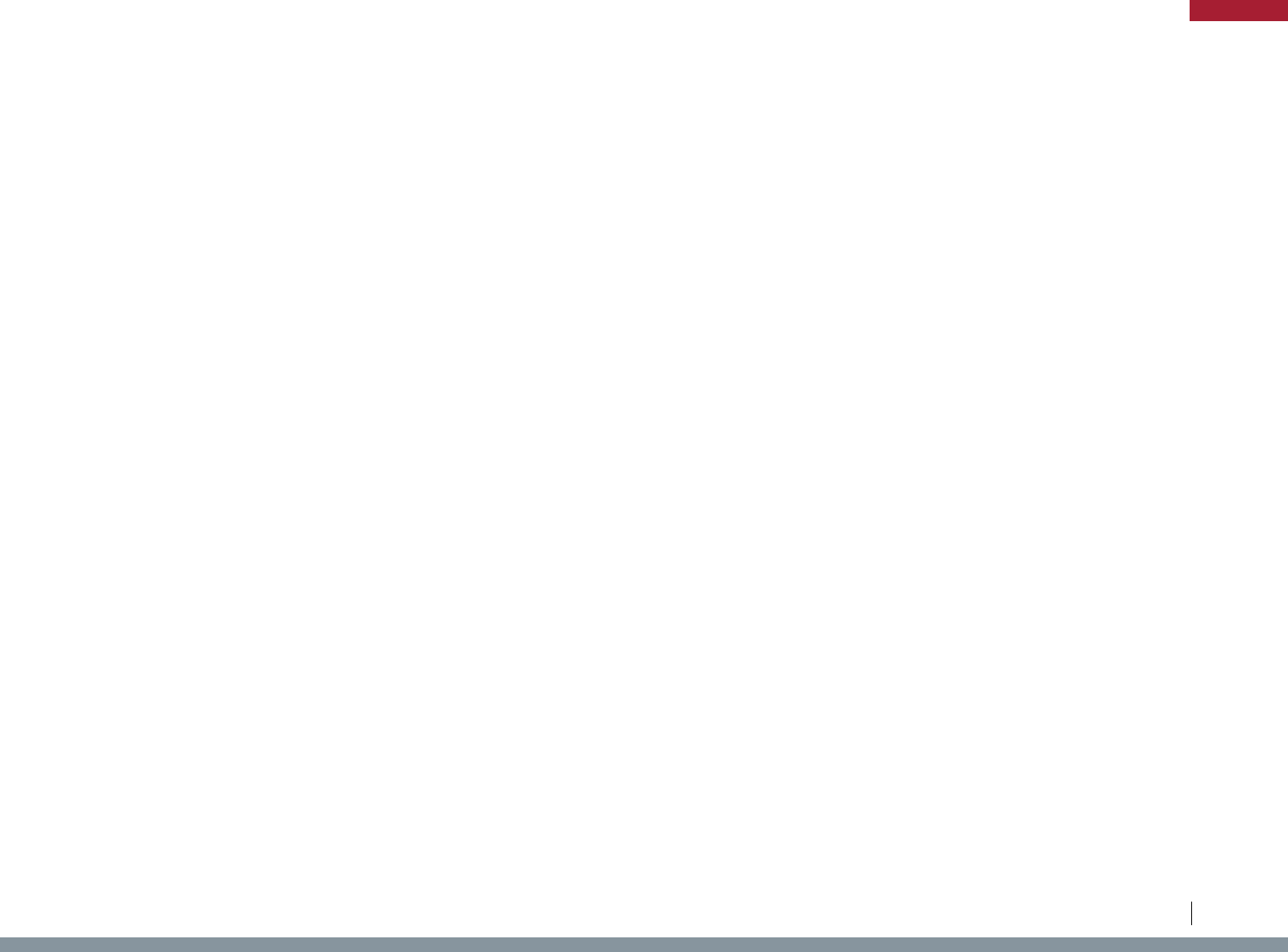
State Law/Regulation Potentially Impacted Industry Agricultural Product Regulation Type Purpose Description
CA Cal. Food & Agric. Code § 29127 Livestock Bees Importation
Disease/Pest
Prevention
Destruction or Treatment of Colonies with American Foulbrood
CA Cal. Food & Agric. Code § 29172 Livestock Bees Certification
Disease/Pest
Prevention
Prohibition on sale of diseased bees, comb, hive, appliance, and
colony
CA Cal. Food & Agric. Code § 52257 Plants Seeds Importation
Disease/Pest
Prevention
Noxious weed seed restrictions
CA Cal. Food & Agric. Code § 6045 Fruit Grapes Importation
Disease/Pest
Prevention
Pierce’s Disease and the Glassy-winged Sharpshooter Restrictions
CA Cal. Food & Agric. Code § 6047.1 Fruit Grapes Importation
Disease/Pest
Prevention
Pierce’s Disease and the Glassy-winged Sharpshooter Restrictions
CA Cal. Food & Agric. Code § 6047.60 Fruit Grapes Importation
Disease/Pest
Prevention
Pierce’s Disease and the Glassy-winged Sharpshooter Restrictions
CA Cal. Food & Agric. Code § 6152 Fruit Figs Quality Standards
Disease/Pest
Prevention
Fig Standards for Sale
CA Cal. Food & Agric. Code § 6156 Fruit Figs Quality Standards
Disease/Pest
Prevention
Fig Standards for sale (Profichi Crop Fig)
CA Cal. Food & Agric. Code § 6157 Fruit Figs Quality Standards
Disease/Pest
Prevention
Fig Standards for sale (Mamme Crop)
CA Cal. Food & Agric. Code § 6401 Plants Plants Importation
Disease/Pest
Prevention
General Plant Import Standards - Quarantine plants to be held for
inspection
CA Cal. Food & Agric. Code § 6441 Plants Plants Importation
Disease/Pest
Prevention
General Plant Import standards (Disinfection of conveyance)
CA Cal. Food & Agric. Code § 6461 Plants Plants Importation
Disease/Pest
Prevention
General Plant Import standards (Pest-infested shipments)
CA Cal. Food & Agric. Code § 6461.5 Fruit Grapes Importation
Disease/Pest
Prevention
Pierce’s Disease and the Glassy-winged Sharpshooter Restrictions
CA Cal. Food & Agric. Code § 6464 Plants Plants Importation
Disease/Pest
Prevention
General Plant Import standards (Treatment for destroying pests)
CA Cal. Food & Agric. Code § 7501 Plants Plants Importation
Disease/Pest
Prevention
Noxious weed restrictions - pest seed
CA Cal. Food & Agric. Code § 9641.5 Livestock Horses Importation
Disease/Pest
Prevention
Horse and other Equidae importation restrictions - Equine Infectious
Anemia
CO 2 Code Colo. Regs. § 406-0:007 Livestock Cervids Importation
Disease/Pest
Prevention
Importation permit requirements for wildlife including captive cervids -
Brucellosis, tuberculosis
CO 2 Code Colo. Regs. § 406-0:014 Fish Fish Importation
Disease/Pest
Prevention
Importation requirements for fish - health inspections and certifications
CO 8 Code Colo. Regs. § 1201-16:2 Livestock Sheep, Goats Importation
Disease/Pest
Prevention
Importation requirements for sheep and goats - certificate of veterinary
inspection and permit
CO 8 Code Colo. Regs. § 1201-17:3 Livestock Livestock Importation
Disease/Pest
Prevention
Requirements for interstate movement of alternative livestock,
including live animals, gametes, eggs, sperm, or other genetic material
- certificate of veterinary inspection and permit
CO 8 Code Colo. Regs. § 1201-19:2 Livestock Livestock Importation
Disease/Pest
Prevention
Livestock import requirements - veterinarian statement concerning
certain designated or reportable diseases
CO 8 Code Colo. Regs. § 1201-19:9 Livestock Swine Importation
Disease/Pest
Prevention
Import permit number and certificate of veterinary inspection required
for swine
CO 8 Code Colo. Regs. § 1201-20:7 Livestock Poultry Importation
Disease/Pest
Prevention
Standards for live bird markets
113
Legislative Analysis of S.2019 / H.R.4417: The “Ending Agricultural Trade Suppression Act”
APPENDIX
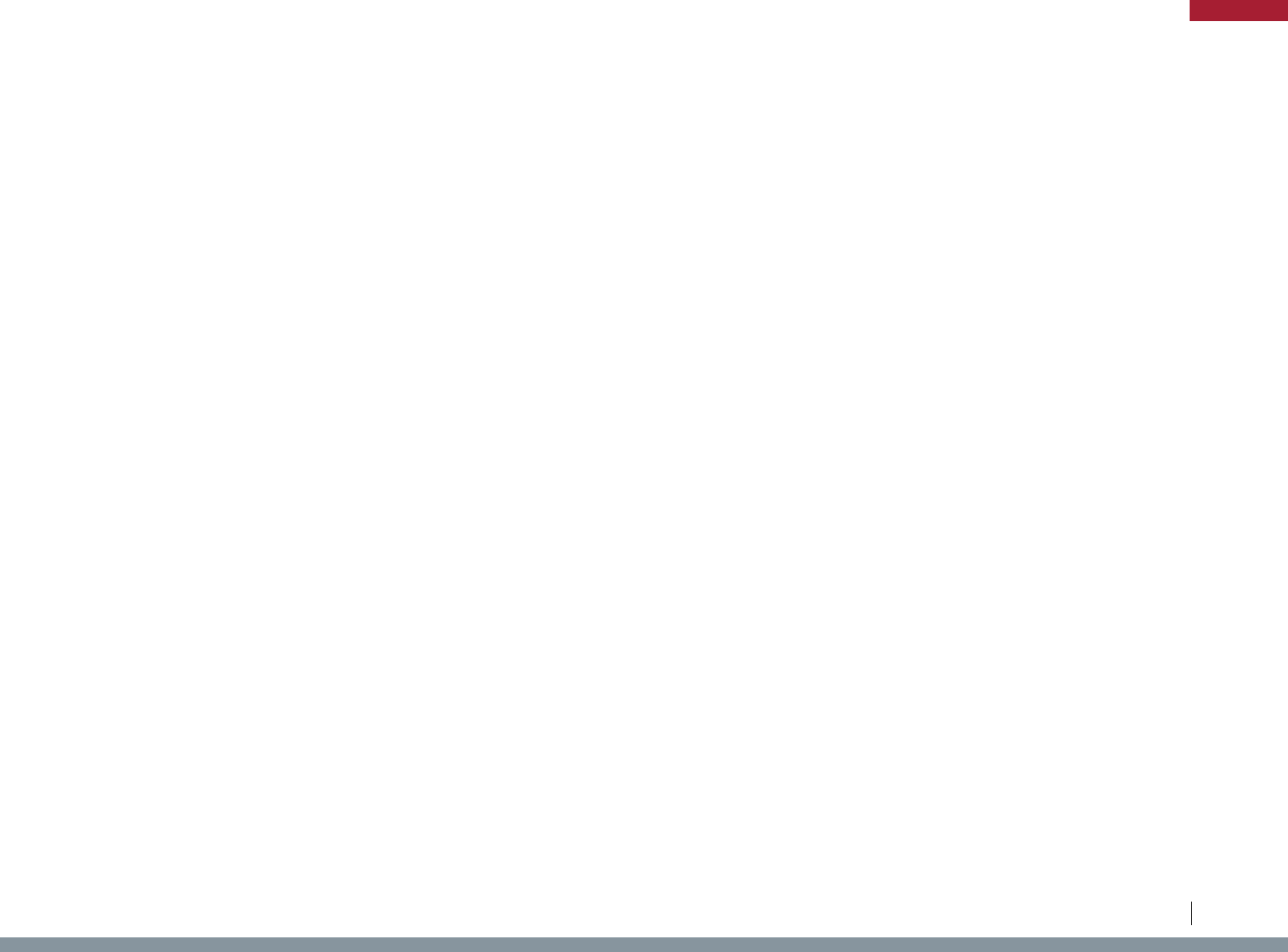
State Law/Regulation Potentially Impacted Industry Agricultural Product Regulation Type Purpose Description
CO 8 Code Colo. Regs. § 1203-6:7 Plants Seeds Prohibition
Disease/Pest
Prevention
Prohibition on weeds in seeds - restriction on number of weeds in a lot
of seeds
CT Conn. Agencies Regs. § 22-278-1 Livestock Cattle Importation
Disease/Pest
Prevention
Bovine Tuberculosis, Chronic Wasting Disease
CT Conn. Agencies Regs. § 22-278-6 Live Animals Cervids Importation
Disease/Pest
Prevention
Prohibition on importation of captive cervids
CT Conn. Agencies Regs. § 22-278-A2 Livestock Sheep, Goats Importation
Disease/Pest
Prevention
Permitting, Scrapie and Other Diseases
CT Conn. Agencies Regs. § 22-308-1 Livestock Cattle Importation
Disease/Pest
Prevention
Bovine Tuberculosis
CT Conn. Agencies Regs. § 22-308-2 Livestock Cattle Importation
Disease/Pest
Prevention
Importation requirements for cattle - tuberculosis
CT Conn. Agencies Regs. § 22-308-3 Livestock Cattle Importation
Disease/Pest
Prevention
Importation requirements for cattle - tuberculosis
CT Conn. Agencies Regs. § 22-59-1a Plants Plants Importation
Disease/Pest
Prevention
Grower's declaration
CT Conn. Agencies Regs. § 22-59-8 Plants Seeds Prohibition
Disease/Pest
Prevention
Prohibition of seeds containing primary noxious weeds from sale
CT Conn. Agencies Regs. § 22-59-8a Plants Plants Importation
Disease/Pest
Prevention
Noxious weed restrictions
CT Conn. Agencies Regs. § 22-59-8b Plants Plants Importation
Disease/Pest
Prevention
Noxious weed restrictions
CT Conn. Agencies Regs. § 22-84-5b Forestry Nursery Stock Importation
Disease/Pest
Prevention
Importation restrictions for nursery stock - Japanese Cedar Longhorn
Beetle, infested trees or other regulated items shipped into Connecticut
may be returned to the point of origin or destroyed
CT Conn. Agencies Regs. § 22-84-5e Forestry Nursery Stock Importation
Disease/Pest
Prevention
Importation restrictions for nursery stock - Emerald Ash Borer and
Asian longhorned beetle
CT Conn. Agencies Regs. § 26-55-1 Fish Fish Importation
Disease/Pest
Prevention
Importation Restrictions: live fish and fish eggs
CT Conn. Agencies Regs. § 26-55-6 Live Animals Live Animals Importation
Disease/Pest
Prevention
Importation Restrictions: wild birds, mammals, reptiles, amphibians,
and invertibrates
CT Conn. Agencies Regs. § 26-55-7 Live Animals Butterflies Prohibition
Disease/Pest
Prevention
Import Restrictions: Butterflies
CT Conn. Gen. Stat. § 22-278 Livestock Livestock Importation
Disease/Pest
Prevention
Authority to regulate livestock
CT Conn. Gen. Stat. § 22-279 Livestock Livestock Importation
Disease/Pest
Prevention
Quarantine of animals
CT Conn. Gen. Stat. § 22-319a Livestock Swine Importation
Disease/Pest
Prevention
Hog cholera serum and vaccine - no hogs shall be imported into this
state if hog cholera serum or vaccine has been administered to them.
CT Conn. Gen. Stat. § 22-319b Livestock Swine Importation
Disease/Pest
Prevention
Importation requirements for swine - permit, certificate of veterinary
inspection, pseudorabies, brucellosis
CT Conn. Gen. Stat. § 22-415c Livestock Horses Importation
Disease/Pest
Prevention
Importation requirements for horses - official interstate health
certificate, official equine infectious anemia test certificate
CT Conn. Gen. Stat. § 22-90 Livestock Bees Importation
Disease/Pest
Prevention
Importation Requirements for Bees - certificate of health required
DE 16-4202 Del. Admin. Code § 10.0 Live Animals Live Animals Importation
Disease/Pest
Prevention
Prohibition on importing or offering for sale domestic or wild animals
infected or suspected to be infected with a disease communicable from
animals to humans
114
Legislative Analysis of S.2019 / H.R.4417: The “Ending Agricultural Trade Suppression Act”
APPENDIX
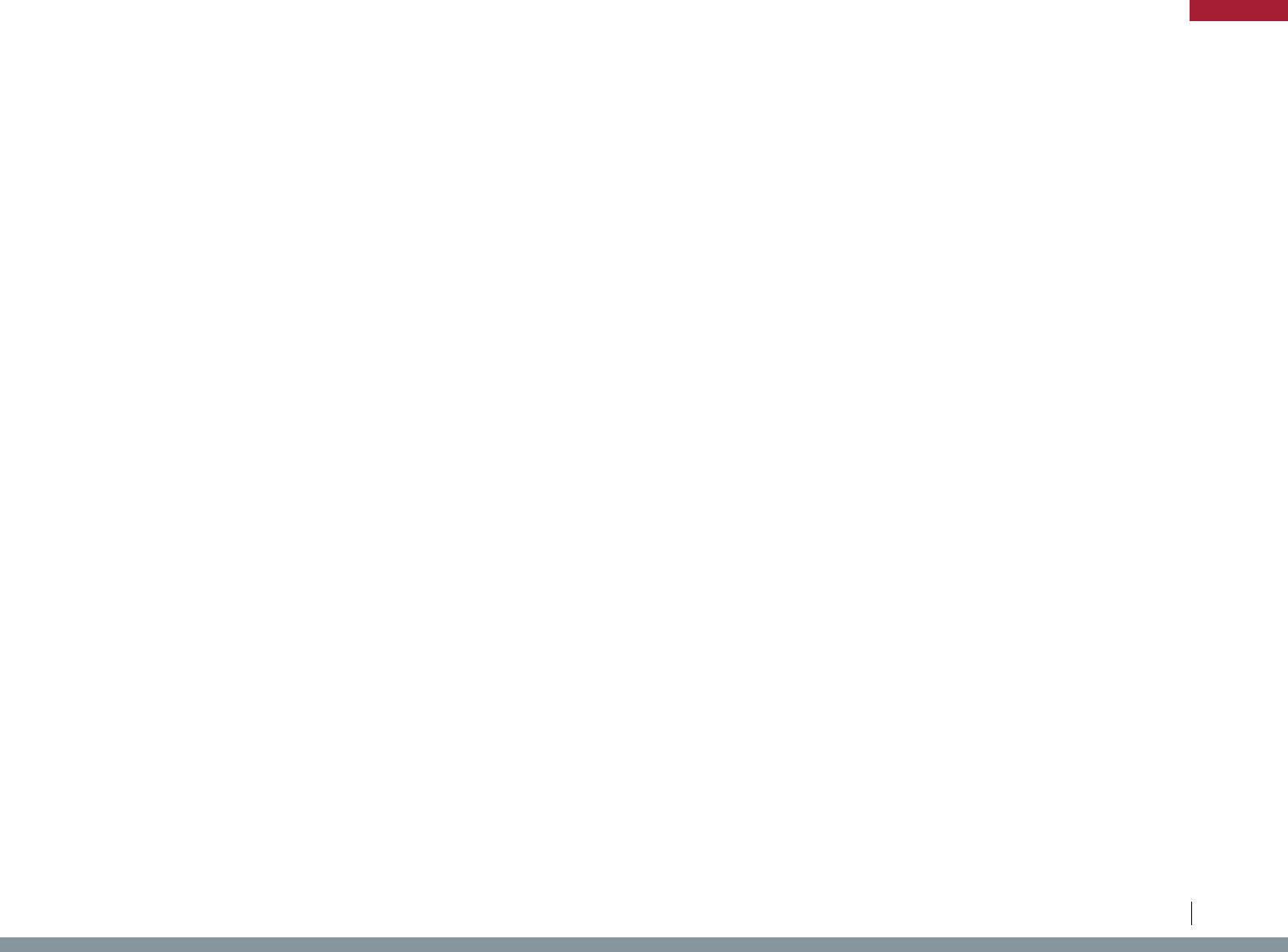
State Law/Regulation Potentially Impacted Industry Agricultural Product Regulation Type Purpose Description
DE 3-801 Del. Admin. Code § 3.0 Plants Plants Importation
Disease/Pest
Prevention
Noxious weed restrictions - unlawful to import designated noxious
weeds into this State
DE 3-901 Del. Admin. Code § 2.0 Livestock
Poultry, Hatching
Eggs
Importation
Disease/Pest
Prevention
Importation requirements for poultry and hatching eggs - health
certification, testing for Avian Influenza, Pullorum-Typhoid, movement
permit for some
DE 3-902 Del. Admin. Code § 4.0 Livestock Sheep, Goats Importation
Disease/Pest
Prevention
Importation requirements for sheep and goats - certificate of veterinary
inspection, identification, Scrapie
DE 3-904 Del. Admin. Code § 1.0 Livestock Livestock Importation
Disease/Pest
Prevention
All livestock and poultry imports must meet Delaware Animal Health
requirements
DE 3-904 Del. Admin. Code § 13.0 Livestock
Poultry, Hatching
Eggs
Importation
Disease/Pest
Prevention
Importation requirements for poultry and hatching eggs - all poultry
imported into the state shall be from approved pullorum typhoid free
flocks
DE 3-904 Del. Admin. Code § 5.0 Livestock Cattle Importation
Disease/Pest
Prevention
Importation requirements for cattle - tuberculosis, brucellosis testing
DE 3-904 Del. Admin. Code § 6.0 Livestock Equines Importation
Disease/Pest
Prevention
Importation requirements for equines - health certificate, Equine
Infectious Anemia testing
DE 3-904 Del. Admin. Code § 7.0 Livestock Swine Importation
Disease/Pest
Prevention
Importation requirements for swine - brucellosis, pseudorabies testing
DE 3-904 Del. Admin. Code § 8.0 Livestock Sheep Importation
Disease/Pest
Prevention
Importation requirements for sheep - must originate from scrapie-free
flock
DE 3-904 Del. Admin. Code § 9.0 Livestock Goats Importation
Disease/Pest
Prevention
Importation requirements for goats - tuberculosis, brucellosis testing
DE 3-905 Del. Admin. Code § 4.0 Live Animals Cervids Importation
Disease/Pest
Prevention
Importation requirements for cervids - certificate of veterinary
inspection, Chronic Wasting Disease
DE Del. Code tit. 3, §7301 Livestock Cattle Importation
Disease/Pest
Prevention
Importation requirements for cattle - certification by inspector,
tuberculosis
FL Fla. Admin. Code r. 5B-2.001 Plants Plants Importation
Disease/Pest
Prevention
General Plant Import Standards
FL Fla. Admin. Code r. 5B-2.008 Nursery Stock Nursery Plants Recordkeeping
Disease/Pest
Prevention
Records required for plants infested with plant pests
FL Fla. Admin. Code r. 5B-26.007 Forestry Oak Importation
Disease/Pest
Prevention
Interstate Movement of Nursery Stock or Plant Material
FL Fla. Admin. Code r. 5B-3.003 Plants Plants Importation
Disease/Pest
Prevention
General Plant Import Standards of Nursery Stock
FL Fla. Admin. Code r. 5B-3.0035 Crops Produce Importation
Disease/Pest
Prevention
Fruit Fly Inspection, Certification for Importation
FL Fla. Admin. Code r. 5B-3.0038 Plants Plants, Plant
Products
Importation
Disease/Pest
Prevention
Importation requirements for plants and plant products - proof of origin,
certificate of inspection, free of pests
FL Fla. Admin. Code r. 5B-38.004 Crops Lettuce Importation
Disease/Pest
Prevention
Lettuce Mosaic Virus Restrictions
FL Fla. Admin. Code r. 5B-38.006 Crops Lettuce Importation
Disease/Pest
Prevention
Lettuce Mosaic Virus Restrictions
FL Fla. Admin. Code r. 5B-43.003 Nursery Stock Nursery Plants Importation
Disease/Pest
Prevention
European Brown Garden Snail Restrictions
FL Fla. Admin. Code r. 5B-43.005 Nursery Stock Nursery Plants Importation
Disease/Pest
Prevention
European Brown Garden Snail Restrictions
FL Fla. Admin. Code r. 5B-52.011 Cotton Cotton Importation
Disease/Pest
Prevention
Movement and Importation of Boll Weevil and Pink Bollworm
Restrictions
115
Legislative Analysis of S.2019 / H.R.4417: The “Ending Agricultural Trade Suppression Act”
APPENDIX
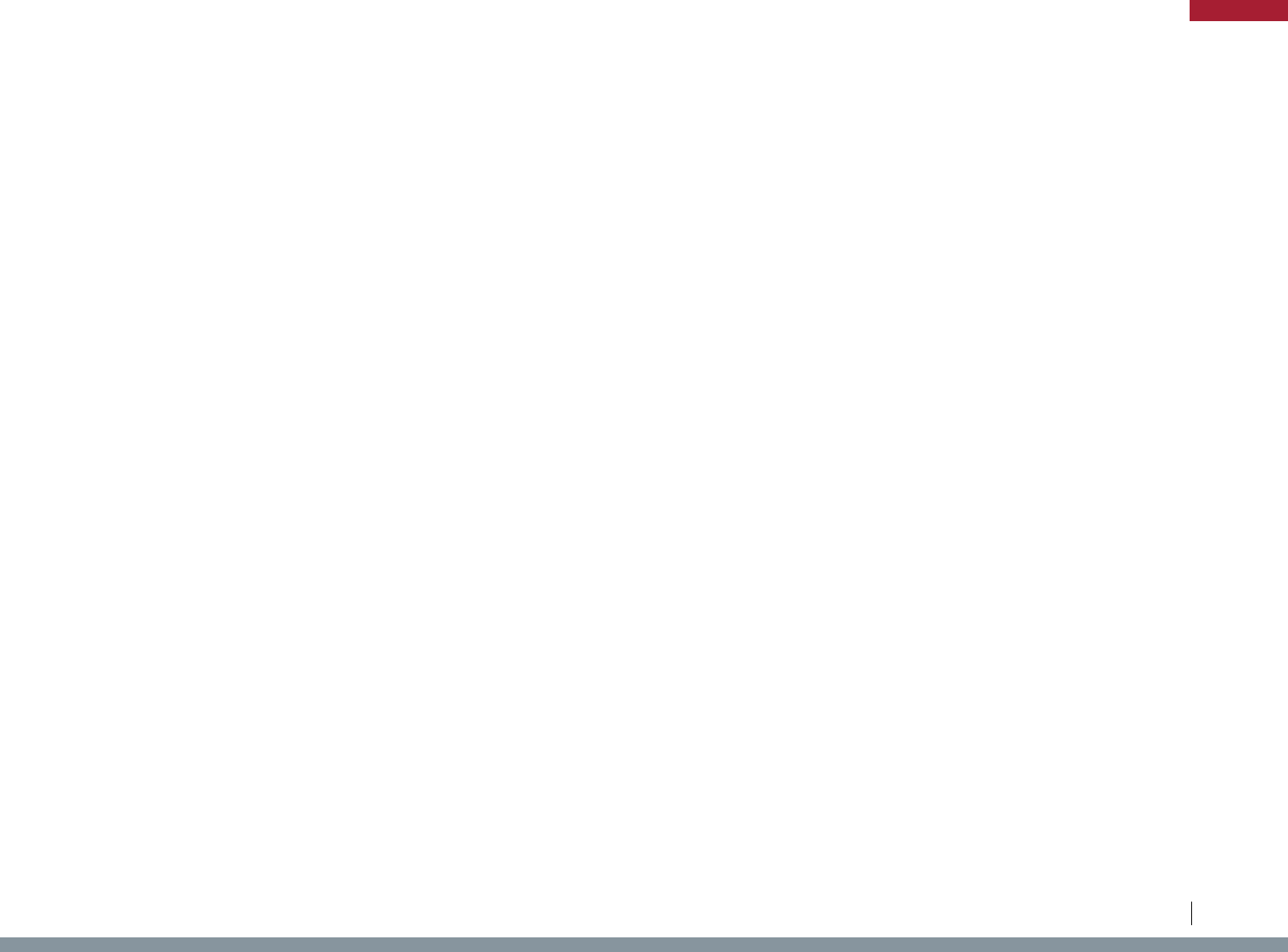
State Law/Regulation Potentially Impacted Industry Agricultural Product Regulation Type Purpose Description
FL Fla. Admin. Code r. 5B-54.006 Livestock Bees Importation
Disease/Pest
Prevention
Importation Requirements for Bees
FL Fla. Admin. Code r. 5B-54.017 Livestock Bees Importation
Disease/Pest
Prevention
Destruction or Treatment of Colonies with American Foulbrood
FL Fla. Admin. Code r. 5B-55.006 Forestry Dogwood Trees Importation
Disease/Pest
Prevention
Dogwood Anthracnose Restrictions and Interstate Movement
FL Fla. Admin. Code r. 5B-57.004 Plants Plants Importation
Disease/Pest
Prevention
Noxious weed restrictions
FL Fla. Admin. Code r. 5B-57.006 Plants Plants Importation
Disease/Pest
Prevention
Noxious weed restrictions
FL Fla. Admin. Code r. 5B-57.007 Plants Plants Importation
Disease/Pest
Prevention
Noxious weed restrictions
FL Fla. Admin. Code r. 5B-64.011 Plants Aquatic Plants Prohibition
Disease/Pest
Prevention
Aquatic Plants prohibited for importation and cultivation
FL Fla. Admin. Code r. 5B-67.004 Live Animals
Giant African Land
Snail
Importation
Disease/Pest
Prevention
Conditions of Certification for Importation of Giant African Land Snails
FL Fla. Admin. Code r. 5C-20.002 Livestock Swine Importation
Disease/Pest
Prevention
Importation requirements for swine
FL Fla. Admin. Code r. 5C-26.003 Livestock Cervids Importation
Disease/Pest
Prevention
Importation requirements for cervids - certificate of veterinary
inspection, chronic wasting disease
FL Fla. Admin. Code r. 5C-3.002 Livestock Livestock Importation
Disease/Pest
Prevention
Restricted animals needing permit for movement, certificate of
veterinary inspection
FL Fla. Admin. Code r. 5C-3.003 Livestock Equines Importation
Disease/Pest
Prevention
Importation requirements for equines - Equine Infectious Anemia
FL Fla. Admin. Code r. 5C-3.004 Livestock Cattle Importation
Disease/Pest
Prevention
Importation requirements for cattle - Bovine Tuberculosis
FL Fla. Admin. Code r. 5C-3.005 Livestock Sheep, Goats Importation
Disease/Pest
Prevention
Importation requirements for sheep and goats - Scrapie, Scabies
FL Fla. Admin. Code r. 5C-3.007 Livestock Swine Importation
Disease/Pest
Prevention
Importation requirements for swine - pseudorabies
FL Fla. Admin. Code r. 5C-3.012 Livestock Ratites Importation
Disease/Pest
Prevention
Importation requirements for ostriches and other ratites - Avian
Influenza
FL Fla. Admin. Code r. 68A-4.0051 Live Animals Cervids Importation
Disease/Pest
Prevention
Importation restrictions for cervids - no person shall receive, possess,
transport, or carry into the state by any means any live deer, elk or
other species of the family Cervidae originating from out-of-state unless
permitted
FL Fla. Stat. § 581.083 Plants Plants Importation
Disease/Pest
Prevention
Noxious weed restrictions
FL Fla. Stat. § 581.091 Plants Plants Importation
Disease/Pest
Prevention
Noxious weed restrictions
FL Fla. Stat. § 581.182 Food Citrus Importation
Disease/Pest
Prevention
Citrus embargo
GA Ga. Code § 4-4-95.1 Livestock Cattle Importation
Disease/Pest
Prevention
Import requirements for cattle - health certificate, waybill, Brucellosis
GA Ga. Comp. R. & Regs. 391-4-9-.05 Live Animals Cervids Importation
Disease/Pest
Prevention
Written approval required to import cervids
116
Legislative Analysis of S.2019 / H.R.4417: The “Ending Agricultural Trade Suppression Act”
APPENDIX

State Law/Regulation Potentially Impacted Industry Agricultural Product Regulation Type Purpose Description
GA Ga. Comp. R. & Regs. 40-12-4-.01 Plants Seeds Quality Standards
Disease/Pest
Prevention
Limitations on noxious weed seeds
GA Ga. Comp. R. & Regs. 40-13-1-.03 Livestock Livestock Importation
Disease/Pest
Prevention
Importation requirements for livestock and poultry - certificate of
inspection, permit
GA Ga. Comp. R. & Regs. 40-13-1-.04 Livestock Livestock Importation
Disease/Pest
Prevention
Certificate of veterinary inspection required to import livestock and
poultry
GA Ga. Comp. R. & Regs. 40-13-1-.05 Livestock Livestock Importation
Disease/Pest
Prevention
Permit required to import livestock - except poultry - brucellosis
GA Ga. Comp. R. & Regs. 40-13-2-.04 Livestock Cattle Importation
Disease/Pest
Prevention
Importation requirements for cattle - certificate of veterinary inspection,
brucellosis, vibriosis, trichomoniasis, epithelioma, tuberculosis
GA Ga. Comp. R. & Regs. 40-13-2-.05 Livestock Cattle Importation
Disease/Pest
Prevention
Importation requirements for cattle - brucellosis testing
GA Ga. Comp. R. & Regs. 40-13-2-.06 Livestock Cattle Importation
Disease/Pest
Prevention
Importation requirements for cattle - tuberculosis
GA Ga. Comp. R. & Regs. 40-13-2-.07 Livestock Cattle Importation
Disease/Pest
Prevention
Importation requirements for cattle - trichomoniasis
GA Ga. Comp. R. & Regs. 40-13-2-.08 Livestock Swine Importation
Disease/Pest
Prevention
Importation requirements for swine - prohibition on swine fed garbage,
vaccinated with Pseudorabies, identification, certification, testing
GA Ga. Comp. R. & Regs. 40-13-2-.11 Livestock Sheep, Goats Importation
Disease/Pest
Prevention
Importation requirements for sheep and goats - certificate of veterinary
inspection, identification, scrapie, scabies, etc.
GA Ga. Comp. R. & Regs. 40-13-2-.12 Livestock Equines Importation
Disease/Pest
Prevention
Importation requirements for equines - certificate of veterinary
inspection, equine infectious anemia
GA Ga. Comp. R. & Regs. 40-13-2-.13 Livestock Cervids Importation
Disease/Pest
Prevention
Importation requirements for cervids - certificate of veterinary
inspection, identification, chronic wasting disease
GA Ga. Comp. R. & Regs. 40-13-2-.14 Livestock Ratites Importation
Disease/Pest
Prevention
Importation requirements for ratites - certificate of veterinary inspection,
identification
GA Ga. Comp. R. & Regs. 40-13-2-.15 Livestock Poultry Importation
Disease/Pest
Prevention
Importation requirements for poultry - certificate of veterinary inspection
or National Poultry Improvement Plan, avian influenza
GA Ga. Comp. R. & Regs. 40-13-4-.07 Livestock Cervids Importation
Disease/Pest
Prevention
Importation requirements for cervids - tuberculosis
GA Ga. Comp. R. & Regs. 40-13-6-.04 Livestock Cattle Importation
Disease/Pest
Prevention
Requirements for cattle offered for sale at livestock auction markets
GA Ga. Comp. R. & Regs. 40-24-1-.08 Cotton Cotton Importation
Disease/Pest
Prevention
Importation requirements for cotton and used cotton equipment -
permit, certification - boll weevils
GA Ga. Comp. R. & Regs. 40-4-1-.03 Livestock Bees Importation
Disease/Pest
Prevention
Importation requirements for queen and package bees - certificate
required, American and European Foulbrood
GA Ga. Comp. R. & Regs. 40-4-1-.04 Livestock Bees Importation
Disease/Pest
Prevention
Importation requirements for honeybees - permit required, American
and European Foulbrood
GA Ga. Comp. R. & Regs. 40-4-13-.05 Fruit Peach Trees Importation
Disease/Pest
Prevention
Importation of fruit tree nursery stock - nursery inspection certificate
required - Phony Peach disease
GA Ga. Comp. R. & Regs. 40-4-24-.04 Nursery Stock Fruit Plants Importation
Disease/Pest
Prevention
Importation of certain fruit bearing and ornamental varieties of
blueberry plants, huckleberry plants - certification, permit, notification -
Blueberry Scorch Virus
GA Ga. Comp. R. & Regs. 40-4-7-.05 Crops Vegetables Importation
Disease/Pest
Prevention
Importation restrictions for vegetable transplants - inspection,
certification, restricted areas
117
Legislative Analysis of S.2019 / H.R.4417: The “Ending Agricultural Trade Suppression Act”
APPENDIX
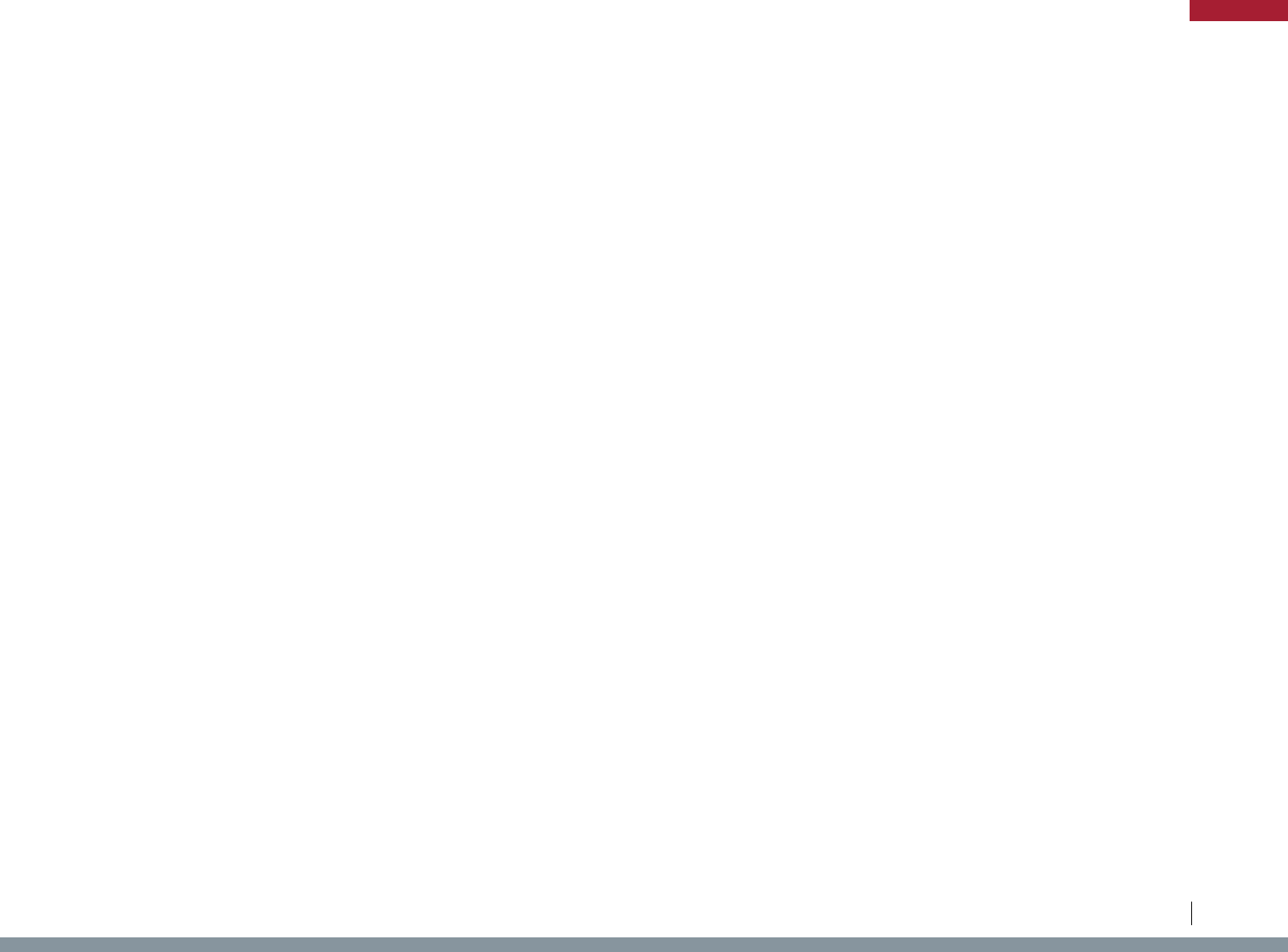
State Law/Regulation Potentially Impacted Industry Agricultural Product Regulation Type Purpose Description
GA Ga. Comp. R. & Regs. 40-4-7-.06 Crops Vegetables Importation
Disease/Pest
Prevention
Importation restrictions for certified organic vegetable transplants -
whiteflies and other sap feeding insects
GA Ga. Comp. R. & Regs. 40-4-9-.04 Plants Plants Importation
Disease/Pest
Prevention
Importation requirements for live plants
HI Haw. Code R. § 4-16-16 Livestock Cattle Importation
Disease/Pest
Prevention
Bovine Tuberculosis, brucellosis, anaplasmosis, and any other
transmissible disease
HI Haw. Code R. § 4-16-18 Livestock Cattle Importation
Disease/Pest
Prevention
Brucellosis surveillance, control, and eradication
HI Haw. Code R. § 4-16-9 Livestock Cattle, Sheep, Goats Importation
Disease/Pest
Prevention
Entry status on imports
HI Haw. Code R. § 4-17-7 Livestock Swine Importation
Disease/Pest
Prevention
Preshipment requirements (Pseudorabies, hog cholera, or any other
swine disease)
HI Haw. Code R. § 4-20-7 Animals
Non-Domesticated
Animals
Importation
Disease/Pest
Prevention
Preshipment requirements (prevent the introduction of transmissible
diseases)
HI Haw. Code R. § 4-28-8 Livestock
Poultry, Hatching
Eggs
Importation
Disease/Pest
Prevention
Preshipment requirements (Avian Influenza, Newcastle Disease, West
Nile virus, etc)
HI Haw. Code R. § 4-70-36 Forestry Pine Trees Importation
Disease/Pest
Prevention
Introduction of any pine plant prohibited
HI Haw. Code R. § 4-71-6 Live Animals Live animals Importation
Disease/Pest
Prevention
Prohibited introductions (No person shall introduce into Hawaii any
animal from the list of prohibited animals)
HI Haw. Rev. Stat. § 150A-5
Agricultural
Products
Plants, Wild Animals Importation
Disease/Pest
Prevention
Conditions of importation
HI Haw. Rev. Stat. § 150A-6
Agricultural
Products
Agricultural Products Importation
Disease/Pest
Prevention
Importation or possession prohibited - soil, plants, animals, etc.
IA Iowa Admin. Code r. 21-22.10 Livestock Bees Importation
Disease/Pest
Prevention
Prohibit movement of bees from designated states
IA Iowa Admin. Code r. 21-22.11 Livestock Bees Importation
Disease/Pest
Prevention
Inspection required for the sale of bees, comb, or used equipment -
dieases including American Foulbrood
IA Iowa Admin. Code r. 21-22.3 Livestock Bees Importation
Disease/Pest
Prevention
Requirement for the sale of bees - mites
IA Iowa Admin. Code r. 21-22.4 Livestock Bees Importation
Disease/Pest
Prevention
Certificate of inspection required - mites
IA Iowa Admin. Code r. 21-22.5 Livestock Bees Importation
Disease/Pest
Prevention
Certificate of inspection expiration - Africanized bees
IA Iowa Admin. Code r. 21-22.9 Livestock Bees Importation
Disease/Pest
Prevention
European honeybee certification
IA Iowa Admin. Code r. 21-46.15 Nursery Stock Nursery Stock Importation
Disease/Pest
Prevention
Out-of-state nursery growers and nursery dealers - official certificate of
inspection required
IA Iowa Admin. Code r. 21-64.155 Livestock Swine Importation
Disease/Pest
Prevention
Certificates of inspection required for importing swine
IA Iowa Admin. Code r. 21-64.202 Livestock Sheep Importation
Disease/Pest
Prevention
Imported sheep - official identification required
IA Iowa Admin. Code r. 21-64.34 Livestock Cervids Importation
Disease/Pest
Prevention
Cervidae originating outside Iowa - entry permit required
IA Iowa Admin. Code r. 21-64.36 Livestock Horses Importation
Disease/Pest
Prevention
Horses and mules certificate of veterinary inspection for importation
118
Legislative Analysis of S.2019 / H.R.4417: The “Ending Agricultural Trade Suppression Act”
APPENDIX
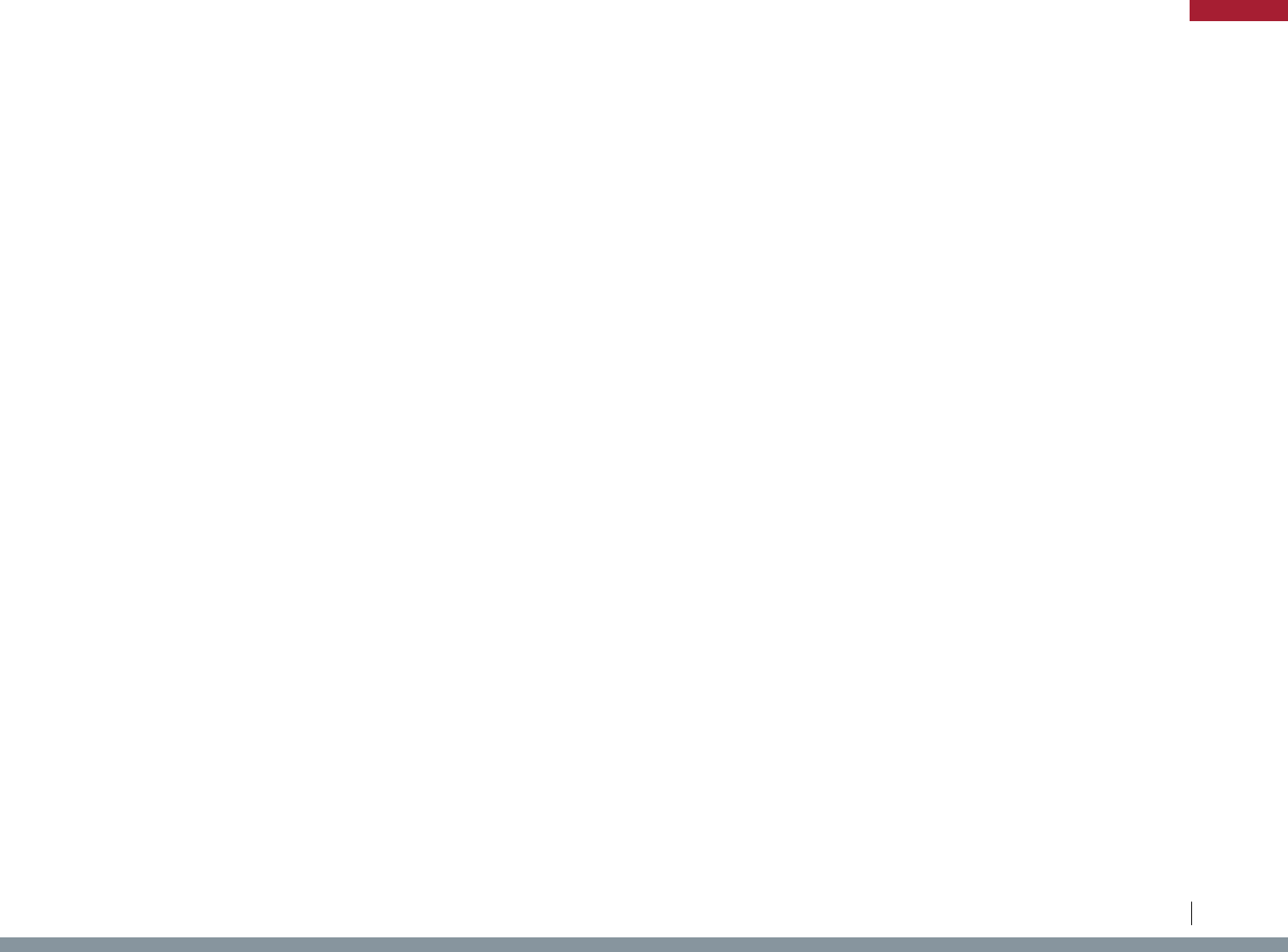
State Law/Regulation Potentially Impacted Industry Agricultural Product Regulation Type Purpose Description
IA Iowa Admin. Code r. 21-64.41 Livestock Livestock Importation
Disease/Pest
Prevention
Livestock imported for resale required to meet health requirements
IA Iowa Admin. Code r. 21-64.80 Livestock Livestock Importation
Disease/Pest
Prevention
Requires cattle imported into the state to comply with Iowa Admin.
Code r. 21-65.4
IA Iowa Admin. Code r. 21-65.11 Livestock Poultry Importation
Disease/Pest
Prevention
Certificate of veterinary inspection required for importing poultry
IA Iowa Admin. Code r. 21-65.12 Livestock Swine Importation
Disease/Pest
Prevention
Interstate swine movement reporting and identification
IA Iowa Admin. Code r. 21-65.2 Livestock Livestock Importation
Disease/Pest
Prevention
Pre-entry permits required for importing certain livestock - including
cervids, certain poultry, certain cattle and bison, and captive wild-type
swine
IA Iowa Admin. Code r. 21-65.3 Live Animals Live Animals Importation
Disease/Pest
Prevention
Ban on importation of certain animals and import transport vehicle
cleaning requirements
IA Iowa Admin. Code r. 21-65.4 Livestock Cattle Importation
Disease/Pest
Prevention
Certificate of veterinary inspection required for importing cattle and
bison - Brucellosis, Trichomoniasis, and Tuberculosis test
IA Iowa Admin. Code r. 21-65.5 Livestock Swine Importation
Disease/Pest
Prevention
Certificate of veterinary inspection required for importing swine -
Brucellosis and Pseudorabies restrictions
IA Iowa Admin. Code r. 21-65.6 Livestock Goats Importation
Disease/Pest
Prevention
Certificate of veterinary inspection required for importing goats -
Brucellosis, Tuberculosis, and scrapie restrictions
IA Iowa Admin. Code r. 21-65.7 Livestock Sheep Importation
Disease/Pest
Prevention
Certificate of veterinary inspection required for importing sheep -
scabies and scrapie restrictions
IA Iowa Admin. Code r. 21-65.8 Livestock Horses Importation
Disease/Pest
Prevention
Certificate of veterinary inspection required for importing horses -
equine infectious anemia, brucellosis, "poll evil," "fistulous withers"
restrictions
IA Iowa Admin. Code r. 21-65.9 Livestock Cervids Importation
Disease/Pest
Prevention
Certificate of veterinary inspection required for importing cervids -
Chronic wasting disease, brucellosis, and Tuberculosis restrictions
IA Iowa Admin. Code r. 571-89.2 Aquaculture Fish Importation
Disease/Pest
Prevention
Permit required to import certain aquaculture species
IA Iowa Admin. Code r. 571-89.3 Aquaculture Fish Importation
Disease/Pest
Prevention
Disease-free certification required to import certain aquaculture species
IA Iowa Code § 165.36 Livestock Cattle Importation
Disease/Pest
Prevention
Cattle importation requirements - Tuberculosis
IA Iowa Code § 177A.5 Plants Plant Products Reporting
Disease/Pest
Prevention
Reporting insect pests and diseases - requirements for plant and plant
product sellers
IA Iowa Code § 481A.143 Fish Fish Importation
Disease/Pest
Prevention
Fish import and disease reporting requirements
ID Idaho Admin. Code r. 02.04.21.200 Livestock Cattle Importation
Disease/Pest
Prevention
Importation requirements for cattle - identification, certificate of
veterinary inspection
ID Idaho Admin. Code r. 02.04.21.240 Livestock Cattle, Bison Importation
Disease/Pest
Prevention
Importation requirements for cattle and bison - Tuberculosis
ID Idaho Admin. Code r. 02.04.21.400 Livestock Swine Importation
Disease/Pest
Prevention
Importation requirements for swine - identification, certificate of
veterinary inspection, not vaccinated for pseudorabies, not fed
garbage, exception for swine sent to slaughter
ID Idaho Admin. Code r. 02.04.21.401 Livestock Swine Importation
Disease/Pest
Prevention
Importation requirements for swine - brucellosis
ID Idaho Admin. Code r. 02.04.21.402 Livestock Swine Importation
Disease/Pest
Prevention
Importation requirements for swine - pseudorabies
119
Legislative Analysis of S.2019 / H.R.4417: The “Ending Agricultural Trade Suppression Act”
APPENDIX

State Law/Regulation Potentially Impacted Industry Agricultural Product Regulation Type Purpose Description
ID Idaho Admin. Code r. 02.04.21.600 Live Animals Cervids Importation
Disease/Pest
Prevention
Importation requirements for domestic cervids - certificate of veterinary
inspection, deworming, from national chronic wasting disease certified
herd
ID Idaho Admin. Code r. 02.08.01.100 Livestock Sheep, Goats Importation
Disease/Pest
Prevention
Importation requirements for sheep and goats
ID Idaho Admin. Code r. 02.08.01.101 Livestock Sheep, Goats Importation
Disease/Pest
Prevention
Importation requirements for sheep and goats - permits
ID Idaho Admin. Code r. 02.08.01.102 Livestock Sheep, Goats Importation
Disease/Pest
Prevention
Importation requirements for sheep and goats - scabies
ID Idaho Code § 22-2016 Plants Plants Importation
Disease/Pest
Prevention
Importation restrictions on plants, plant pests, and other items -
introduction into or release within this state of any plant pest, biocontrol
agent, or genetically engineered plant or plant pest, or any other
organism which may directly or indirectly affect the plant life of this state
as an injurious pest, parasite or predator of other organisms, or any
arthropod, is prohibited, except under permit or exemption
IL 510 Ill. Comp. Stat. § 65/4 Livestock Equines Importation
Disease/Pest
Prevention
Equine Infectious Anemia and Certificate of Veterinary Inspection
Requirements
IL Ill. Admin. Code tit. 17, pt. 635.20 Live Animals Cervids Importation
Disease/Pest
Prevention
Chronic Wasting Disease, Brucellosis, and Tuberculosis Restrictions
IL Ill. Admin. Code tit. 17, pt. 870.50 (c) Fish Fish Importation
Disease/Pest
Prevention
Salmonid import permitting; source hatchery inspection
IL Ill. Admin. Code tit. 17, pt. 875.40 Fish Fish Reporting
Disease/Pest
Prevention
Fish Health Inspection Report Requirements
IL Ill. Admin. Code tit. 17, pt. 875.50 Aquaculture Fish Reporting
Disease/Pest
Prevention
Viral Hemorrhagic Septicemia (VHS) - unlawful to import VHS-
susceptible species into the State of Illinois without a VHS-Susceptible
Species Permit issued by the Department
IL Ill. Admin. Code tit. 17, pt. 875.50 Fish Fish Importation
Disease/Pest
Prevention
Viral Hemorrhagic Septicemia (VHS) Species Permitting - unlawful to
import VHS-susceptible species without permit
IL Ill. Admin. Code tit. 8, pt. § 105.10 Livestock Swine Importation
Disease/Pest
Prevention
Importation requirements for swine - pseudorabies, health certification,
and permit requirements
IL Ill. Admin. Code tit. 8, pt. 105.30 Livestock Swine Importation
Disease/Pest
Prevention
Importation requirements for swine - pseudorabies, brucellosis, health
certification, tagging, and permit requirements
IL Ill. Admin. Code tit. 8, pt. 230.20 Plants Plants Prohibition
Disease/Pest
Prevention
Noxious weed seed prohibitions
IL Ill. Admin. Code tit. 8, pt. 230.30 Plants Plants Restriction
Disease/Pest
Prevention
Noxious weed restrictions
IL Ill. Admin. Code tit. 8, pt. 230.60 Plants Plants Prohibition
Disease/Pest
Prevention
Sale prohibitions and labeling requirements
IL Ill. Admin. Code tit. 8, pt. 240.20 Nursery Stock Plants Importation
Disease/Pest
Prevention
Import inspections for Illinois compliance
IL Ill. Admin. Code tit. 8, pt. 240.280 Plants Plant Products Importation
Disease/Pest
Prevention
Authority to quarantine plants, plant products, and soils
IL Ill. Admin. Code tit. 8, pt. 240.30 Nursery Stock Plants Importation
Disease/Pest
Prevention
Disposing/Returning Infested or Infected stock
IL Ill. Admin. Code tit. 8, pt. 40.100 Livestock Cattle Importation
Disease/Pest
Prevention
Brucellosis testing requirements
120
Legislative Analysis of S.2019 / H.R.4417: The “Ending Agricultural Trade Suppression Act”
APPENDIX
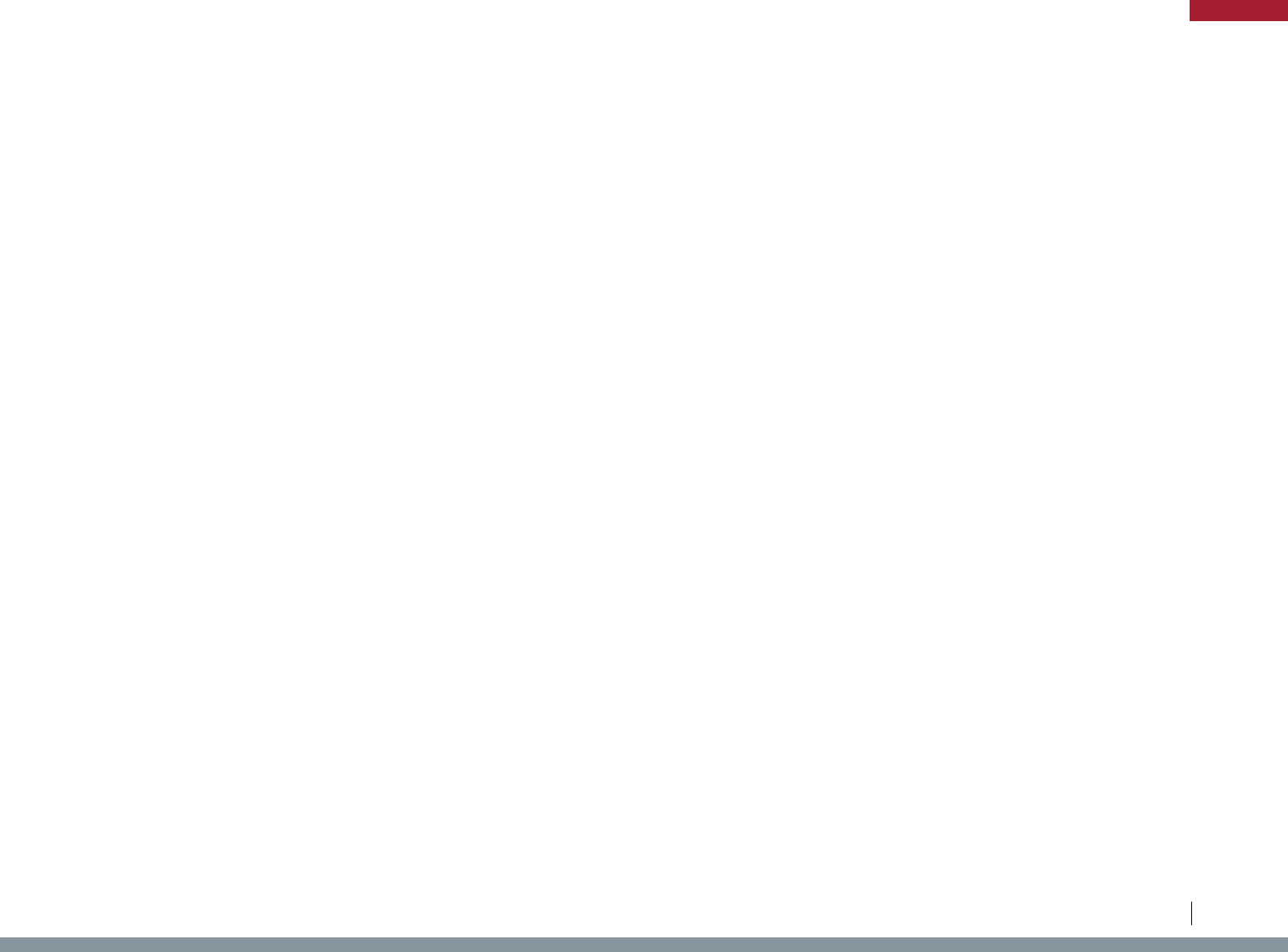
State Law/Regulation Potentially Impacted Industry Agricultural Product Regulation Type Purpose Description
IL Ill. Admin. Code tit. 8, pt. 40.170 Livestock Swine Importation/Sale
Disease/Pest
Prevention
Health Certification and Permit Requirements
IL Ill. Admin. Code tit. 8, pt. 60.20 Livestock Bees Importation
Disease/Pest
Prevention
Importation requiements for bees - registration
IL Ill. Admin. Code tit. 8, pt. 60.60 Livestock Bees Importation
Disease/Pest
Prevention
Importation Permitting Requirements for Bees
IL Ill. Admin. Code tit. 8, pt. 60.70 Livestock Bees Importation
Disease/Pest
Prevention
Quarantine regulations for bees
IL Ill. Admin. Code tit. 8, pt. 80.140 Livestock Cervids Importation
Disease/Pest
Prevention
Bovine Tuberculosis, Certificate of Veterinary Inspection, and Permit
Requirements
IL Ill. Admin. Code tit. 8, pt. 80.70 Livestock Cattle Importation
Disease/Pest
Prevention
Importation requirements for steers, heifers, and calves - Bovine
Tuberculosis, certificate of veterinary inspection
IL Ill. Admin. Code tit. 8, pt. 80.80 Livestock Cattle Importation
Disease/Pest
Prevention
Importation requirements for certain female cattle - Bovine
Tuberculosis, certificate of veterinary inspection
IL Ill. Admin. Code tit. 8, pt. 85.105 Live Animals Livestock, Dogs Importation
Disease/Pest
Prevention
Permit Requirements for trucks carrying livestock or dogs into Illinois
IL Ill. Admin. Code tit. 8, pt. 85.110 Live Animals Cattle Importation
Disease/Pest
Prevention
Ear Tagging Requirements for out-of-state cattle
IL Ill. Admin. Code tit. 8, pt. 85.120 Live Animals Cervids Importation
Disease/Pest
Prevention
Brucellosis, permitting, and Certificate of Veterinary Inspection
Requirements
IL Ill. Admin. Code tit. 8, pt. 85.125 Live Animals Ratites Importation
Disease/Pest
Prevention
Importation requirements for ratites - Avian influenza, permitting
requirements
IL Ill. Admin. Code tit. 8, pt. 85.130 Livestock Livestock Importation
Disease/Pest
Prevention
Importation requirements for livestock - certificate of veterinary
inspection, Vesicular Stomatitis
IL Ill. Admin. Code tit. 8, pt. 85.150 Livestock Livestock Importation
Disease/Pest
Prevention
Permitting and Certificate of Veterinary Inspection Requirements
IL Ill. Admin. Code tit. 8, pt. 85.55 Livestock Sheep, Goats Importation
Disease/Pest
Prevention
Importation restrictions for sheep and goats - scabies
IL Ill. Admin. Code tit. 8, pt. 85.60 Livestock Sheep, Goats Importation
Disease/Pest
Prevention
Bluetongue import restriction - no cattle or sheep infected with or
exposed to bluetongue, and no cattle or sheep from an area under
quarantine because of bluetongue, may be transported within or
moved into the State of Illinois
IL Ill. Admin. Code tit. 8, pt. 85.75 Livestock Cattle Importation
Disease/Pest
Prevention
Cattle Scabies: Requirements from certain areas
IL Ill. Admin. Code tit. 8, pt. 85.80 Livestock Sheep, Goats Importation
Disease/Pest
Prevention
Certification, identification, and permit requirements
IL Ill. Admin. Code tit. 8, pt. 85.85 Livestock Livestock Importation
Disease/Pest
Prevention
Prohibition on importation of animals recently exposed to disease or
chemical or radiological substances
IL Ill. Admin. Code tit. 8, pt. 85.90 Livestock Livestock Importation
Disease/Pest
Prevention
Health Certification and brucellosis testing requirements
IN 312 Ind. Admin. Code 18-3-24 Nuts Walnuts Importation
Disease/Pest
Prevention
Thousand Cankers Disease Restrictions
IN 312 Ind. Admin. Code 18-3-6 Livestock Bees Importation
Disease/Pest
Prevention
Bee Transportation Requirements
IN 312 Ind. Admin. Code 9-10-14 Fish Fish Importation
Disease/Pest
Prevention
Fish hauler's and supplier's permit
121
Legislative Analysis of S.2019 / H.R.4417: The “Ending Agricultural Trade Suppression Act”
APPENDIX
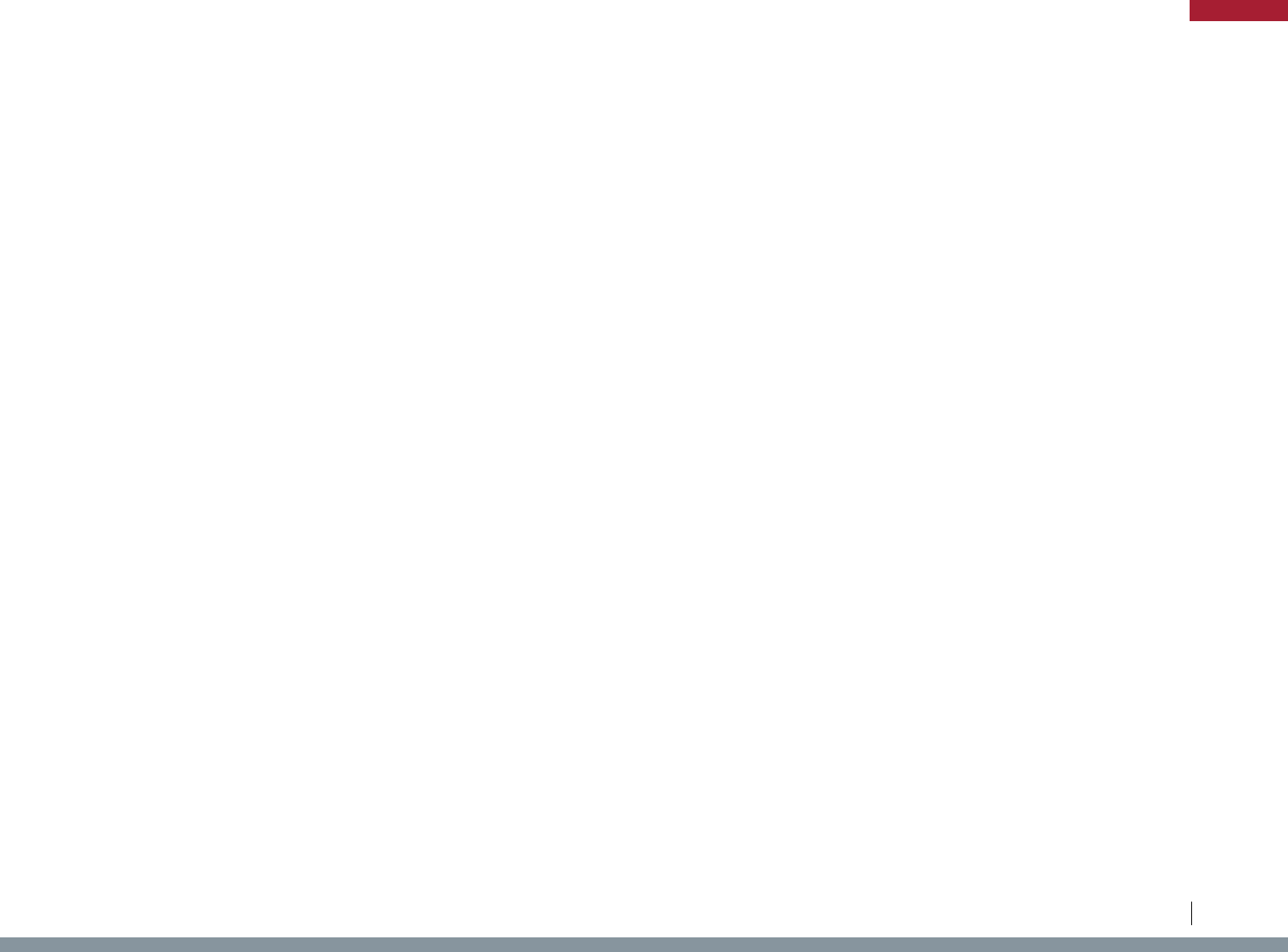
State Law/Regulation Potentially Impacted Industry Agricultural Product Regulation Type Purpose Description
IN 312 Ind. Admin. Code 9-10-15 Aquaculture Fish Importation
Disease/Pest
Prevention
Fish importation permit
IN 345 Ind. Admin. Code 1-3-11 Livestock Swine Importation
Disease/Pest
Prevention
Moving swine within Indiana
IN 345 Ind. Admin. Code 1-3-7.5 Livestock Cattle, Bison Importation
Disease/Pest
Prevention
Movement of cattle and bison into Indiana (Brucellosis, Tuberculosis,
Johne's disease)
IN 345 Ind. Admin. Code 2-6-2.5 Livestock Cattle, Bison Importation
Disease/Pest
Prevention
Importation restrictions for cattle and bison - brucellosis
IN 345 Ind. Admin. Code 2-6-3 Livestock Livestock Importation
Disease/Pest
Prevention
Certified brucellosis-free herd; establishment; maintenance
IN 345 Ind. Admin. Code 2-7-2.4 Live Animals Cervids Importation
Disease/Pest
Prevention
Interstate movement of cervids susceptible to chronic wasting disease
IN 345 Ind. Admin. Code 2.5-3-7 Livestock Cattle, Bison Importation
Disease/Pest
Prevention
Importation requirements for cattle and bison - tuberculosis
IN 345 Ind. Admin. Code 5-5-1 Livestock Sheep, Goats Importation
Disease/Pest
Prevention
Interstate movement into the state (Scrapie)
IN 345 Ind. Admin. Code 6-1.1-4.6 Livestock Horses Importation
Disease/Pest
Prevention
Equine Infectious Anemia requirements for horses entering Indiana
KS Kan. Admin. Regs. § 115-18-10 Fish Fish Importation
Disease/Pest
Prevention
Importation requirements for certain fish and other species
KS Kan. Admin. Regs. § 4-15-10 Plants Plants Importation
Disease/Pest
Prevention
Prohbitition on importing plants with quarantine pests - pest freedom
standards for importation
KS Kan. Admin. Regs. § 9-10-7 Livestock Sheep, Goats Importation
Disease/Pest
Prevention
Inspection requirements for all sheep and goats - scabies, dip
requirement authorization
KS Kan. Admin. Regs. § 9-3-9 Livestock Cervids Importation
Disease/Pest
Prevention
Importation requirements for cervids - certificate of veterinary
inspection, identification, permit, chronic wasting disease, tuberculosis
KS Kan. Admin. Regs. § 9-32-3 Livestock Sheep, Goats Importation
Disease/Pest
Prevention
Prohibition on importation of sheep and goats infected with scrapie or
exposed without compliance with a flock plan
KS Kan. Admin. Regs. § 9-32-4 Livestock Sheep, Goats Importation
Disease/Pest
Prevention
Importation requirements for sheep and goats for breeding - certificate
of veterinary inspection, permit, scrapie, etc.
KS Kan. Admin. Regs. § 9-32-5 Livestock Sheep, Goats Importation
Disease/Pest
Prevention
Importation requirements for sheep and goats for slaughter - certificate
of veterinary inspection, identification, etc.
KS Kan. Admin. Regs. § 9-7-14 Livestock Equines Importation
Disease/Pest
Prevention
Importation requirements for equines - health certificate or certificate of
veterinary inspection, equine infectious anemia testing
KS Kan. Admin. Regs. § 9-7-2 Live Animals Live Animals Importation
Disease/Pest
Prevention
Health certificate required for livestock moved into the state
KS Kan. Admin. Regs. § 9-7-4 Livestock Cattle Importation
Disease/Pest
Prevention
Importation requirements for cattle - brucellosis, tuberculosis
KS Kan. Admin. Regs. § 9-7-7 Livestock Swine Importation
Disease/Pest
Prevention
Importation requirements for swine - certificate of veterinary inspection,
permit, brucellosis, pseudorabies
KS Kan. Admin. Regs. § 9-9-4 Livestock Poultry Importation
Disease/Pest
Prevention
Importation requirements for poultry - permit, pullorum-typhoid
KS Kan. Stat. § 47-607 Livestock Livestock Importation
Disease/Pest
Prevention
Unlawful to transport uninspected animals into state - certificates of
health required, rules and regulations of animal health commissioner,
special quarantine
KY 12 Ky. Admin. Regs. 1:120 Plants Seeds Importation
Disease/Pest
Prevention
Noxious weed seed restrictions
122
Legislative Analysis of S.2019 / H.R.4417: The “Ending Agricultural Trade Suppression Act”
APPENDIX
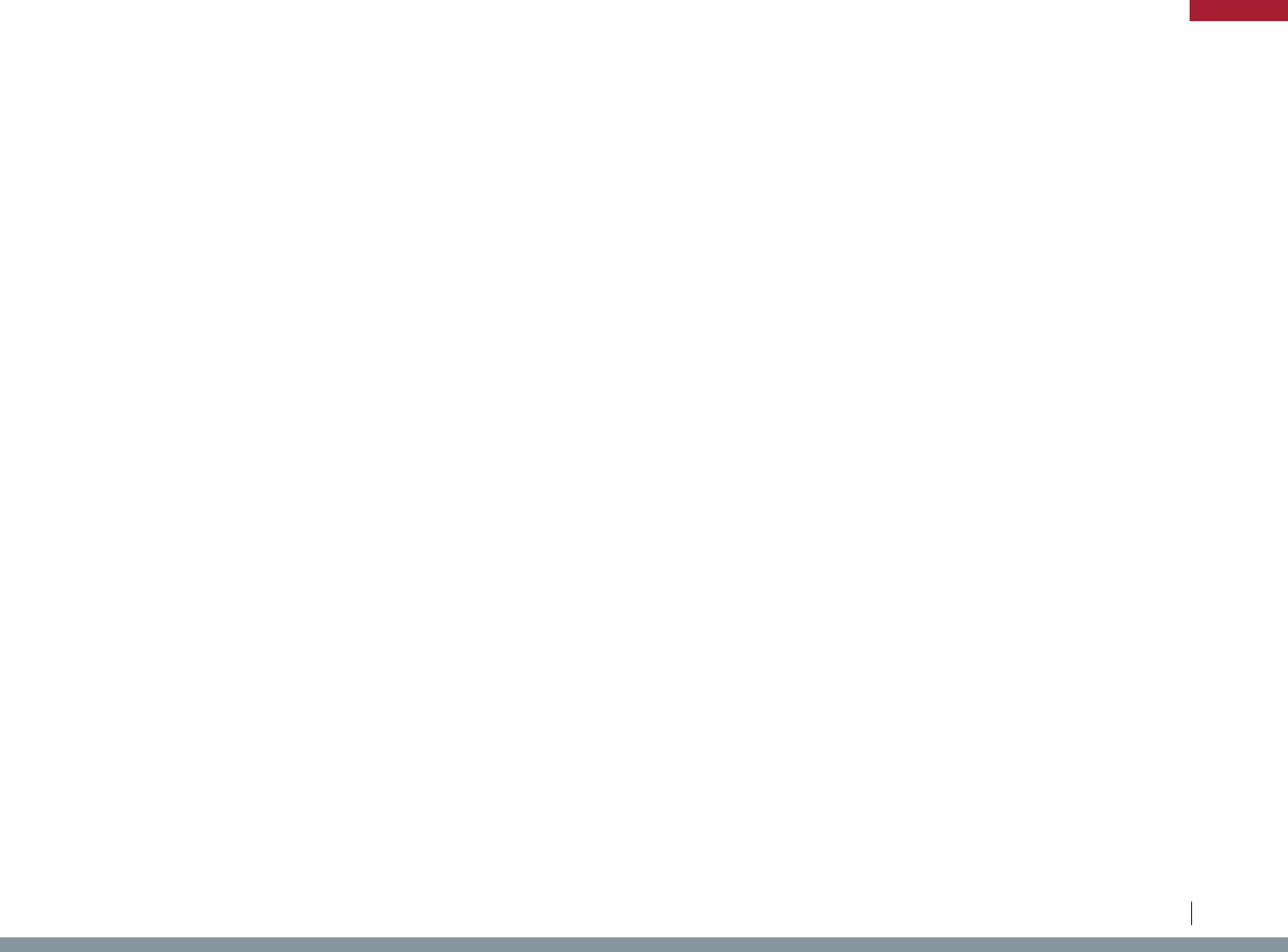
State Law/Regulation Potentially Impacted Industry Agricultural Product Regulation Type Purpose Description
KY 301 Ky. Admin. Regs. 1:125 Fish Fish Reporting
Disease/Pest
Prevention
Aquaculture Import and Disease Reporting of Viral Hemorrhagic
Septicemia
KY 301 Ky. Admin. Regs. 2:081 Live Animals Turtles, Wildlife Importation
Disease/Pest
Prevention
Importation requirements for turtles and other native wildlife
KY 302 Ky. Admin. Regs. 20:020 Livestock Livestock Importation
Disease/Pest
Prevention
Movement Permits and Veterinary Inspection Requirements
KY 302 Ky. Admin. Regs. 20:040 Livestock Livestock Importation
Disease/Pest
Prevention
Importation requirements for livestock - certificate of veterinary
inspection, permits in certain circumstances
KY 302 Ky. Admin. Regs. 20:055 Livestock Livestock Importation
Disease/Pest
Prevention
Importation restrictions - brucellosis
KY 302 Ky. Admin. Regs. 20:250 Livestock Poultry Importation
Disease/Pest
Prevention
Importation requirements for poultry - Avian Influenza
KY Ky. Rev. Stat. § 247.6054 Cotton Cotton Importation
Disease/Pest
Prevention
Boll weevil and pink bollworm restrictions
KY Ky. Rev. Stat. § 252.190 Livestock Bees Importation
Disease/Pest
Prevention
Importation Requirements for Bees
KY Ky. Rev. Stat. § 252.200 Livestock Bees Importation
Disease/Pest
Prevention
Bee Quarantine Authority
LA La. Admin. Code tit. 7, Pt XV, § 123
Fruit,
Forestry/Wood
Products,
Vegetables, Cotton
Citrus Trees, Fruit
Trees, Oak Trees,
Palms, Sweet
Potatoes, Cotton
Importation
Disease/Pest
Prevention
Citrus Greening Disease and the Asian Citrus Psyllid Restrictions;
Phony Peach Disease Restrictions; Oak Wilt Restrictions; Date Palm
and Coconut Palm Lethal Yellowing Restrictions; Sweet Potato Weevil
Restrictions; Boll Weevil and Pink Bollworm Restrictions
LA La. Admin. Code tit. 7, Pt XV, § 129 Fruit Peach Trees Importation
Disease/Pest
Prevention
Phony Peach Disease Restrictions
LA La. Admin. Code tit. 7, Pt XV, § 131 Nursery Stock Nursery Plants Importation
Disease/Pest
Prevention
Phytophagous snail restrictions
LA La. Admin. Code tit. 7, Pt XV, § 133 Crops Sweet Potatoes Importation
Disease/Pest
Prevention
Sweet Potato Weevil restrictions
LA La. Admin. Code tit. 7, Pt XV, § 153 Cotton Cotton Importation
Disease/Pest
Prevention
Boll weevil and pink bollworm restrictions
LA La. Admin. Code tit. 7, Pt XV, § 167 Forestry Ash Trees Importation
Disease/Pest
Prevention
Importation Restrictions Related to Emerald Ash Borer
LA La. Admin. Code tit. 7, Pt XV, § 305 Cotton Cotton Importation
Disease/Pest
Prevention
Boll weevil and pink bollworm restrictions
LA La. Admin. Code tit. 7, Pt XV, § 513 Livestock Bees Certification
Disease/Pest
Prevention
Disease Free Certifications for Sale
LA La. Admin. Code tit. 7, Pt XV, § 515 Livestock Bees Importation
Disease/Pest
Prevention
Bee Quarantine Authority
LA La. Admin. Code tit. 7, Pt XV, § 517 Livestock Bees Importation
Disease/Pest
Prevention
Destruction or Treatment of Colonies with American Foulbrood
LA La. Admin. Code tit. 7, Pt XV, §127 Fruit Citrus Trees Importation
Disease/Pest
Prevention
Importing Out-of-State Citrus Budwood - Citrus Greening Disease and
the Asian Citrus Psyllid Restrictions
LA La. Admin. Code tit. 7, Pt XV, §129 Fruit Peach Trees Importation
Disease/Pest
Prevention
Import restrictions - phony peach disease
LA La. Admin. Code tit. 7, Pt XXI, § 1312 Livestock Swine Importation
Disease/Pest
Prevention
Importation requirements for swine - pseudorabies
123
Legislative Analysis of S.2019 / H.R.4417: The “Ending Agricultural Trade Suppression Act”
APPENDIX
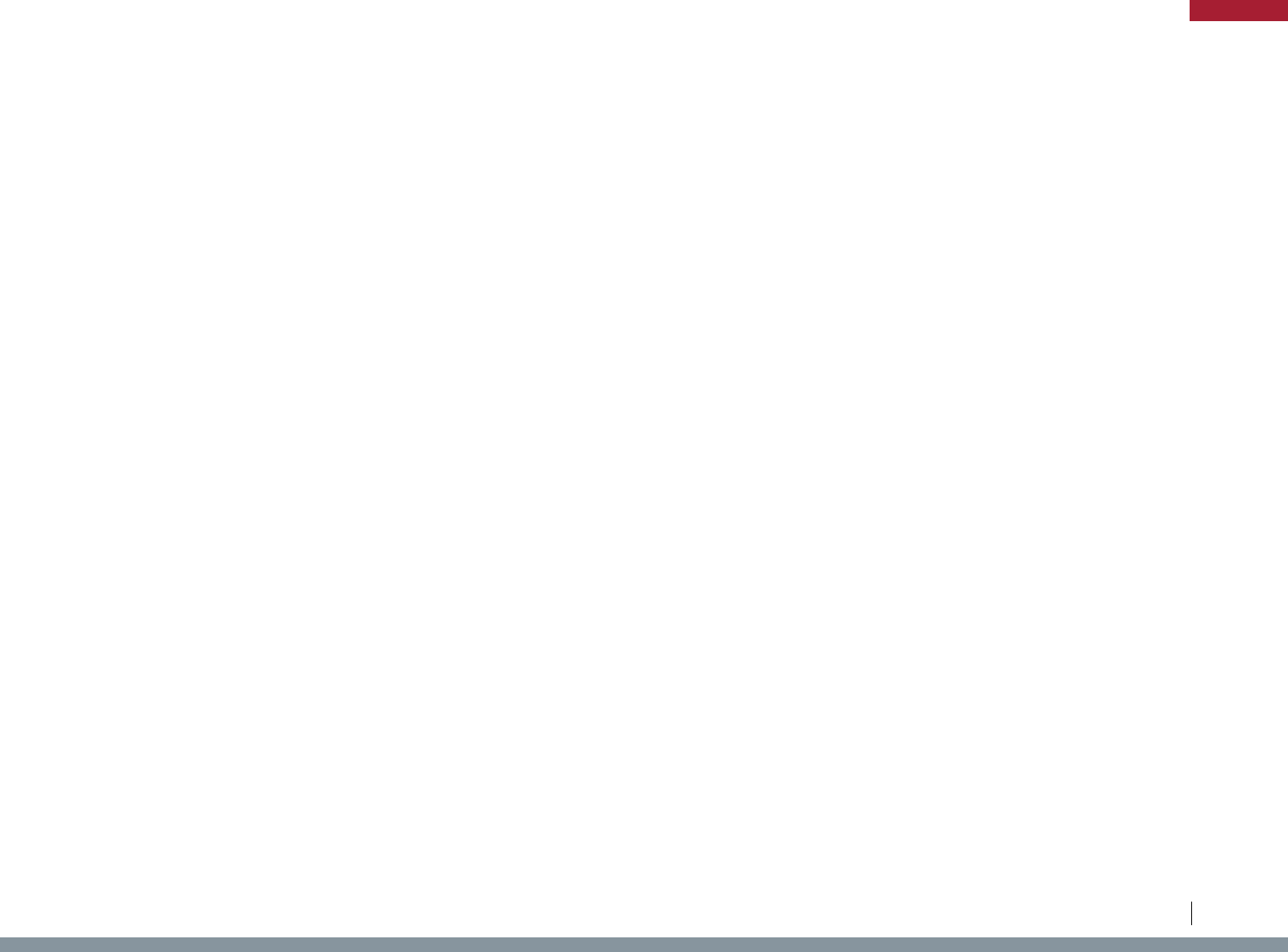
State Law/Regulation Potentially Impacted Industry Agricultural Product Regulation Type Purpose Description
LA La. Admin. Code tit. 7, Pt XXI, § 1503 Livestock Sheep, Goats Importation
Disease/Pest
Prevention
Importation restrictions for sheep and goats - scabies
LA La. Admin. Code tit. 7, Pt XXI, § 1717 Live Animals Cervids Importation
Disease/Pest
Prevention
Chronic Wasting Disease Restrictions
LA La. Admin. Code tit. 7, Pt XXI, § 501 Livestock Livestock Importation
Disease/Pest
Prevention
Importation requirements for livestock and poultry - health certificate,
free from signs of disease
LA La. Admin. Code tit. 7, Pt XXI, § 511 Livestock Cattle Importation
Disease/Pest
Prevention
Importation restrictions for cattle - brucellosis
LA La. Admin. Code tit. 7, Pt XXI, § 521 Livestock Horses Importation
Disease/Pest
Prevention
Importation requirements for horses - Equine Infectious Anemia
LA La. Admin. Code tit. 7, Pt XXI, § 531 Livestock Poultry Importation
Disease/Pest
Prevention
Importation requirements for poultry - Avian Influenza
LA La. Admin. Code tit. 7, Pt XXI, § 551 Livestock Sheep Importation
Disease/Pest
Prevention
Importation restrictions for sheep - scabies
LA La. Admin. Code tit. 7, Pt XXI, § 555 Livestock Sheep, Goats Importation
Disease/Pest
Prevention
Importation restrictions for sheep and goats - scabies
LA La. Admin. Code tit. 7, Pt XXI, § 733 Livestock Cattle Importation
Disease/Pest
Prevention
Bovine Tuberculosis
LA La. Admin. Code tit. 76, Pt VII, § 1101
Agricultural
Products
Fish, Plants Importation
Disease/Pest
Prevention
Invasive Aquatic Fish, Noxious Weed Restrictions
MA 321 Mass. Code Regs. 2.15 Live Animals
Fish, Amphibians,
Reptiles, Birds,
Mammals
Importation
Disease/Pest
Prevention
Importation. Liberation and Transportation of Fish. Amphibians.
Reptiles. Birds and Mammals
MA 330 Mass. Code Regs. 11.01 Livestock Swine Importation
Disease/Pest
Prevention
Importation requirements for swine
MA 330 Mass. Code Regs. 11.04 Livestock Swine Importation
Disease/Pest
Prevention
Importation of Swine into the Commonwealth of Massachusetts
MA 330 Mass. Code Regs. 4.01 Livestock Cattle Importation
Disease/Pest
Prevention
Importation requirements for cattle - tuberculosis, brucellosis, etc.
MA 330 Mass. Code Regs. 4.04 Livestock Cattle Importation
Disease/Pest
Prevention
Importation of Cattle into the Commonwealth of Massachusetts
MA 330 Mass. Code Regs. 9.02 Fruit Black Currant Prohibition
Disease/Pest
Prevention
Black Currant Quarantine
MA 330 Mass. Code Regs. 9.03 Fruit
Currants,
Gooseberries
Prohibition
Disease/Pest
Prevention
Currant and Gooseberry Quarantine
MA Mass. Gen. Laws ch. 128, § 27 Plants Plant Products Importation
Disease/Pest
Prevention
Prohibition on delivery within the commonwealth of infested nursery
stock, fruit and plants
MA Mass. Gen. Laws ch. 128, § 35 Livestock Bees Importation
Disease/Pest
Prevention
Transportation of bees and bee equipment; certificate; inspection; fees
MA Mass. Gen. Laws ch. 129, § 27 Livestock Livestock Importation
Disease/Pest
Prevention
Seizure, quarantine and destruction of imported diseased animals
MA Mass. Gen. Laws ch. 129, § 36D Livestock Livestock Importation
Disease/Pest
Prevention
Importation of vaccinated animals; conditions
MA Mass. Gen. Laws ch. 129, § 39G Pets Dogs, Cats Importation
Disease/Pest
Prevention
Official health certificate requirement for dog or cat brought or shipped
into commonwealth; purchase of animal for resale; vaccination record;
devocalization prohibited
124
Legislative Analysis of S.2019 / H.R.4417: The “Ending Agricultural Trade Suppression Act”
APPENDIX
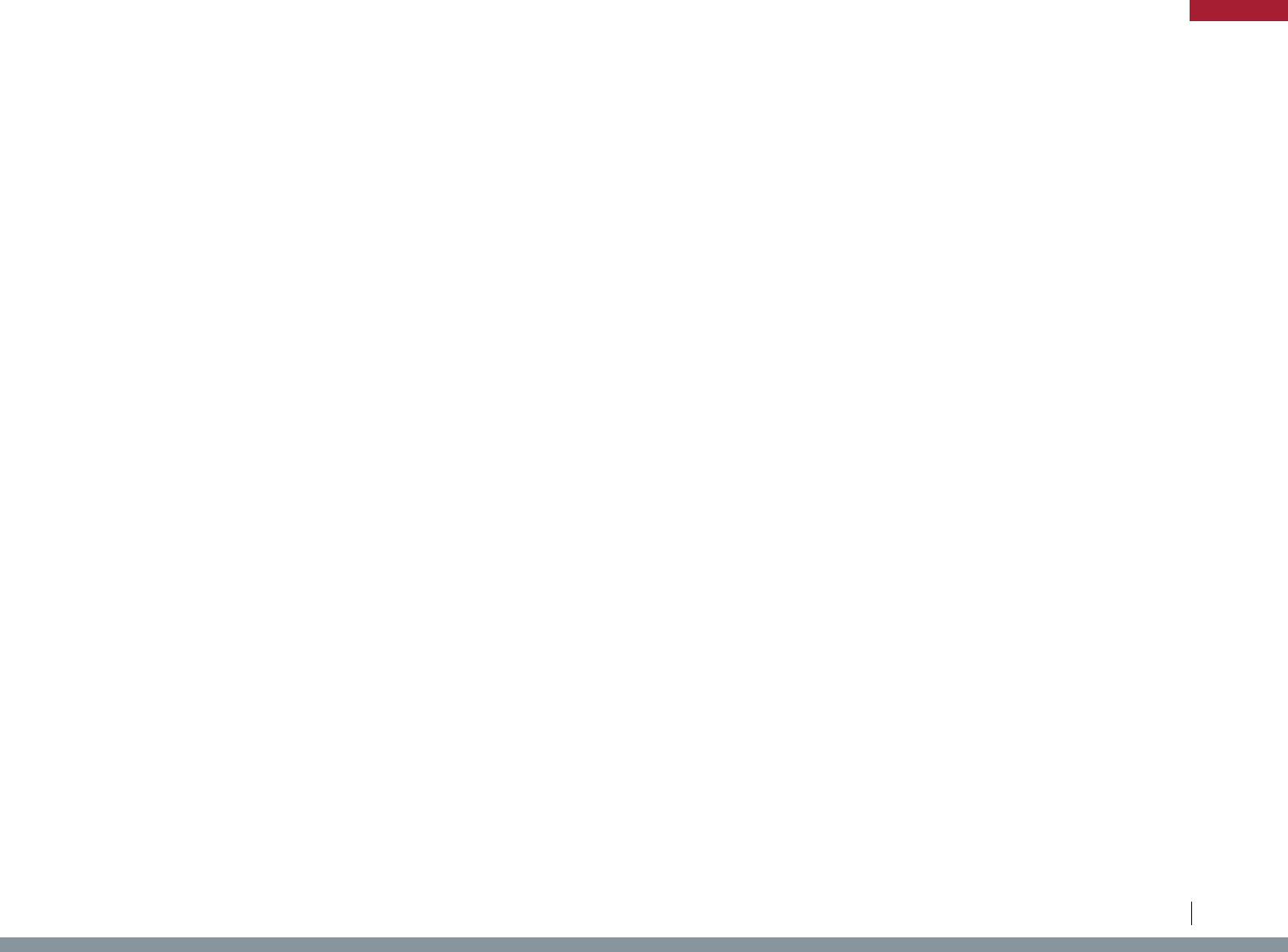
State Law/Regulation Potentially Impacted Industry Agricultural Product Regulation Type Purpose Description
MA Mass. Gen. Laws ch. 129, § 39G Pets Dogs, Cats Importation
Disease/Pest
Prevention
Official health certificate requirement for dog or cat brought or shipped
into commonwealth; purchase of animal for resale; vaccination record;
devocalization prohibited
MA Mass. Gen. Laws ch. 129, § 44 Livestock Horses Importation
Disease/Pest
Prevention
Importation requirements for horses and other equidae - testing,
equine infectious anemia, certification
MD Md. Code Regs. 08.03.09.12 Live Animals Cervids Importation
Disease/Pest
Prevention
Prohibition on importing/exporting live cervids
MD Md. Code Regs. 15.06.02.12 Plants Plants Sale
Disease/Pest
Prevention
Authority to stop sale of infested plants, plant pests
MD Md. Code Regs. 15.06.02.14 Insects Insects Importation
Disease/Pest
Prevention
Permit requirements for importation of live insects, plant disease
agents, and pests
MD Md. Code Regs. 15.11.01.01 Livestock Livestock Importation
Disease/Pest
Prevention
Import restrictions and requirements
MD Md. Code Regs. 15.11.01.04 Livestock Cattle Importation
Disease/Pest
Prevention
Bovine Tuberculosis, brucellosis, and health certificate requirements
MD Md. Code Regs. 15.11.01.05 Livestock Equines Importation
Disease/Pest
Prevention
Equine infectious anemia and health certificate requirements
MD Md. Code Regs. 15.11.01.06 Livestock Goats Importation
Disease/Pest
Prevention
Importation requirements for goats - tuberculosis, brucellosis, and
health certificate requirements
MD Md. Code Regs. 15.11.01.07 Livestock Sheep Importation
Disease/Pest
Prevention
Importation restrictions for sheep - scabies, contagious ecthyma, foot
rot, and health certificate requirements
MD Md. Code Regs. 15.11.05.02 Livestock Swine Importation
Disease/Pest
Prevention
Importation requirements for swine - pseudorabies, hog cholera, and
marking requirements
MD Md. Code Regs. 15.11.12.03 Livestock Horses Importation
Disease/Pest
Prevention
Importation requirements for horses - Equine Infectious Anemia
MD Md. Code Regs. 15.11.18.04 Livestock Sheep, Goats Importation
Disease/Pest
Prevention
Importation restrictions for sheep and goats - scabies, certification on
veterinary inspection requirements
MD Md. Code, Agri. § 3-106 Livestock Livestock Importation
Disease/Pest
Prevention
Authority to prohibit livestock imports and/or quarantine
MD Md. Code, Agri. § 5-505 Livestock Bees Importation
Disease/Pest
Prevention
Importation Requirements for Bees
ME 01 001 Me. Code R. 206, § 4 Livestock Cattle, Bison Importation
Disease/Pest
Prevention
Importation restrictions for cattle and bison - brucellosis, tuberculosis,
bluetongue
ME Me. Stat. tit. 12, § 8305 Nursery Stock
Ribes Plants,
Nursery Stock
Importation
Disease/Pest
Prevention
Director may prohibit, prevent or regulate the entry into or movement
within the State of any plants of the genus Ribes or other nursery or
wilding plants that may cause the introduction or spread of a
dangerous forest insect or disease
ME Me. Stat. tit. 7, § 2751 Livestock Bees Importation
Disease/Pest
Prevention
Importation Requirements for Bees
ME Me. Stat. tit. 7, § 2753 Livestock Bees Importation
Disease/Pest
Prevention
Importation Requirements for Bees
MI Mich. Admin. Code r. 287.712 Livestock Cattle Importation
Disease/Pest
Prevention
Importation restrictions for cattle - brucellosis, tuberculosis
MI Mich. Comp. Laws § 287.719 Livestock Livestock Importation
Disease/Pest
Prevention
Importation requirements for livestock - tuberculosis, brucellosis,
Chronic Wasting Disease
MI Mich. Comp. Laws § 287.720 Livestock Livestock Importation
Disease/Pest
Prevention
Requirements for interstate health certificates
125
Legislative Analysis of S.2019 / H.R.4417: The “Ending Agricultural Trade Suppression Act”
APPENDIX

State Law/Regulation Potentially Impacted Industry Agricultural Product Regulation Type Purpose Description
MI Mich. Comp. Laws § 287.731 Live Animals Live Animals Importation
Disease/Pest
Prevention
Prohibition on importing certain species
MI Mich. Comp. Laws § 287.837 Livestock Swine Importation
Disease/Pest
Prevention
Importation requirements for swine - pseudorabies, brucellosis
MI Mich. Comp. Laws § 287.839 Livestock Swine Importation
Disease/Pest
Prevention
Importation requirements for swine - pseudorabies, brucellosis
MI Mich. Comp. Laws § 324.48735 Fish Fish Importation
Disease/Pest
Prevention
Permitting requirements for importation
MN Minn. R. 1721.0040 Livestock Livestock Importation
Disease/Pest
Prevention
Certificate of veterinary inspection requirements
MN Minn. R. 1721.0050 Livestock Livestock Importation
Disease/Pest
Prevention
Importation requirements for livestock and poultry - certificate of
veterinary inspection and free from signs of disease or quarantine
MN Minn. R. 1721.0130 Livestock Cattle Importation
Disease/Pest
Prevention
Importation requirements for cattle - identification, certificate of
veterinary inspection, tuberculosis test, permit
MN Minn. R. 1721.0165 Livestock Cattle Importation
Disease/Pest
Prevention
Bovine tuberculosis testing regulations
MN Minn. R. 1721.0190 Livestock Swine Importation
Disease/Pest
Prevention
Importation requirements for swine - identification and certificate of
veterinary inspection, importing of feral swine prohibited
MN Minn. R. 1721.0240 Livestock Horses Importation
Disease/Pest
Prevention
Importation requirements for horses - certificate of veterinary
inspection, equine infectious anemia testing
MN Minn. R. 1721.0280 Livestock
Poultry, Hatching
Eggs, Ratites
Importation
Disease/Pest
Prevention
Importation requirements for hatching eggs, poultry, and ratites -
permit, certificate of veterinary inspection, sanitation monitoring at
origin Turkey hatchery
MN Minn. R. 1721.0400 Livestock Cervids Importation
Disease/Pest
Prevention
Importation requirements for farmed cervids - permit, certificate of
veterinary inspection, chronic wasting disease restrictions
MN Minn. R. 1721.0450 Livestock Sheep, Goats Importation
Disease/Pest
Prevention
Importation requirements for sheep and goats - identification, certificate
of veterinary inspection, permit for some, prohibition on scrapie-
exposed or infected animals
MN Minn. R. 6216.0265 Plants Plants, Plant
Products
Importation
Disease/Pest
Prevention
Importation restrictions for prohibited and regulated invasive plant
species - permit required
MN Minn. Stat. § 17.4985 Fish Aquatic Life Importation
Disease/Pest
Prevention
Importation requirements for livestock aquatic life including fish and
shellfish - bill of lading or transportation permit, exceptions
MN Minn. Stat. § 17.4986 Fish Fish Importation
Disease/Pest
Prevention
Importation requirements for fish and stock fish - transportation permit,
disease-free history, emergency enzootic disease areas
MN Minn. Stat. § 18.82 Plants Plants Prohibition
Disease/Pest
Prevention
Prohibition on transportation of noxious weed propagating parts
without a permit
MN Minn. Stat. § 18G.06 Plants Plants, Plant
Products
Importation
Disease/Pest
Prevention
Authority to impose a quarantine restricting or regulating the
production, movement, or existence of plants, plant products,
agricultural commodities, crop seed, farm products, or other articles or
materials - Pest prevention
MN Minn. Stat. § 21.84 Seeds Seeds Recordkeeping
Disease/Pest
Prevention
Recordkeeping requirements for labelers of seeds
MO Mo. Code Regs. tit.2, § 30-2.005 Livestock Hoofed Animals Importation
Disease/Pest
Prevention
Vesicular stomatitis restrictions on domestic and exotic ungulates
(hoofed animals) entering state
MO Mo. Code Regs. tit.2, § 30-2.010 Live Animals
Livestock, Exotic
Animals
Importation
Disease/Pest
Prevention
Health requirements governing the admission of livestock, poultry, and
exotic animals entering state
MO Mo. Code Regs. tit.2, § 30-2.016 Livestock Rabbits Importation
Disease/Pest
Prevention
Rabbit hemorrhagic disease import restrictions on rabbits and hares
entering state
126
Legislative Analysis of S.2019 / H.R.4417: The “Ending Agricultural Trade Suppression Act”
APPENDIX
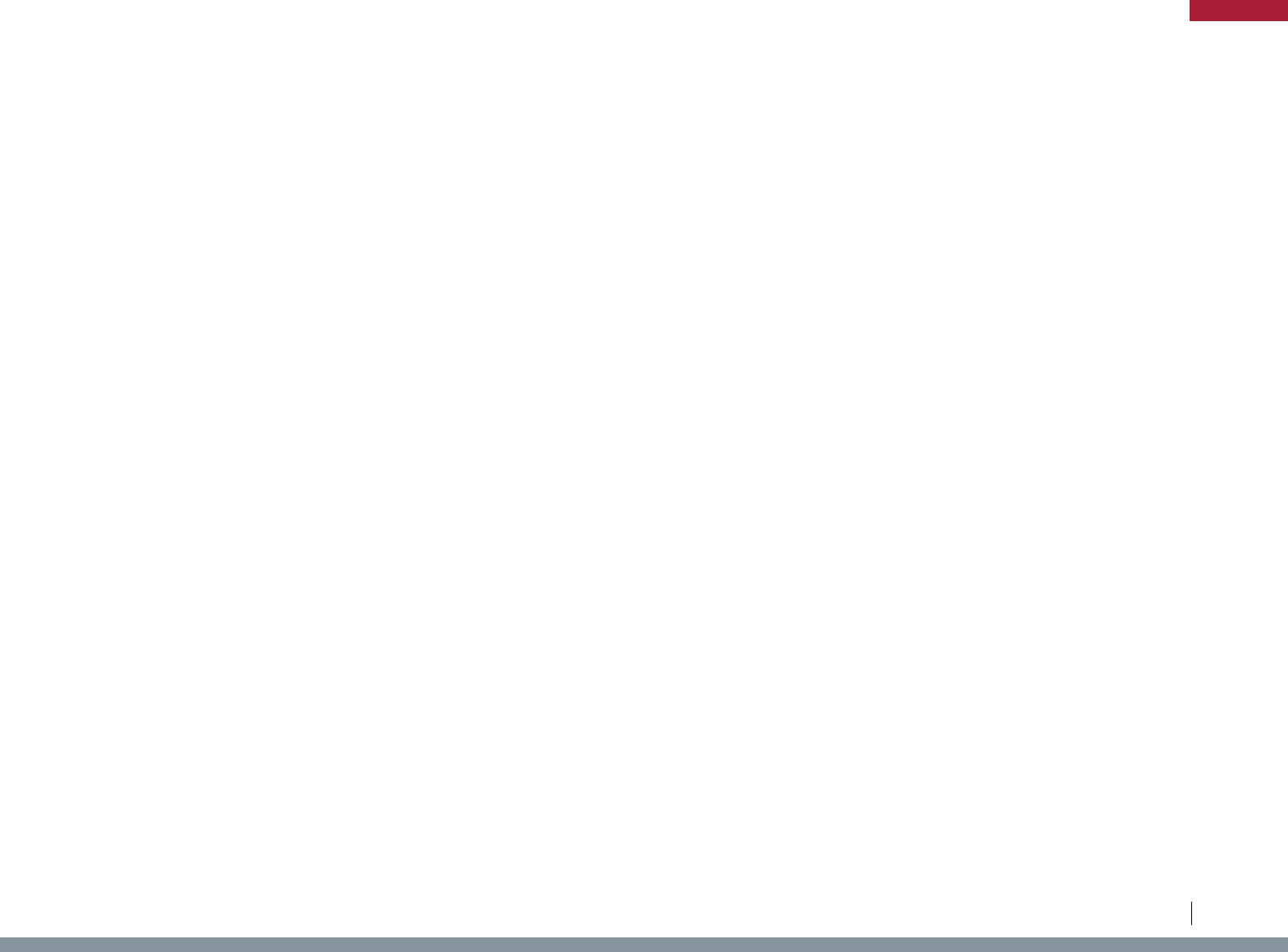
State Law/Regulation Potentially Impacted Industry Agricultural Product Regulation Type Purpose Description
MO Mo. Code Regs. tit.2, § 30-2.040 Livestock Livestock Importation
Disease/Pest
Prevention
Animal health requirements for exhibition
MO Mo. Code Regs. tit.2, § 30-8.010 Livestock Poultry Importation
Disease/Pest
Prevention
Requirements for the eradication of pullorum disease and fowl typhoid
in poultry
MO Mo. Code Regs. tit.2, § 70-11.040 Rice Rice Importation
Disease/Pest
Prevention
Bakanae Disease Restrictions
MO Mo. Code Regs. tit.2, § 70-11.060 Nuts Walnuts Importation
Disease/Pest
Prevention
Thousand Cankers Disease Restrictions
MO Mo. Code Regs. tit.2, § 70-13.025 Cotton Cotton Importation
Disease/Pest
Prevention
Boll weevil and pink bollworm restrictions
MO Mo. Code Regs. tit.2, § 70-45.005 Plants Plants Importation
Disease/Pest
Prevention
Noxious weed restrictions
MO Mo. Code Regs. tit.3, § 10-9.110 Aquaculture Fish Reporting
Disease/Pest
Prevention
Aquaculture Import and Disease Reporting
MO Mo. Rev. Stat. § 264.061 Livestock Bees Importation
Disease/Pest
Prevention
Importation Requirements for Bees
MO Mo. Rev. Stat. § 264.063 Livestock Bees Importation
Disease/Pest
Prevention
Bee Quarantine Authority
MS Miss. Code § 49-7-54 Live Animals Cervids Importation
Disease/Pest
Prevention
Prohibition on importation of live white-tailed deer
MS Miss. Code § 49-7-58 Live Animals Cervids Importation
Disease/Pest
Prevention
Temporary moratorium on importation of elk, red deer, mule deer,
black-tailed deer and other cervids designated as susceptible to
chronic wasting disease
MS Miss. Code § 69-25-101 Livestock Bees Importation
Disease/Pest
Prevention
Importation requirements for bees - certificate of inspection
MS Miss. Code § 69-25-23 Plants Plants, Plant
Products
Importation
Disease/Pest
Prevention
Infected localities outside of state - shipments from prohibited
MS Miss. Code § 69-37-25 Cotton Cotton Importation
Disease/Pest
Prevention
Quarantine and control of movement of articles from infested areas in
other states - Boll Weevil
MS Miss. Code § 75-39-7 Livestock Chicks Importation
Disease/Pest
Prevention
Labeling of containers of live baby chicks offered for sale
MS Miss. Code § 75-40-109 Live Animals Birds Recordkeeping
Disease/Pest
Prevention
Record requirements for exotic and pet bird dealers - reports,
inspection of records
MS Miss. Code R. § 2-1-3-01-121 Plants Plants, Plant
Products
Importation
Disease/Pest
Prevention
Restrictions on importation of plants and plant product - prohibition on
importation of products likely to introduce injurious insect pests, or
diseases
MS Miss. Code R. § 2-1-3-01-122 Plants Plants, Plant
Products
Importation
Disease/Pest
Prevention
Special permit process for importation of prohibited plants
MS Miss. Code R. § 2-1-3-01-125 Crops Sweet Potatoes Importation
Disease/Pest
Prevention
Sweet potato importation regulations - permit certificate tags
MS Miss. Code R. § 2-1-3-01-133 Nursery Stock Nursery Stock, Plants Importation
Disease/Pest
Prevention
Import restrictions on nursery stock and other plants - European brown
garden snail
MS Miss. Code R. § 2-1-3-01-137 Forestry Trees Importation
Disease/Pest
Prevention
Fumigation and certification of shipments of pine and hardwood
seedlings
MS Miss. Code R. § 2-1-3-01-140 Rice Rice Importation
Disease/Pest
Prevention
Prohibition on importation of certain rice plants, products, and
equipment from certain areas - Bakanae disease
MS Miss. Code R. § 2-1-3-06-103 Livestock Bees Importation
Disease/Pest
Prevention
Interstate movement of nucs or colonies or used beekeeping
equipment - bee import restrictions
127
Legislative Analysis of S.2019 / H.R.4417: The “Ending Agricultural Trade Suppression Act”
APPENDIX
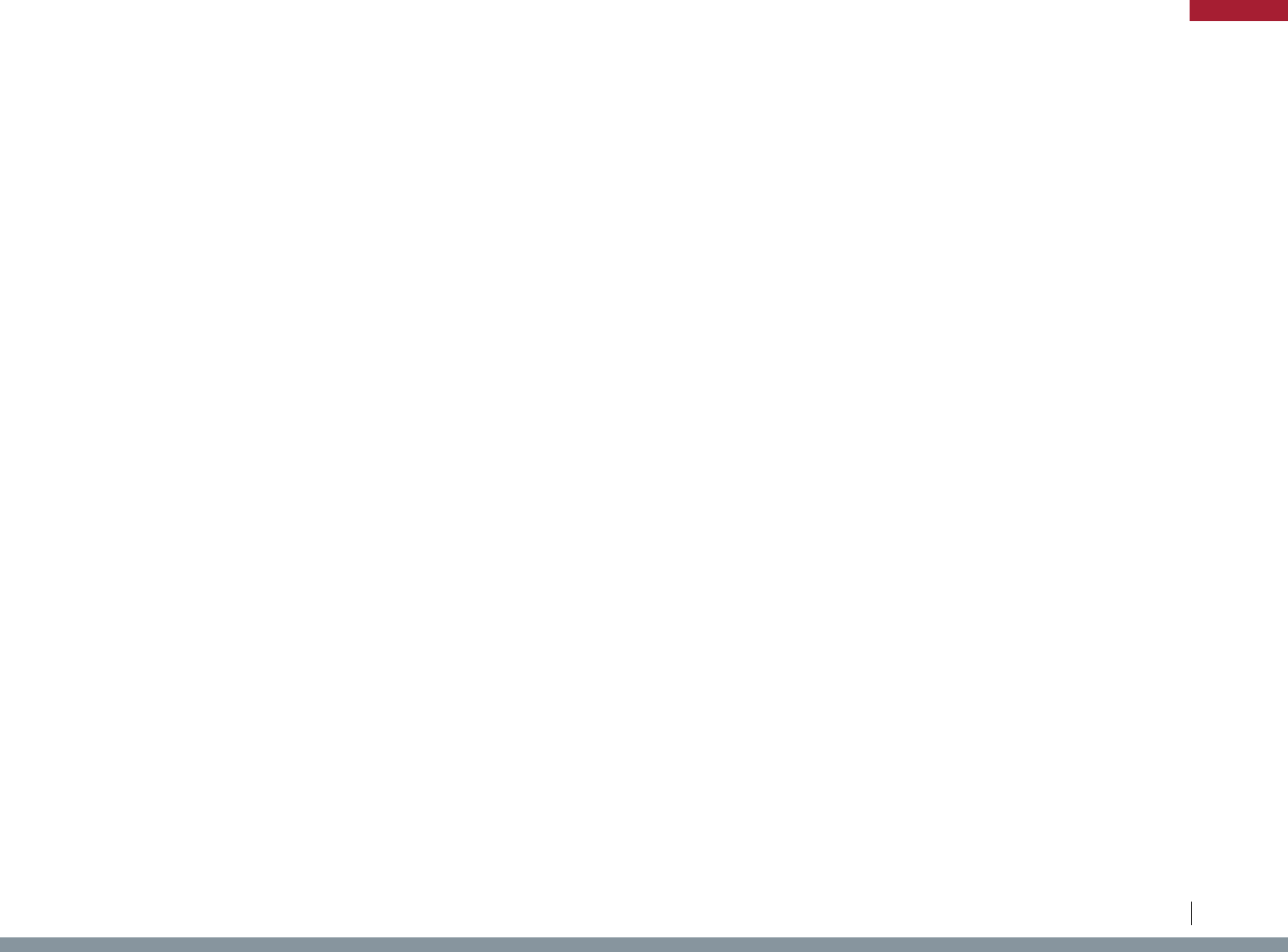
State Law/Regulation Potentially Impacted Industry Agricultural Product Regulation Type Purpose Description
MS Miss. Code R. § 2-1-3-06-104 Livestock Bees Importation
Disease/Pest
Prevention
Certificate of inspection standards - disease-free bee import
requirements
MS Miss. Code R. § 2-101-2-06-104 Live Animals Cervids Importation
Disease/Pest
Prevention
Import permit required for cervids - Chronic wasting disease
MS Miss. Code R. § 2-101-2-12 Livestock Livestock Importation
Disease/Pest
Prevention
Importation requirements for animals - valid certificates of veterinary
inspection required for all animals except livestock and poultry moving
directly to slaughter, other exceptions
MS Miss. Code R. § 2-101-2-12-105 Livestock Cattle Importation
Disease/Pest
Prevention
Cattle import requirements - Brucellosis, Tuberculosis, Trichomoniasis,
etc.
MS Miss. Code R. § 2-101-2-12-106 Livestock Equines Importation
Disease/Pest
Prevention
Equine import requirements - health certificate, Equine Infectious
Anemia
MS Miss. Code R. § 2-101-2-12-107 Livestock Swine Importation
Disease/Pest
Prevention
Importation requirements for swine - health certificate and permit,
Brucellosis, pseudorabies, etc.
MS Miss. Code R. § 2-101-2-12-108 Livestock Sheep, Goats Importation
Disease/Pest
Prevention
Sheep and goat import requirements - certificate of inspection, testing
requirements, scabies, tuberculosis, brucellosis, etc.
MS Miss. Code R. § 2-101-2-12-112 Livestock Poultry Importation
Disease/Pest
Prevention
Importation requirements for poultry - Avian Influenza, Pullorum-
typhoid, Mycoplasma gallisepticum, Mycoplasma synoviae, etc.
MS Miss. Code R. § 2-101-2-12-114 Livestock Exotic Livestock Importation
Disease/Pest
Prevention
Importation requirements for bison and exotic livestock including
camelids and cervids - permit and inspection certificate
MS Miss. Code R. § 2-101-2-121 Livestock Livestock Importation
Disease/Pest
Prevention
Emergency vesicular stomatitis entry regulation - prohibition on
importation of hooved animals quarantined for vesicular stomatitis
MS Miss. Code R. § 2-101-2-21 Livestock Livestock Importation
Disease/Pest
Prevention
Quarantines and stand-still orders - authority to restrict entry of livestock
MT Mont. Admin. R. 12.7.502 Aquaculture Fish Importation
Disease/Pest
Prevention
List of designated fisheries pathogens - importation request may be
delayed while the department determines the risk of a new pathogen
MT Mont. Admin. R. 12.7.505 Aquaculture Fish Importation
Disease/Pest
Prevention
Import permit must be obtained prior to any importation of fish or eggs -
live fish exhibiting clinical signs of a disease may not be imported into
Montana
MT Mont. Admin. R. 32.3.1303 Livestock Sheep, Goats Importation
Disease/Pest
Prevention
Importation requirements for sheep and goats - identification required
for some imported animals
MT Mont. Admin. R. 32.3.202 Livestock Livestock Importation
Disease/Pest
Prevention
Importation requirements for animals, animal semen, and animal
biologics - certificate of veterinary inspection or other approved
documentation, permit, documentation during transportation
MT Mont. Admin. R. 32.3.206 Livestock Livestock Importation
Disease/Pest
Prevention
Importation requirements for animals - documentation requirements
MT Mont. Admin. R. 32.3.212A Livestock Cattle Importation
Disease/Pest
Prevention
Importation requirements for cattle - Brucellosis vaccination of imported
cattle under four months of age
MT Mont. Admin. R. 32.3.216 Livestock Equines Importation
Disease/Pest
Prevention
Importation requirements for equines - official certificate of veterinary
inspection, equine infectious anemia test, etc.
MT Mont. Admin. R. 32.3.217 Livestock
Poultry, Hatching
Eggs
Importation
Disease/Pest
Prevention
Importation requirements for poultry and hatching eggs - health
certificate or VS Form 9-3, import permit, Pullorum testing, new or clean
shipping crates for eggs
MT Mont. Admin. R. 32.3.219 Livestock Swine Importation
Disease/Pest
Prevention
Importation requirements for swine - official health certificate, permit,
pseudorabies, brucellosis, garbage as feed ban
MT Mont. Admin. R. 32.3.220 Livestock Livestock Importation
Disease/Pest
Prevention
Importation requirements for bovine, ovine, porcine, elk semen -
negative test for enumerated diseases
MT Mont. Admin. R. 32.3.226 Livestock Ratites Importation
Disease/Pest
Prevention
Importation requirements for ostriches and other ratites - veterinary
inspection certificate, import permit, disease testing
128
Legislative Analysis of S.2019 / H.R.4417: The “Ending Agricultural Trade Suppression Act”
APPENDIX
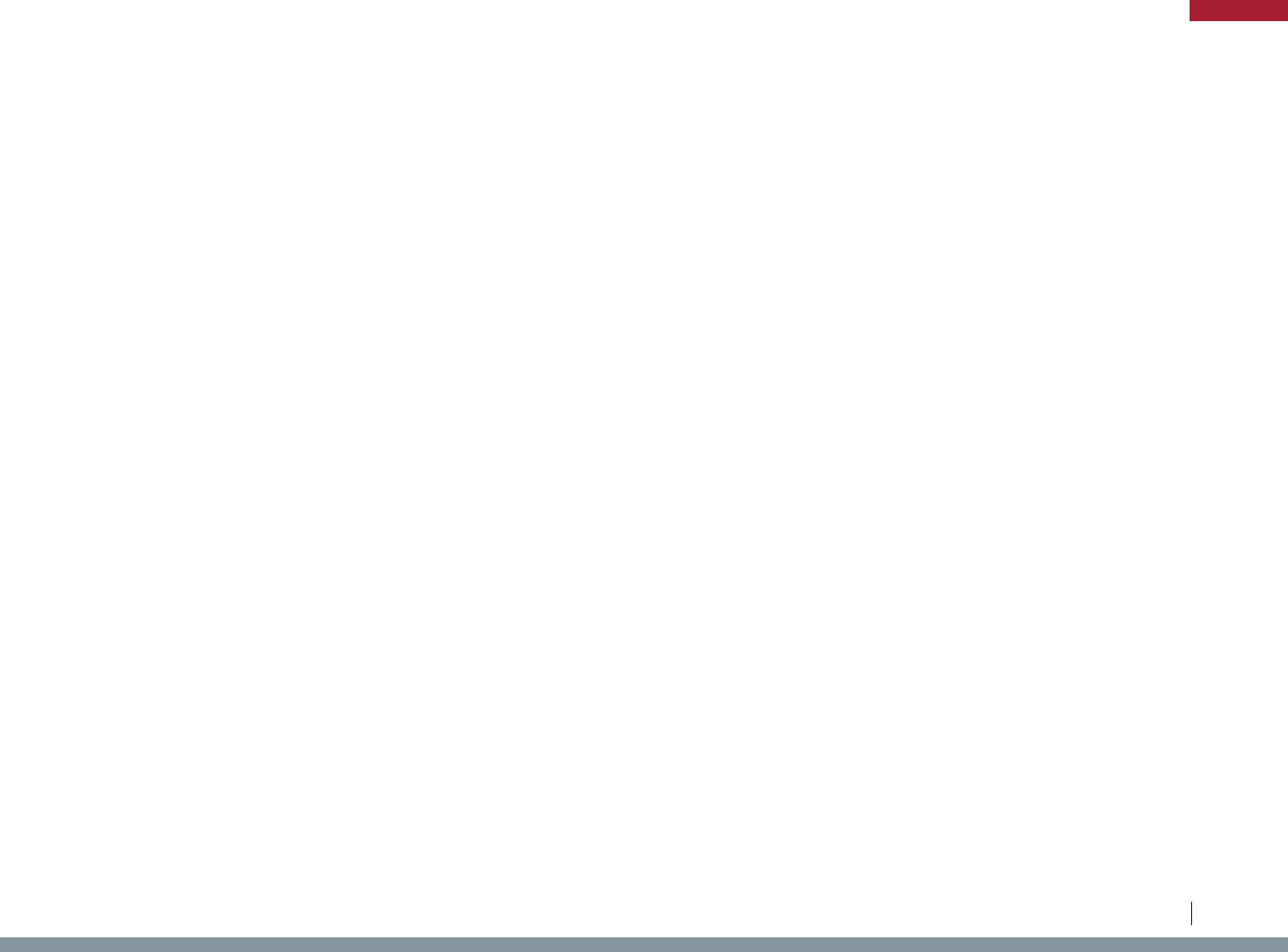
State Law/Regulation Potentially Impacted Industry Agricultural Product Regulation Type Purpose Description
MT Mont. Admin. R. 32.3.314 Livestock Swine Importation
Disease/Pest
Prevention
Movement of swine through licensed livestock markets and other
concentration points - identification requirements
MT Mont. Admin. R. 32.4.1309 Live Animals Cervids Importation
Disease/Pest
Prevention
Importation requirements for cervids - authority to deny entry, chronic
wasting disease
MT Mont. Admin. R. 32.4.403 Livestock Swine Importation
Disease/Pest
Prevention
Importation requirements for gametes and embryos from animals - bill
of sale, health certificate, importation permit where applicable
MT Mont. Admin. R. 32.4.502 Live Animals Cervids Importation
Disease/Pest
Prevention
Importation restricted or prohibited for certain alternative livestock
including reindeer, white-tailed deer
MT Mont. Admin. R. 4.12.106 Livestock Bees Importation
Disease/Pest
Prevention
Importation Requirements for Bees - permit required to bring into
Montana used beekeeping equipment, including nucs, feed honey,
and refuse for rendering
MT Mont. Admin. R. 4.12.3004 Plants Plants Importation
Disease/Pest
Prevention
Noxious weed restrictions - seed screenings originating outside of
Montana shall be conditioned to destroy the viability of all prohibited
noxious weed seeds defined by state law prior to transport through the
state or be transported in a tightly sealed container that will not allow
the loss of the weed seeds
MT Mont. Code § 80-6-202 Livestock Bees Importation
Disease/Pest
Prevention
Importation requirements for bees - pest-free and disease-free
certification required
MT Mont. Code § 80-6-203 Livestock Bees Importation
Disease/Pest
Prevention
Importation requirements for bees in packages or queen cages -
certificate of health issued by the official inspector of the state or
country from which they came required
MT Mont. Code § 87-3-210 Aquaculture Salmon Importation
Disease/Pest
Prevention
Importation of salmonid fish or eggs unlawful - exception, certification,
permit
NC 15A N.C. Admin. Code 10B.0101 Live Animals Live Animals Importation
Disease/Pest
Prevention
Importation requirements for certain wild or domestically raised
animals - permit, certificate, label
NC 2 N.C. Admin. Code 48A.0246 Livestock Bees Importation
Disease/Pest
Prevention
Importation requirements for bees - permits, certain species and
products prohibited
NC 2 N.C. Admin. Code 48A.0258 Livestock Bees Importation
Disease/Pest
Prevention
Authority to quarantine bees outside of state when introduction in-state
would present a hazard
NC 2 N.C. Admin. Code 48A.0263 Livestock Bees Licensing
Disease/Pest
Prevention
Permit requirements to sell bees, quarantine compliance
NC 2 N.C. Admin. Code 48A.0903 Crops Sweet Potatoes Importation
Disease/Pest
Prevention
Prohibition on movement of sweet potato weevils or infested sweet
potatoes or vines
NC 2 N.C. Admin. Code 48A.1504 Forestry
Trees, Shrubs, Other
Products
Importation
Disease/Pest
Prevention
Importation requirements for trees and shrubs with roots, plant
conveyances - certificate or permit, gypsy moth
NC 2 N.C. Admin. Code 48A.1704 Plants
Plants, Soil, Nursery
Stock
Importation
Disease/Pest
Prevention
Regulation of certain articles including soil, soil amendments, nursery
stock, used equipment to prevent noxious weeds
NC 2 N.C. Admin. Code 48A.1705 Plants
Plants, Soil, Nursery
Stock
Importation
Disease/Pest
Prevention
Conditions governing the movement of regulated articles to prevent
noxious weeds
NC 2 N.C. Admin. Code 52B.0201 Livestock Livestock Importation
Disease/Pest
Prevention
Prohibition on importation of any animal exposed to disease or under
quarantine, health certificate and permit requirements for importing
livestock
NC 2 N.C. Admin. Code 52B.0204 Livestock Cattle Importation
Disease/Pest
Prevention
Importation requirements for cattle - health certificate, permit,
brucellosis, cattle fever tick, scabies
NC 2 N.C. Admin. Code 52B.0206 Livestock Equines Importation
Disease/Pest
Prevention
Importation requirements for equines - health certificate, stallion permit,
equine infectious anemia
NC 2 N.C. Admin. Code 52B.0207 Livestock Swine Importation
Disease/Pest
Prevention
Importation requirements for swine - certificate of veterinary inspection,
identification, brucellosis, pseudorabies
129
Legislative Analysis of S.2019 / H.R.4417: The “Ending Agricultural Trade Suppression Act”
APPENDIX
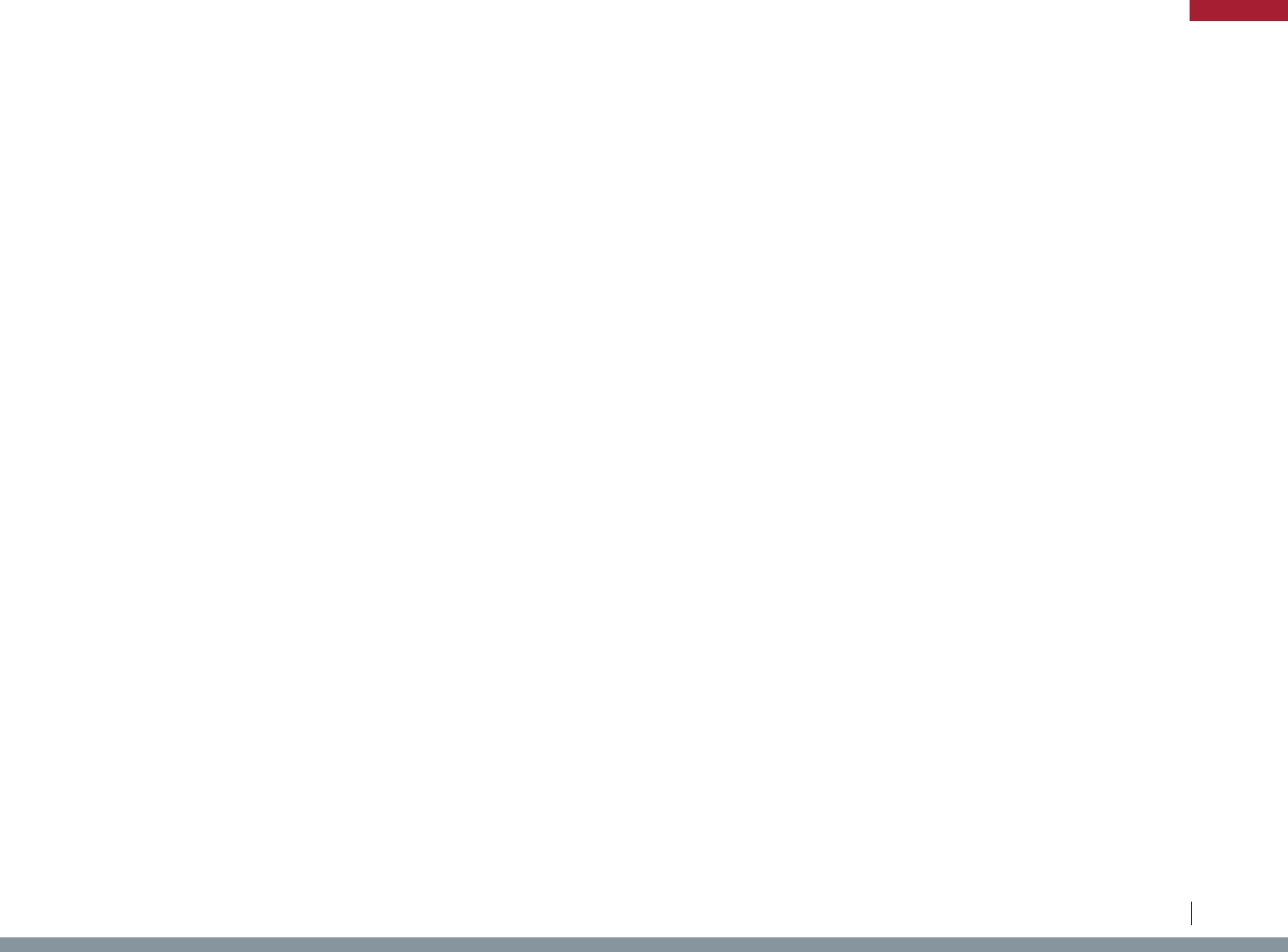
State Law/Regulation Potentially Impacted Industry Agricultural Product Regulation Type Purpose Description
NC 2 N.C. Admin. Code 52B.0209 Livestock Sheep, Goats Importation
Disease/Pest
Prevention
Importation requirements for sheep and goats - health certificate,
identification, scrapie
NC 2 N.C. Admin. Code 52B.0406 Livestock Equines Importation
Disease/Pest
Prevention
Importation requirements for equines - equine infectious anemia testing
NC 2 N.C. Admin. Code 52B.0603 Livestock Poultry Importation
Disease/Pest
Prevention
Importation requirements for poultry - certificate or label, pullorum-
typhoid, avian influenza
NC N.C. Gen. Stat. § 106-549.84 Livestock Livestock Importation
Disease/Pest
Prevention
Prohibition on importation of livestock under quarantine
NC N.C. Gen. Stat. § 106-65.78 Cotton Cotton Importation
Disease/Pest
Prevention
Penalties for importing certain articles infested with boll weevils
ND N.D. Admin. Code 30-03-02-06 Fish Fish Importation
Disease/Pest
Prevention
Fish stock import permit and disease certification
ND N.D. Admin. Code 48.1-04-01-01 Livestock Bison Importation
Disease/Pest
Prevention
Importation requirements for Bison - certificate of veterinary inspection
ND N.D. Admin. Code 48.1-04-01-02 Livestock Bison Importation
Disease/Pest
Prevention
Importation requirements for bison - disease testing, brucellosis,
scabies, Trichomonas foetus, tuberculosis
ND N.D. Admin. Code 48.1-05-01-01 Livestock Cattle Importation
Disease/Pest
Prevention
Cattle importation requirements - Certificate of veterinary inspection
ND N.D. Admin. Code 48.1-05-01-02 Livestock Cattle Importation
Disease/Pest
Prevention
Cattle importation disease testing requirements - Brucellosis, Scabies,
Trichomonas foetus, and Tuberculosis
ND N.D. Admin. Code 48.1-06-01-01 Livestock Horses Importation
Disease/Pest
Prevention
Horse importation requirements - Certificate of veterinary inspection
ND N.D. Admin. Code 48.1-06-01-02 Livestock Horses Importation
Disease/Pest
Prevention
Horse importation disease testing requirements - Equine infectious
anemia
ND N.D. Admin. Code 48.1-07-02-01 Livestock Elk Importation
Disease/Pest
Prevention
Elk importation requirements
ND N.D. Admin. Code 48.1-07-02-02 Livestock Elk Importation
Disease/Pest
Prevention
Elk genetic purity requirements for interstate and intrastate movement
ND N.D. Admin. Code 48.1-07-03-01 Livestock Elk Importation
Disease/Pest
Prevention
Elk importation disease testing requirements - Brucellosis, Chronic
wasting disease, Paratuberculosis (Johne's disease), and Tuberculosis
ND N.D. Admin. Code 48.1-08-01-02 Livestock Goats Importation
Disease/Pest
Prevention
Importation requirements for goats - Certificate of veterinary inspection
ND N.D. Admin. Code 48.1-08-01-03 Livestock Goats Importation
Disease/Pest
Prevention
Importation requirements for goats - disease testing, Brucellosis,
Scrapie, and Tuberculosis
ND N.D. Admin. Code 48.1-09-02-01 Livestock
Nontraditional
Livestock
Importation
Disease/Pest
Prevention
Importation requirements for certain nontraditional livestock species
ND N.D. Admin. Code 48.1-09-03-01 Livestock
Nontraditional
Livestock
Importation
Disease/Pest
Prevention
Importation disease testing requirements for nontraditional livestock
ND N.D. Admin. Code 48.1-09-06-01 Livestock
Nontraditional
Livestock
Importation
Disease/Pest
Prevention
Importation requirements for certain large, dangerous, and/or hybrid
wild animal species, including disease prevention measures
ND N.D. Admin. Code 48.1-10-01-01 Livestock Poultry Importation
Disease/Pest
Prevention
Importation requirements for poultry - Certificate of veterinary inspection
ND N.D. Admin. Code 48.1-10-01-03 Livestock Poultry Importation
Disease/Pest
Prevention
Importation requirements for poultry - Pullorum-typhoid disease
ND N.D. Admin. Code 48.1-11-01-02 Livestock Sheep Importation
Disease/Pest
Prevention
Importation requirements for sheep - certificate of veterinary inspection
130
Legislative Analysis of S.2019 / H.R.4417: The “Ending Agricultural Trade Suppression Act”
APPENDIX
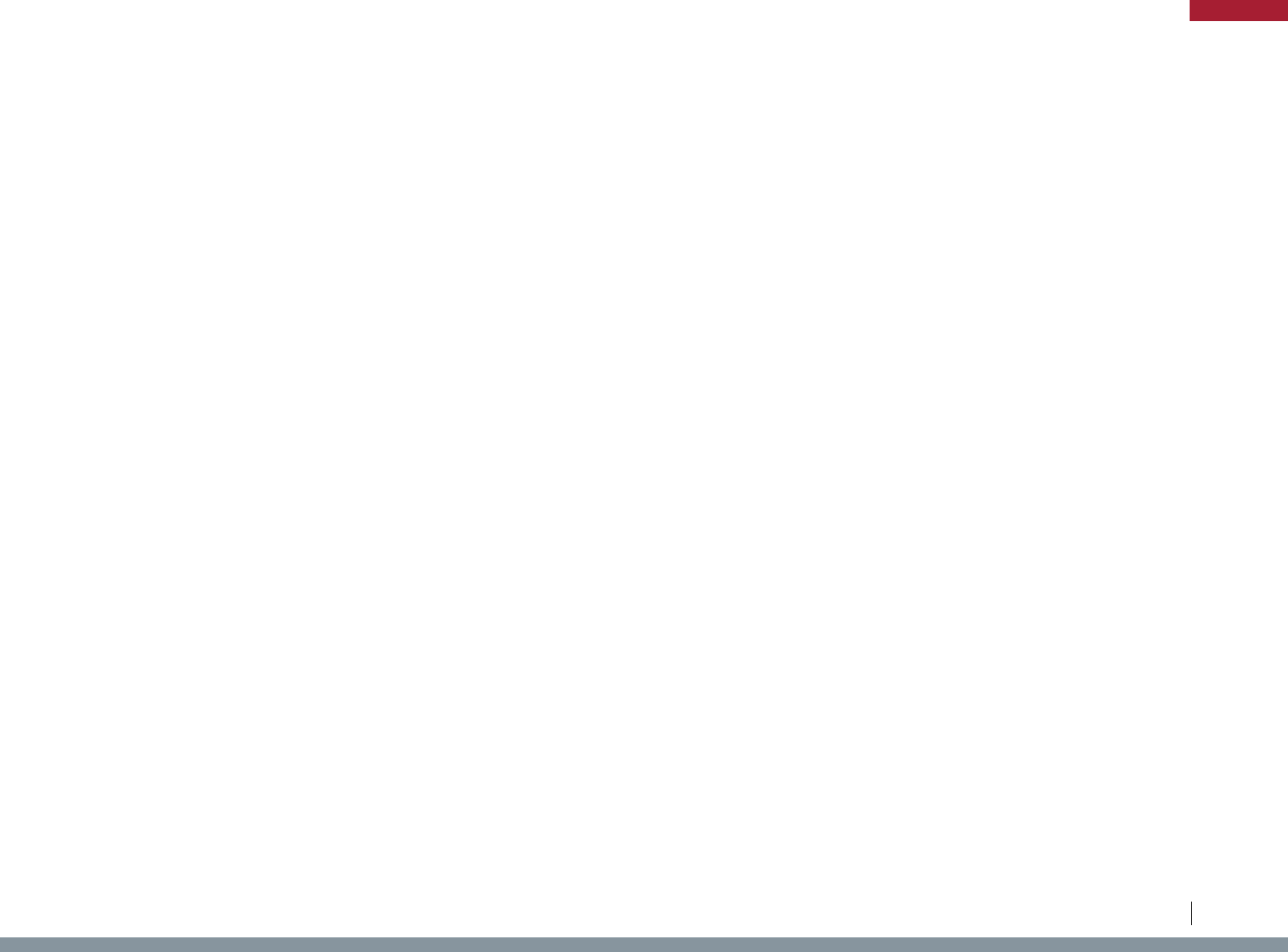
State Law/Regulation Potentially Impacted Industry Agricultural Product Regulation Type Purpose Description
ND N.D. Admin. Code 48.1-11-01-03 Livestock Sheep Importation
Disease/Pest
Prevention
Importation requirements for sheep - disease testing, Brucella ovis,
Scrapie
ND N.D. Admin. Code 48.1-12-01-02 Livestock Swine Importation
Disease/Pest
Prevention
Importation requirements for swine - Certificate of veterinary inspection
ND N.D. Admin. Code 48.1-12-01-03 Livestock Swine Importation
Disease/Pest
Prevention
Importation requirements for swine - disease testing, Brucellosis,
Pseudorabies
ND N.D. Admin. Code 48.1-13-02-01 Live Animals Live Animals Importation
Disease/Pest
Prevention
Importation requirements - Certificate of veterinary inspection for other
animals, including domesticated wild animals, game animals
ND N.D. Cent. Code § 36-14-04.1 Livestock Livestock Importation
Disease/Pest
Prevention
Importation requirements for livestock
NE 163 Neb. Admin. Code, ch. 2, § 001 Fish Fish Licensing
Disease/Pest
Prevention
Commercial put and take fisheries regulations
NE 163 Neb. Admin. Code, ch. 2, § 001.07 Fish Fish Importation
Disease/Pest
Prevention
Importation requirements for fish - unlawful to import any live fish
without being inspected and found free of Viral Hemorrhagic
Septicemia (VHS) and Spring Viremia of Carp (SVCV), largemouth
bass shall have been inspected and found free of Largemouth Bass
Virus (LMBV) and live yellow perch shall have been inspected and
found free of Heterosporis
NE 163 Neb. Admin. Code, ch. 2, § 002 Fish Fish Importation
Disease/Pest
Prevention
Non-resident fish dealers and exportation, importation and possession
regulations
NE 163 Neb. Admin. Code, ch. 2, § 005 Aquaculture Fish Reporting
Disease/Pest
Prevention
Aquaculture Import and Disease Reporting
NE 23 Neb. Admin. Code, ch. 11, § 009 Livestock Livestock Importation
Disease/Pest
Prevention
Importation restrictions for livestock - scabies
NE 25 Neb. Admin. Code, ch. 10, § 001 Plants Plants Importation
Disease/Pest
Prevention
Noxious weed restrictions
NE Neb. Rev. Stat. § 2-10,106 Nursery Stock Nursery Plants Importation
Disease/Pest
Prevention
Importation requirements for nursery stock - labeling requirement
NE Neb. Rev. Stat. § 81-2,170 Livestock Bees Importation
Disease/Pest
Prevention
Bee Quarantine Authority
NH N.H. Code Admin. R. Agr. 1601.02 Livestock Poultry Importation
Disease/Pest
Prevention
Interstate Movement Permit and Certificate of Veterinary Inspection
NH N.H. Code Admin. R. Agr. 1603.01 Livestock Poultry Importation
Disease/Pest
Prevention
License for transportation of live poultry for food
NH N.H. Code Admin. R. Agr. 1806.01 Livestock Bees Importation
Disease/Pest
Prevention
Bee Transportation Requirements
NH N.H. Code Admin. R. Agr. 2103.01 Live Animals Domestic Animals Importation
Disease/Pest
Prevention
No known infected or exposed animals to contagious disease
NH N.H. Code Admin. R. Agr. 2103.03 Livestock Livestock Importation
Disease/Pest
Prevention
Permits for animal importation and entry - Poultry, Swine, Buffalo,
Cervidae, Ratites
NH N.H. Code Admin. R. Agr. 2103.04 Livestock Livestock Importation
Disease/Pest
Prevention
Certificate of veterinary inspection
NH N.H. Code Admin. R. Agr. 2104.01 Livestock Cattle, Bison Importation
Disease/Pest
Prevention
Importation restrictions for cattle and bison - brucellosis
NH N.H. Code Admin. R. Agr. 2104.02 Livestock Cattle Importation
Disease/Pest
Prevention
Bovine Tuberculosis
131
Legislative Analysis of S.2019 / H.R.4417: The “Ending Agricultural Trade Suppression Act”
APPENDIX
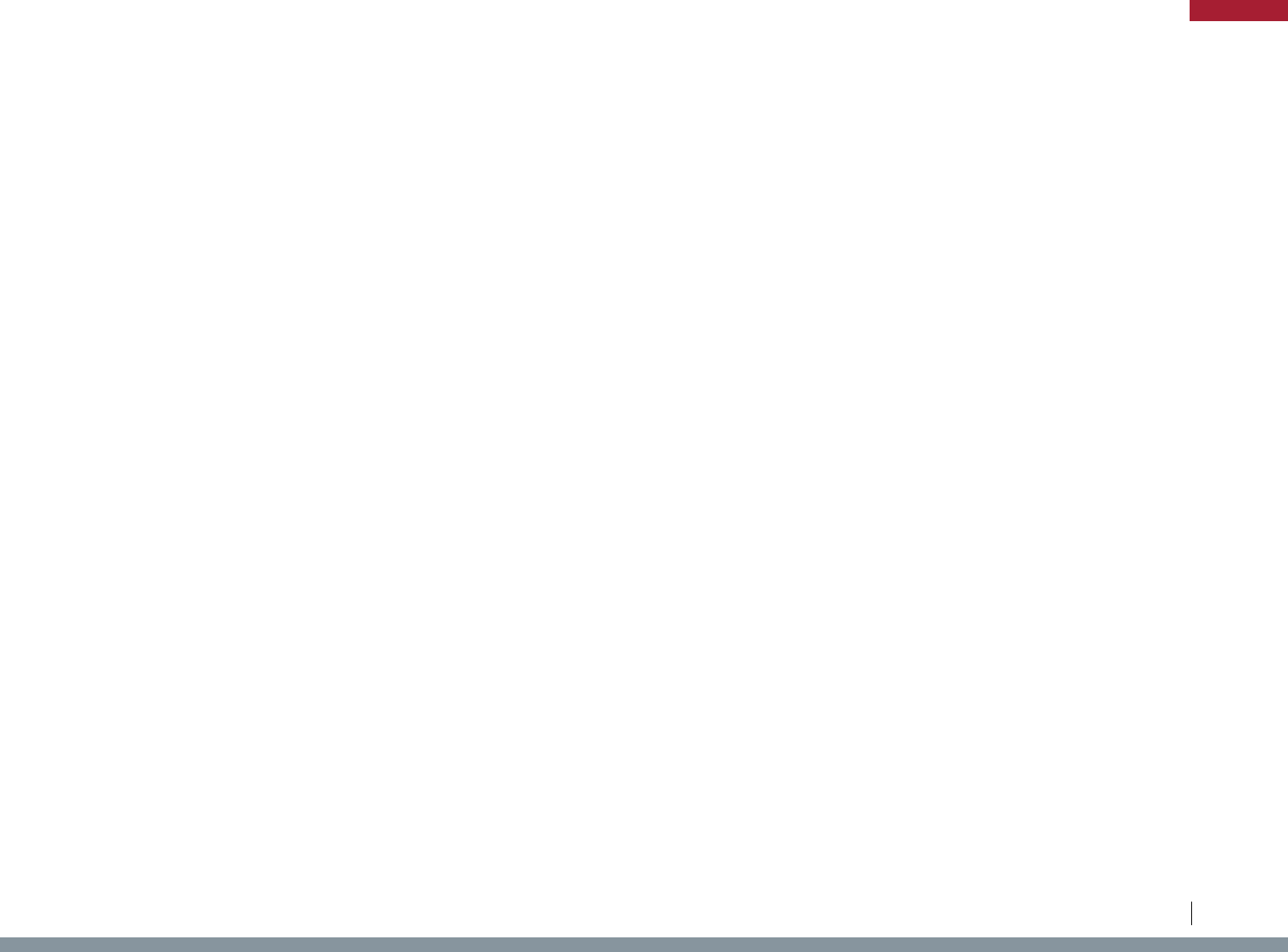
State Law/Regulation Potentially Impacted Industry Agricultural Product Regulation Type Purpose Description
NH N.H. Code Admin. R. Agr. 2108.02 Livestock Goats Importation
Disease/Pest
Prevention
Importation restrictions for goats - scabies
NH N.H. Code Admin. R. Agr. 2110.01 Livestock Swine Importation
Disease/Pest
Prevention
Permit and certificate of veterinary inspection required for entry
NH N.H. Code Admin. R. Agr. 2110.03 Livestock Swine Importation
Disease/Pest
Prevention
Importation requirements for swine - pseudorabies
NH N.H. Code Admin. R. Agr. 2113.02 Livestock Equines Importation
Disease/Pest
Prevention
Importation requirements for equines - Equine Infectious
AnemiaEquine Infectious Anemia
NH N.H. Code Admin. R. Agr. 2114.01 Livestock Poultry Importation
Disease/Pest
Prevention
Importation requirements for poultry - VS Form 9-3 for under 20 weeks,
permit and certificate of veterinary inspection for over 20 weeks
NH N.H. Code Admin. R. Agr. 2116.02 Livestock Cervids Importation
Disease/Pest
Prevention
Chronic Wasting Disease Restrictions
NH N.H. Code Admin. R. Agr. 3802.01 Plants Plants, Plant
Products
Prohibition
Disease/Pest
Prevention
Prohibited invasive species - importation restrictions
NH N.H. Code Admin. R. Fis. 309.01 Livestock Cervids Importation
Disease/Pest
Prevention
Chronic Wasting Disease Restrictions
NH N.H. Code Admin. R. Fis. 502.07 Fish Finfish Prohibition
Disease/Pest
Prevention
Importation requirements for fin fish for bait - must be licensed dealer
with import permit
NH N.H. Code Admin. R. Fis. 803.06 Live Animals Snakes and Turtles Importation
Disease/Pest
Prevention
Importation requirements for snakes and turtles
NH N.H. Code Admin. R. Fis. 803.09 Fish Fish Importation
Disease/Pest
Prevention
Diseased Fish
NH N.H. Rev. Stat. § 429:7 Livestock Bees Importation
Disease/Pest
Prevention
Importation Requirements for Bees and Certification
NJ N.J. Admin. Code § 2:20–2.2 Forestry
Currant Plants,
Gooseberry Plants,
Five-Needled Pines
Importation
Disease/Pest
Prevention
Import restrictions to prevent the spread of white pine blister rust
NJ N.J. Admin. Code § 2:20–6.1 Crops Grains Importation
Disease/Pest
Prevention
Khapra Beetle restrictions - harboring or importation of the Khapra
Beetle prohibited, means of conveyance subject to control measures
NJ N.J. Admin. Code § 2:3–1.2 Live Animals Live Animals Importation
Disease/Pest
Prevention
Importation requirements for animals - interstate health certificate to
accompany animals entering State
NJ N.J. Admin. Code § 2:3–1.3 Livestock Livestock Importation
Disease/Pest
Prevention
Importation requirements for livestock and poultry imported for
slaughter
NJ N.J. Admin. Code § 2:3–1.4 Livestock Livestock Importation
Disease/Pest
Prevention
Importation requirements - contents of Certificate of Veterinary
Inspection
NJ N.J. Admin. Code § 2:3–1.8 Livestock Livestock Importation
Disease/Pest
Prevention
Prohibition on importing diseased livestock and poultry - livestock and
poultry from herds or flocks under quarantine because of any
infectious, contagious and/or communicable disease, or livestock or
poultry currently classified as suspect because of any infectious,
contagious and/or communicable disease shall not be imported into
the State
NJ N.J. Admin. Code § 2:3–2.4 Livestock Cattle Importation
Disease/Pest
Prevention
Importation requirements for cattle - tuberculosis test for imported cattle
NJ N.J. Admin. Code § 2:3–2.8 Livestock Cattle Importation
Disease/Pest
Prevention
Importation requirements for cattle - brucellosis test for imported cattle
NJ N.J. Admin. Code § 2:3–3.3 Livestock Swine Importation
Disease/Pest
Prevention
Importation requirements for swine - brucellosis testing
132
Legislative Analysis of S.2019 / H.R.4417: The “Ending Agricultural Trade Suppression Act”
APPENDIX
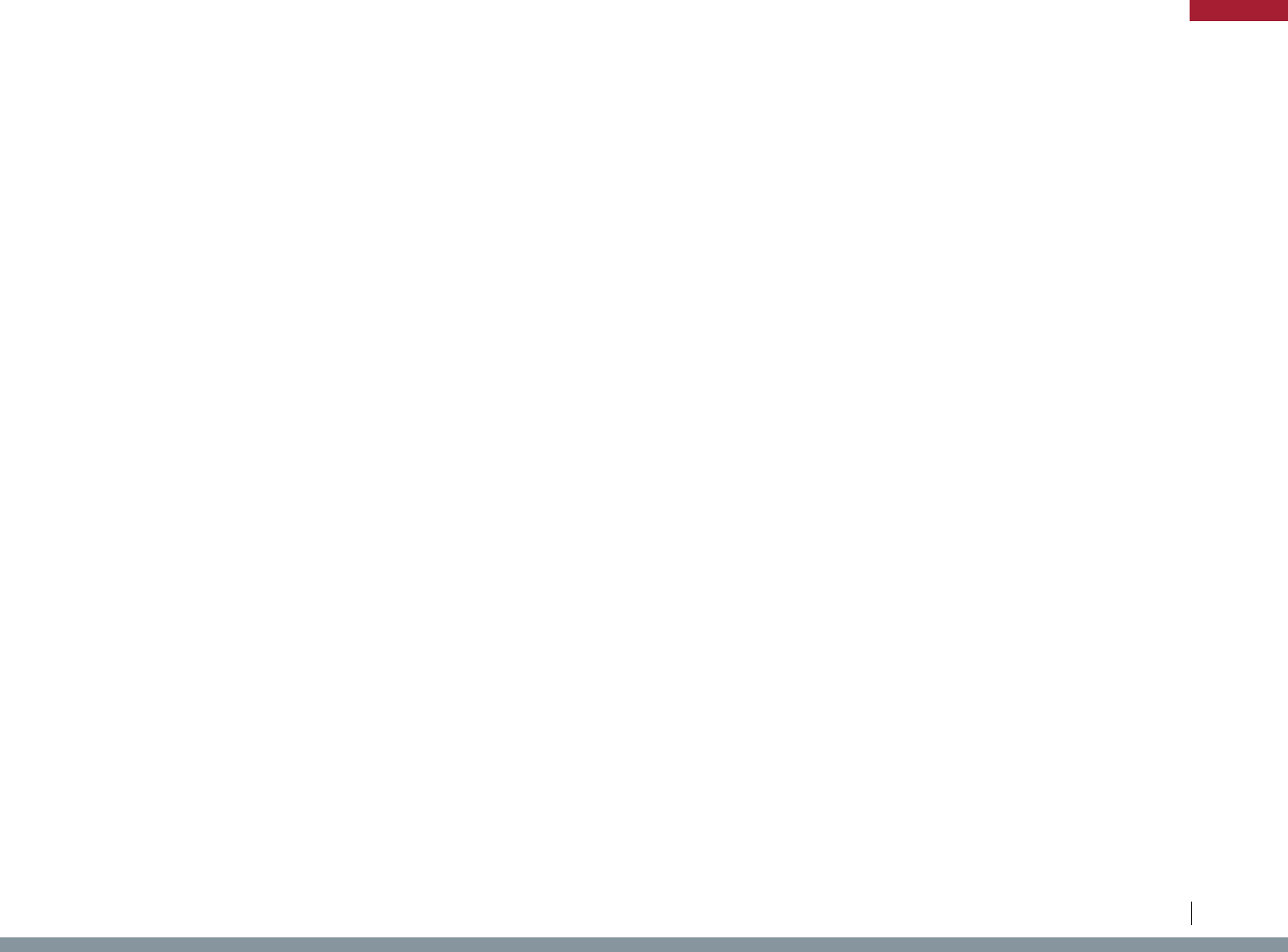
State Law/Regulation Potentially Impacted Industry Agricultural Product Regulation Type Purpose Description
NJ N.J. Admin. Code § 2:3–3.4 Livestock Swine Importation
Disease/Pest
Prevention
Importation requirements for swine - pseudorabies testing
NJ N.J. Admin. Code § 2:3–4.2 Livestock Sheep Importation
Disease/Pest
Prevention
Importation requirements for sheep - Bluetongue testing
NJ N.J. Admin. Code § 2:3–5.4 Livestock Goats Importation
Disease/Pest
Prevention
Importation requirements goats - tuberculosis test for imported goats
NJ N.J. Admin. Code § 2:3–6.2 Livestock Horses Importation
Disease/Pest
Prevention
Importation requirements for equines - equine infectious anemia testing
NJ N.J. Admin. Code § 2:3–7.4 Livestock
Poultry, Hatching
Eggs
Importation
Disease/Pest
Prevention
Importation requirements for poultry and hatching eggs - avian
influenza testing, permit or certificate of veterinary inspection
requirements
NJ N.J. Admin. Code § 2:3–8.6 Live Animals Cervids Importation
Disease/Pest
Prevention
Importation requirements for captive cervids - Chronic Wasting Disease
NJ N.J. Admin. Code § 2:3–9.3 Livestock Llamas, Alpacas Importation
Disease/Pest
Prevention
Importation requirements for llamas and alpacas - tuberculosis testing
NJ N.J. Admin. Code § 2:3–9.4 Livestock Llamas, Alpacas Importation
Disease/Pest
Prevention
Importation requirements for llamas and alpacas - brucellosis testing
NJ N.J. Rev. Stat. § 4:6-15 Livestock Bees Importation
Disease/Pest
Prevention
Importation requirements for bees - certificate of inspection required
NM N.M. Code R. § 19.35.7 Live Animals
Non-Domesticated
Animals
Importation
Disease/Pest
Prevention
Regulation of imporation of live non-domesticated animals
NM N.M. Code R. § 21.17.28 Nuts
Pecans, Other Nut
Trees
Importation
Disease/Pest
Prevention
Pecan Weevil Restrictions
NM N.M. Code R. § 21.17.42 Cotton Cotton Importation
Disease/Pest
Prevention
Boll weevil and pink bollworm restrictions
NM N.M. Code R. § 21.30.7.11 Livestock Horses Importation
Disease/Pest
Prevention
Importation of Stallions
NM N.M. Code R. § 21.30.7.13 Livestock Horses Importation
Disease/Pest
Prevention
Importation of Equine Semen and Embryo
NM N.M. Code R. § 21.32.4.10 Livestock Cattle, Bison Importation
Disease/Pest
Prevention
Importation requirements for cattle and bison - tuberculosis
NM N.M. Code R. § 21.32.4.12 Livestock Sheep, Goats Inspection
Disease/Pest
Prevention
Import requirements for sheep and goats
NM N.M. Code R. § 21.32.4.13 Livestock Equines Importation
Disease/Pest
Prevention
Import requirements for equidae
NM N.M. Code R. § 21.32.4.14 Livestock Swine Importation
Disease/Pest
Prevention
Import requirements for swine
NM N.M. Code R. § 21.32.4.15 Livestock Cattle Importation
Disease/Pest
Prevention
Importation restrictions for cattle - scabies
NM N.M. Code R. § 21.32.4.17 Livestock Sheep Importation
Disease/Pest
Prevention
Importation requirements for sheep - Scrapie
NM N.M. Code R. § 21.32.4.8 Livestock Cattle Importation
Disease/Pest
Prevention
Import regulations for cattle including bison
NM N.M. Code R. § 21.32.4.9 Livestock Cattle Importation
Disease/Pest
Prevention
Brucellosis test requirement for cattle and bison
NM N.M. Stat. § 76-9-11 Livestock Bees Importation
Disease/Pest
Prevention
Importation Requirements for Bees
133
Legislative Analysis of S.2019 / H.R.4417: The “Ending Agricultural Trade Suppression Act”
APPENDIX
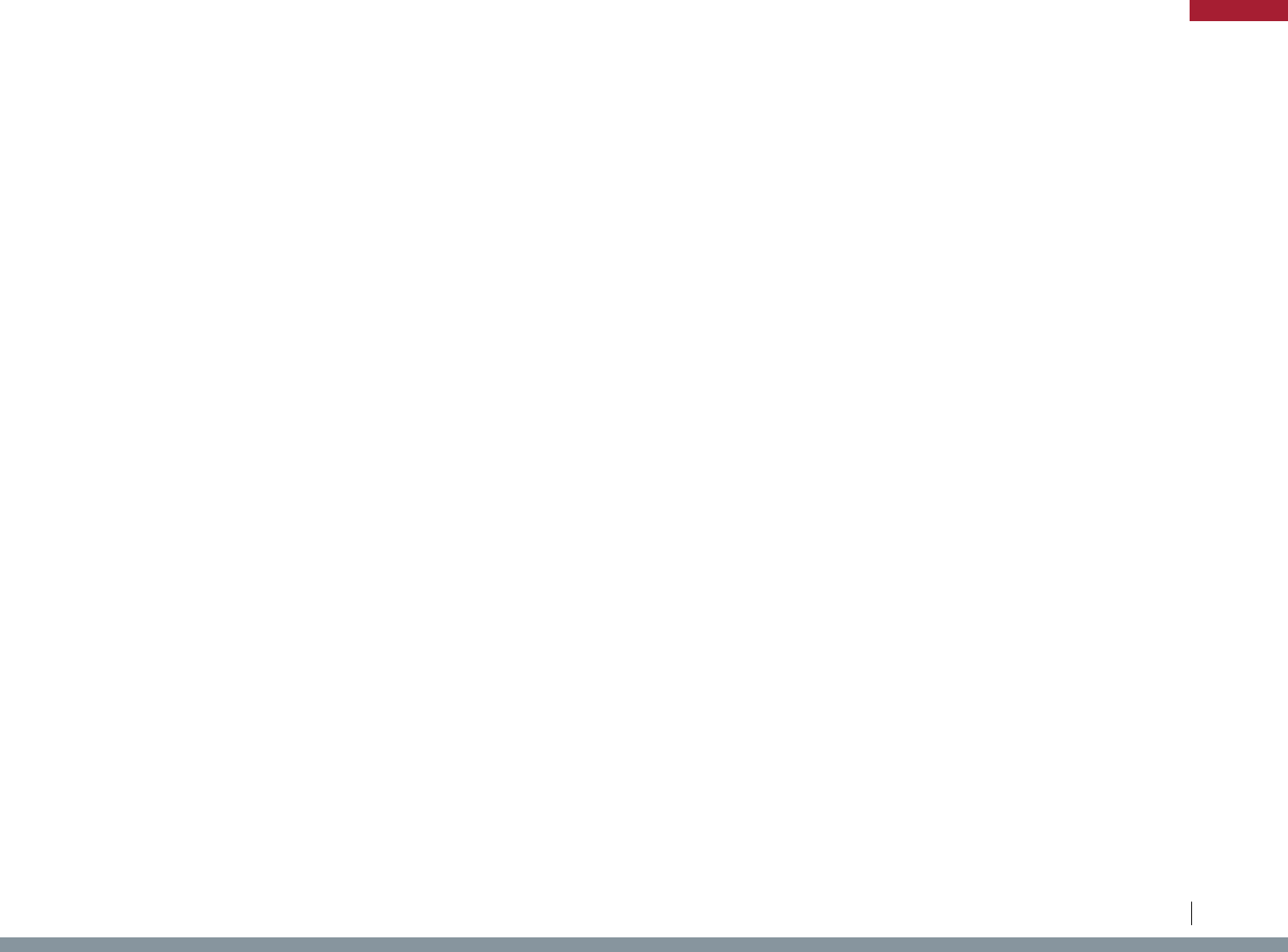
State Law/Regulation Potentially Impacted Industry Agricultural Product Regulation Type Purpose Description
NM N.M. Stat. § 77-5-4 Livestock Cattle Importation
Disease/Pest
Prevention
Bovine Tuberculosis
NV Nev. Admin. Code § 441A.475 Livestock Livestock Importation
Disease/Pest
Prevention
Importation requirements
NV Nev. Admin. Code § 571.030 Livestock Horses Importation
Disease/Pest
Prevention
Importation requirements for horses - certificate of veterinary
inspection, Equine Infectious Anemia testing
NV Nev. Admin. Code § 571.050 Livestock Swine Importation
Disease/Pest
Prevention
Importation requirements for swine - pseudorabies
NV Nev. Admin. Code § 571.060 Livestock Sheep, Goats Importation
Disease/Pest
Prevention
Importation restrictions for sheep and goats - scabies
NV Nev. Admin. Code § 571.095 Livestock Livestock Importation
Disease/Pest
Prevention
Transportation of livestock - stops for inspection, possession of health
certificates, sanitation
NV Nev. Rev. Stat. § 552.212 Livestock Bees Importation
Disease/Pest
Prevention
Importation Requirements for Bees
NV Nev. Rev. Stat. § 571.210 Live Animals Cervids Importation
Disease/Pest
Prevention
Importation of cervids - chronic wasting disease
NY N.Y. Agric. & Mkts. Law § 173-C Livestock Bees Importation
Disease/Pest
Prevention
Importation requirements for bees
NY
N.Y. Comp. Codes R. & Regs. tit. 1, §
127.5
Crops Potatoes Importation
Disease/Pest
Prevention
Golden nematodes restrictions
NY
N.Y. Comp. Codes R. & Regs. tit. 1, §
132.1
Crops Vegetables Importation
Disease/Pest
Prevention
Vegetable plant quarantine order
NY
N.Y. Comp. Codes R. & Regs. tit. 1, §
133.4
Crops Vegetables Importation
Disease/Pest
Prevention
Certification of vegetable plants required for importation
NY
N.Y. Comp. Codes R. & Regs. tit. 1, §
138.1
Fruit Grapes Importation
Disease/Pest
Prevention
Grape root stock and grape wood importation - statement of freedom
from viruses
NY
N.Y. Comp. Codes R. & Regs. tit. 1, §
45.2
Livestock Poultry Importation
Disease/Pest
Prevention
Transportation requirements for importation of poultry - Avian Influenza
NY
N.Y. Comp. Codes R. & Regs. tit. 1, §
45.6
Livestock Poultry Importation
Disease/Pest
Prevention
Importation requirements for poultry - Avian influenza control measures
NY
N.Y. Comp. Codes R. & Regs. tit. 1, §
53.2
Livestock Cattle Importation
Disease/Pest
Prevention
Importation requirements for cattle - Veterinary inspection certificate,
shipper statement
NY
N.Y. Comp. Codes R. & Regs. tit. 1, §
53.3
Livestock Cattle Importation
Disease/Pest
Prevention
Importation of cattle to a specifically approved stockyard or a
recognized slaughtering establishment
NY
N.Y. Comp. Codes R. & Regs. tit. 1, §
53.4
Livestock Cattle Importation
Disease/Pest
Prevention
Importation of cattle to be fed for slaughter
NY
N.Y. Comp. Codes R. & Regs. tit. 1, §
53.5
Livestock Cattle Importation
Disease/Pest
Prevention
Importation of cattle for any purpose other than immediate slaughter or
feeding for slaughter
NY
N.Y. Comp. Codes R. & Regs. tit. 1, §
62.2
Livestock
Sheep, Goats,
Llamas, Deer
Importation
Disease/Pest
Prevention
Importation requirements for sheep, goats, llamas, and deer
NY
N.Y. Comp. Codes R. & Regs. tit. 1, §
62.3
Livestock Sheep, Goats Importation
Disease/Pest
Prevention
Importation requirements for sheep, goats - certificate of veterinary
inspection required except for those moved to slaughter
NY
N.Y. Comp. Codes R. & Regs. tit. 1, §
62.4
Livestock Sheep, Goats Importation
Disease/Pest
Prevention
Importation of sheep and goats to a specifically approved stockyard or
recognized slaughtering establishment
NY
N.Y. Comp. Codes R. & Regs. tit. 1, §
62.6
Livestock Llamas Importation
Disease/Pest
Prevention
Importation requirements for llamas - certificate of veterinary inspection
134
Legislative Analysis of S.2019 / H.R.4417: The “Ending Agricultural Trade Suppression Act”
APPENDIX
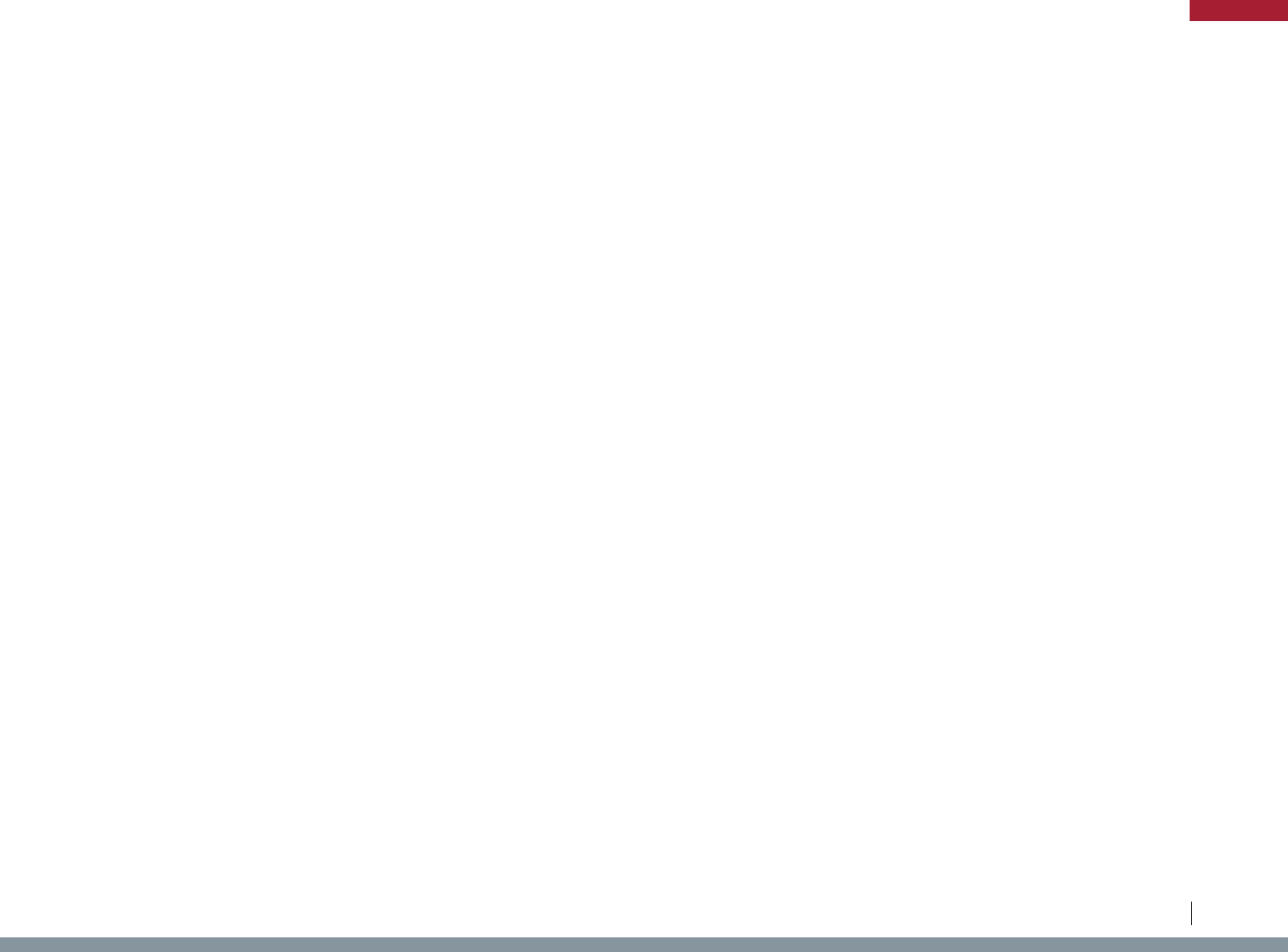
State Law/Regulation Potentially Impacted Industry Agricultural Product Regulation Type Purpose Description
NY
N.Y. Comp. Codes R. & Regs. tit. 1, §
62.7
Live Animals Deer Importation
Disease/Pest
Prevention
Importation requirements for deer - certificate of veterinary inspection,
permit
NY
N.Y. Comp. Codes R. & Regs. tit. 1, §
63.3
Livestock Swine Importation
Disease/Pest
Prevention
Importation requirements for swine - certification of health of swine
NY
N.Y. Comp. Codes R. & Regs. tit. 1, §
63.4
Livestock Swine Importation
Disease/Pest
Prevention
Importation of breeding swine and swine for exhibition - brucellosis,
pseudorabies
NY
N.Y. Comp. Codes R. & Regs. tit. 1, §
63.5
Livestock Swine Importation
Disease/Pest
Prevention
Importation of feeder swine - pseudorabies
NY
N.Y. Comp. Codes R. & Regs. tit. 1, §
63.7
Livestock Swine Importation
Disease/Pest
Prevention
Importation of swine for immediate slaughter - health certificate or
waybill
NY
N.Y. Comp. Codes R. & Regs. tit. 1, §
64.1
Livestock Horses Importation
Disease/Pest
Prevention
Importation requirements for horses - certificate of veterinary
inspection, Equine Interstate Passport
NY
N.Y. Comp. Codes R. & Regs. tit. 1, §
64.11
Livestock Horses Importation
Disease/Pest
Prevention
Importation of thoroughbred stallions for breeding - test for equine viral
arteritis required
NY
N.Y. Comp. Codes R. & Regs. tit. 1, §
64.4
Livestock Horses Importation
Disease/Pest
Prevention
Importation requirements for horses and other equidae - disease testing
NY
N.Y. Comp. Codes R. & Regs. tit. 1, §
64.5
Livestock Horses Importation
Disease/Pest
Prevention
Importation for immediate slaughter
NY
N.Y. Comp. Codes R. & Regs. tit. 6, §
192.1
Fruit
Currants,
Gooseberries
Importation
Disease/Pest
Prevention
Importation restrictions on currants and gooseberries - White Pine
Blister Rust prevention measures
NY N.Y. Envtl. Conserv. Law § 11-0511 Live Animals Wildlife, Fish Importation
Disease/Pest
Prevention
Importation requirements for wildlife, fish
OH Ohio Admin. Code 901:1-1-01 Live Animals Cervids Importation
Disease/Pest
Prevention
Chronic Wasting Disease Restrictions
OH Ohio Admin. Code 901:1-11-04 Livestock Swine Importation
Disease/Pest
Prevention
Importation requirements for swine - pseudorabies
OH Ohio Admin. Code 901:1-11-06 Livestock Swine Importation
Disease/Pest
Prevention
Importation requirements for swine - pseudorabies
OH Ohio Admin. Code 901:1-11-07 Livestock Swine Importation
Disease/Pest
Prevention
Importation requirements for swine - pseudorabies
OH Ohio Admin. Code 901:1-17-01 Livestock Livestock Importation
Disease/Pest
Prevention
Inspection and Health of Livestock Imported into Ohio
OH Ohio Admin. Code 901:1-17-03 Livestock Cattle, Bison Importation
Disease/Pest
Prevention
Import Requirements for breeding cattle, bison
OH Ohio Admin. Code 901:1-17-04 Livestock Cattle Importation
Disease/Pest
Prevention
Bovine Tuberculosis
OH Ohio Admin. Code 901:1-17-06 Livestock Goats Importation
Disease/Pest
Prevention
Import Requirements for Goats
OH Ohio Admin. Code 901:1-17-08 Livestock Sheep Importation
Disease/Pest
Prevention
Importation requirements for sheep
OH Ohio Admin. Code 901:1-17-11 Livestock
Poultry, Hatching
Eggs
Importation
Disease/Pest
Prevention
Importation requirements for poultry - certificate of veterinary
inspection, pullorum-fowl typhoid disease testing for poultry
OH Ohio Admin. Code 901:1-17-13 Aquaculture Salmon Importation
Disease/Pest
Prevention
Infectious Salmon Anemia
OH Ohio Admin. Code 901:1-17-14 Aquaculture Fish Reporting
Disease/Pest
Prevention
Imported Fish - Testing and inspection requirements
135
Legislative Analysis of S.2019 / H.R.4417: The “Ending Agricultural Trade Suppression Act”
APPENDIX
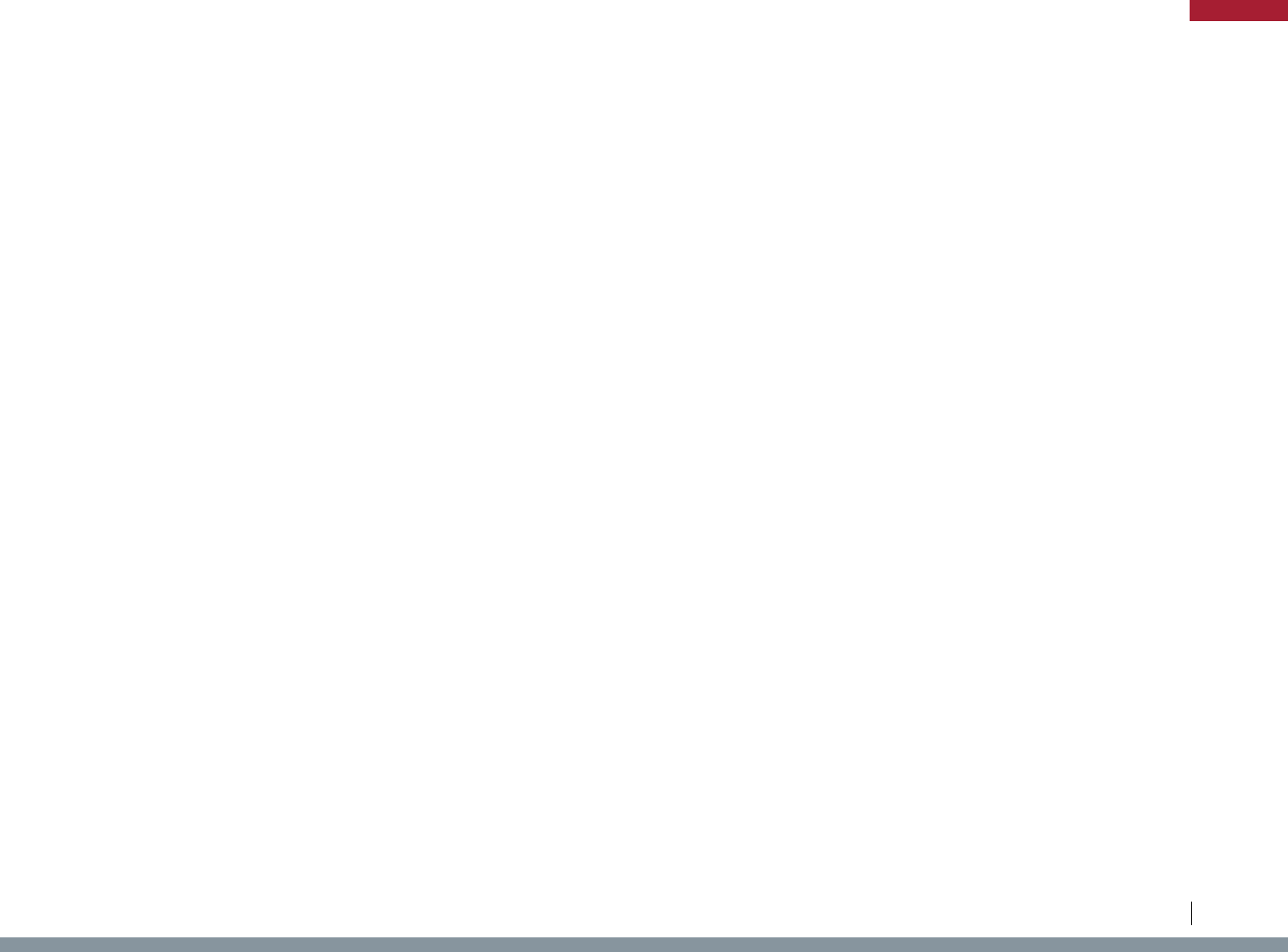
State Law/Regulation Potentially Impacted Industry Agricultural Product Regulation Type Purpose Description
OH Ohio Admin. Code 901:1-19-05 Livestock Horses Importation
Disease/Pest
Prevention
Importation requirements for horses - Equine Infectious Anemia
OH Ohio Admin. Code 901:1-21-02 Livestock Poultry Importation
Disease/Pest
Prevention
Importation requirements for poultry - Avian Influenza
OH Ohio Admin. Code 901:1-5-03 Livestock Cattle Importation
Disease/Pest
Prevention
Importation restrictions for cattle - brucellosis
OH Ohio Admin. Code 901:5-27-06 Plants Plants, Seeds Importation
Disease/Pest
Prevention
Noxious weed and seed restrictions
OH Ohio Admin. Code 901:5-48-04 Forestry Hemlock Trees Importation
Disease/Pest
Prevention
Woolly Adelgid Restrictions
OH Ohio Admin. Code 901:5-52-03 Forestry Trees Importation
Disease/Pest
Prevention
Importation restrictions - Gypsy Moth, Asian Longhorned Beetle
OH Ohio Rev. Code § 909.10 Livestock Bees Importation
Disease/Pest
Prevention
Importation Requirements for Bees
OH Ohio Rev. Code § 927.681 Plants Plants Prohibition
Disease/Pest
Prevention
Plant Pests
OK Okla. Admin. Code § 35:15-11-1 Livestock Livestock Importation
Disease/Pest
Prevention
Certificate of veterinary inspection for importation, with exceptions
OK Okla. Admin. Code § 35:15-11-41 Livestock Poultry Importation
Disease/Pest
Prevention
Importation requirements for poultry - Avian Influenza
OK Okla. Admin. Code § 35:15-15-111 Livestock Horses Importation
Disease/Pest
Prevention
General requirements for Equidae entering Oklahoma
OK Okla. Admin. Code § 35:15-19-4 Livestock Poultry Importation
Disease/Pest
Prevention
Importation and exhibition requirements for poultry
OK Okla. Admin. Code § 35:15-19-5 Livestock Poultry Importation
Disease/Pest
Prevention
Live bird imports from Avian Influenza quarantined states
OK Okla. Admin. Code § 35:15-22-31 Livestock Swine Importation
Disease/Pest
Prevention
Importation requirements for commercial production breeding and
feeding swine
OK Okla. Admin. Code § 35:15-22-33 Livestock Swine Importation
Disease/Pest
Prevention
Importation requirements for transitional production swine
OK Okla. Admin. Code § 35:15-38-3 Livestock Bovidae Importation
Disease/Pest
Prevention
Importation requirements for reproductive bovine females
OK Okla. Admin. Code § 35:15-40-90.1 Livestock Cattle Importation
Disease/Pest
Prevention
Requirements for cattle entering Oklahoma from a modified accredited
advanced state or zone - cattle positive for tuberculosis prohibited,
permit, certificate of veterinary inspection
OK Okla. Admin. Code § 35:30-13-9 Nursery Stock Nursery Plants Importation
Disease/Pest
Prevention
Fire Ant Restrictions
OK Okla. Admin. Code § 35:30-14-2 Cotton Cotton Importation
Disease/Pest
Prevention
Boll weevil and pink bollworm restrictions
OK Okla. Admin. Code § 35:30-36-13 Plants Plants Importation
Disease/Pest
Prevention
Oklahoma Noxious Weed List
OK Okla. Admin. Code § 35:30-4-1 Nuts Walnuts Importation
Disease/Pest
Prevention
Thousand Cankers Disease Restrictions
OK Okla. Admin. Code § 35:30-6-3 Forestry Ash Trees Importation
Disease/Pest
Prevention
Importation Restrictions Related to Emerald Ash Borer
OK Okla. Admin. Code § 35:50-1-1 Aquaculture
Fish, Frogs, Other
Aquatic Species
Importation
Disease/Pest
Prevention
Aquaculture Import and Disease Reporting
136
Legislative Analysis of S.2019 / H.R.4417: The “Ending Agricultural Trade Suppression Act”
APPENDIX
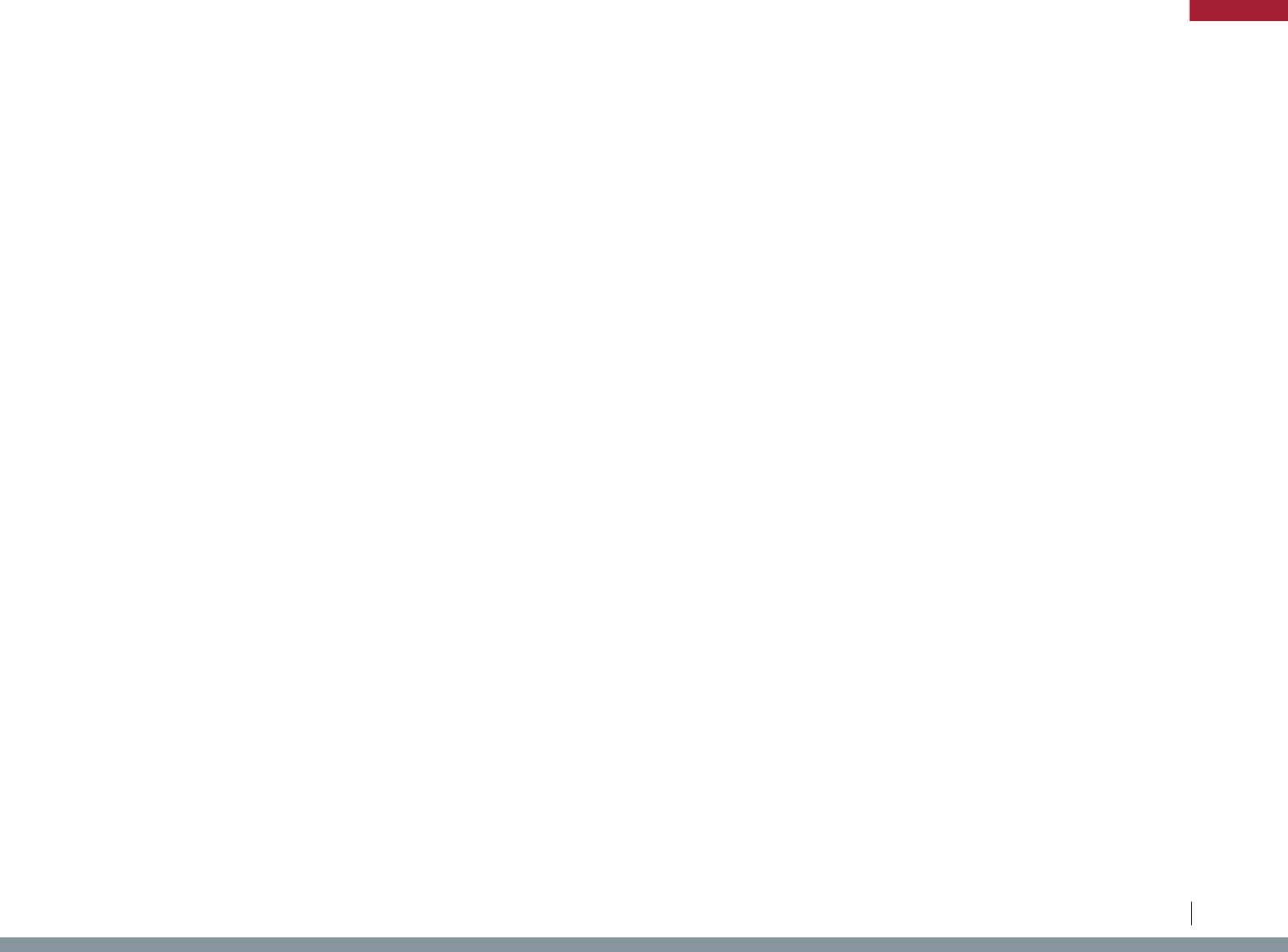
State Law/Regulation Potentially Impacted Industry Agricultural Product Regulation Type Purpose Description
OK Okla. Admin. Code § 800:25-24-3 Live Animals Cervids Importation
Disease/Pest
Prevention
Chronic Wasting Disease Restrictions
OK Okla. Stat. tit. 2, § 3-106 Livestock Bees Certification
Disease/Pest
Prevention
Sale and transport of apiaries, equipment, bees, or hives
OK Okla. Stat. tit. 2, § 3-117.1 Livestock Bees Importation
Disease/Pest
Prevention
Requirements for transport of bees into state
OK Okla. Stat. tit. 2, § 6-151 Livestock Livestock Importation
Disease/Pest
Prevention
Health certificate or permit required for shipment of livestock into state--
Responsible parties--Exemptions--Diseased livestock
OR Or. Admin. R. 333-018-0015 Livestock Poultry Importation
Disease/Pest
Prevention
Importation requirements
OR Or. Admin. R. 603-011-0212 Livestock Livestock Importation
Disease/Pest
Prevention
Importation requirements
OR Or. Admin. R. 603-011-0255 Live Animals Live Animals Importation
Disease/Pest
Prevention
Importation of Animals Into Oregon; General Provisions
OR Or. Admin. R. 603-011-0256 Livestock Livestock Importation
Disease/Pest
Prevention
Importation of Bison, Horses, Cattle, Sheep, Goats, Swine; Preventing
Vesicular Stomatitis
OR Or. Admin. R. 603-011-0265 Livestock Cattle Importation
Disease/Pest
Prevention
Bovine Tuberculosis
OR Or. Admin. R. 603-011-0305 Livestock Horses Importation
Disease/Pest
Prevention
Importation requirements for horses - Equine Infectious Anemia
OR Or. Admin. R. 603-011-0310 Livestock Swine Importation
Disease/Pest
Prevention
Importation requirements for swine
OR Or. Admin. R. 603-011-0375 Livestock Poultry Importation
Disease/Pest
Prevention
Importation requirements for poultry - Avian Influenza
OR Or. Admin. R. 603-011-0382 Live Animals Cervids, Wildlife Importation
Disease/Pest
Prevention
Chronic Wasting Disease Restrictions
OR Or. Admin. R. 603-011-0392 Livestock Sheep, Goats Importation
Disease/Pest
Prevention
Importation restrictions for sheep and goats - scabies
OR Or. Admin. R. 603-011-0510 Livestock Livestock Importation
Disease/Pest
Prevention
Importation restrictions - brucellosis
OR Or. Admin. R. 603-052-1221 Fruit Grapes Importation
Disease/Pest
Prevention
Pierce’s Disease and the Glassy-winged Sharpshooter Restrictions
OR Or. Admin. R. 635-007-0970 Aquaculture Salmon Importation
Disease/Pest
Prevention
Infectious Salmon Anemia
OR Or. Admin. R. 635-007-0975 Aquaculture Salmon Importation
Disease/Pest
Prevention
Infectious Salmon Anemia
PA 3 Pa. Cons. Stat. § 1512 Plants Plants Importation
Disease/Pest
Prevention
Noxious weed prohibition of transport
PA 3 Pa. Cons. Stat. § 2104 Livestock Bees Importation
Disease/Pest
Prevention
Quarantine for imported bees
PA 3 Pa. Cons. Stat. § 2109 Livestock Bees Importation
Disease/Pest
Prevention
Prohibition on transport of any bees with a disease
PA 3 Pa. Cons. Stat. § 2111 Livestock Bees Importation
Disease/Pest
Prevention
Certificate of inspection for transport of bees
PA 3 Pa. Cons. Stat. § 2323 Live Animals Domestic Animals Importation
Disease/Pest
Prevention
Interstate movement of domestic animals
137
Legislative Analysis of S.2019 / H.R.4417: The “Ending Agricultural Trade Suppression Act”
APPENDIX
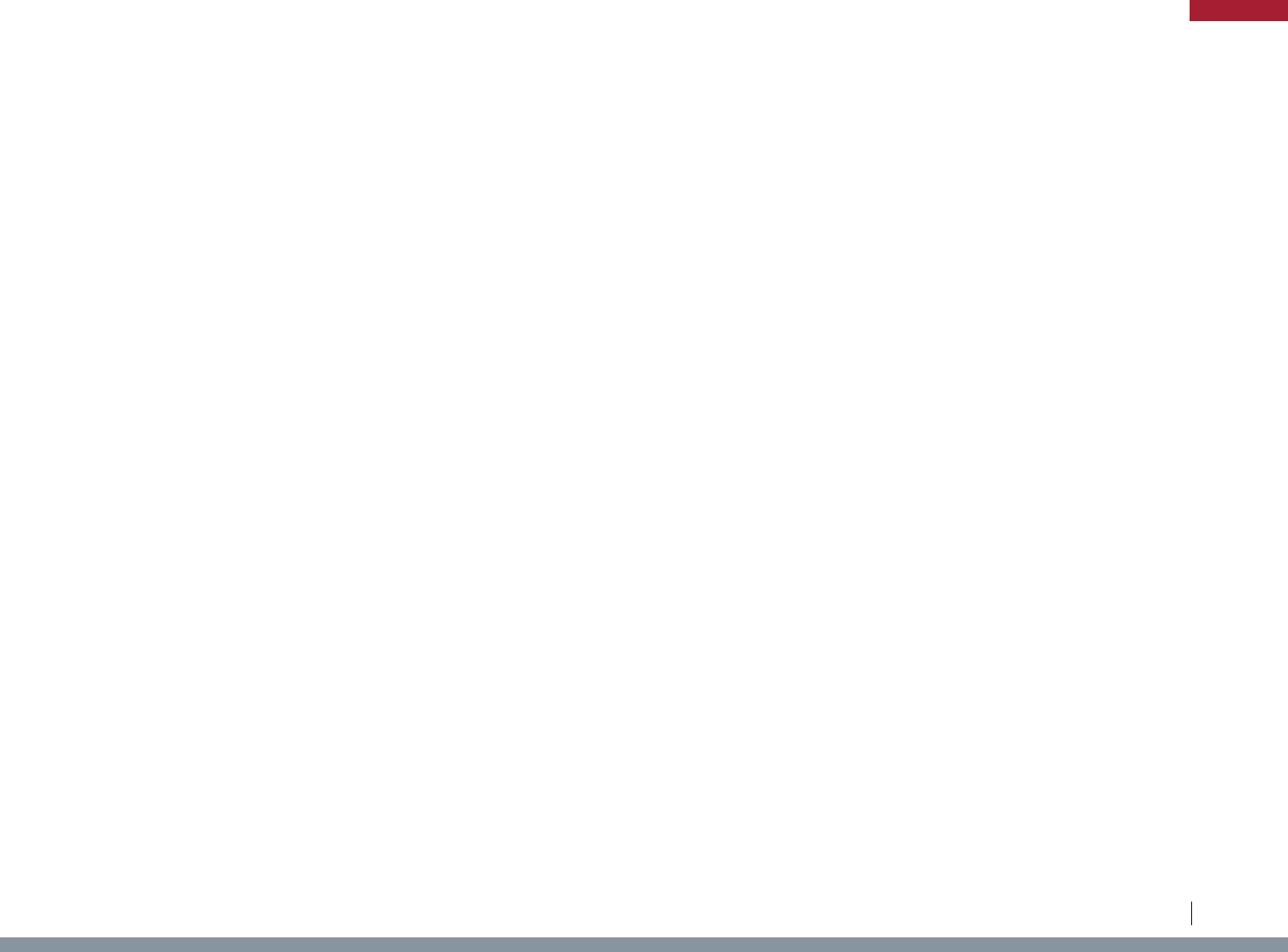
State Law/Regulation Potentially Impacted Industry Agricultural Product Regulation Type Purpose Description
PA 3 Pa. Cons. Stat. § 258.17 Plants Plants Importation
Disease/Pest
Prevention
General Plant Import Standards
PA 58 Pa. Code § 137.35 Live Animals Cervids Importation
Disease/Pest
Prevention
Chronic Wasting Disease Restrictions
PA 58 Pa. Code § 73.1 Aquaculture Fish Importation
Disease/Pest
Prevention
Aquaculture Import and Disease Reporting
PA 58 Pa. Code § 73.3 Aquaculture Fish Importation
Disease/Pest
Prevention
Aquaculture Import and Disease Reporting of Viral Hemorrhagic
Septicemia Susceptible Fish
PA 7 Pa. Code § 110.1 Plants Plants Importation
Disease/Pest
Prevention
Noxious weed restrictions
PA 7 Pa. Code § 111.23 Plants Seeds Importation
Disease/Pest
Prevention
Noxious weed seed restrictions
PA 7 Pa. Code § 15.10 Livestock Poultry Importation
Disease/Pest
Prevention
Importation requirements for poultry - Avian Influenza
PA 7 Pa. Code § 3.103 Livestock Horses Importation
Disease/Pest
Prevention
Importation requirements for horses - Equine Infectious Anemia
PA 7 Pa. Code § 3.113 Livestock Poultry Importation
Disease/Pest
Prevention
Importation requirements for poultry - Avian Influenza
PA 7 Pa. Code § 3.119 Livestock Poultry Importation
Disease/Pest
Prevention
Quarantine of poultry
PA 7 Pa. Code § 3.121 Livestock Sheep Importation
Disease/Pest
Prevention
Interstate Health Certificate Required
PA 7 Pa. Code § 3.131 Livestock Swine Importation
Disease/Pest
Prevention
Importation of Swine
PA 7 Pa. Code § 3.139 Livestock Swine Importation
Disease/Pest
Prevention
Importation requirements for swine - pseudorabies
PA 7 Pa. Code § 3.142 Livestock Wild Animals Importation
Disease/Pest
Prevention
Health Certication for Imported Animals
PA 7 Pa. Code § 3.161 Livestock Cattle, Goats, Buffalo Importation
Disease/Pest
Prevention
Permit required to import
PA 7 Pa. Code § 3.172 Livestock Swine Importation
Disease/Pest
Prevention
Health Requirements
PA 7 Pa. Code § 3.22 Livestock Cattle, Goats, Bison Importation
Disease/Pest
Prevention
Importation restrictions for cattle, goats, and bison - brucellosis
PA 7 Pa. Code § 3.23 Livestock Cattle, Goats, Buffalo Importation
Disease/Pest
Prevention
Bovine Tuberculosis
PA 7 Pa. Code § 3.3 Livestock Livestock Importation
Disease/Pest
Prevention
Importation requirements for livestock
PA 7 Pa. Code § 3.4 Livestock Livestock Importation
Disease/Pest
Prevention
Health Certication for Imported Animals
PA 7 Pa. Code § 3a.2 Livestock Cattle Importation
Disease/Pest
Prevention
Bovine Tuberculosis
PA 7 Pa. Code § 3a.3 Livestock Cervids, Camelids Importation
Disease/Pest
Prevention
Importation requirements for cervids and camelids
RI 2 R.I. Gen. Laws § 2-17-23 Forestry Ash Trees Importation
Disease/Pest
Prevention
Importation restrictions related to emerald ash borer, Asian
Longhorned beetle - regulated articles subject to quarantine and
transport rules
138
Legislative Analysis of S.2019 / H.R.4417: The “Ending Agricultural Trade Suppression Act”
APPENDIX

State Law/Regulation Potentially Impacted Industry Agricultural Product Regulation Type Purpose Description
RI 250 R.I. Code R. 40-05-1 Live Animals Live Animals Importation
Disease/Pest
Prevention
Rules and regulations governing the importation of domestic animals
RI 250 R.I. Code R. 40-05-1.10 Livestock Cattle Importation
Disease/Pest
Prevention
Importation requirements for cattle - Official identification and
Certificate of Veterinary Inspection required, rabies vaccination,
tuberculosis, exceptions
RI 250 R.I. Code R. 40-05-1.11 Livestock Swine Importation
Disease/Pest
Prevention
Importation requirements for swine - Official identification and
Certificate of Veterinary Inspection is required for all swine, Brucellosis,
Pseudorabies
RI 250 R.I. Code R. 40-05-1.12 Livestock Sheep Importation
Disease/Pest
Prevention
Importation requirements for sheep - official identification and
certificate of veterinary inspection is required for sheep, scrapie,
Psoroptic Scabies, rabies vaccination
RI 250 R.I. Code R. 40-05-1.13 Livestock Goats Importation
Disease/Pest
Prevention
Importation requirements for goats - Official identification and
Certificate of Veterinary Inspection is required for sheep, scrapie,
Psoroptic Scabies, rabies vaccination
RI 250 R.I. Code R. 40-05-1.14 Livestock
Poultry, Ratites,
Game Birds
Importation
Disease/Pest
Prevention
Importation requirements for poultry, ratites, and game birds - Official
Identification and Certificate of Veterinary Inspection, or other federally
recognized certification of disease-free status required, Salmonella
Pullorum, Avian influenza
RI 250 R.I. Code R. 40-05-1.15 Livestock Equines Importation
Disease/Pest
Prevention
Importation requirements for equines - Official identification and
Certificate of Veterinary Inspection or Extended Equine Certificate of
Veterinary Inspection are required, exceptions, equine infectious
anemia, rabies vaccination
RI 250 R.I. Code R. 40-05-1.16 Livestock Camelids Importation
Disease/Pest
Prevention
Importation requirements for camelids - Official identification and
Certificate of Veterinary Inspection required, brucellosis, tuberculosis
RI 250 R.I. Code R. 40-05-1.17 Live Animals Live Animals Importation
Disease/Pest
Prevention
Importation requirements for other animals - Official Identification and
Certificate of Veterinary Inspection required, contact the Rhode Island
State Veterinarian for additional requirements
RI 250 R.I. Code R. 40-05-1.18 Live Animals Live Animals Importation
Disease/Pest
Prevention
Power to prohibit or regulate importation - Director has broad powers to
prohibit the importation of any animal into the state, Department may
issue emergency regulations as deemed necessary that restrict the
importation of animals by imposing safeguards that will protect the
health, safety and welfare of the citizens of the state, their livestock, and
pets
RI 250 R.I. Code R. 40-05-1.19 Live Animals Live Animals Recordkeeping
Disease/Pest
Prevention
Recordkeeping for auctions, sales, and dealers
RI 250 R.I. Code R. 40-05-1.20 Live Animals Live Animals Importation
Disease/Pest
Prevention
Violations of importation regulations
RI 250 R.I. Code R. 40-05-1.22 Live Animals Live Animals Importation
Disease/Pest
Prevention
Requirements for animals imported for the purpose of fair, show, or
exhibition
RI 250 R.I. Code R. 40-05-1.6 Live Animals Live Animals Importation
Disease/Pest
Prevention
General requirements and general exemptions - certificate of
veterinary inspection, import permit
RI 250 R.I. Code R. 40-05-1.7 Live Animals Live Animals Importation
Disease/Pest
Prevention
Certificates of veterinary inspection and owner shipper statements
RI 250 R.I. Code R. 40-05-1.8 Pets Dogs, Cats Importation
Disease/Pest
Prevention
Importation of dogs and cats for the purpose of rescue, shelter, foster
care, adoption, brokering, or remote sale
RI 250 R.I. Code R. 40-05-1.9 Pets Dogs, Cats Importation
Disease/Pest
Prevention
Identification and Certificate of Veterinary Inspection are required for
the importation of all dogs and cats that are imported into the State of
Rhode Island
139
Legislative Analysis of S.2019 / H.R.4417: The “Ending Agricultural Trade Suppression Act”
APPENDIX
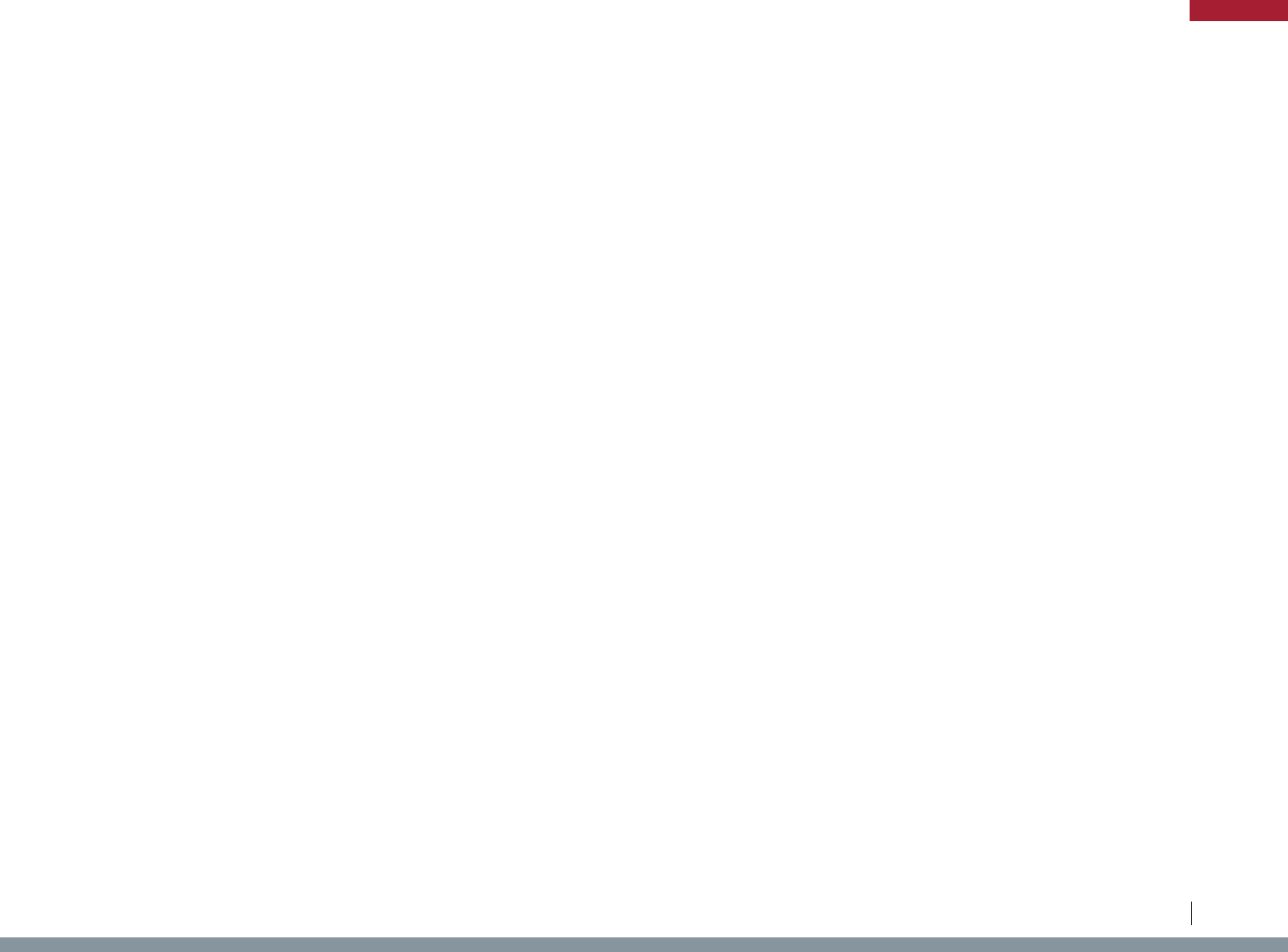
State Law/Regulation Potentially Impacted Industry Agricultural Product Regulation Type Purpose Description
RI 250 R.I. Code R. 40-05-3.7 Live Animals Wild Animals Importation
Disease/Pest
Prevention
Rules and regulations governing importation and possession of wild
animals - general prohibitions
RI 250 R.I. Code R. 40-10-2 Plants
Currants (Ribes
Plants)
Importation
Disease/Pest
Prevention
Rules and regulations governing the suppression of white pine blister
rust
RI 250 R.I. Code R. 40-10-3 Livestock Bees Importation
Disease/Pest
Prevention
Rules and regulations for out-of-state honey bee quarantine to prevent
entry of varroa mite (varroa jacobsoni)
RI 250 R.I. Code R. 60-00-2.10 Live Animals Cervids Importation
Disease/Pest
Prevention
Regulations on the importation, possession and transportation of live
cervids - No person shall import, transport or possess in the State of
Rhode Island any live captive or wild cervid, except under a permit,
certificate of veterinary inspection, exemptions
SC S.C. Code § 46-10-50 Cotton Cotton Importation
Disease/Pest
Prevention
Boll Weevil, Cotton Pest Restrictions
SC S.C. Code § 46-37-10 Livestock Bees Importation
Disease/Pest
Prevention
Importation requirements for bees - certificate of inspection
SC S.C. Code § 46-37-30 Livestock Bees Certification
Disease/Pest
Prevention
Inspection for presence of disease or infection of bees, removal and
destruction authority
SC S.C. Code § 47-13-1350 Livestock Horses Importation
Disease/Pest
Prevention
Unlawful for horse to enter State unless tested for Equine Infectious
Anemia and accompanied by test chart
SC S.C. Code § 47-4-60 Livestock Livestock Importation
Disease/Pest
Prevention
Veterinary inspection for communicable and infectious diseases
SC S.C. Code Regs. 123-151.1 Live Animals Turtles Importation
Disease/Pest
Prevention
Importation restrictions for spotted turtles
SC S.C. Code Regs. 27-1013 Livestock Livestock Importation
Disease/Pest
Prevention
Importation requirements for livestock - certificate of veterinary
inspection or health permit
SC S.C. Code Regs. 27-1014 Livestock Poultry Importation
Disease/Pest
Prevention
Importation requirements for poultry - poultry shall be U.S. Pullorum-
Typhoid Clean or equivalent or be accompanied with a CVI stating the
poultry was tested negative for pullorum and typhoid
SC S.C. Code Regs. 27-1017 Livestock Poultry Importation
Disease/Pest
Prevention
Importation requirements for poultry - all started poultry (poultry that
has been fed and watered) entering the State shall have a prior permit
approved by the State Veterinarian, exemptions
SC S.C. Code Regs. 27-1018 Pets Dogs Importation
Disease/Pest
Prevention
Importation requirements for dogs - health certificate, not from
quarantine area, rabies requirements, vaccination
SC S.C. Code Regs. 27-1025 Livestock Cervids Importation
Disease/Pest
Prevention
Importation requirements for cervids - certificate of veterinary
inspection, permits, identification, brucellosis, tuberculosis
SC S.C. Code Regs. 27-1027 Livestock Ratites Importation
Disease/Pest
Prevention
Importation requirements for ratites - certificate of veterinary inspection
SC S.C. Code Regs. 27-1099 Cotton Cotton Importation
Disease/Pest
Prevention
Regulated articles - prohibition of ornamental cottonseed and
individual potted specimens of cotton plants
SC S.C. Code Regs. 27-1100 Cotton Cotton Importation
Disease/Pest
Prevention
Certificate or permit must accompany the movement of regulated
articles from any infested area into or through any regulated area
SC S.C. Code Regs. 27-121 Nursery Stock Nursery Plants Importation
Disease/Pest
Prevention
Fire Ant restrictions - regulated articles
SC S.C. Code Regs. 27-123 Nursery Stock Nursery Plants Importation
Disease/Pest
Prevention
Fire Ant restrictions - certificate or permit must accompany the
movement of regulated articles
SC S.C. Code Regs. 27-137 Fruit Citrus Trees Importation
Disease/Pest
Prevention
Asian Citrus Psyllid Restrictions - treatment, inspection
SC S.C. Code Regs. 27-163 Nursery Stock Nursery Plants Importation
Disease/Pest
Prevention
Nursery stock shipment requirements
140
Legislative Analysis of S.2019 / H.R.4417: The “Ending Agricultural Trade Suppression Act”
APPENDIX
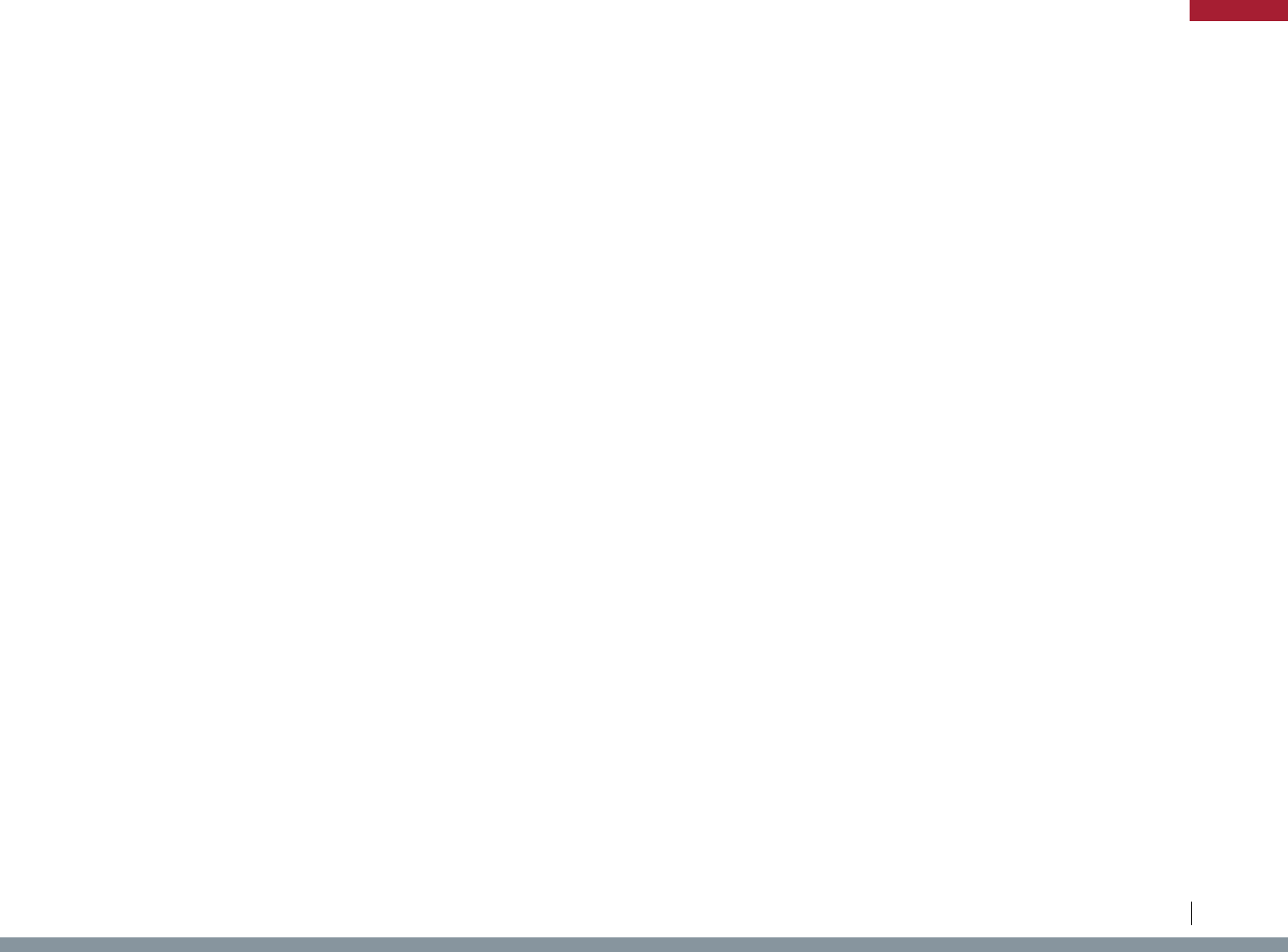
State Law/Regulation Potentially Impacted Industry Agricultural Product Regulation Type Purpose Description
SC S.C. Code Regs. 27-5 Food Honey Importation
Disease/Pest
Prevention
Restrictions on shipments of honey from apiary infected with American
Foulbrood
SC S.C. Code Regs. 27-5020 Nursery Stock Nursery Plants Importation
Disease/Pest
Prevention
Phytophagous Snail Restrictions
SC S.C. Code Regs. 27-62 Crops Sweet Potatoes Importation
Disease/Pest
Prevention
Sweet Potato Weevil restrictions
SC S.C. Code Regs. 27-83 Fruit Peach Trees Importation
Disease/Pest
Prevention
Phony Peach Disease Restrictions
SC S.C. Code Regs. 5-584 Plants Plants Importation
Disease/Pest
Prevention
Noxious Weed Restrictions - Importation into South Carolina or the
sale or distribution of listed noxious plants within the State is prohibited
SD S.D. Admin. R. 12:02:10:04 Livestock Livestock Importation
Disease/Pest
Prevention
Import requirements for animals entered into state fair - health
certificate, permit number, brucellosis, tuberculosis
SD S.D. Admin. R. 12:68:06:01 Livestock Livestock Importation
Disease/Pest
Prevention
Certificate of veterinary inspection to accompany imported animals,
semen, and embryos
SD S.D. Admin. R. 12:68:16:03 Livestock Equines Importation
Disease/Pest
Prevention
Examination and identification of equines for import - certificate of
veterinary inspection
SD S.D. Admin. R. 12:68:16:04 Livestock Equines Importation
Disease/Pest
Prevention
Certification of negative test for Equine Infectious Anemia required for
import of equines
SD S.D. Admin. R. 12:68:17:01 Livestock Swine Importation
Disease/Pest
Prevention
Requirements related to importation or distribution of swine semen or
embryos
SD S.D. Admin. R. 12:68:17:04 Livestock Swine Importation
Disease/Pest
Prevention
Import requirements for feeder pigs - pseudorabies
SD S.D. Admin. R. 12:68:23:06 Livestock Cervids Importation
Disease/Pest
Prevention
Importation requirements for cervids - identification, permit, certificate of
veterinary inspection, tuberculosis
SD S.D. Admin. R. 12:68:25:17 Live Animals Cervids Importation
Disease/Pest
Prevention
Importation requirements for cervids - certificate of veterinary
inspection, entry permit, Chronic wasting disease
SD S.D. Admin. R. 12:68:29:08 Livestock Cattle Importation
Disease/Pest
Prevention
Identification of recreational cattle - requirements for import
SD S.D. Admin. R. 41:09:08:01.01 Fish Fish Importation
Disease/Pest
Prevention
Fish importation prohibited - Exceptions
SD S.D. Codified Laws § 38-18-21 Livestock Bees Importation
Disease/Pest
Prevention
Certificate of health or compliance agreement required for bees and
used bee equipment imported from another state
SD S.D. Codified Laws § 38-18-25 Livestock Bees Importation
Disease/Pest
Prevention
Unlawfully imported bees subject to seizure - Destruction or treatment if
found to be infested
SD S.D. Codified Laws § 38-18-4 Livestock Bees Importation
Disease/Pest
Prevention
Importation requirements for bees and used bee equipment -
Application for entrance permit before transport into state
SD S.D. Codified Laws § 40-14-1 Livestock Livestock Importation
Disease/Pest
Prevention
Restrictions on importation from quarantine areas outside state
SD S.D. Codified Laws § 40-14-2 Livestock Livestock Importation
Disease/Pest
Prevention
Certificate of veterinary inspection required for importation of livestock -
Exception for slaughter
SD S.D. Codified Laws § 40-14-3 Live Animals Live Animals Importation
Disease/Pest
Prevention
Notice and permit for importation of animals without certificate
SD S.D. Codified Laws § 40-14-4 Live Animals Live Animals Importation
Disease/Pest
Prevention
Quarantine and examination of any animal imported without certificate
TN Tenn. Code § 44-15-110 Livestock Bees Importation
Disease/Pest
Prevention
Bee quarantine authority, restrictions
141
Legislative Analysis of S.2019 / H.R.4417: The “Ending Agricultural Trade Suppression Act”
APPENDIX
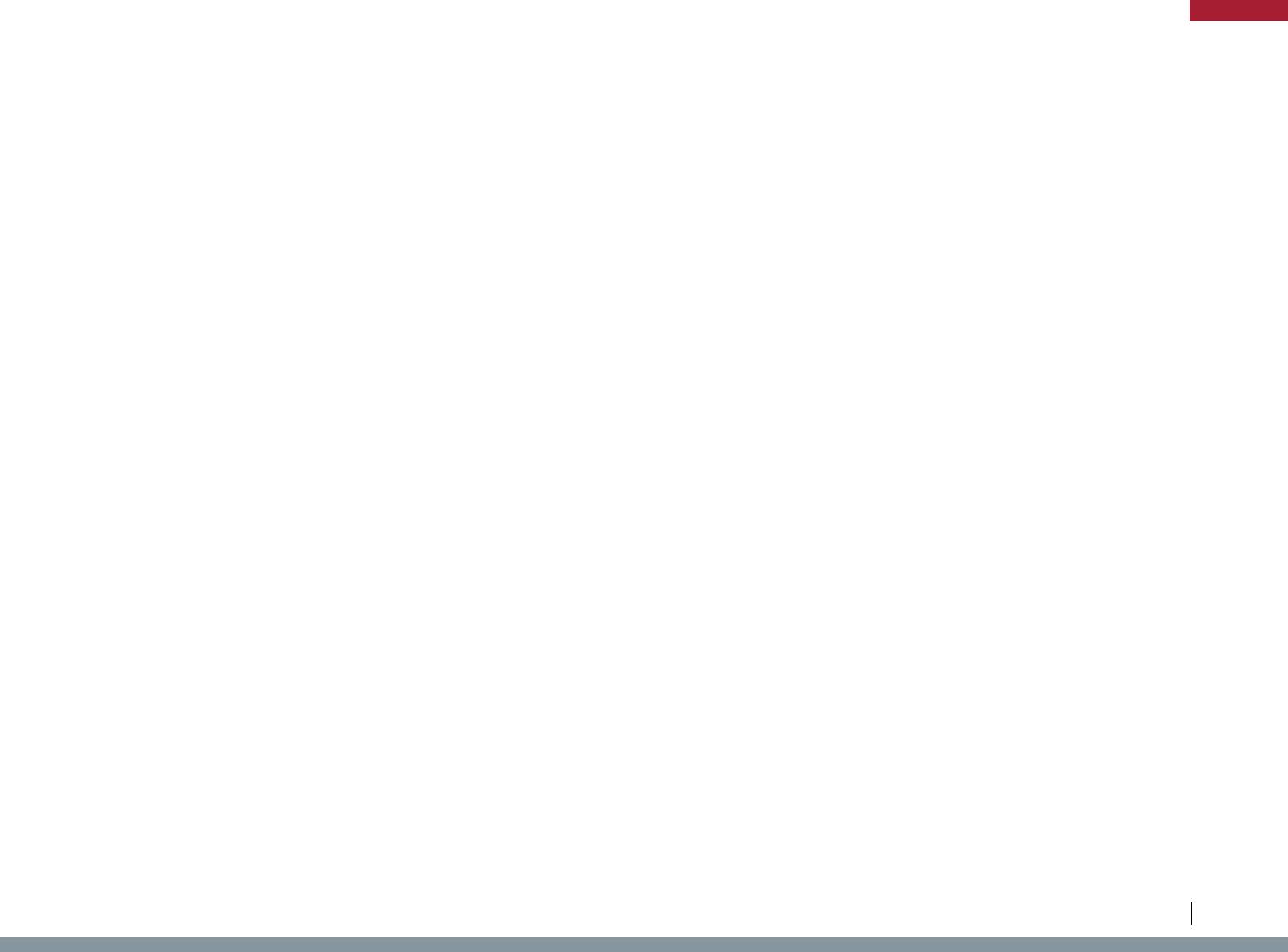
State Law/Regulation Potentially Impacted Industry Agricultural Product Regulation Type Purpose Description
TN Tenn. Code § 44-15-113 Livestock Bees Importation
Disease/Pest
Prevention
Importation requirements for bees - entry permit, health certificates
TN Tenn. Code § 44-15-120 Food Honey Transportation
Disease/Pest
Prevention
Requirement that beekeeping equipment wet with honey be stored,
transported, and handled in such a way that free-flying honeybees will
not be able to gain access to that honey
TN
Tenn. Comp. R. & Regs. 0080-02-01-
.02
Live Animals Domestic Animals Importation
Disease/Pest
Prevention
General importation requirements and limitations - official certificate of
veterinary inspection or other transportation document recognized by
the state veterinarian, No animal, including poultry and birds of any
species, that is affected by or has been exposed to any infectious,
contagious, or communicable disease, or that originated from a
quarantined area, shall be transported or moved into Tennessee;
except as allowed herein or permitted by the state veterinarian
TN
Tenn. Comp. R. & Regs. 0080-02-01-
.03
Live Animals Domestic Animals Importation
Disease/Pest
Prevention
Duties of common carriers and other haulers of domestic animals -
owners and operators of common carriers and private conveyances
shall be forbidden to transport or otherwise move any domestic animal
into, within, or through the State of Tennessee except in compliance
with the provisions set forth in these regulations
TN
Tenn. Comp. R. & Regs. 0080-02-01-
.04
Live Animals Domestic Animals Importation
Disease/Pest
Prevention
Entry permits
TN
Tenn. Comp. R. & Regs. 0080-02-01-
.05
Livestock Cattle Importation
Disease/Pest
Prevention
Importation requirements for cattle - certificate of veterinary inspection,
brucellosis, tuberculosis, scabies, trichomoniasis
TN
Tenn. Comp. R. & Regs. 0080-02-01-
.06
Livestock Equines Inspection
Disease/Pest
Prevention
Importation requirements for equines - certificate of veterinary
inspection, equine infectious anemia testing
TN
Tenn. Comp. R. & Regs. 0080-02-01-
.07
Livestock Swine Importation
Disease/Pest
Prevention
Importation requirements for swine - certificate of veterinary inspection,
entry permit, identification, brucellosis, pseudorabies
TN
Tenn. Comp. R. & Regs. 0080-02-01-
.08
Livestock Sheep Importation
Disease/Pest
Prevention
Importation requirements for sheep - permanent identification,
certificate of veterinary inspection
TN
Tenn. Comp. R. & Regs. 0080-02-01-
.09
Livestock Goats Importation
Disease/Pest
Prevention
Importation requirements for goats - permanent identification, certificate
of veterinary inspection
TN
Tenn. Comp. R. & Regs. 0080-02-01-
.10
Livestock
Poultry, Hatching
Eggs
Importation
Disease/Pest
Prevention
Importation requirements for poultry and hatching eggs - proof of the
poultry's apparent good health, certificate of veterinary inspection,
negative testing for Pullorum-Typhoid and Avian Influenza
TN
Tenn. Comp. R. & Regs. 0080-02-01-
.12
Livestock Bison, Cervids Importation
Disease/Pest
Prevention
Importation requirements for bison, cervids - identification, chronic
wasting disease, tuberculosis, etc.
TN
Tenn. Comp. R. & Regs. 0080-06-07-
.01
Forestry Boxwood Trees Importation
Disease/Pest
Prevention
Declaration of quarantine - Boxwood Blight restrictions
TN
Tenn. Comp. R. & Regs. 0080-06-12-
.06
Nursery Stock Nursery Plants Importation
Disease/Pest
Prevention
Conditions governing movement of regulated articles - live brown
garden snail restrictions
TN
Tenn. Comp. R. & Regs. 0080-06-19-
.01
Nursery Stock Nursery Plants Importation
Disease/Pest
Prevention
Determination of problem and establishment of quarentine - Fire Ant
restrictions
TN
Tenn. Comp. R. & Regs. 0080-06-22-
.03
Cotton Cotton Importation
Disease/Pest
Prevention
Conditions governing movement of regulated articles - Boll Weevil
eradication
TN
Tenn. Comp. R. & Regs. 1200-14-01-
.36
Live Animals Turtles Prohibition
Disease/Pest
Prevention
Prohibition on sale of certain turtles
142
Legislative Analysis of S.2019 / H.R.4417: The “Ending Agricultural Trade Suppression Act”
APPENDIX
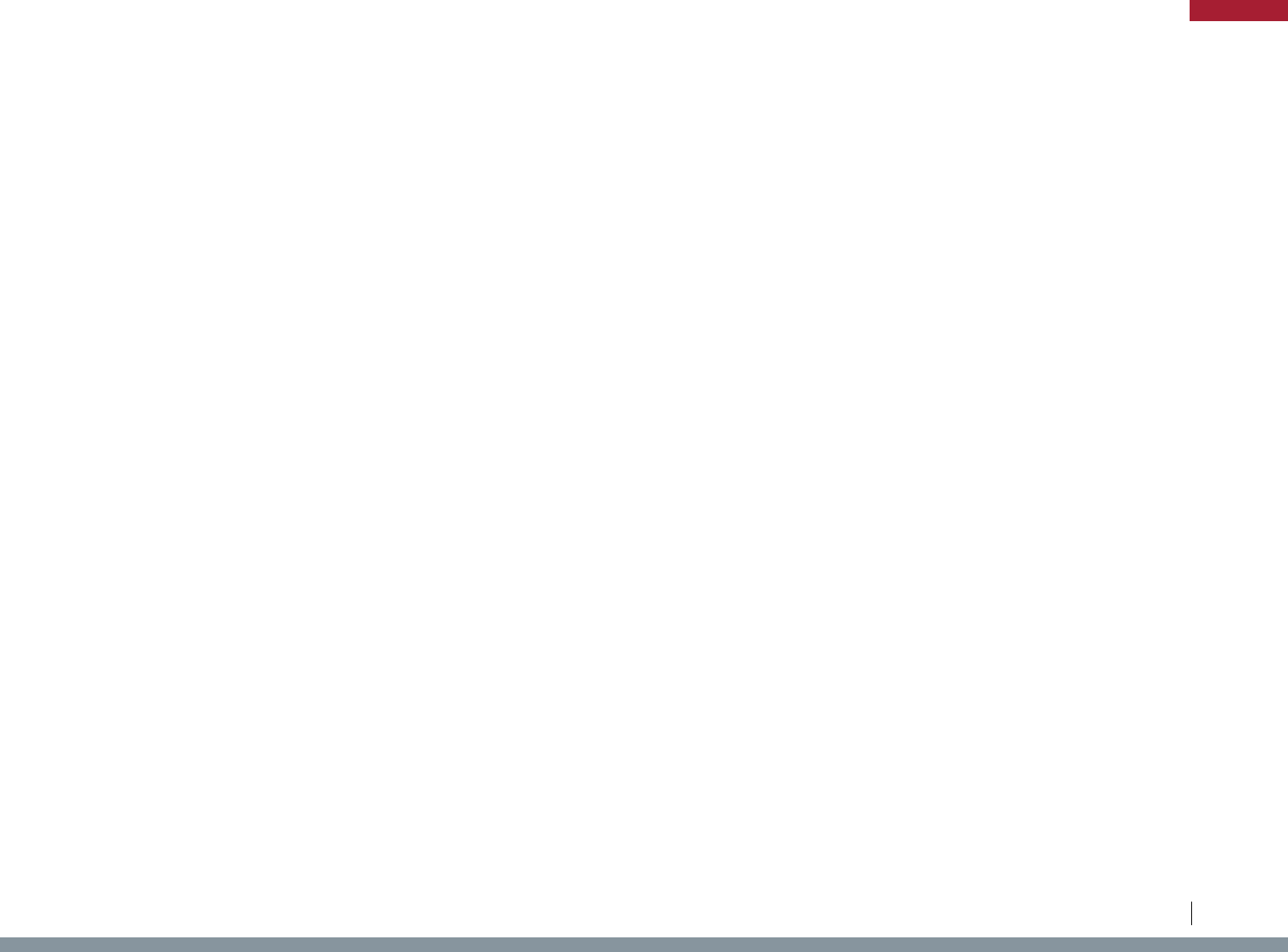
State Law/Regulation Potentially Impacted Industry Agricultural Product Regulation Type Purpose Description
TN
Tenn. Comp. R. & Regs. 1660-01-26-
.02
Aquaculture Fish Importation
Disease/Pest
Prevention
Fish from states having endemic disease problems in wild populations
or hatchery stocks that could present a health hazard to native wildlife
or the public are specifically prohibited from being imported,
restrictions on baitfish and other aquatic life sourcing
TN Tenn. Comp. R. & Regs. 1660-1-18-.02 Live animals Wildlife Importation
Disease/Pest
Prevention
importation permit is required for all fish species - exceptions
TX 31 Tex. Admin. Code § 57.976 Fish Fish, Shellfish Importation
Disease/Pest
Prevention
Importation restrictions for aquatic wildlife
TX 4 Tex. Admin. Code § 19.103 Plants Plants Importation
Disease/Pest
Prevention
Fire ant import restrictions
TX 4 Tex. Admin. Code § 19.113 Crops
Corn, Sorghum,
Grains
Importation
Disease/Pest
Prevention
European Corn Borer import restrictions
TX 4 Tex. Admin. Code § 19.123 Nuts
Pecans, Other Nut
Trees
Importation
Disease/Pest
Prevention
Pecan Weevil import restrictions
TX 4 Tex. Admin. Code § 19.133 Crops Sweet Potatoes Importation
Disease/Pest
Prevention
Sweet Potato Weevil import restrictions
TX 4 Tex. Admin. Code § 19.153 Plants Plants, Plant
Products
Importation
Disease/Pest
Prevention
West Indian Fruit Fly import restrictions
TX 4 Tex. Admin. Code § 19.162 Plants Plants, Plant
Products
Importation
Disease/Pest
Prevention
Root Weevil import restrictions
TX 4 Tex. Admin. Code § 19.175 Plants Plants, Plant
Products
Importation
Disease/Pest
Prevention
Sapote Fruit Fly import restrictions
TX 4 Tex. Admin. Code § 19.2 Nursery Stock
Nursery Stock, Floral
Products
Importation
Disease/Pest
Prevention
Importation restrictions for all nursery or floral shipments of plant
material -phytosanitary certificate of inspection required
TX 4 Tex. Admin. Code § 19.203 Plants Plants, Plant
Products
Importation
Disease/Pest
Prevention
Asian cycad scale import restrictions
TX 4 Tex. Admin. Code § 19.23 Plants Plants, Plant
Products
Importation
Disease/Pest
Prevention
Burrowing nematode import restrictions
TX 4 Tex. Admin. Code § 19.300 Plants Plants, Plant
Products
Prohibition
Disease/Pest
Prevention
Prohibition on importation, sale, or distribution of listed noxious and
invasive plants
TX 4 Tex. Admin. Code § 19.32 Plants Camellia Plants Importation
Disease/Pest
Prevention
Camellia flower blight import restrictions
TX 4 Tex. Admin. Code § 19.43 Crops Produce Importation
Disease/Pest
Prevention
Caribbean Fruit Fly import restrictions
TX 4 Tex. Admin. Code § 19.504 Fruit Plants, Plant
Products
Importation
Disease/Pest
Prevention
Mexican Fruit Fly import restrictions
TX 4 Tex. Admin. Code § 19.53 Fruit Palms Importation
Disease/Pest
Prevention
Date Palm Lethal Decline import restrictions
TX 4 Tex. Admin. Code § 19.603 Fruit Palms Importation
Disease/Pest
Prevention
Red Palm Mites import restrictions
TX 4 Tex. Admin. Code § 19.618 Plants Plants, Plant
Products
Importation
Disease/Pest
Prevention
Citrus Greening import restrictions
TX 4 Tex. Admin. Code § 19.73 Nursery Stock Plants, Plant
Products
Importation
Disease/Pest
Prevention
European Brown Garden Snail import restrictions
TX 4 Tex. Admin. Code § 20.16 Cotton Cotton Importation
Disease/Pest
Prevention
Boll Weevil import restrictions
143
Legislative Analysis of S.2019 / H.R.4417: The “Ending Agricultural Trade Suppression Act”
APPENDIX
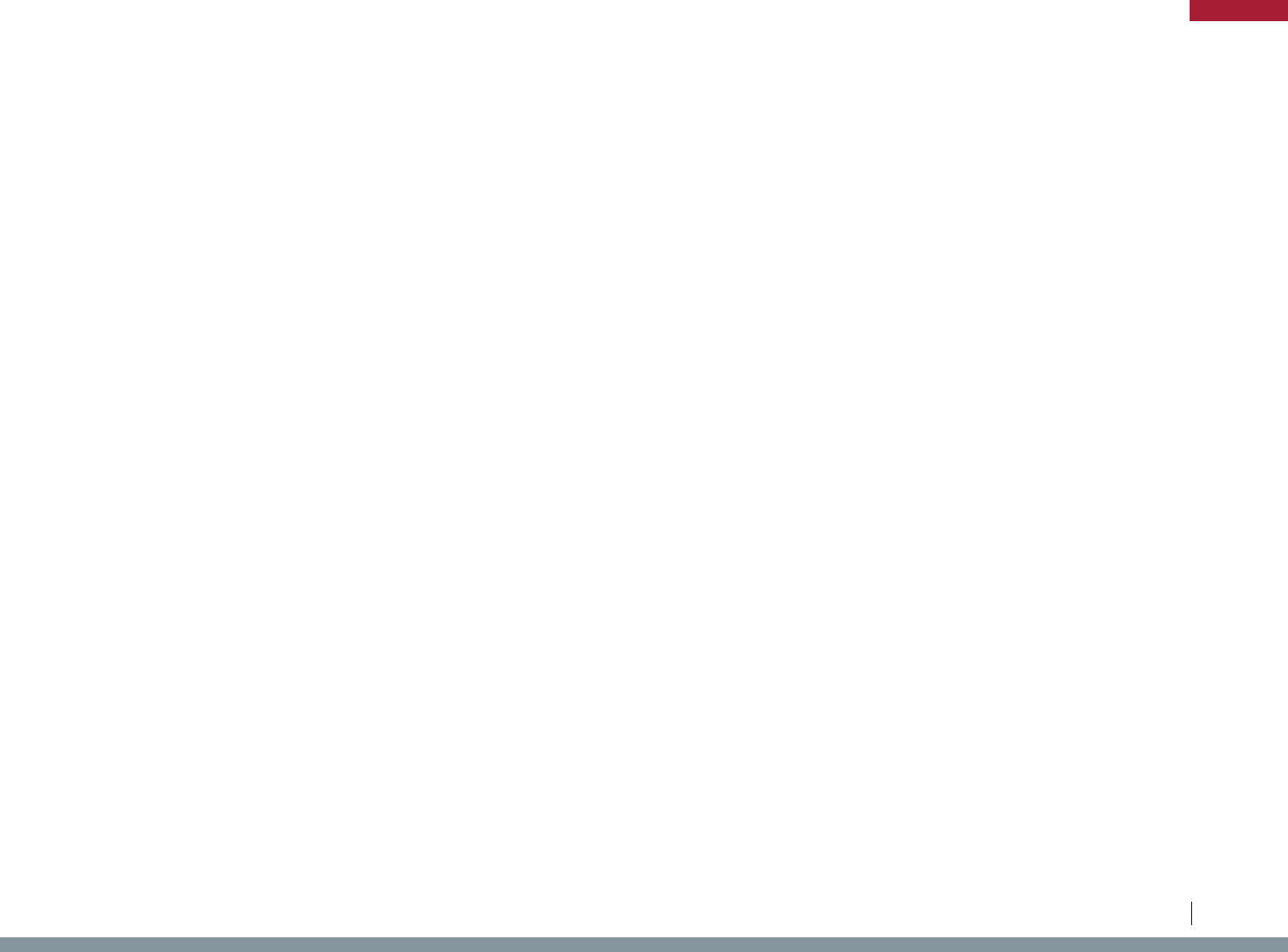
State Law/Regulation Potentially Impacted Industry Agricultural Product Regulation Type Purpose Description
TX 4 Tex. Admin. Code § 21.40 Fruit Citrus Trees Importation
Disease/Pest
Prevention
Importation requirements for citrus budwood - testing, permit, etc.
TX 4 Tex. Admin. Code § 35.4 Livestock Cattle Importation
Disease/Pest
Prevention
Importation requirements for cattle - testing, vaccination - brucellosis
TX 4 Tex. Admin. Code § 41.6 Livestock Livestock Importation
Disease/Pest
Prevention
Restrictions on movement of livestock - certification, Fever Tick
TX 4 Tex. Admin. Code § 51.10 Livestock Cervids Importation
Disease/Pest
Prevention
Importation requirements for cervids - testing, identification, certificate
of veterinary inspection - chronic wasting disease
TX 4 Tex. Admin. Code § 51.11 Livestock Goats Importation
Disease/Pest
Prevention
Importation requirements for goats - tuberculosis, scabies
TX 4 Tex. Admin. Code § 51.12 Livestock Sheep Importation
Disease/Pest
Prevention
Importation requirements for sheep - certificate required, Brucella ovis
testing, scabies
TX 4 Tex. Admin. Code § 51.13 Livestock Equines Importation
Disease/Pest
Prevention
Importation requirements for equines - certificate of veterinary
inspection, equine infectious anemia testing, fever tick, Equine Viral
Arteritis
TX 4 Tex. Admin. Code § 51.14 Livestock Swine Importation
Disease/Pest
Prevention
Importation requirements for swine - certificate, identification,
pseudorabies
TX 4 Tex. Admin. Code § 51.15 Livestock Poultry Importation
Disease/Pest
Prevention
Importation requirements for poultry - Avian Influenza
TX 4 Tex. Admin. Code § 51.2 Live Animals Live Animals Importation
Disease/Pest
Prevention
General requirements for importing live animals - permit, certificate of
veterinary inspection
TX 4 Tex. Admin. Code § 51.7 Livestock Livestock Importation
Disease/Pest
Prevention
Importation requirements for livestock - scabies, screwworm, fever tick,
Vesicular Stomatitis
TX 4 Tex. Admin. Code § 51.8 Livestock Cattle Importation
Disease/Pest
Prevention
Importation requirements for cattle - identification, Brucellosis,
Tuberculosis, Trichomoniasis
TX 4 Tex. Admin. Code § 51.9 Livestock
Exotic Livestock &
Fowl, Camelids,
Ratites
Importation
Disease/Pest
Prevention
Importation requirements for exotic livestock and fowl, including
camelids and ratites - identification, brucellosis, pseudorabies, Avian
Influenza, Salmonella pullorum-typhoid
TX 4 Tex. Admin. Code § 54.9 Livestock Poultry Recordkeeping
Disease/Pest
Prevention
Live bird marketing system regulations - testing, recordkeeping
TX 4 Tex. Admin. Code § 57.11 Livestock Poultry Importation
Disease/Pest
Prevention
Importation requirements for poultry - official health certificate,
Laryngotracheitis, Pullorum-Typhoid
TX Tex. Agric. Code § 131.022 Livestock Bees Importation
Disease/Pest
Prevention
Bee quarantine authority - restriction on shipping bees, equipment,
pollen, or honey into or out of quarantine area
TX Tex. Agric. Code § 131.023 Livestock Bees Certification
Disease/Pest
Prevention
Requirements for selling queen bees, attendant bees, package bees,
nuclei, and queen cells - certificate and affidavit
TX Tex. Agric. Code § 131.041 Livestock Bees Importation
Disease/Pest
Prevention
Importation requirements for bees and bee equipment - permit required
TX Tex. Agric. Code § 164.062 Livestock Sheep Importation
Disease/Pest
Prevention
Importation requirements for sheep - certificate required, scabies
UT Utah Admin. Code r. 58-1-1 Live Animals Live Animals Importation
Disease/Pest
Prevention
Authority to regulate importation - to eliminate or reduce the spread of
diseases among animals by providing standards to be met in the
movement of animals within Utah and the importation of animals into
the state
UT Utah Admin. Code r. 58-1-11 Pets Dogs, Cats, Ferrets Importation
Disease/Pest
Prevention
Importation requirements for dogs, cats, and ferrets - rabies
vaccination, minimum age, certificate of veterinary inspection and
permit for animals undergoing treatment
144
Legislative Analysis of S.2019 / H.R.4417: The “Ending Agricultural Trade Suppression Act”
APPENDIX
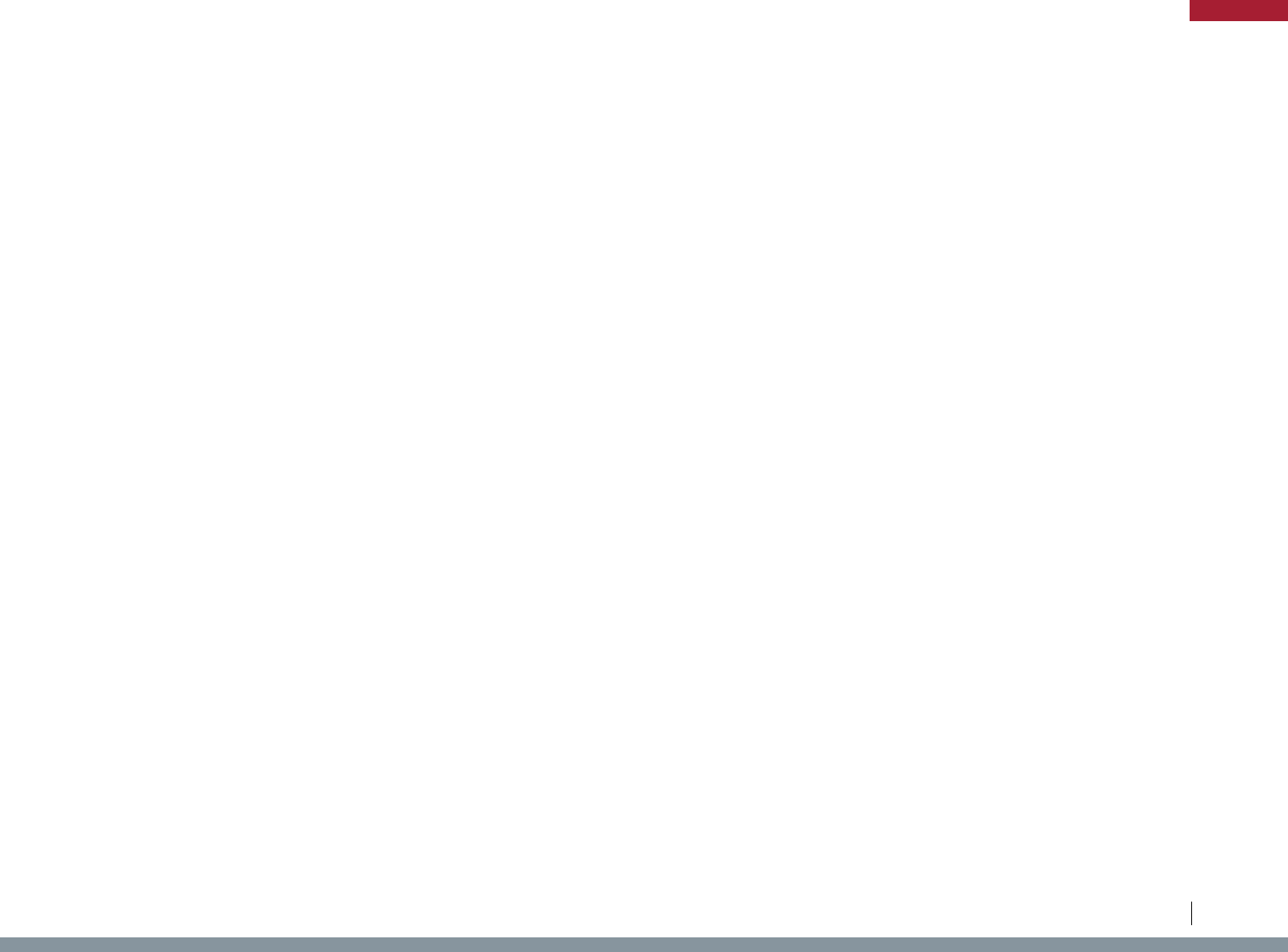
State Law/Regulation Potentially Impacted Industry Agricultural Product Regulation Type Purpose Description
UT Utah Admin. Code r. 58-1-12 Livestock Cervids Importation
Disease/Pest
Prevention
Importation requirements for cervids - import permit, Chronic wasting
disease, brucellosis, tuberculosis, Johne's Disease (Paratuberculosis),
Malignant Catarrhal Fever
UT Utah Admin. Code r. 58-1-13 Live Animals Exotic Animals Importation
Disease/Pest
Prevention
Importation requirements for exotic animals
UT Utah Admin. Code r. 58-1-14 Live Animals Live Animals Importation
Disease/Pest
Prevention
Duties of carriers moving animals into the state
UT Utah Admin. Code r. 58-1-4 Live Animals Live Animals Importation
Disease/Pest
Prevention
Interstate importation standards - no animal, poultry, or bird of any
species or other animal, including wildlife, that is known to be affected
with or has been exposed to a contagious, infectious, or communicable
disease, or that originates from a quarantined area, shall be shipped,
transported, or moved into the state until written permission for entry is
first obtained from the State Veterinarian
UT Utah Admin. Code r. 58-1-5 Livestock Cattle, Bison Importation
Disease/Pest
Prevention
Importation requirements for cattle and bison - certificate of veterinary
inspection, identification, brucellosis, tuberculosis, trichomoniasis
UT Utah Admin. Code r. 58-1-6 Livestock Equines Importation
Disease/Pest
Prevention
Importation requirements for horses, mules, donkeys, and other
equines - certificate of veterinary inspection, Equine Infectious Anemia
testing, brand or proof of ownership
UT Utah Admin. Code r. 58-1-7 Livestock Swine Importation
Disease/Pest
Prevention
Importation requirements for swine - certificate, identification,
brucellosis, pseudorabies, garbage feeding prohibition, ban on certain
hybrids
UT Utah Admin. Code r. 58-1-8 Livestock
Sheep, Goats,
Camelids
Importation
Disease/Pest
Prevention
Importation requirements for sheep - certificate of veterinary inspection,
scrapie, Brucella ovis, tuberculosis
UT Utah Admin. Code r. 58-1-9 Livestock
Poultry, Gamebirds,
Hatching Eggs
Importation
Disease/Pest
Prevention
Importation requirements for poultry, gamebirds, and hatching eggs -
Certificate of Veterinary Inspection or a National Poultry Improvement
Plan VS Form 9-3, identification, Pullorum-Typhoid, Avian Influenza
UT Utah Admin. Code r. 657-3 Live Animals Wildlife Importation
Disease/Pest
Prevention
Collection, importation, transportation, and possession of animals
UT Utah Admin. Code r. 68-9 Plants Plants Importation
Disease/Pest
Prevention
Noxious weed restrictions - importation of certain machinery and
equipment, prescribed treatments
UT Utah Admin. Code r. 70-410-5 Food Eggs Importation
Disease/Pest
Prevention
Small egg producer facility and quality assurance rules - Salmonella,
Avian Influenza testing
UT Utah Code § 4-11-111 Livestock Bees Importation
Disease/Pest
Prevention
Importation requirements for bees, used apiary equipment -
certification required, authority to require destruction or removal of
diseased bees and equipment
VA 2 Va. Admin. Code § 5-141-100 Livestock Horses Importation
Disease/Pest
Prevention
Importation requirements for horses - certificate of veterinary
inspection, equine Infectious Anemia, identification requirements
VA 2 Va. Admin. Code § 5-141-110 Livestock Ruminants Importation
Disease/Pest
Prevention
Importation requirements for other ruminants - identification and health
certification requirements
VA 2 Va. Admin. Code § 5-141-120 Livestock Swine Importation
Disease/Pest
Prevention
Import requirements for swine - pseudorabies, brucellosis, health
certification, and tagging requirements
VA 2 Va. Admin. Code § 5-141-40 Live Animals Live Animals Importation
Disease/Pest
Prevention
Importation requirements for animals including livestock and pets -
permit required
VA 2 Va. Admin. Code § 5-141-60 Livestock
Poultry, Hatching
Eggs
Importation
Disease/Pest
Prevention
Import requirements for poultry, hatching eggs - certificate of veterinary
inspection, disease free requirement, avian influenza, Pullorum-typhoid
145
Legislative Analysis of S.2019 / H.R.4417: The “Ending Agricultural Trade Suppression Act”
APPENDIX
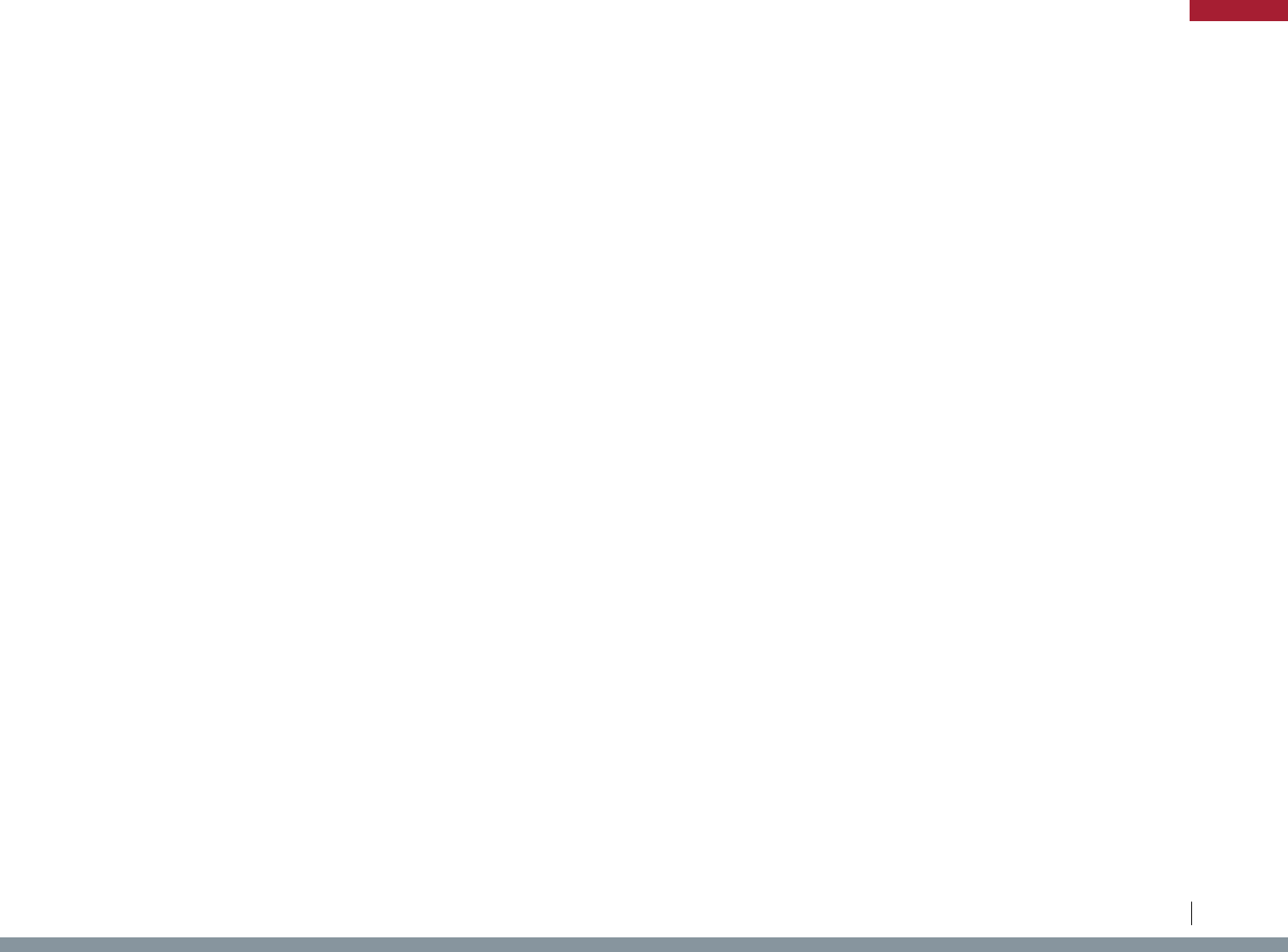
State Law/Regulation Potentially Impacted Industry Agricultural Product Regulation Type Purpose Description
VA 2 Va. Admin. Code § 5-141-70 Livestock Cattle Importation
Disease/Pest
Prevention
Import requirements for cattle - certification, permitting, and
identification requirements, tuberculosis, brucellosis
VA 2 Va. Admin. Code § 5-141-90 Livestock Sheep, Goats Importation
Disease/Pest
Prevention
Import requirements for sheep and goats - health certification,
identification requirements, scrapie, tuberculosis
VA 2 Va. Admin. Code § 5-205-100 Livestock Sheep, Goats, Swine Importation
Disease/Pest
Prevention
Importation requirements for animals in shooting enclosures - health
requirements, scabies, tuberculosis, brucellosis, etc.
VA 2 Va. Admin. Code § 5-206-30 Livestock Sheep, Goats Importation
Disease/Pest
Prevention
Import requirements for sheep and goats - state restrictions, certificate
of veterinary inspection, identification requirements, scrapie
VA 2 Va. Admin. Code § 5-315-40 Nursery Stock Nursery Plants Importation
Disease/Pest
Prevention
Imported fire ant restrictions
VA 2 Va. Admin. Code § 5-317-60 Plants Plants Importation
Disease/Pest
Prevention
Certificate, permit requirements regarding noxious weed imports
VA 2 Va. Admin. Code § 5-318-120 Nursery Stock Walnut trees Importation
Disease/Pest
Prevention
Thousand Cankers Disease import restrictions - regulated articles
VA 2 Va. Admin. Code § 5-318-40 Nursery Stock Walnut trees Importation
Disease/Pest
Prevention
Thousand Cankers Disease import restrictions - prohibition on entry
VA 2 Va. Admin. Code § 5-330-20 Forestry Trees Importation
Disease/Pest
Prevention
Import restrictions on trees - gypsy moth restrictions, quarantine areas
VA 2 Va. Admin. Code § 5-330-30 Forestry Trees Importation
Disease/Pest
Prevention
Import restrictions on trees - gypsy moth restrictions
VA 2 Va. Admin. Code § 5-390-20 Plants Seeds Prohibition
Disease/Pest
Prevention
Noxious weed seed restrictions
VA 2 Va. Admin. Code § 5-40-50 Livestock Cattle Importation
Disease/Pest
Prevention
Bovine Tuberculosis permit requirements
VA 2 Va. Admin. Code § 5-440-30 Cotton Cotton Importation
Disease/Pest
Prevention
Boll Weevil Restrictions - cotton related import restrictions
VA 2 Va. Admin. Code § 5-450-40 Forestry
European Black
Currant
Importation
Disease/Pest
Prevention
Prohibition on European black currant imports - White Pine Blister Rust
VA Va. Code § 3.2-3804 Plants Nursery Plants Importation
Disease/Pest
Prevention
Importation requirements for nursery stock - inspection certificate
requirements
VA Va. Code § 3.2-4405 Livestock Bees Importation
Disease/Pest
Prevention
Importation requirements for bees and used bee equipment - permit
required
VA Va. Code § 3.2-4406 Livestock Bees Importation
Disease/Pest
Prevention
Importation requirements for bees in combless packages - certificate of
health required
VA Va. Code § 3.2-4407 Livestock Bees Certification
Disease/Pest
Prevention
Bee sale requirements - certificate of health requied for bees on
combs, hives, used beekeeping equipment with combs, or appliances
VT 20 Vt. Code R. 022 002 Livestock Poultry Importation
Disease/Pest
Prevention
Highly pathogenic avian influenza - prohibition on importing certain
poultry
VT 20 Vt. Code R. 022 005: XI Livestock Swine Importation
Disease/Pest
Prevention
Importation requirements for swine - permit, health certification, swine
brucellosis
VT 20 Vt. Code R. 022 006: 1405 Livestock Cattle Prohibition
Disease/Pest
Prevention
Brucellosis sales prohibition
VT 20 Vt. Code R. 022 010: III Livestock Equines Importation
Disease/Pest
Prevention
Rules governing importation of equines - certification, Equine
Infectious Anemia
146
Legislative Analysis of S.2019 / H.R.4417: The “Ending Agricultural Trade Suppression Act”
APPENDIX
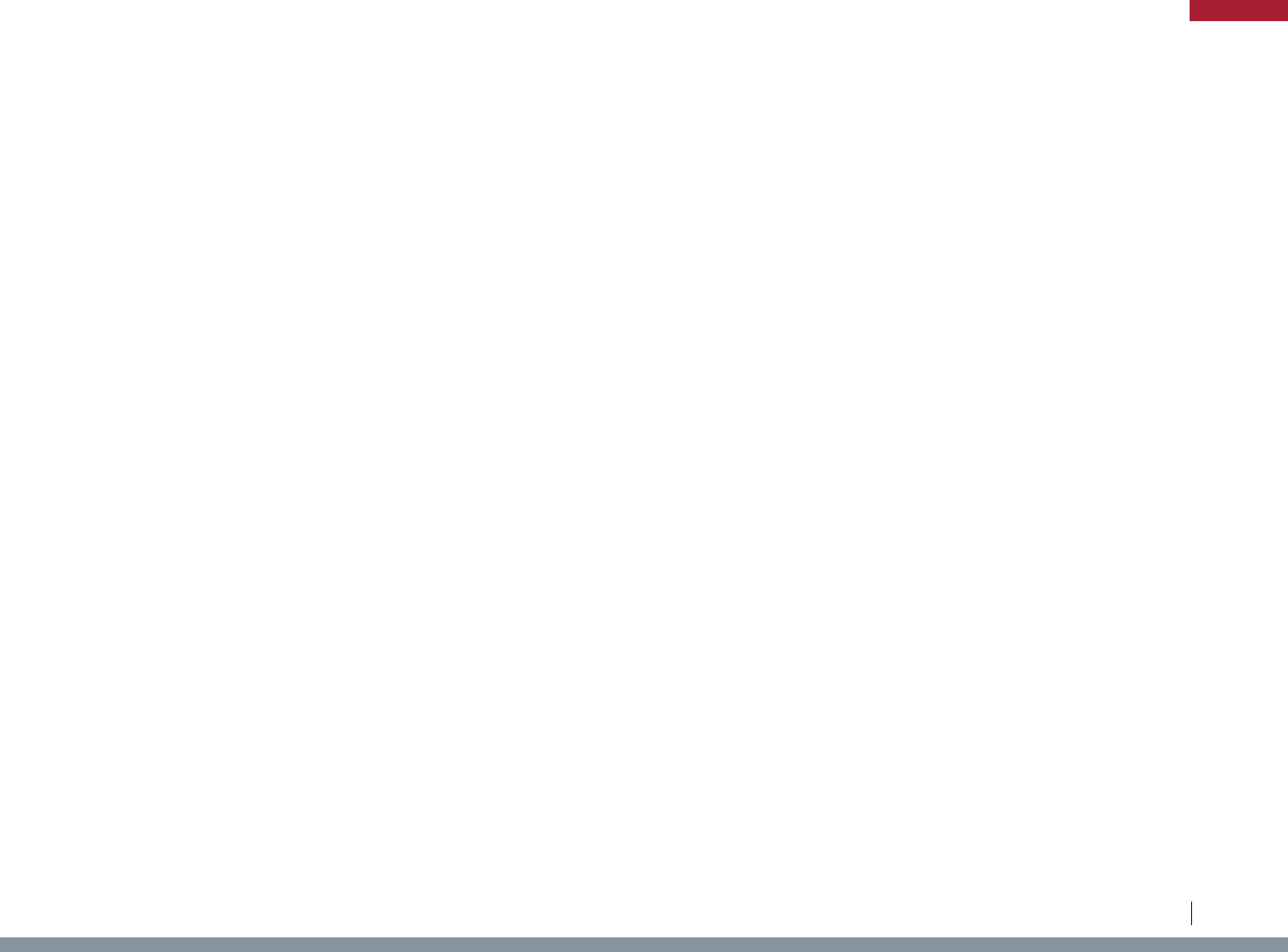
State Law/Regulation Potentially Impacted Industry Agricultural Product Regulation Type Purpose Description
VT 20 Vt. Code R. 022 019 Live Animals Domestic Animals Importation
Disease/Pest
Prevention
Importation requirements for domestic animals including livestock and
poultry - permit and certification requirements and certain prohibitions
VT 20 Vt. Code R. 022 023 Livestock Cervids Importation
Disease/Pest
Prevention
Captive cervid import requirements - certificate of veterinary inspection
VT 20 Vt. Code R. 031 002:V Livestock Bees Importation
Disease/Pest
Prevention
Import restrictions for bees - certificate of inspection, tracheal mite
VT 20 Vt. Code R. 031 009:V-2 Nursery Stock Nursery Stock Importation
Disease/Pest
Prevention
Transportation of nursery stock into vermont - certification requirement
VT 20 Vt. Code R. 031 009:VI-1 Nursery Stock Nursery Stock Prohibition
Disease/Pest
Prevention
Prohibition against sale of diseased or infested nursery stock
VT Vt. Stat. tit. 6, § 1163 Live Animals Live Animals Importation
Disease/Pest
Prevention
Fines for importing any animal infected with or exposed to a contagious
disease or selling condemned animals or carcasses
VT Vt. Stat. tit. 6, § 1181 Livestock Equines Importation
Disease/Pest
Prevention
Equine import requirements - certificate of veterinarian inspection,
equine infectious anemia
VT Vt. Stat. tit. 6, § 3032 Livestock Bees Importation
Disease/Pest
Prevention
Transportation of bees or used equipment into the State
VT Vt. Stat. tit. 6, § 4026 Nursery Stock Nursery Stock Importation
Disease/Pest
Prevention
Foreign nursery stock - certificate of inspection, transportation
requirements, penalty
VT Vt. Stat. tit. 6, § 4027 Nursery Stock Nursery Stock Prohibition
Disease/Pest
Prevention
Diseased or infested nursery stock prohibition - stop-sale, destruction
VT Vt. Stat. tit. 6, § 4028 Nursery Stock Nursery Stock Recordkeeping
Disease/Pest
Prevention
Access to records requirements for nursery stock dealers and growers
WA Wash. Admin. Code § 16-470-030 Forestry
Trees, Shrubs, Other
Products
Importation
Disease/Pest
Prevention
Gypsy Moth restrictions - quaratine of host and carrier goods
WA Wash. Admin. Code § 16-54-030 Live Animals Live Animals Importation
Disease/Pest
Prevention
Importation requirements for animals - certificate of veterinary
inspection and entry permit requirements
WA Wash. Admin. Code § 16-54-032 Live Animals Live Animals Importation
Disease/Pest
Prevention
Certificate of veterinary inspection - required information
WA Wash. Admin. Code § 16-54-065 Live Animals Live Animals Importation
Disease/Pest
Prevention
Prohibition on any animal that is infected with or exposed to any
infectious or communicable disease entering Washington state, other
entry prohibitions
WA Wash. Admin. Code § 16-54-068 Live Animals Live Animals Importation
Disease/Pest
Prevention
Importation restrictions
WA Wash. Admin. Code § 16-54-071 Livestock Equines Importation
Disease/Pest
Prevention
Importation requirements for equines, equine reproductive products -
certificate of veterinary inspection, equine infectious anemia testing,
Equine Viral Arteritis, piroplasmosis
WA Wash. Admin. Code § 16-54-082 Livestock Bovines Importation
Disease/Pest
Prevention
Importation requirements for bovines - certificate of veterinary
inspection, entry permit, identification
WA Wash. Admin. Code § 16-54-083 Livestock Bovines Importation
Disease/Pest
Prevention
Importation requirements for bovines - brucellosis testing, vaccination
WA Wash. Admin. Code § 16-54-085 Livestock Bovines Importation
Disease/Pest
Prevention
Importation requirements for bovines - tuberculosis
WA Wash. Admin. Code § 16-54-086 Livestock Bovines Importation
Disease/Pest
Prevention
Importation requirements for bovines - trichomoniasis
147
Legislative Analysis of S.2019 / H.R.4417: The “Ending Agricultural Trade Suppression Act”
APPENDIX
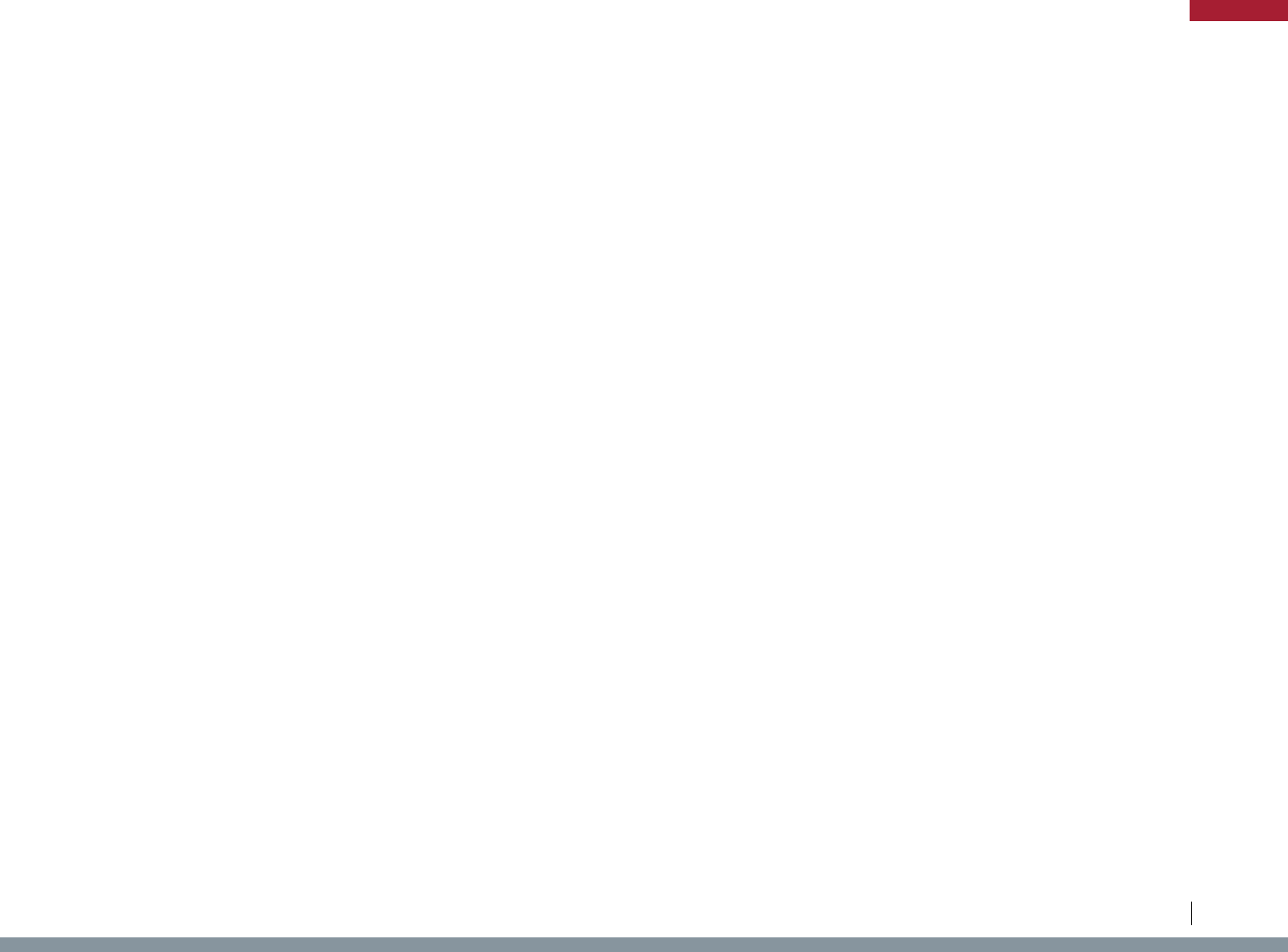
State Law/Regulation Potentially Impacted Industry Agricultural Product Regulation Type Purpose Description
WA Wash. Admin. Code § 16-54-090 Livestock Goats Importation
Disease/Pest
Prevention
Importation requirements for goats - certificate of veterinary inspection,
must be free from clinical signs or known exposure to any infectious or
communicable disease including, but not limited to, footrot, sore mouth,
and caseous lymphadenitis, testing for brucellosis, tuberculosis,
identification
WA Wash. Admin. Code § 16-54-101 Livestock Sheep Importation
Disease/Pest
Prevention
Importation requirements for sheep - certificate of veterinary inspection,
identification, must be clinically free from the signs of infectious
diseases, including footrot, sore mouth, and caseous lymphadenitis,
originate from scrapie-free flock, Brucella ovis testing
WA Wash. Admin. Code § 16-54-105 Livestock Llamas, Alpacas Importation
Disease/Pest
Prevention
Importation requirements for llamas and alpacas - all llamas and
alpacas imported into Washington state shall be accompanied by a
health certificate stating that the animals are free from signs of or
exposure to infectious or communicable disease
WA Wash. Admin. Code § 16-54-111 Livestock Swine Importation
Disease/Pest
Prevention
Importation requirements for swine, swine reproductive material - entry
permit, certificate of veterinary inspection, individual identification,
brucellosis, pseudorabies
WA Wash. Admin. Code § 16-54-145 Livestock
Poultry, Gamebirds,
Ratites, Hatching
Eggs
Importation
Disease/Pest
Prevention
Importation requirements for poultry, ratites, and game birds - certificate
of veterinary inspection or other specified documentation required,
testing for Salmonella Pullorum, Avian influenza, and other diseases,
identification for ratites
WA Wash. Admin. Code § 16-54-160 Livestock Birds Except Poultry Importation
Disease/Pest
Prevention
Importation requirements for birds other than poultry including
psittacine birds - certificate of veterinary inspection, identification
WA Wash. Admin. Code § 16-54-170 Pets Dogs, Cats, Ferrets Inspection
Disease/Pest
Prevention
Importation requirements for dogs, cats, and ferrets - certificate of
veterinary inspection, rabies vaccination, heartworm testing or
preventative for some dogs
WA Wash. Admin. Code § 16-54-180 Live Animals
Exotic Animals,
Wildlife
Importation
Disease/Pest
Prevention
Importation requirements for exotic animals and wildlife - certificate of
veterinary inspection, entry permit, testing requirements (brucellosis,
tuberculosis, rabies, Elaphostrongylinae, equine infectious anemia,
pseudorabies)
WA Wash. Admin. Code § 16-752-620 Plants Plants, Seeds Importation
Disease/Pest
Prevention
Noxious weed restrictions - prohibited to transport, buy, sell, offer for
sale, or to distribute plants or plant parts of the regulated species listed
into or within the state of Washington or to sell, offer for sale, or
distribute seed packets of the seed, flower seed blends, or wildflower
mixes of these regulated species into or within the state of Washington
WA Wash. Admin. Code § 220-370-100 Aquaculture Fish Importation
Disease/Pest
Prevention
Marine finfish aquaculture - approval permit for marine finfish
aquaculture, importation
WA Wash. Admin. Code § 220-370-200 Aquaculture Shellfish Importation
Disease/Pest
Prevention
Importation requirements for aquatic invertebrates - unlawful for any
person to import into Washington or possess live imported aquatic
invertebrates, except market ready shellfish, without first obtaining an
aquatic invertebrate import permit issued by the department
WA Wash. Rev. Code § 16.36.140 Live Animals Live Animals Inspection
Disease/Pest
Prevention
Bringing an animal into the state - securing a certificate of veterinary
inspection required, exemptions
WI Wis. Admin. Code ATCP § 10.06 Live Animals Live Animals Importation
Disease/Pest
Prevention
Certificate of veterinary inspection shall accompany every animal
imported - with exceptions
WI Wis. Admin. Code ATCP § 10.07 Live Animals Live Animals Importation
Disease/Pest
Prevention
Animal import requirements including permits
148
Legislative Analysis of S.2019 / H.R.4417: The “Ending Agricultural Trade Suppression Act”
APPENDIX
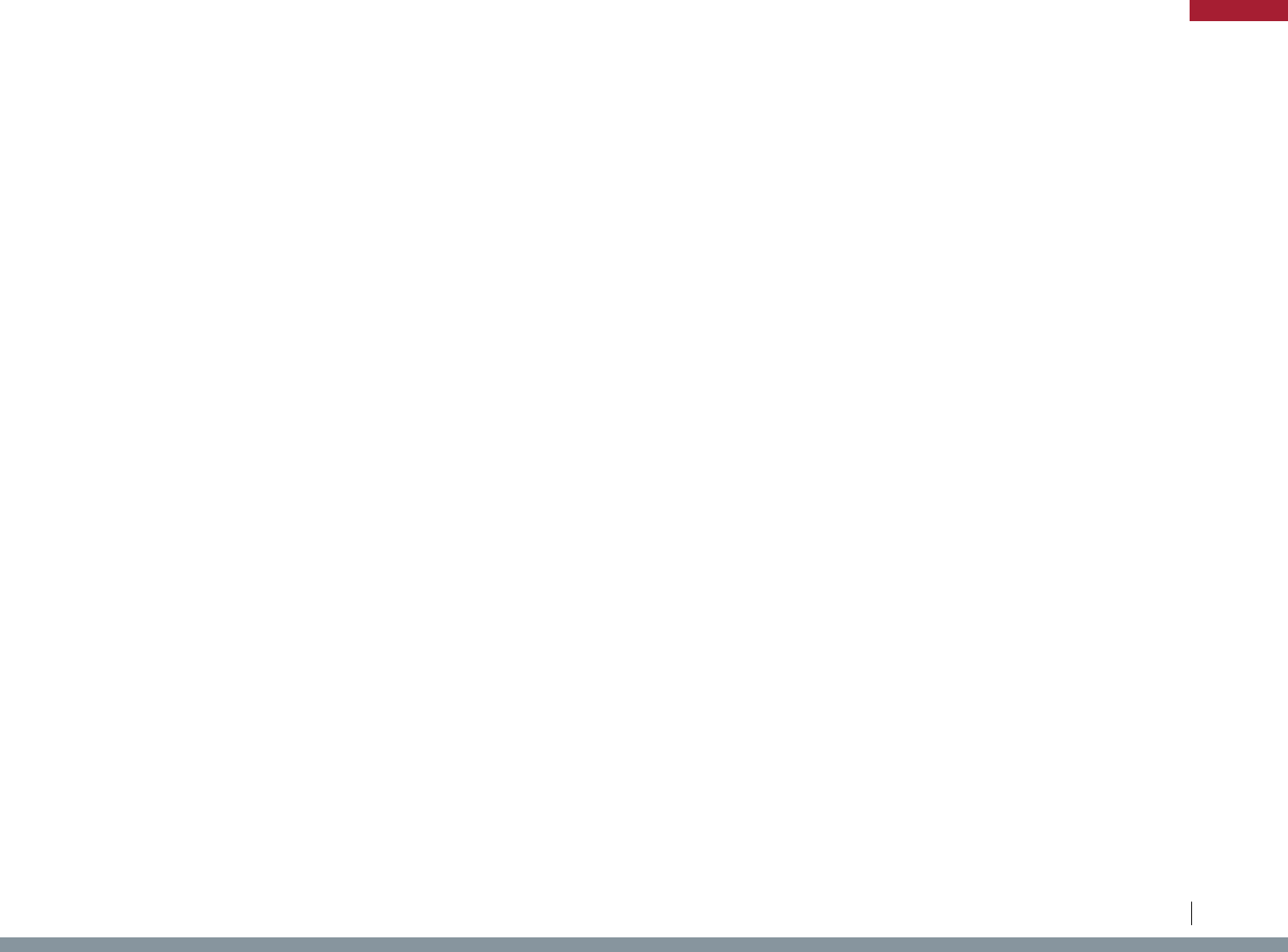
State Law/Regulation Potentially Impacted Industry Agricultural Product Regulation Type Purpose Description
WI Wis. Admin. Code ATCP § 10.08 Live Animals Live Animals Importation
Disease/Pest
Prevention
Prohibition on moving diseased animals - anthrax, brucellosis, chronic
wasting disease, etc.
WI Wis. Admin. Code ATCP § 10.22 Livestock Bovines Importation
Disease/Pest
Prevention
Importation requirements for bovine animals - brucellosis, tuberculosis,
etc.
WI Wis. Admin. Code ATCP § 10.30 Livestock Swine Importation
Disease/Pest
Prevention
Importation requirements for swine - brucellosis, pseudorabies, etc.
WI Wis. Admin. Code ATCP § 10.36 Livestock Horses Importation
Disease/Pest
Prevention
Equine import requirements - equine infectious anemia
WI Wis. Admin. Code ATCP § 10.42 Livestock Poultry Importation
Disease/Pest
Prevention
Importation requirements for poultry - pullorum, fowl typhoid, etc.
WI Wis. Admin. Code ATCP § 10.55 Livestock Cervids Importation
Disease/Pest
Prevention
Cervid import requirements - chronic wasting disease, tuberculosis
WI Wis. Admin. Code ATCP § 10.62 Fish Fish Importation
Disease/Pest
Prevention
Fish import requirements - permit required with exceptions
WI Wis. Admin. Code ATCP § 10.69 Livestock Sheep Importation
Disease/Pest
Prevention
Importation requirements for sheep
WI Wis. Admin. Code ATCP § 10.76 Livestock Goats Importation
Disease/Pest
Prevention
Importation requirements for goats - tuberculosis
WI Wis. Admin. Code ATCP § 10.83 Livestock Ratites Importation
Disease/Pest
Prevention
Importation requirements for ratites
WI Wis. Admin. Code ATCP § 10.85 Livestock Camelids Importation
Disease/Pest
Prevention
South American camelid import requirements
WI Wis. Admin. Code ATCP § 21.10 Forestry Trees Importation
Disease/Pest
Prevention
Gypsy moth restrictions - import controls and quarantine
WI Wis. Admin. Code ATCP § 21.12 Forestry Trees Importation
Disease/Pest
Prevention
Pine shoot beetle restrictions - import controls and quarantine
WI Wis. Admin. Code ATCP § 21.13 Livestock Bees Importation
Disease/Pest
Prevention
Honeybee import requirements
WI Wis. Admin. Code ATCP § 21.16 Forestry Hemlock Trees Importation
Disease/Pest
Prevention
Hemlock woolly adelgid - import controls
WI Wis. Admin. Code ATCP § 21.18 Forestry Trees Importation
Disease/Pest
Prevention
Asian longhorned beetle - import controls and quarantine
WI Wis. Admin. Code ATCP § 21.19 Forestry Nursery Stock Importation
Disease/Pest
Prevention
Phytophthora ramorum - import controls and quarantine
WI Wis. Admin. Code ATCP § 21.21 Forestry Nursery Stock Importation
Disease/Pest
Prevention
Thousand cankers disease of walnut trees - import restrictions
WI Wis. Admin. Code ATCP § 21.22 Forestry Nursery Stock Importation
Disease/Pest
Prevention
Importation restrictions on pine nursery stock - Mountain Pine Beetle
WI Wis. Admin. Code ATCP § 94.01 Plants Plants, Plant
Products
Importation
Disease/Pest
Prevention
Plant inspection and pest control authority - importation restrictions
WI Wis. Admin. Code ATCP § 94.03
Agricultural
Products
Agricultural Products Importation
Disease/Pest
Prevention
Shipment of pests and biological control agents - permits
WI Wis. Stat. § 29.735 Fish Fish Importation
Disease/Pest
Prevention
Importation of non-native fish - permit required
WI Wis. Stat. § 94.76 Livestock Bees Importation
Disease/Pest
Prevention
Honeybee disease and pest control - import restrictions
149
Legislative Analysis of S.2019 / H.R.4417: The “Ending Agricultural Trade Suppression Act”
APPENDIX
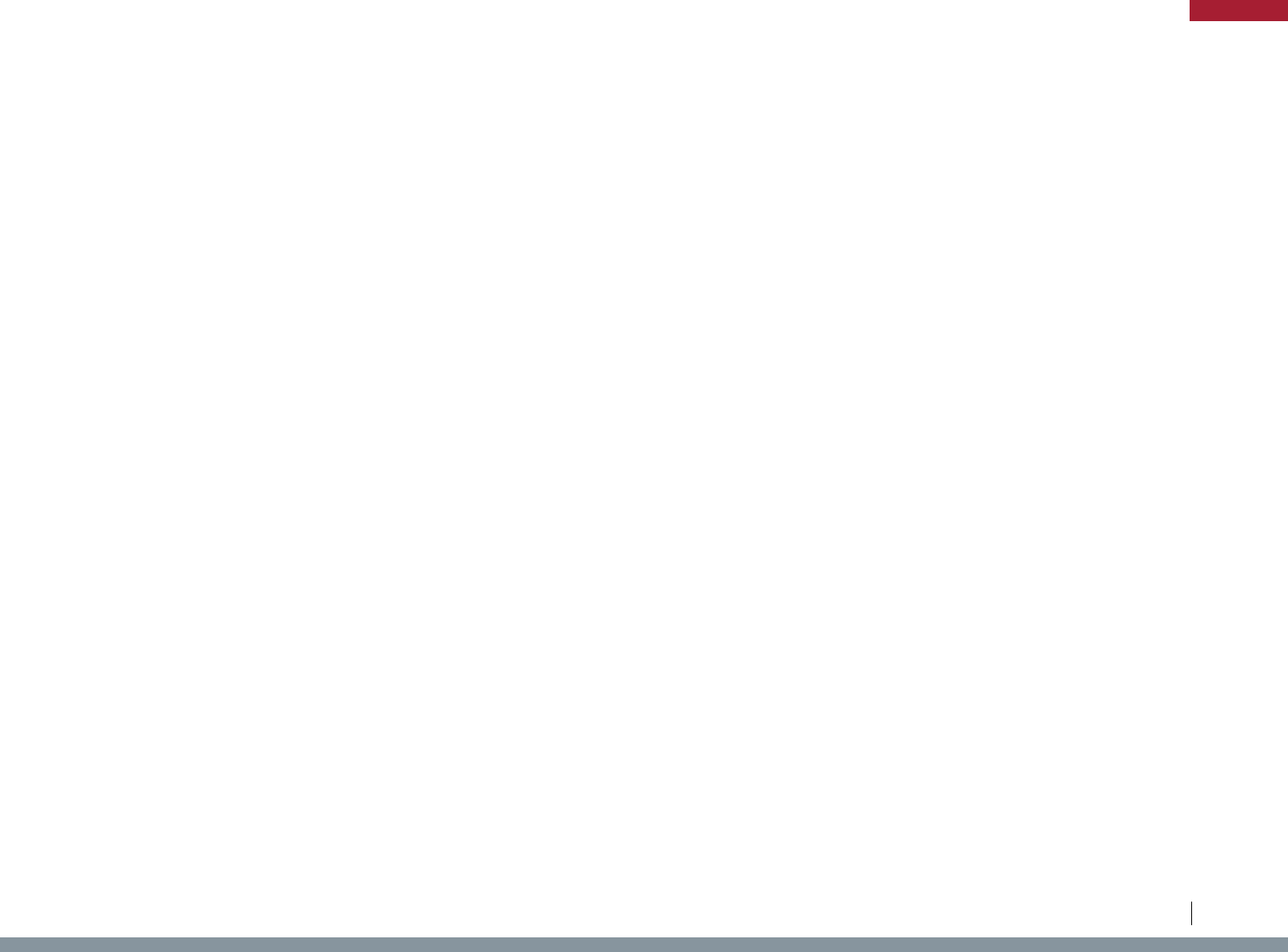
State Law/Regulation Potentially Impacted Industry Agricultural Product Regulation Type Purpose Description
WV W. Va. Code § 19-13-7 Livestock Bees Importation
Disease/Pest
Prevention
Importation requirements for bees - bees brought into state to carry
inspection certificate, commissioner to be notified, nterstate movement
of bees
WV W. Va. Code § 19-9-2(e) Live Animals Live Animals Importation
Disease/Pest
Prevention
Duties of commissioner - authority to prohibit the importation into this
State of animals and poultry, when necessary to prevent the spread of
disease
WV W. Va. Code § 20-2-13 Live Animals
Fish, Fish Eggs,
Wildlife
Importation
Disease/Pest
Prevention
Importation of wildlife, fish, fish eggs - certification and inspection of
imported wildlife, Viral Hemorrhagic Septicemia
WV W. Va. Code R. § 61-1-10 Livestock Livestock Importation
Disease/Pest
Prevention
Requirements for fairs, festivals, and purebred consignment sales -
certificate of veterinary inspection, tuberculosis, brucellosis, etc.
WV W. Va. Code R. § 61-1-14 Livestock Swine Importation
Disease/Pest
Prevention
Prohibition on sale, transfer, trade, importation, etc. of swine unless
tested negative for pseudorabies or meeting other conditions
WV W. Va. Code R. § 61-1-6 Live Animals Live Animals Importation
Disease/Pest
Prevention
Authority to quarantine improperly imported animals
WV W. Va. Code R. § 61-1-8 Live Animals Live Animals Importation
Disease/Pest
Prevention
Animal importation requirements - prohibition on importation of animals
infected with a communicable disease, exposed to disease, or from
quarantined area, requirements for cattle, goats, sheep, equines,
swine, wildlife, birds other than ratites, ratites, camelids, and dogs and
cats
WV W. Va. Code R. § 61-1-9 Livestock Livestock Importation
Disease/Pest
Prevention
Rules for livestock sales - brucellosis testing requirements,
identification for sheep and goats, equine infectious anemia testing
WV W. Va. Code R. § 61-14A-5 Plants Plants Importation
Disease/Pest
Prevention
Noxious weed restrictions - authority to quarantine, suppress, or
control, listed plants
WV W. Va. Code R. § 61-9-13 Plants Plants Importation
Disease/Pest
Prevention
Seed regulations - disclosure of treatment, germination standards,
labeling, reporting, noxious weed seeds, only certified seed potatoes
may be sold
WY 040-0010 Wyo. Code R. § 10 Live Animals Wildlife Importation
Disease/Pest
Prevention
Interstate transportation requirements for live warm-blooded wildlife -
transport permit and veterinary certificate of inspection required
WY 051-0002-2 Wyo. Code R. § 6 Livestock Bovines Importation
Disease/Pest
Prevention
Brucellosis vaccination requirement for all sexually intact female
domestic Bovinae imported to Designated Surveillance Area
WY 051-0008-8 Wyo. Code R. § 11 Live Animals Live Animals Importation
Disease/Pest
Prevention
Prohibition on importation of animals affected with, or has recently
been exposed to any infectious, contagious, or communicable disease
or that originates from an area under Quarantine
WY 051-0008-8 Wyo. Code R. § 14 Livestock Cattle, Bison Importation
Disease/Pest
Prevention
Importation requirements for bison and cattle - certificate of veterinary
inspection, permit, identification, brucellosis, trichomoniasis,
tuberculosis
WY 051-0008-8 Wyo. Code R. § 15 Livestock Camelids Importation
Disease/Pest
Prevention
Importation requirements for camelids - certificate of veterinary
inspection, identification, tuberculosis, brucellosis
WY 051-0008-8 Wyo. Code R. § 17 Livestock Ratites Importation
Disease/Pest
Prevention
Importation requirements for flightless birds including emus, ostriches -
certificate of veterinary inspection, testing prior to entry for Avian
Influenza, Pullorum-Typhoid unless from NPIP clean flock
WY 051-0008-8 Wyo. Code R. § 18 Livestock Horses Importation
Disease/Pest
Prevention
Importation requirements for horses - certificate of veterinary
inspection, negative Equine Infectious Anemia test
WY 051-0008-8 Wyo. Code R. § 19 Livestock
Poultry, Hatching
Eggs
Importation
Disease/Pest
Prevention
Importation requirements for poultry and hatching eggs - certificate of
veterinary inspection or National Poultry Improvement Plan Form VS 9-
3, negative testing for Avian Influenza and other Poultry-specific
diseases, prohibition on importation from Quarantine area or control
zone
150
Legislative Analysis of S.2019 / H.R.4417: The “Ending Agricultural Trade Suppression Act”
APPENDIX
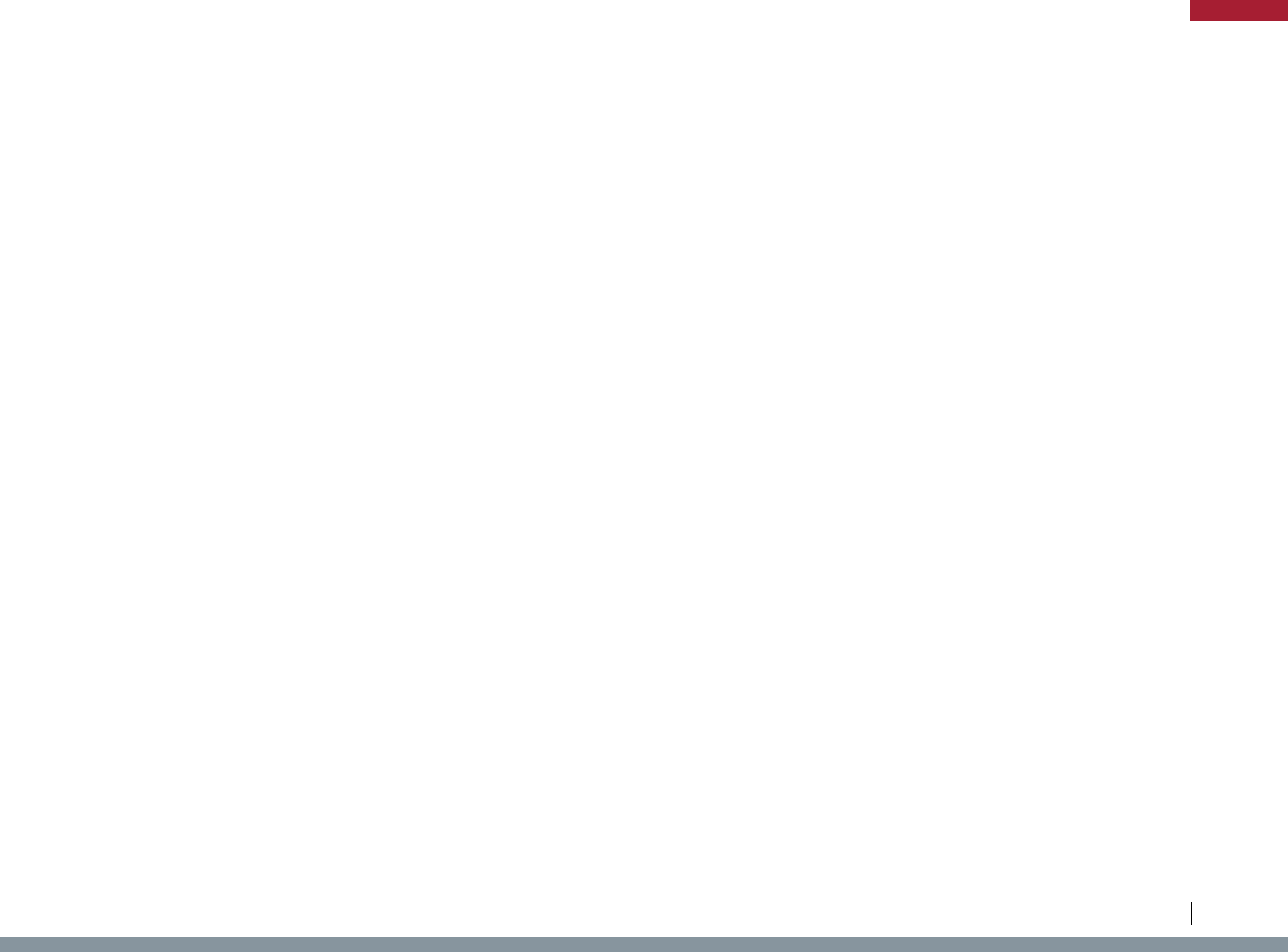
State Law/Regulation Potentially Impacted Industry Agricultural Product Regulation Type Purpose Description
WY 051-0008-8 Wyo. Code R. § 20 Livestock Sheep, Goats Importation
Disease/Pest
Prevention
Importation requirements for sheep and goats - certificate of veterinary
inspection, import permit, Brucella melitensis, Brucella ovis (for sheep),
Scrapie, Show Lamb Fungus
WY 051-0008-8 Wyo. Code R. § 21 Livestock Swine Importation
Disease/Pest
Prevention
Importation requirements for swine - certificate of veterinary inspection,
import permit, identification, Brucellosis, pseudorabies, ban on swine
fed garbage
WY 051-0008-8 Wyo. Code R. § 7 Live Animals Live Animals Importation
Disease/Pest
Prevention
General animal import requirements - certificiate of veterinary
inspection and import permit or shipping number
WY 051-0008-8 Wyo. Code R. § 8 Live Animals Live Animals Importation
Disease/Pest
Prevention
Interstate Certificates of Veterinary Inspections (ICVI) & permit
requirements
WY Wyo. Stat. § 11-7-302 Livestock Bees Importation
Disease/Pest
Prevention
Importation requirements for bees - pre-import inspection, affidavit
WY Wyo. Stat. § 11-7-404 Livestock Bees Importation
Disease/Pest
Prevention
Bee quarantine, sanitization, and destruction authority
AL Ala. Admin. Code r. 80-1-22-.36 Food Food Labeling Food Safety Noxious weed seed restrictions
FL Fla. Stat. § 601.93 Food Citrus Food Safety Food Safety Citrus containing arsenic
GA Ga. Comp. R. & Regs. 511-6-1-.04 Food
Dairy, Mushrooms,
Shellfish
Sourcing Food Safety
Requirements that food be safe, unadulterated, and honestly
presented - sourcing requirements for shellfish, wild mushrooms, fluid
milk and milk products, etc.
IL Ill. Admin. Code tit. 8, pt. 65.40 Food Eggs Prohibition Food Safety Prohibition on the sale of eggs less than Grade B, etc.
IN 410 Ind. Admin. Code 7-24-155 Food Shellfish Sourcing Food Safety Shellfish sourcing requirements
ME 01 001 Me. Code R. 331 § 3-2 Food Shellfish Sourcing Food Safety Shellfish sourcing requirements
MN Minn. R. 4626.0155 Food Mushrooms Quality Standards Food Safety
Sourcing requirements for wild mushrooms - inspection, certified
mushroom harvester, buyer specification
MS Miss. Code R. § 22-1-12-100 Food Shellfish Labeling Food Safety
Prohbiting sale of adulterated, misbranded, or unlabeled shellfish and
products
NM N.M. Code R. § 7.6.2.8 Food Shellfish Sourcing Food Safety Shellfish sourcing requirements
NV Nev. Admin. Code § 446.129 Food Mushrooms Licensing Food Safety Wild mushroom sourcing requirements
NY
N.Y. Comp. Codes R. & Regs. tit. 1, §
271-2.2(g)
Game Animals Meat Quality Standards Food Safety
Requirement that game animals received for sale must be raised under
certain conditions
OK Okla. Admin. Code § 310:257-5-6 Food Shellfish Sourcing Food Safety Shellfish sourcing requirements
OK Okla. Admin. Code § 310:257-5-7 Food Mushrooms Licensing Food Safety Wild mushroom sourcing requirements
RI 216 R.I. Code R. 50-10-6.4 Food Shellfish Sourcing Food Safety Shellfish sourcing, licensing, recordkeeping requirements
RI 250 R.I. Code R. 90-00-4.8 Food Shellfish Sourcing Food Safety Shellfish sourcing requirements
SC S.C. Code Regs. 61-25 Food Shellfish Sourcing Food Safety Shellfish, wild mushroom, game animals sourcing requirements
TN
Tenn. Comp. R. & Regs. 1200-23-01-
.03
Food
Fish, Shellfish,
Mushrooms, Game
Meat
Sourcing Food Safety
Requirement that food be safe, unadulterated, and honestly presented,
sourcing requirements for fish, shellfish, wild mushrooms, game
animals
TX 25 Tex. Admin. Code § 217.29 Food Milk Quality Standards Food Safety
Requirement that all herds be free of tuberculosis and brucellosis
before any milk therefrom is sold
TX 25 Tex. Admin. Code § 228.62 Food Milk, Eggs, Shellfish Quality Standards Food Safety
Regulations governing the sourcing of certain foods - milk, eggs,
shellfish, frozen milk products
TX 4 Tex. Admin. Code § 15.2 Food Eggs Licensing Food Safety
License required for egg handling, processing, grading, buying or
selling for resale
VA 12 Va. Admin. Code § 5-421-310 Food Shellfish Sourcing Food Safety Shellfish sourcing requirements
VA 12 Va. Admin. Code § 5-421-320 Food Mushrooms Sourcing Food Safety Wild mushroom sourcing requirements
VA 2 Va. Admin. Code § 5-531-70 Dairy Milk Quality Standards Food Safety
Milk production requirements including milking barn, stable, or parlor
requirements
151
Legislative Analysis of S.2019 / H.R.4417: The “Ending Agricultural Trade Suppression Act”
APPENDIX
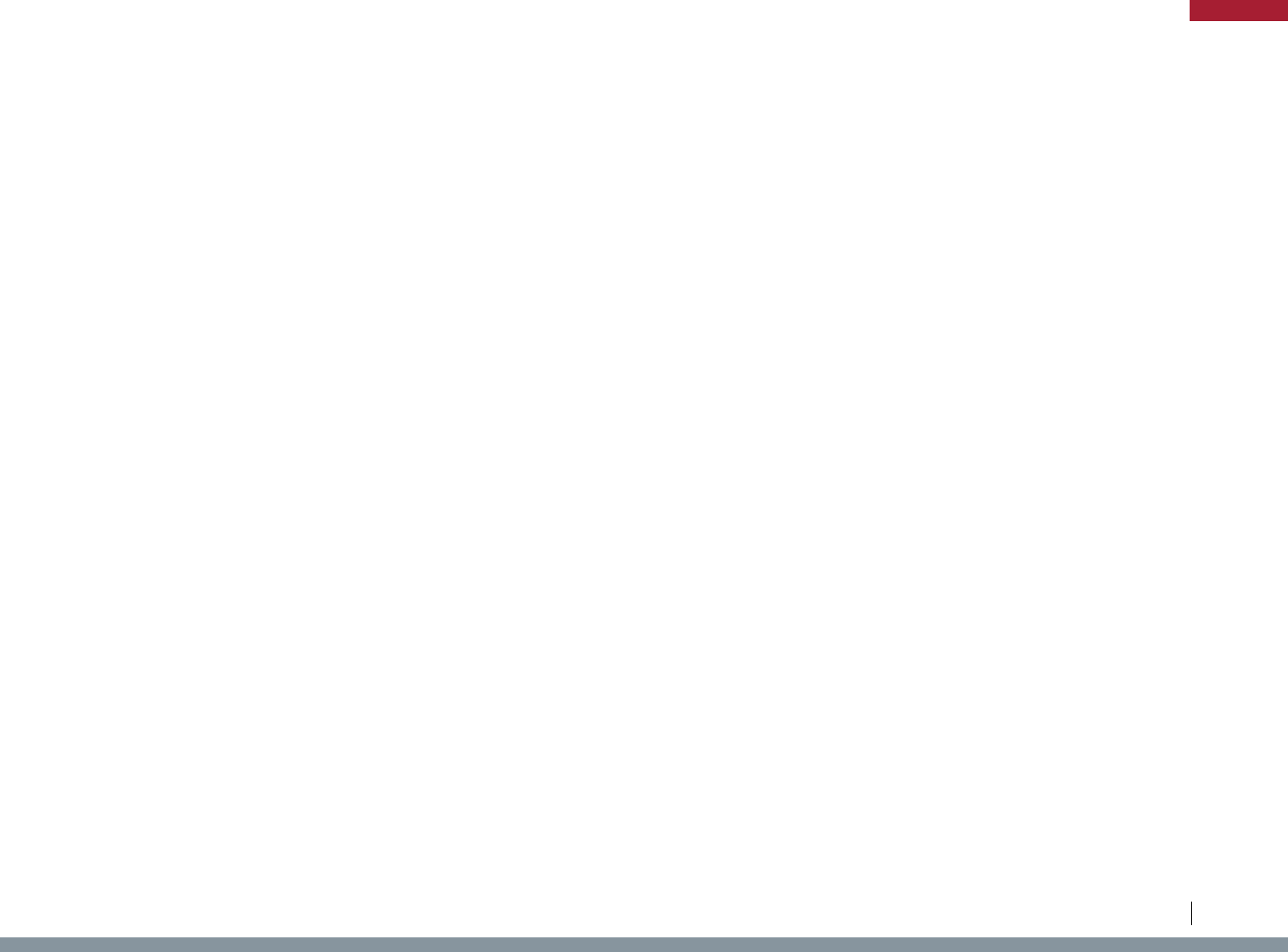
State Law/Regulation Potentially Impacted Industry Agricultural Product Regulation Type Purpose Description
VA 2 Va. Admin. Code § 5-531-90 Dairy Milk Quality Standards Food Safety
Prohibition on milk imports and sales from unhealthy animals, animals
not kept in healthy conditions
VA 2 Va. Admin. Code § 5-585-310 Food Shellfish Sourcing Food Safety Shellfish sourcing requirements
VA 2 Va. Admin. Code § 5-585-320 Food Mushrooms Sourcing Food Safety Wild mushroom sourcing requirements
VT 13 Vt. Code R. 140 018: 5-204-1-K Food Food Quality Standards Food Safety
Sourcing and labeling requirements - including shellfish, wild
mushrooms, milk and meat products, etc.
VT Vt. Stat. tit. 18, § 4059 Food Food Prohibition Food Safety Adulterated food - including production conditions
WA Wash. Admin. Code § 246-215-03220 Food Shellfish Sourcing Food Safety Shellfish sourcing requirements
WA Wash. Admin. Code § 246-215-03225 Food Mushrooms Sourcing Food Safety Wild mushroom sourcing requirements
WY 010-0003-3 Wyo. Code R. § 10 Food Shellfish Sourcing Food Safety Shellfish sourcing requirements
WY 010-0003-3 Wyo. Code R. § 3 Food Mushrooms Sourcing Food Safety Wild mushroom sourcing requirements
WY 010-0003-3 Wyo. Code R. § 9 Food Fish Sourcing Food Safety Fish sourcing requirements
AL Ala. Code § 41-16-27
Agricultural
Products
Agricultural Products Procurement Market Support Regulation of government procurement of agricultural products
AL Ala. Code § 41-16-57
Agricultural
Products
Agricultural Products Procurement Market Support Regulation of government procurement of agricultural products
CA Cal. Pub. Cont. Code § 7107
Agricultural
Products
Agricultural Products Procurement Market Support Regulation of government procurement of agricultural products
CO Colo. Rev. Stat. § 24-103-906
Agricultural
Products
Agricultural Products Procurement Market Support Government procurement regulations
CO Colo. Rev. Stat. § 24-103-907
Agricultural
Products
Agricultural Products Procurement Market Support
Government procurement regulations - preference for state agricultural
products
CT Conn. Gen. Stat. § 4a-51
Agricultural
Products
Agricultural Products Procurement Market Support
Regulation of government procurement of agricultural products - in-
state preference
CT Conn. Gen. Stat. § 4a-59
Agricultural
Products
Agricultural Products Procurement Market Support
Regulation of government procurement of agricultural products -
preferences for certain businesses
FL Fla. Stat. § 287.084
Agricultural
Products
Agricultural Products Procurement Market Support Regulation of government procurement of agricultural products
GA Ga. Code § 50-5-60
Agricultural
Products
Agricultural Products Procurement Market Support
Preference to supplies, equipment, materials, and agricultural products
produced in state
GA Ga. Code § 50-5-61
Agricultural
Products
Agricultural Products Procurement Market Support
State and local authorities to give preference to supplies, materials,
and agricultural products produced in state
HI Haw. Rev. Stat. § 103D-1002
Agricultural
Products
Agricultural Products Procurement Market Support Regulation of government procurement of agricultural products
IA Iowa Code § 73.1
Agricultural
Products
Agricultural Products Procurement Market Support Government procurement regulations - agricultural products
IA Iowa Code § 73.16
Agricultural
Products
Agricultural Products Procurement Market Support
Government procurement regulations - small business and targeted
small business preferences, veteran businesses
IA Iowa Code § 8A.311
Agricultural
Products
Agricultural Products Procurement Market Support Government procurement regulations - agricultural products
ID Idaho Code § 67-2349
Agricultural
Products
Agricultural Products Procurement Market Support
Regulation of government procurement - preference for in-state
suppliers
IL 30 Ill. Comp. Stat. § 500/45-50
Agricultural
Products
Agricultural Products Procurement Market Support Preference for agricultural products grown in Illinois
KS Kan. Stat. § 75-3740
Agricultural
Products
Agricultural Products Procurement Market Support Government procurement regulations - preference for in-state
producers
152
Legislative Analysis of S.2019 / H.R.4417: The “Ending Agricultural Trade Suppression Act”
APPENDIX
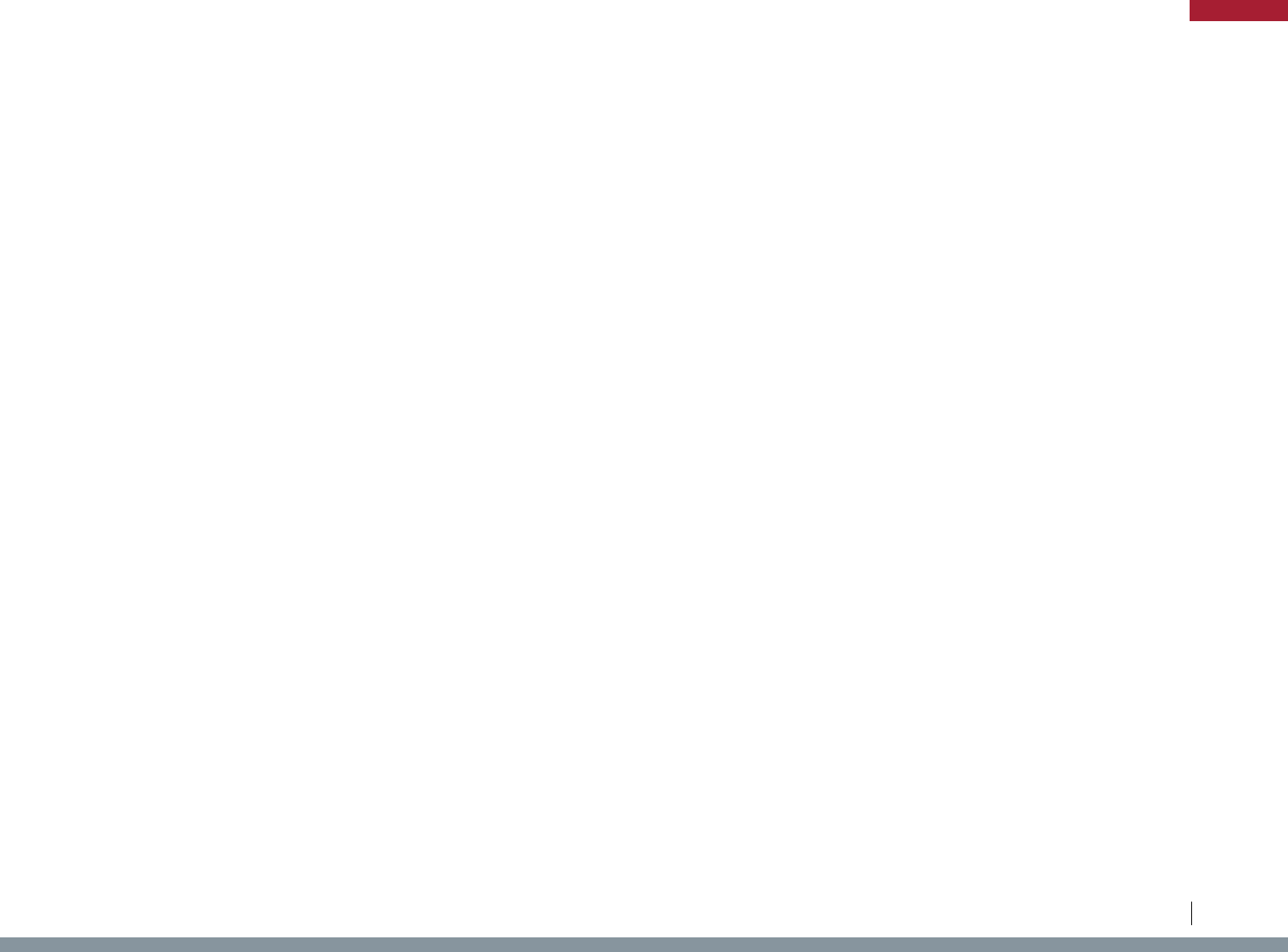
State Law/Regulation Potentially Impacted Industry Agricultural Product Regulation Type Purpose Description
KY Ky. Rev. Stat. § 45A.645
Agricultural
Products
Agricultural Products Procurement Market Support Regulation of government procurement of agricultural products
LA La. Stat. § 38:2251
Agricultural
Products
Agricultural Products Procurement Market Support Regulation of government procurement of agricultural products
LA La. Stat. § 39:1604
Agricultural
Products
Agricultural Products Procurement Market Support
Preference for all types of products produced, manufactured,
assembled, grown, or harvested in Louisiana; exceptions
MA Mass. Gen. Laws ch. 7, § 22
Agricultural
Products
Agricultural Products Procurement Market Support
Purchase of supplies and equipment; rules and regulations; duties of
state purchasing agent
MA Mass. Gen. Laws ch. 7, § 23B
Agricultural
Products
Agricultural Products Procurement Market Support
Preference for products grown in or produced from products grown in
commonwealth
MD Md. Code Regs. 21.05.01.04
Agricultural
Products
Agricultural Products Procurement Market Support Allowance of procurement preference for resident businesses
MD
Md. Code, State Fin. and Proc. § 14-
407
Agricultural
Products
Agricultural Products Procurement Market Support Procurement preferences for food grown in-state for schools
ME Me. Stat. tit. 5, § 1825-B
Agricultural
Products
Agricultural Products Procurement Market Support Regulation of government procurement of agricultural products
MI Mich. Comp. Laws § 18.1261
Agricultural
Products
Agricultural Products Procurement Market Support Regulation of government procurement of agricultural products
MN Minn. Stat. § 16C.06
Agricultural
Products
Agricultural Products Procurement Market Support Government procurement regulations - in-state vendor preference
MO Mo. Rev. Stat. § 34.070
Agricultural
Products
Agricultural Products Procurement Market Support Regulation of government procurement of agricultural products
MS Miss. Code § 31-5-23
Agricultural
Products
Agricultural Products Procurement Market Support
Government procurement regulations - preference for products grown
in state
MS Miss. Code § 31-7-15
Agricultural
Products
Agricultural Products Procurement Market Support
Government procurement regulations - preference for commodities
grown in state
MT Mont. Code § 18-1-102
Agricultural
Products
Agricultural Products Procurement Market Support Regulation of government procurement of agricultural products
NC N.C. Gen. Stat. § 143-59
Agricultural
Products
Agricultural Products Procurement Market Support
Government procurement - preference given to in state products and
citizens, and articles manufactured by State agencies
ND N.D. Cent. Code § 44-08-01
Agricultural
Products
Agricultural Products Procurement Market Support Regulation of government procurement of agricultural products
NE 9 Neb. Admin. Code, ch. 4, § 003
Agricultural
Products
Agricultural Products Procurement Market Support Regulation of government procurement of agricultural products
NE 92 Neb. Admin. Code, ch. 72, § 004
Agricultural
Products
Agricultural Products Procurement Market Support Regulation of government procurement of agricultural products
NJ N.J. Rev. Stat. § 52:32-1.4
Agricultural
Products
Agricultural Products Procurement Market Support
Regulation of government procurement of agricultural products -
reciprocity of disadvantaging conditions
NJ N.J. Rev. Stat. § 52:32-45
Agricultural
Products
Agricultural Products Procurement Market Support
Regulation of government procurement of agricultural products -
preference in State contracts for purchase of wood or paper products
derived from sustainably managed forests or procurement systems
NM N.M. Stat. § 13-1-21
Agricultural
Products
Agricultural Products Procurement Market Support Regulation of government procurement of agricultural products
NY N.Y. State Fin. Law § 165
Agricultural
Products
Agricultural Products Procurement Market Support Regulation of government procurement of agricultural products
OH Ohio Rev. Code § 125.09
Agricultural
Products
Agricultural Products Procurement Market Support Regulation of government procurement of agricultural products
153
Legislative Analysis of S.2019 / H.R.4417: The “Ending Agricultural Trade Suppression Act”
APPENDIX
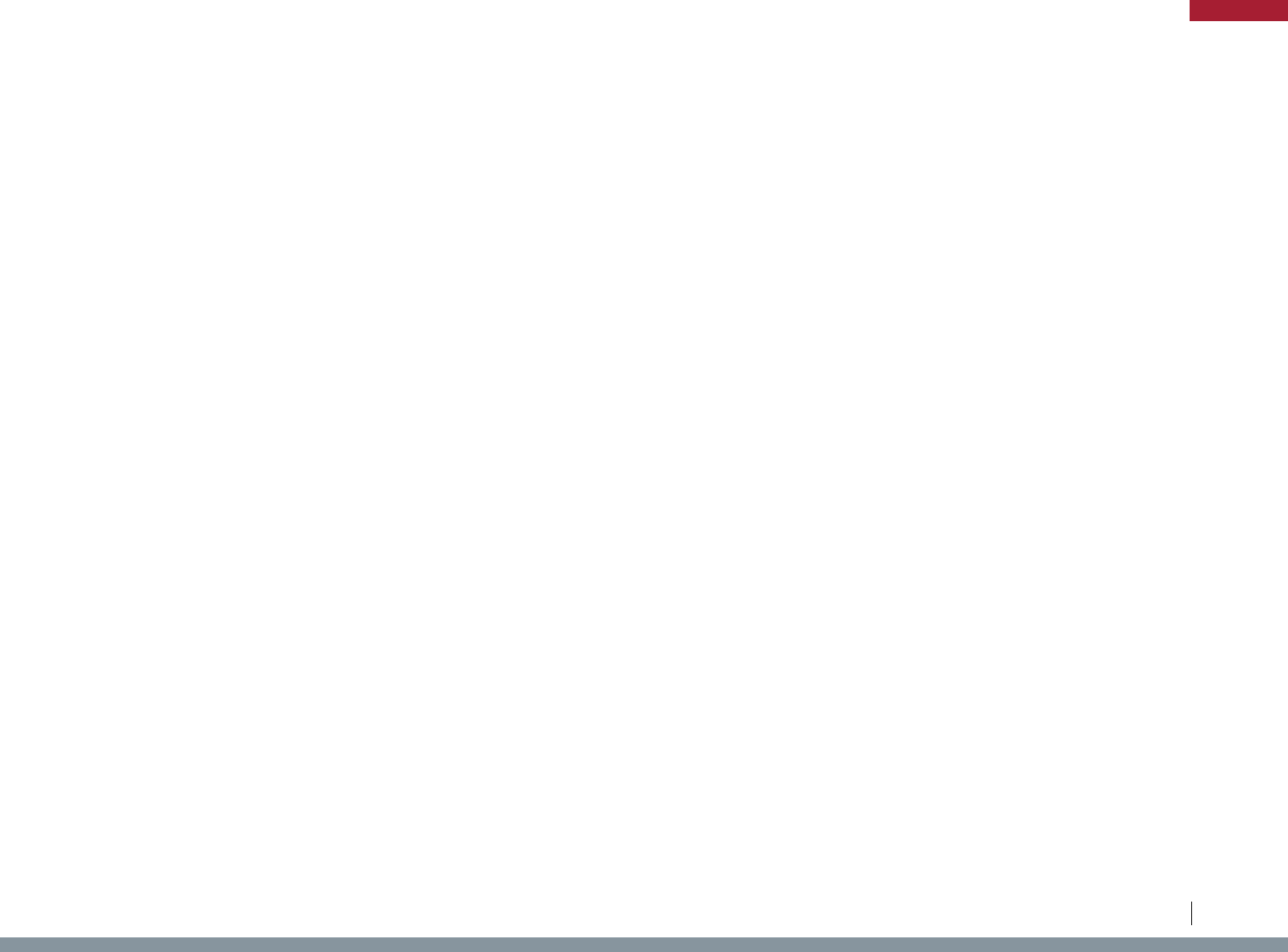
State Law/Regulation Potentially Impacted Industry Agricultural Product Regulation Type Purpose Description
OK Okla. Stat. tit. 74, § 85.17A
Agricultural
Products
Agricultural Products Procurement Market Support Bidding preferences, reciprocity, awarding contracts
OK Okla. Stat. tit. 74, § 85.44D
Agricultural
Products
Trees Procurement Market Support
Purchasing preference for products made from Oklahoma harvested
trees
OR Or. Rev. Stat. § 279A.120
Agricultural
Products
Agricultural Products Procurement Market Support Regulation of government procurement of agricultural products
OR Or. Rev. Stat. § 279A.125
Agricultural
Products
Agricultural Products Procurement Market Support Regulation of government procurement of agricultural products
PA 62 Pa. Cons. Stat. § 107
Agricultural
Products
Agricultural Products Procurement Market Support Regulation of government procurement of agricultural products
RI 37 R.I. Gen. Laws § 37-2-8
Agricultural
Products
Agricultural Products Procurement Market Support Regulation of government procurement of agricultural products
SC S.C. Code § 11-35-1524
Agricultural
Products
Agricultural Products Procurement Market Support Regulation of government procurement of agricultural products
SD S.D. Codified Laws § 5-18A-26
Agricultural
Products
Agricultural Products Procurement Market Support
Government procurement regulations - Resident bidder preferred over
nonresident bidder
TN Tenn. Code § 12-3-1108
Agricultural
Products
Meat Procurement Market Support
Tennessee meat producers - purchasing preference - departments,
agencies and institutions
TN Tenn. Code § 12-3-1113
Agricultural
Products
Agricultural Products Procurement Market Support
Preference for local agricultural products - preference for Tennessee
vegetation
UT Utah Admin. Code r. 33-10-101
Agricultural
Products
Agricultural Products Procurement Market Support Regulation of government procurement - providers of state products
UT Utah Admin. Code r. 33-6-111
Agricultural
Products
Agricultural Products Procurement Market Support
Regulation of government procurement - in event of tie bids, contract
shall be awarded to Utah resident bidders
UT Utah Code § 63G-6a-1002
Agricultural
Products
Agricultural Products Procurement Market Support
Regulation of government procurement - reciprocal preference for
providers of state products
VA Va. Code § 2.2-4324
Agricultural
Products
Agricultural Products Procurement Market Support Preference for in-state agricultural products
VA Va. Code § 2.2-4328
Agricultural
Products
Agricultural Products Procurement Market Support Preference for in-state agricultural products
WA Wash. Rev. Code § 39.26.260
Agricultural
Products
Agricultural Products Procurement Market Support Procurement preferences - in-state procurement
WI Wis. Stat. § 16.75
Agricultural
Products
Agricultural Products Procurement Market Support Government procurement regulations
WV W. Va. Code § 5A-3-37
Agricultural
Products
Agricultural Products Procurement Market Support
Reciprocal procurement preference - preference for resident vendors
for certain contracts
WY Wyo. Stat. § 16-6-104
Agricultural
Products
Agricultural Products Procurement Market Support Preference for Wyoming materials required in contracts
WY Wyo. Stat. § 16-6-105
Agricultural
Products
Agricultural Products Procurement Market Support
Preference for Wyoming materials and Wyoming agricultural products
required in public purchases
AR Ark. Code § 2-15-203 Food Rice Quality Standards Product Quality Prohibition of rice with characteristics of commercial impact
AZ Ariz. Admin. Code § 3-2-805 Food Milk Quality Standards Product Quality Grade “A” Milk - tuberculosis testing of animals required
FL Fla. Stat. § 601.46 Food Citrus Quality Standards Product Quality Citrus maturity and quality standards
154
Legislative Analysis of S.2019 / H.R.4417: The “Ending Agricultural Trade Suppression Act”
APPENDIX
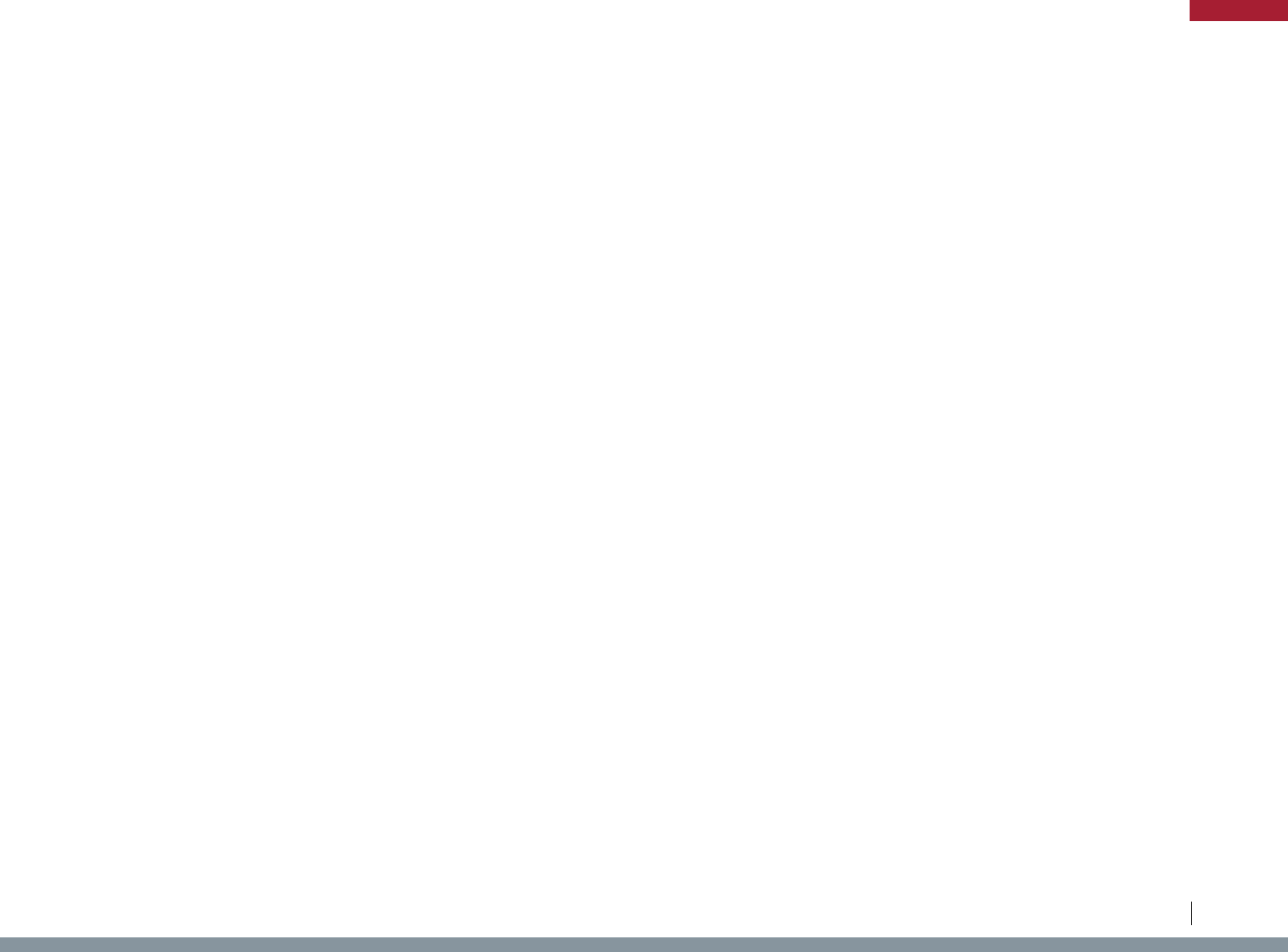
State Law/Regulation Potentially Impacted Industry Agricultural Product Regulation Type Purpose Description
FL Fla. Stat. § 601.49 Food Citrus Quality Standards Product Quality Citrus maturity and quality standards
FL Fla. Stat. § 601.55 Food Citrus Quality Standards Product Quality Citrus maturity and quality standards
FL Fla. Stat. § 601.91 Food Citrus Quality Standards Product Quality Citrus maturity and quality standards
TX 4 Tex. Admin. Code § 10.11 Food Seeds Quality Standards Product Quality Quality requirements for bulk seeds
TX 4 Tex. Admin. Code § 21.21 Fruit Citrus Quality Standards Product Quality Requirement that all citrus sold must be mature and fit for consumption
VA 2 Va. Admin. Code § 5-490-50 Dairy Milk Quality Standards Product Quality Raw milk sale restrictions - milkroom requirements
CO 8 Code Colo. Regs. § 1203-6:13 Plants Beans Labeling Quality Standards
Labeling and certification requirements for disease free seed beans -
inspection and phytosanitary certification
CO 8 Code Colo. Regs. § 1203-6:15 Plants Seeds Recordkeeping Quality Standards Requirement for responsible parties to keep records
TX Tex. Agric. Code § 131.081 Food Honey Labeling Quality standards
Prohibition on sale of products labeled as honey but not made purely
of honey
TX Tex. Agric. Code § 131.082 Food Honey Labeling Quality standards
Prohibition on sale of products resembling honey with designs of bees,
hives, or combs but not made purely of honey
TX Tex. Agric. Code § 131.083 Food Honey Prohibition Quality standards
Ban on sale of products resembling honey and labeled "imitation
honey"
TX Tex. Agric. Code § 131.084 Food Honey Labeling Quality standards Labeling requirements for honey mixtures
WV W. Va. Code § 19-16-2(s) Crops Potatoes Certification Quality standards Requirement that seed potatoes be certified, labeling requirements
CA Cal. Code Regs. tit. 3, § 3281 Plants Aquatic Plants Importation Sustainability Hydrilla Restrictions
CA Cal. Fish & Game Code § 2301 Fish Shellfish Importation Sustainability Dreissenid Mussels
CT Conn. Gen. Stat. § 22a-381d Plants Plants Importation Sustainability Invasive plant import restrictions
CT Conn. Gen. Stat. § 26-142a(b) Fish Fish Licensing Sustainability
Commercial fish license required to land regulated species regardless
of where taken
CT Conn. Gen. Stat. § 26-157a Fish Lobster Licensing Sustainability Lobster license required, equipment requirements
CT Conn. Gen. Stat. § 26-159a Fish Fish Equipment Sustainability
Regulations concerning certain sport and commercial fishing in the
marine district and possession of certain species
DE Del. Code tit. 7, § 928 Fish Finfish Licensing Sustainability
Commercial food fishing license required to land or transfer fish caught
outside State's jurisdictional boundaries
FL Fla. Admin. Code r. 68-5.003 Live Animals Non-Native Species Prohibition Sustainability Prohibition on Introduction of Non-Native Species
IA Iowa Admin. Code r. 571-90.2 Fish Fish Importation Sustainability Import restrictions on certain invasive aquatic fish and plant species
KS Kan. Admin. Regs. § 115-17-2 Fish Fish Prohibition Sustainability Limitations on species that may be sold as commercial fishing bait
MA Mass. Gen. Laws ch. 128, § 20A Plants Aquatic Plants Importation Sustainability Floating Water Chestnut Restrictions
ME Me. Stat. tit. 12, § 6421 Fish Fish Licensing Sustainability Fishing Licensing and Regulation
ME Me. Stat. tit. 12, § 6436 Fish Fish Prohibition Sustainability Egg-bearing lobsters
ME Me. Stat. tit. 12, § 6440 Fish Fish Prohibition Sustainability Closed periods for raising or hauling lobster traps
MS Miss. Code § 49-15-55 Fish Oysters Prohibition Sustainability Sale or possession of illegal oysters prohibited
MS Miss. Code § 49-7-51 Live Animals Wildlife Prohibition Sustainability Prohibition on sale of certain game animals, birds, and fish
MS Miss. Code § 49-7-87 Fish Fish Prohibition Sustainability Prohibition on sale of certain game fish
NE 163 Neb. Admin. Code, ch. 2, § 012 Plants Aquatic Plants Importation Sustainability Import restrictions on certain invasive aquatic plant species
NH N.H. Code Admin. R. Env-Wq. 1303.02 Plants Aquatic Plants Importation Sustainability Hydrilla Restrictions
155
Legislative Analysis of S.2019 / H.R.4417: The “Ending Agricultural Trade Suppression Act”
APPENDIX
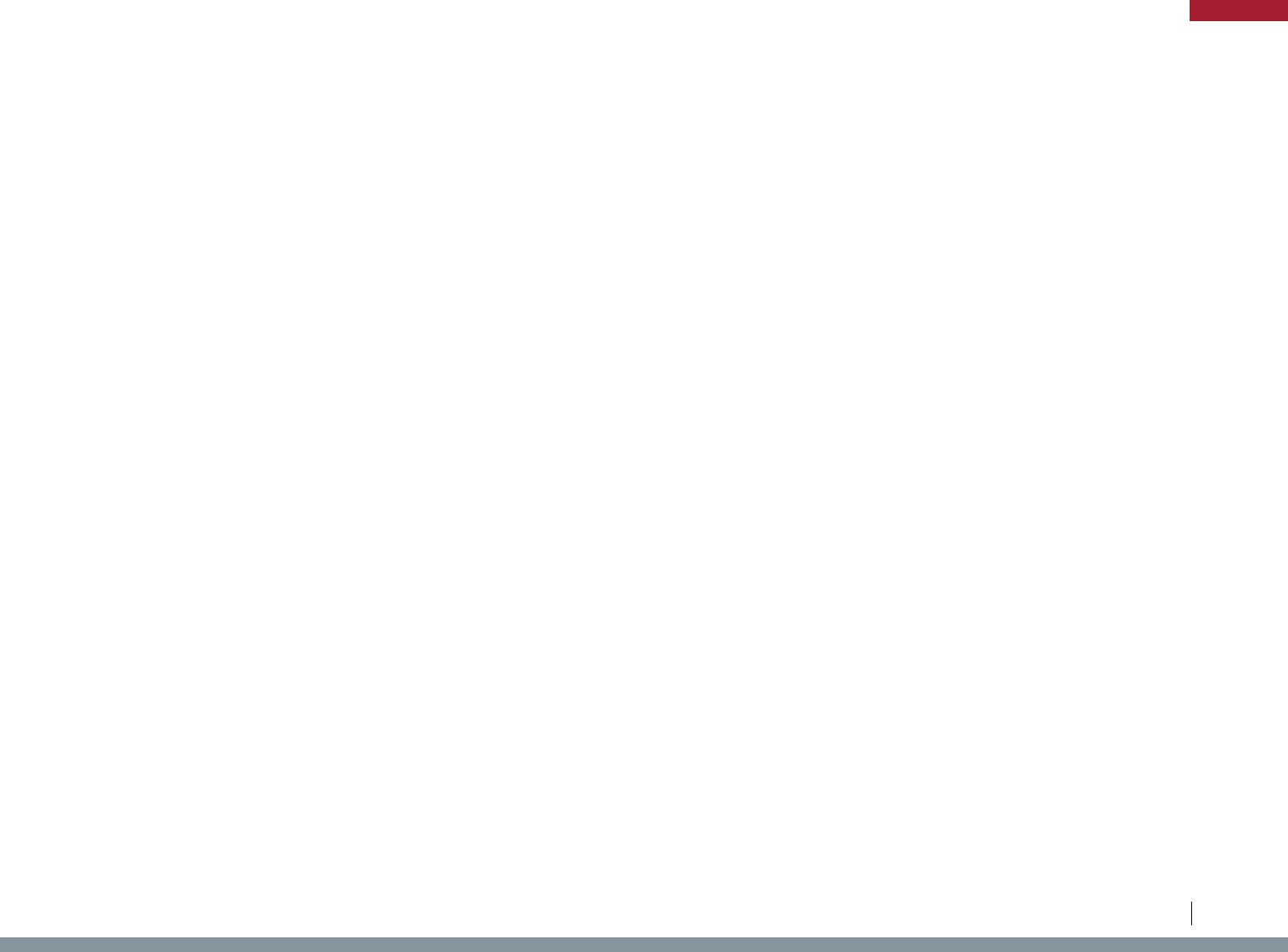
State Law/Regulation Potentially Impacted Industry Agricultural Product Regulation Type Purpose Description
NY
N.Y. Comp. Codes R. & Regs. tit. 6, §
40.1
Fish Fish Licensing Sustainability Commercial fish license requirements
OR Or. Rev. Stat. § 508.030 Fish Fish Licensing Sustainability Commercial Fish License or Permit Requirements
TX Tex. Parks & Wildlife Code § 66.020 Fish Fish Prohibition Sustainability Prohibition on sale and transport of protected fish
VA Va. Code § 28.2-228.1 Fish Fish Licensing Sustainability Landing seafood license and fees
WI Wis. Stat. § 29.611 Food Ginseng Importation Sustainability Shipment and certification of origin required to import wild ginseng
WI Wis. Stat. § 94.50 Food Ginseng Importation Sustainability
Sale or shipment of cultivated ginseng - no person may import out-of-
state cultivated ginseng into this state, unless the imported shipment is
accompanied by a valid shipment certificate issued by the state of origin
WV W. Va. Code § 19-1A-3a(d)(4) Food Ginseng Importation Sustainability
Importation requirements for ginseng - dealer may not import out-of-
state ginseng into this state unless the ginseng is accompanied by a
valid export certificate issued by the state of origin
156
Legislative Analysis of S.2019 / H.R.4417: The “Ending Agricultural Trade Suppression Act”
APPENDIX
